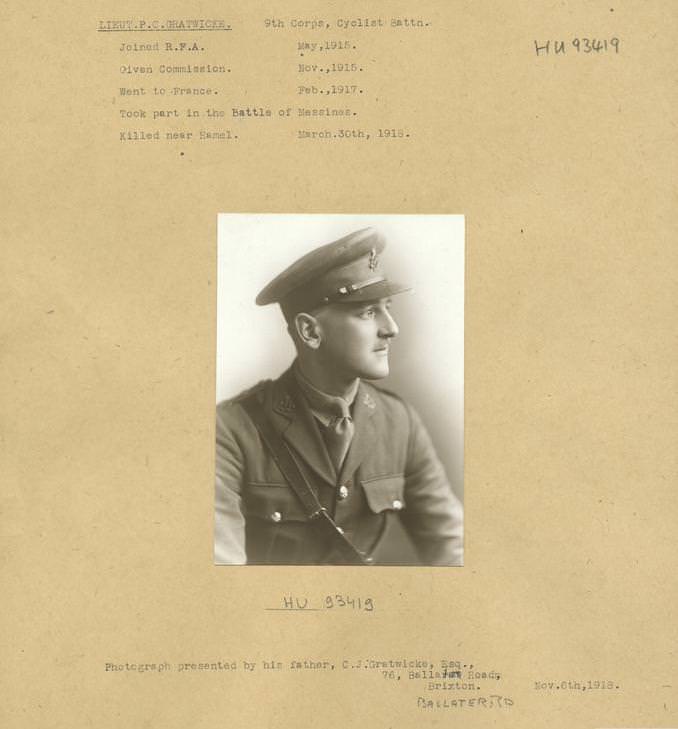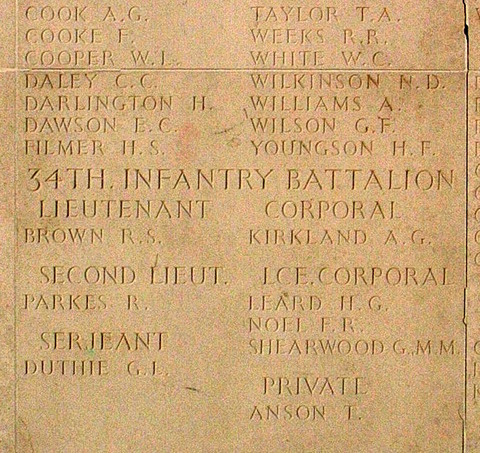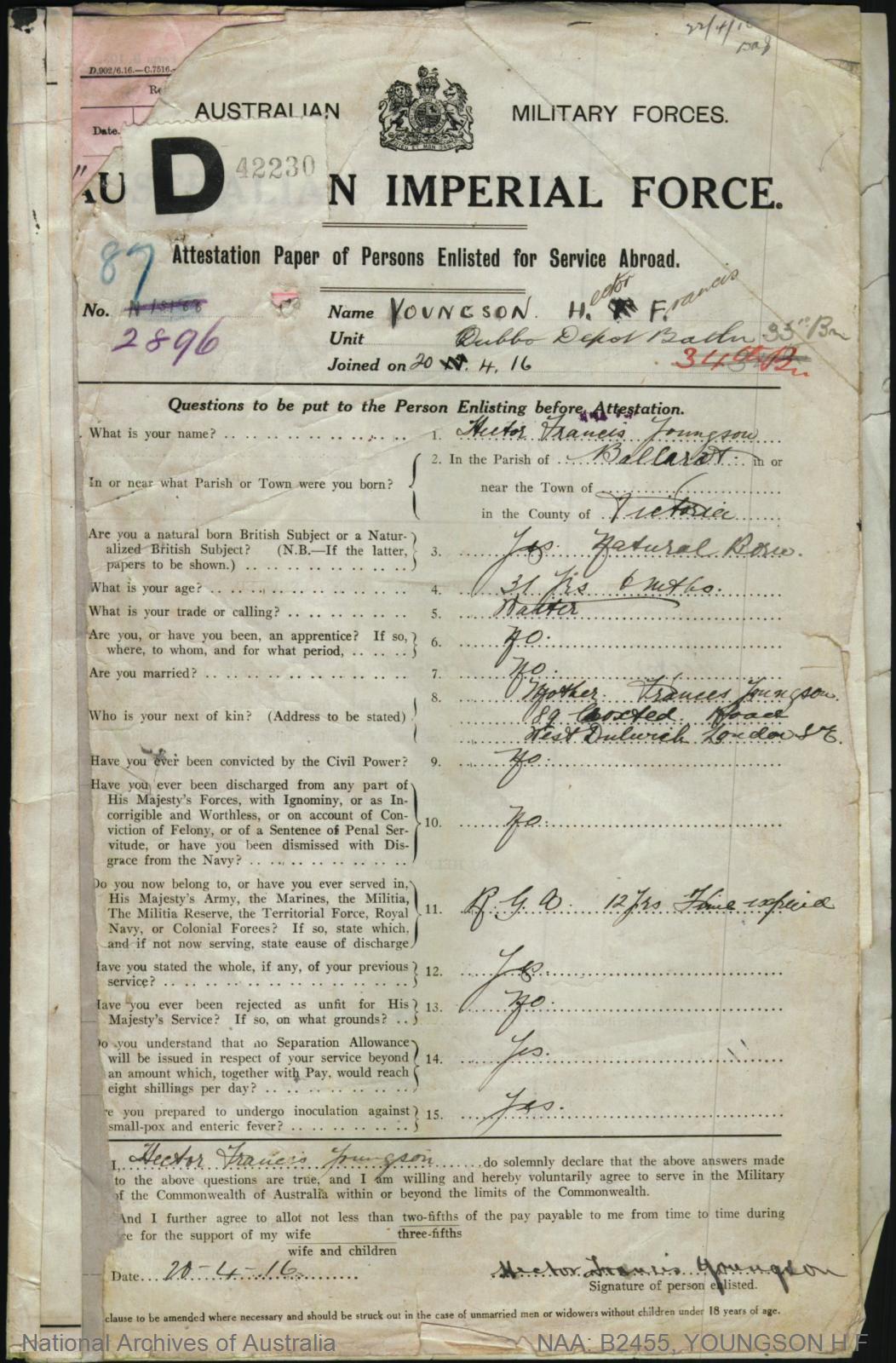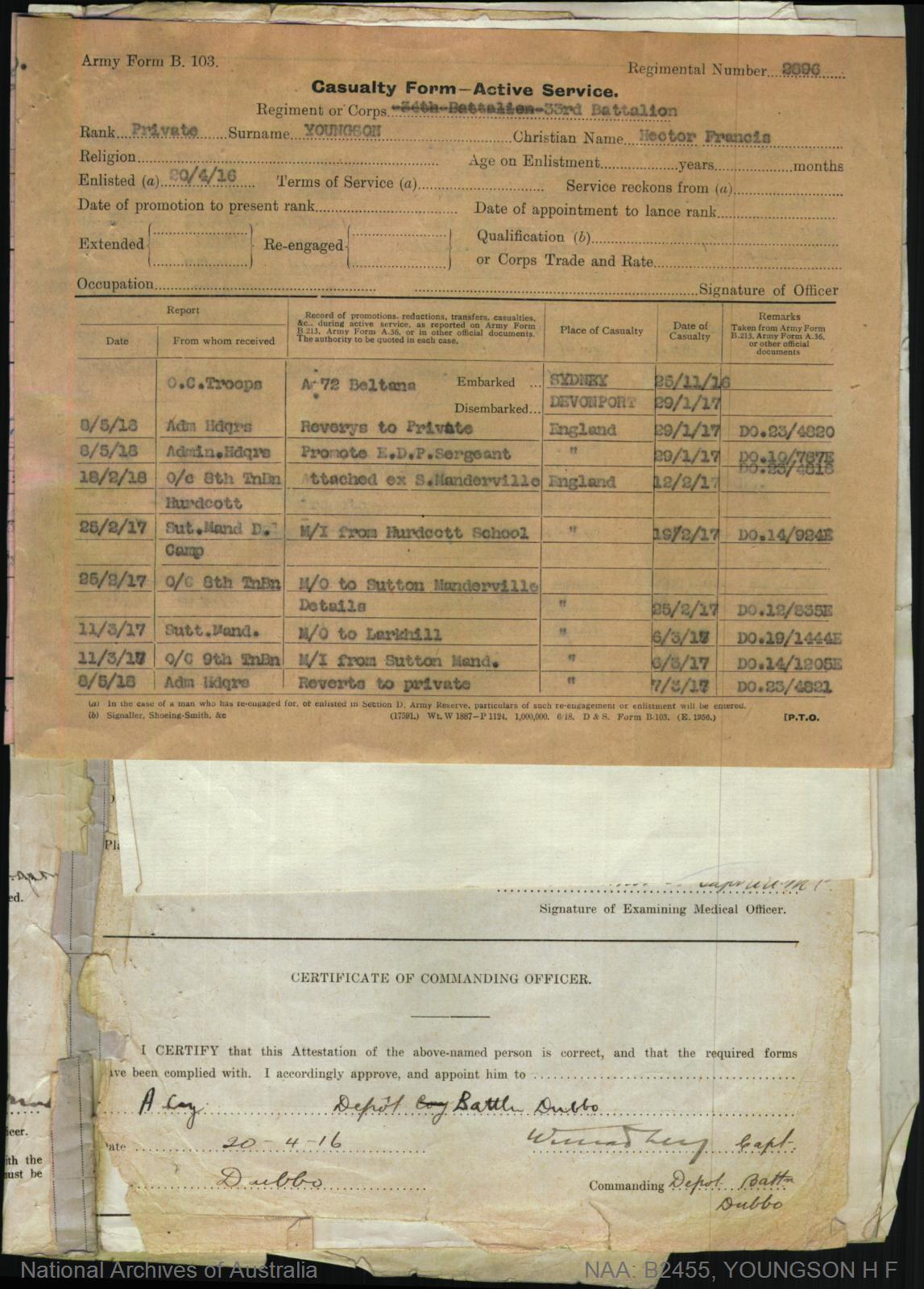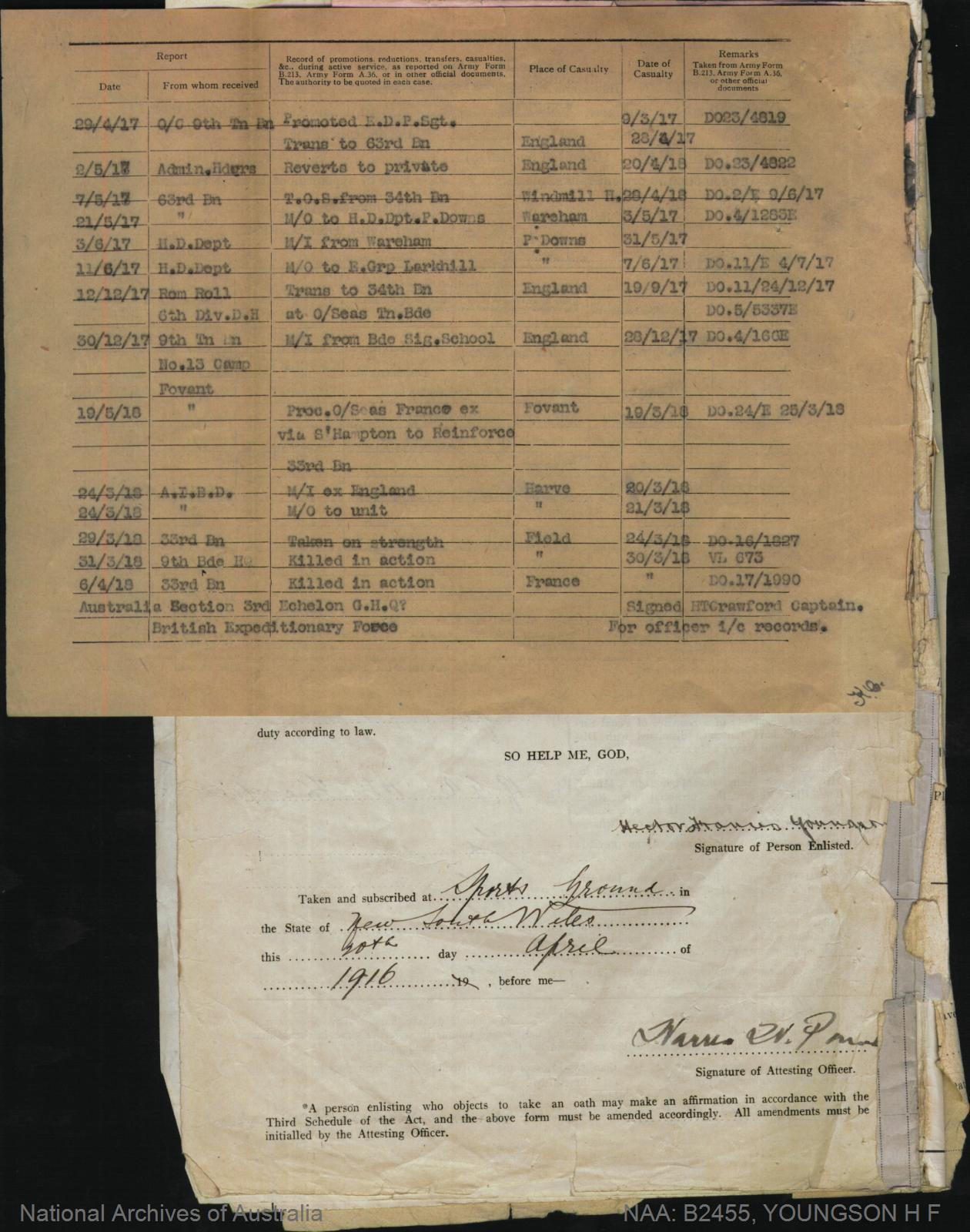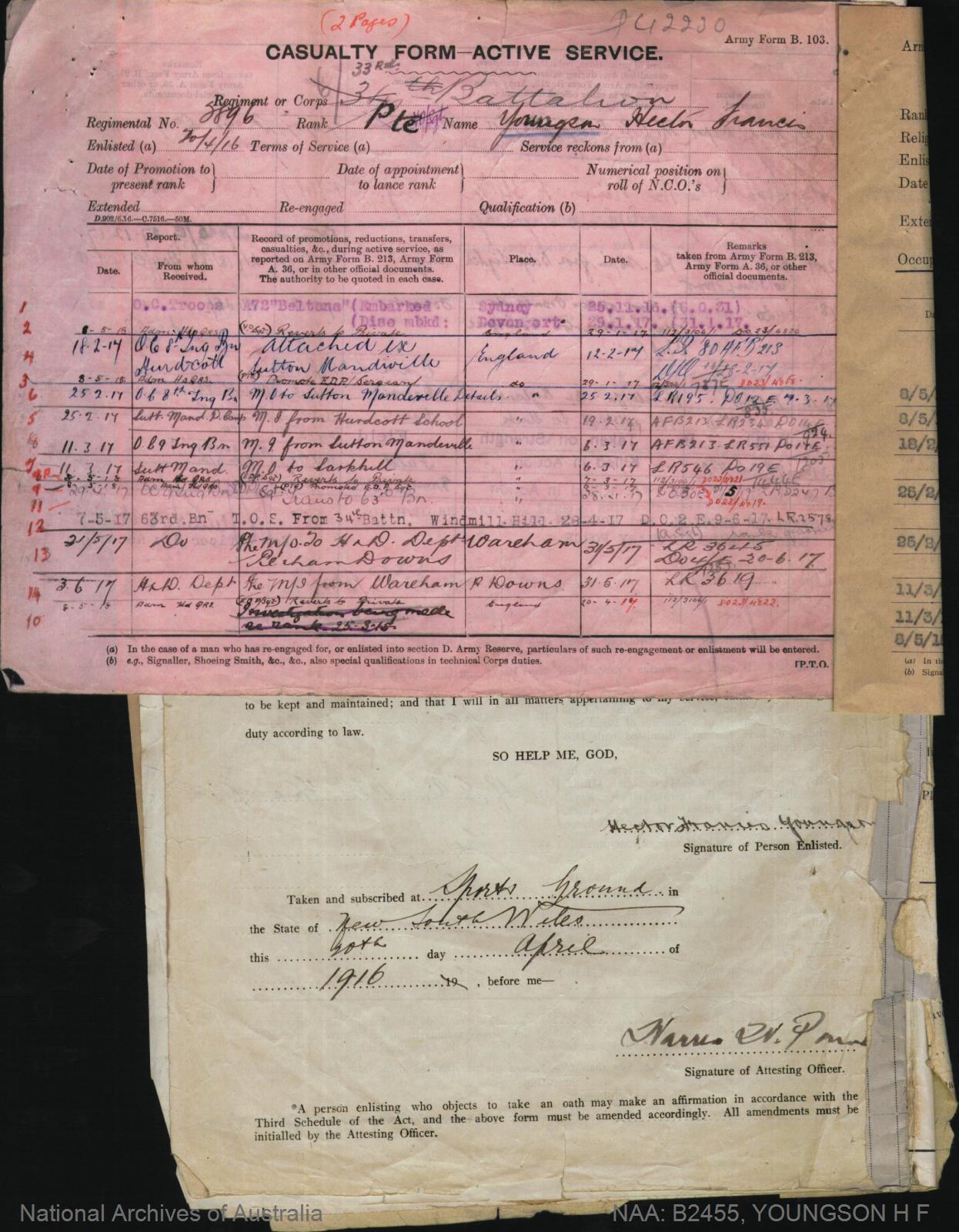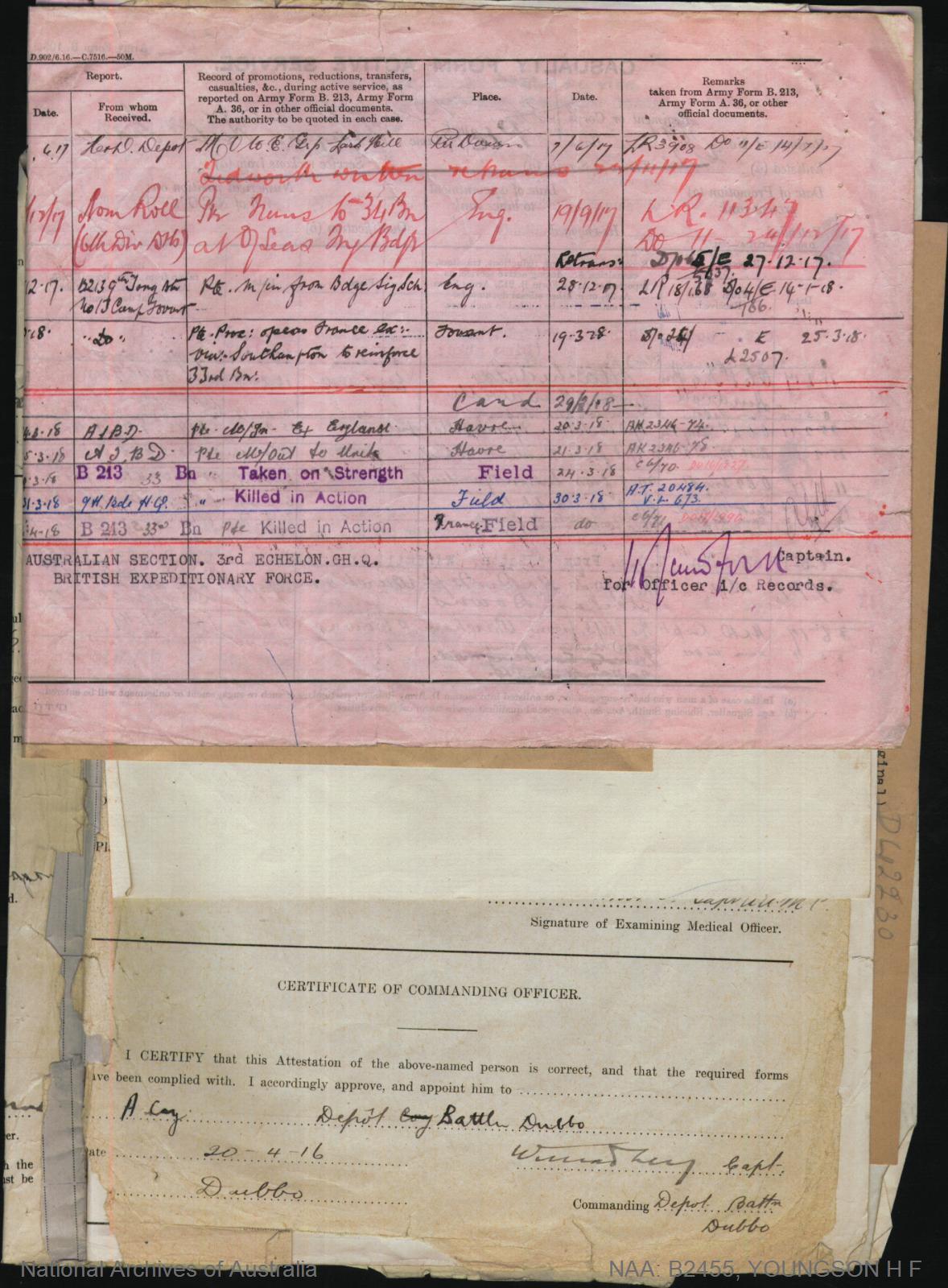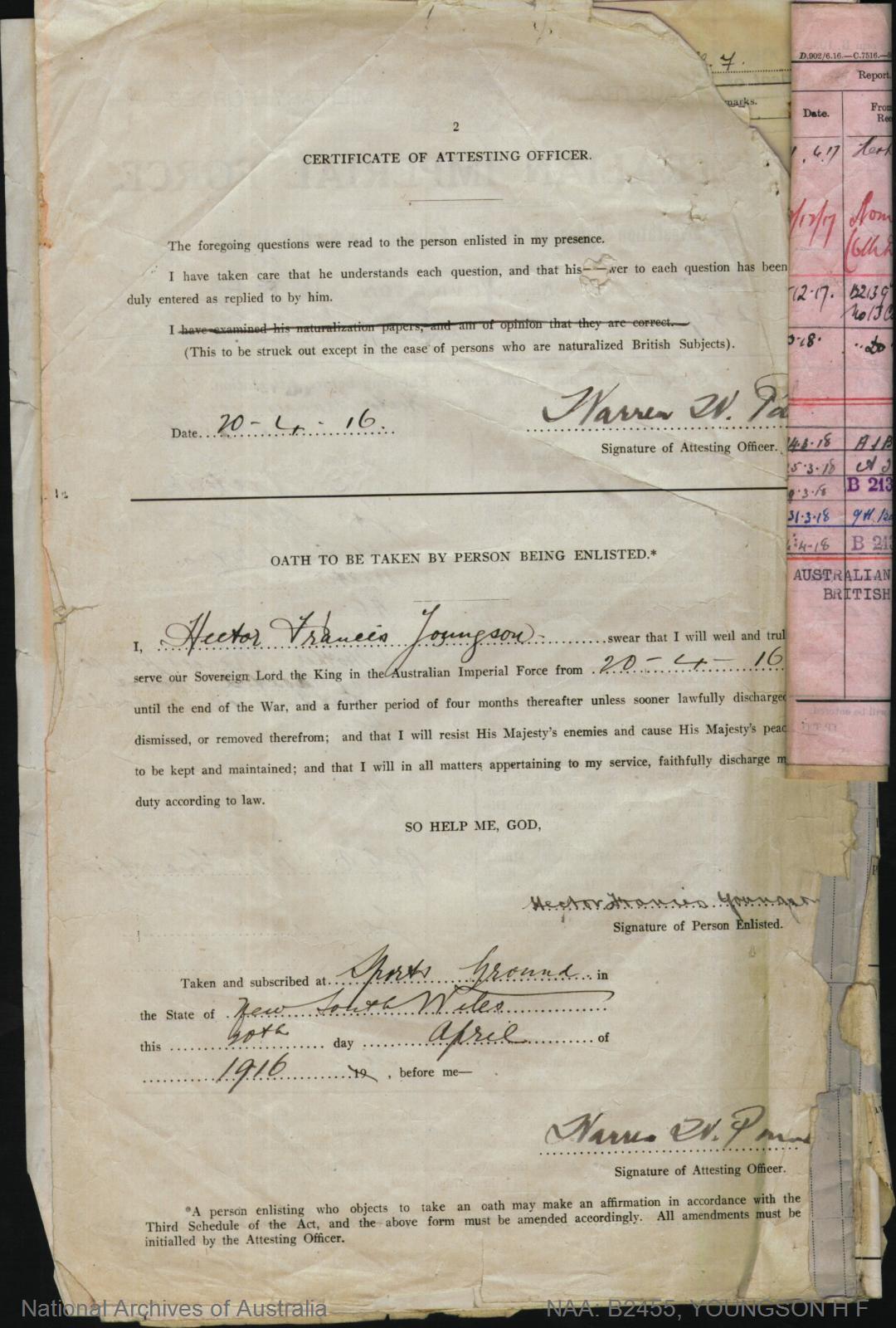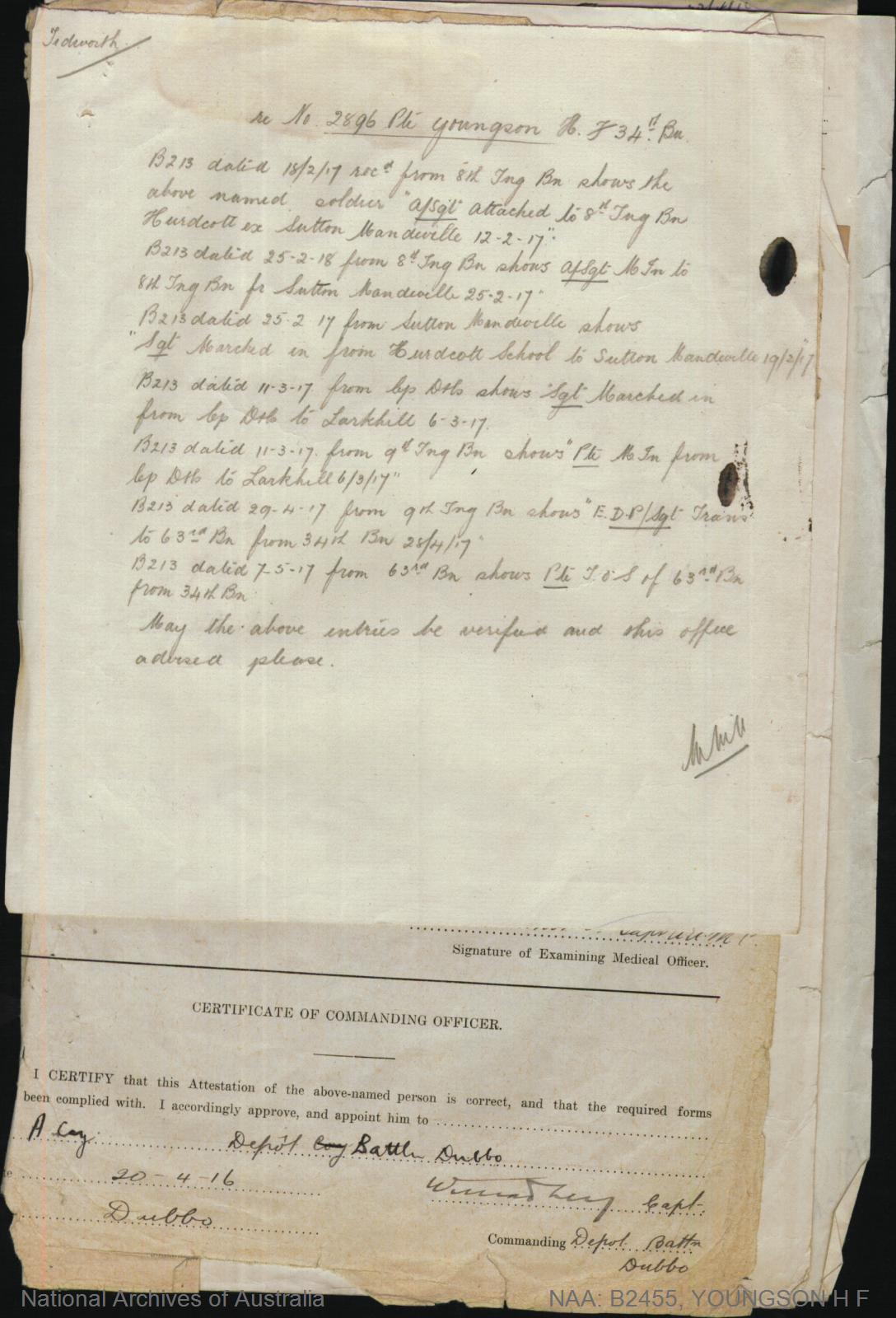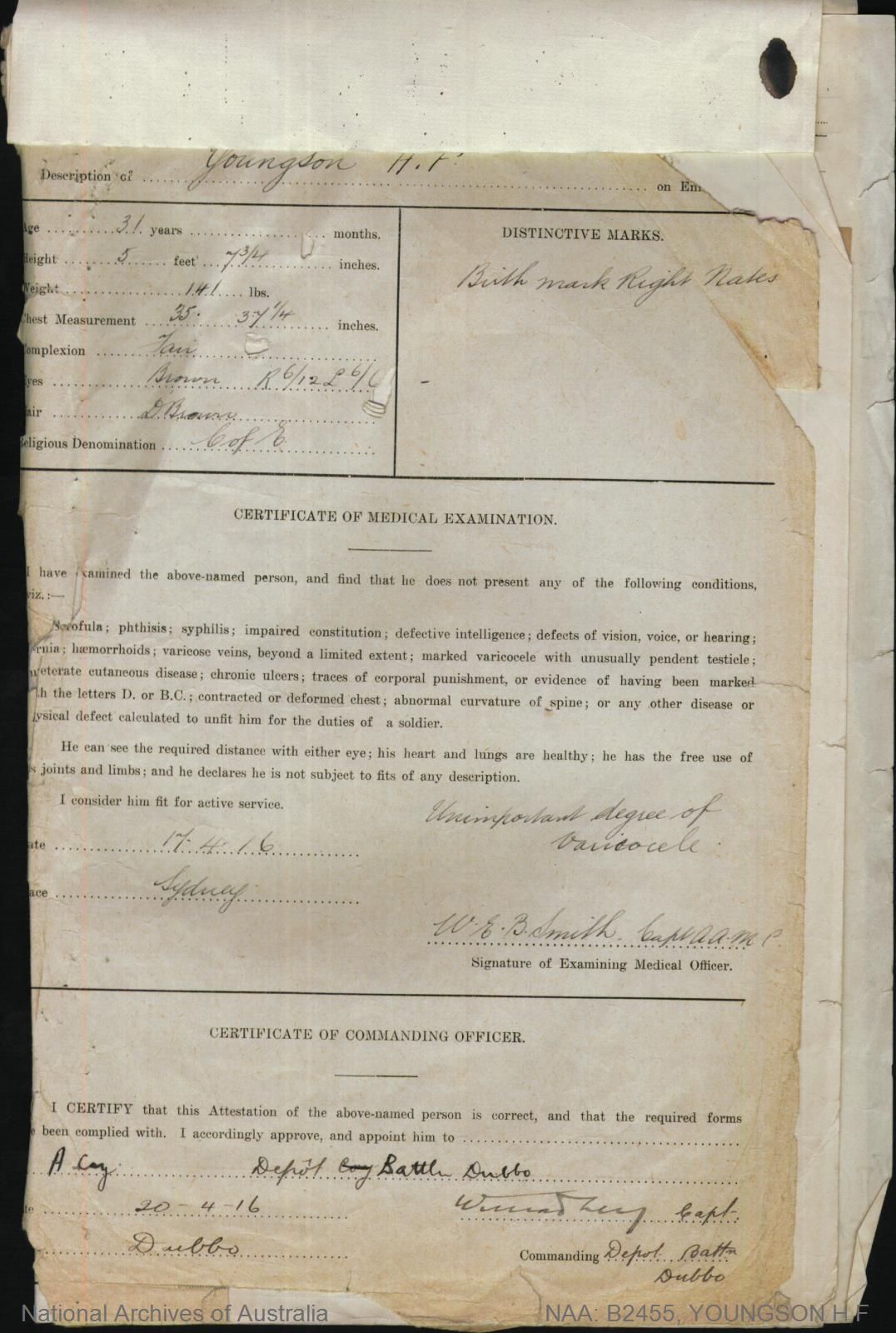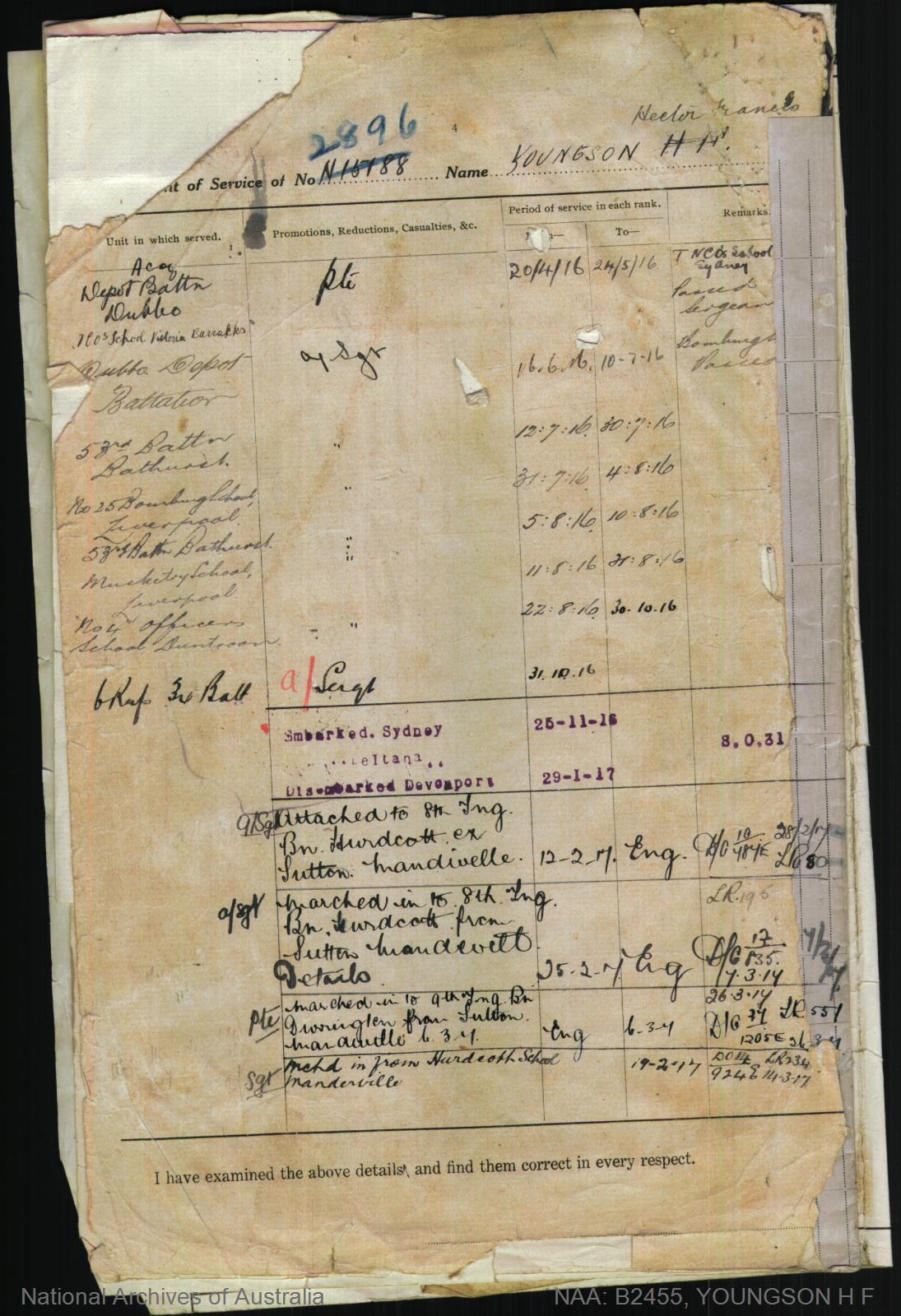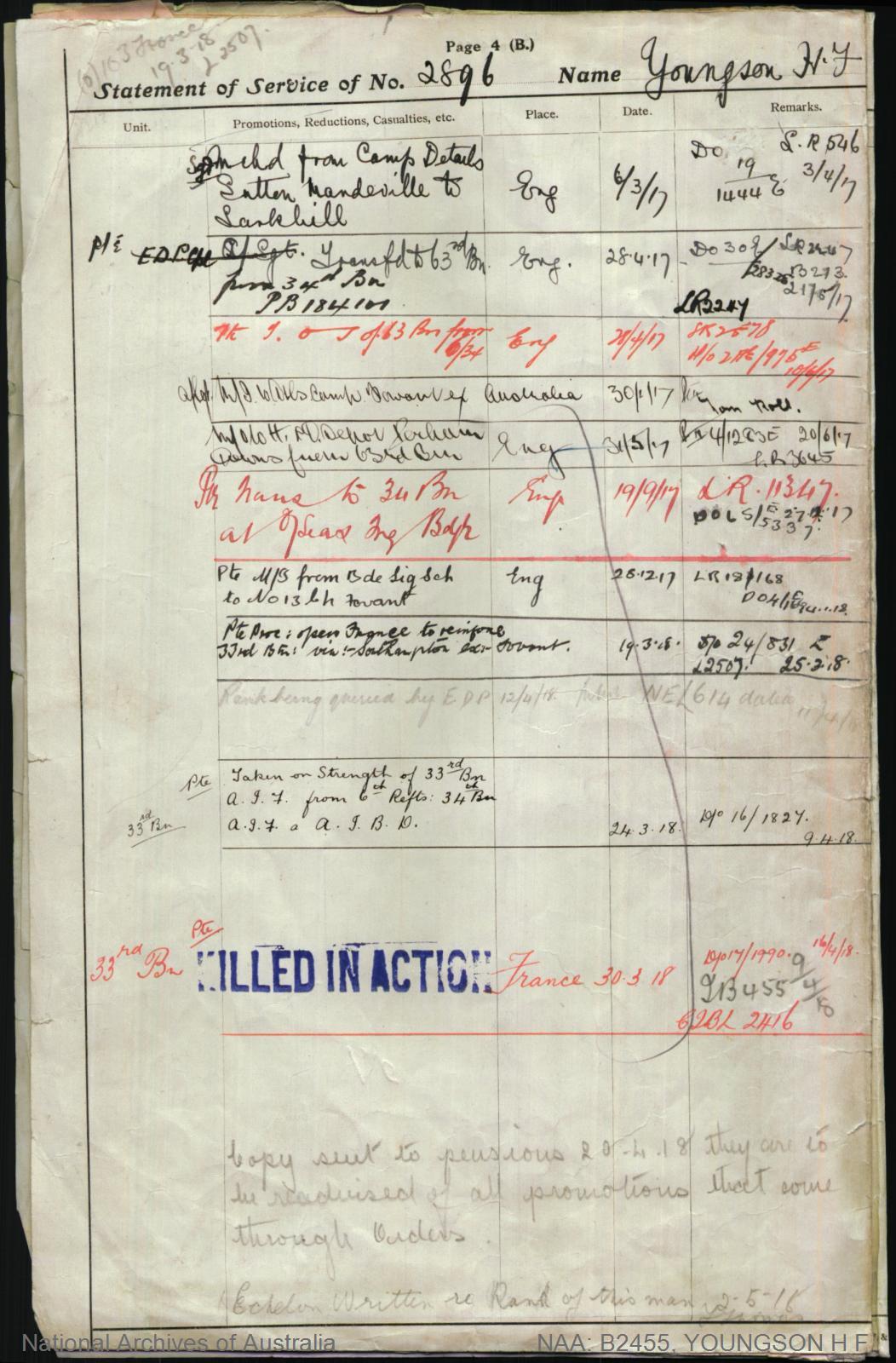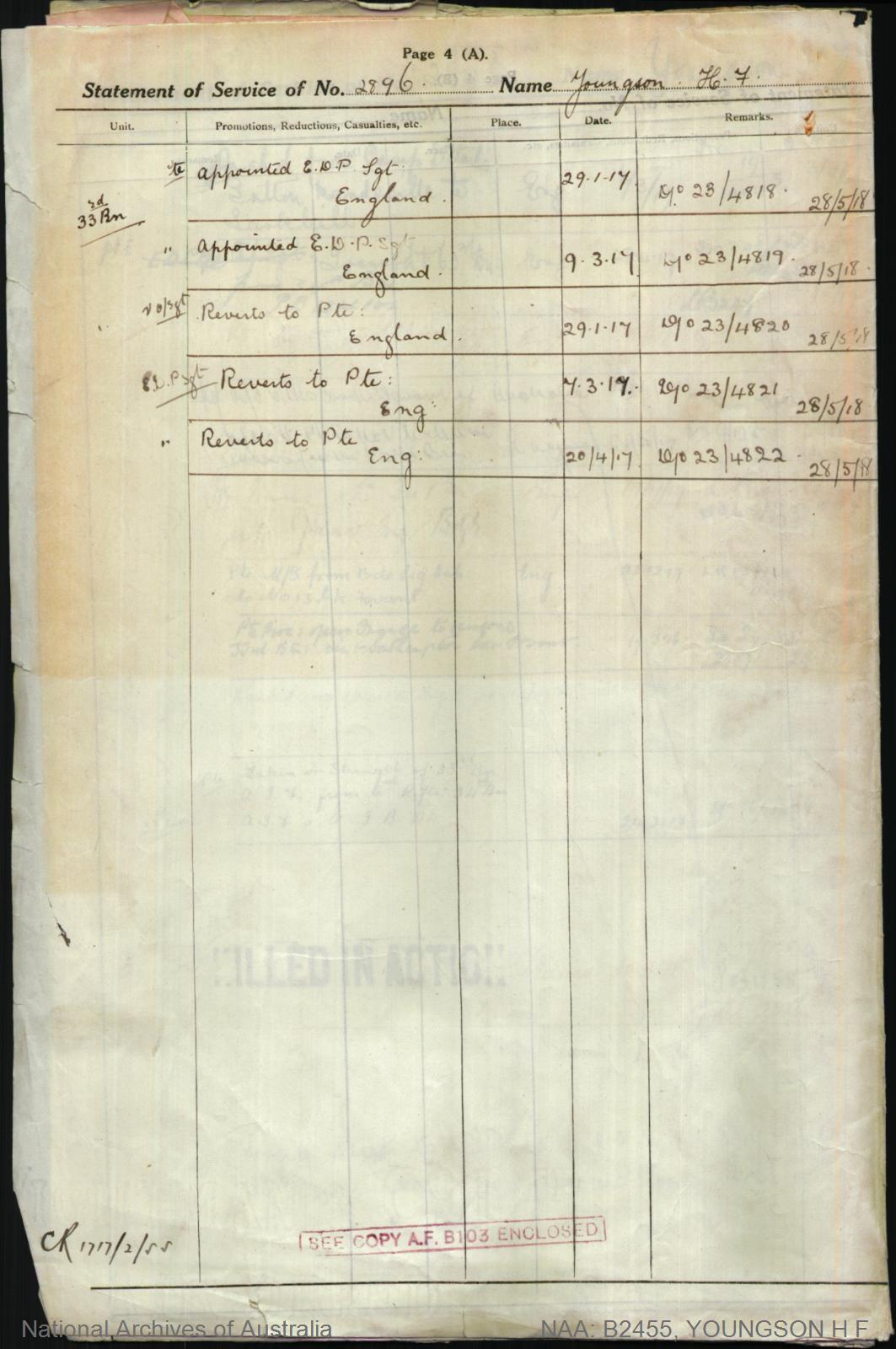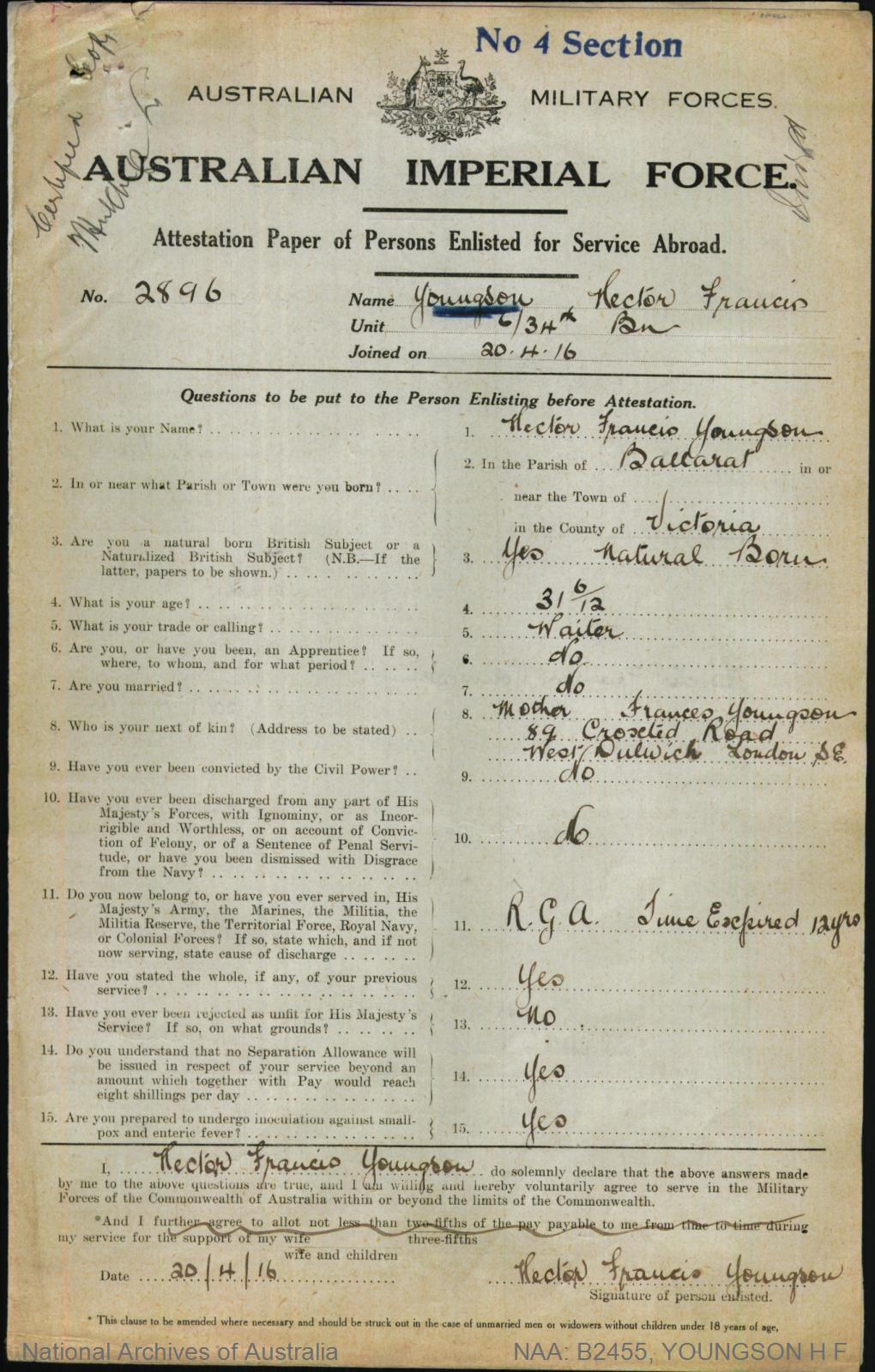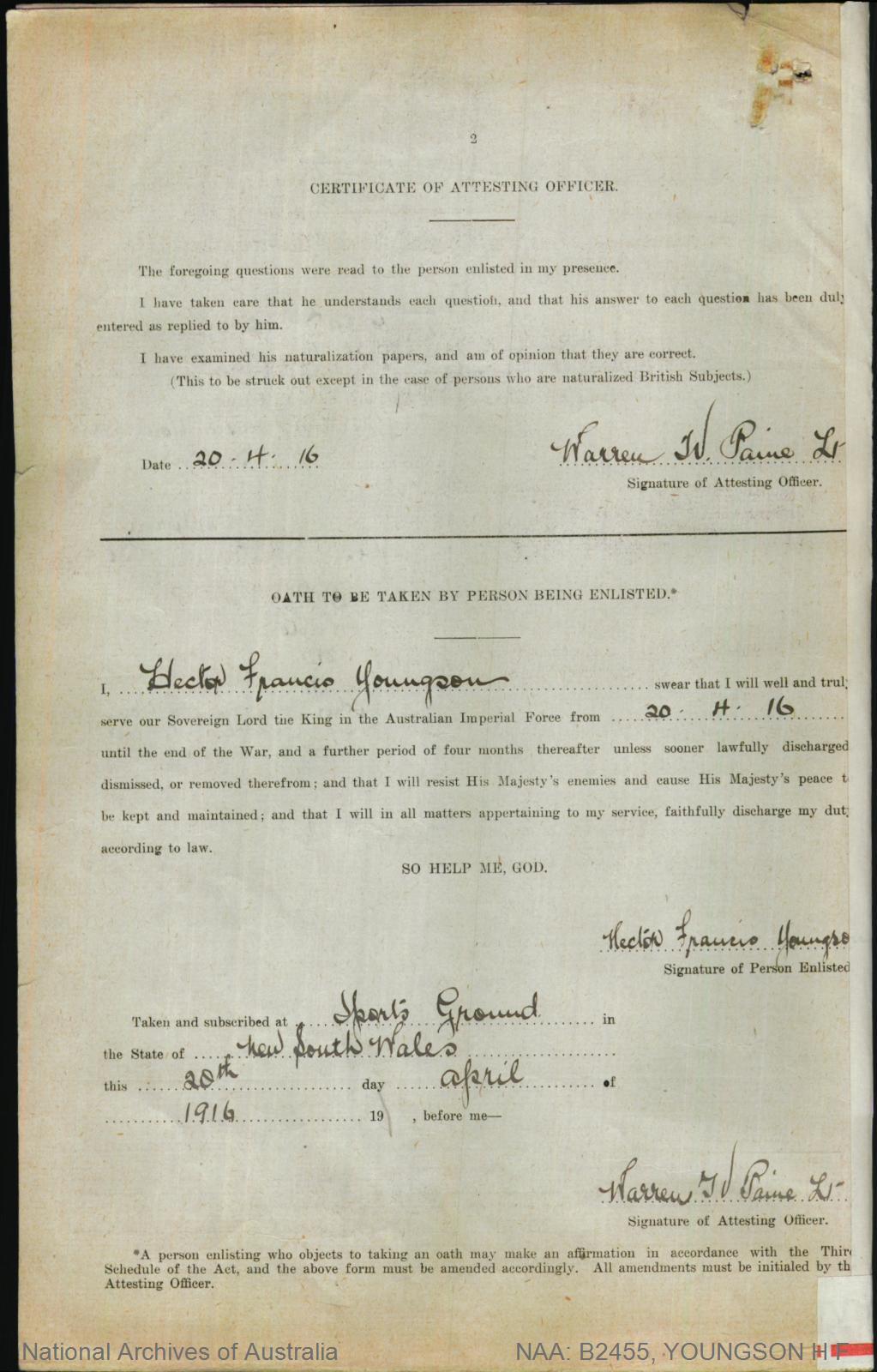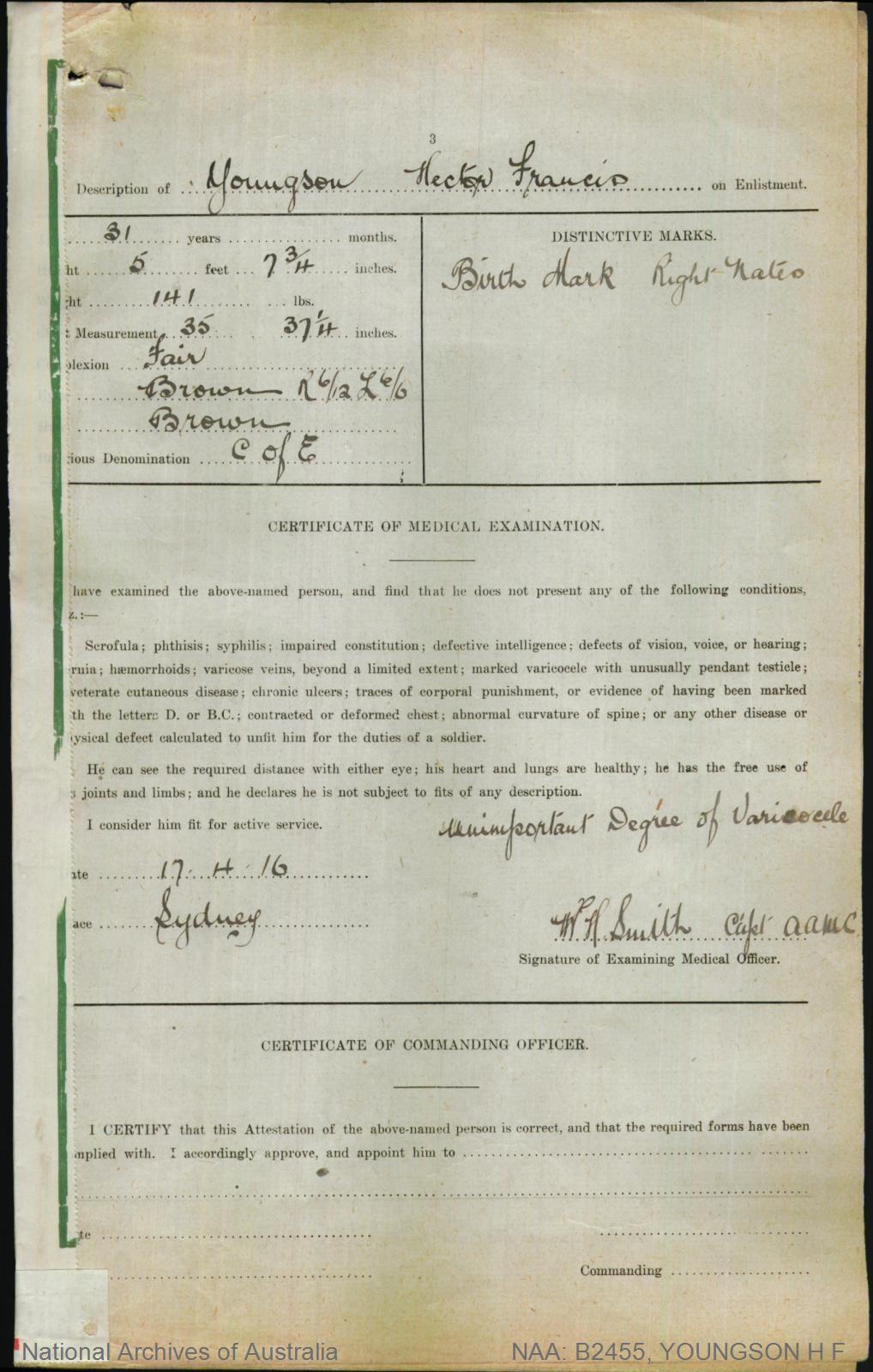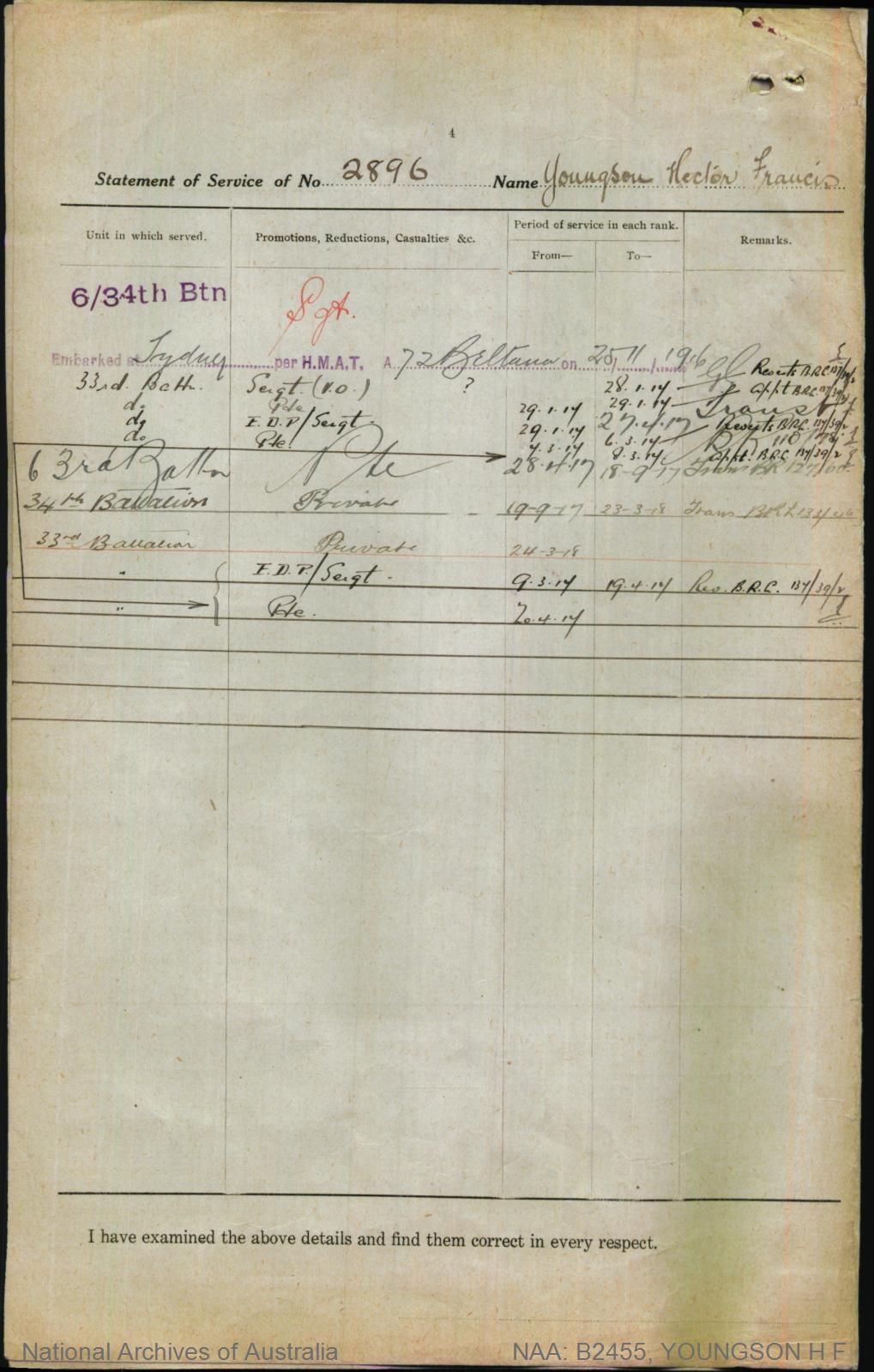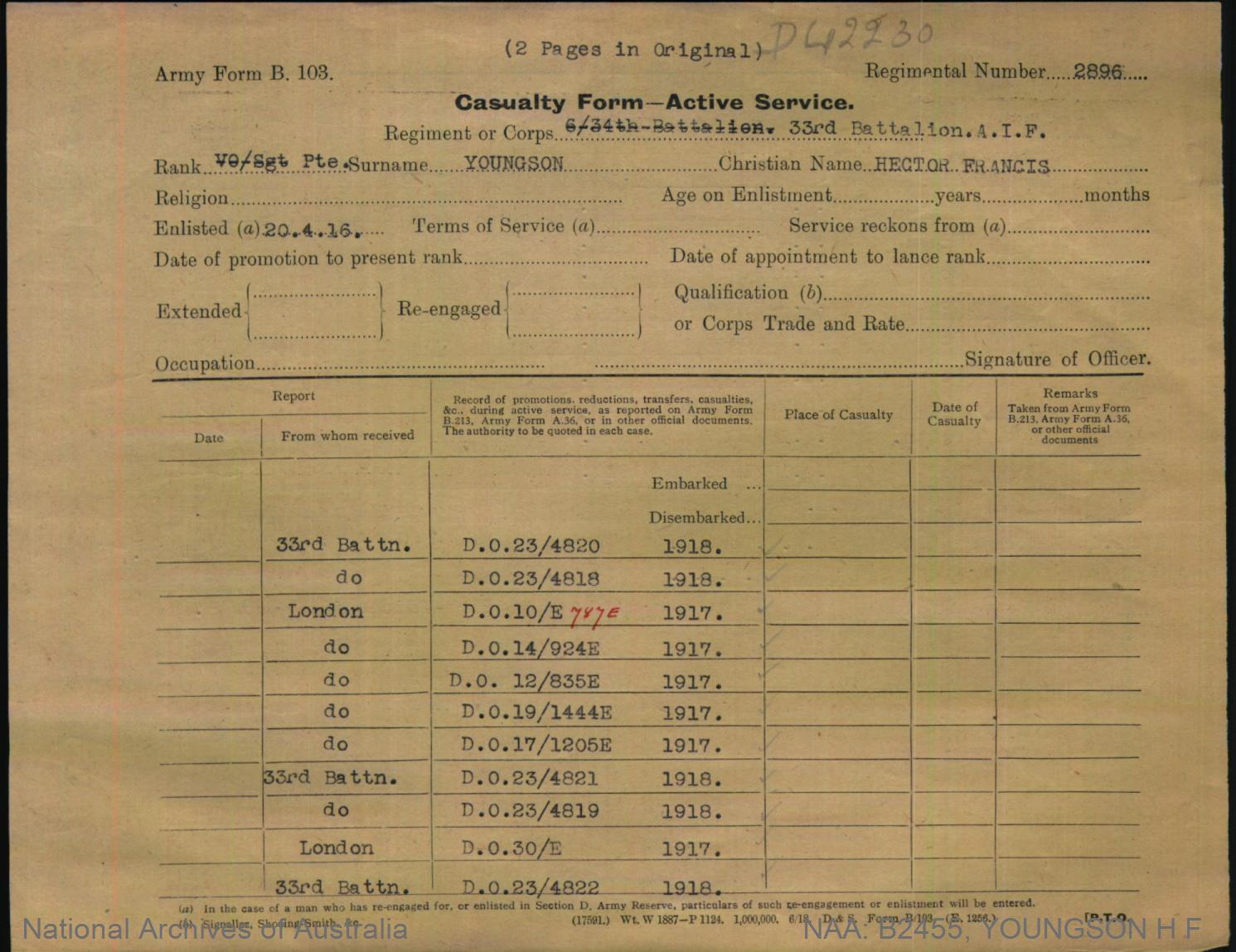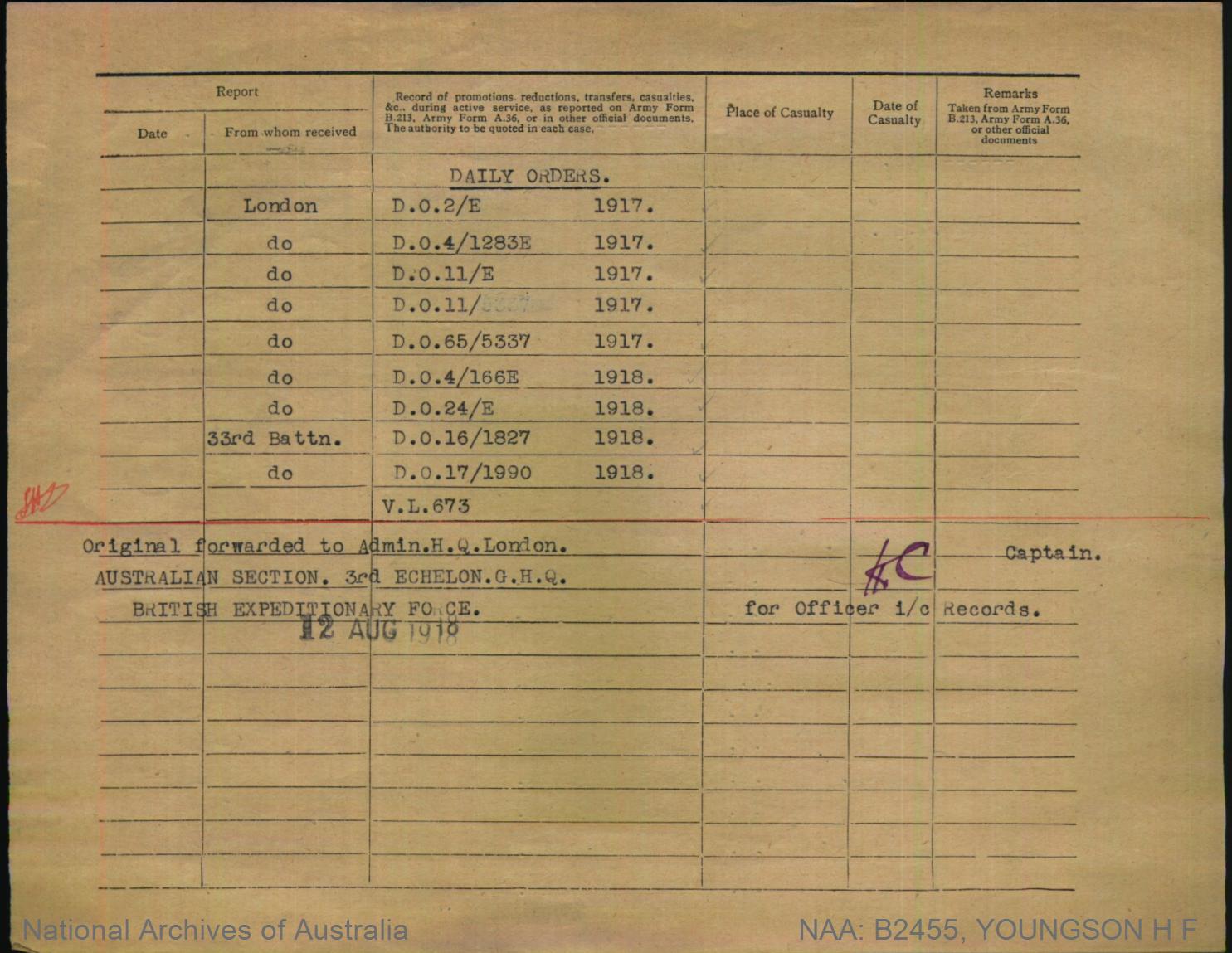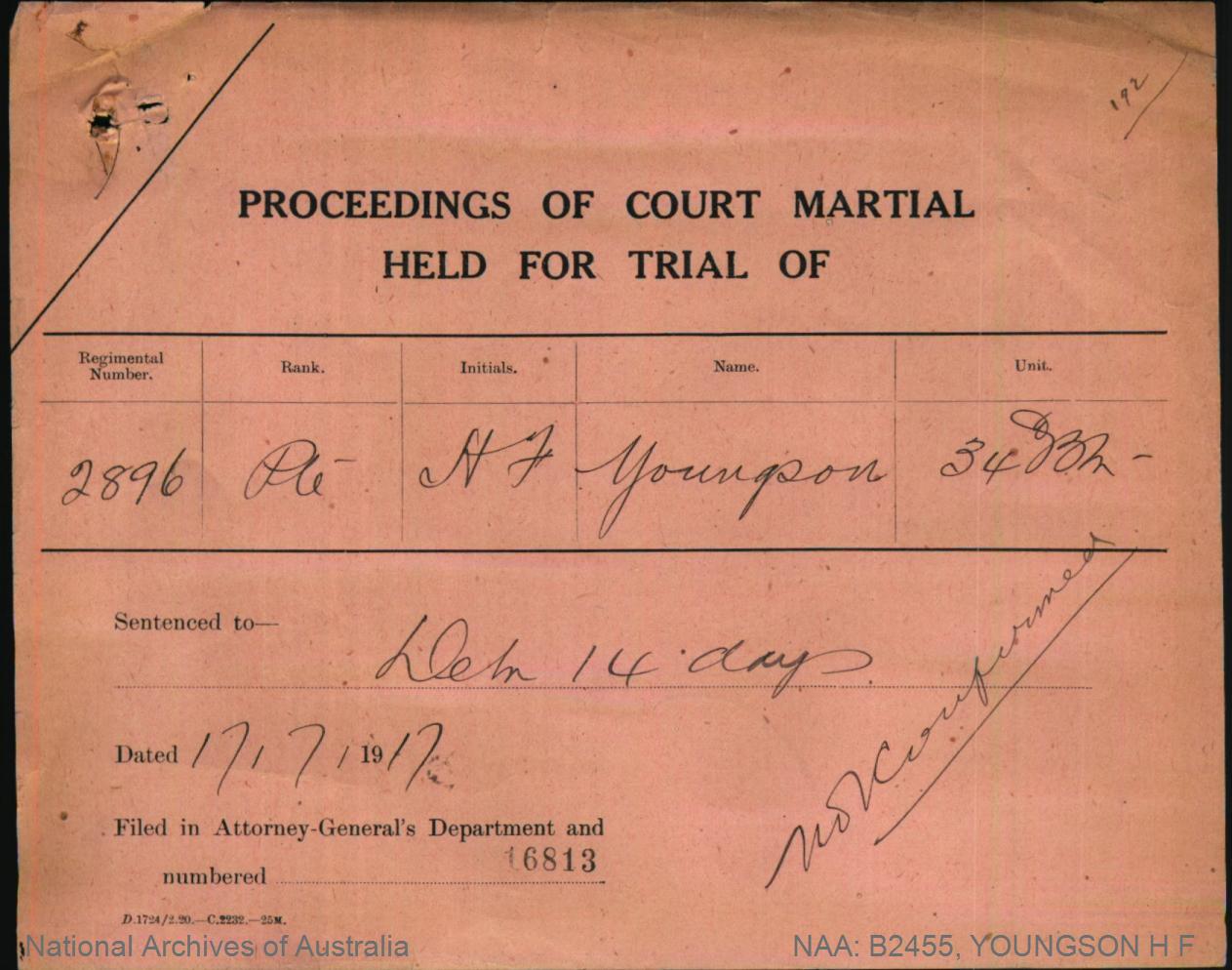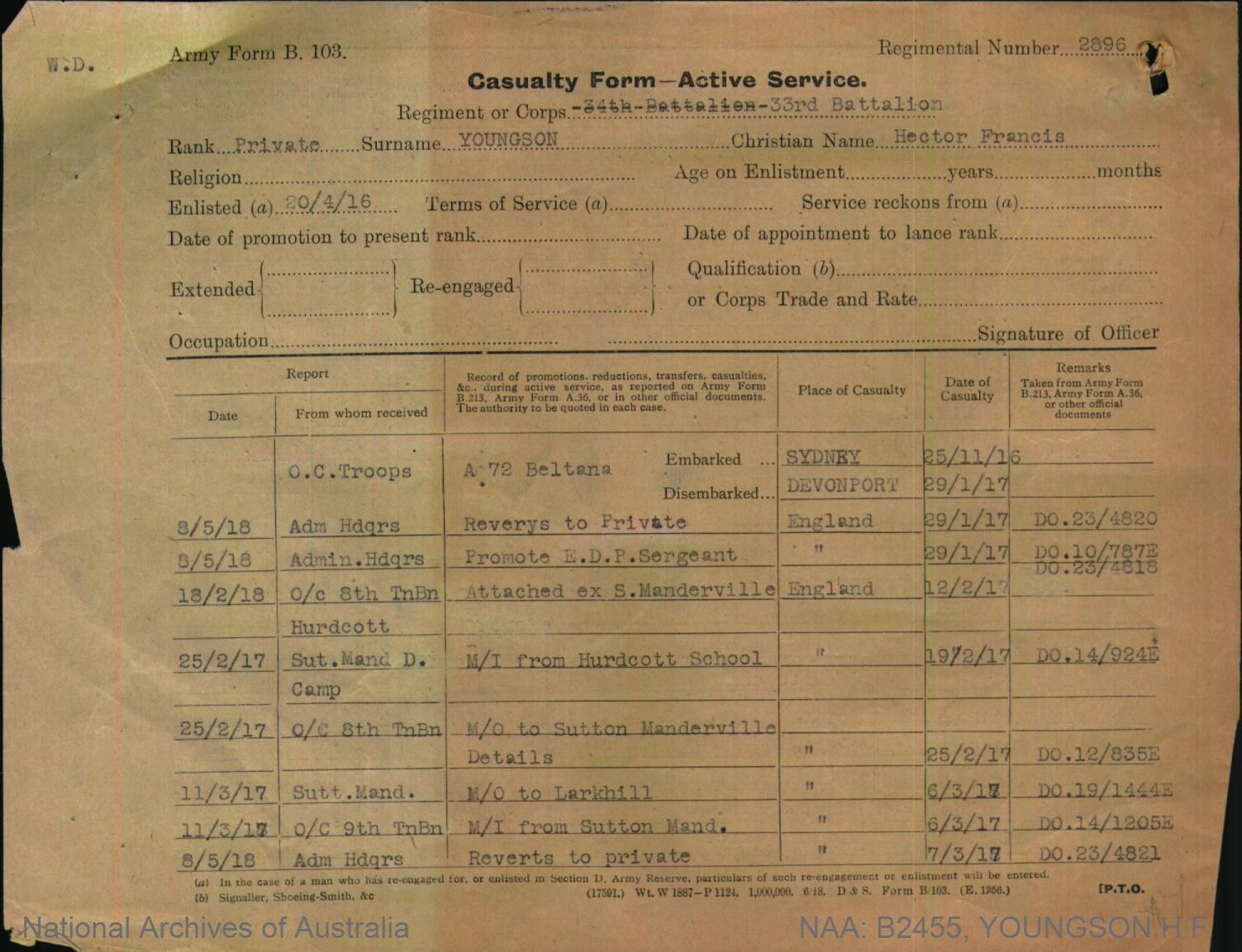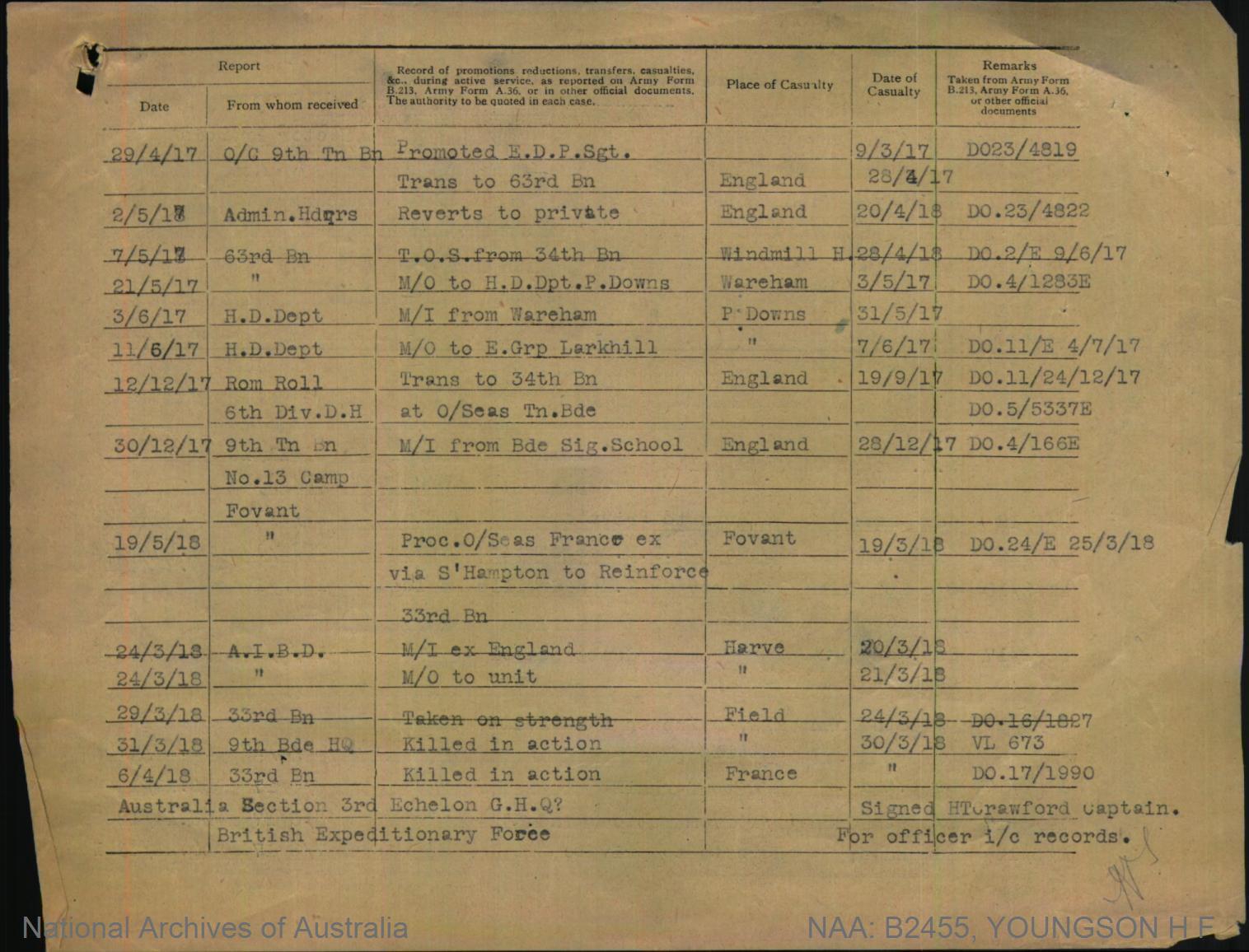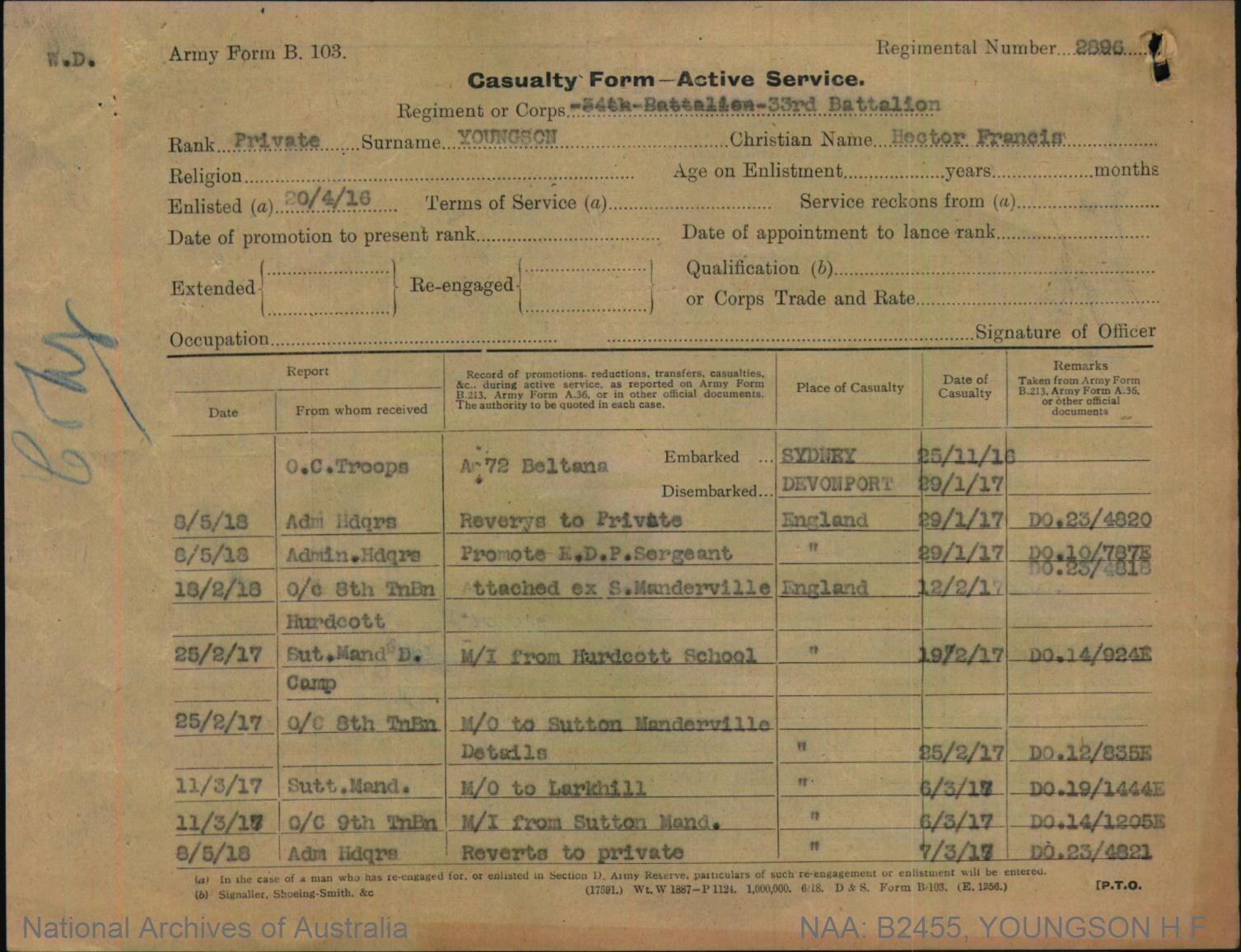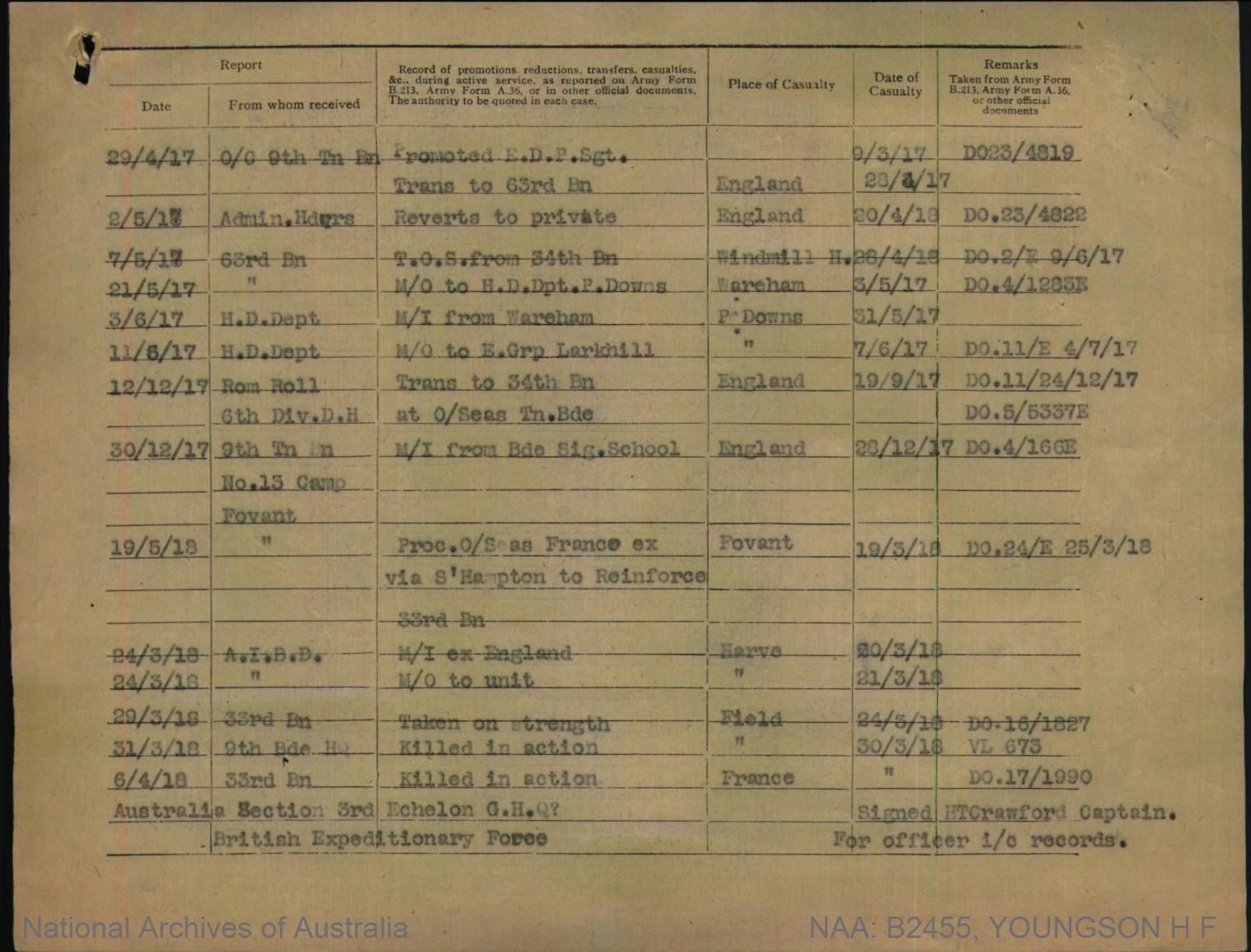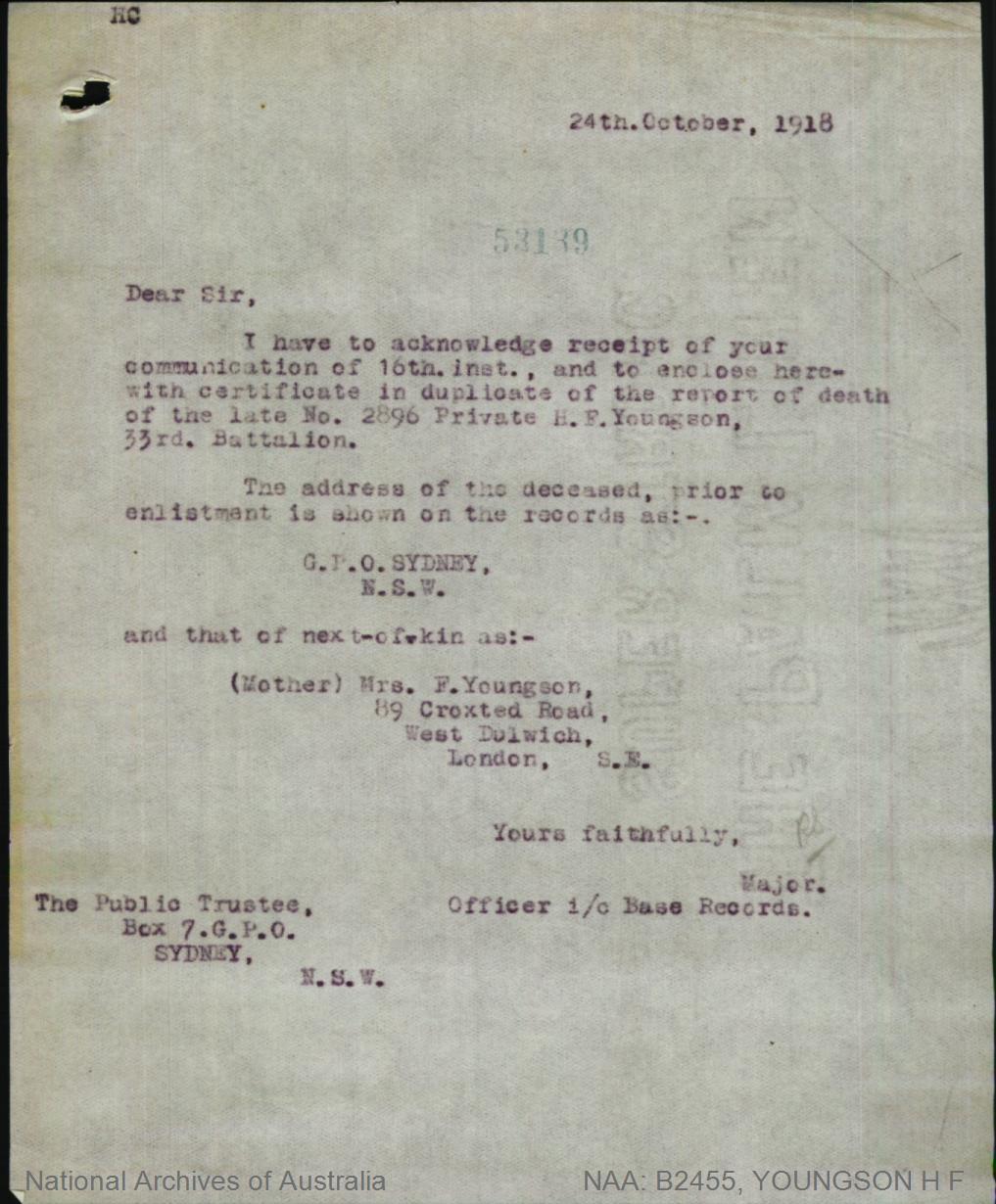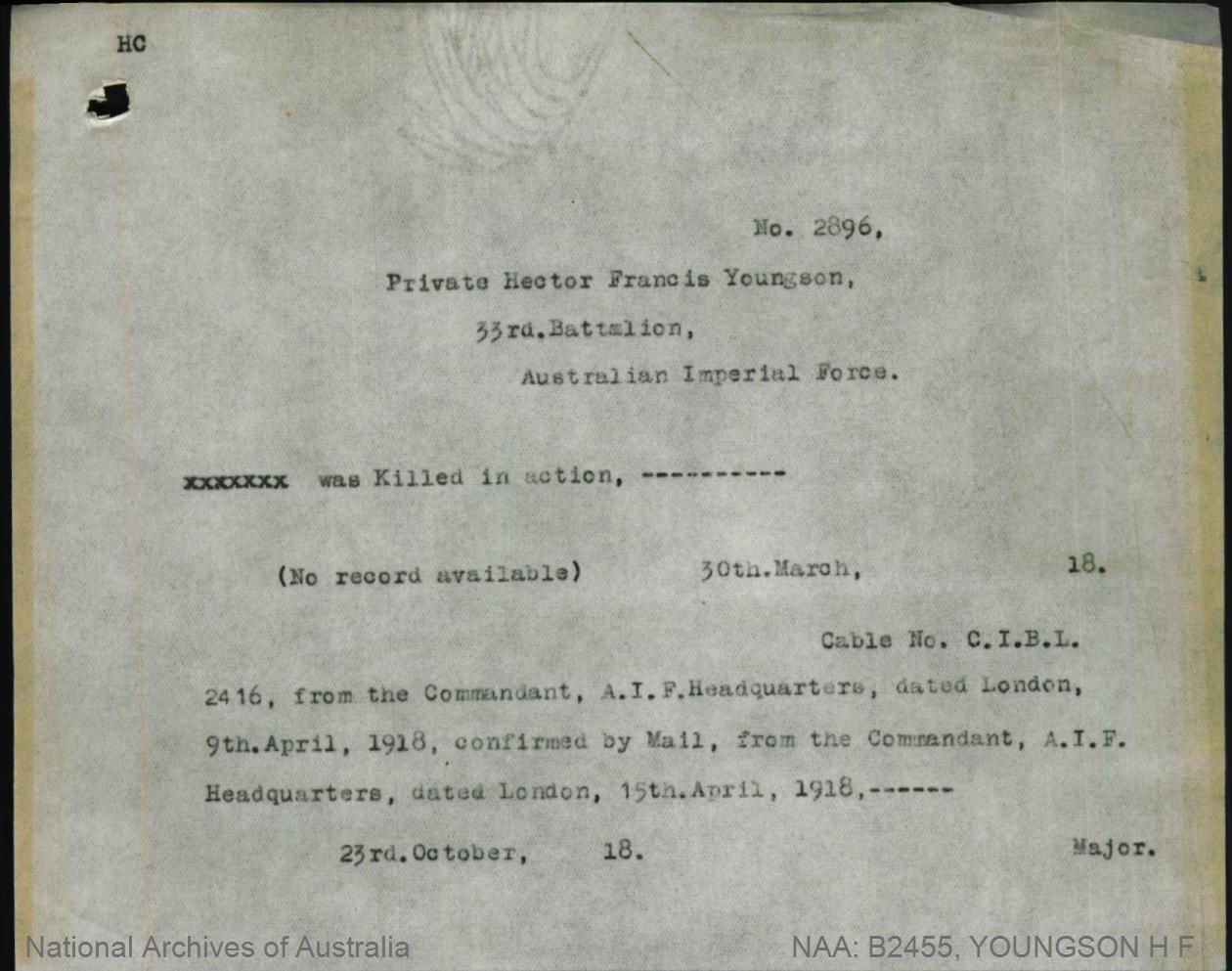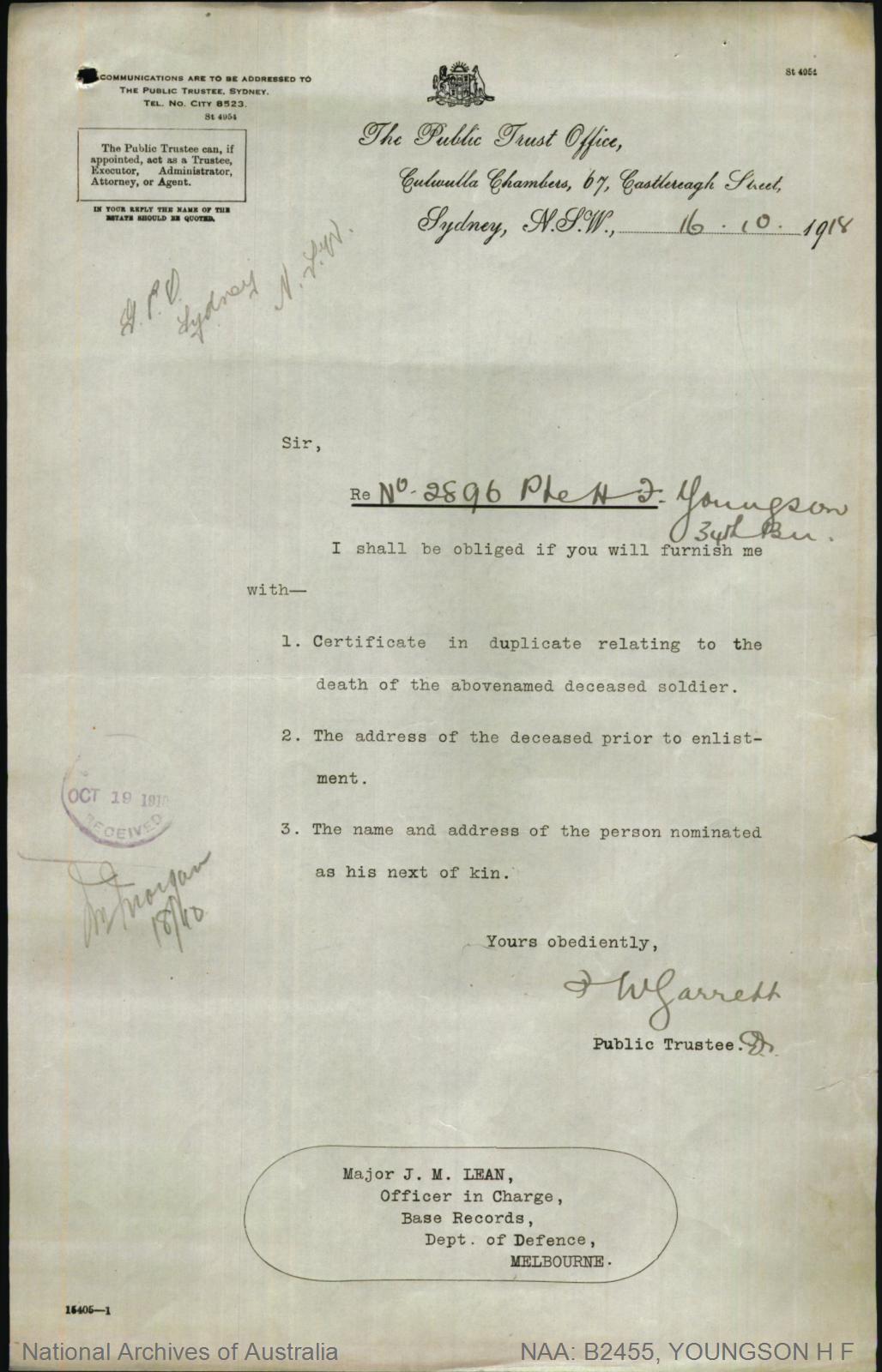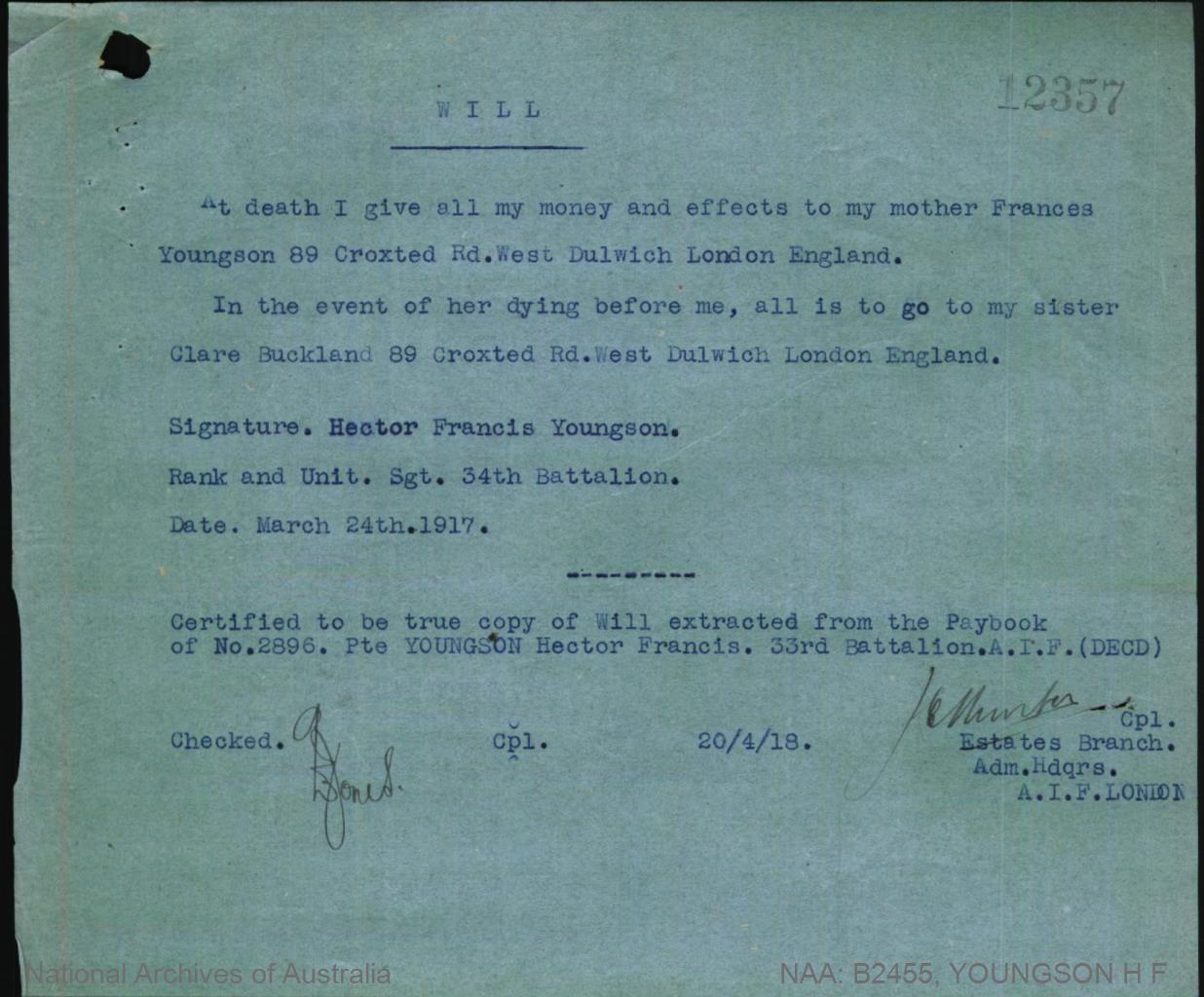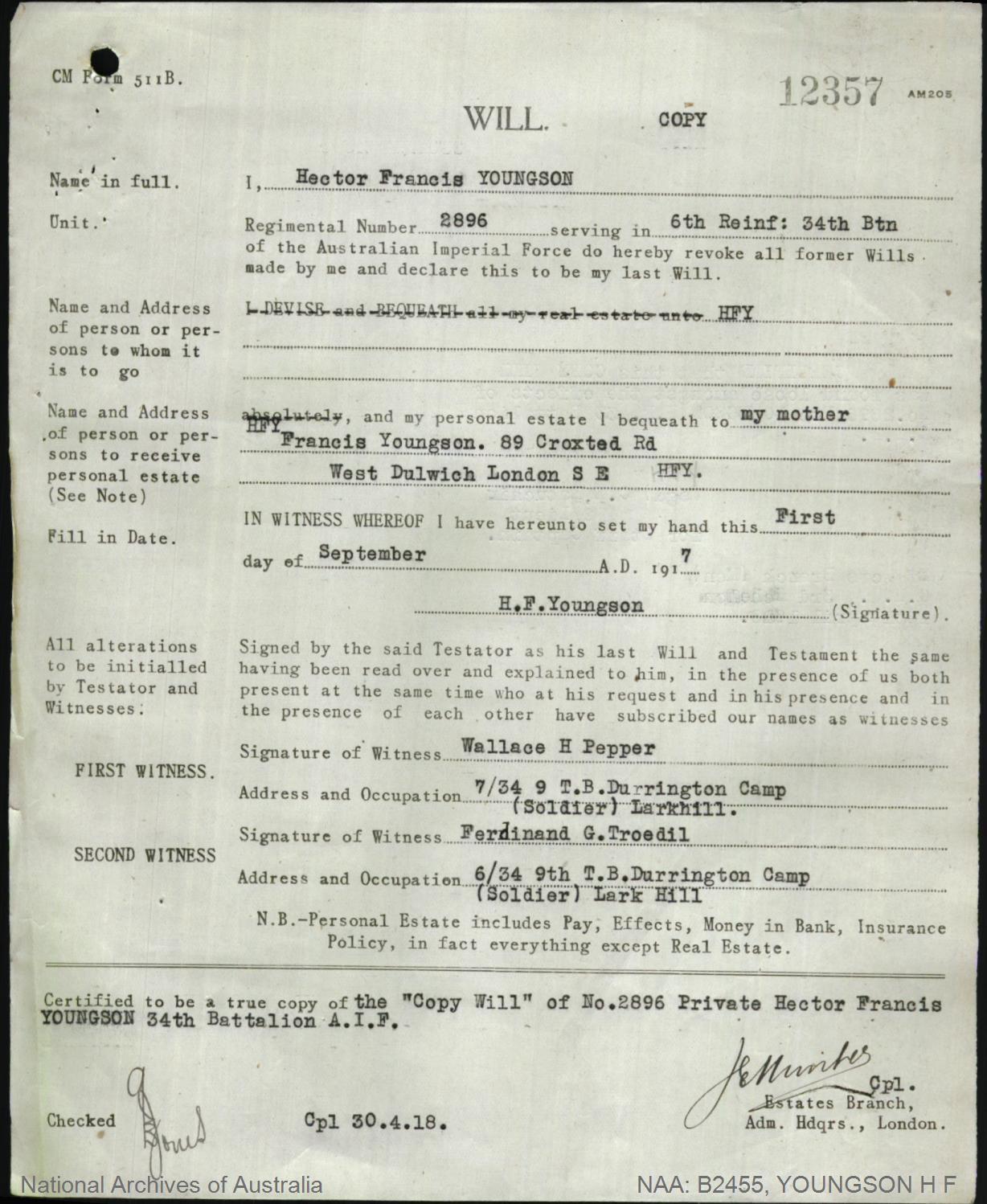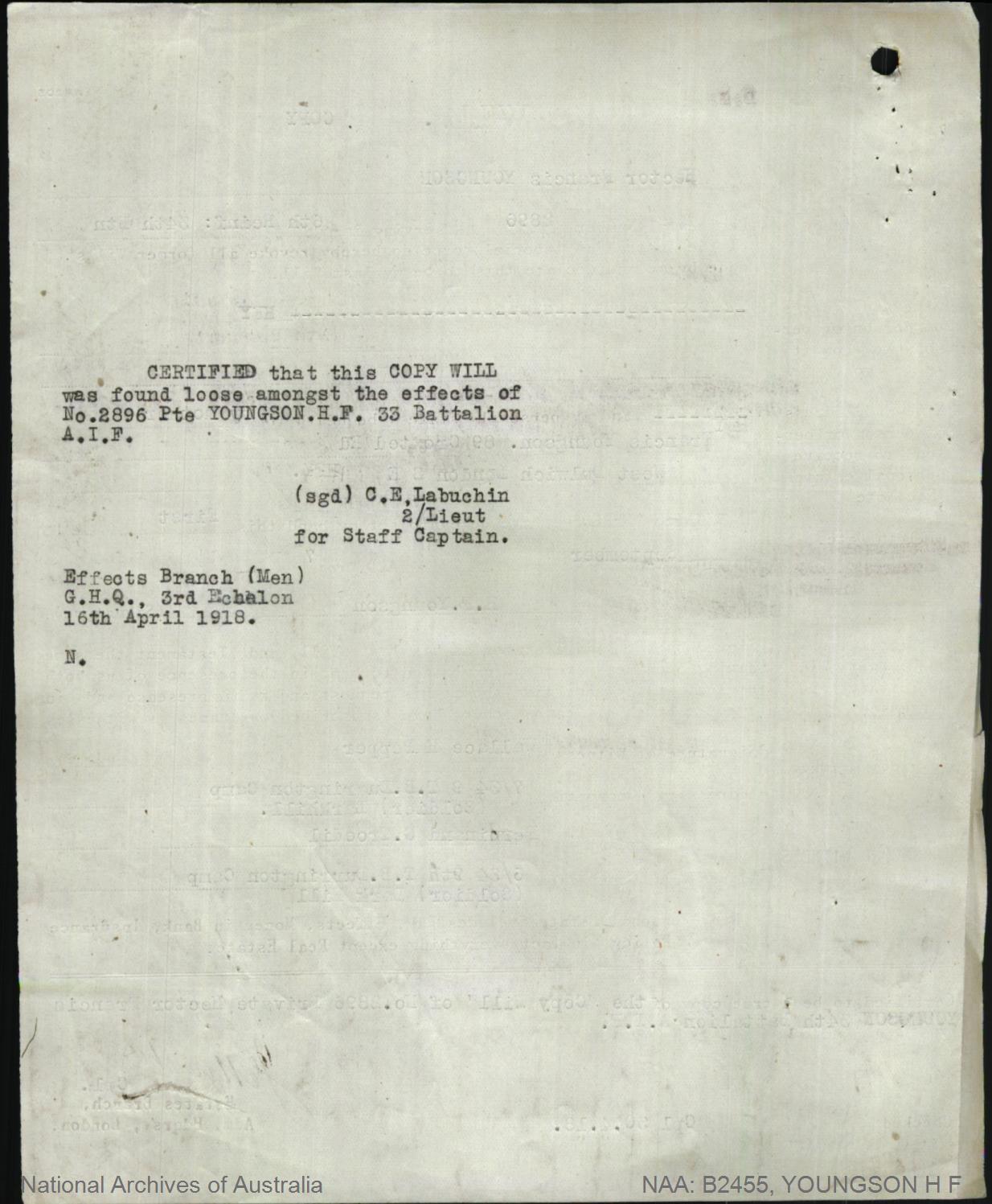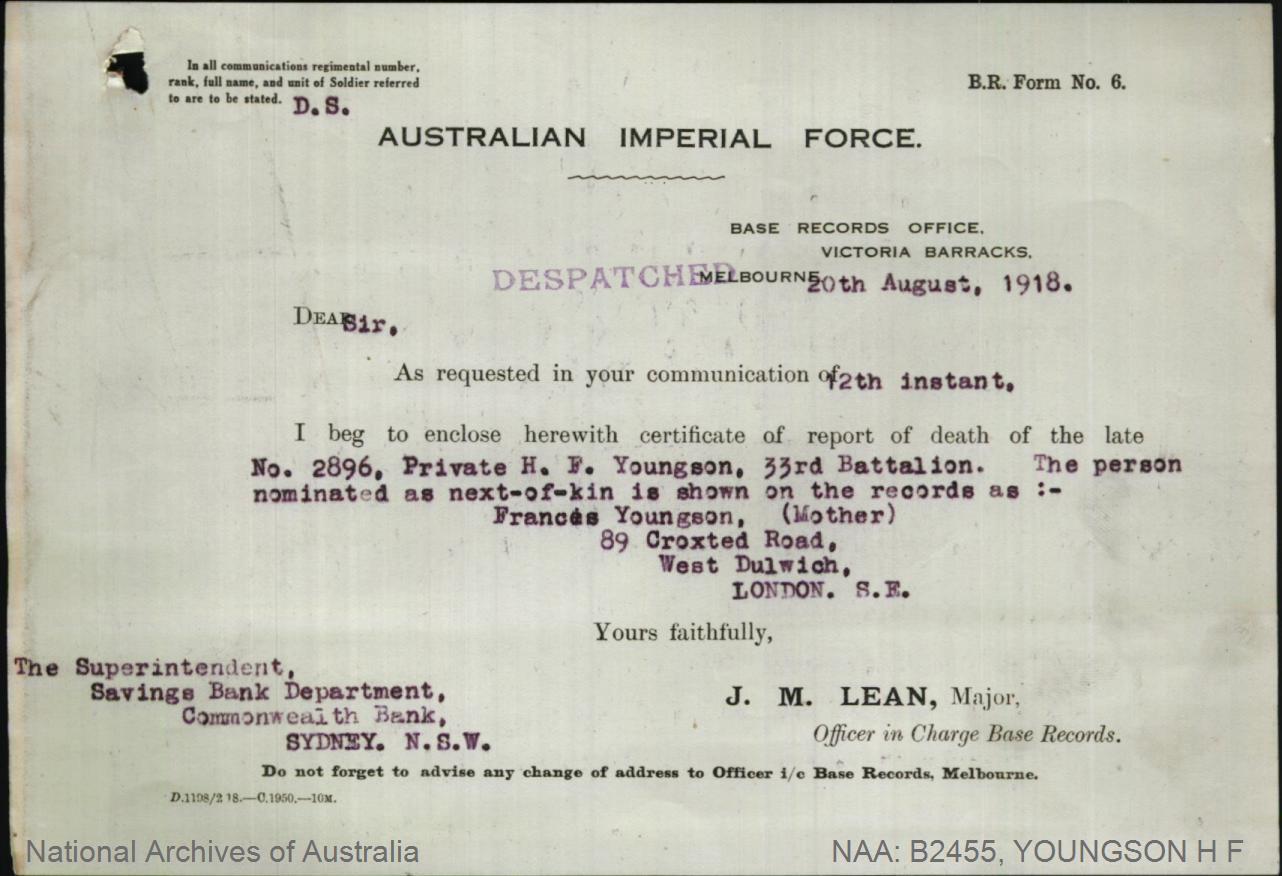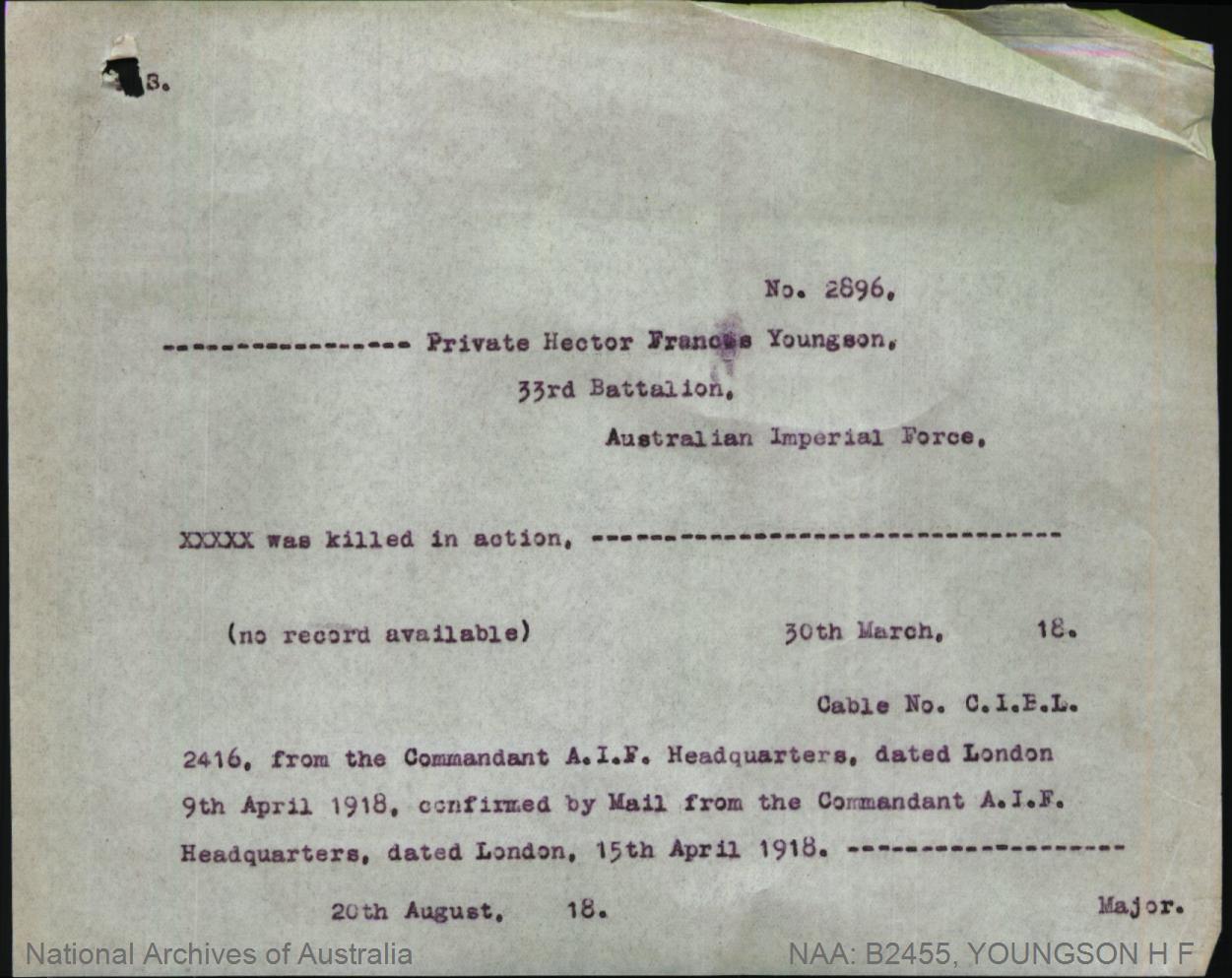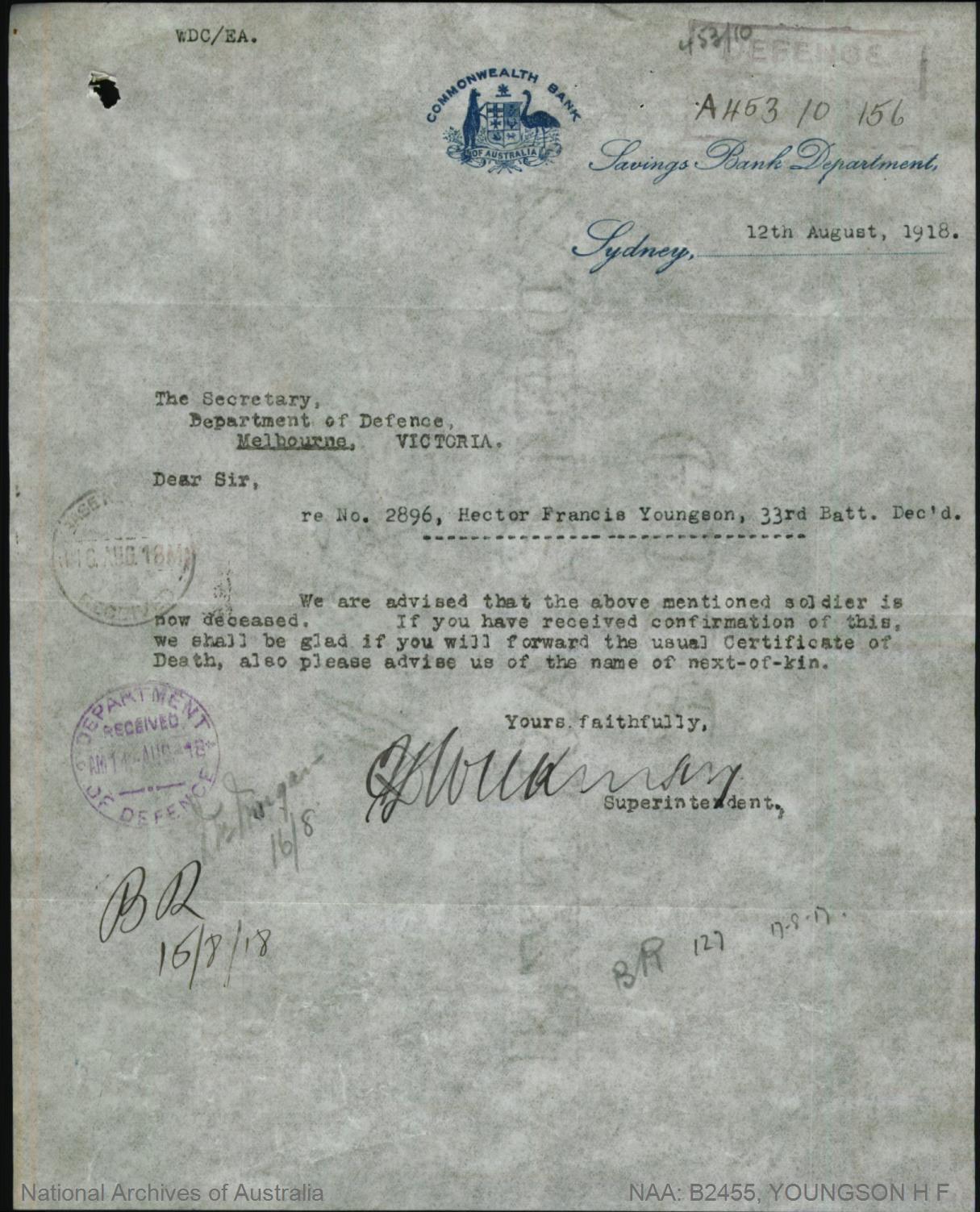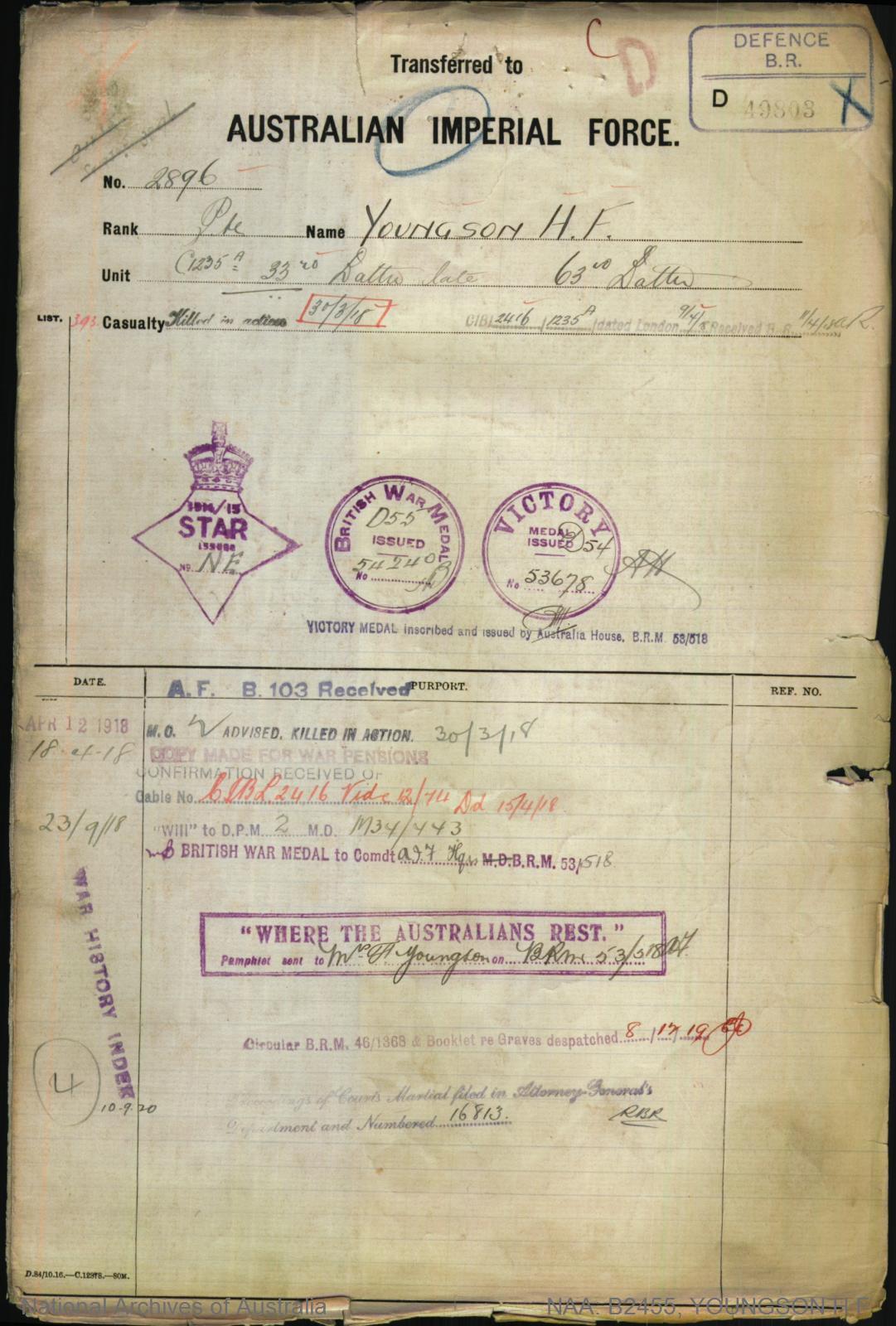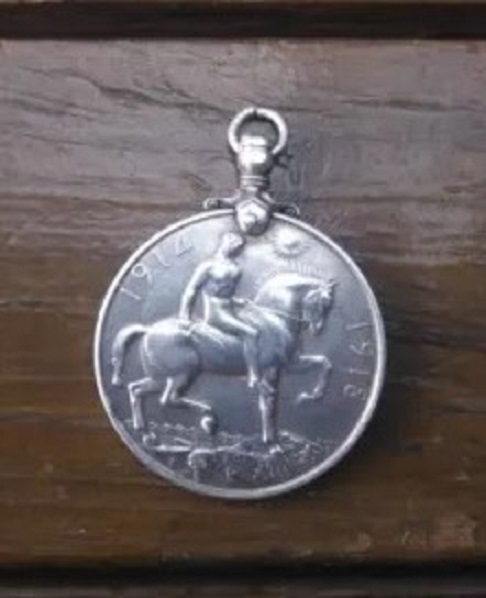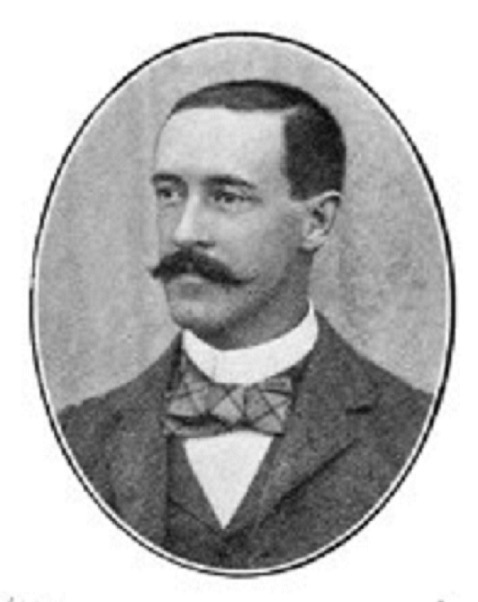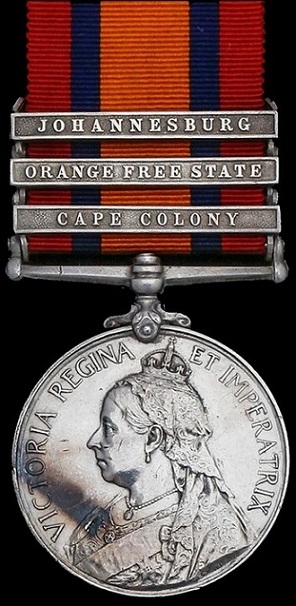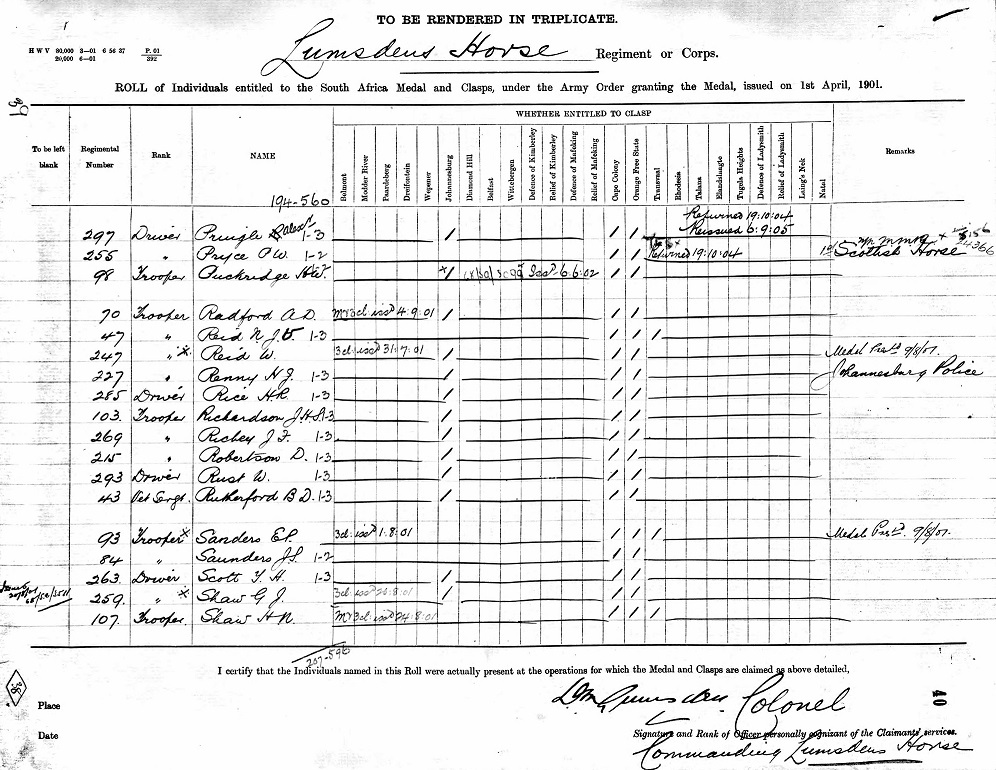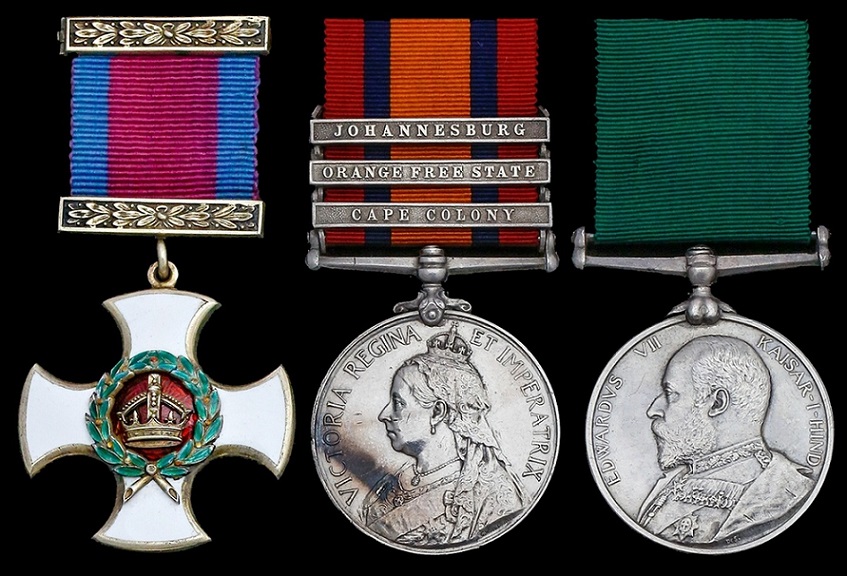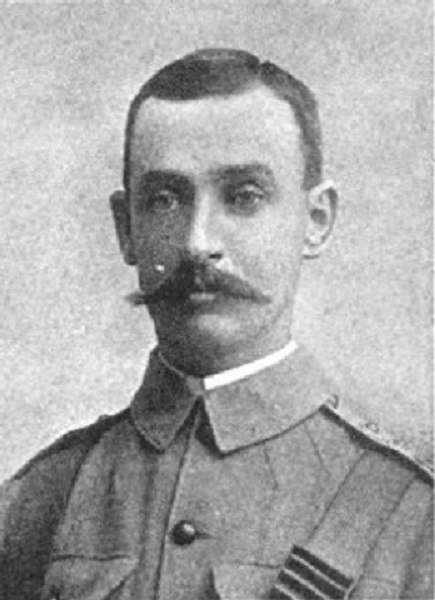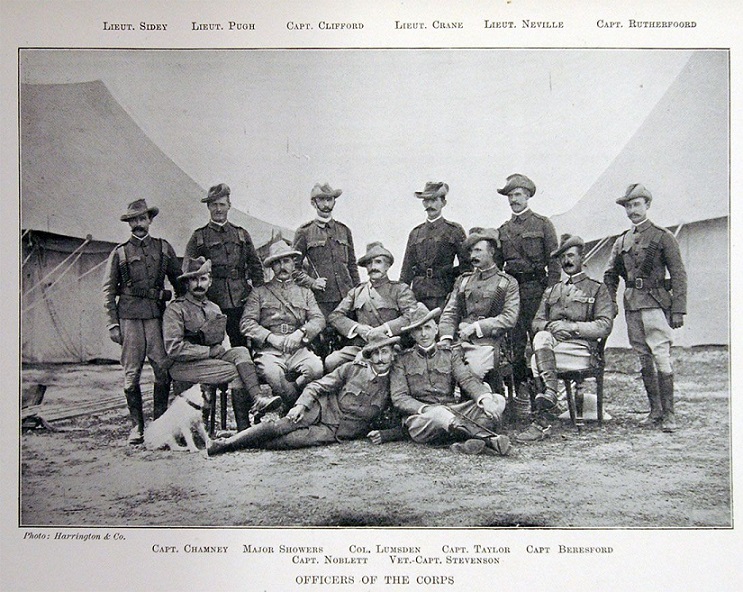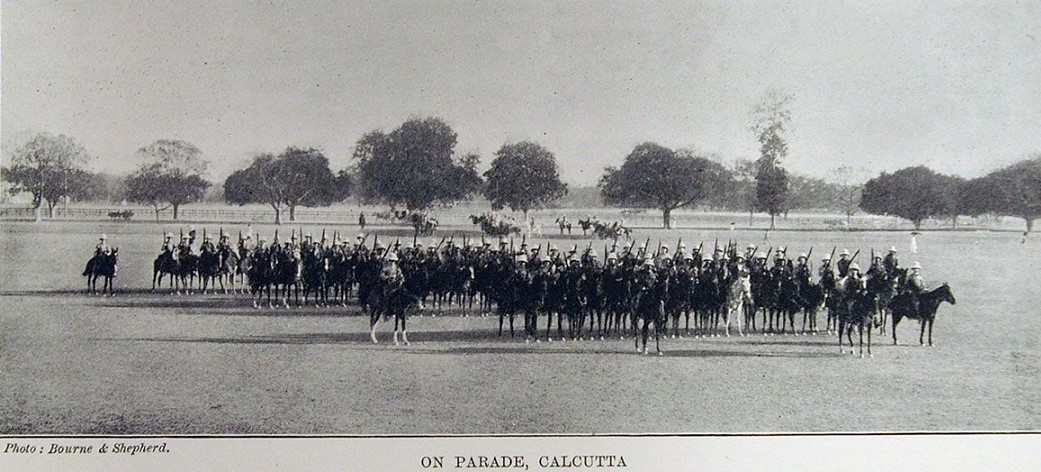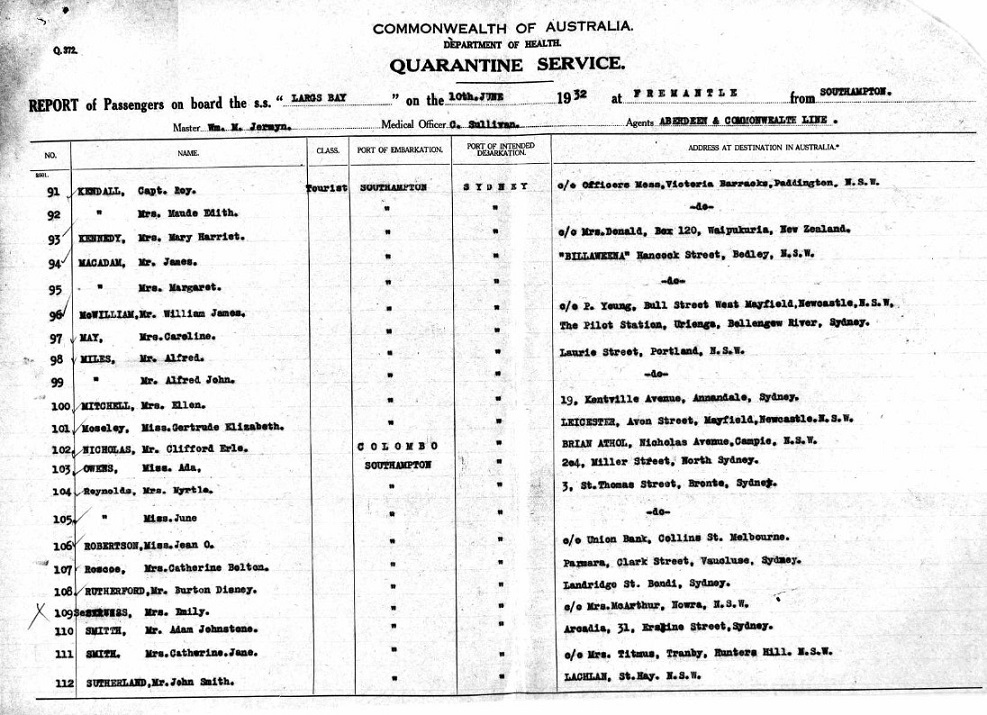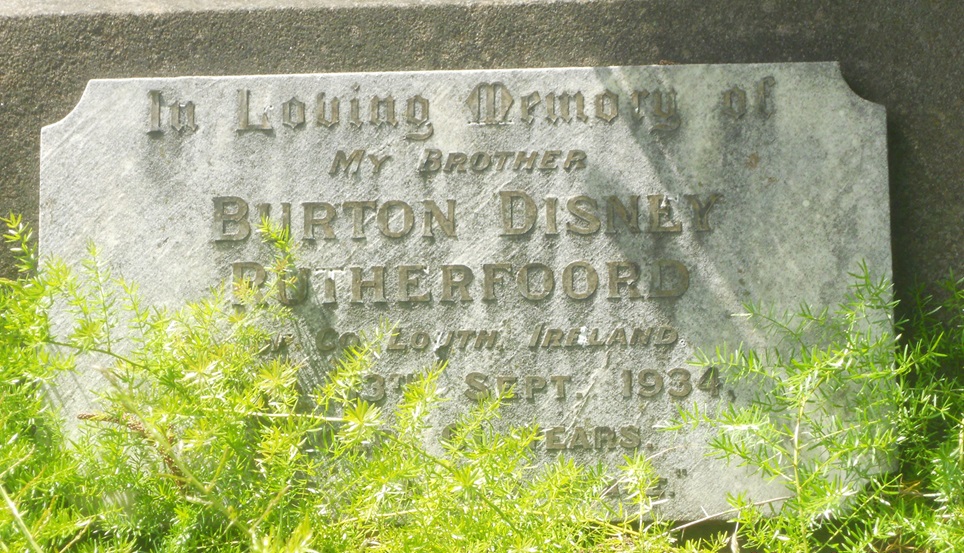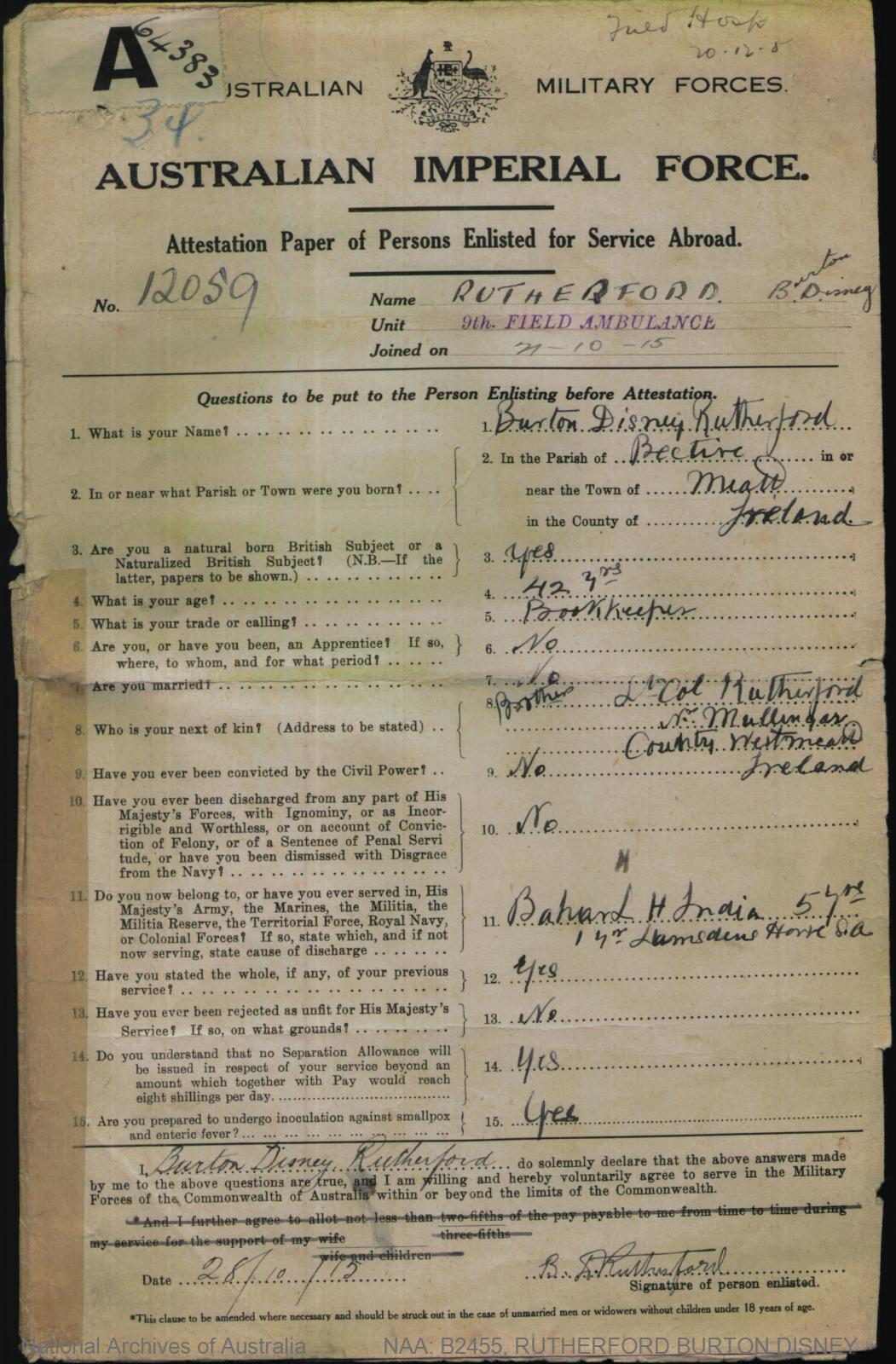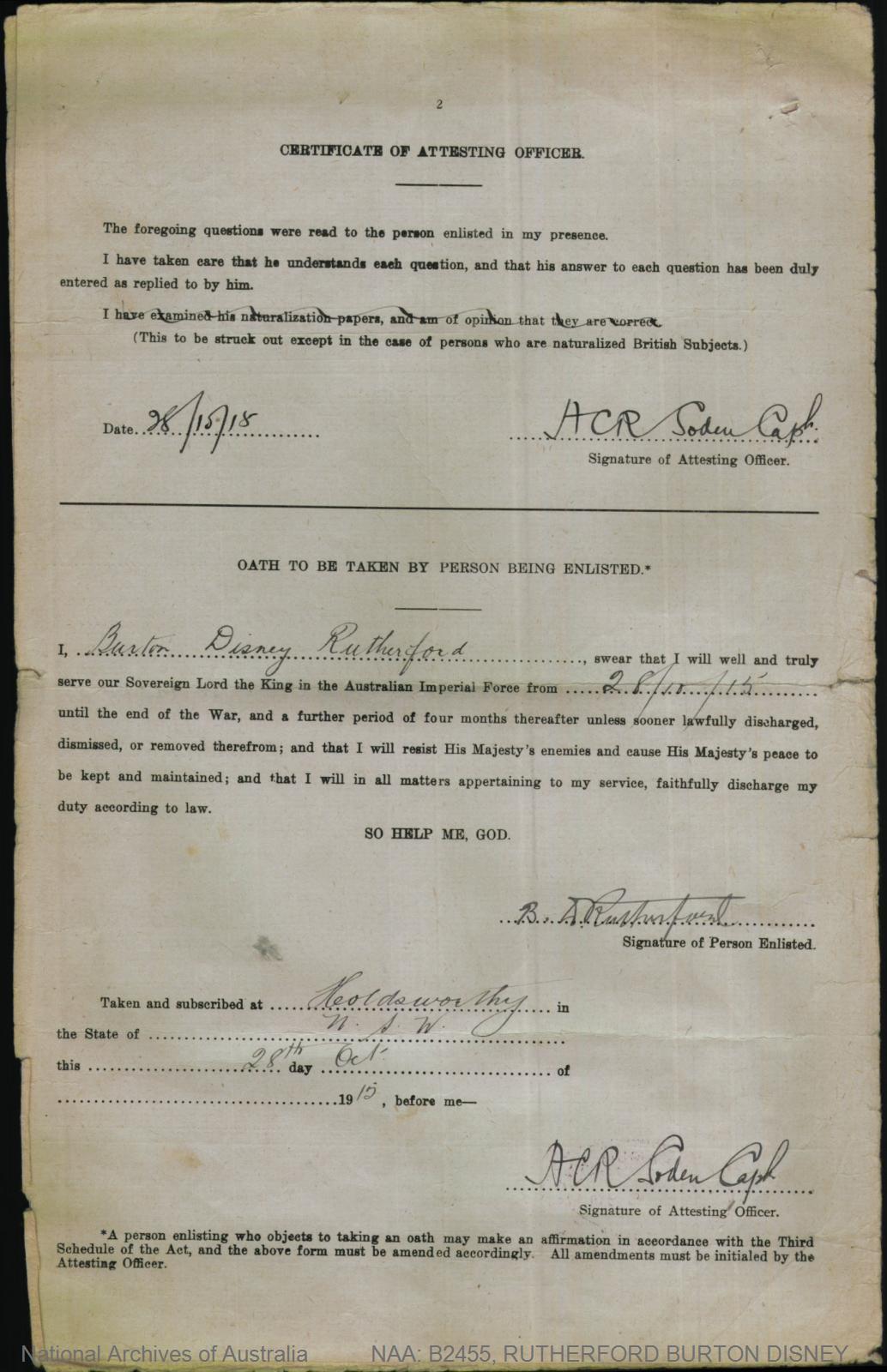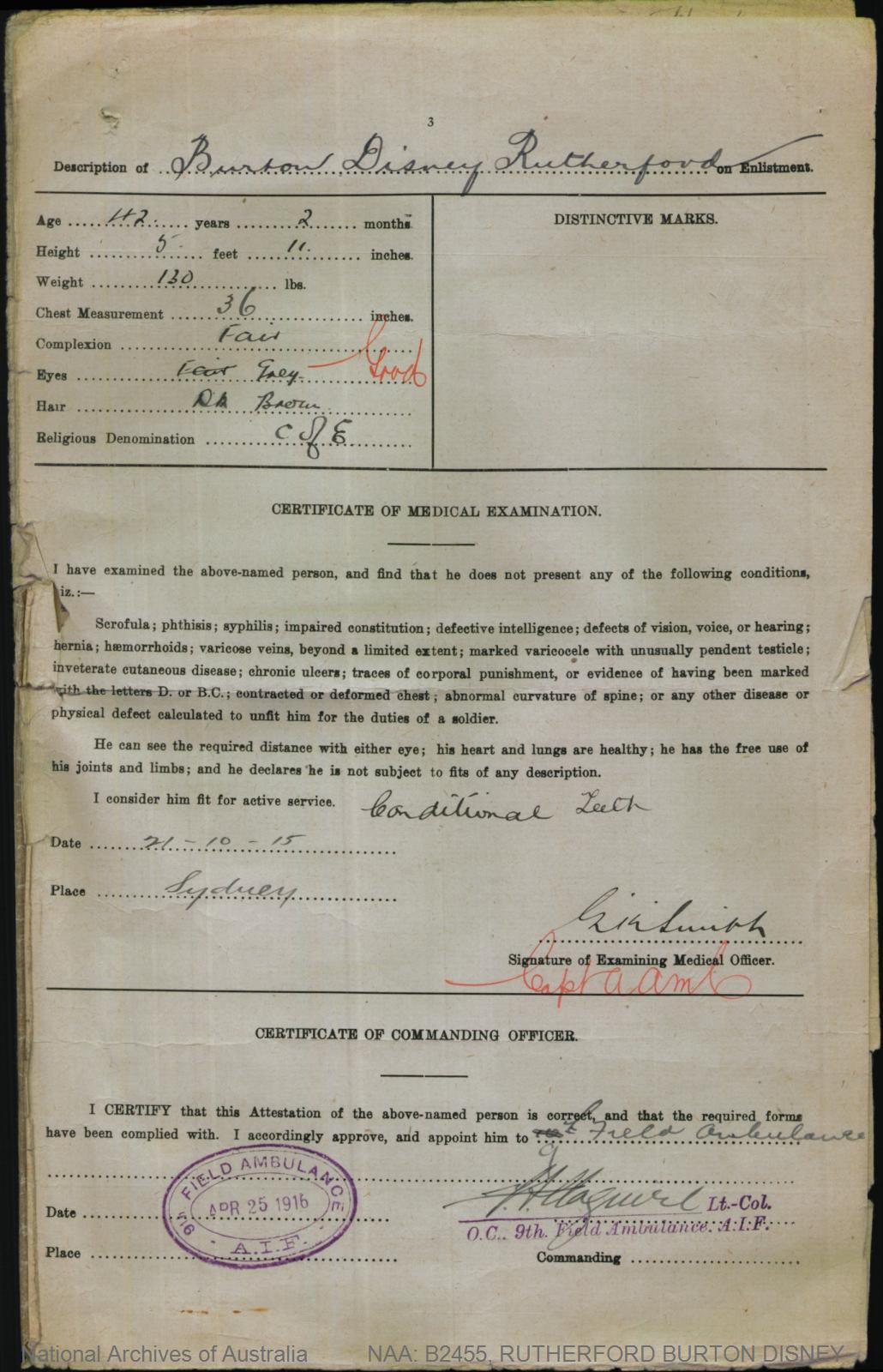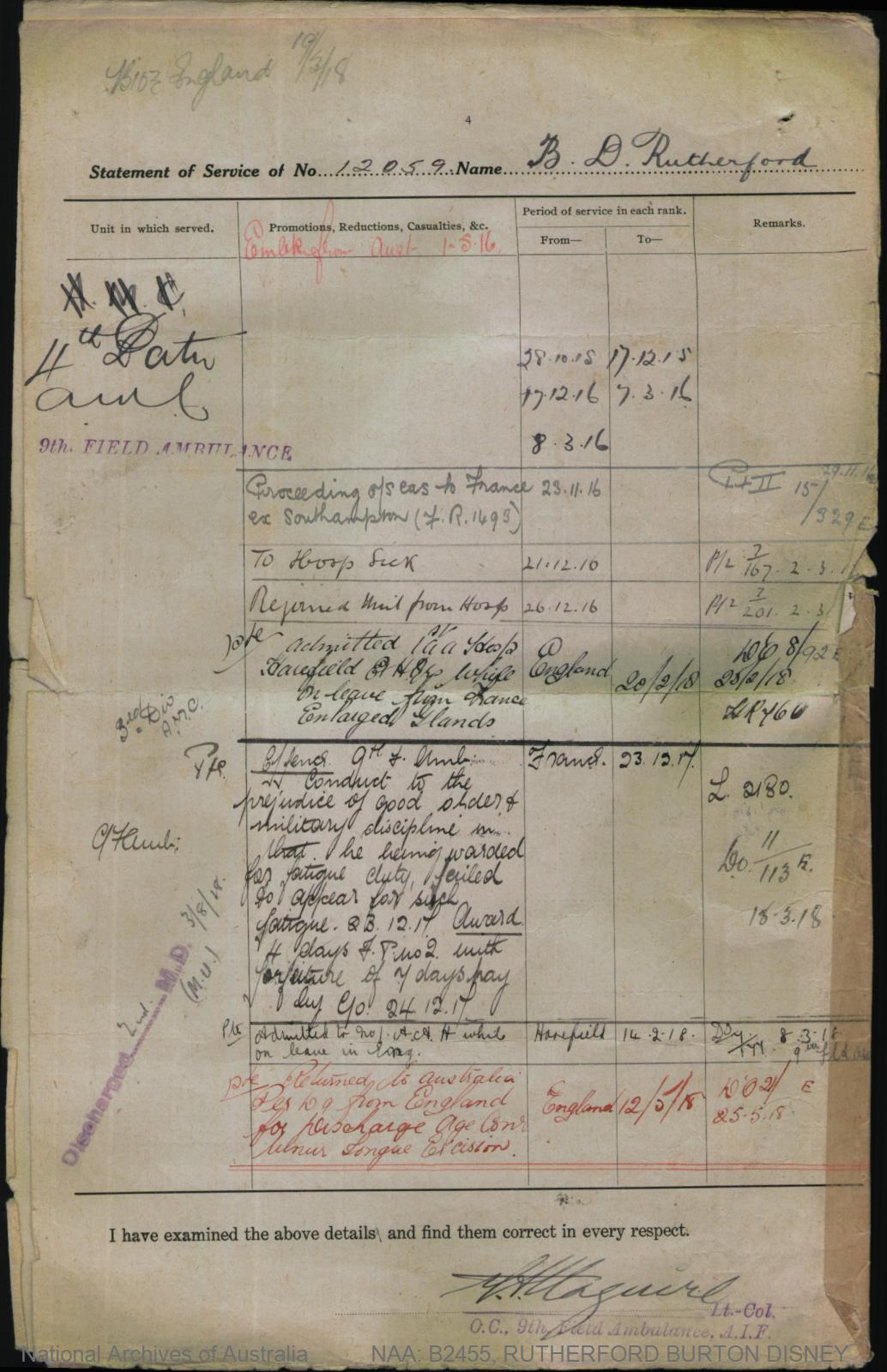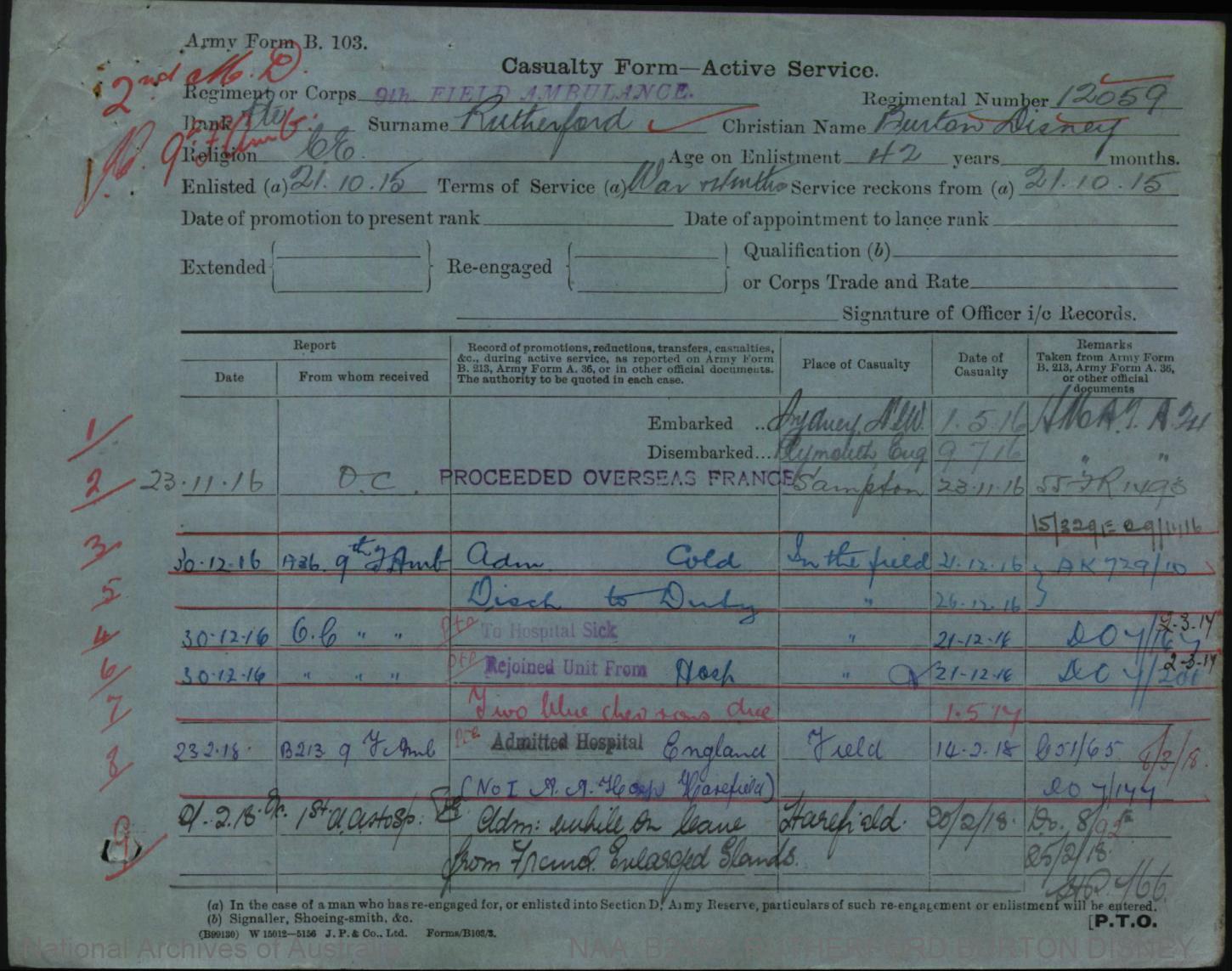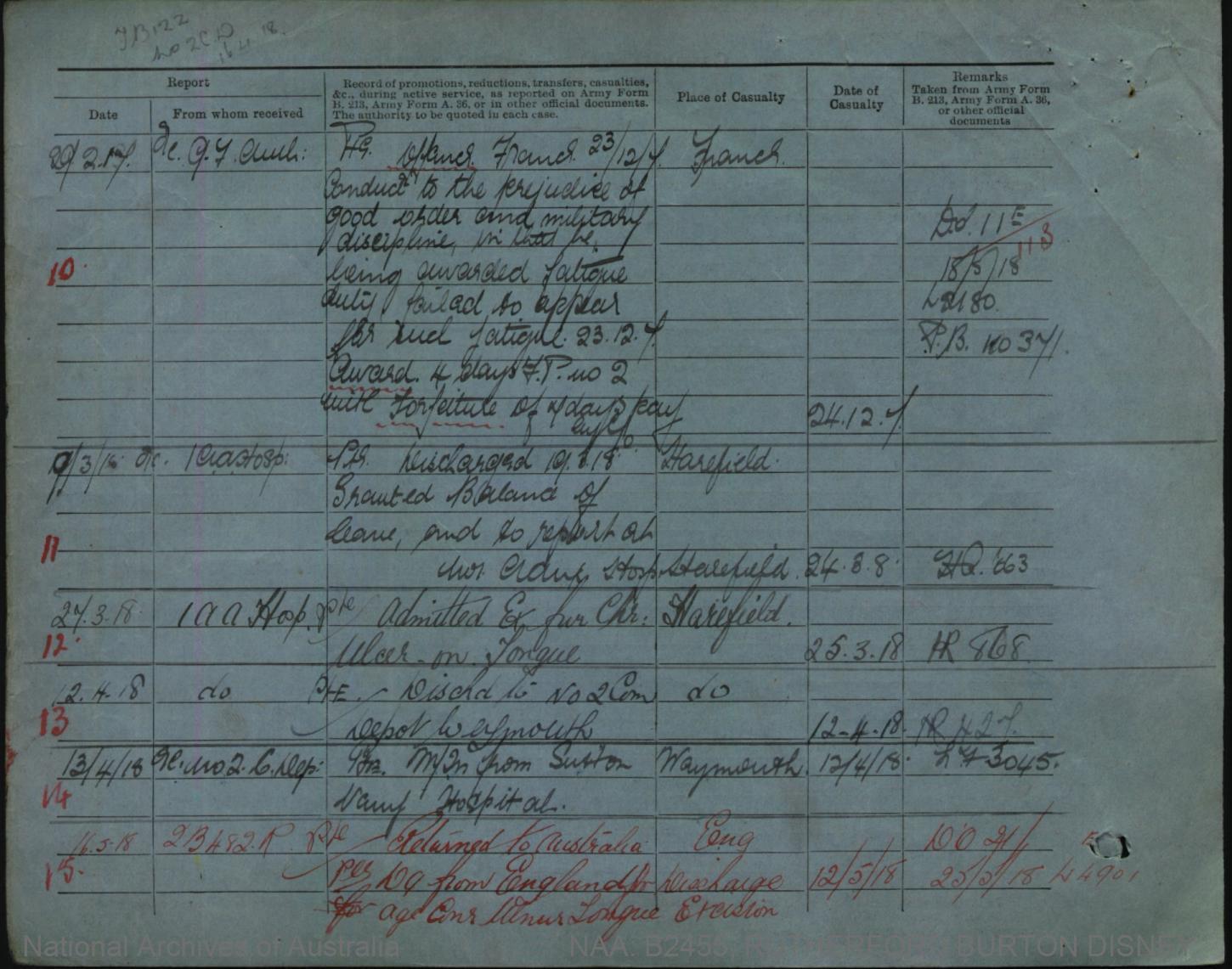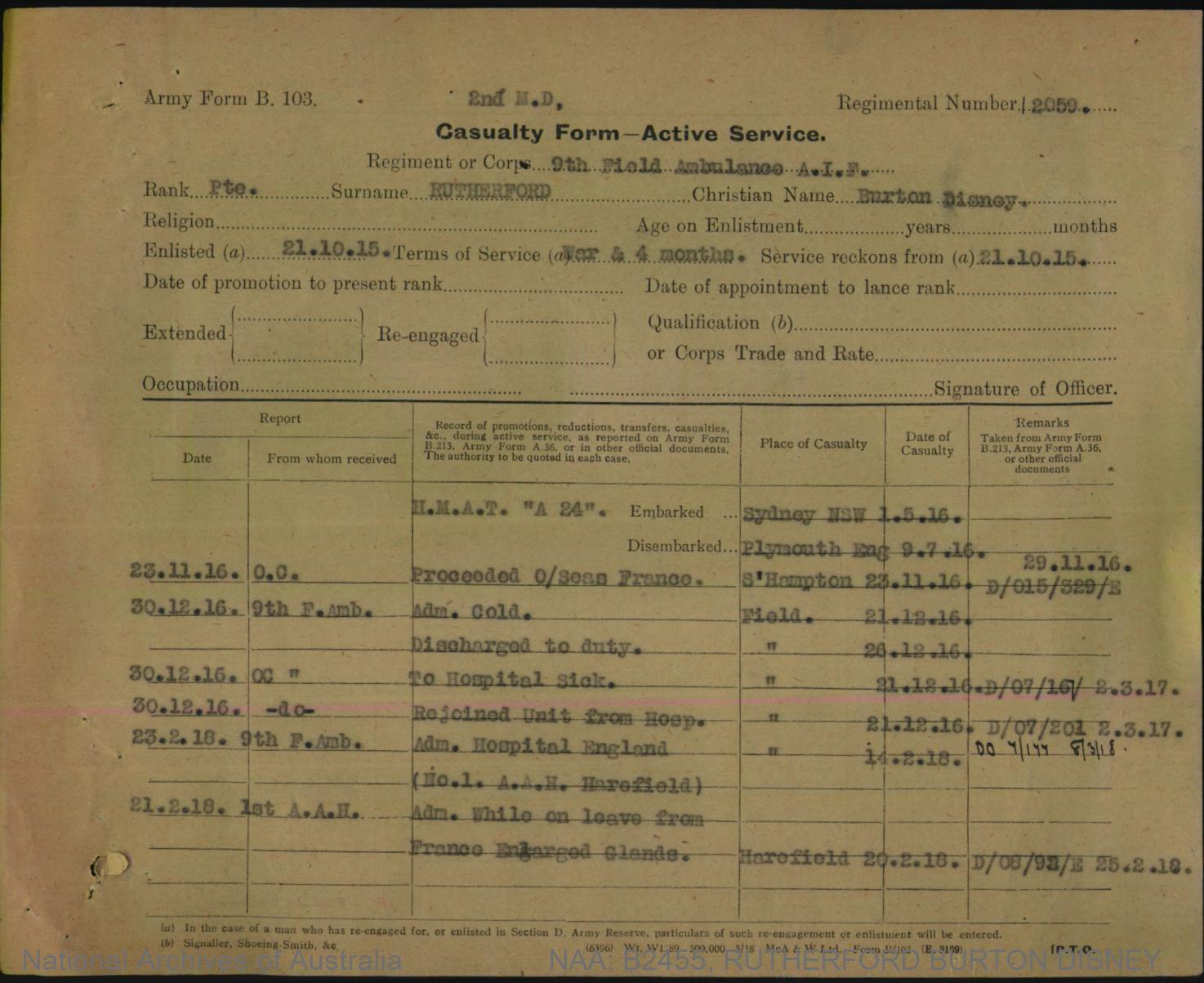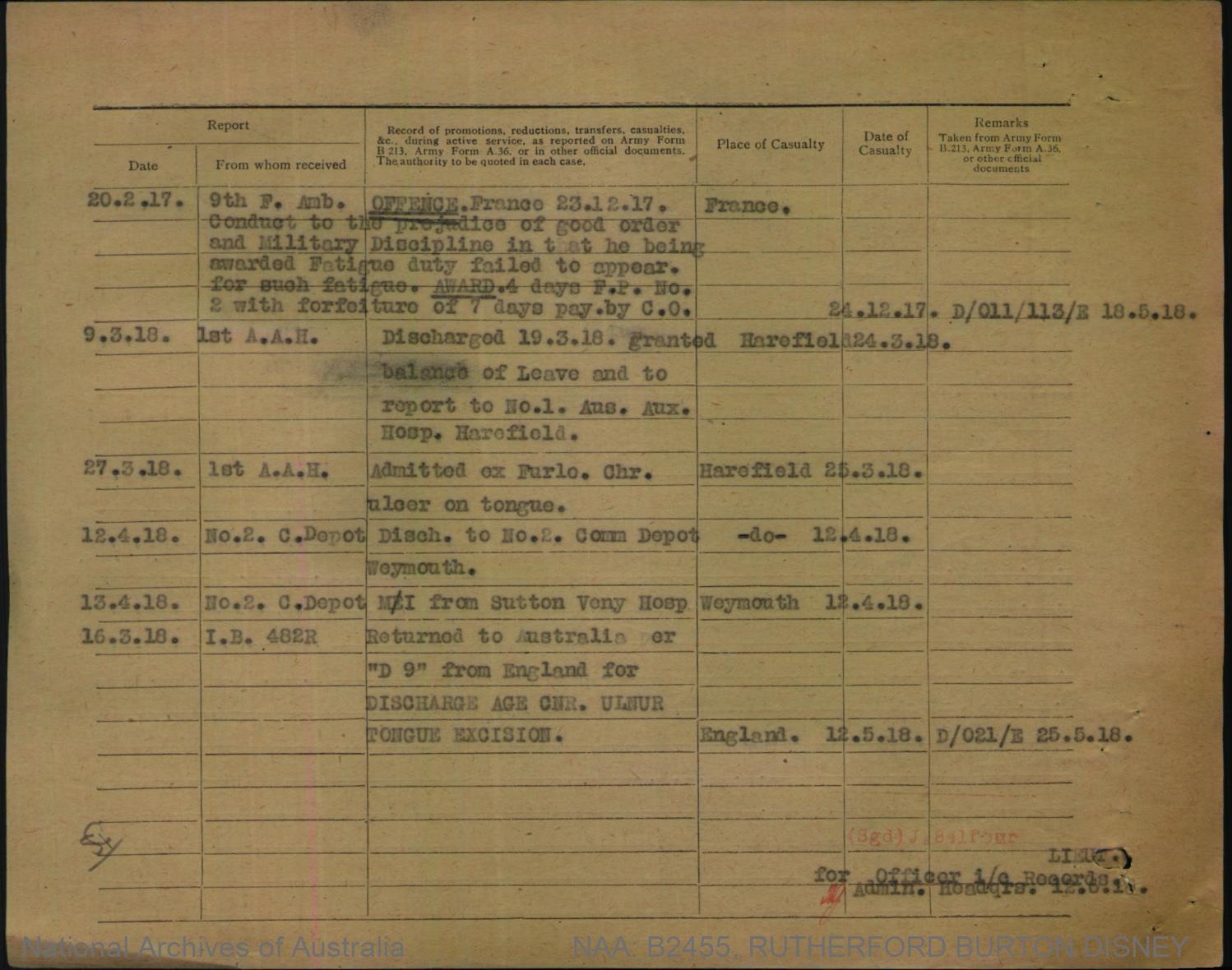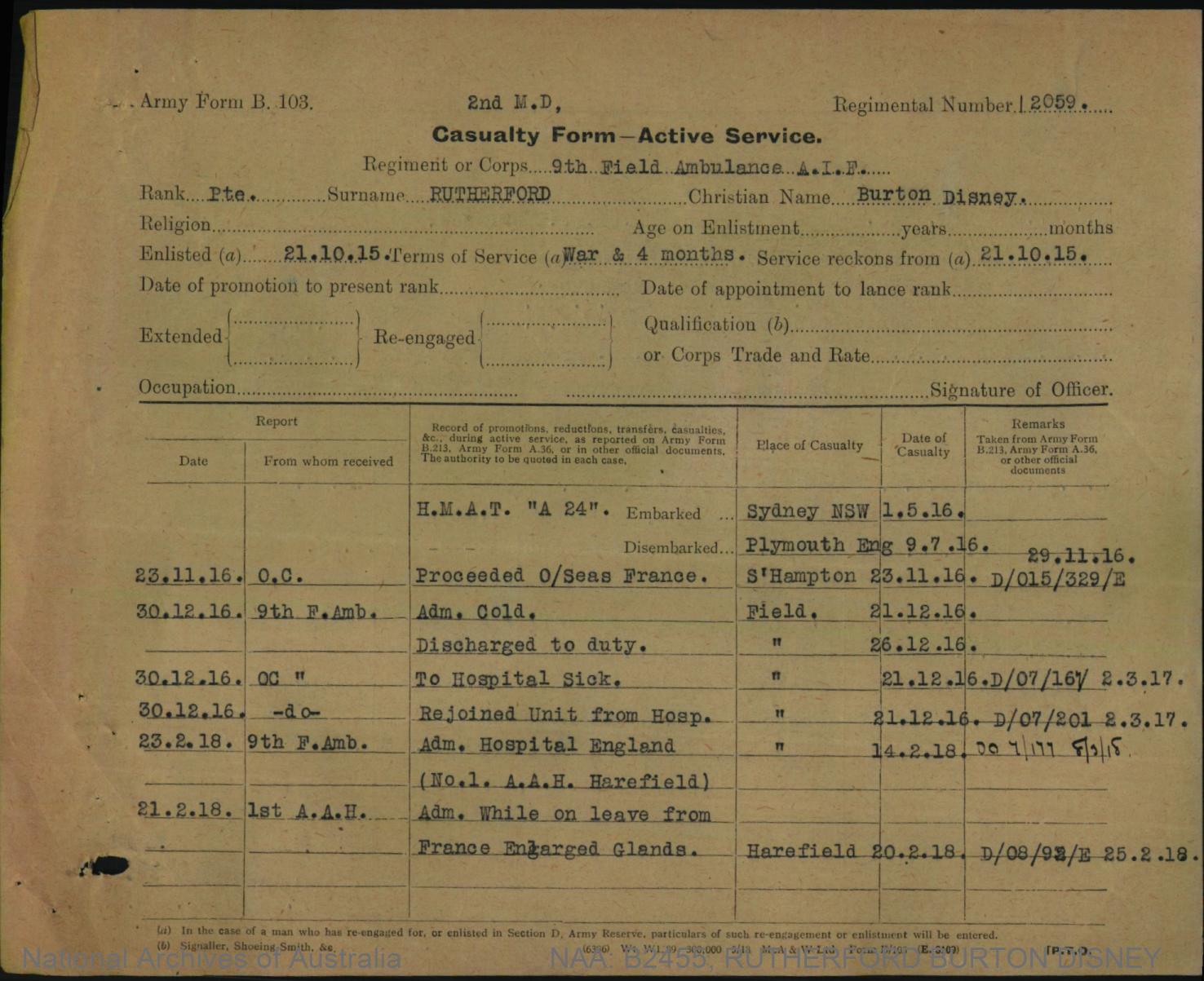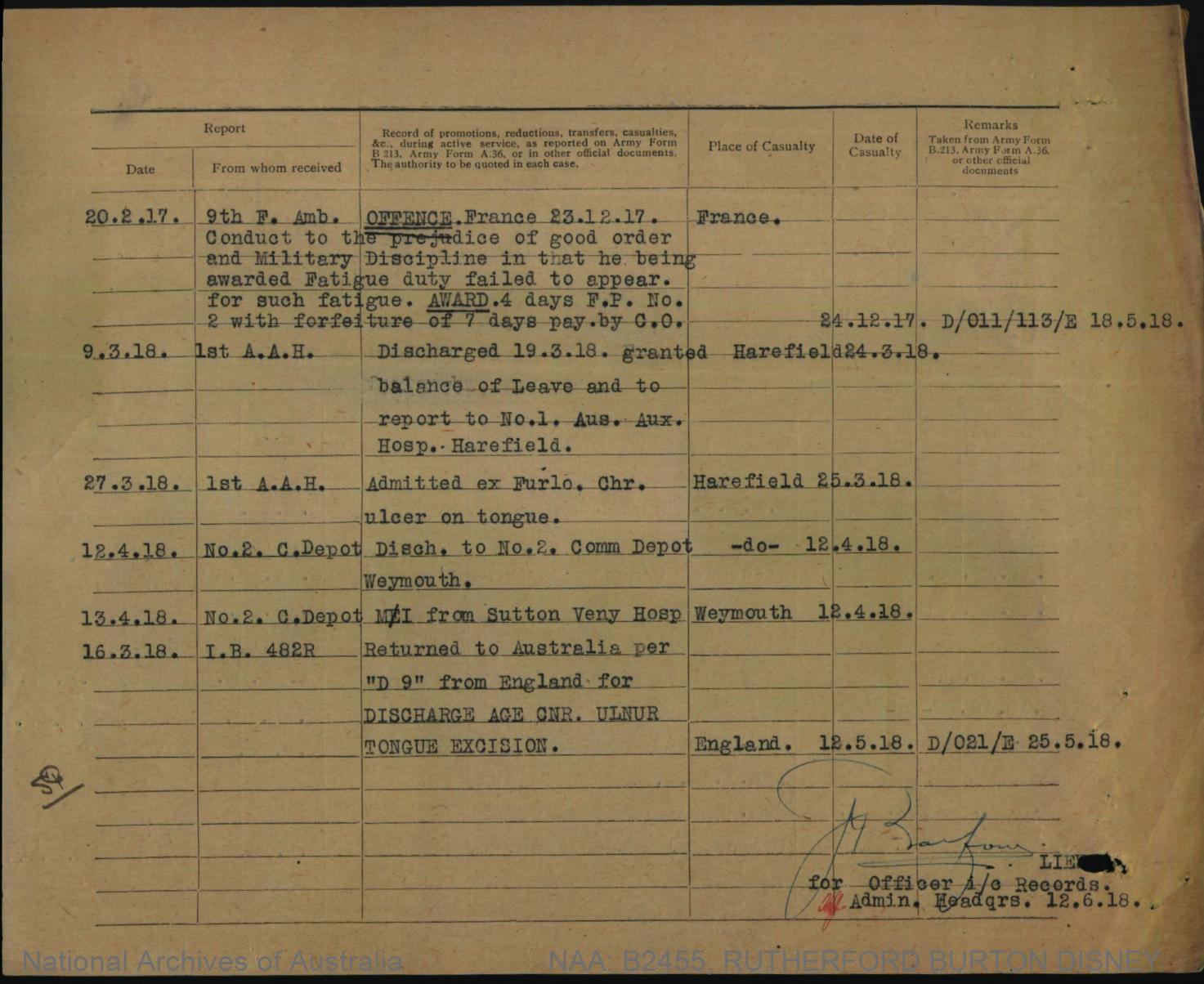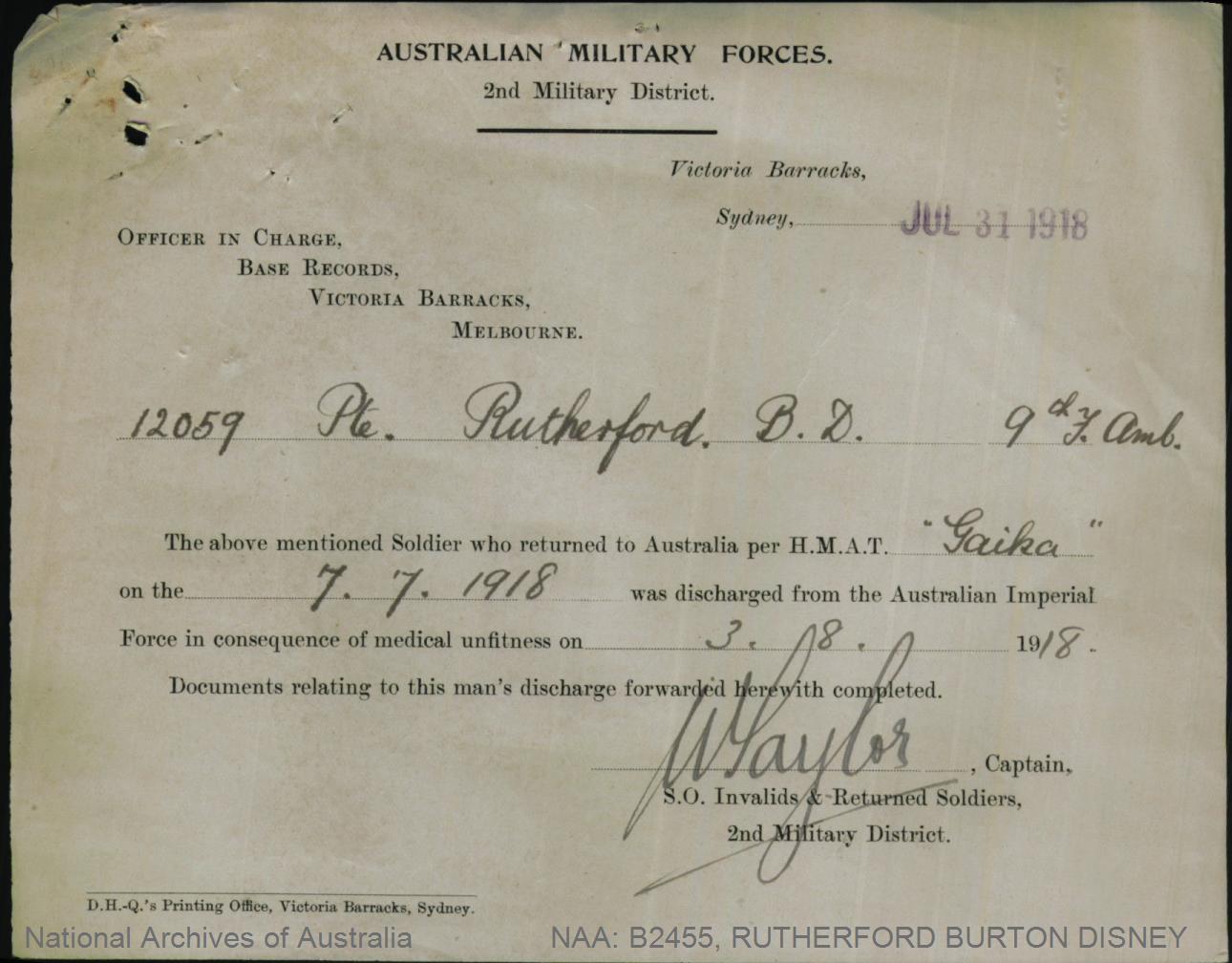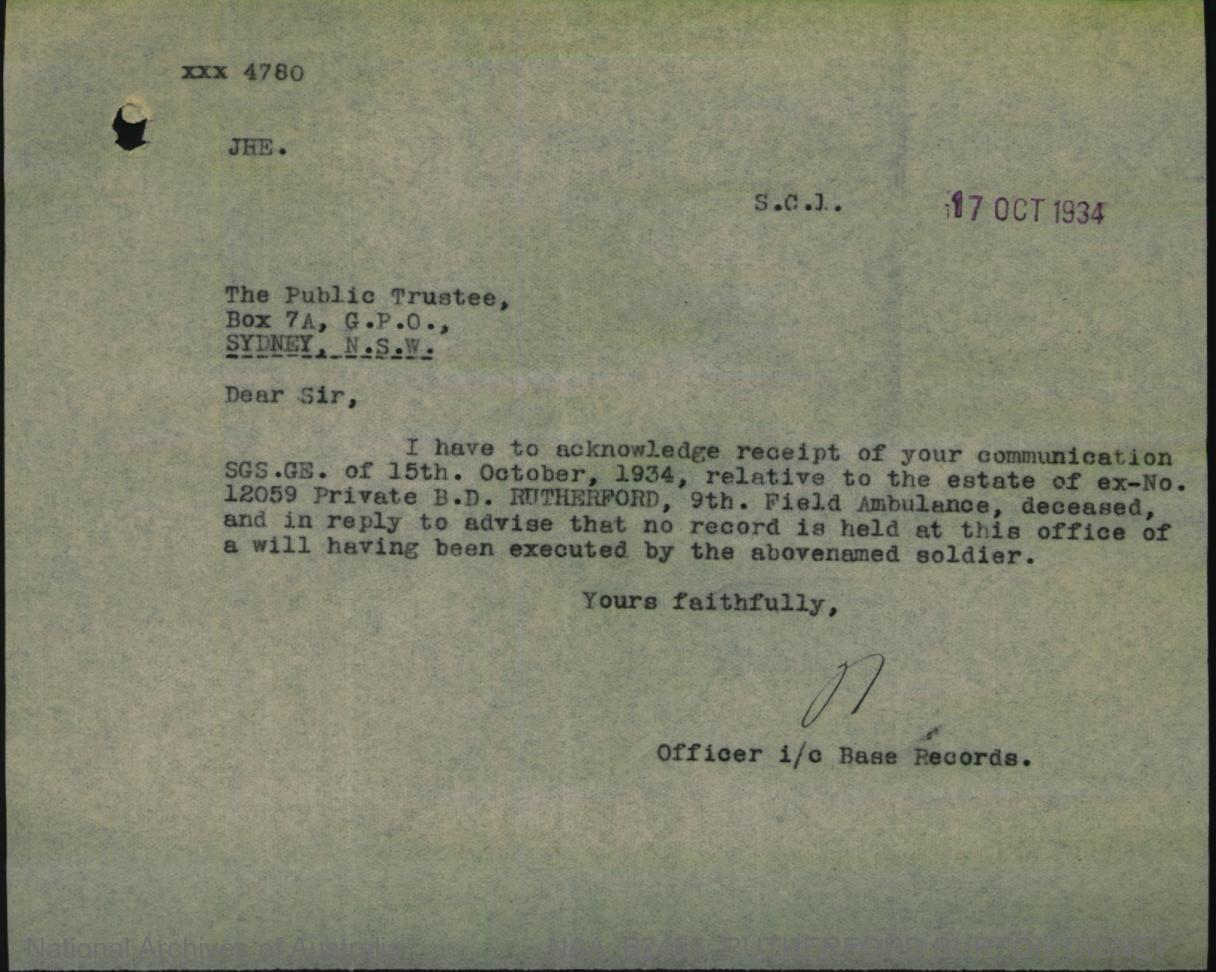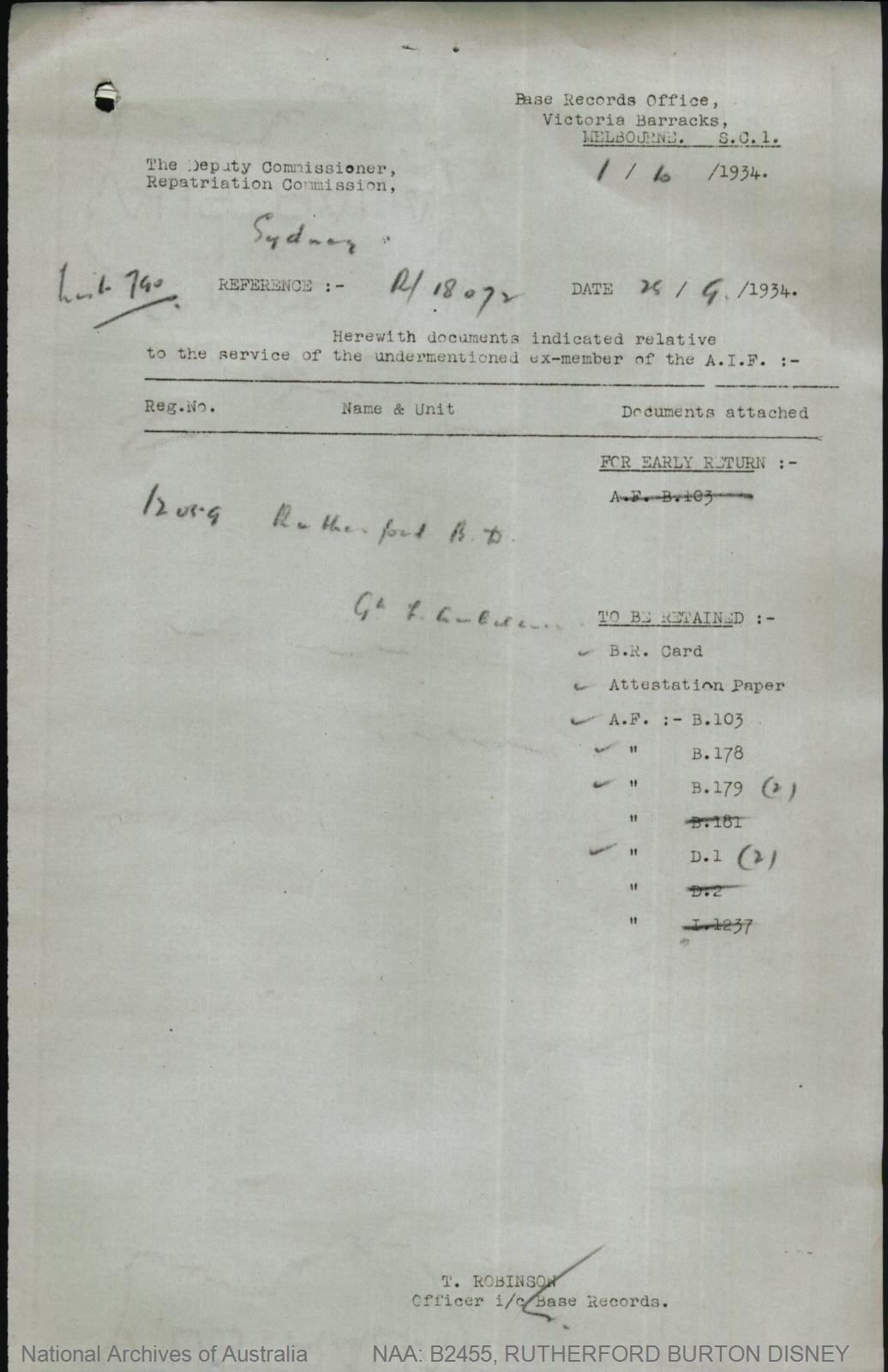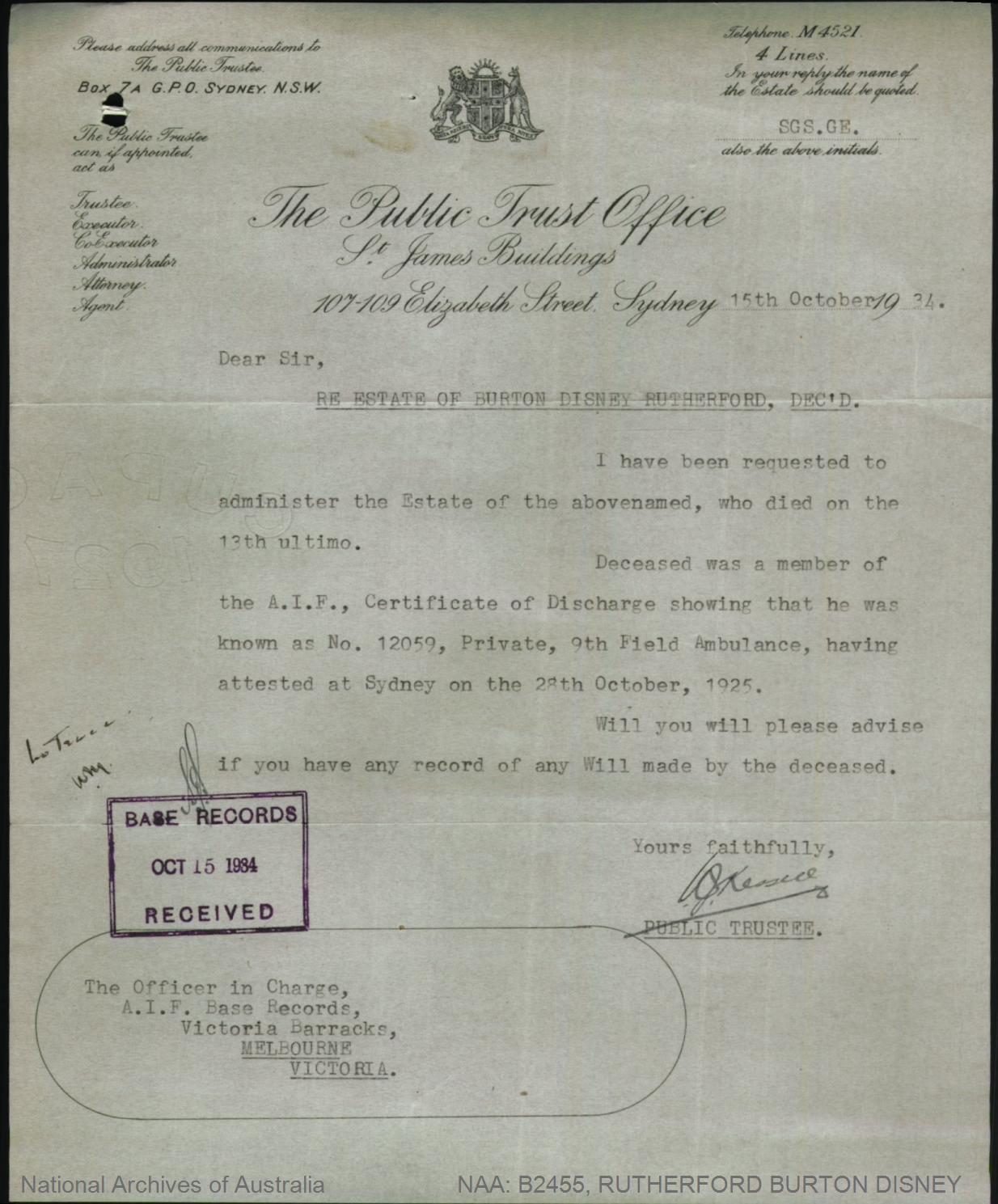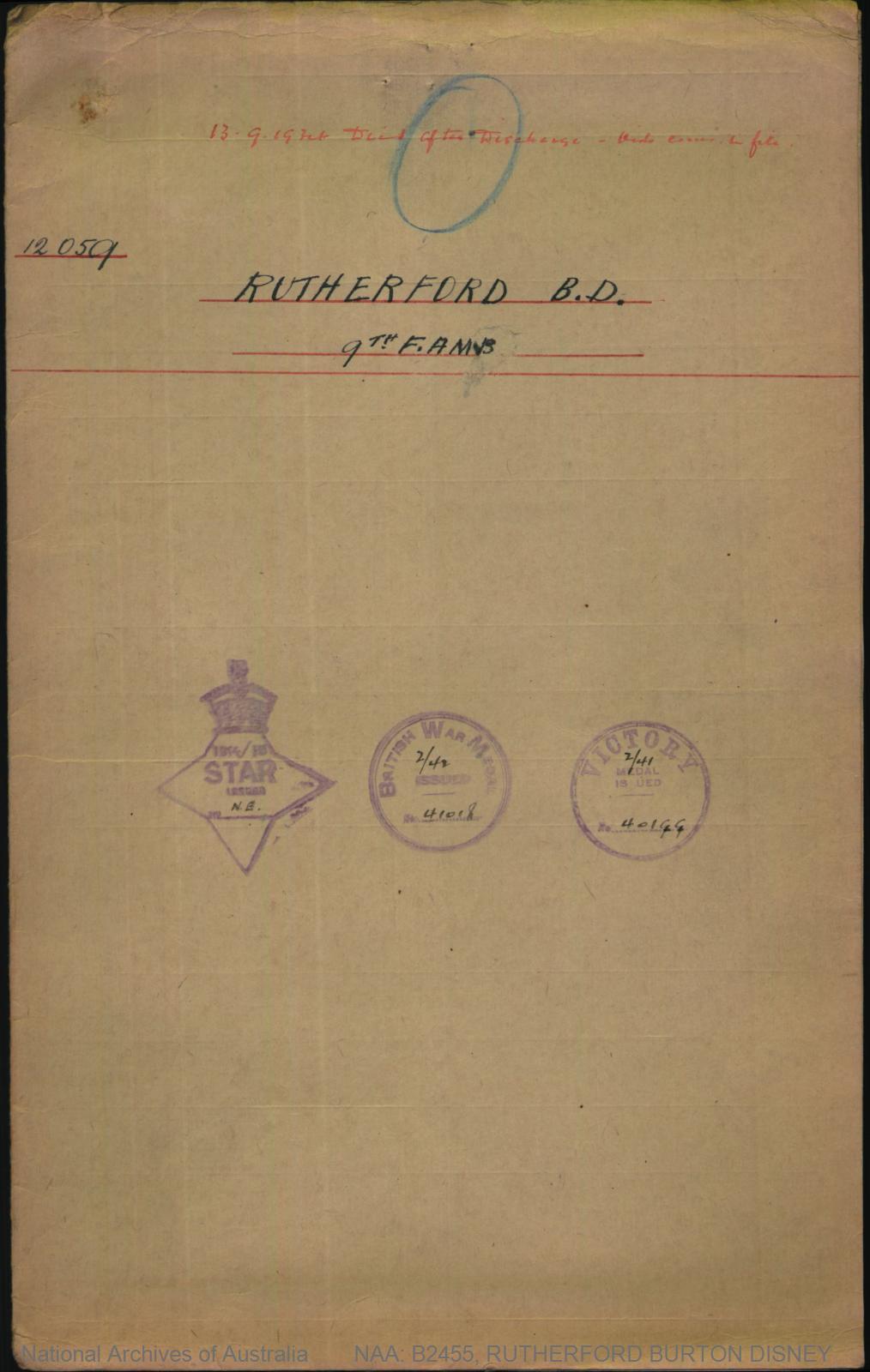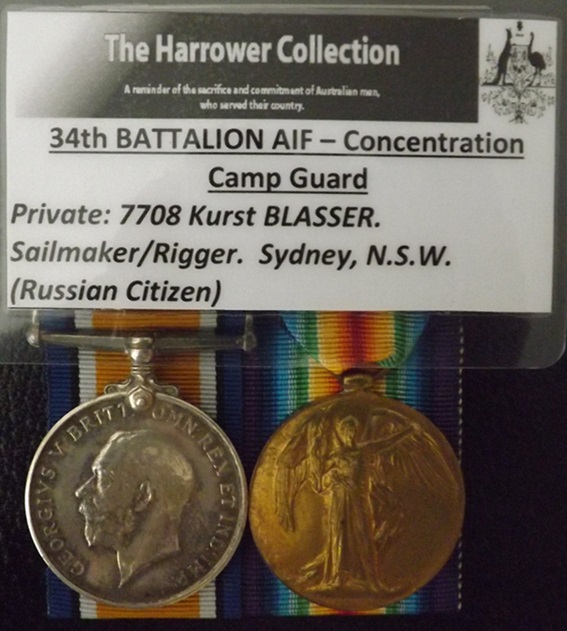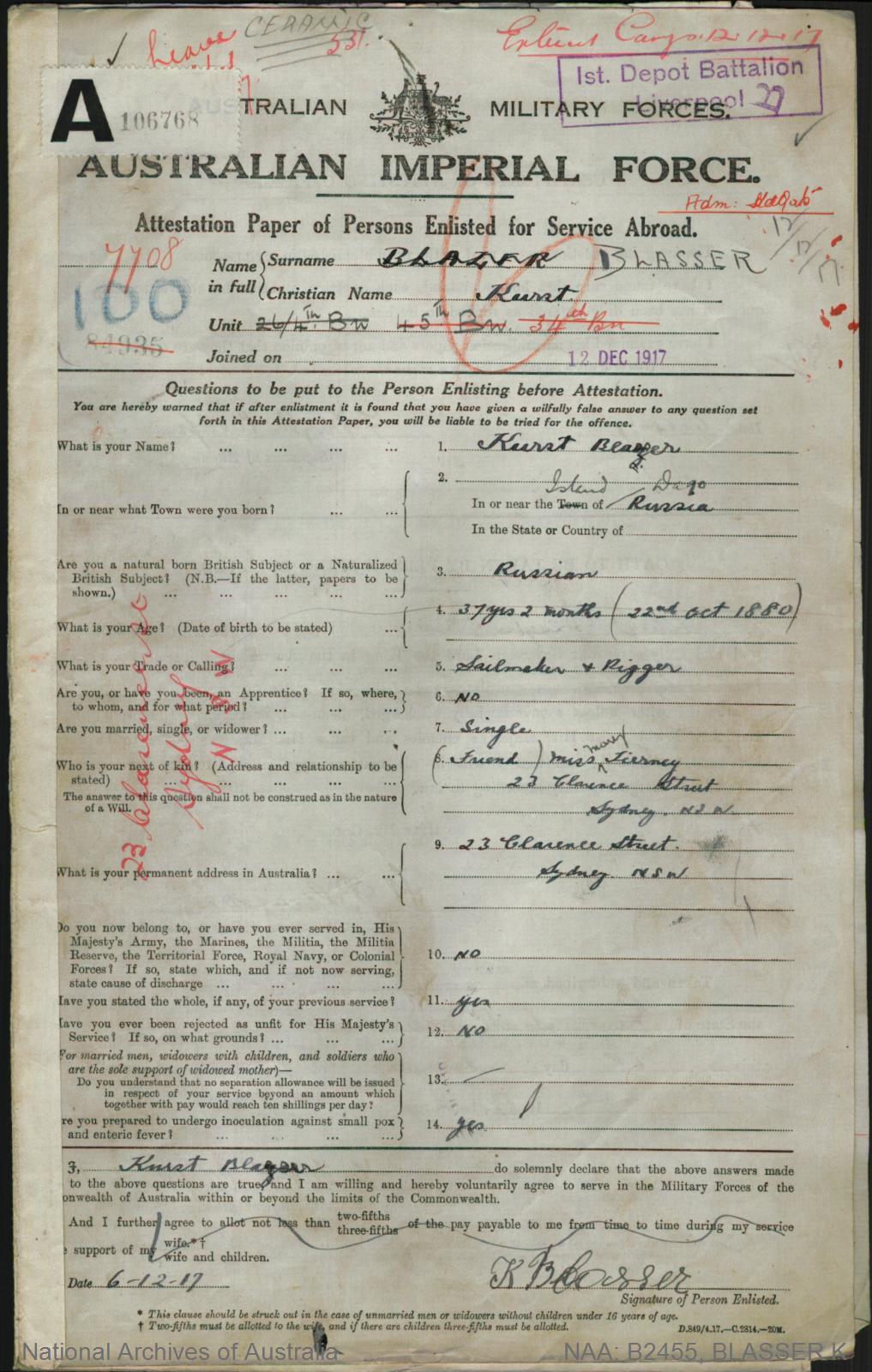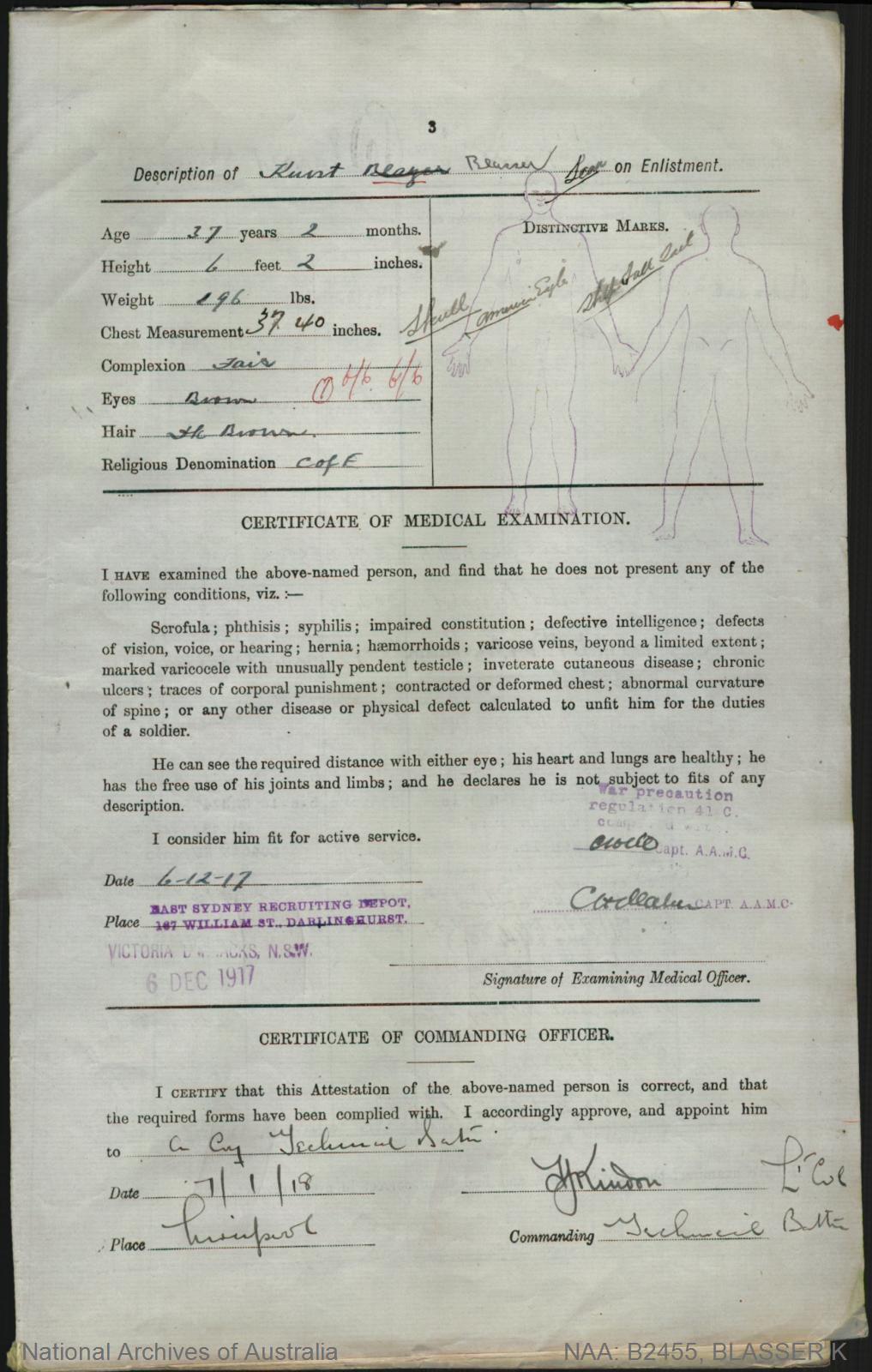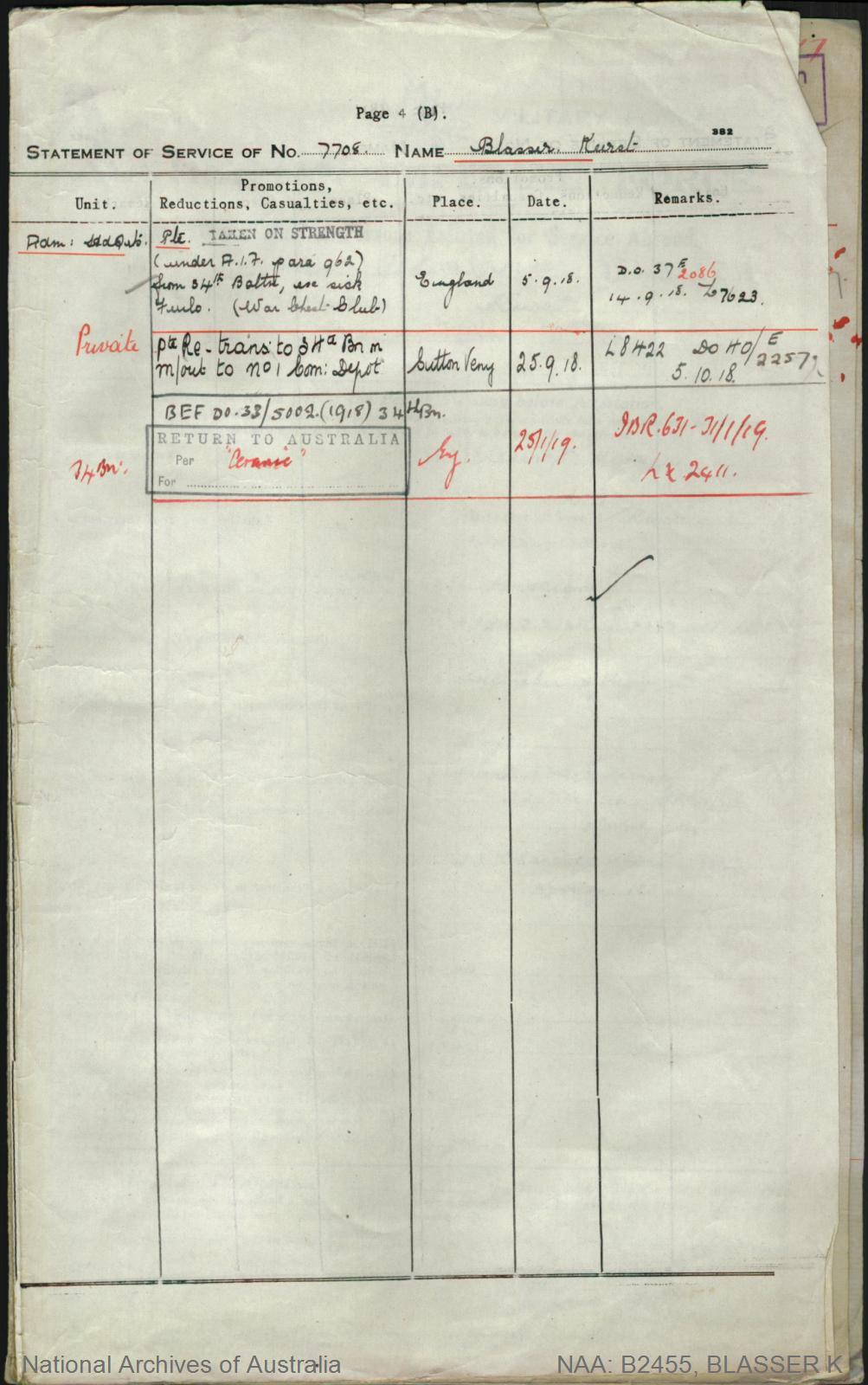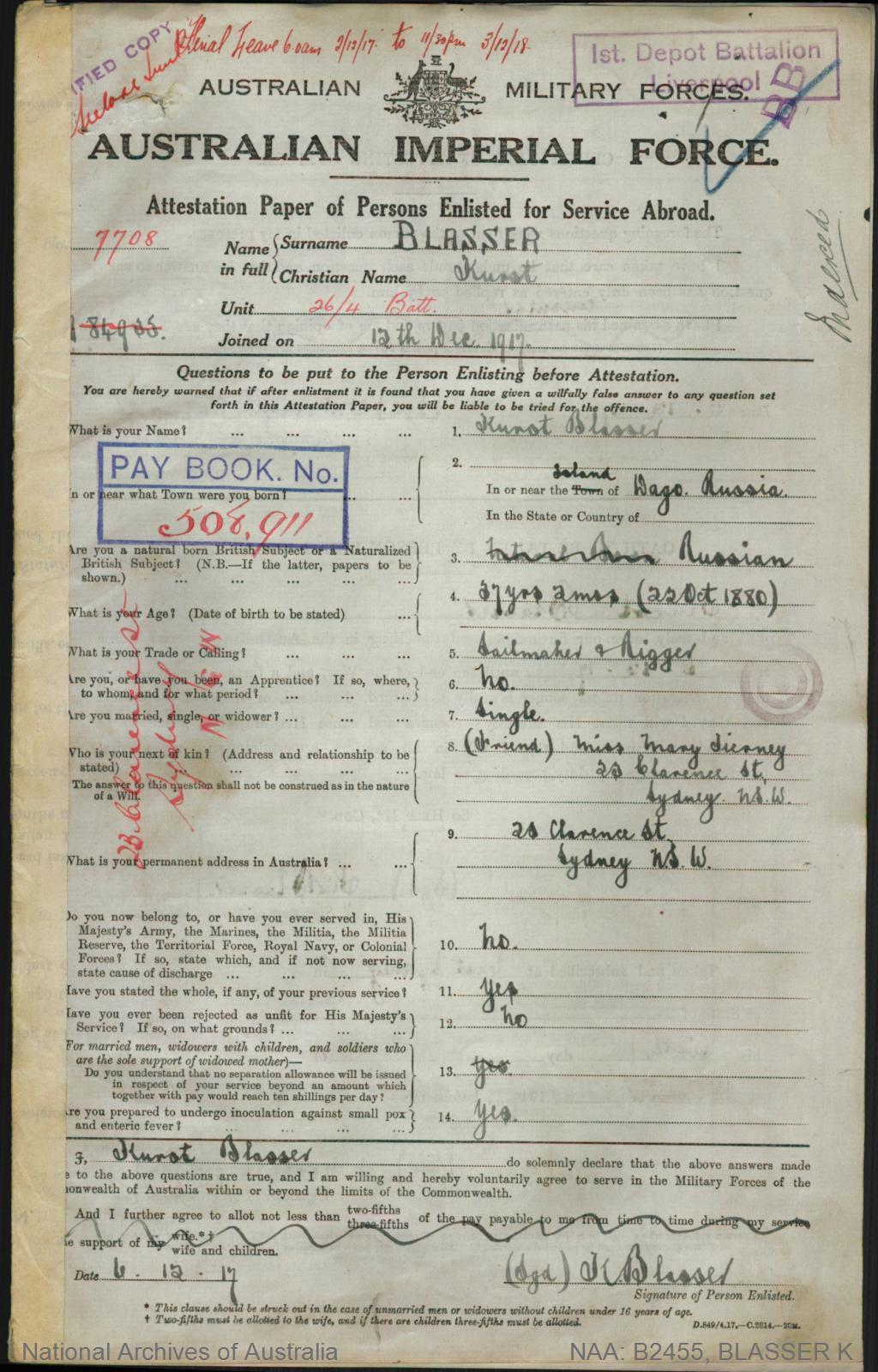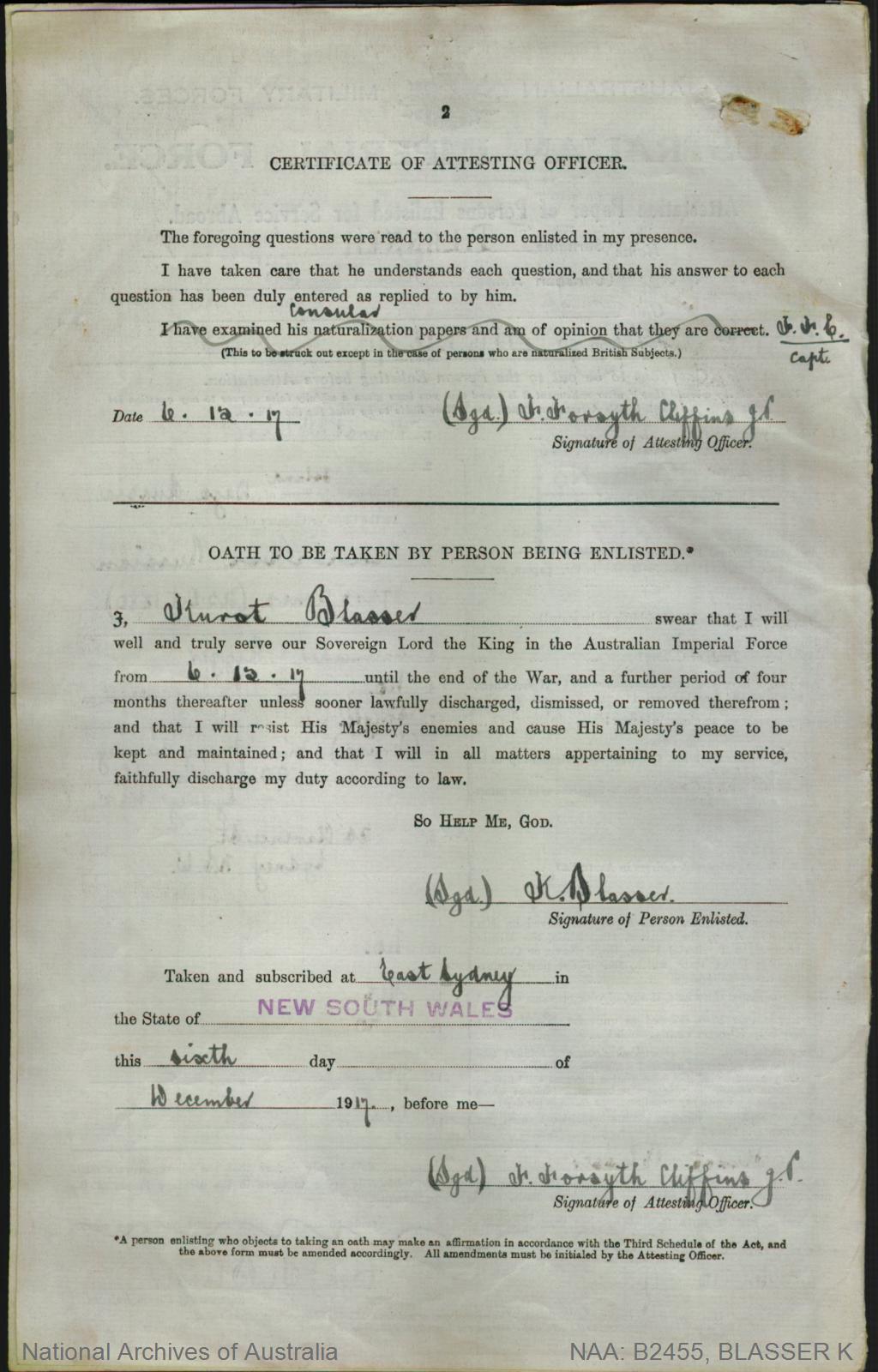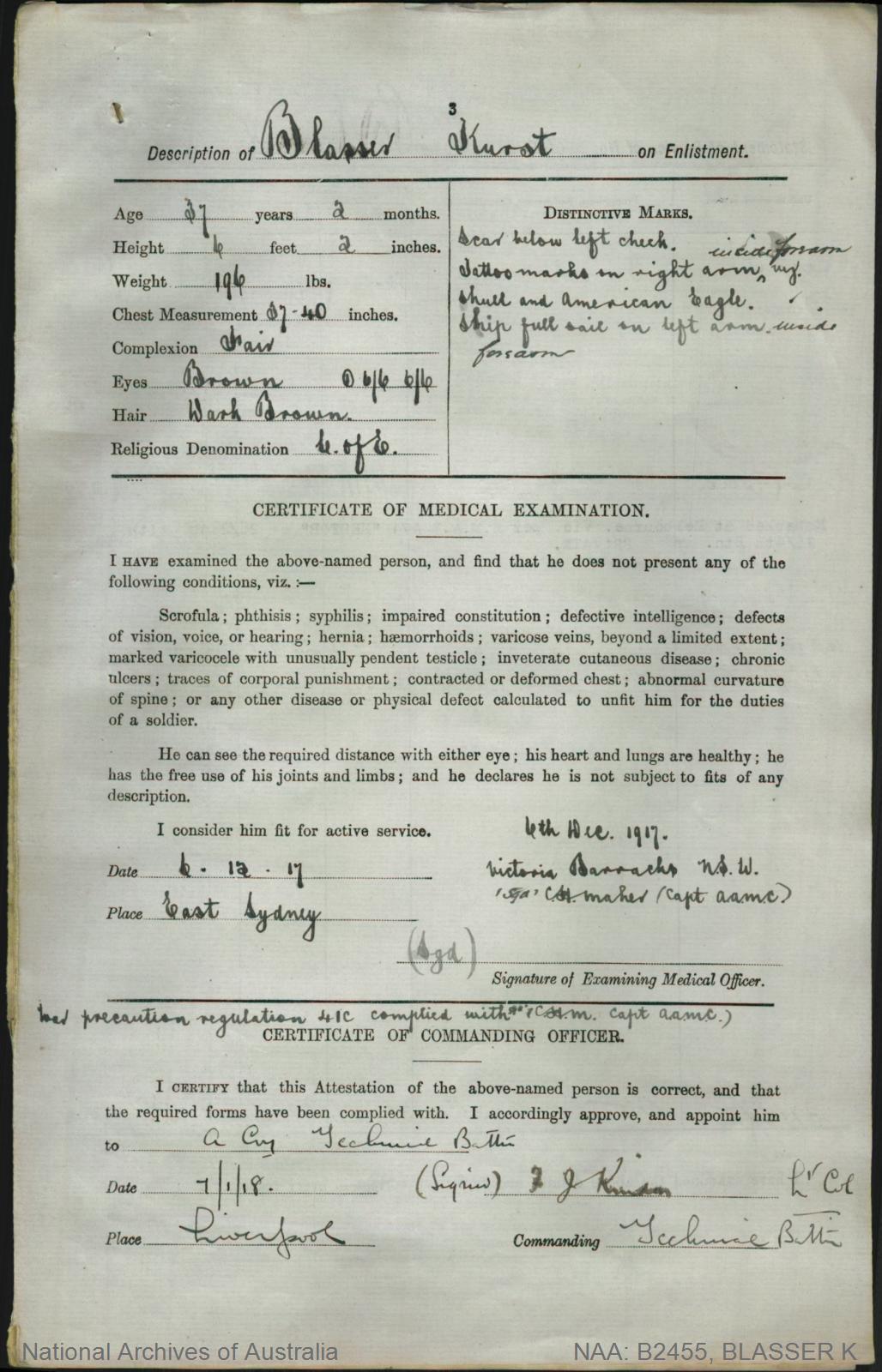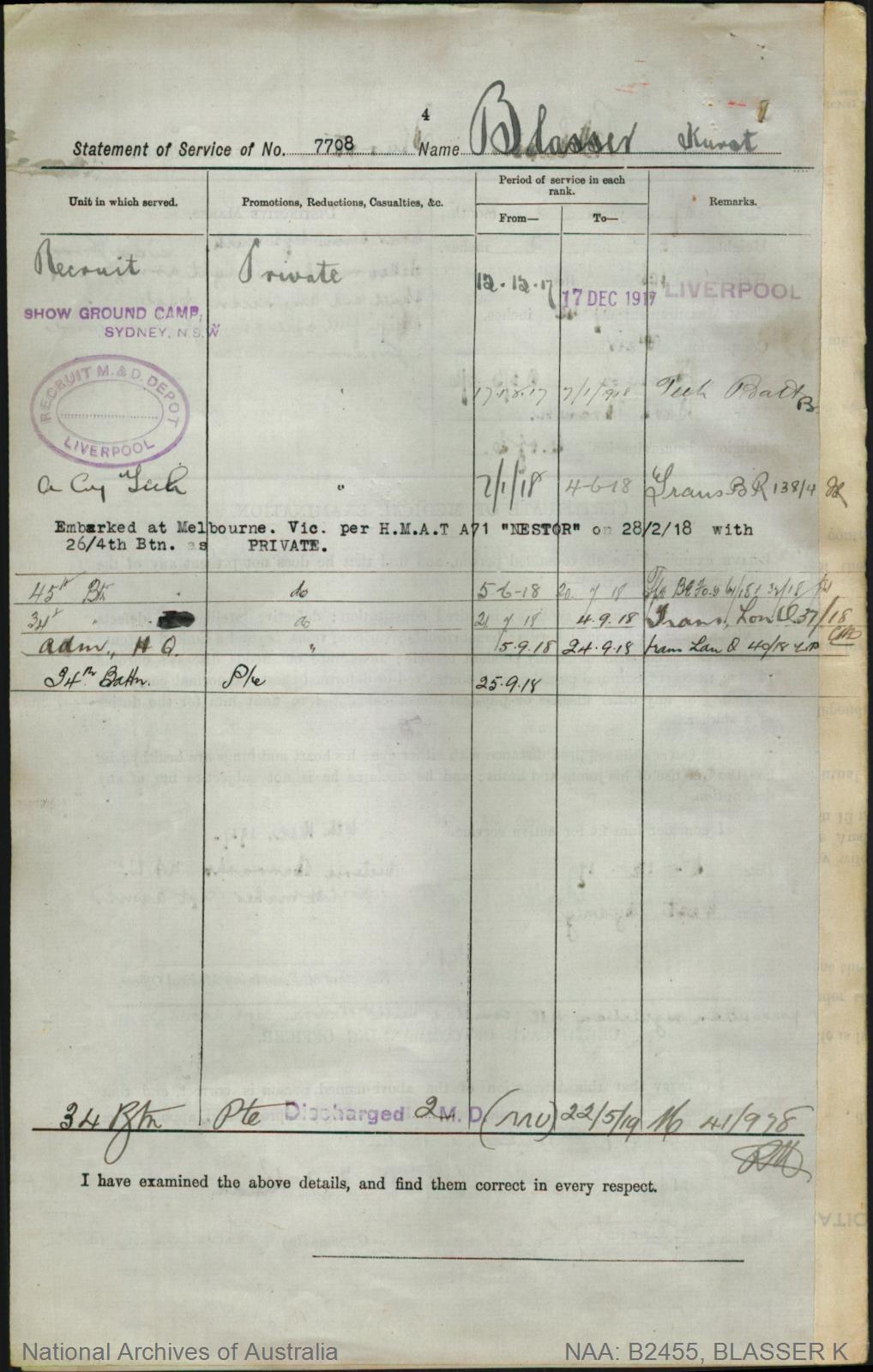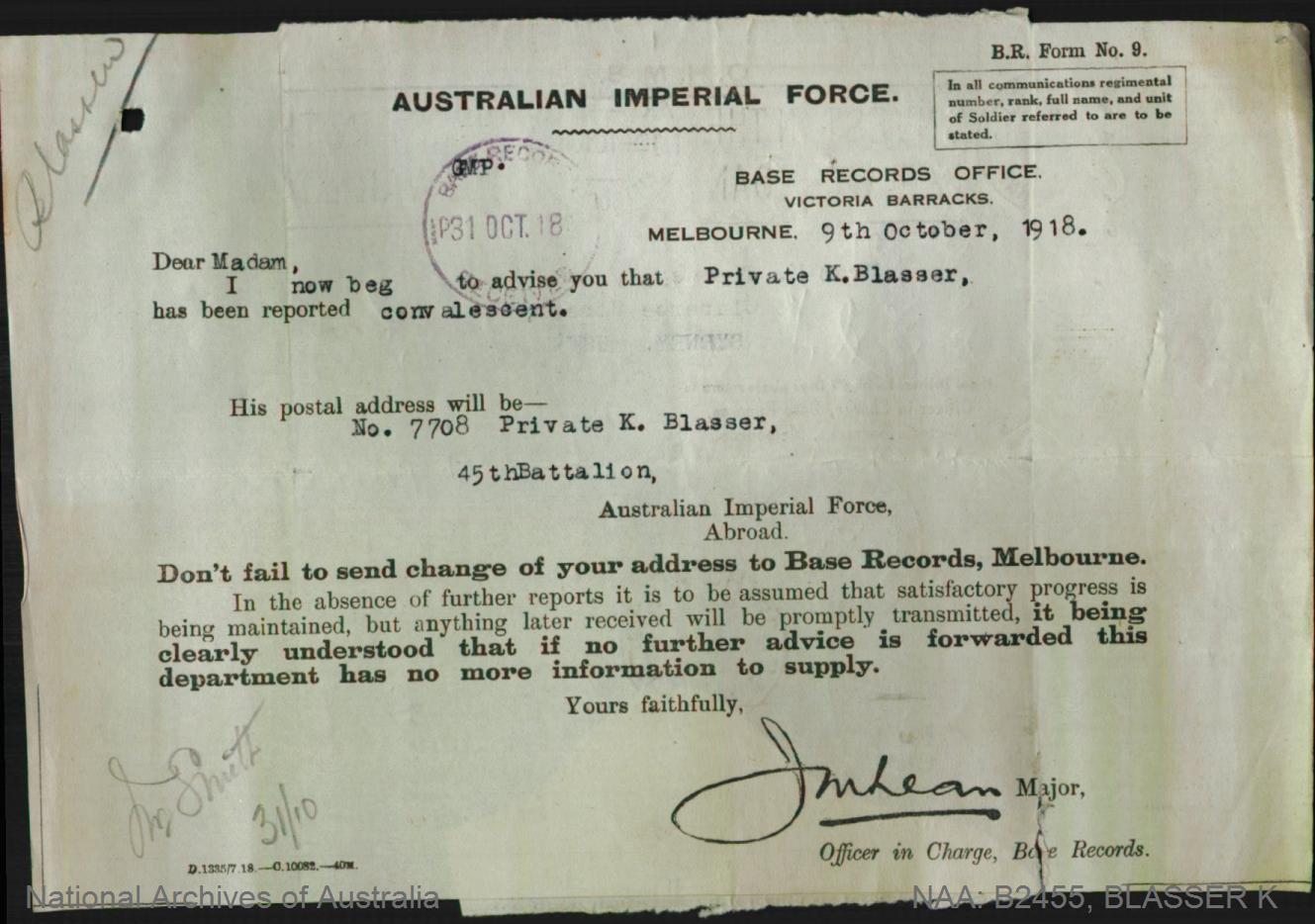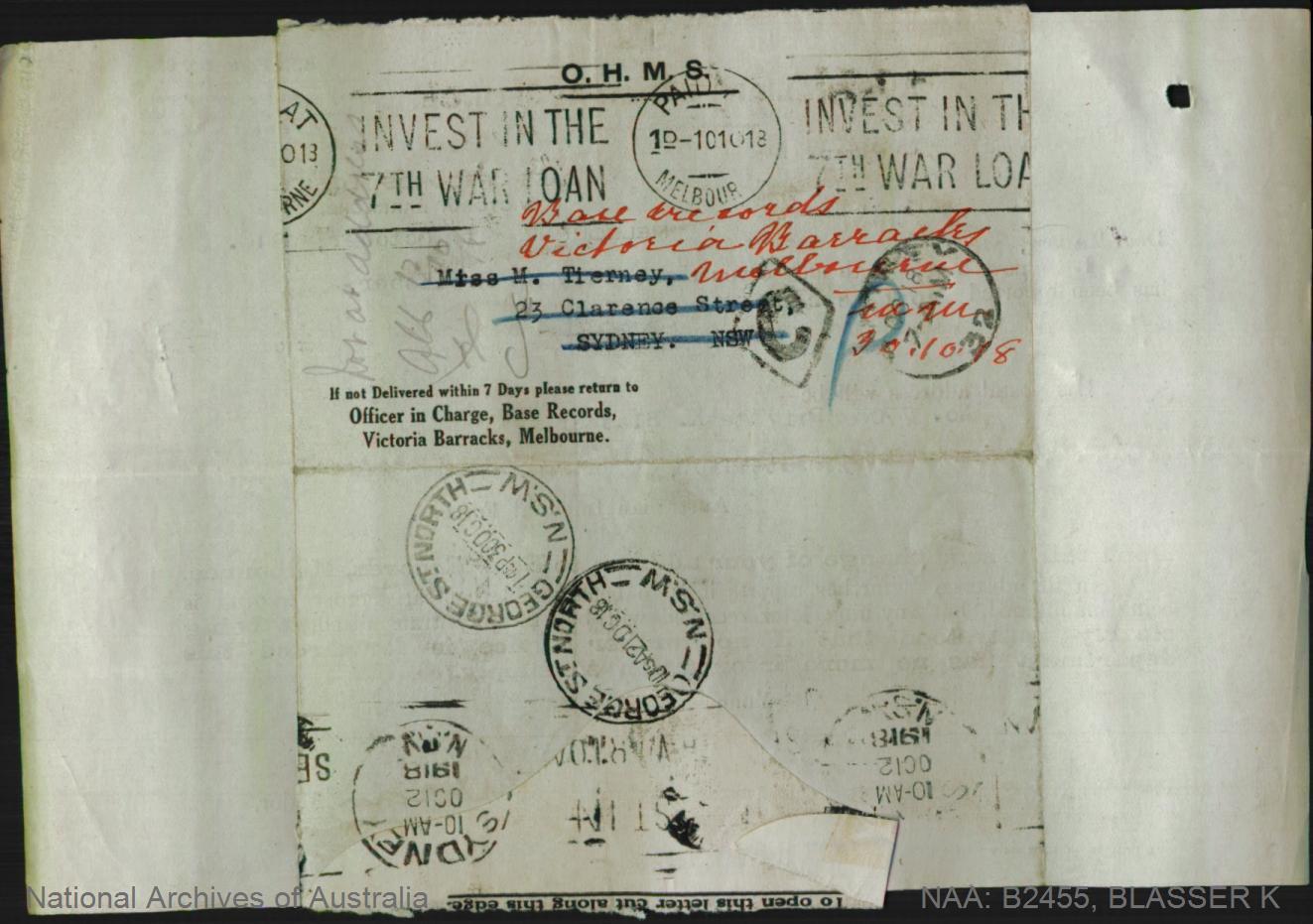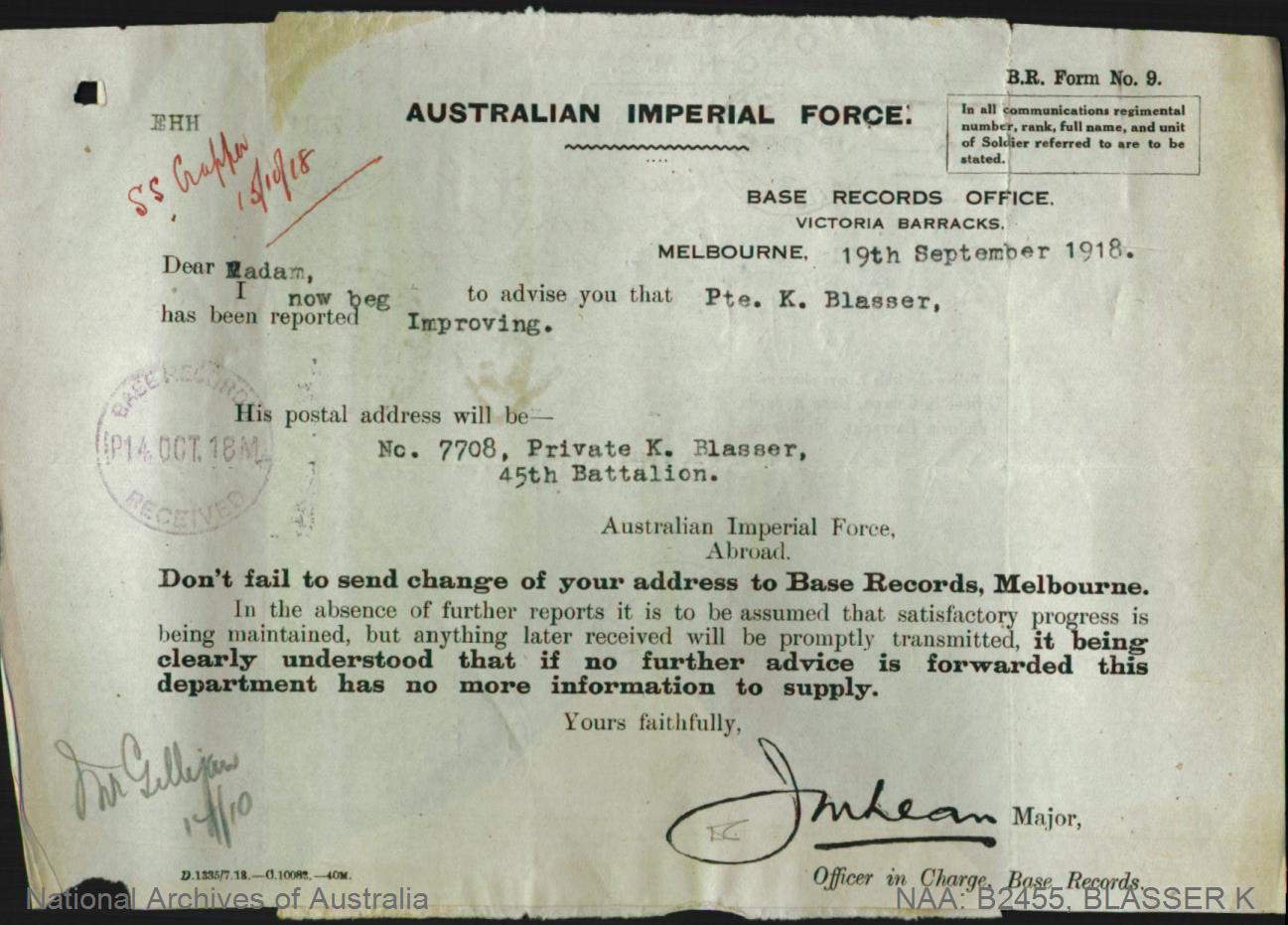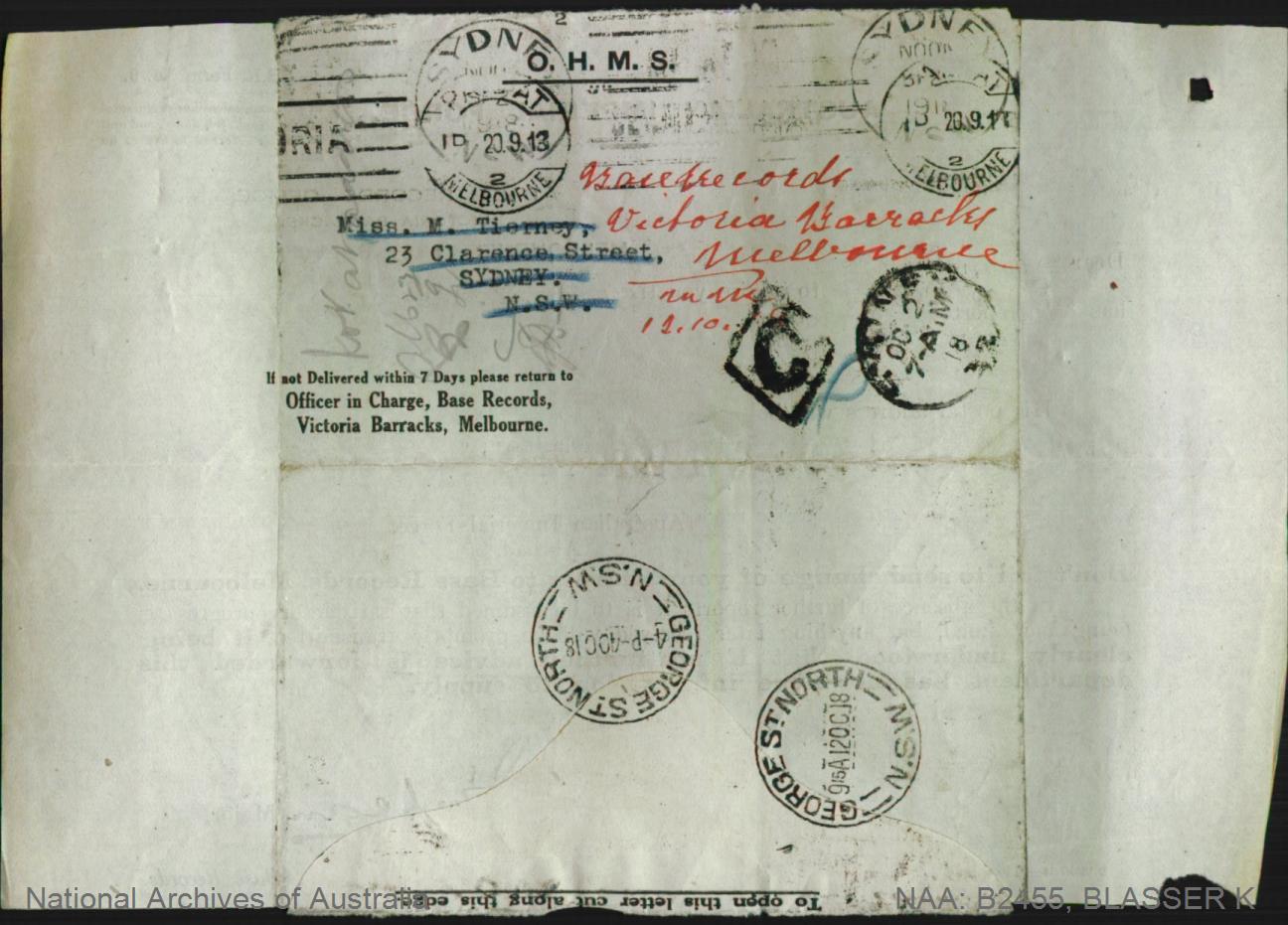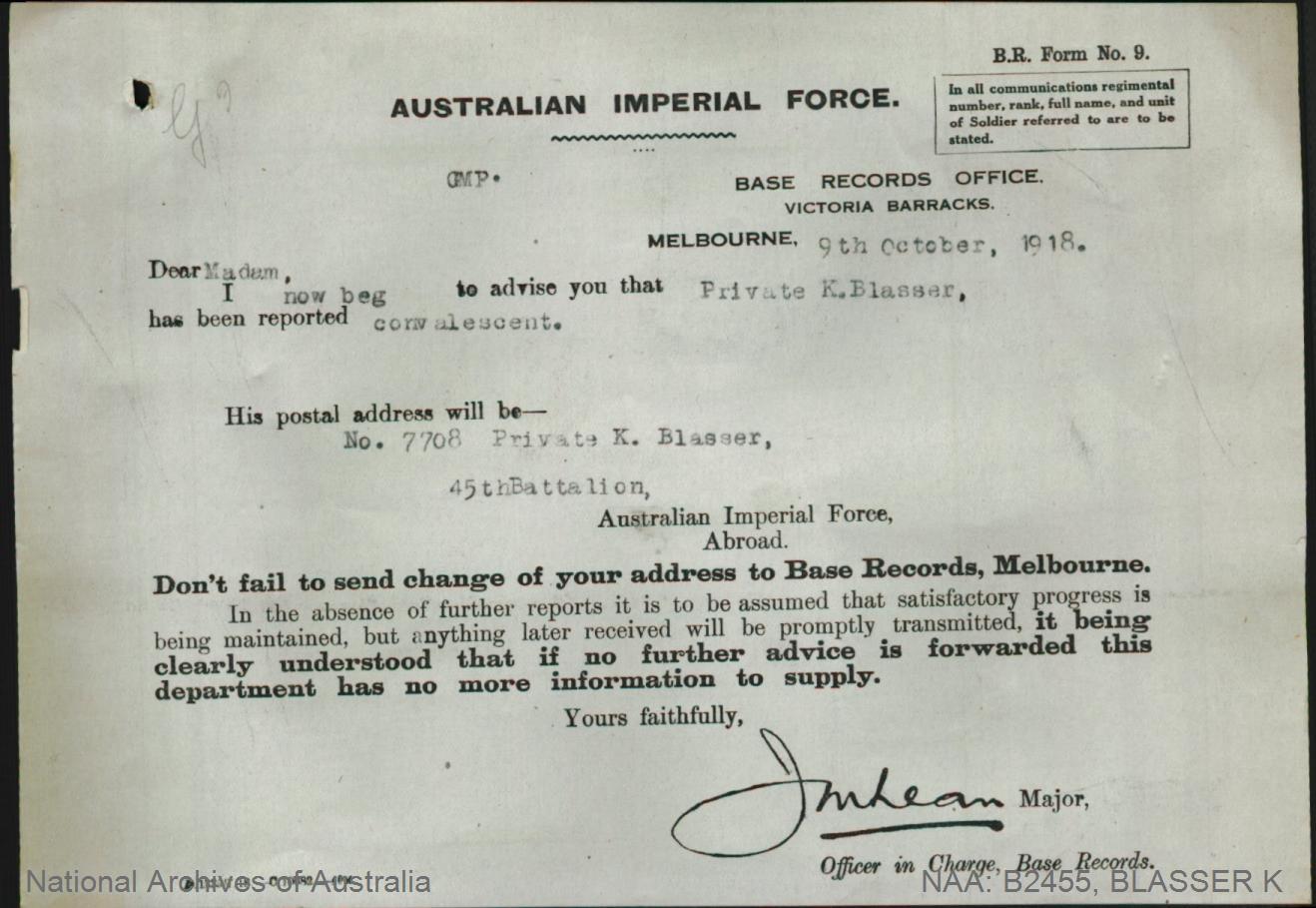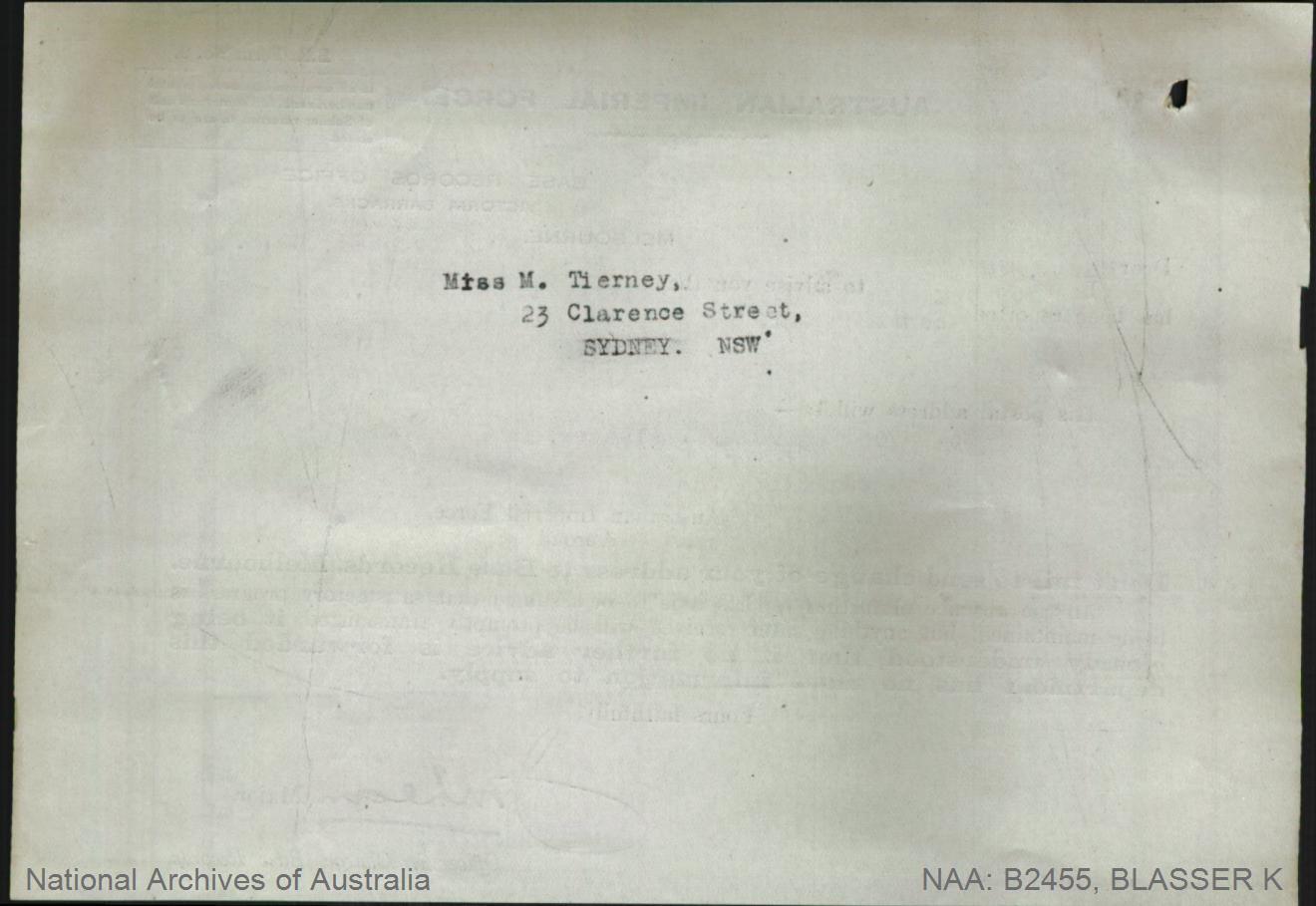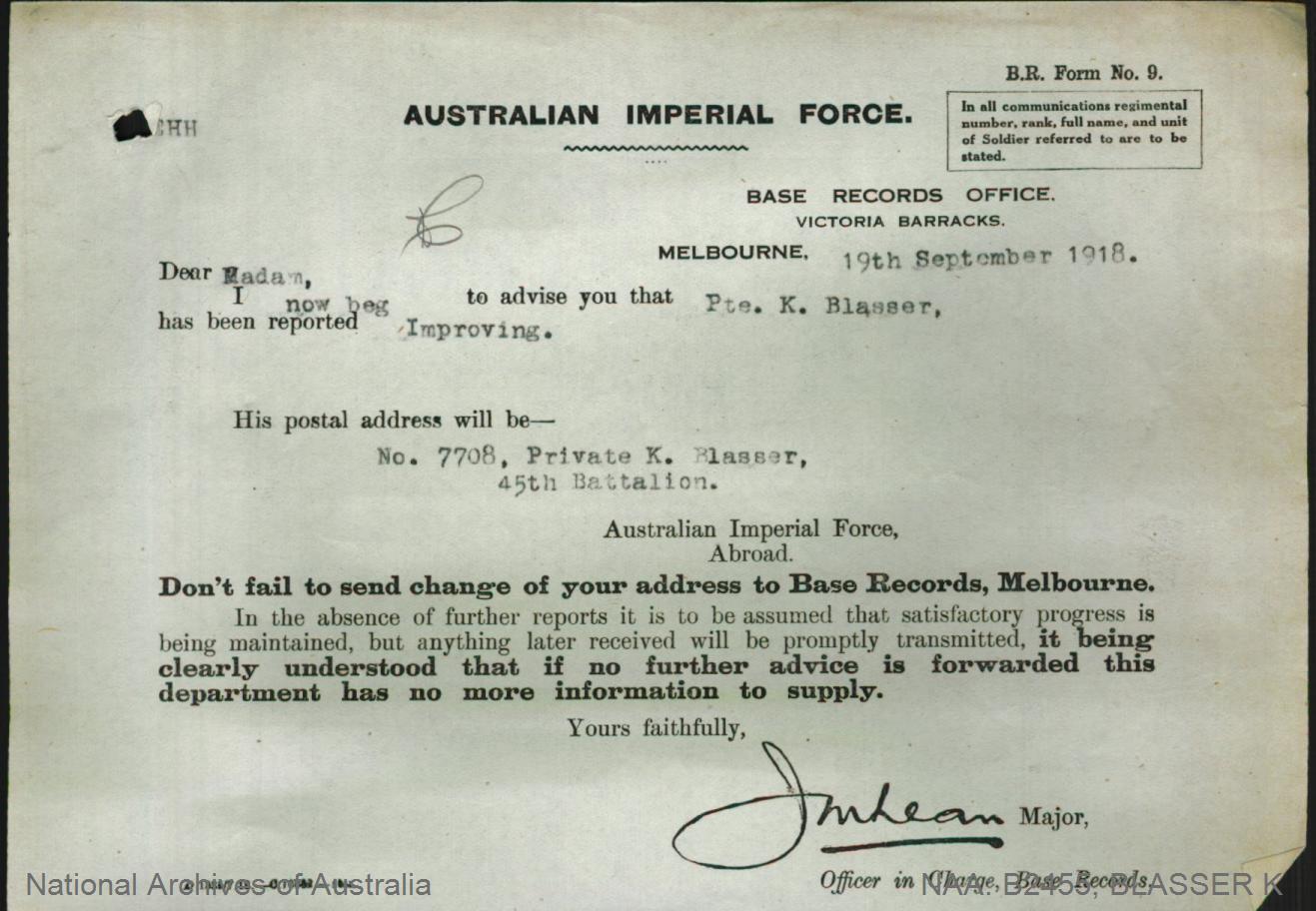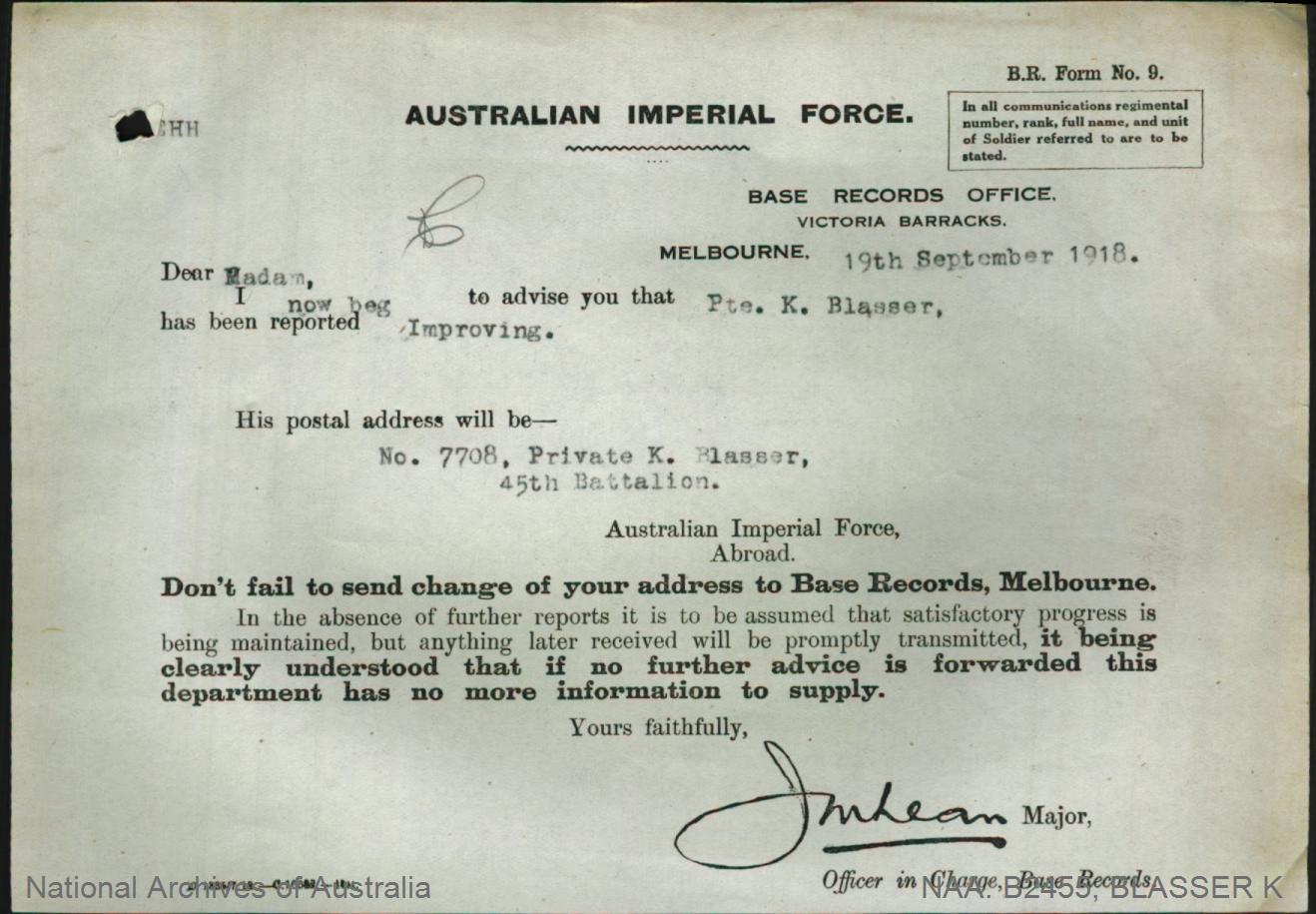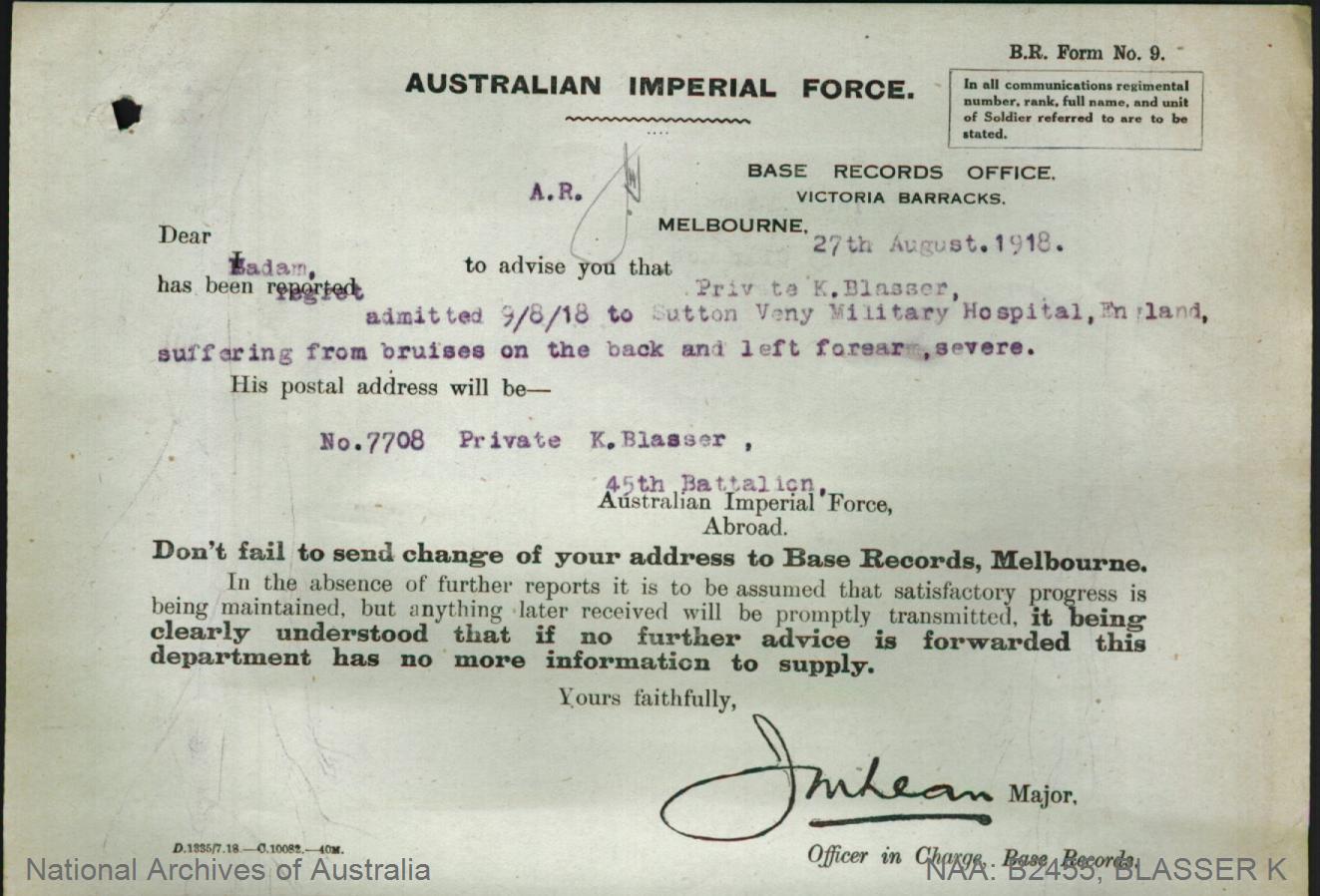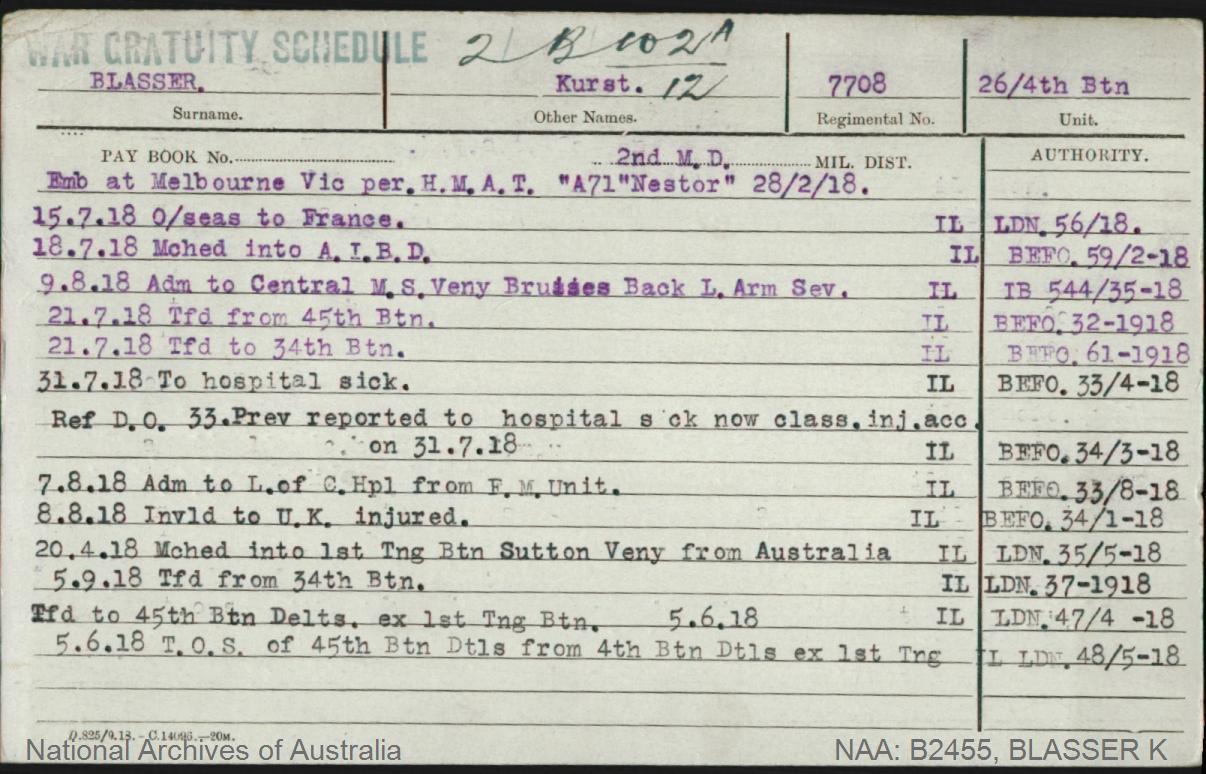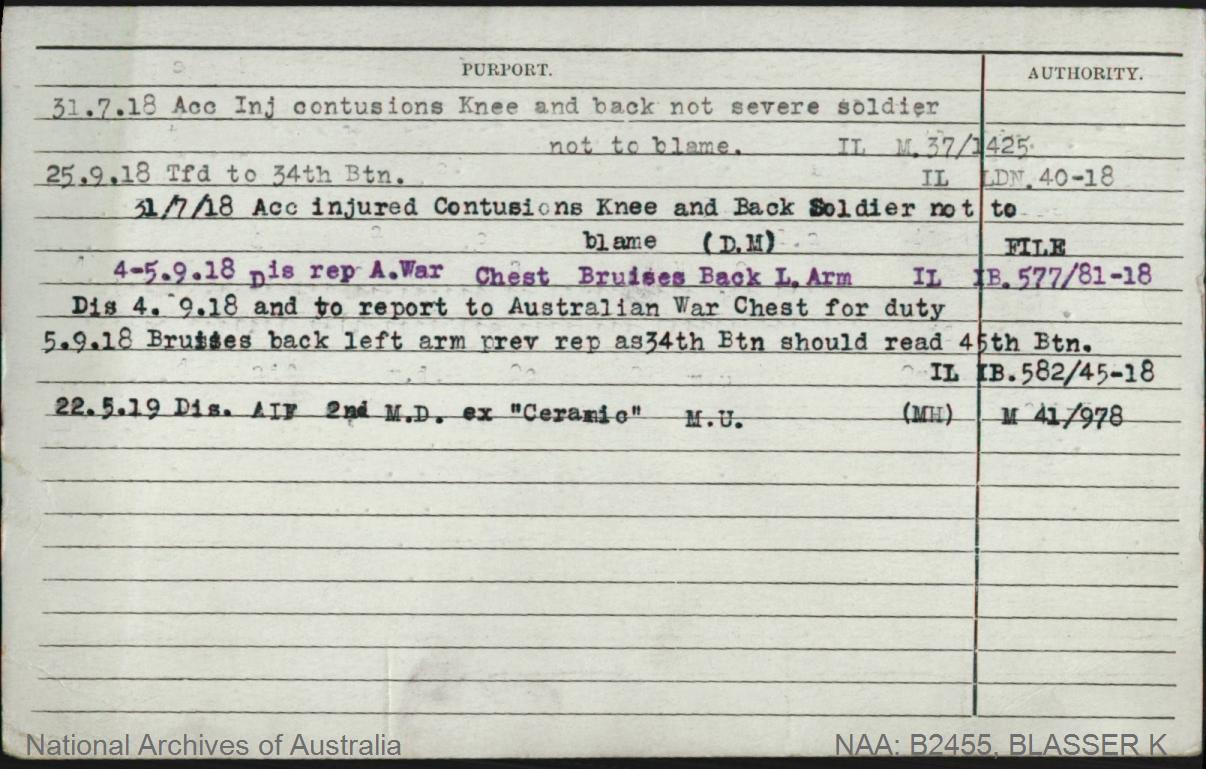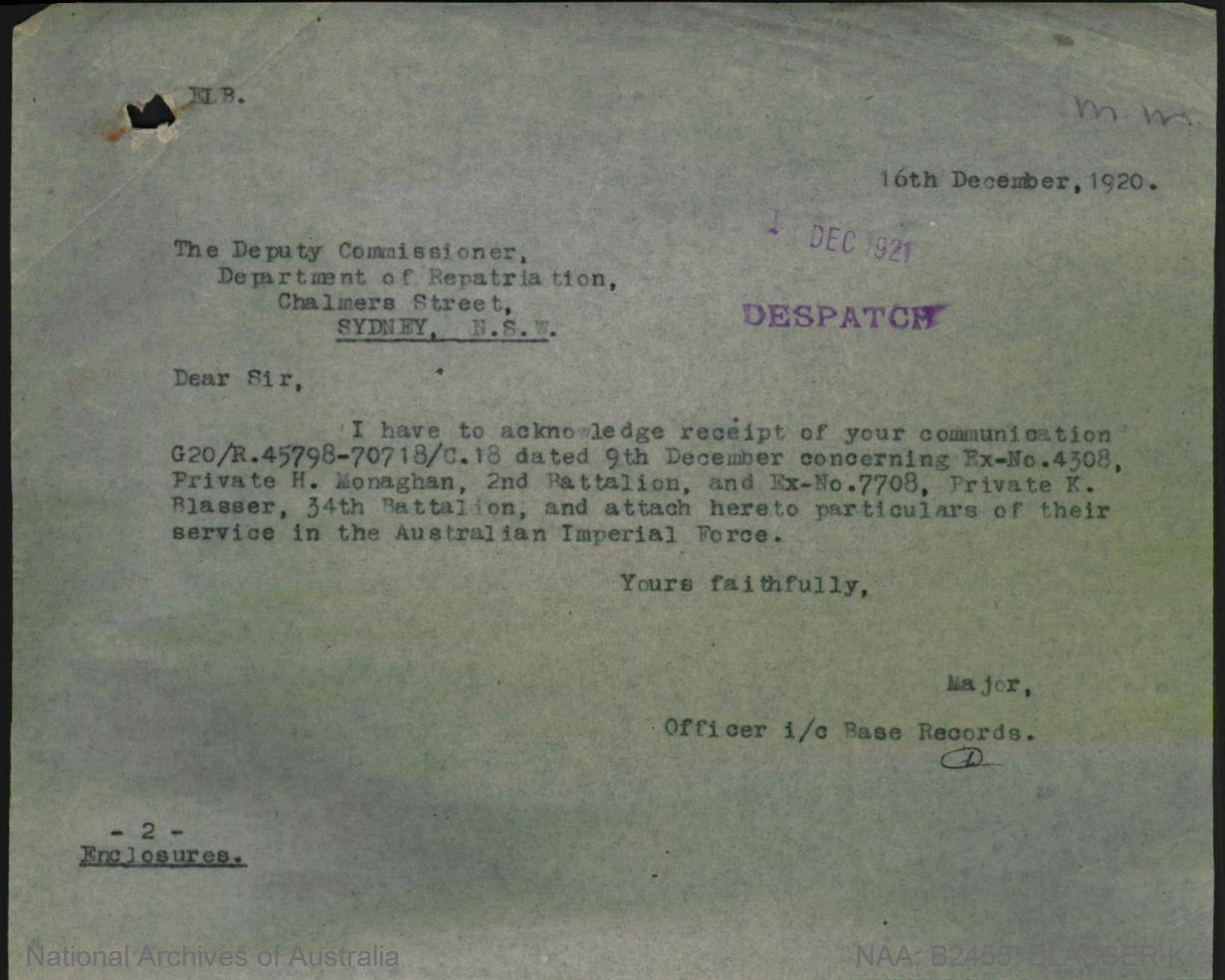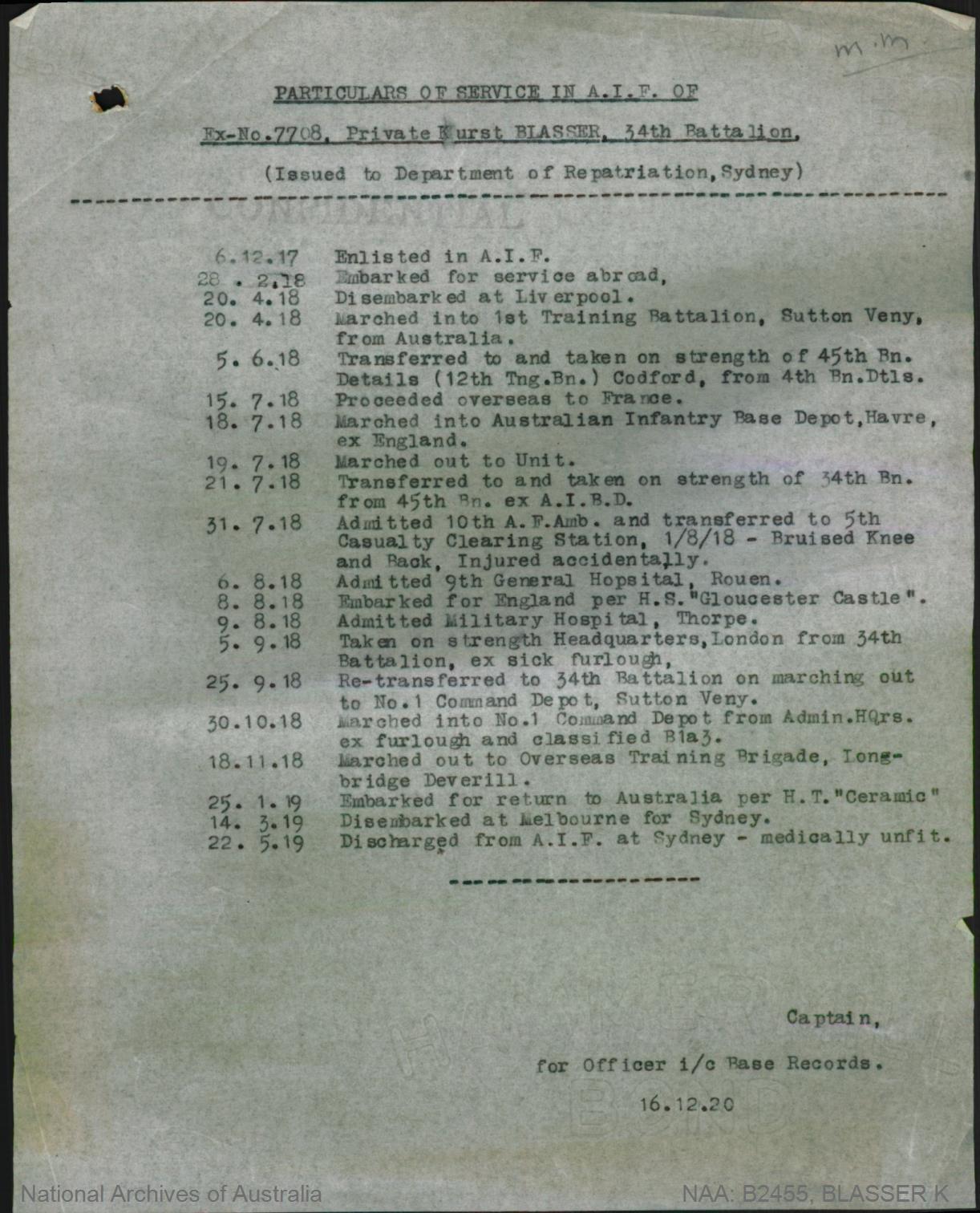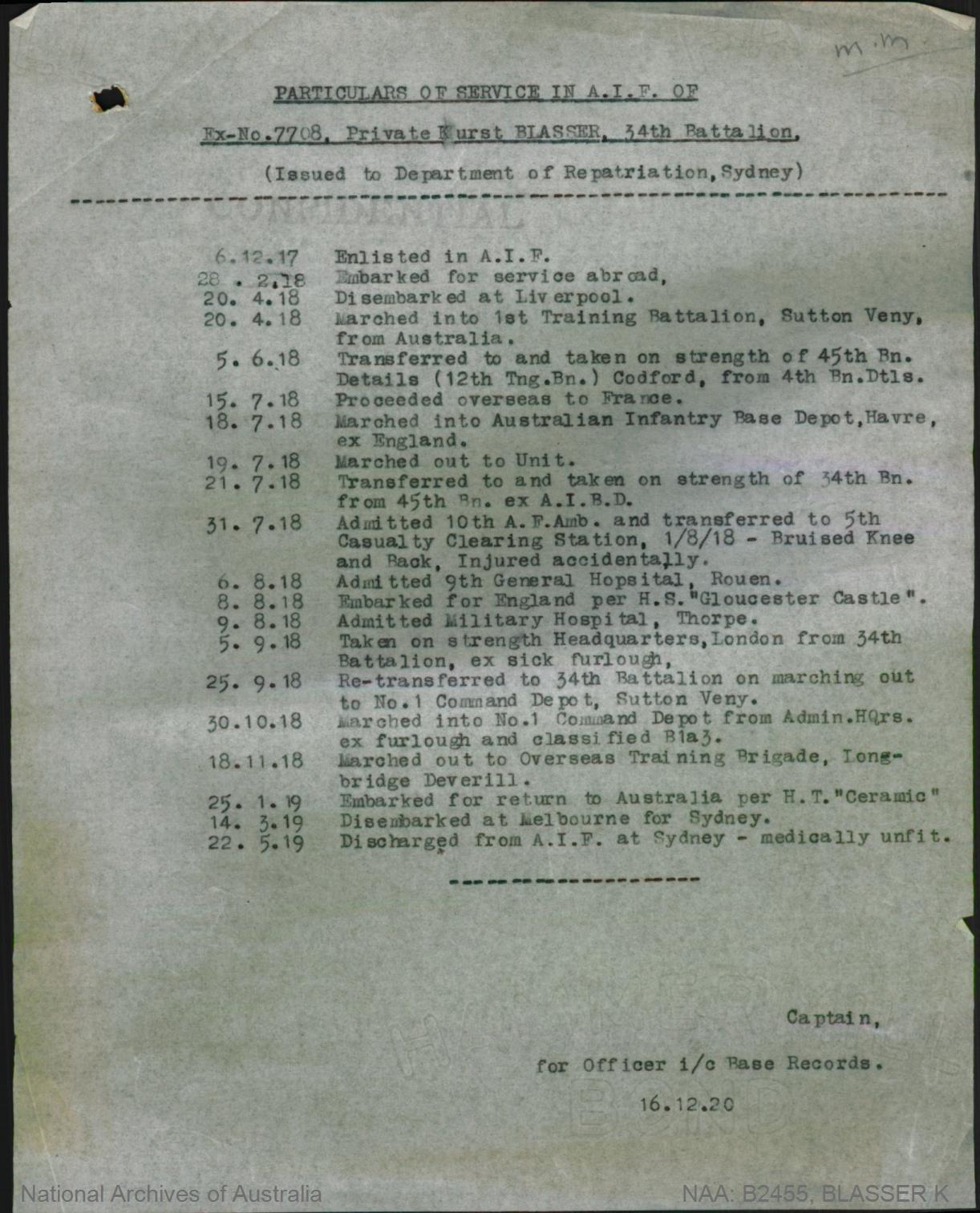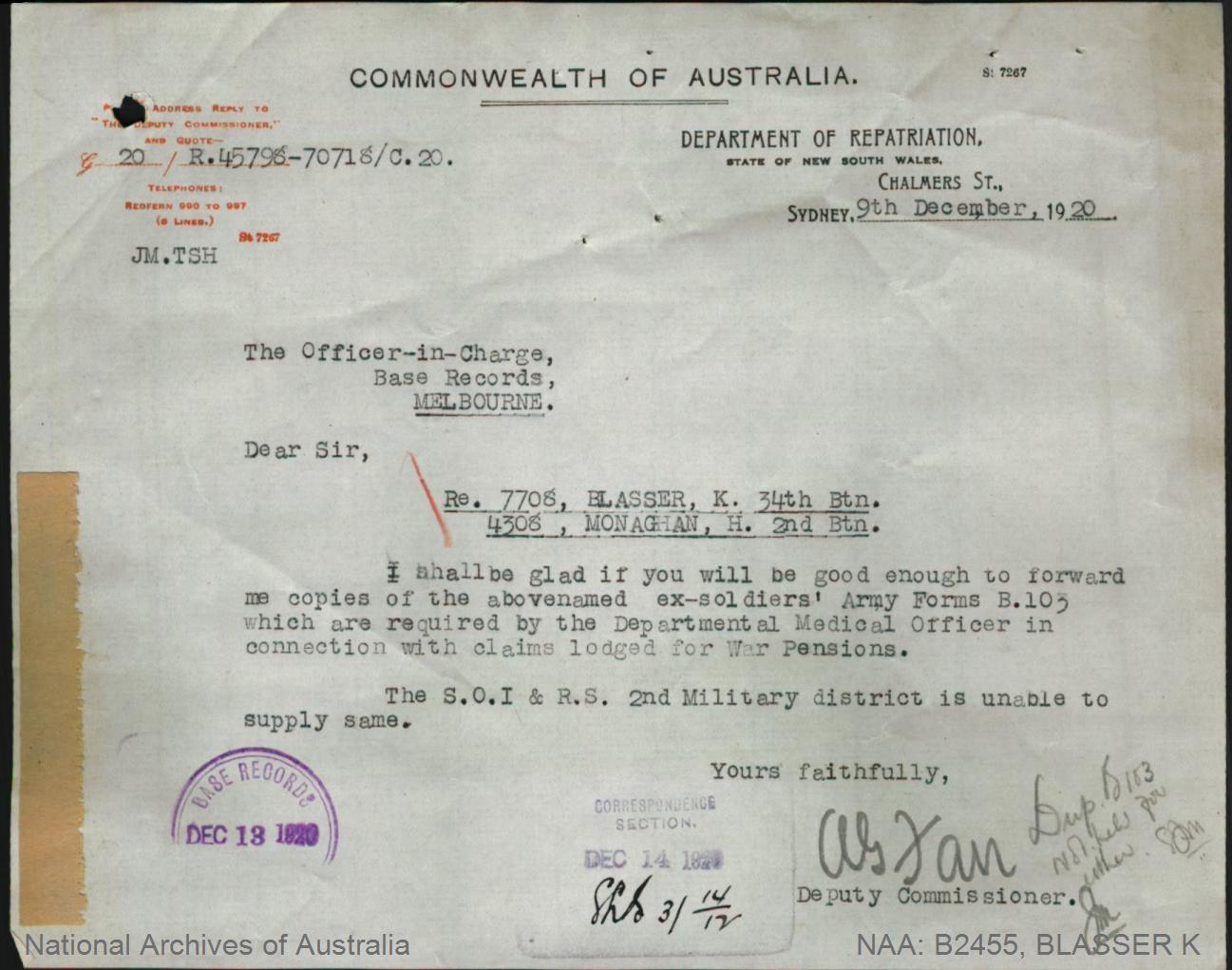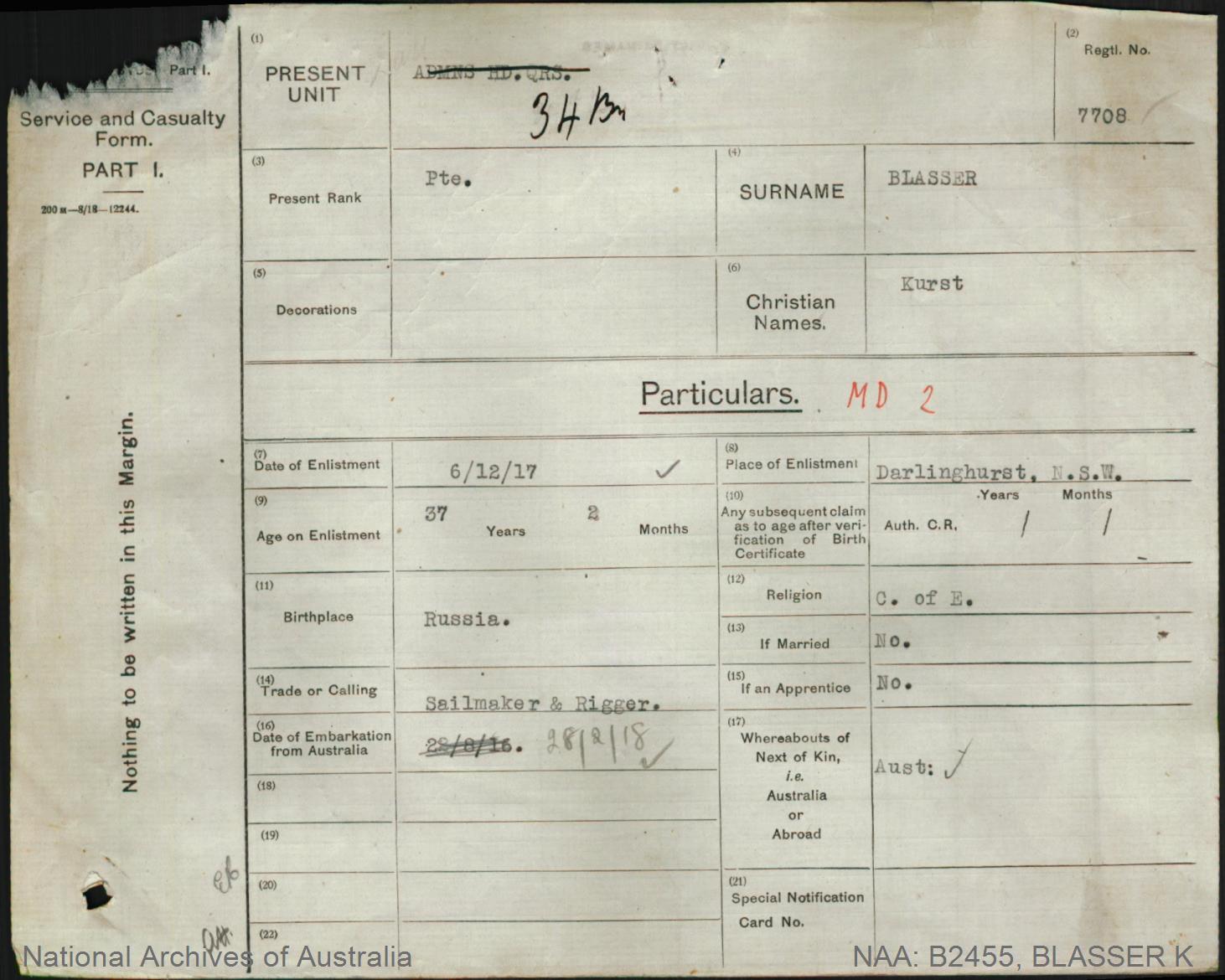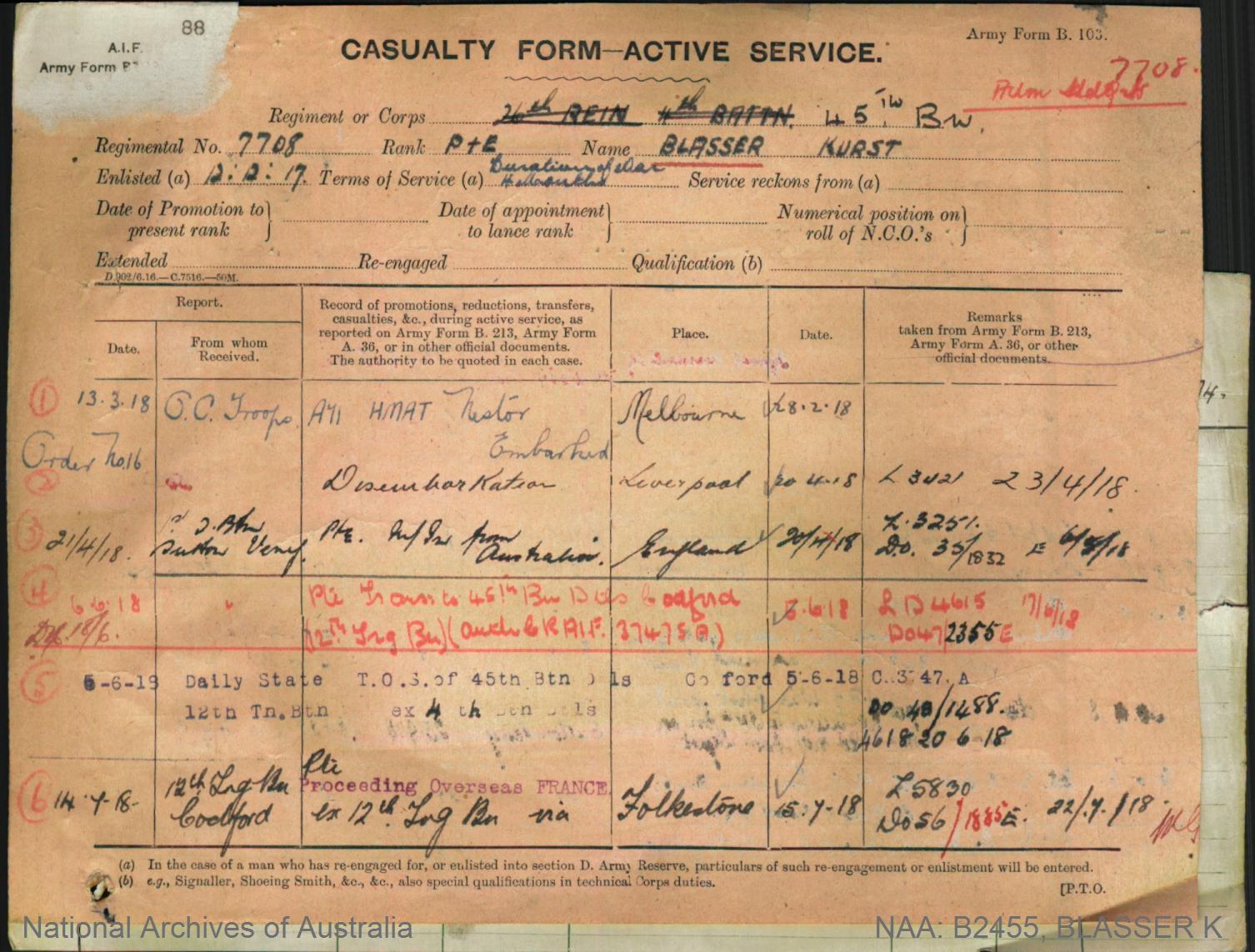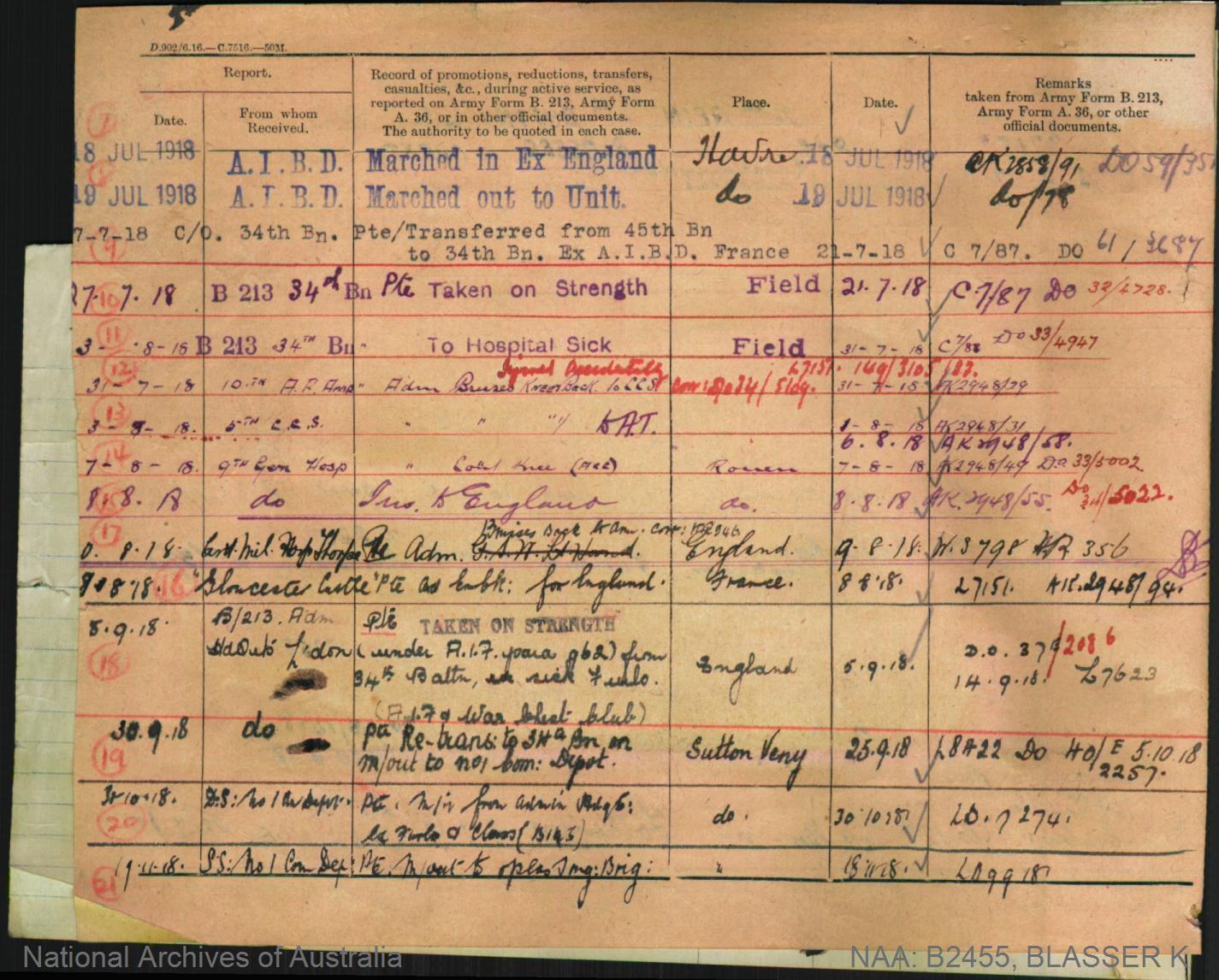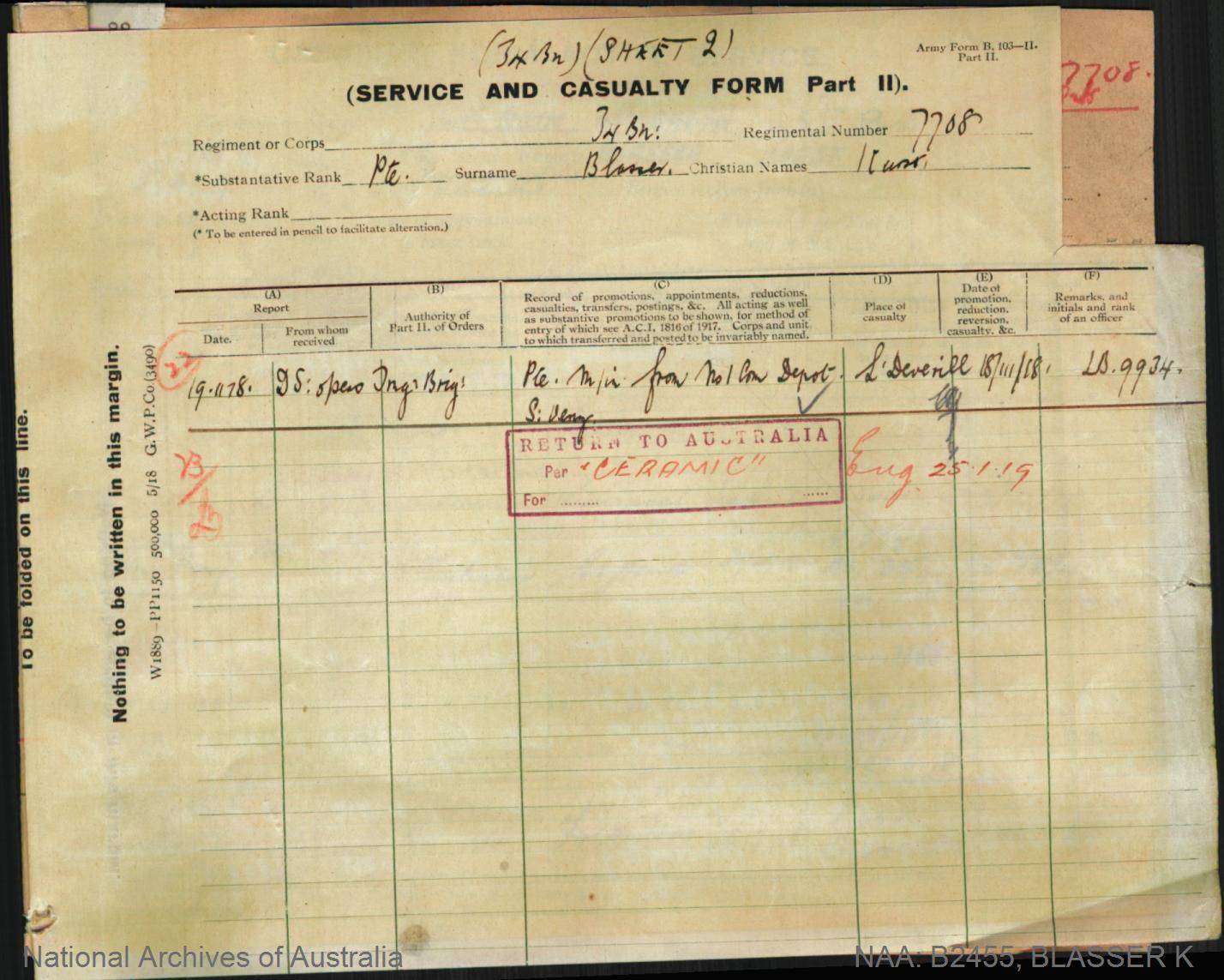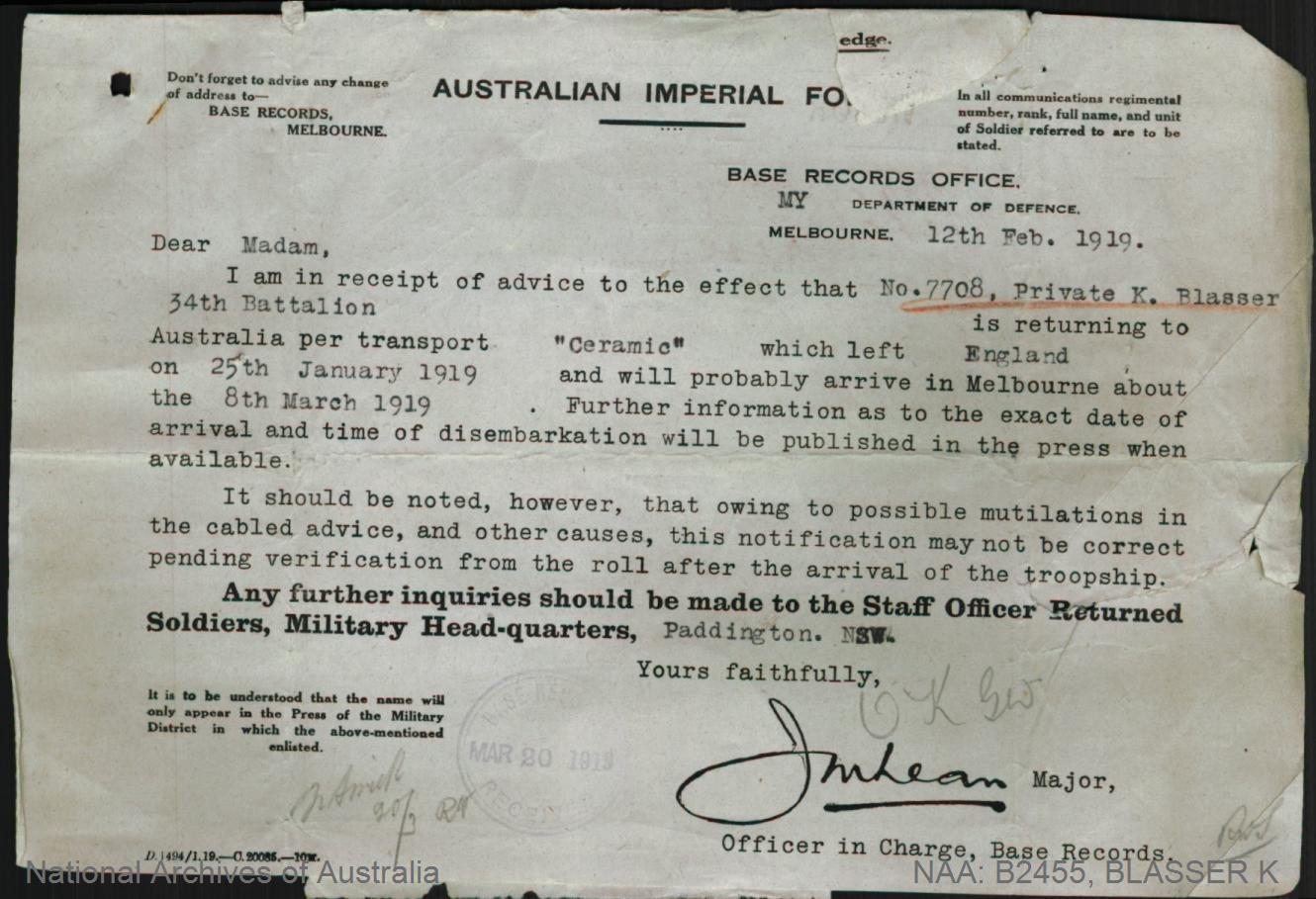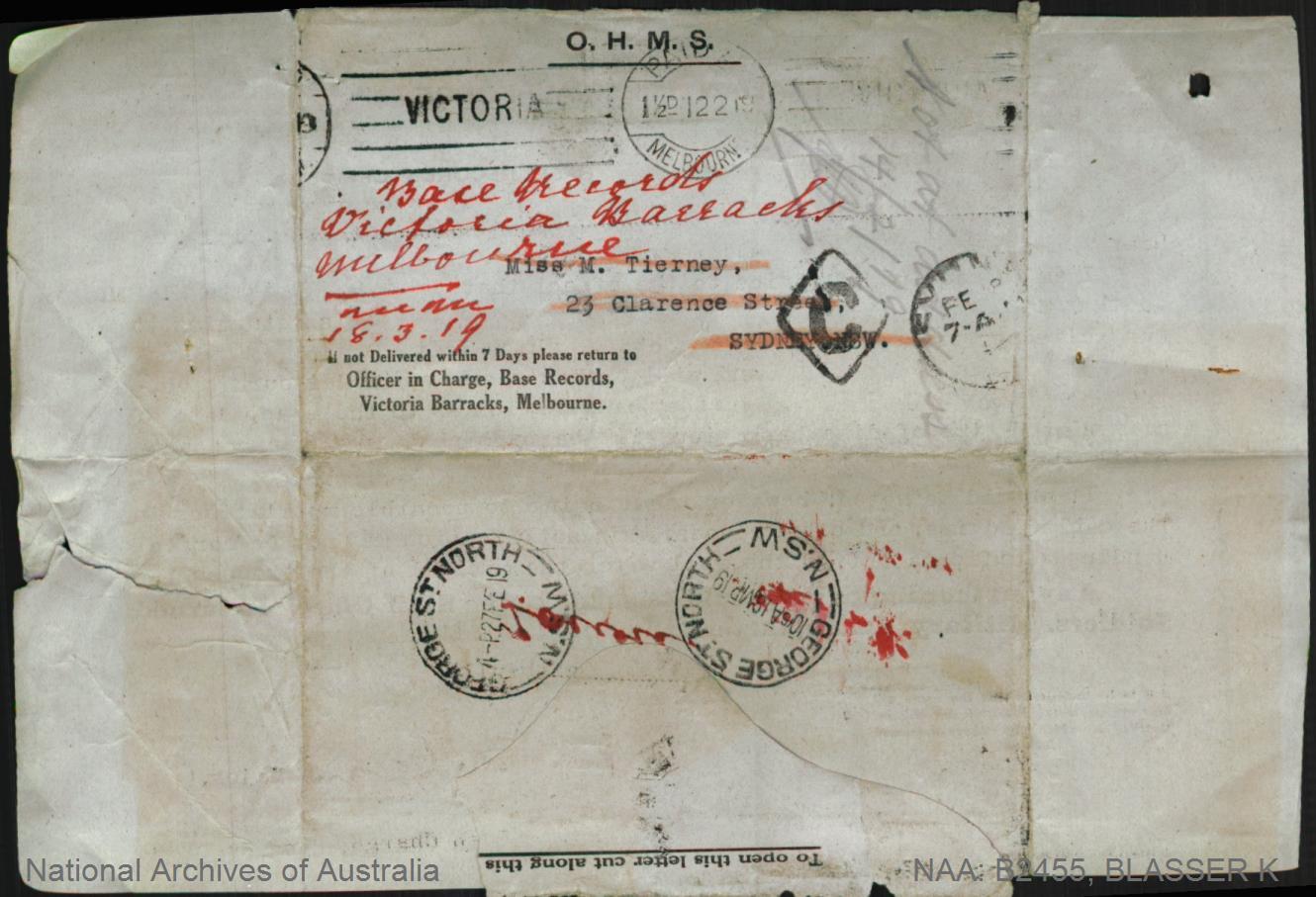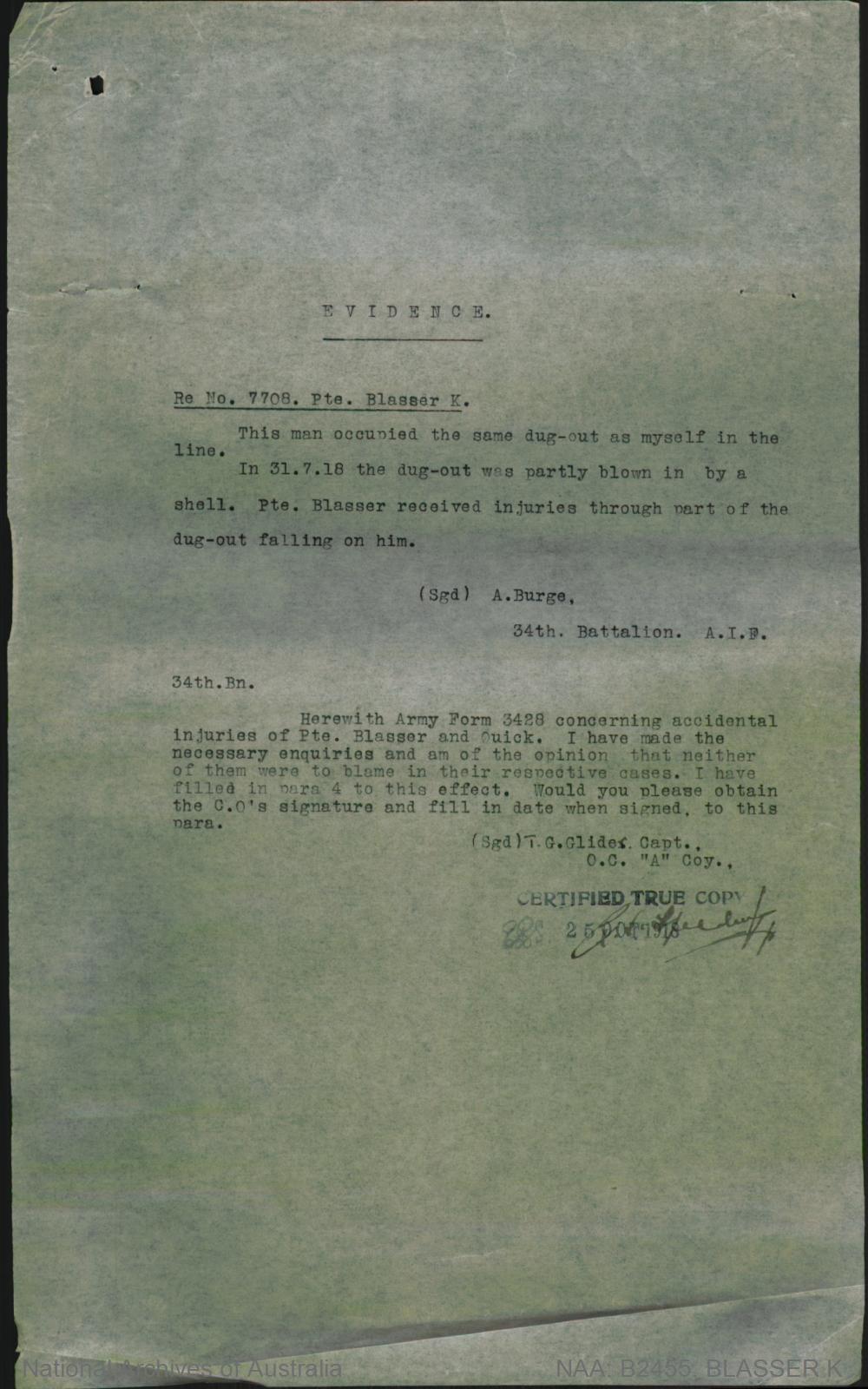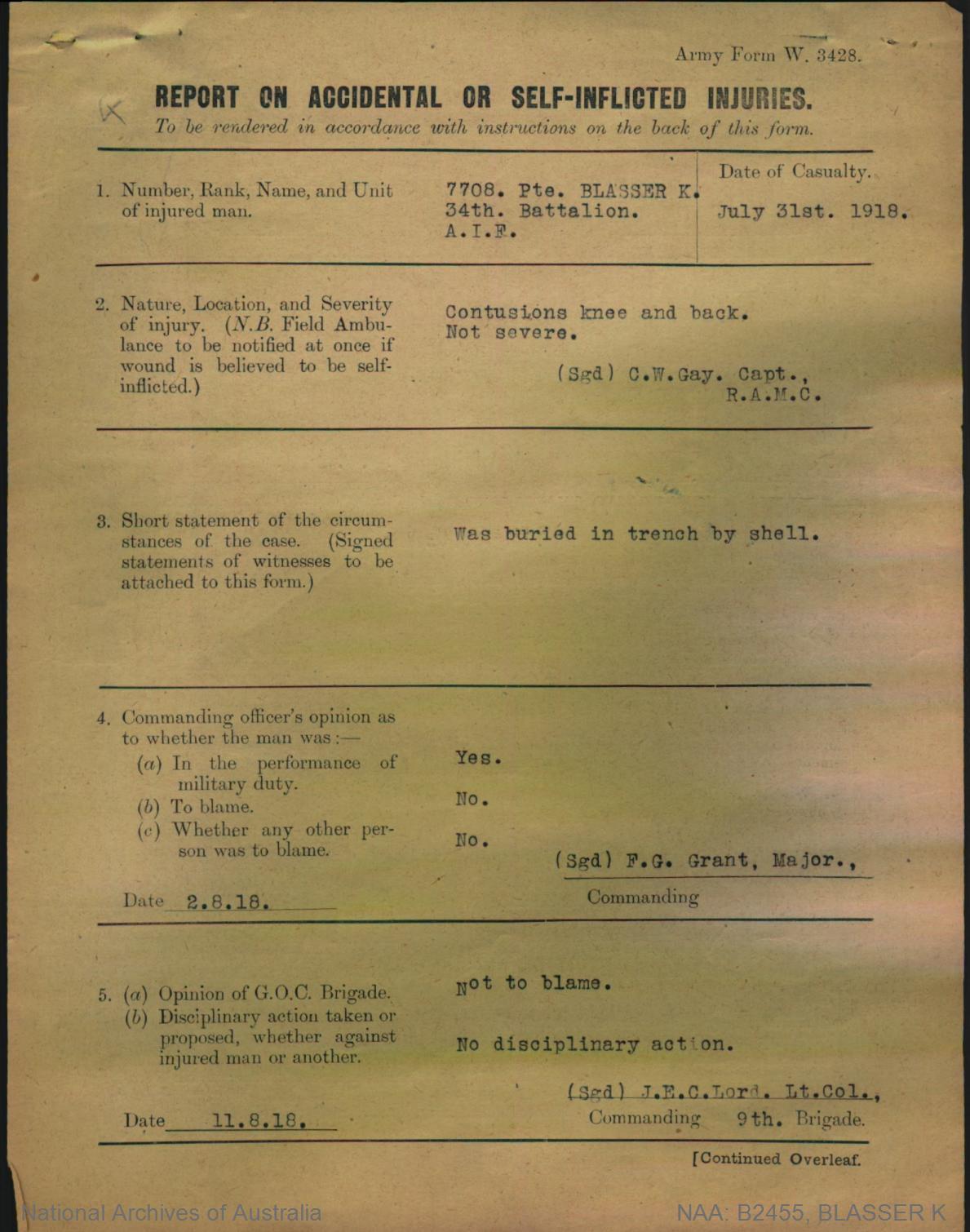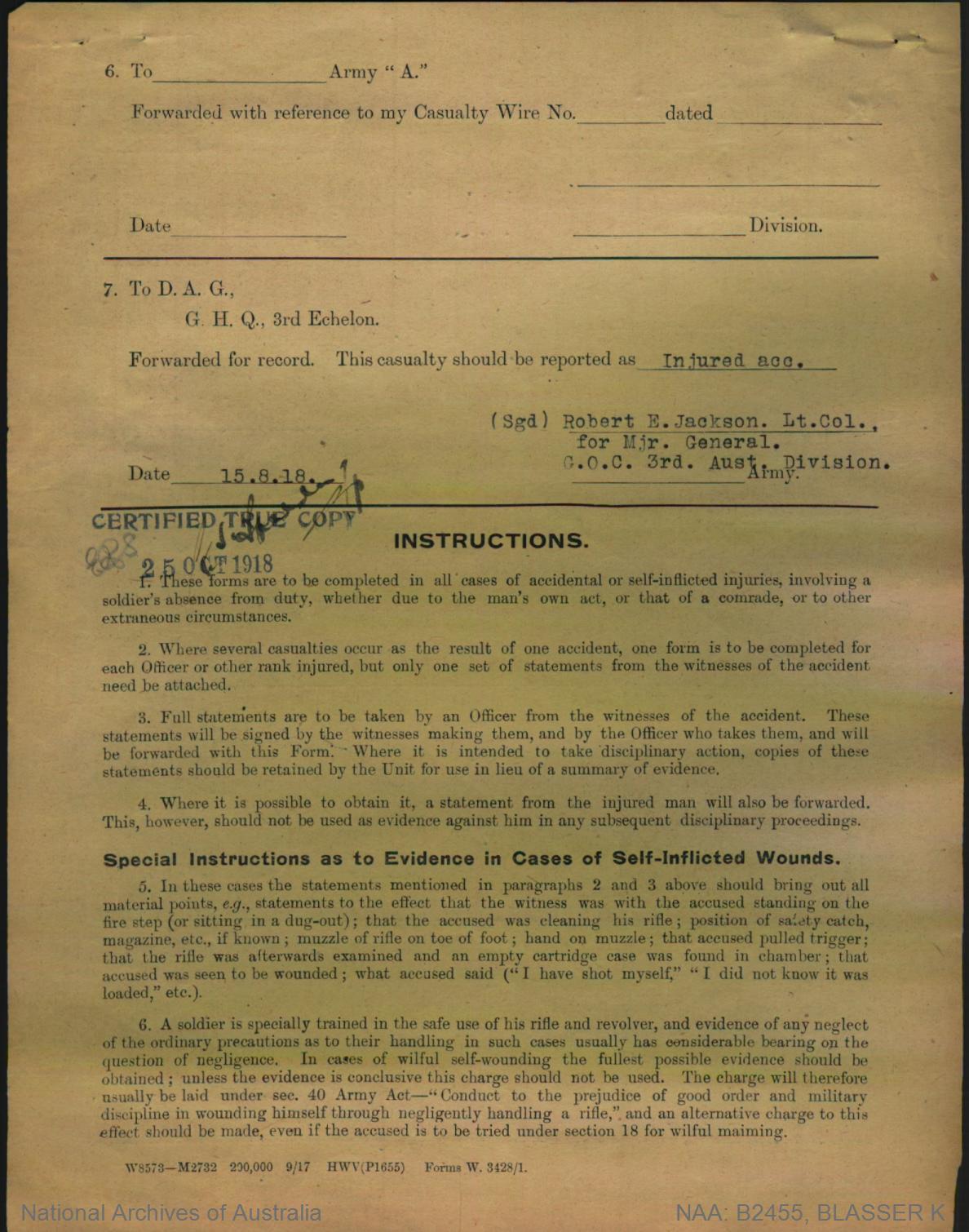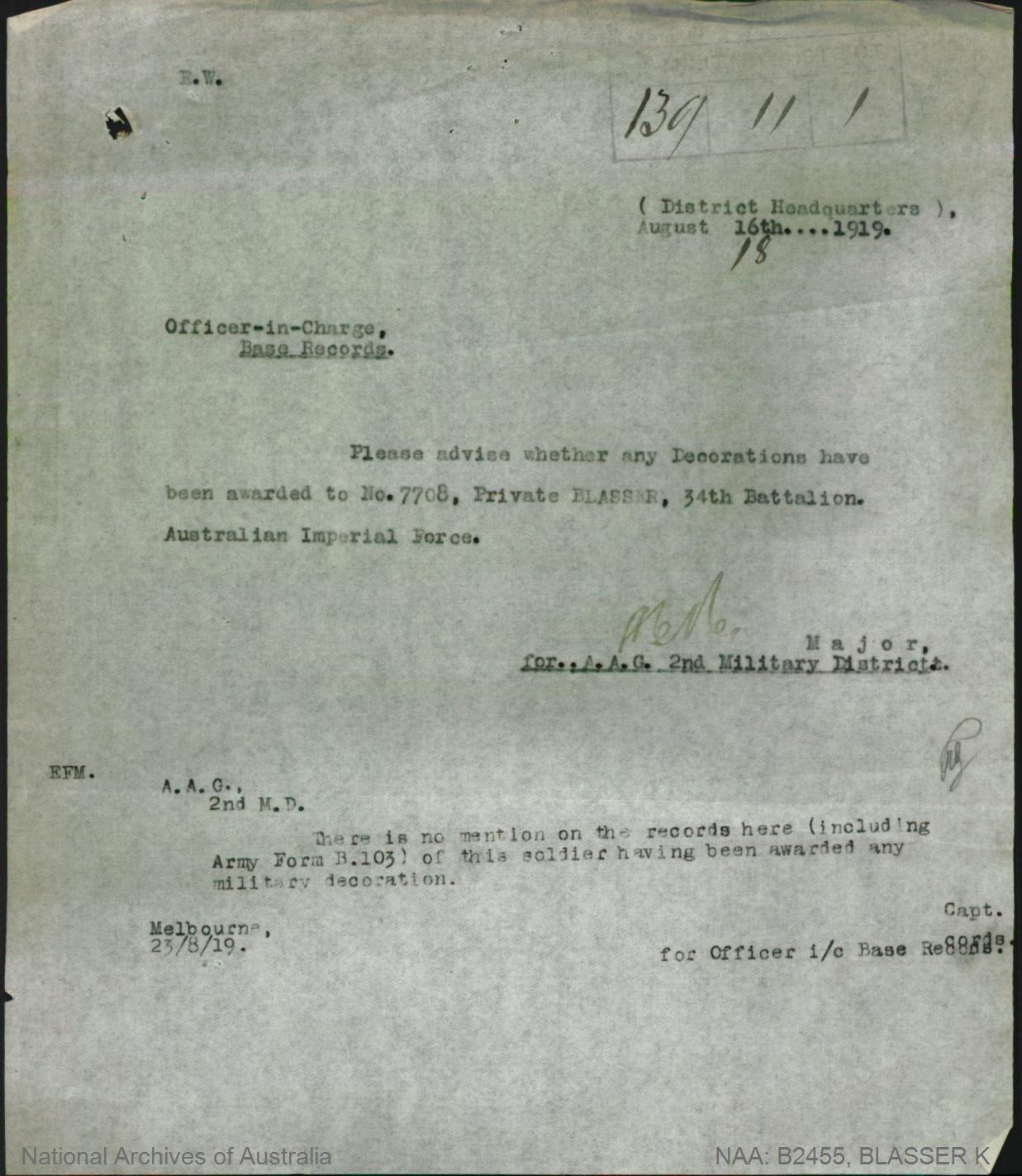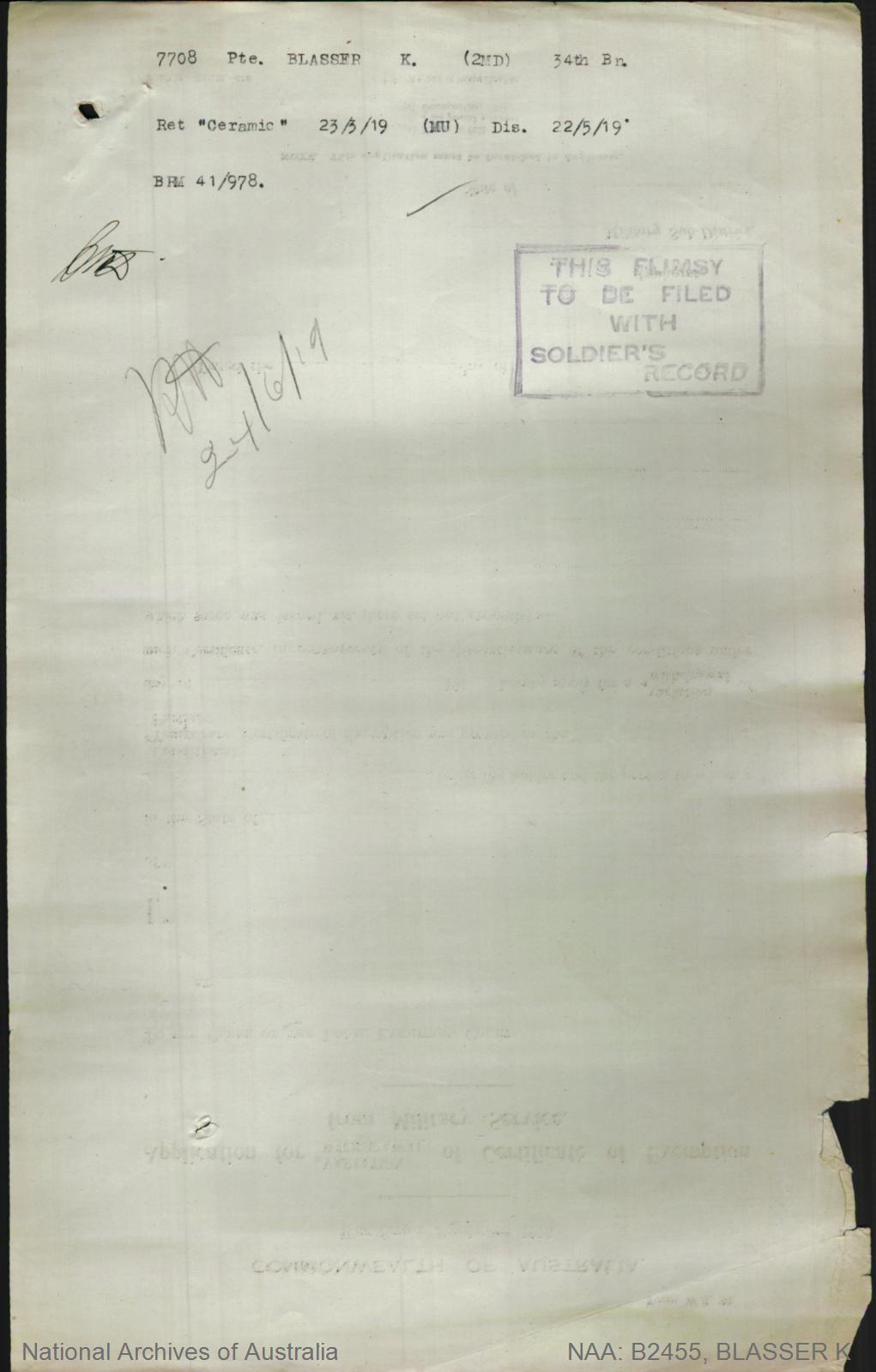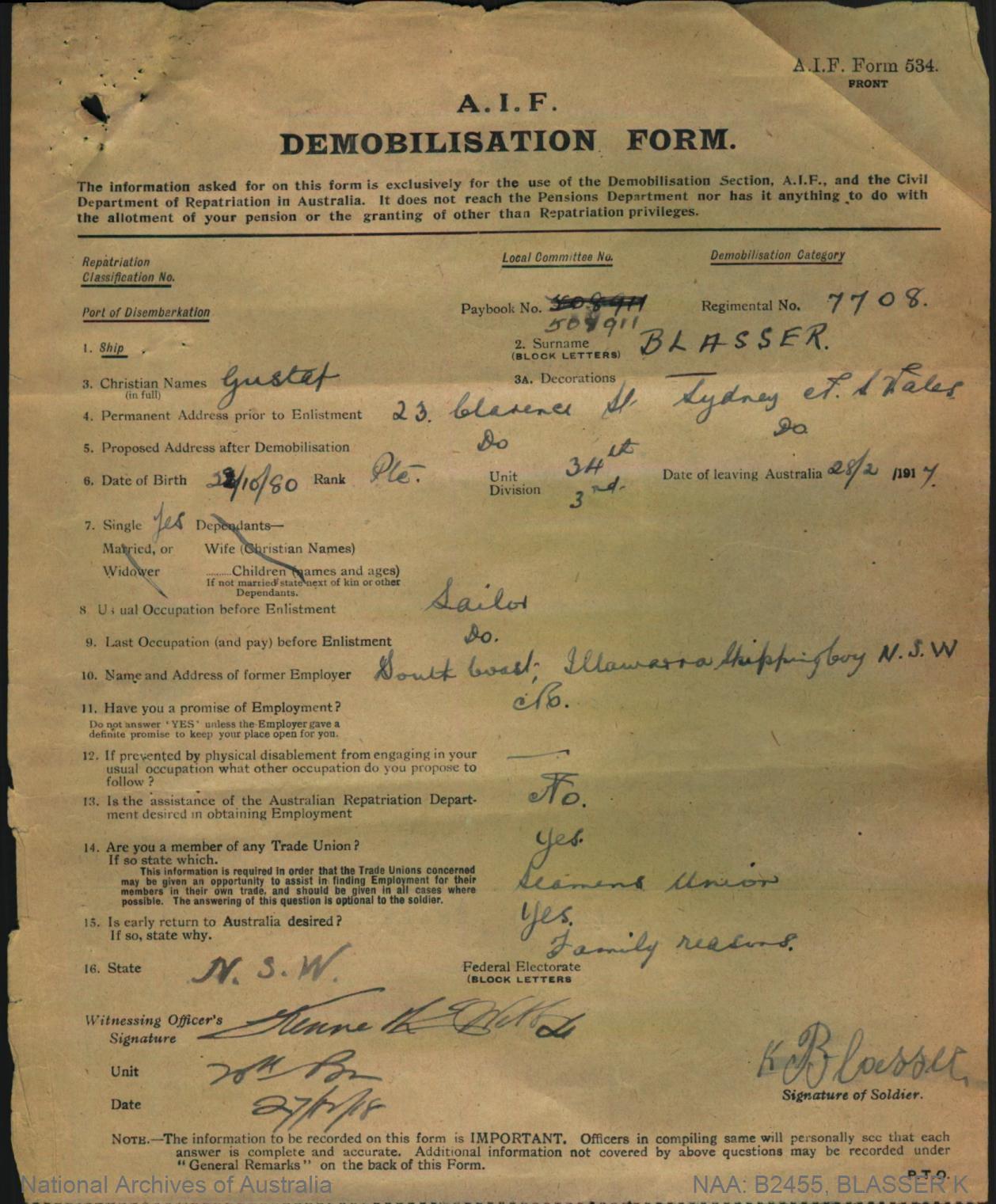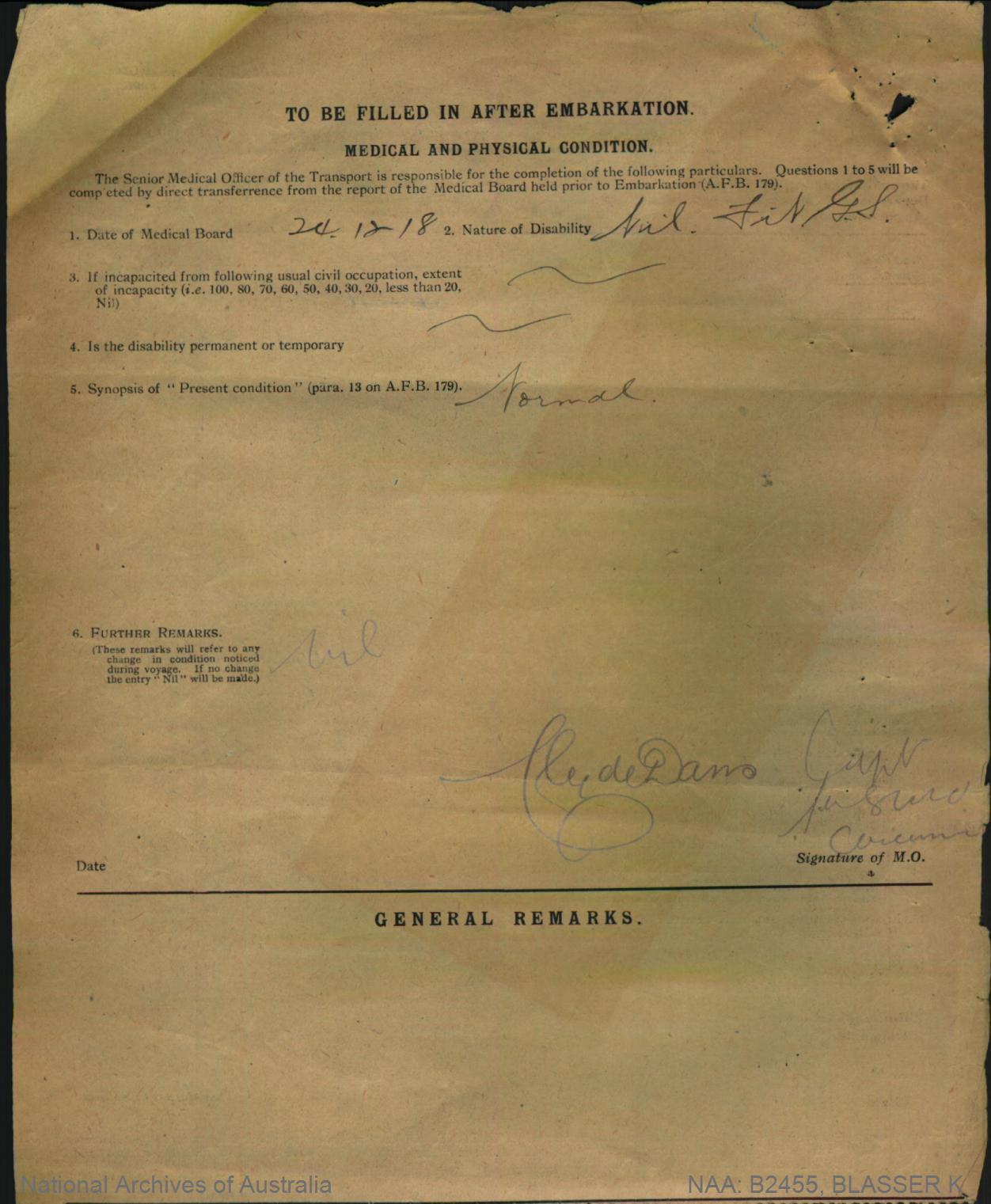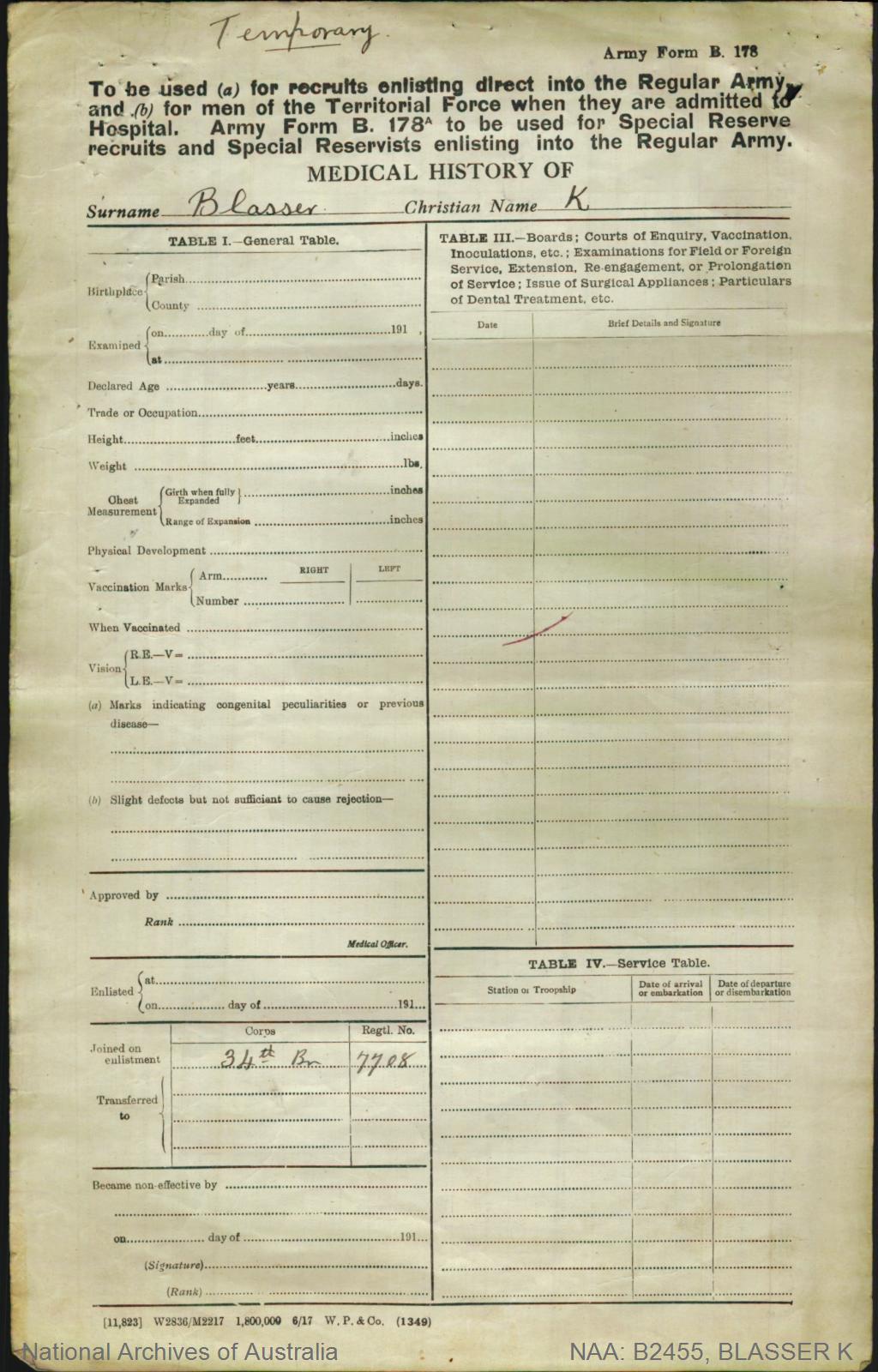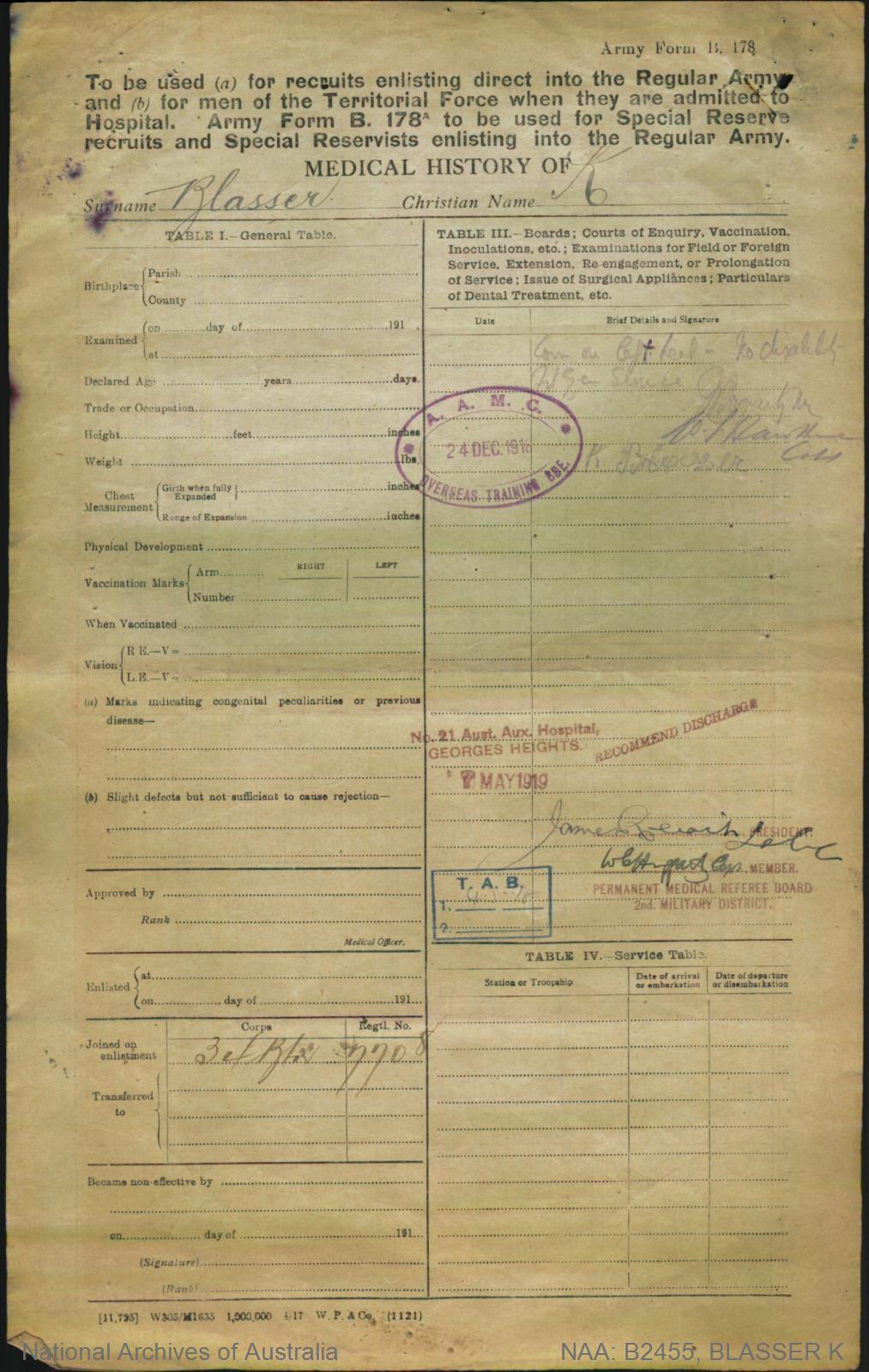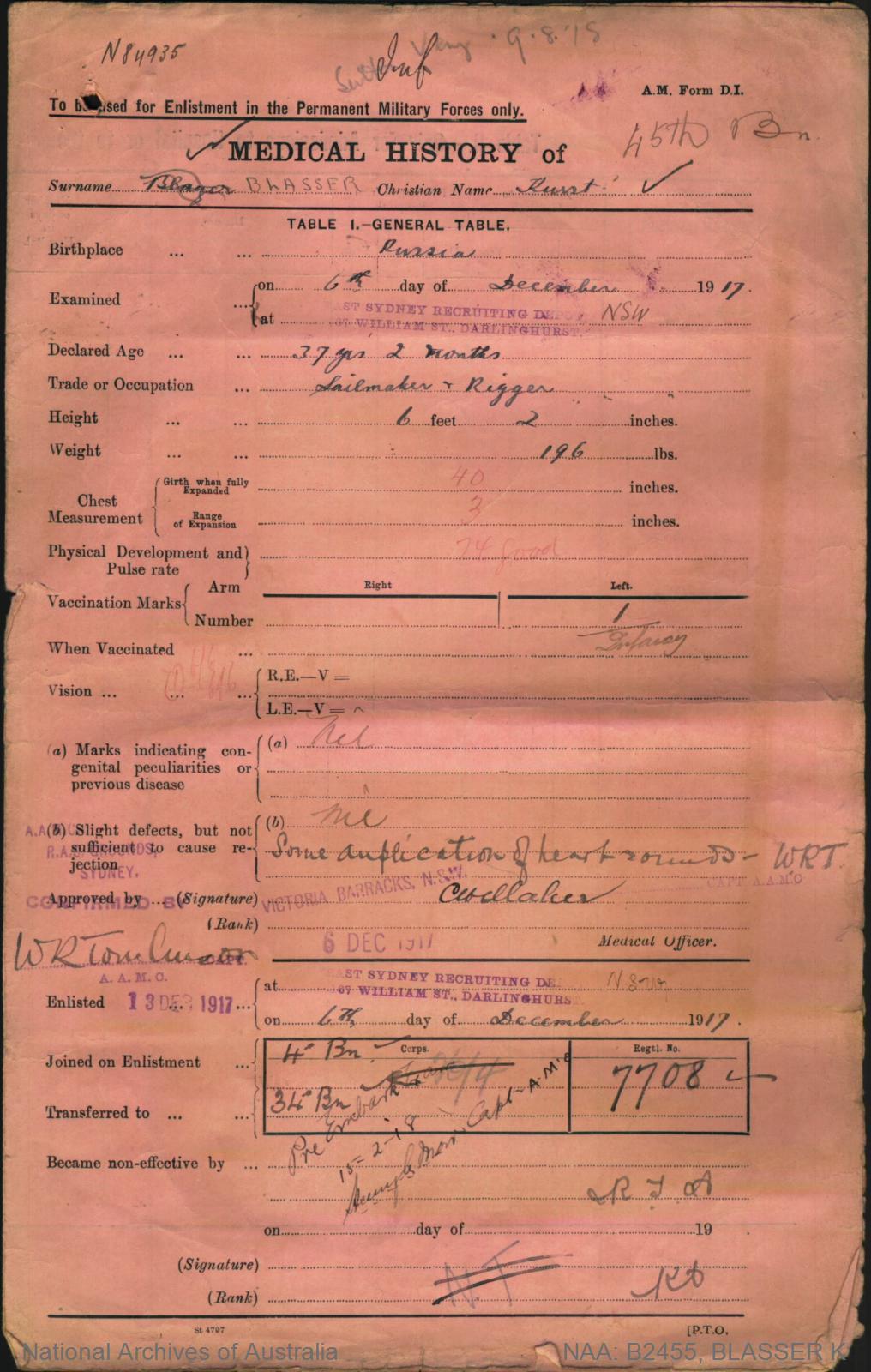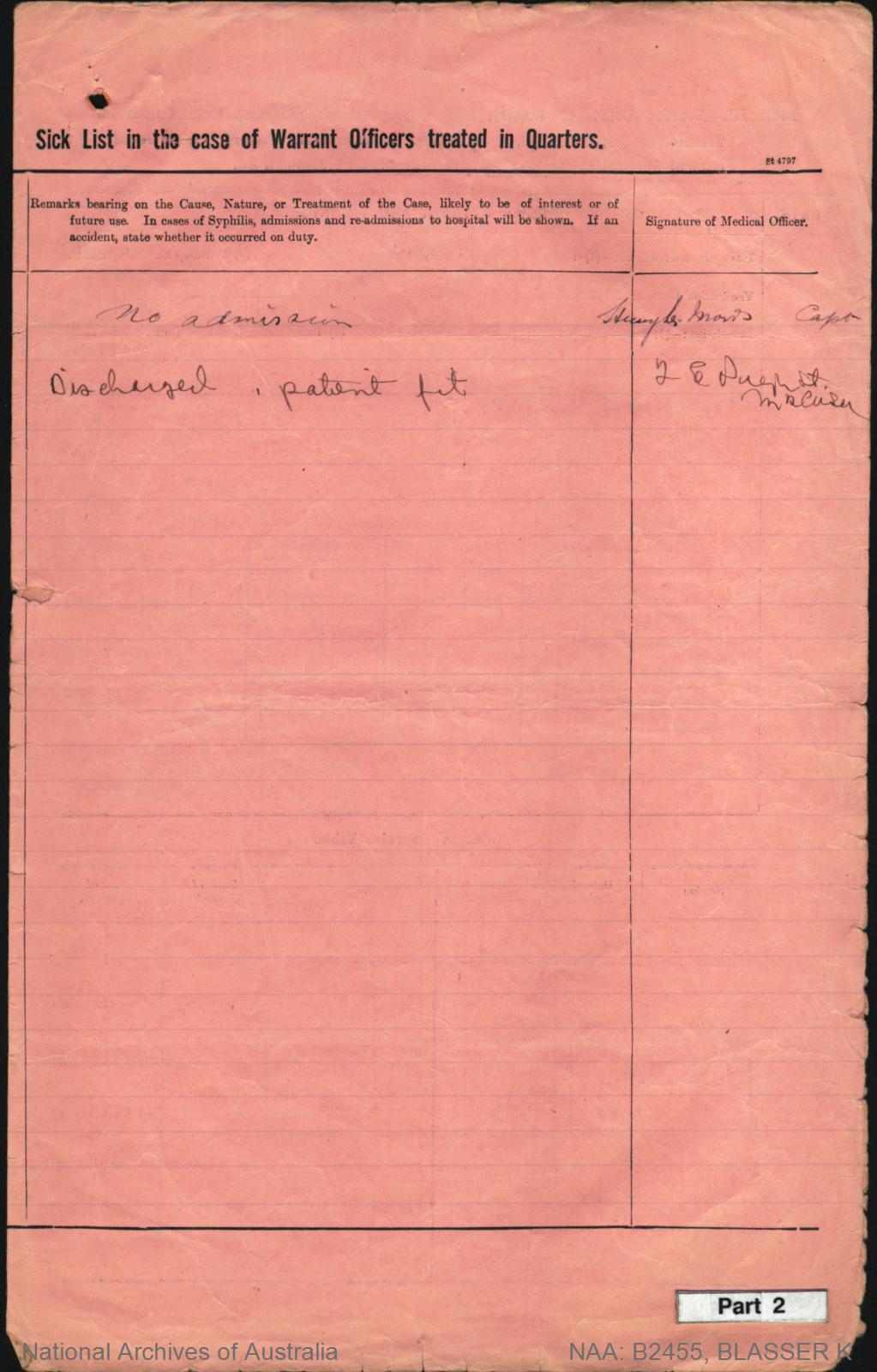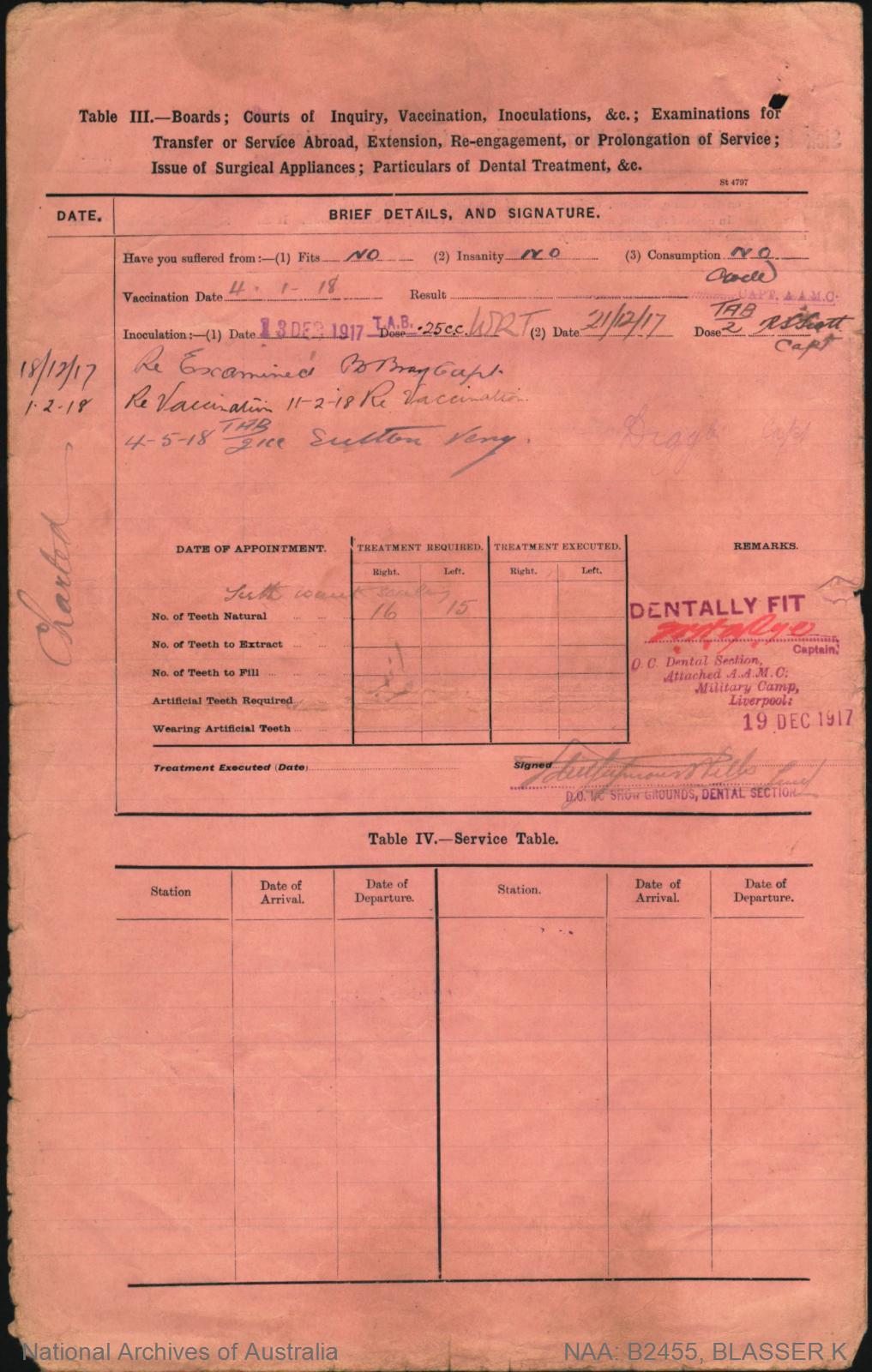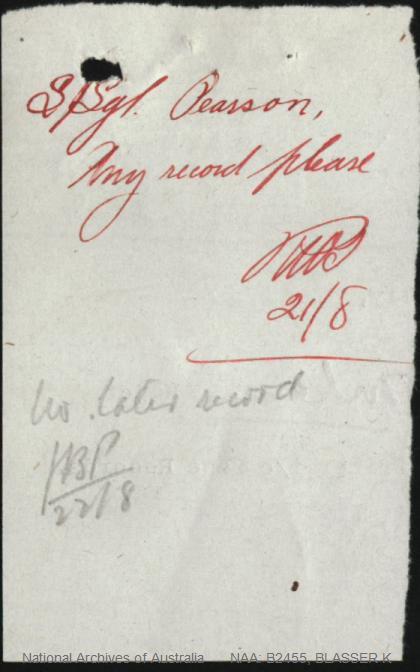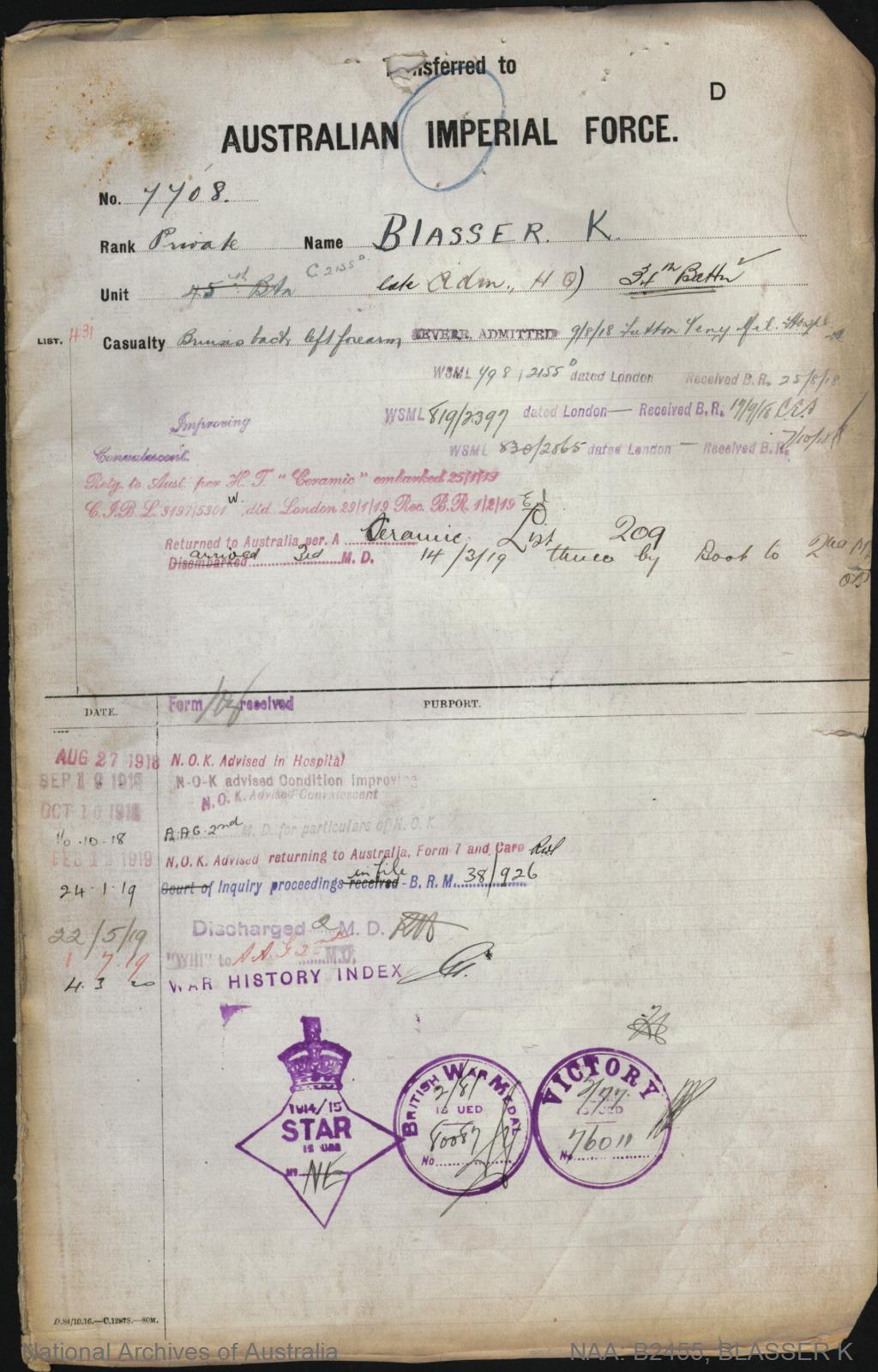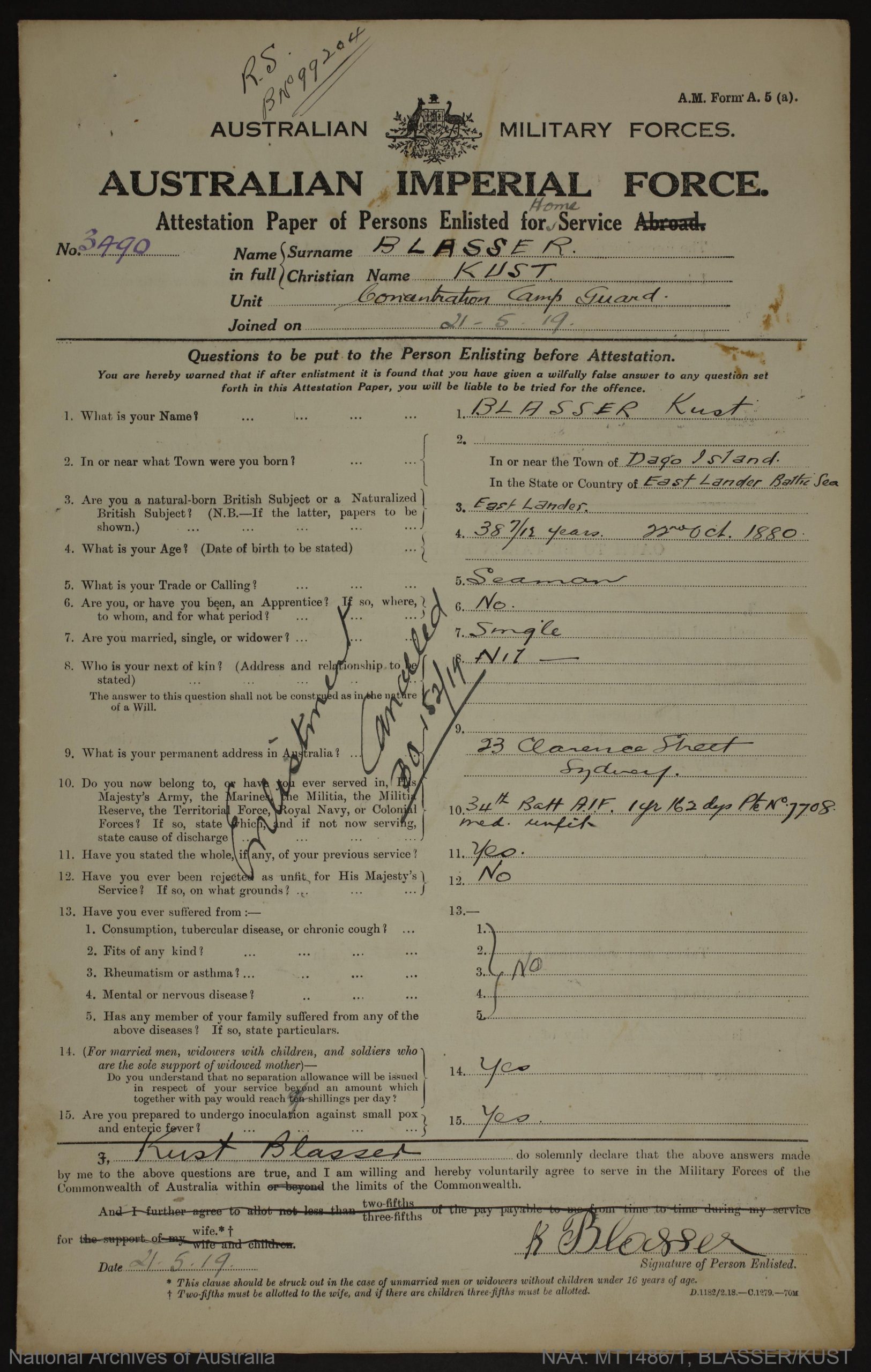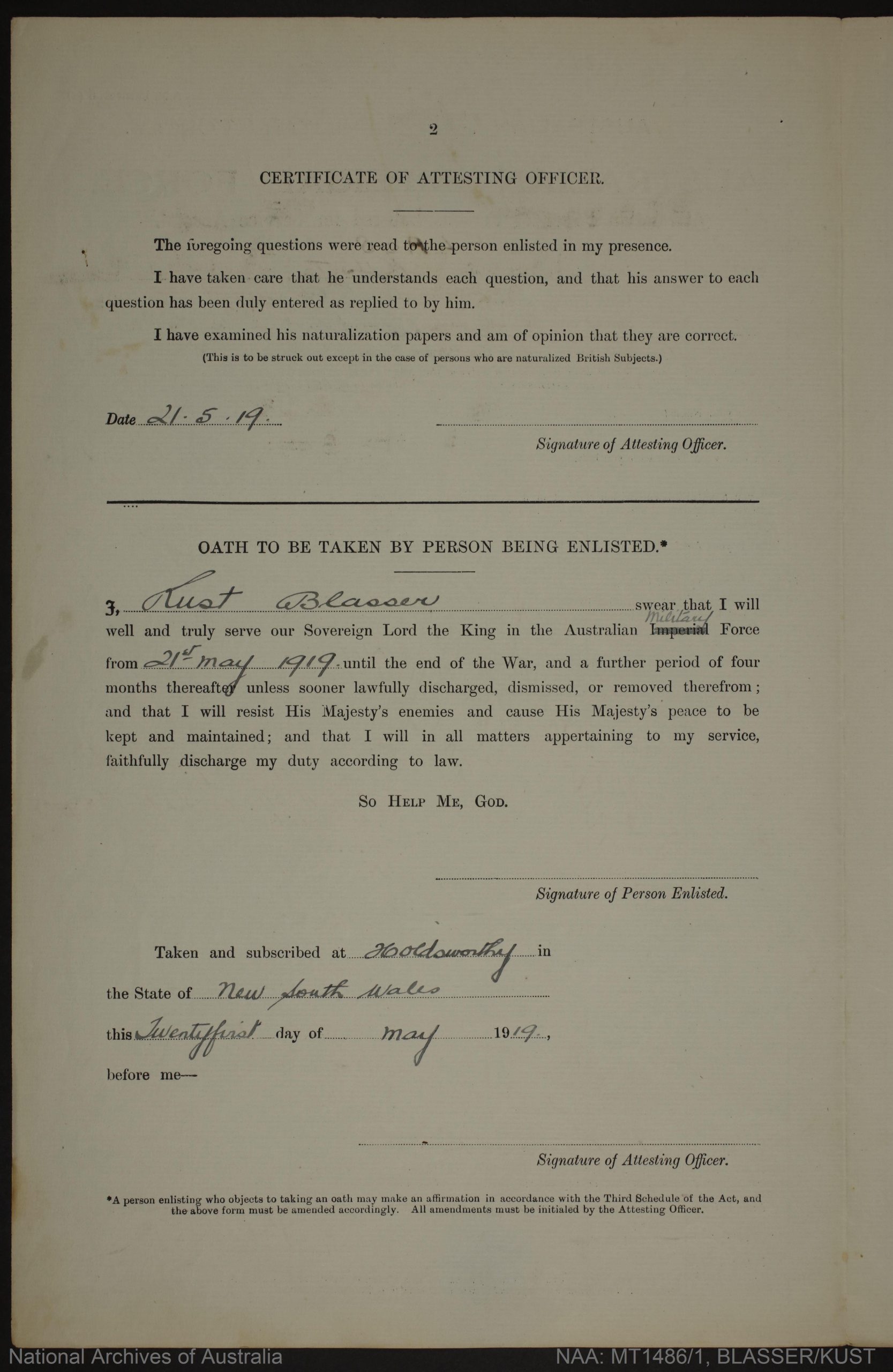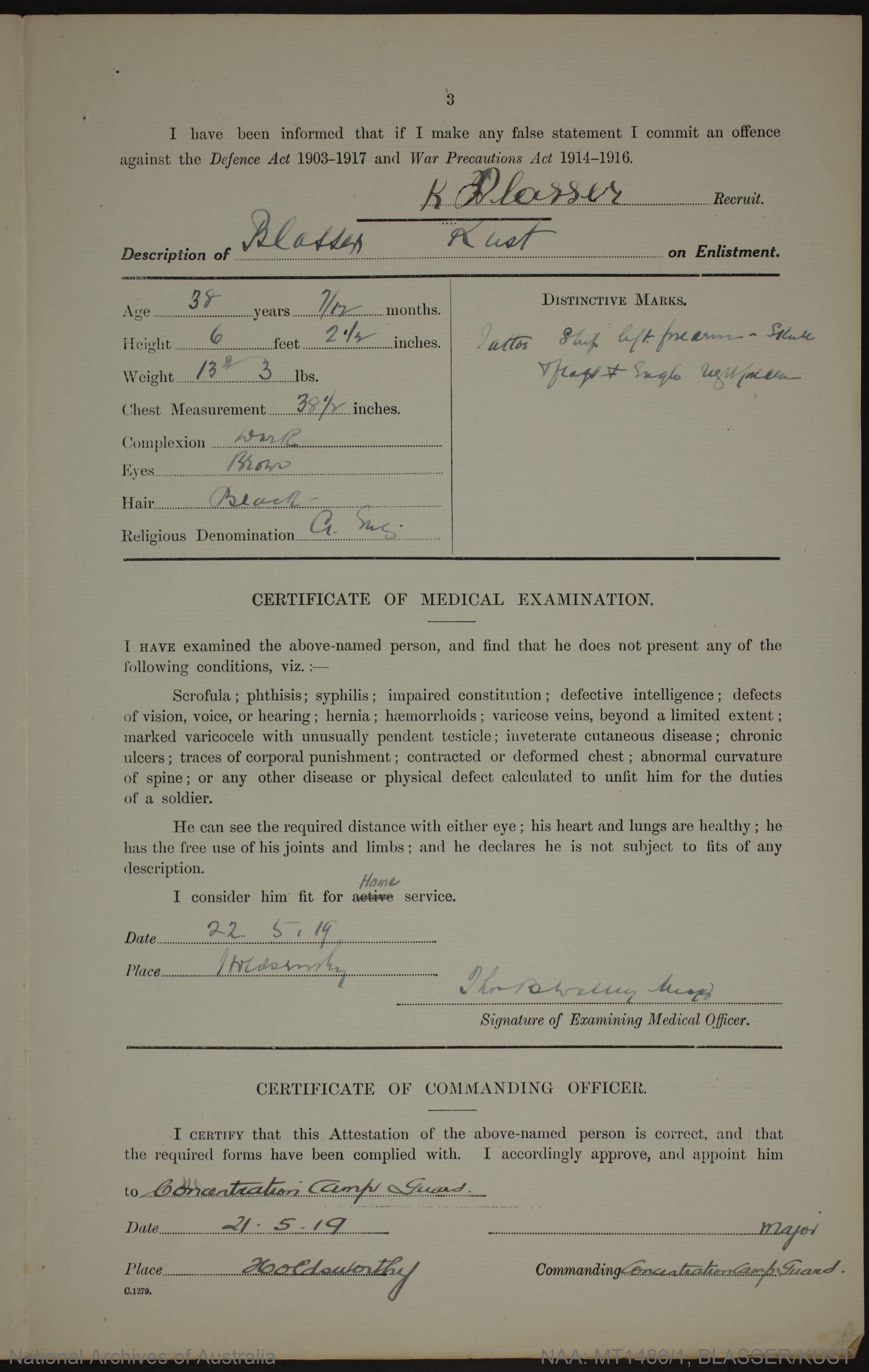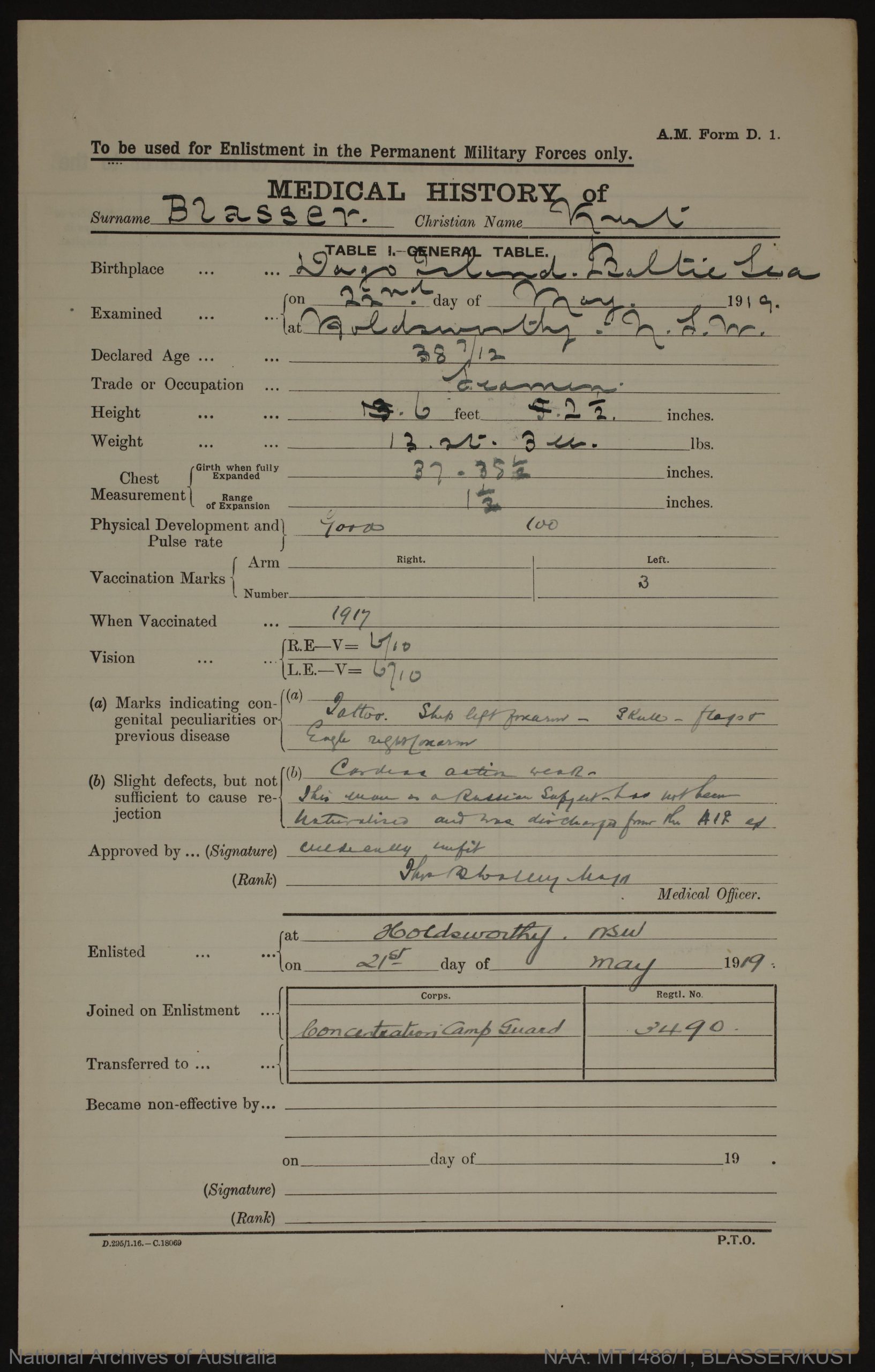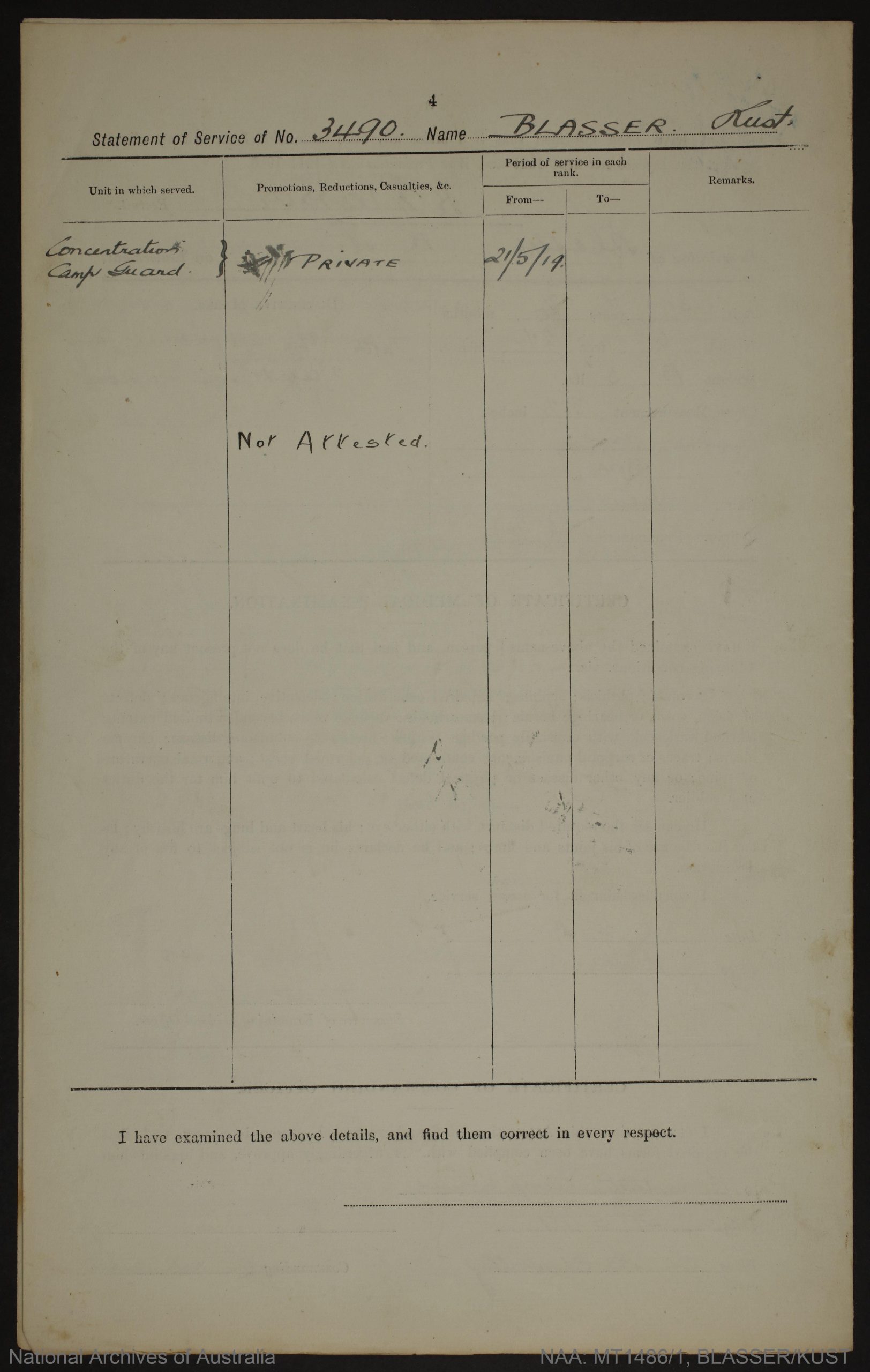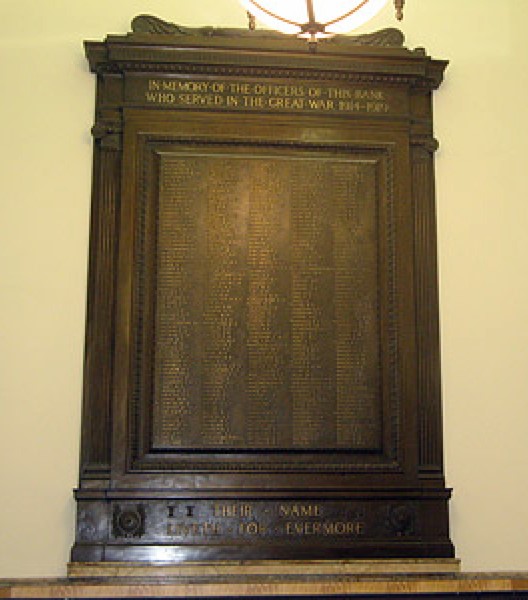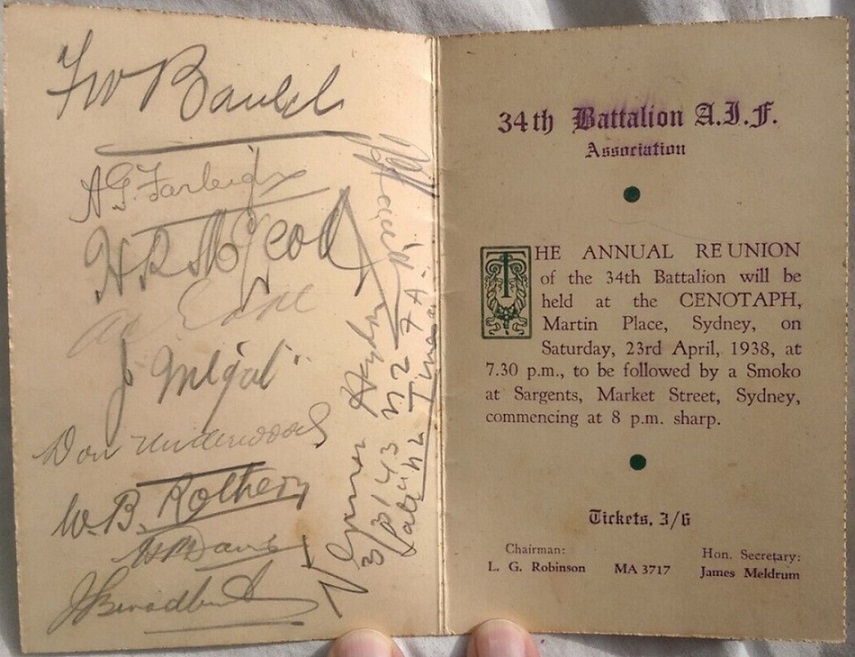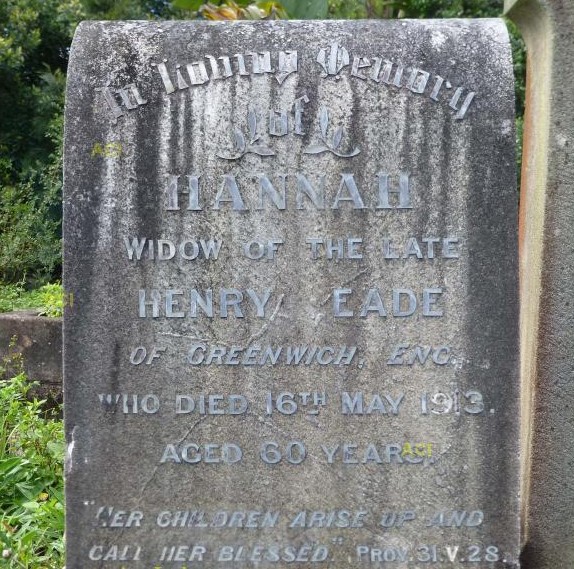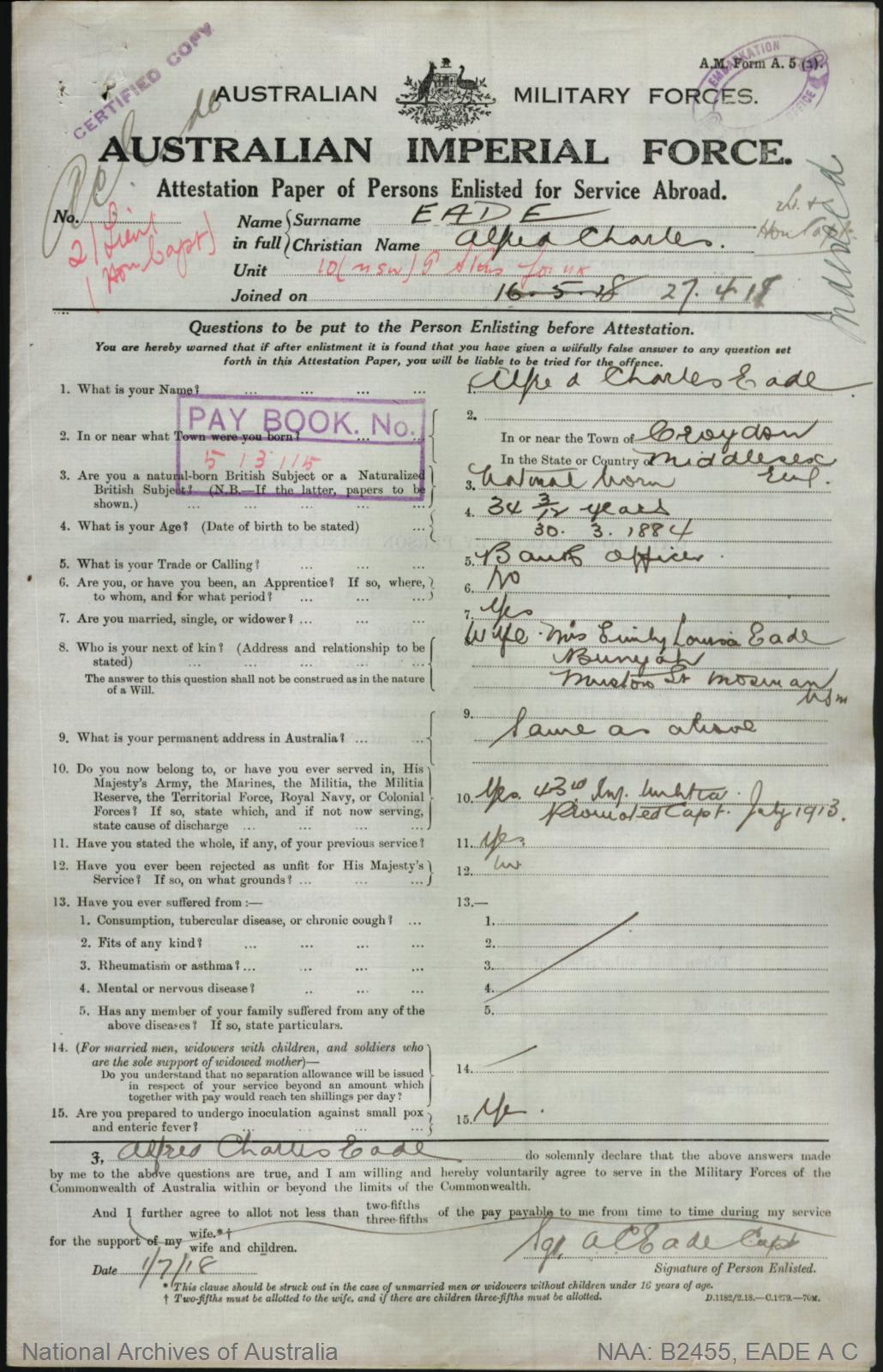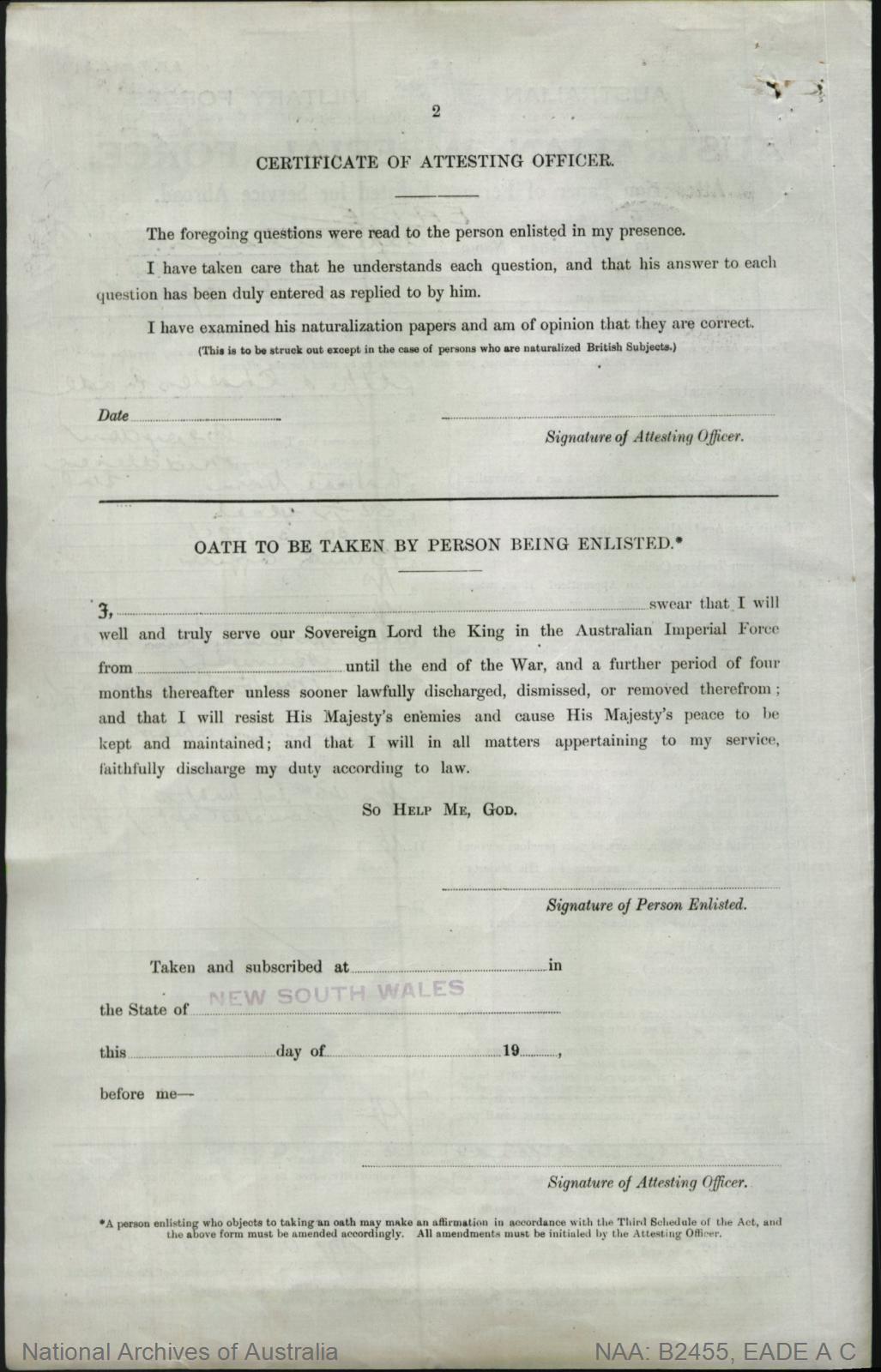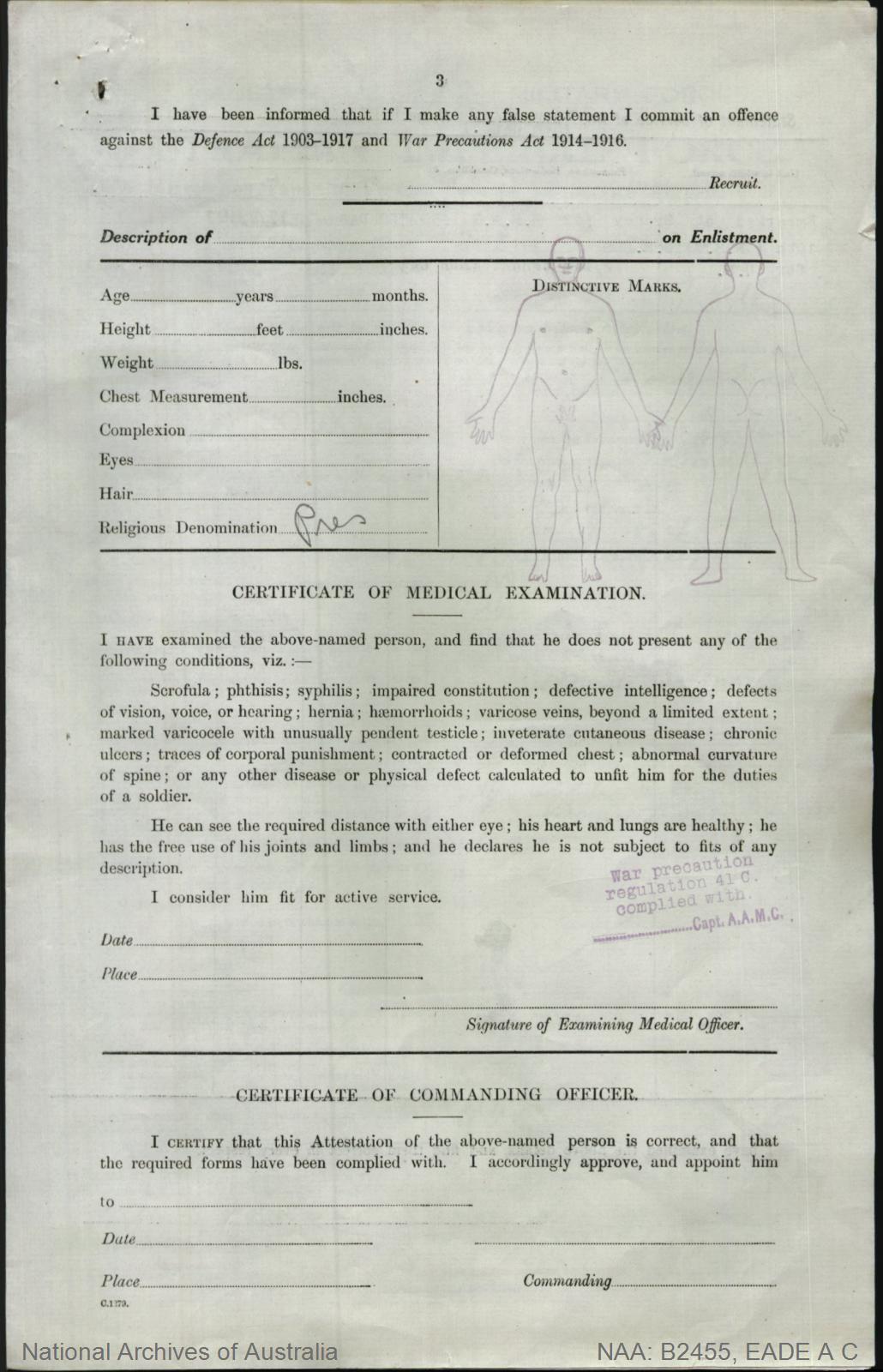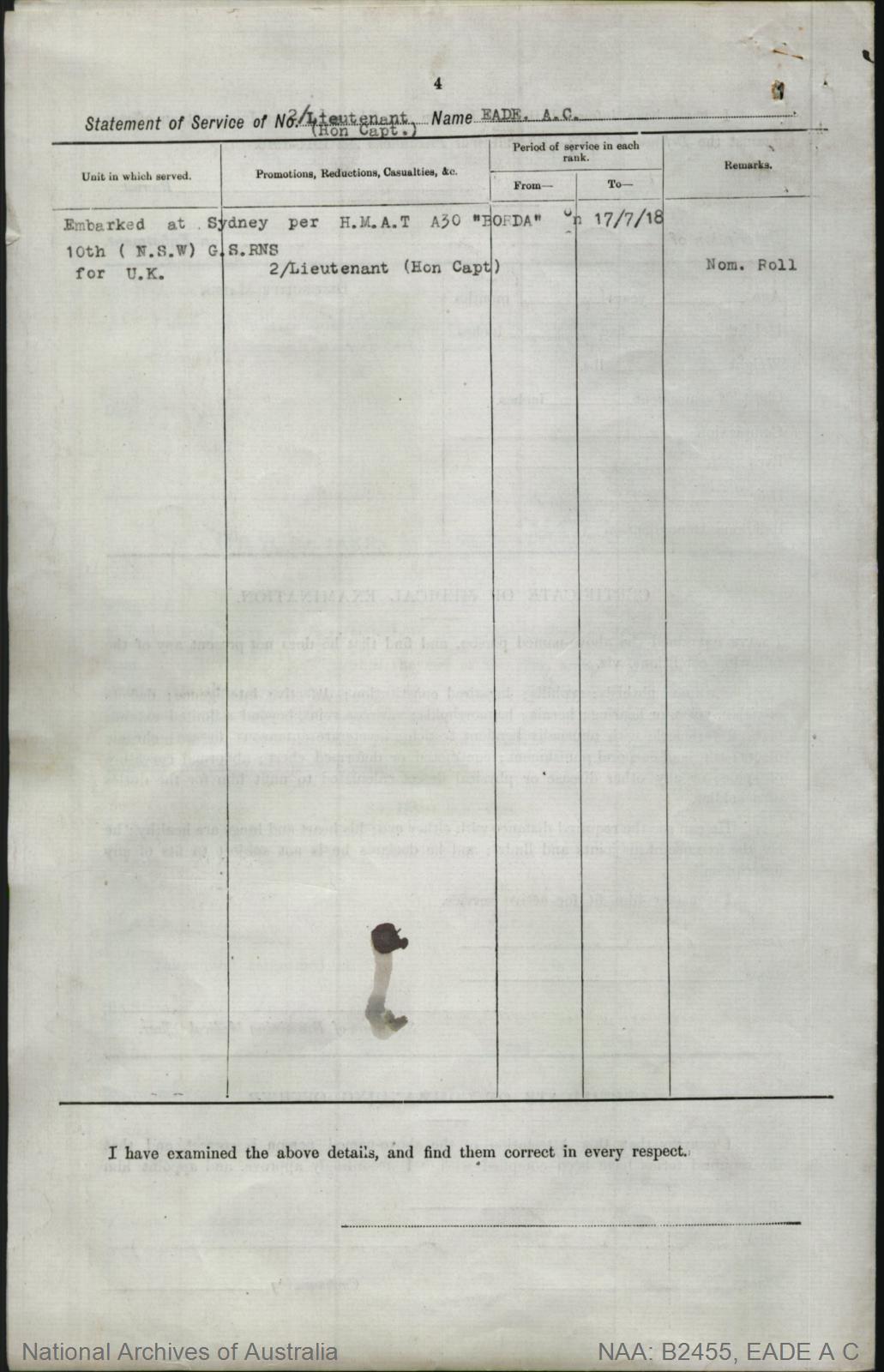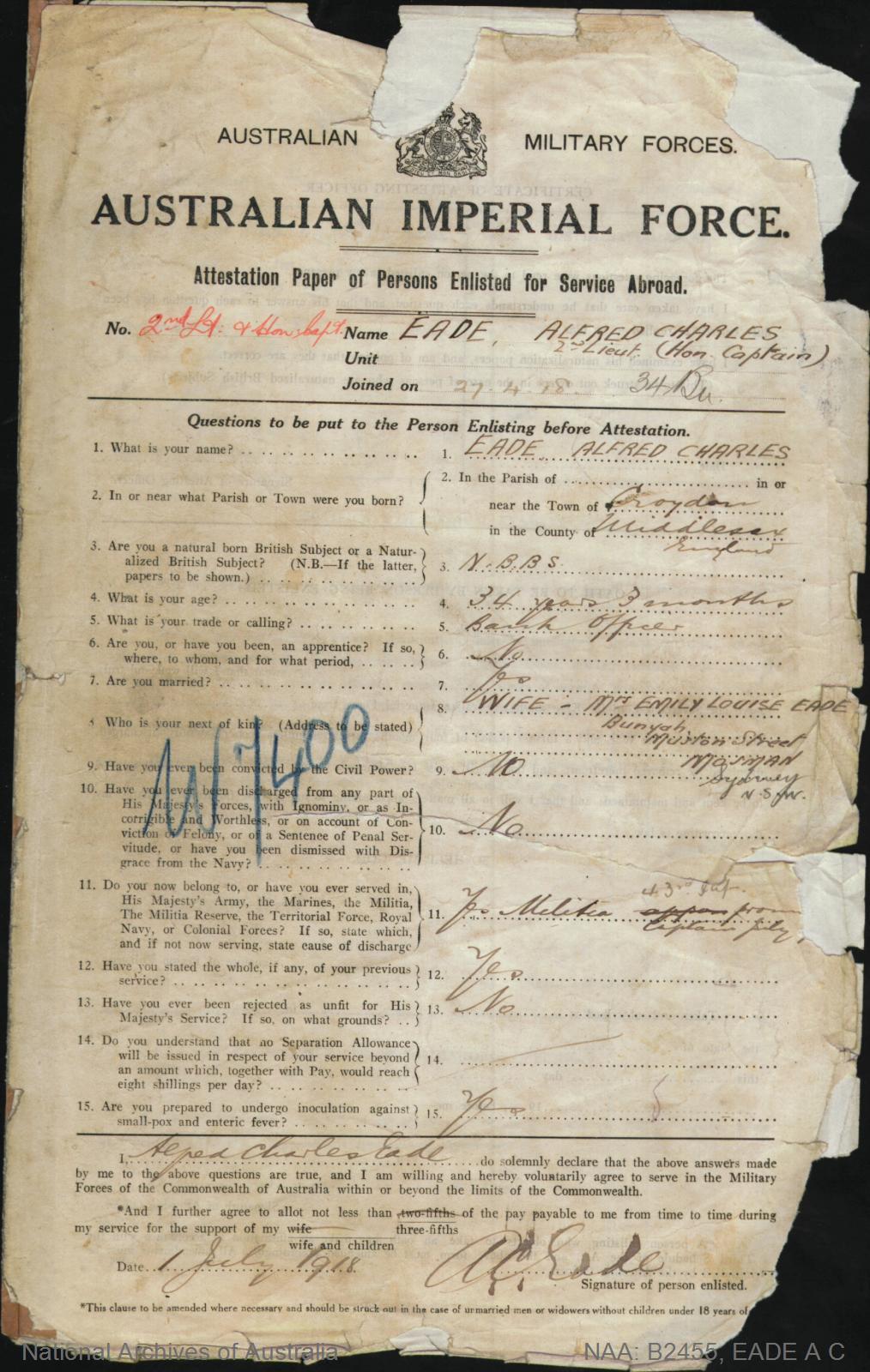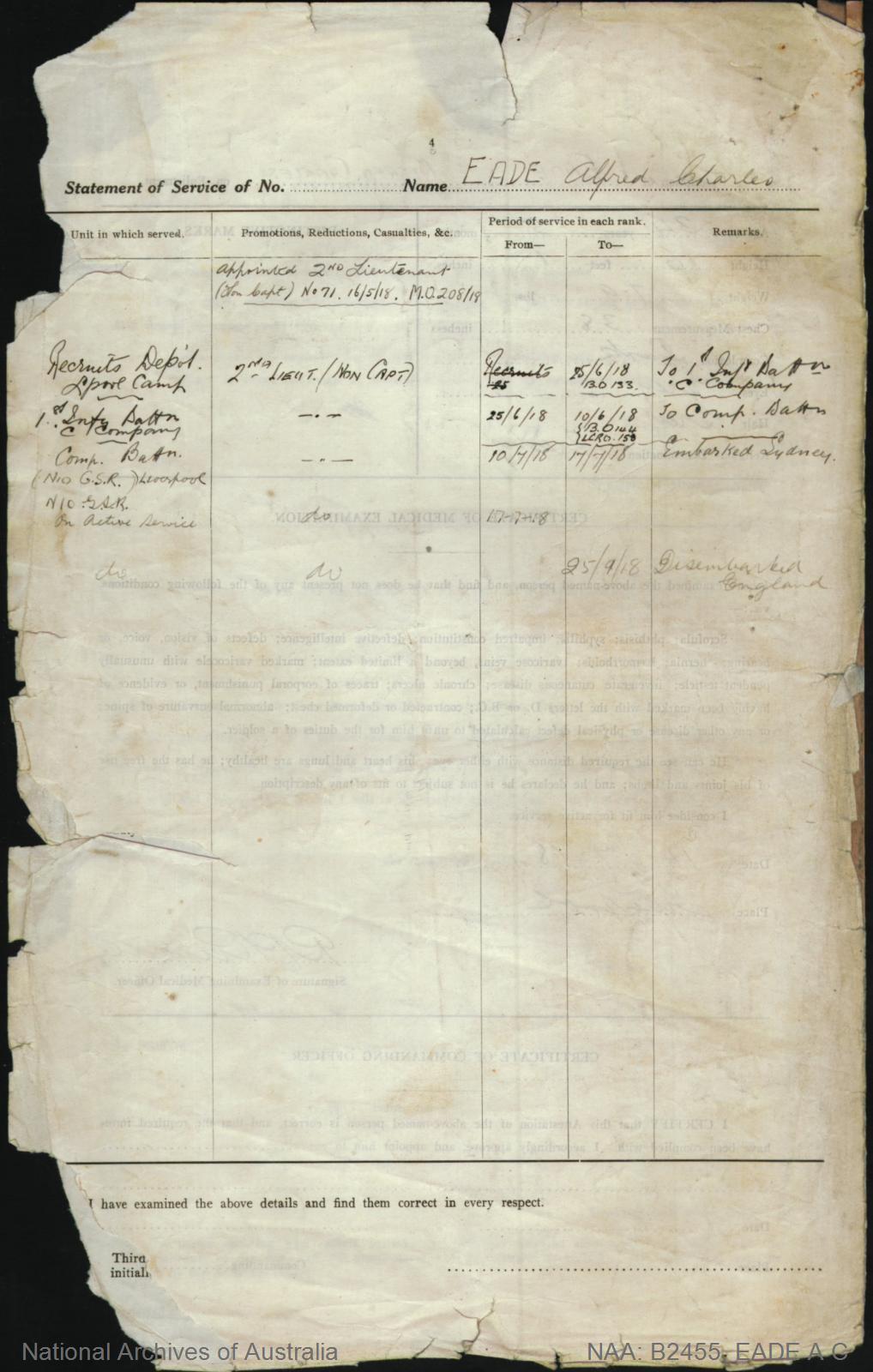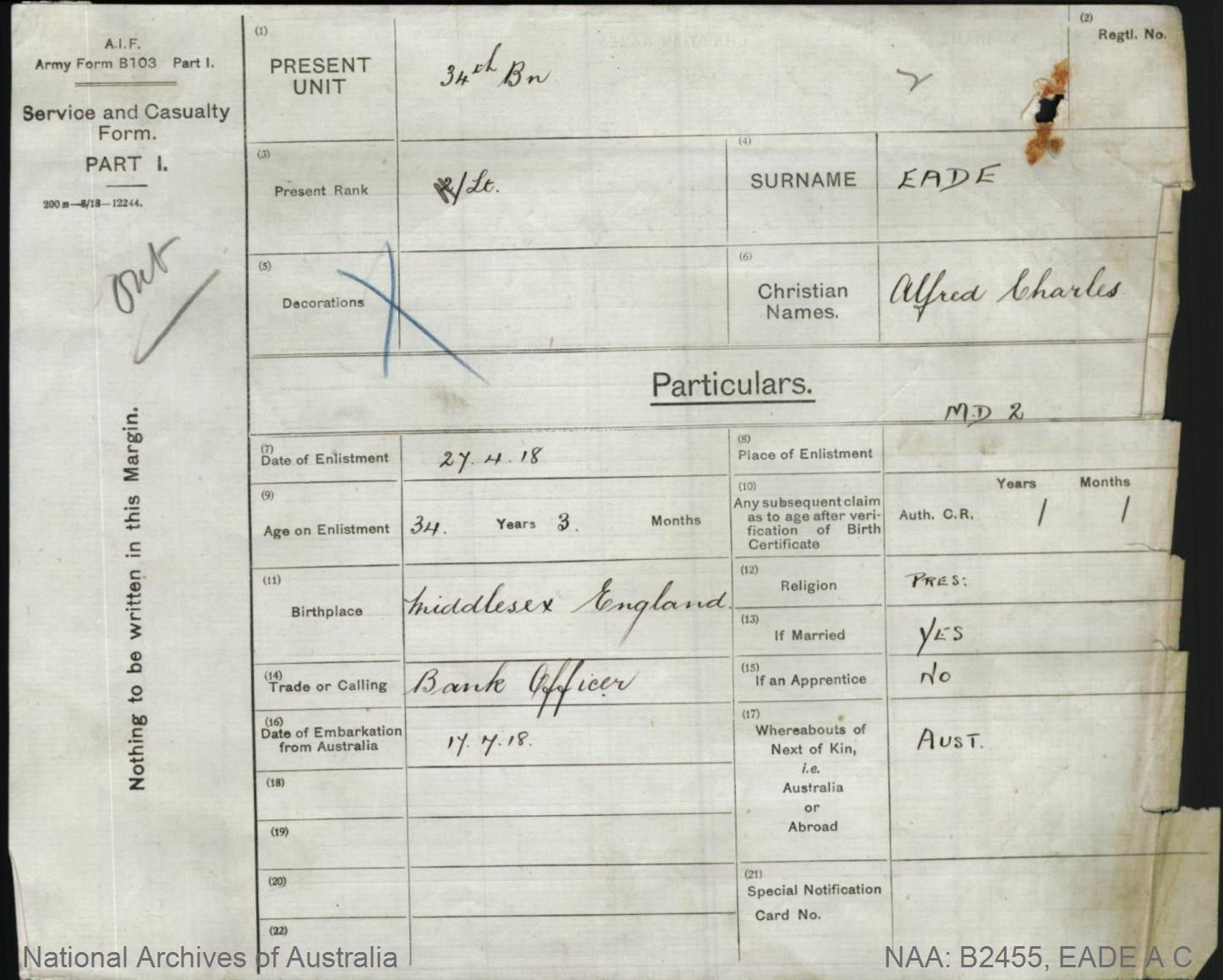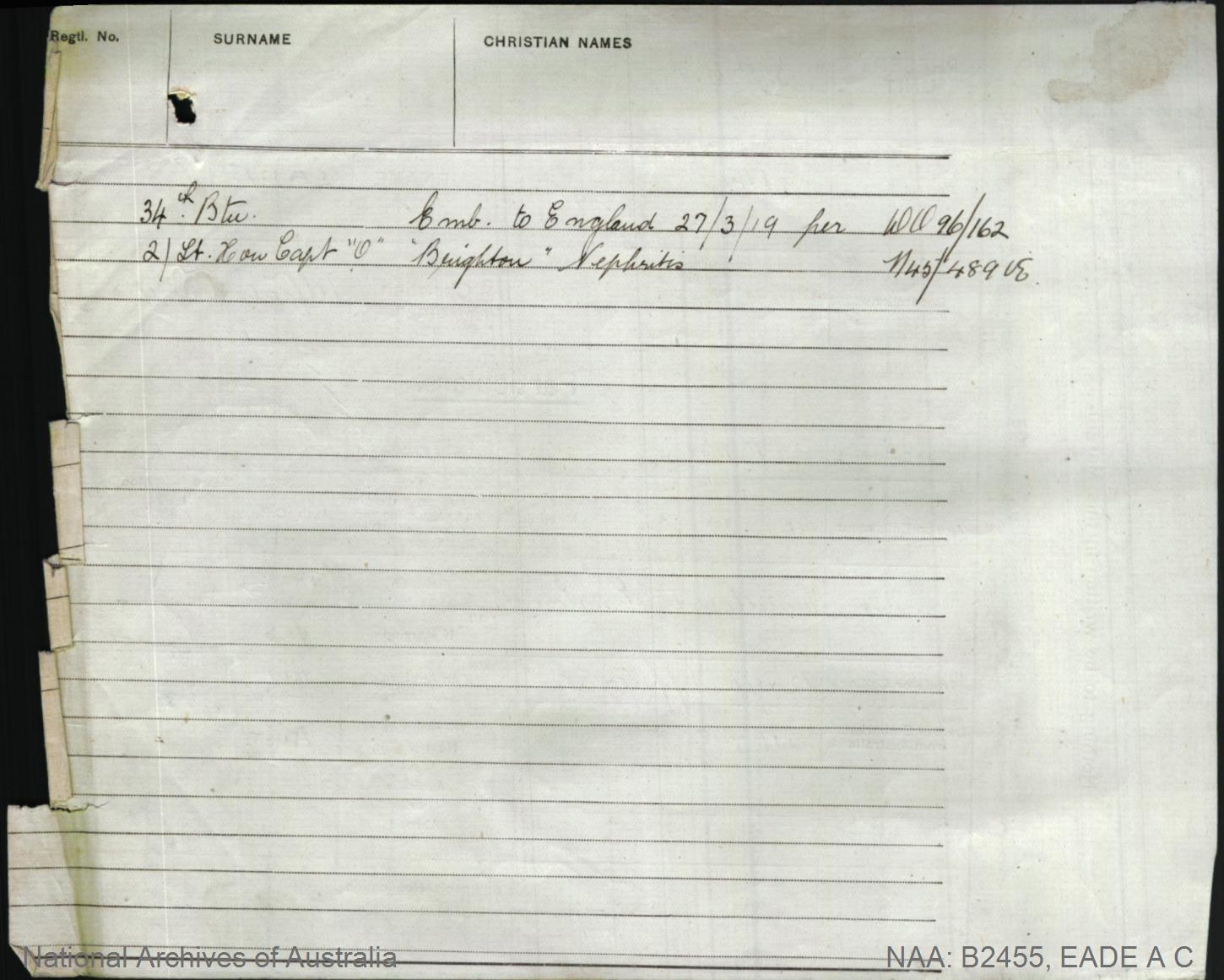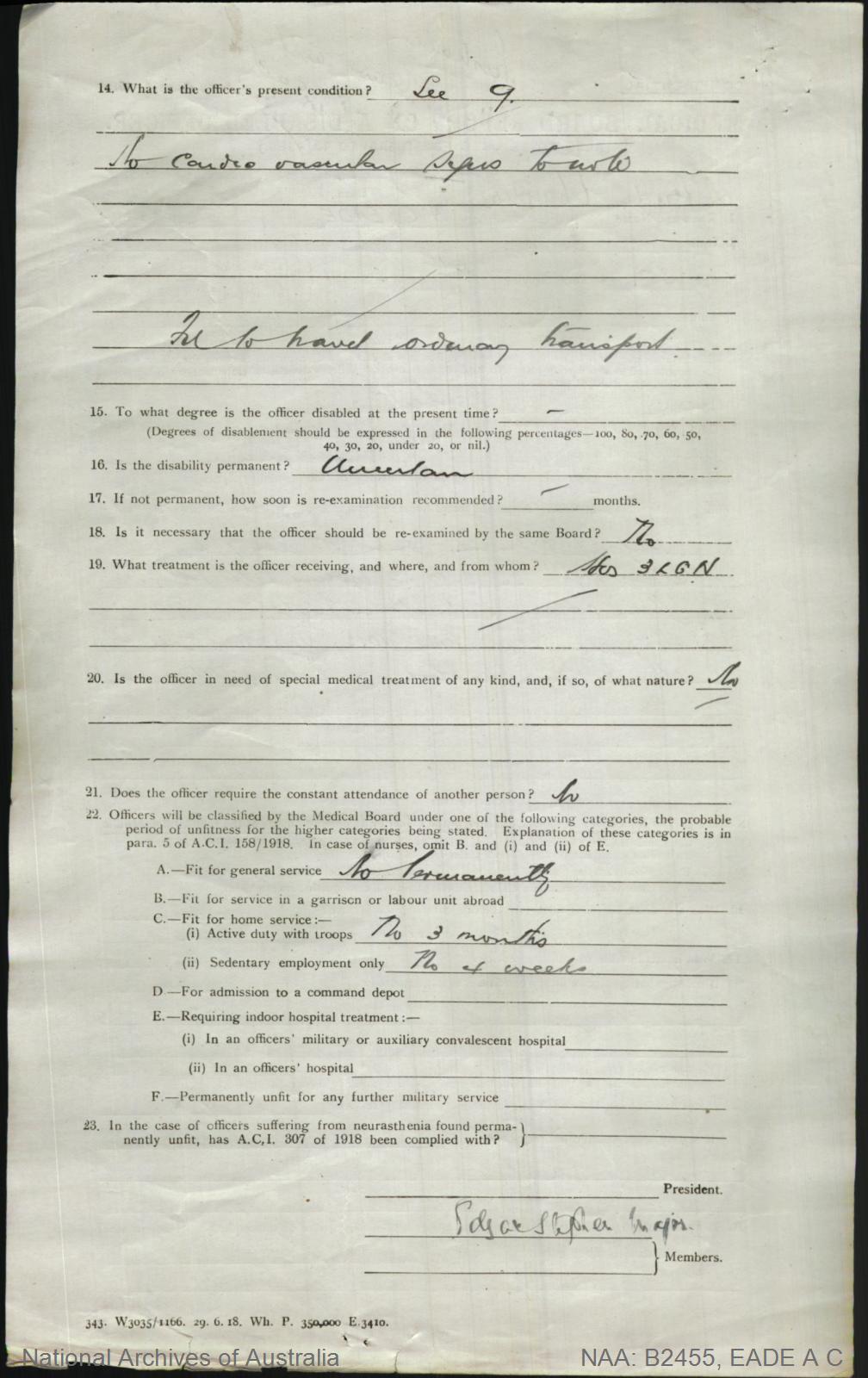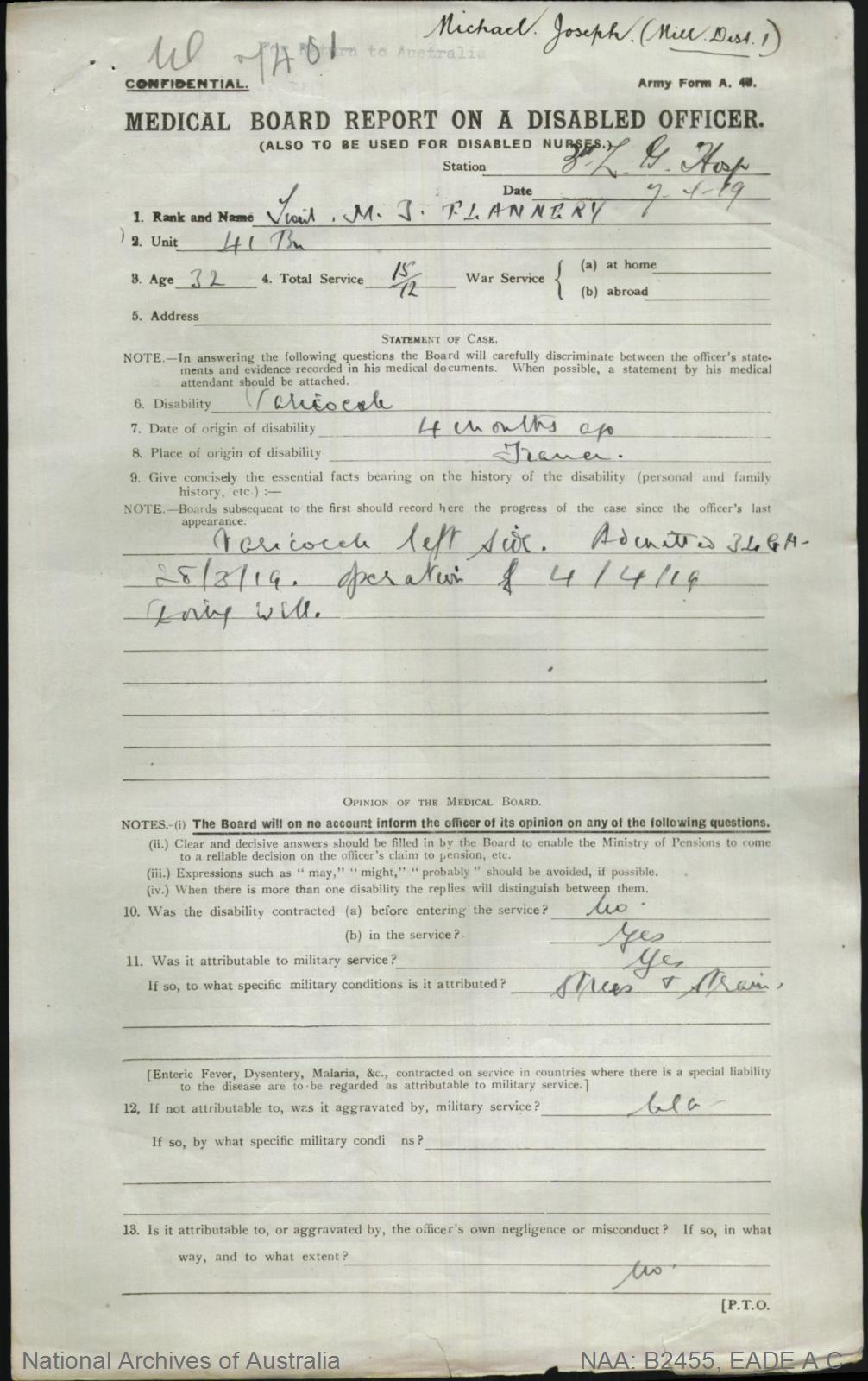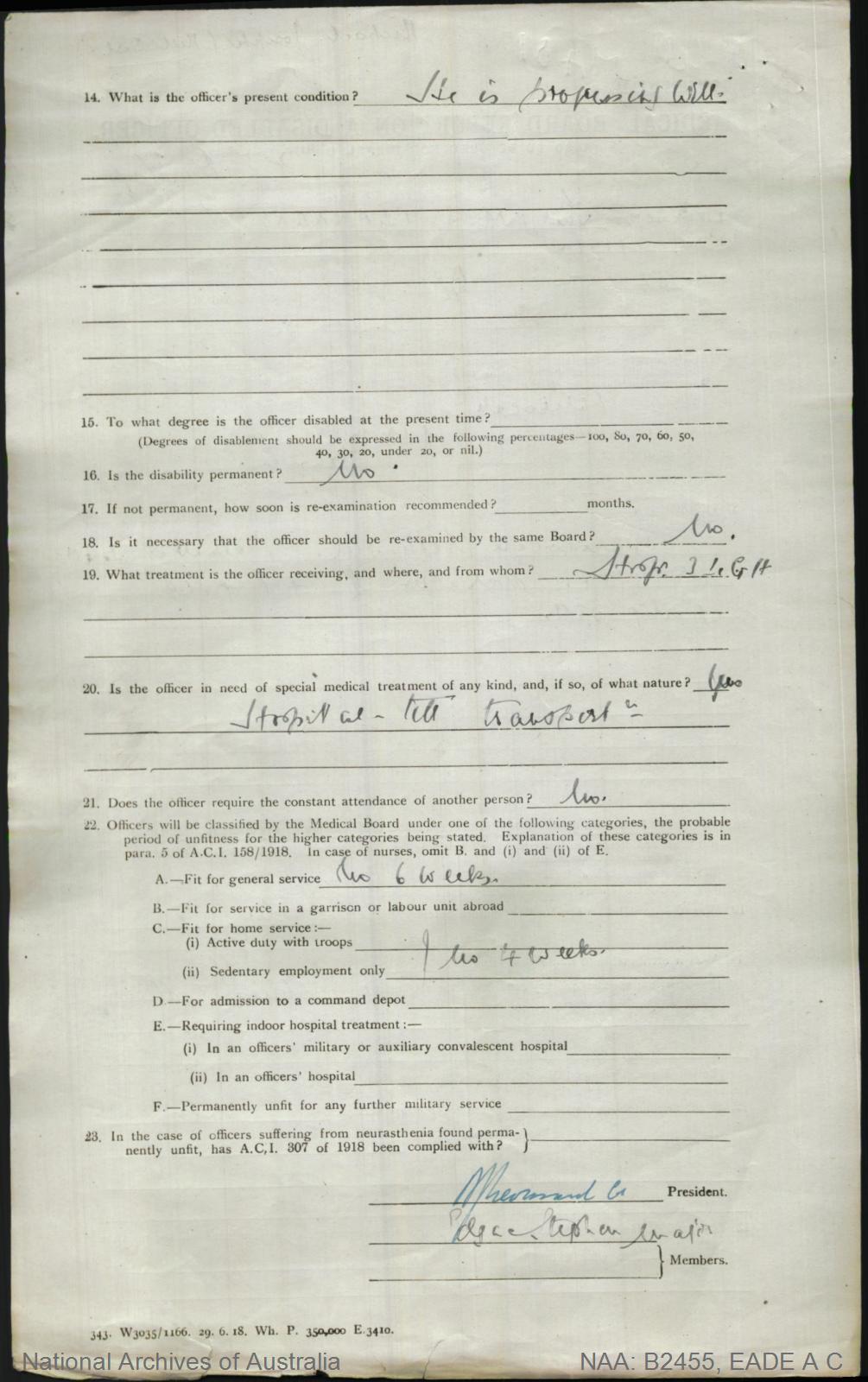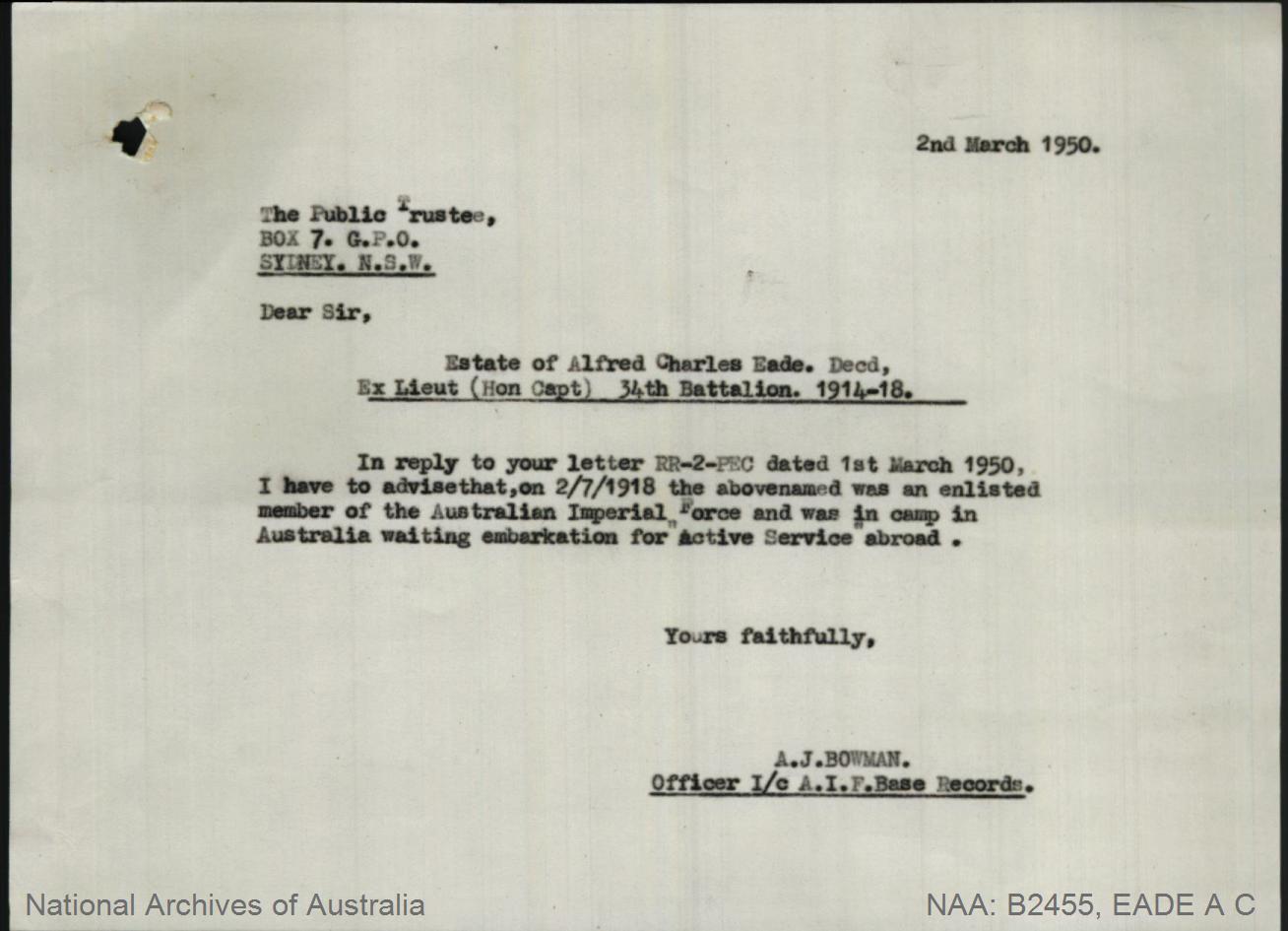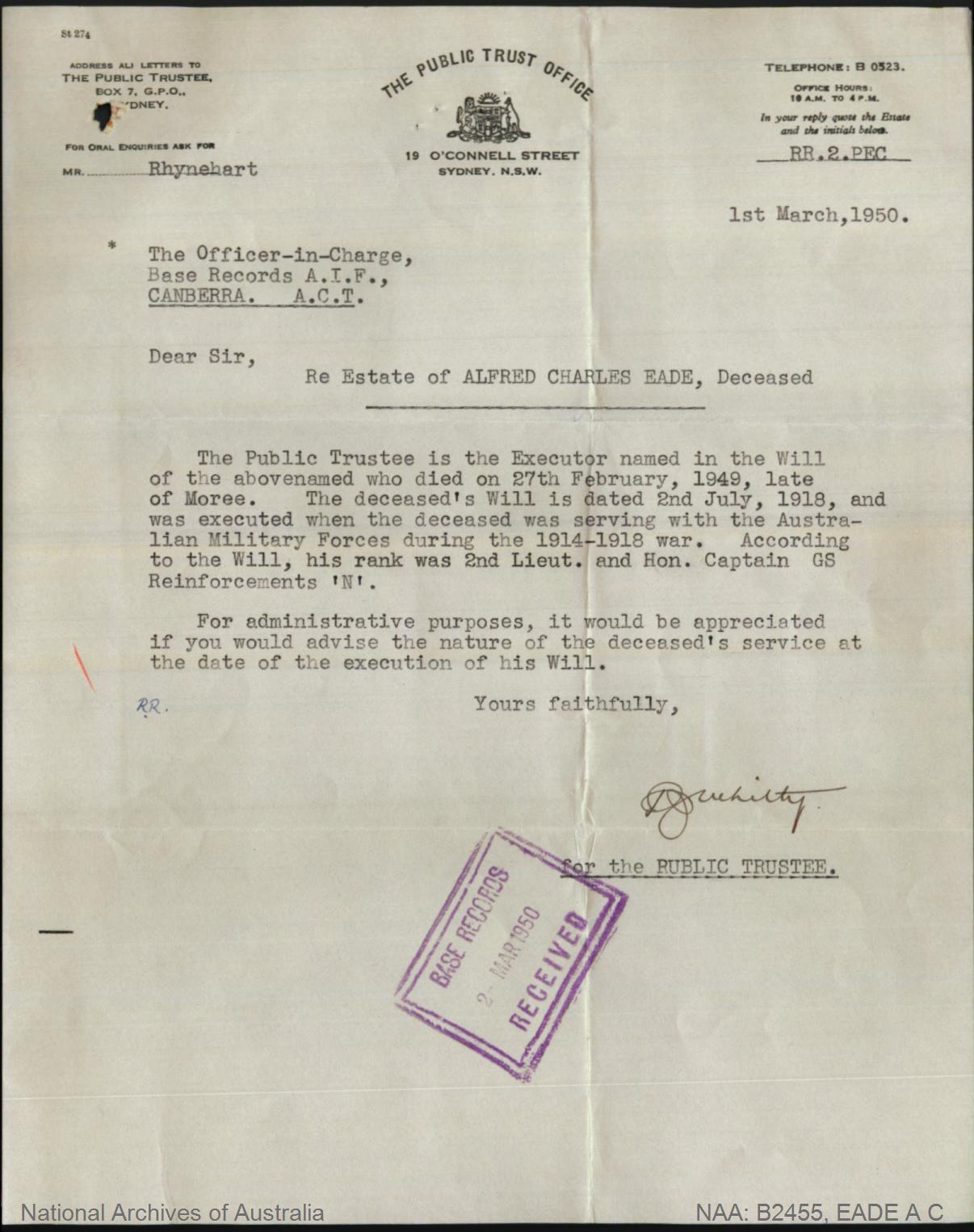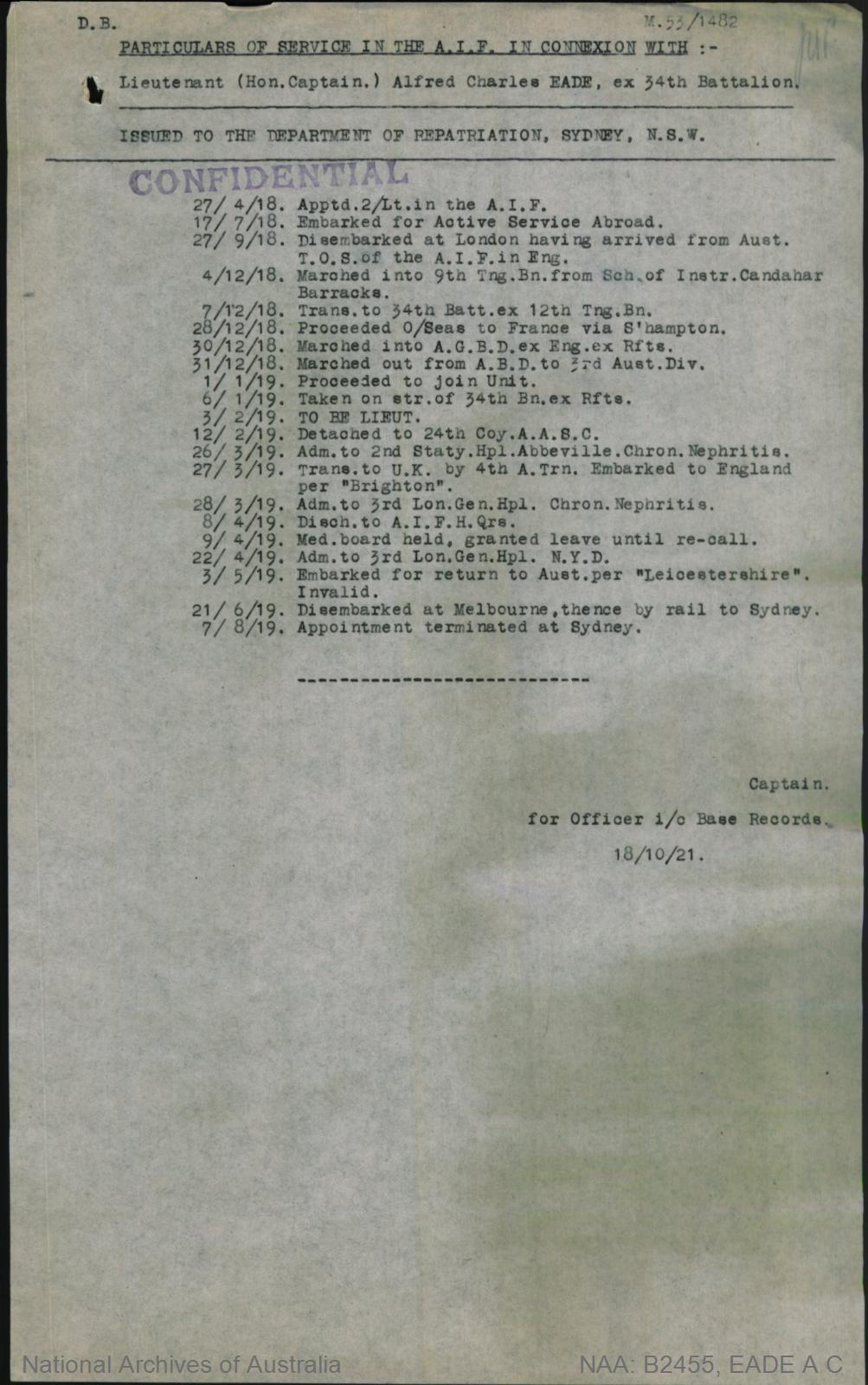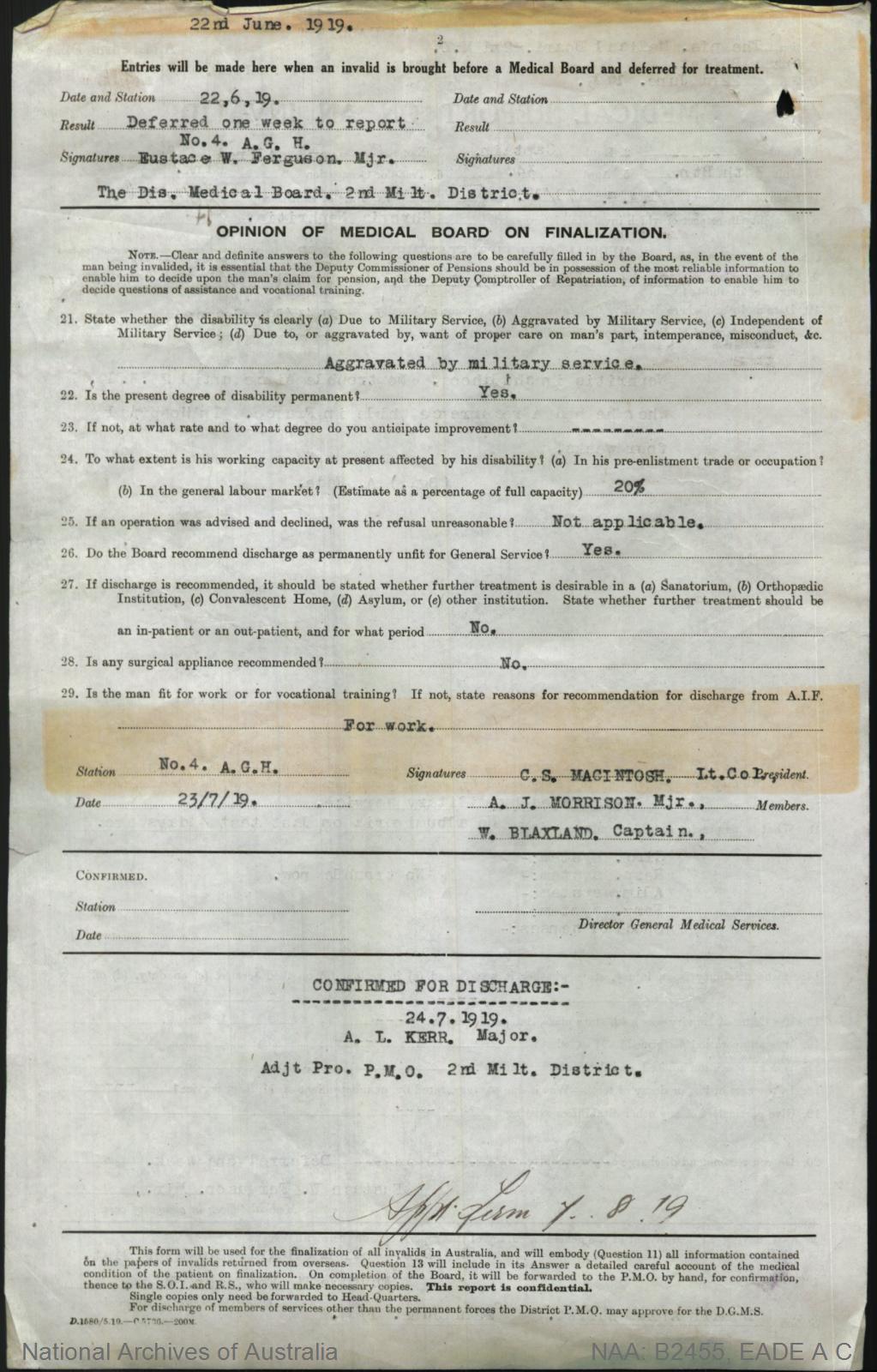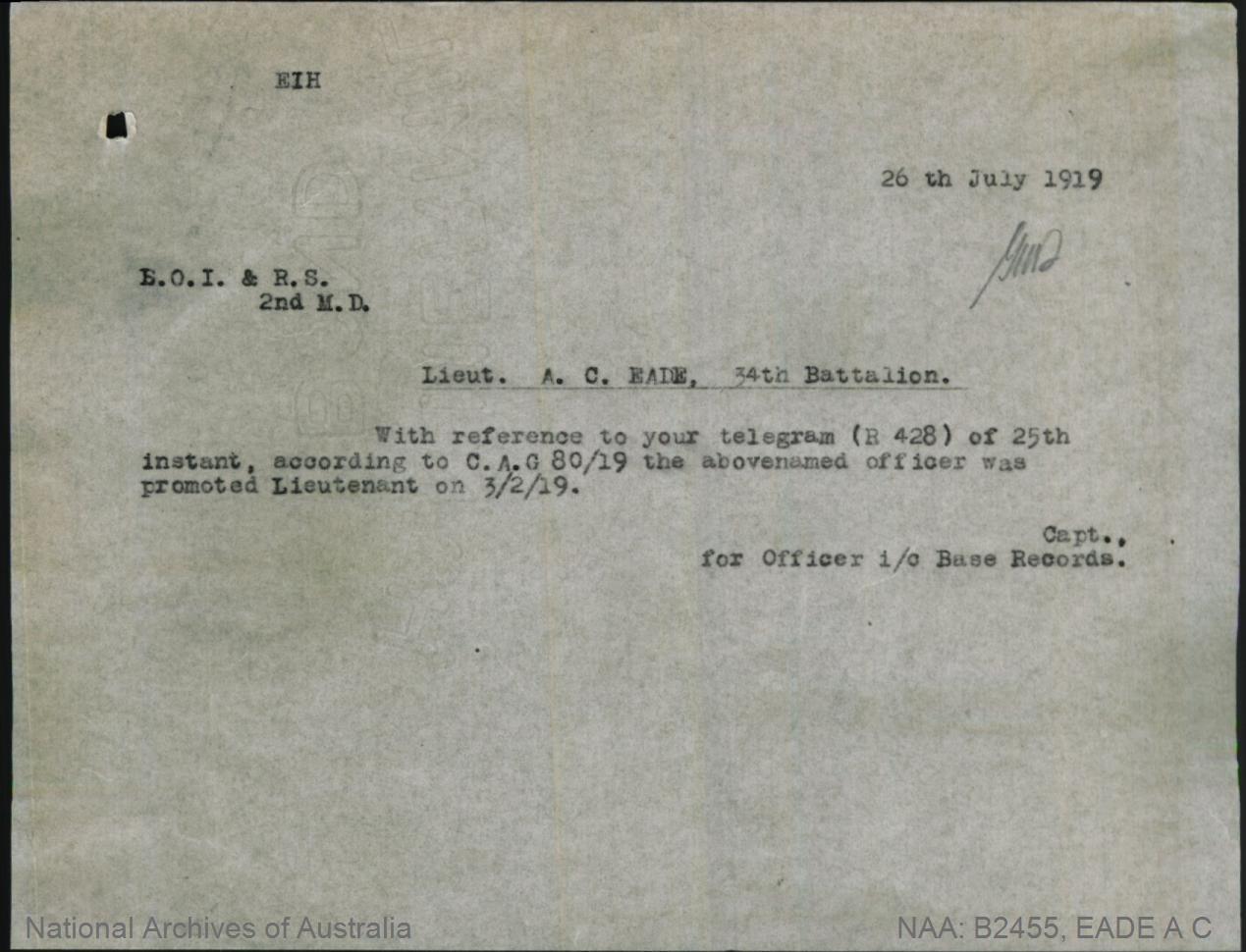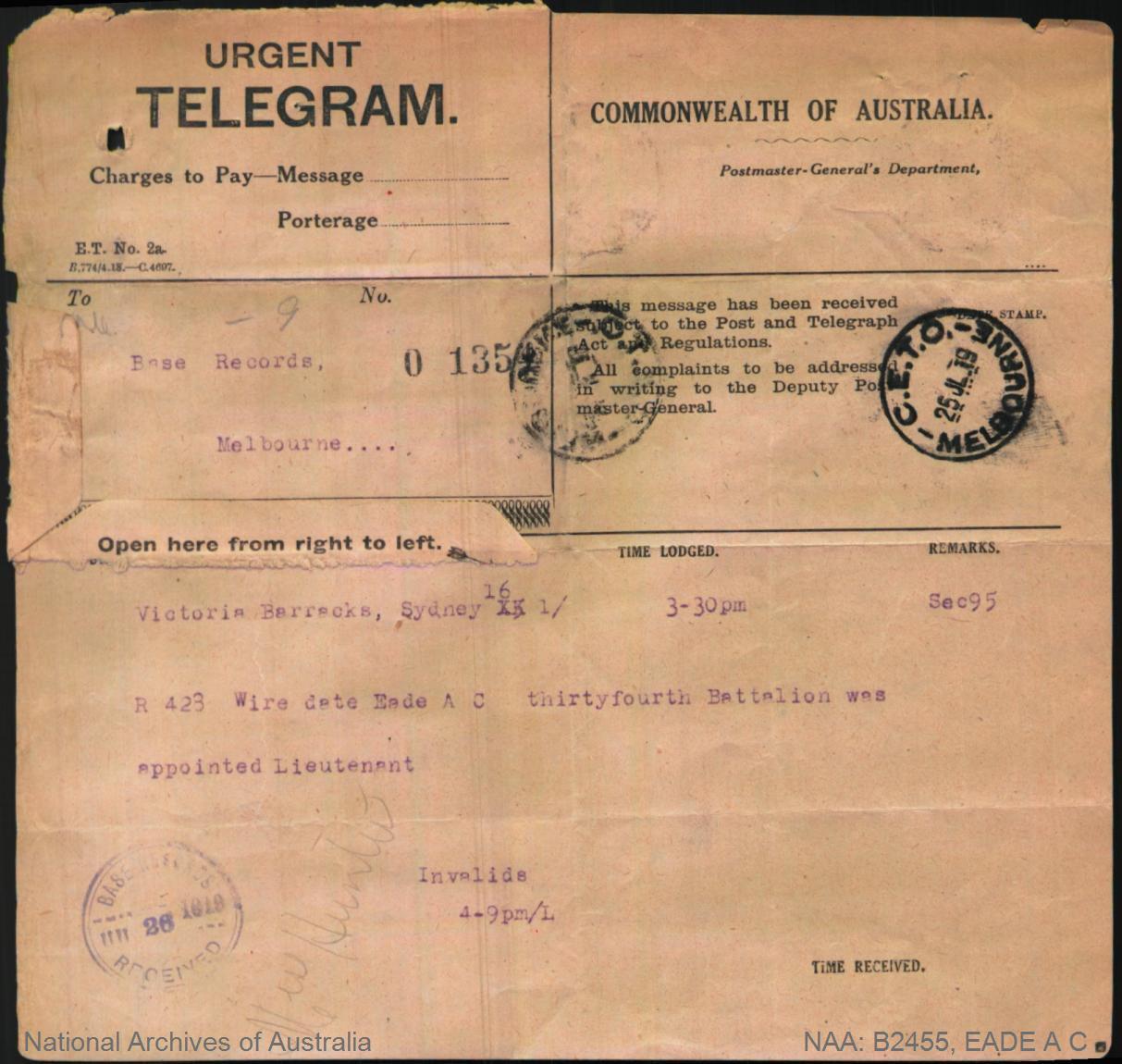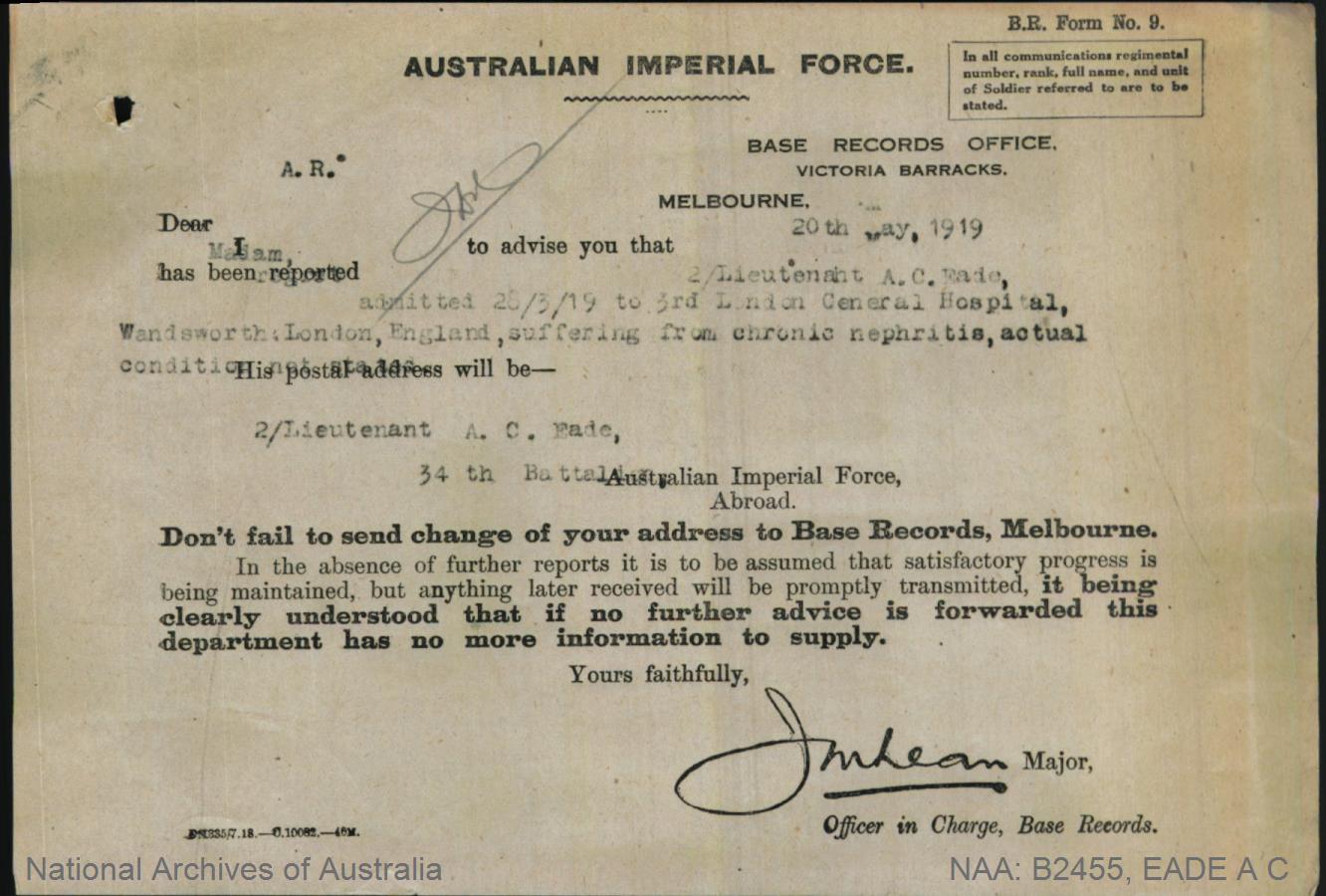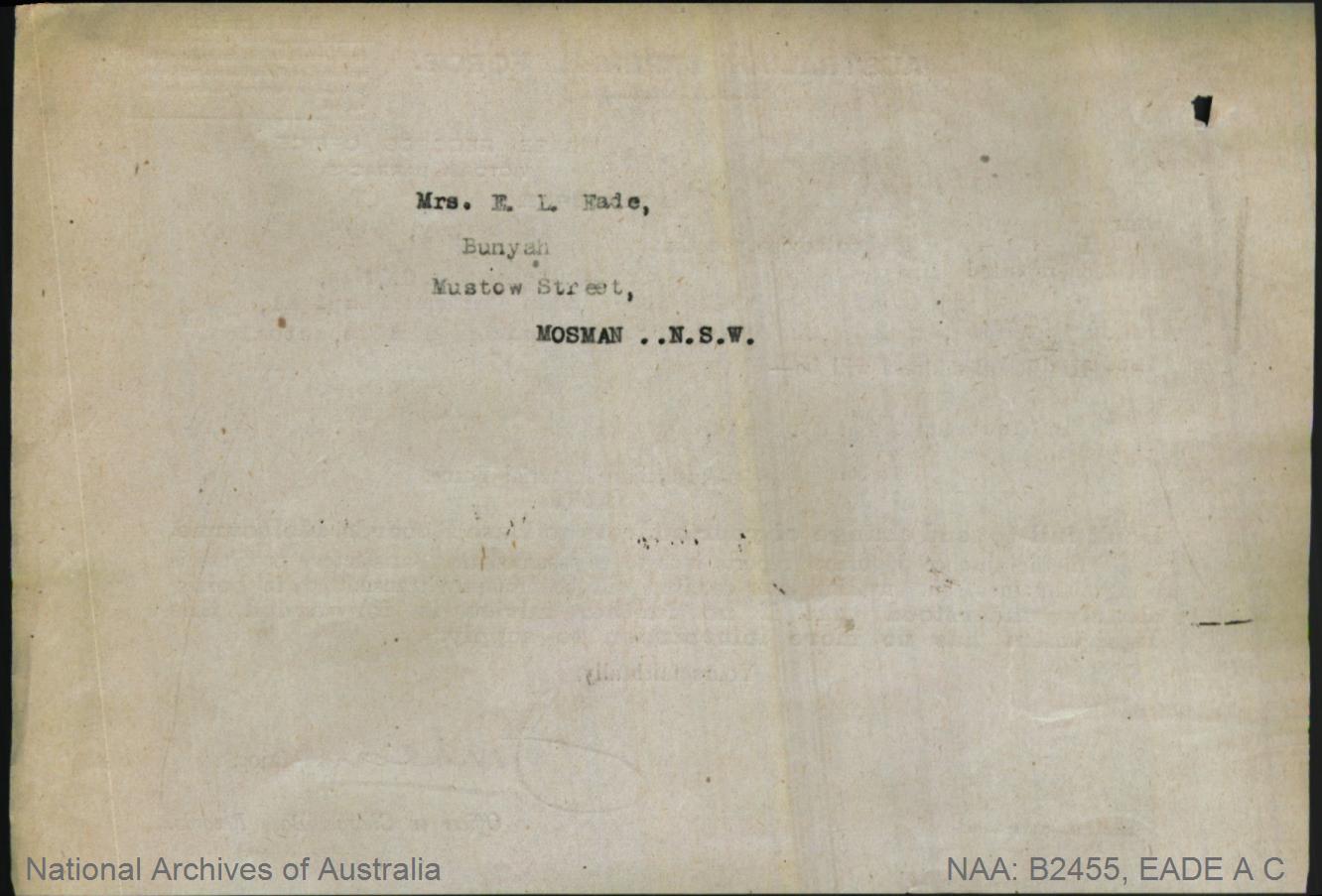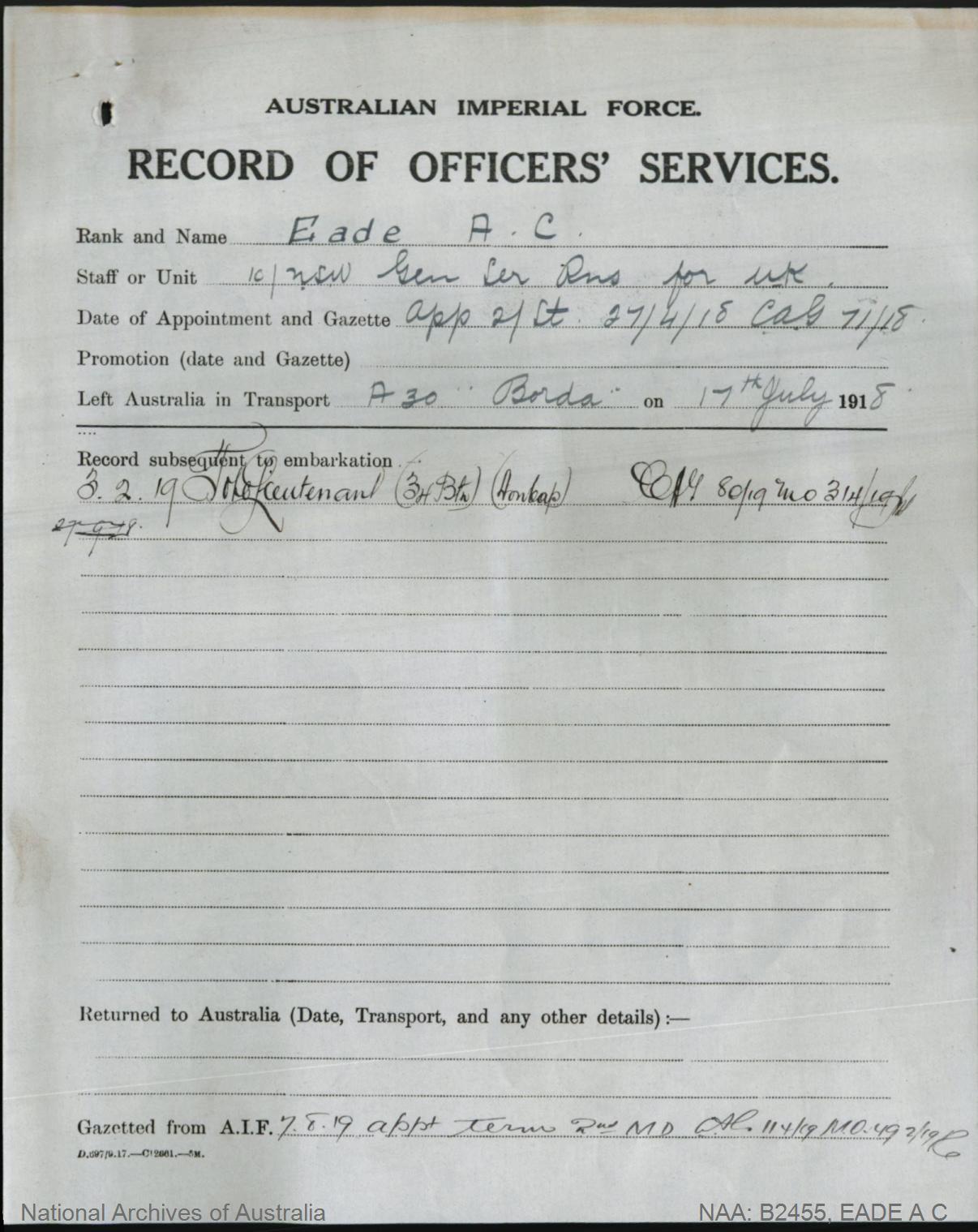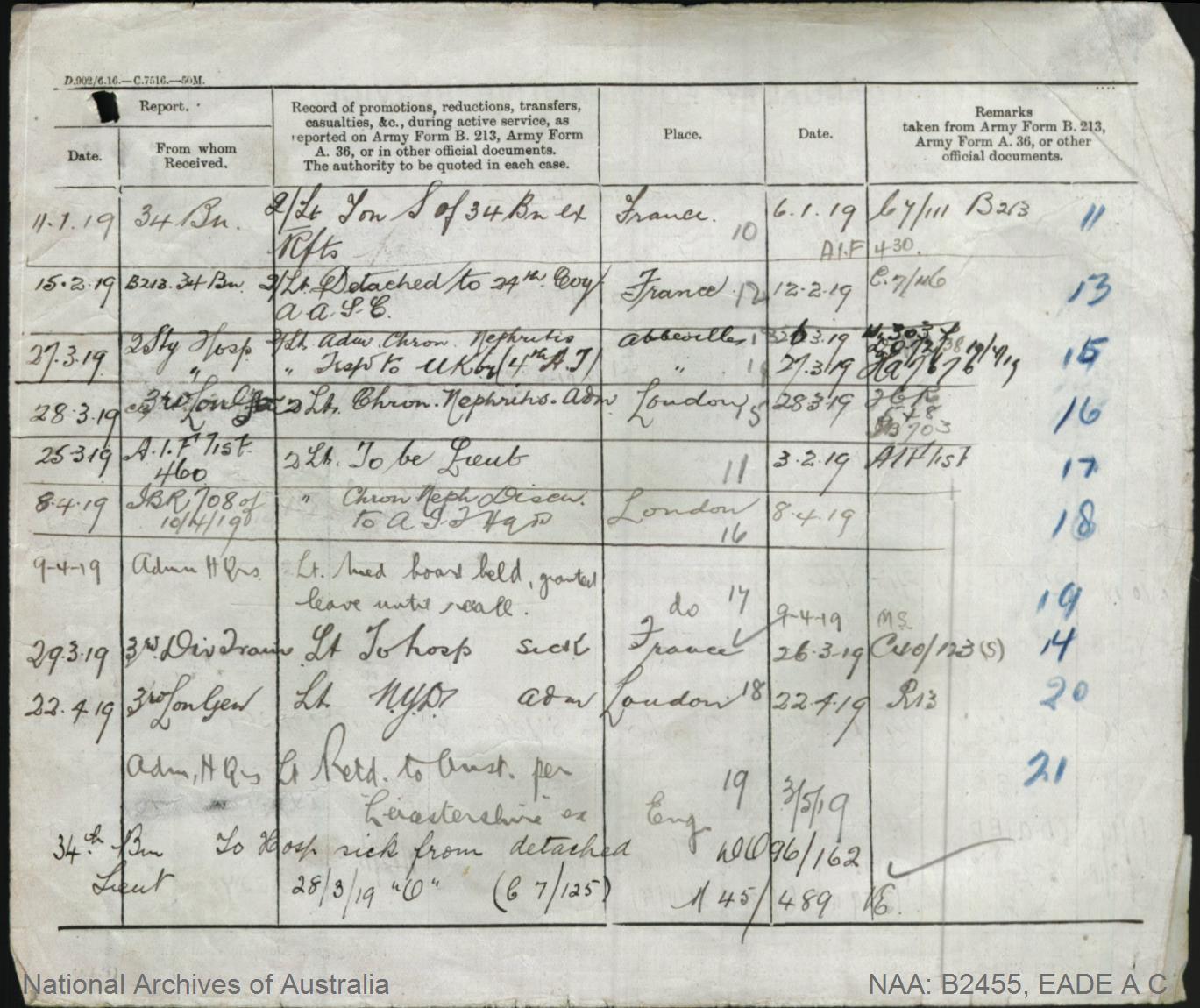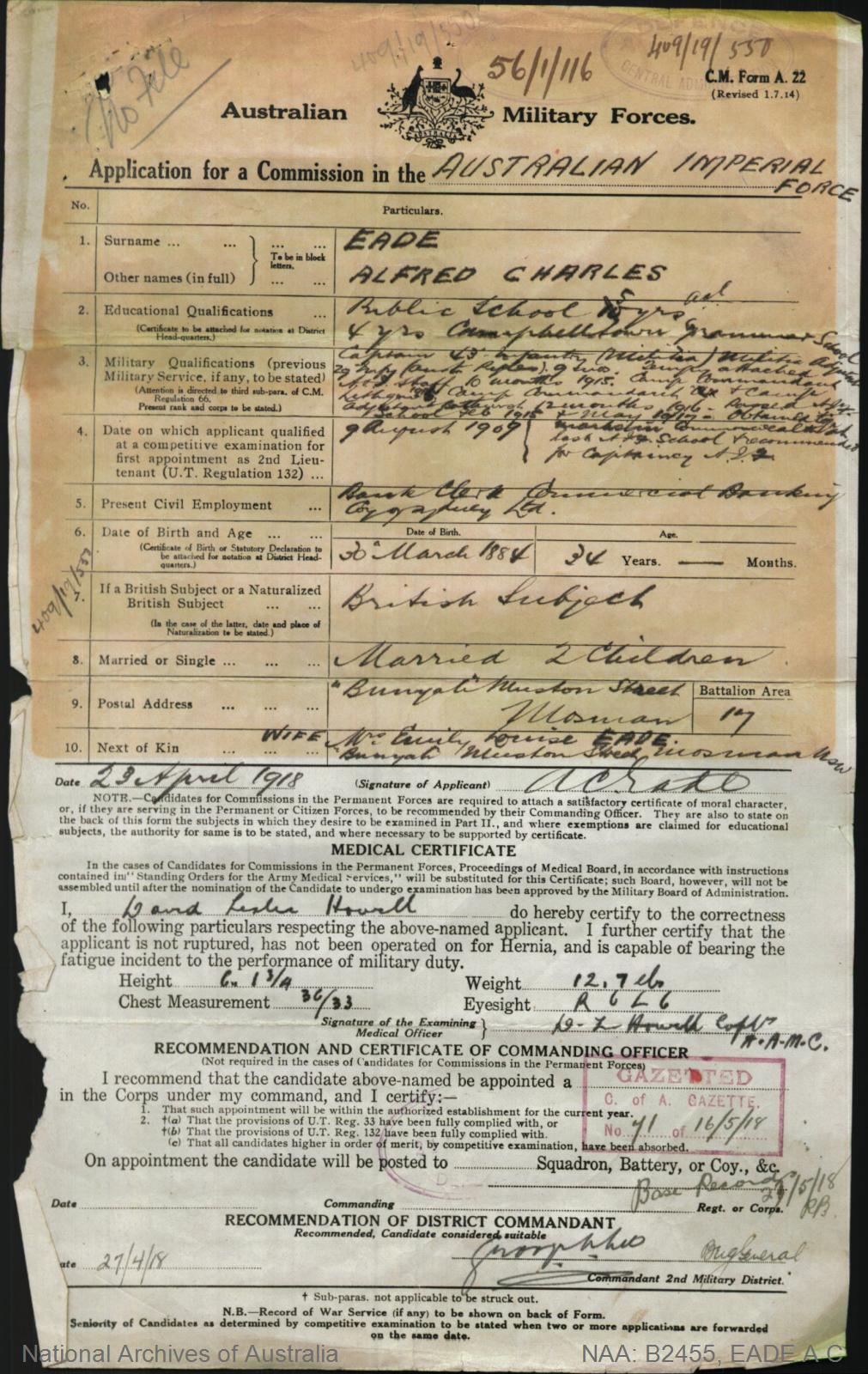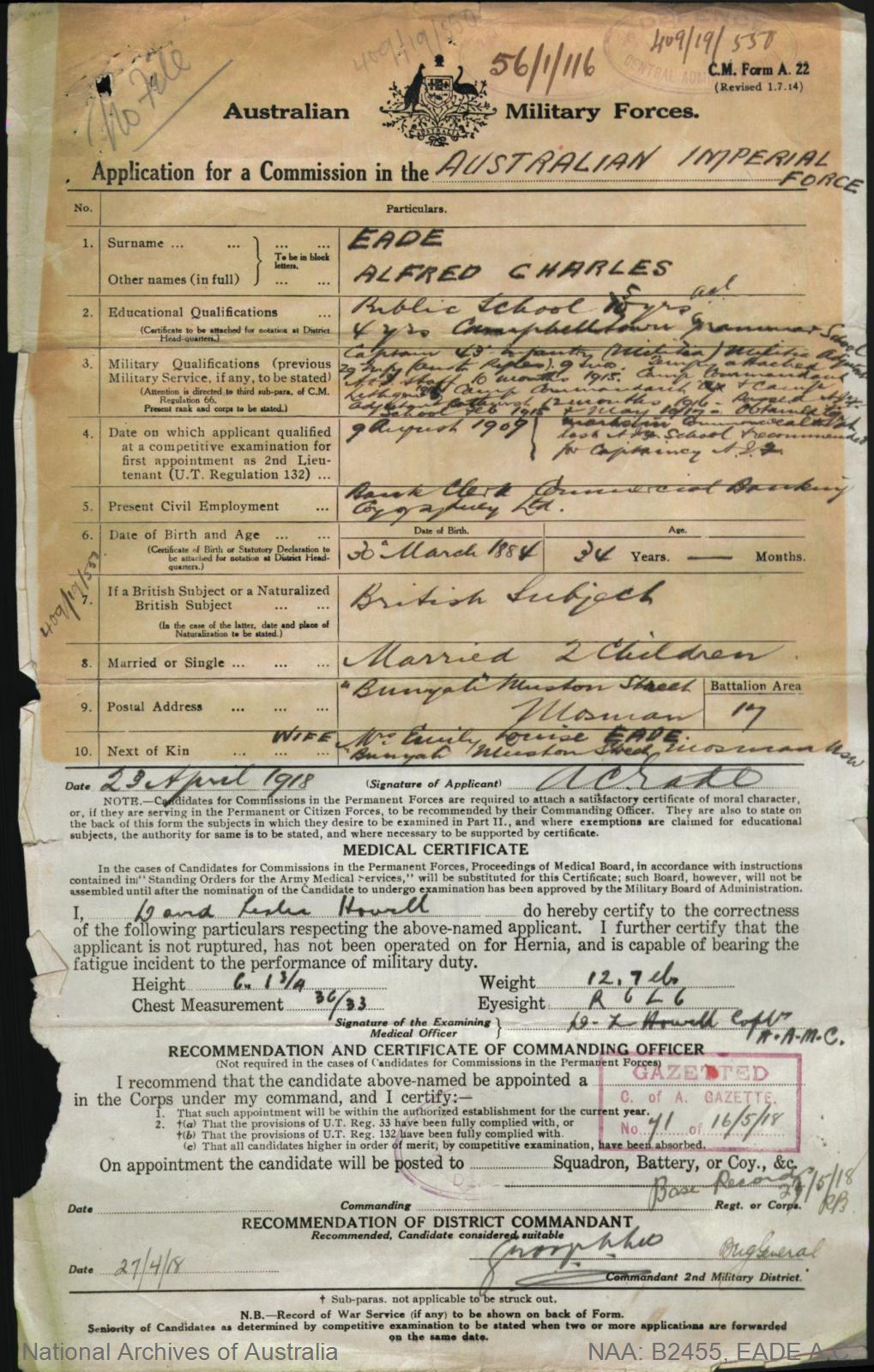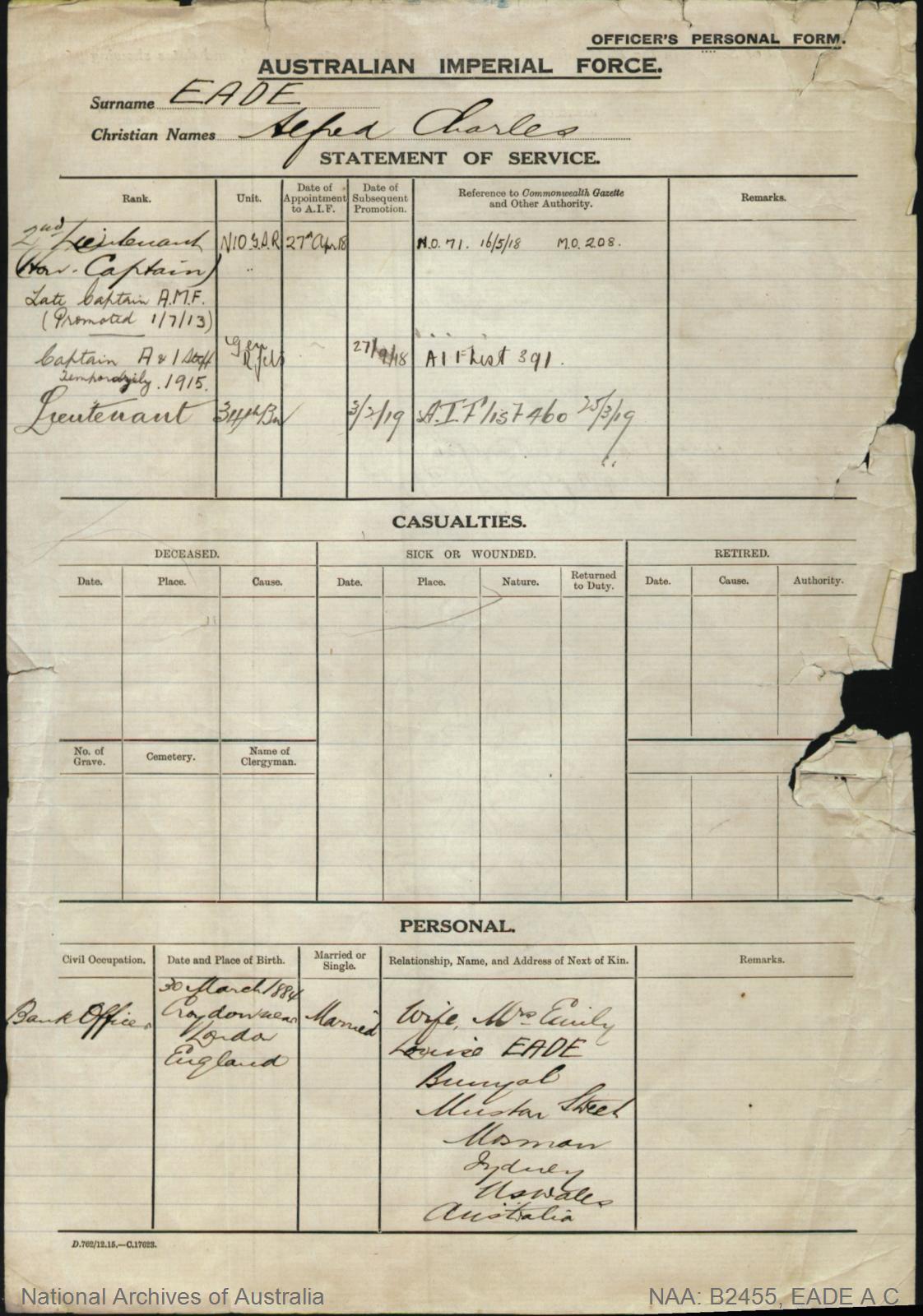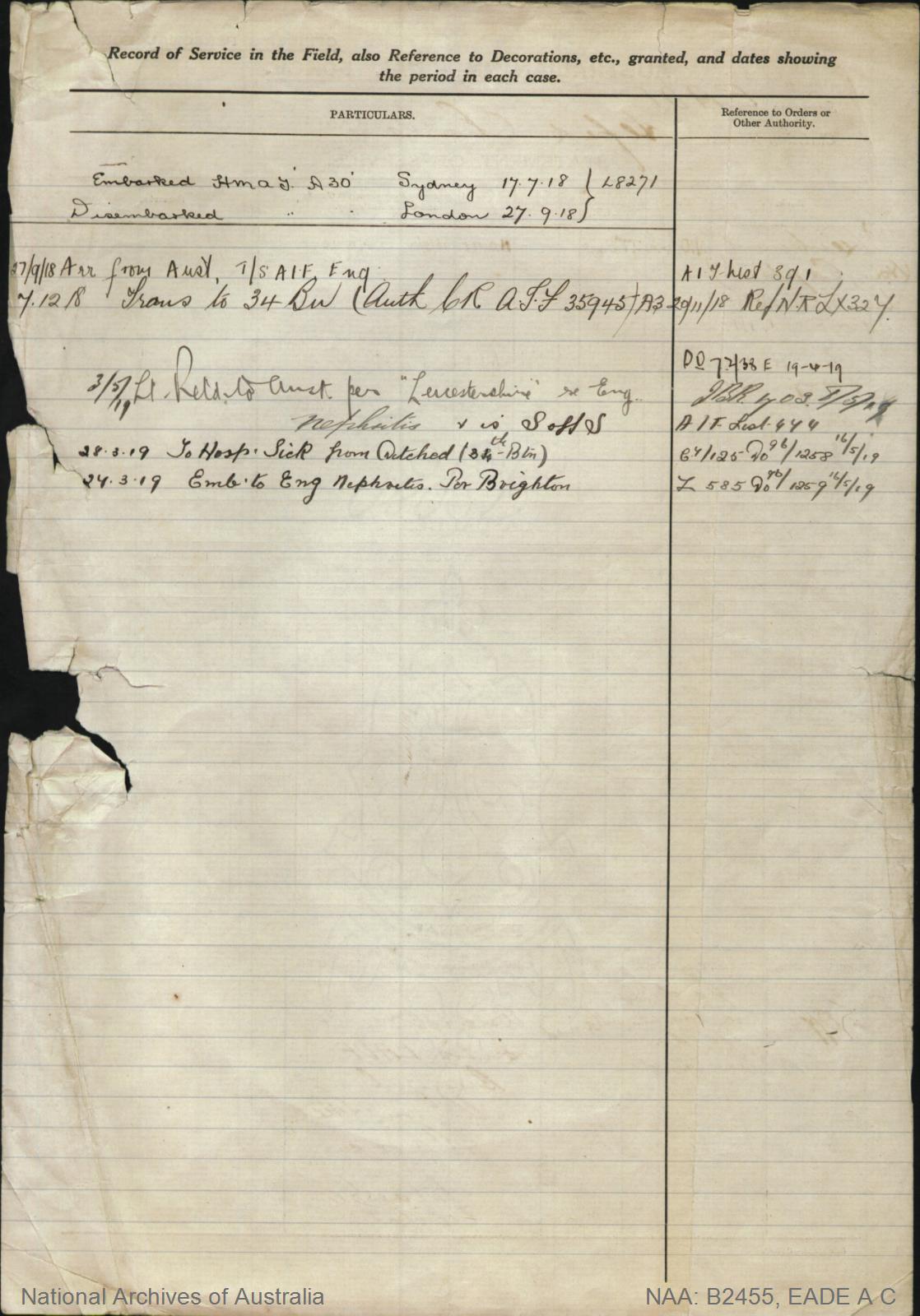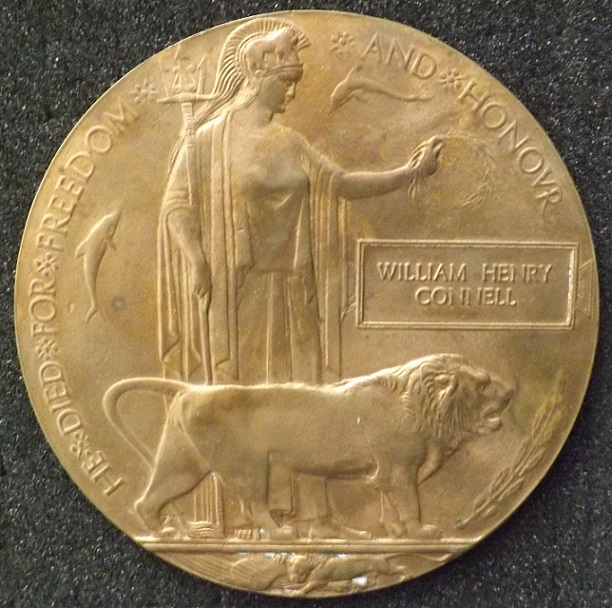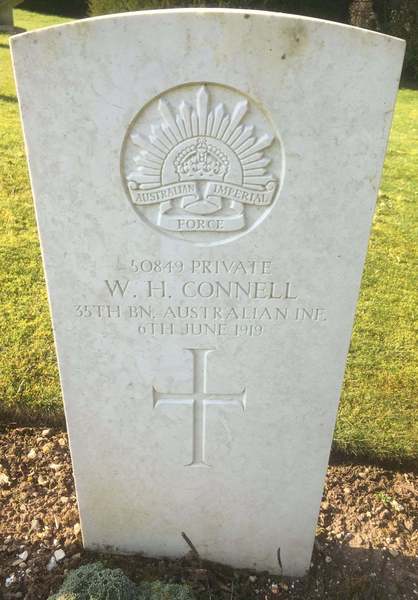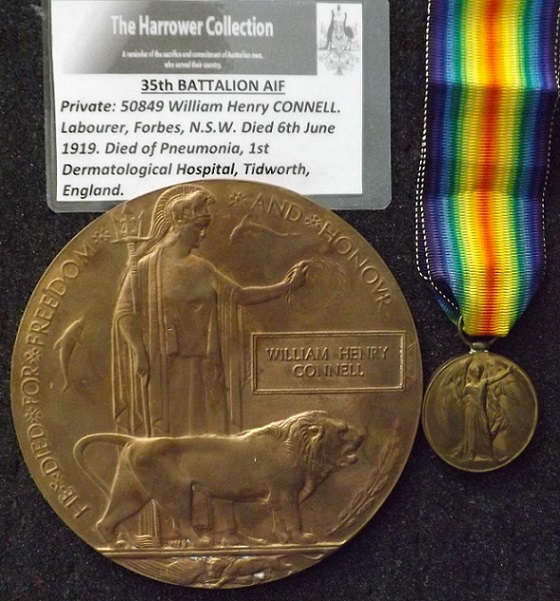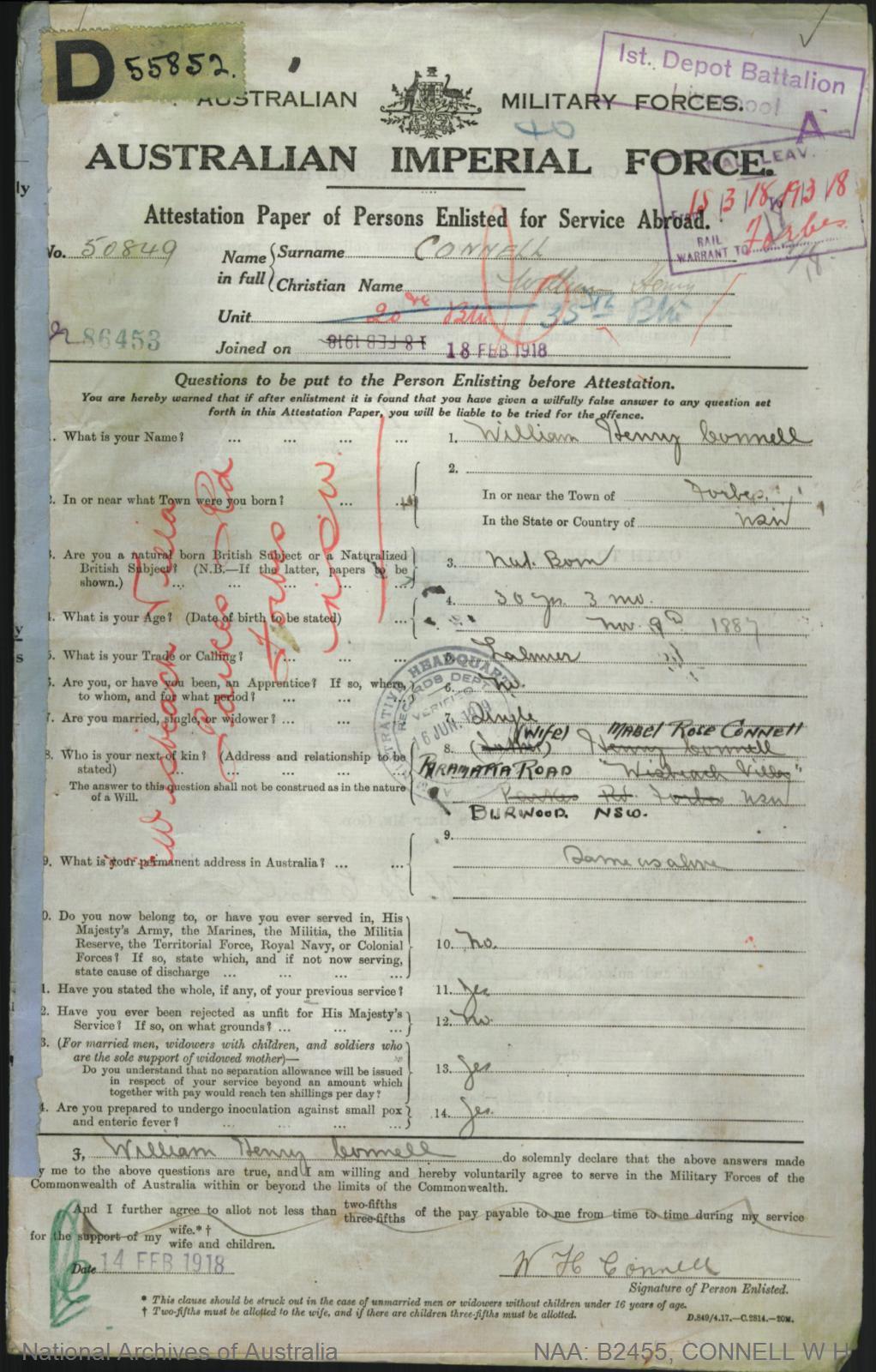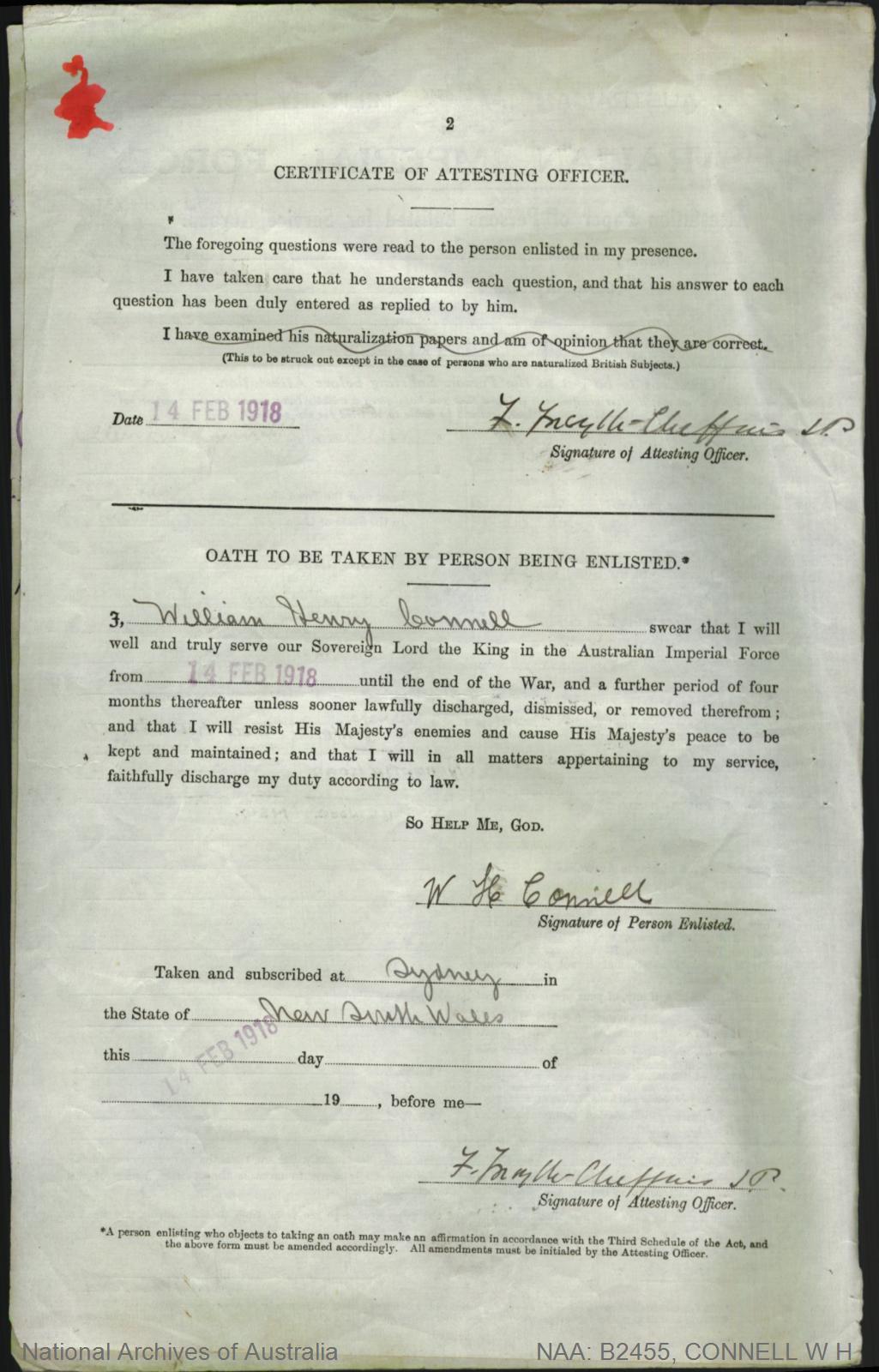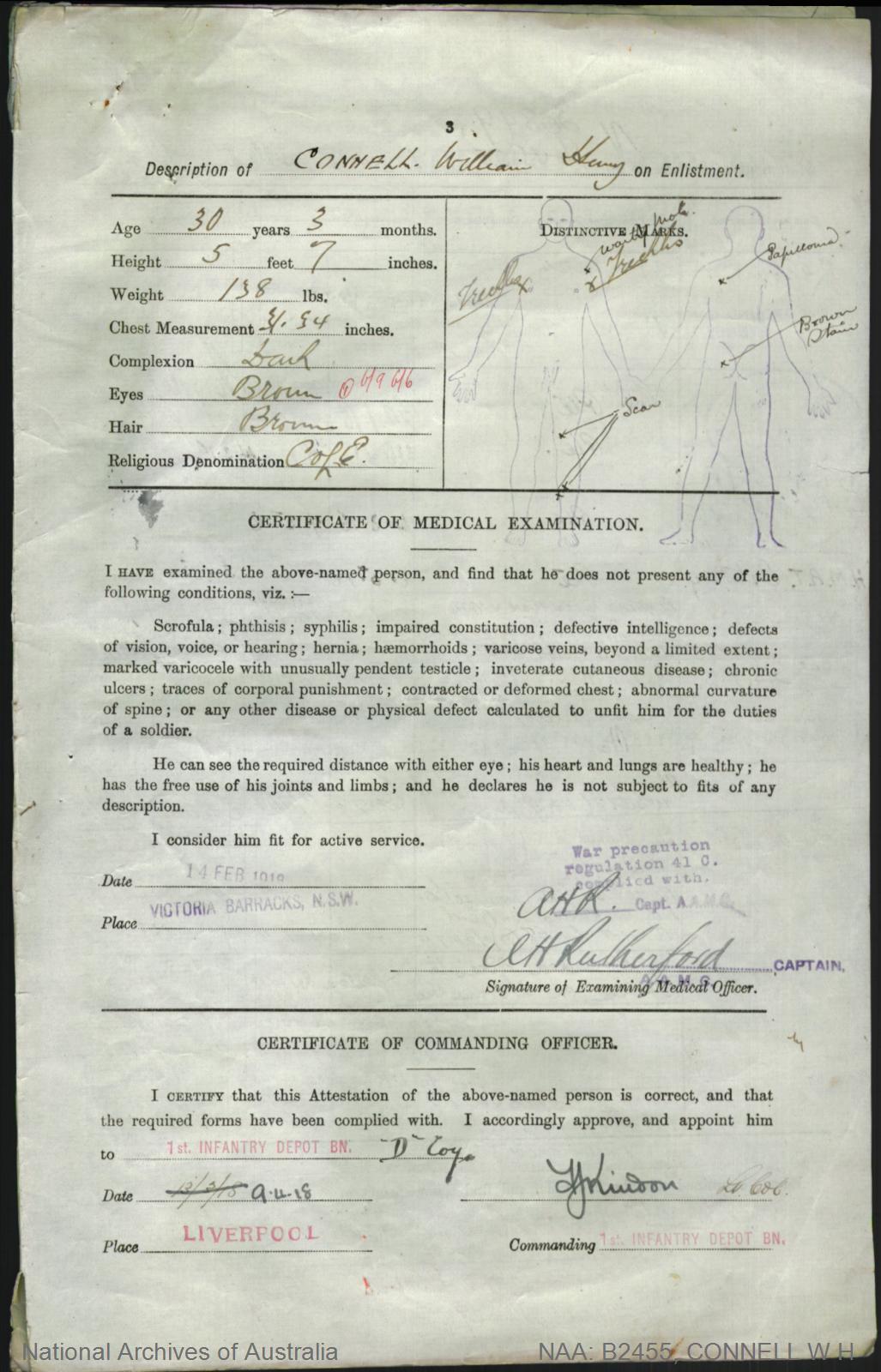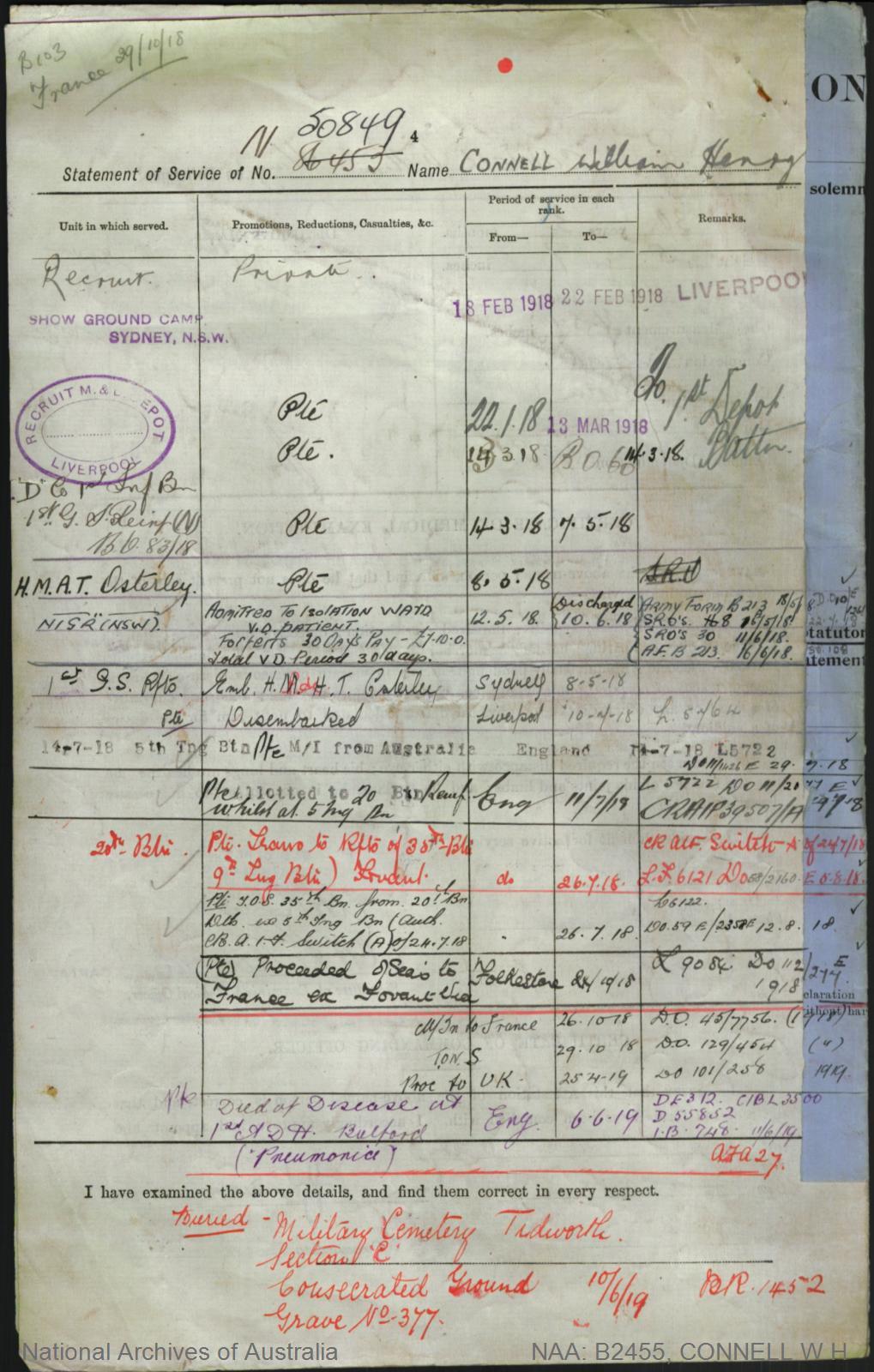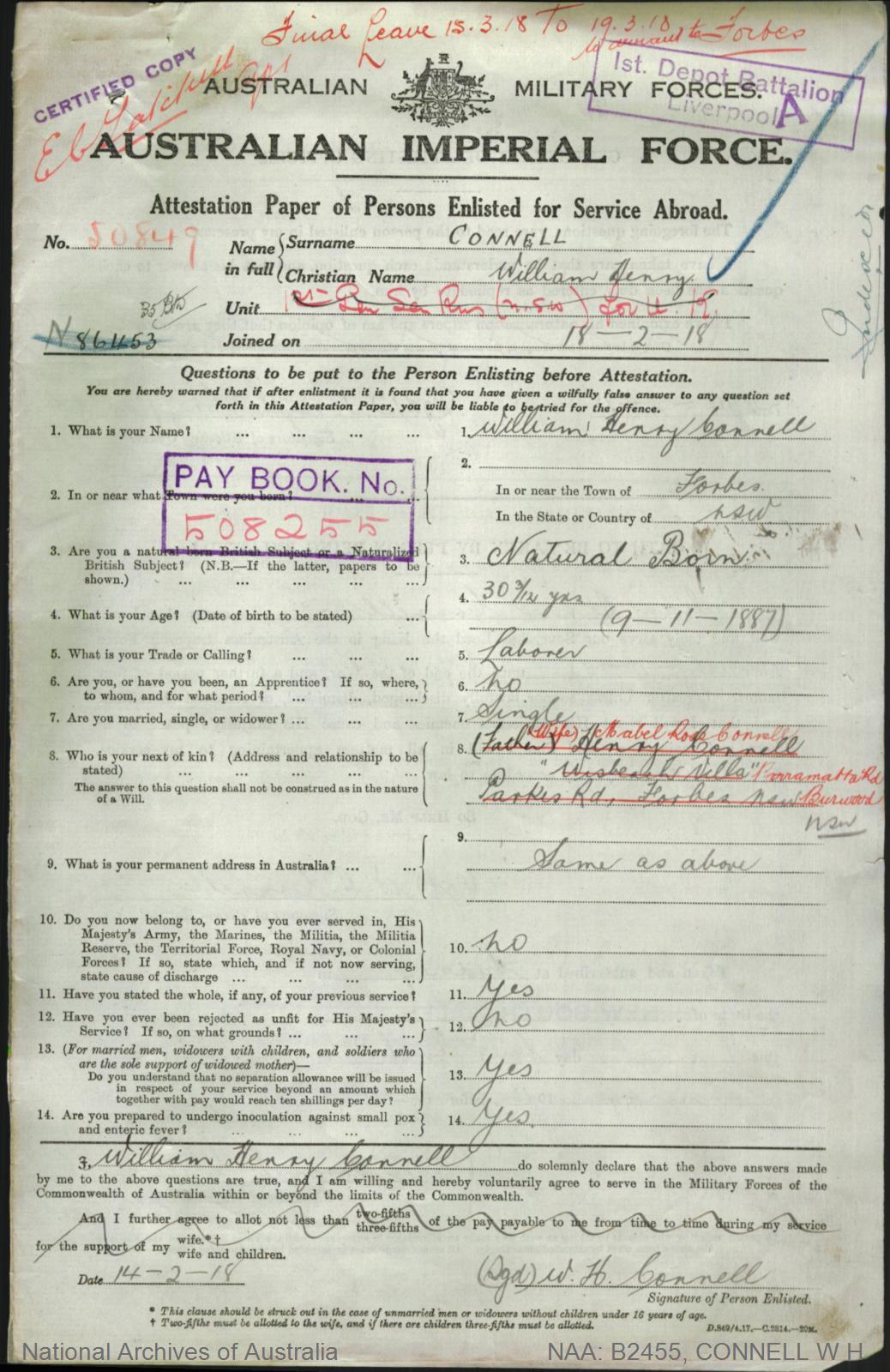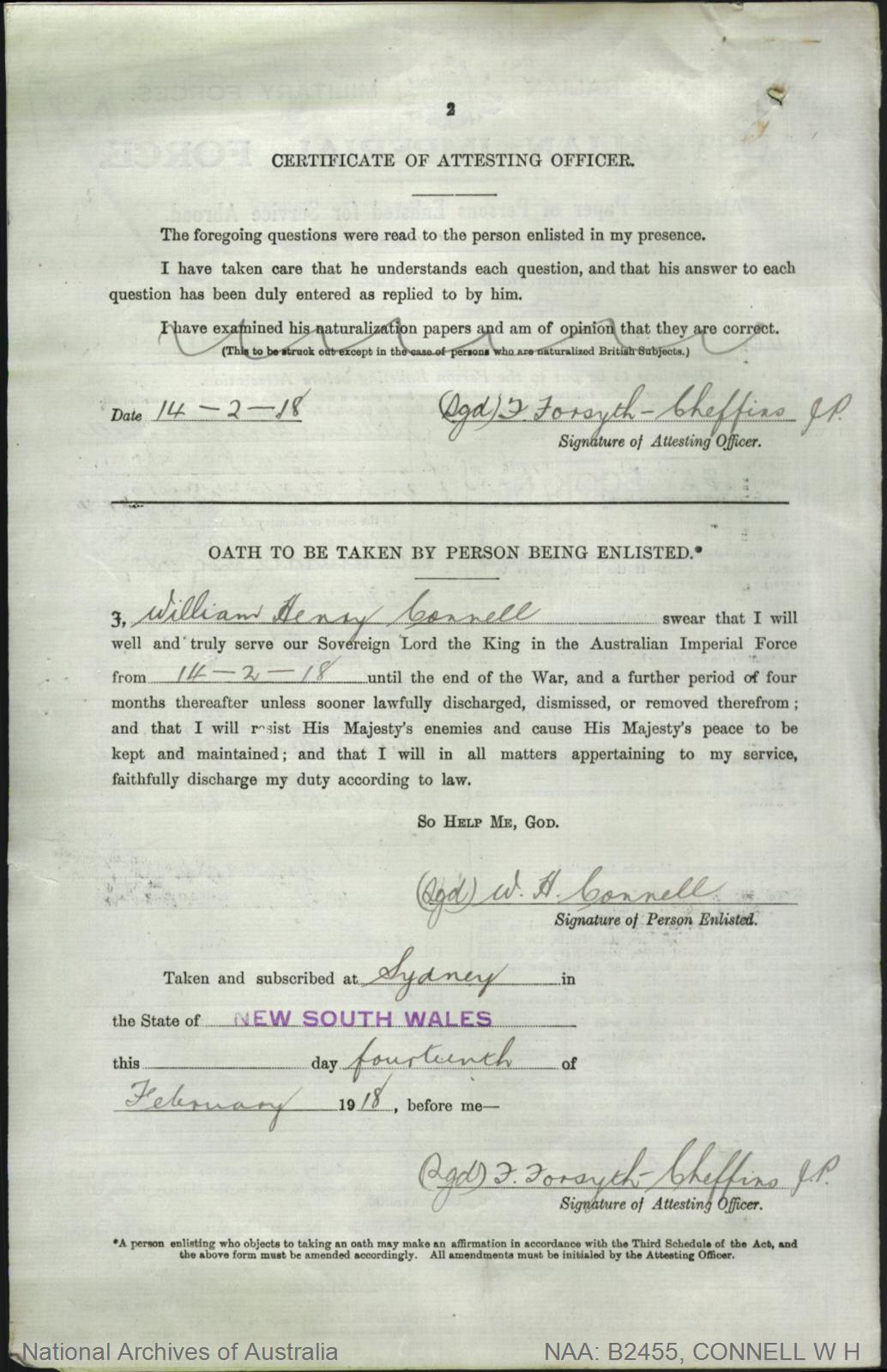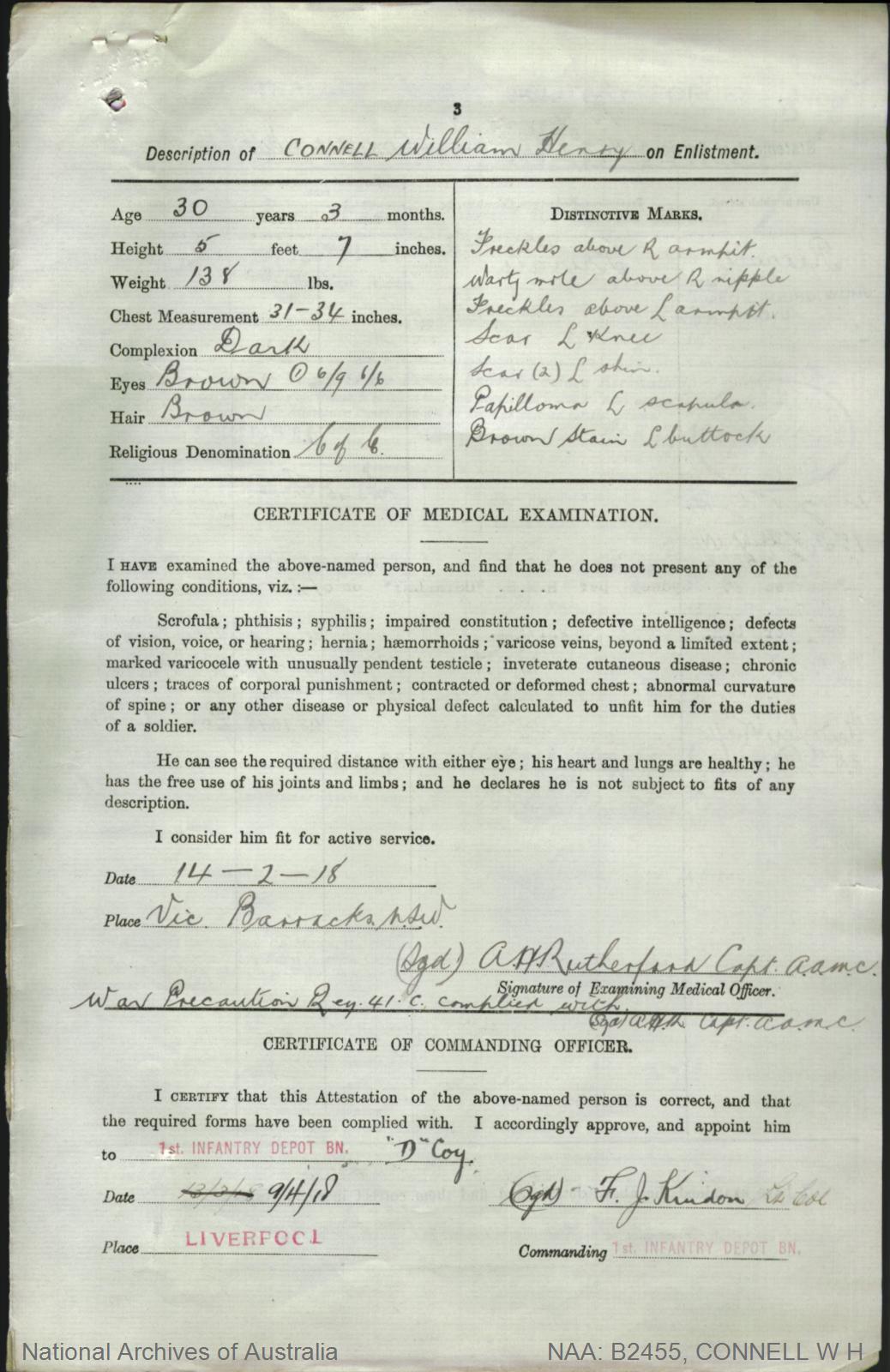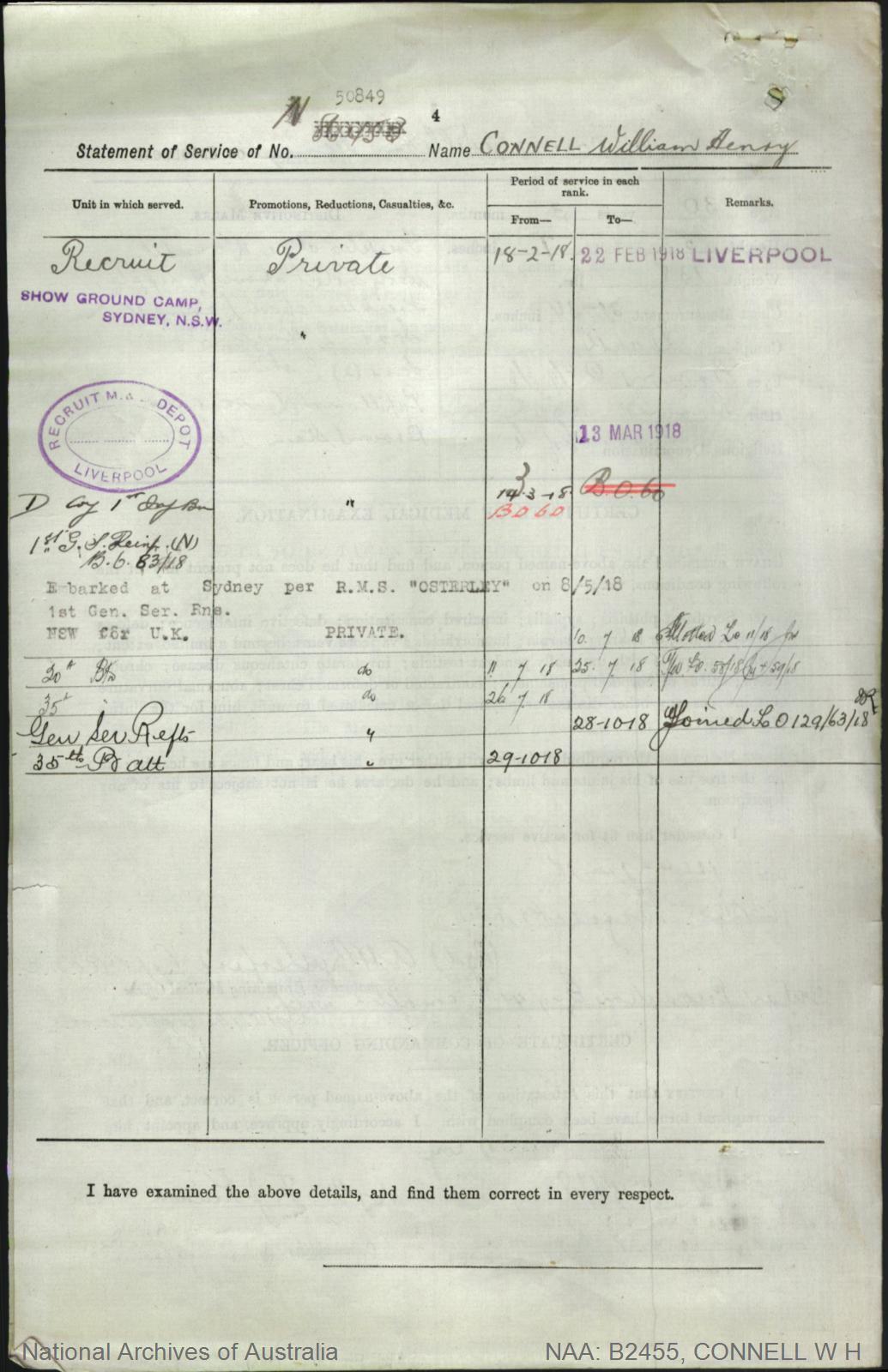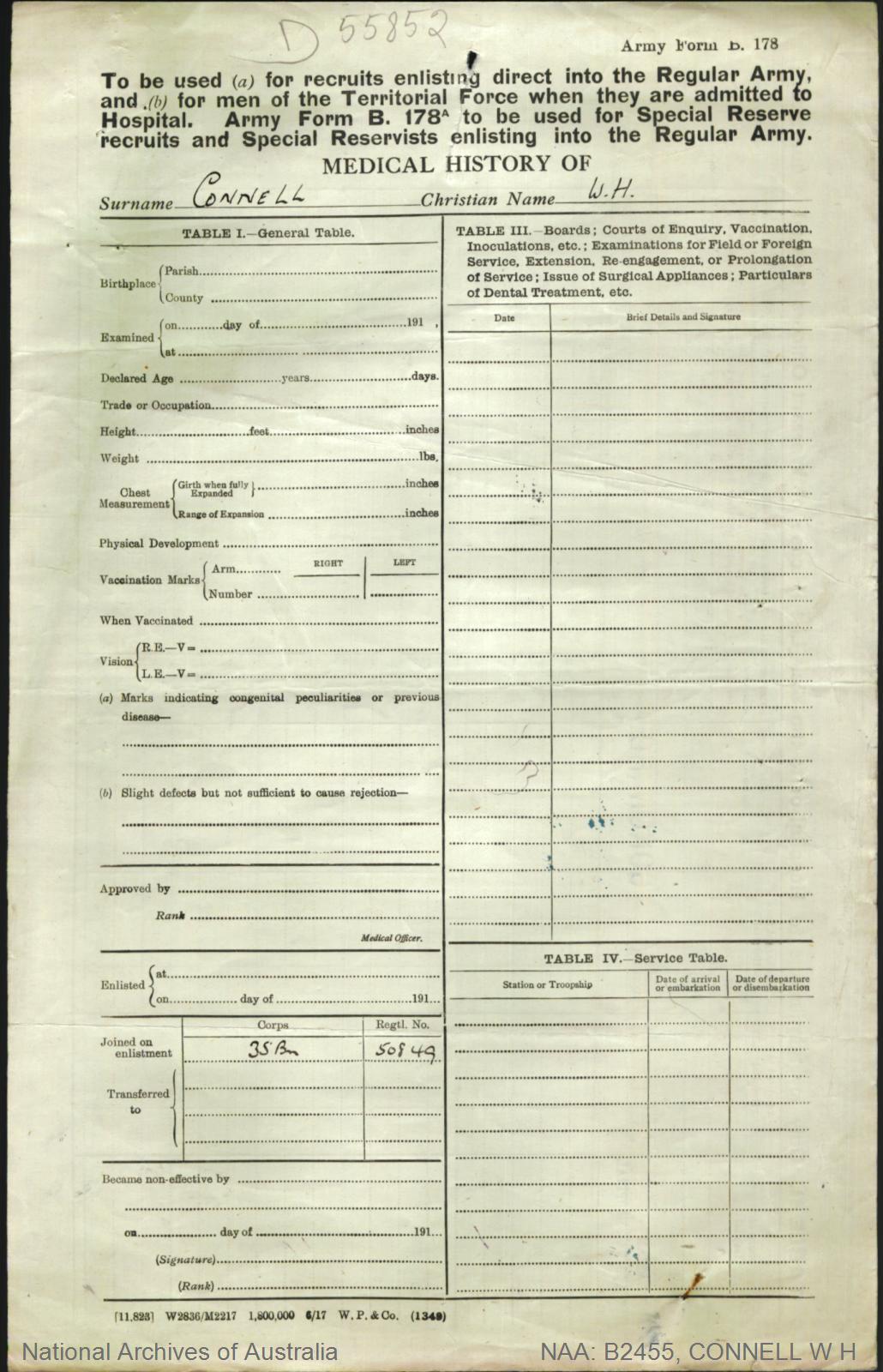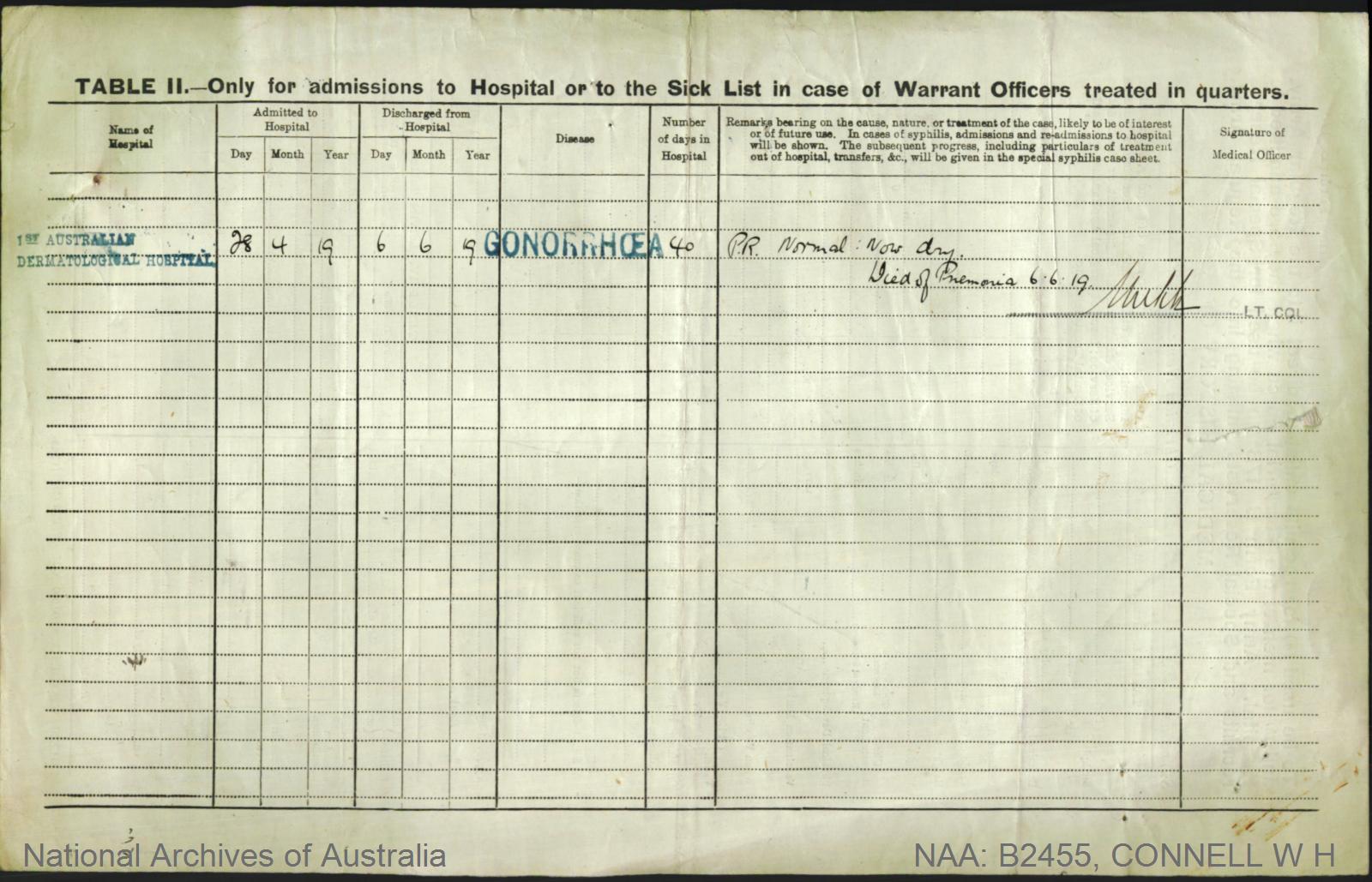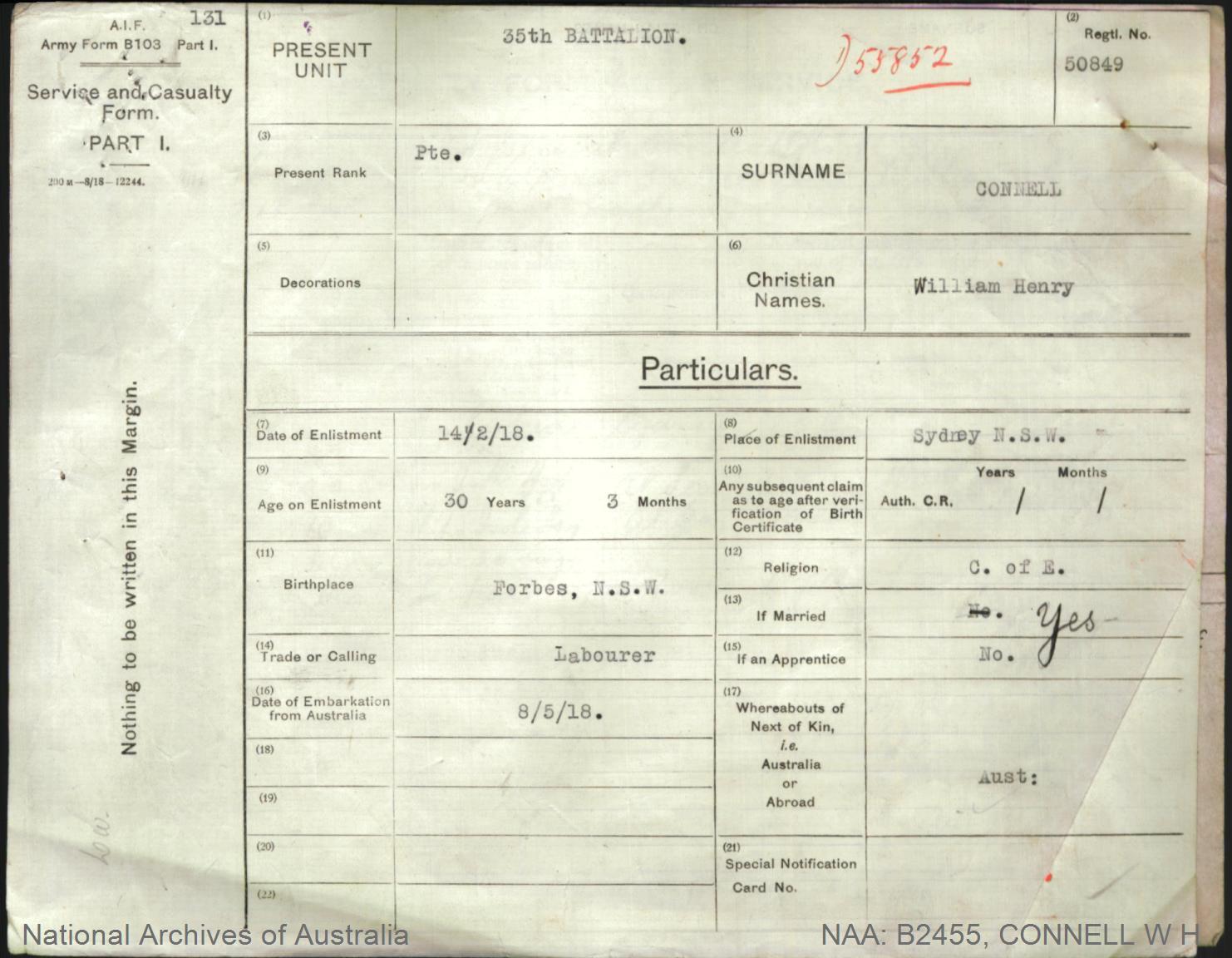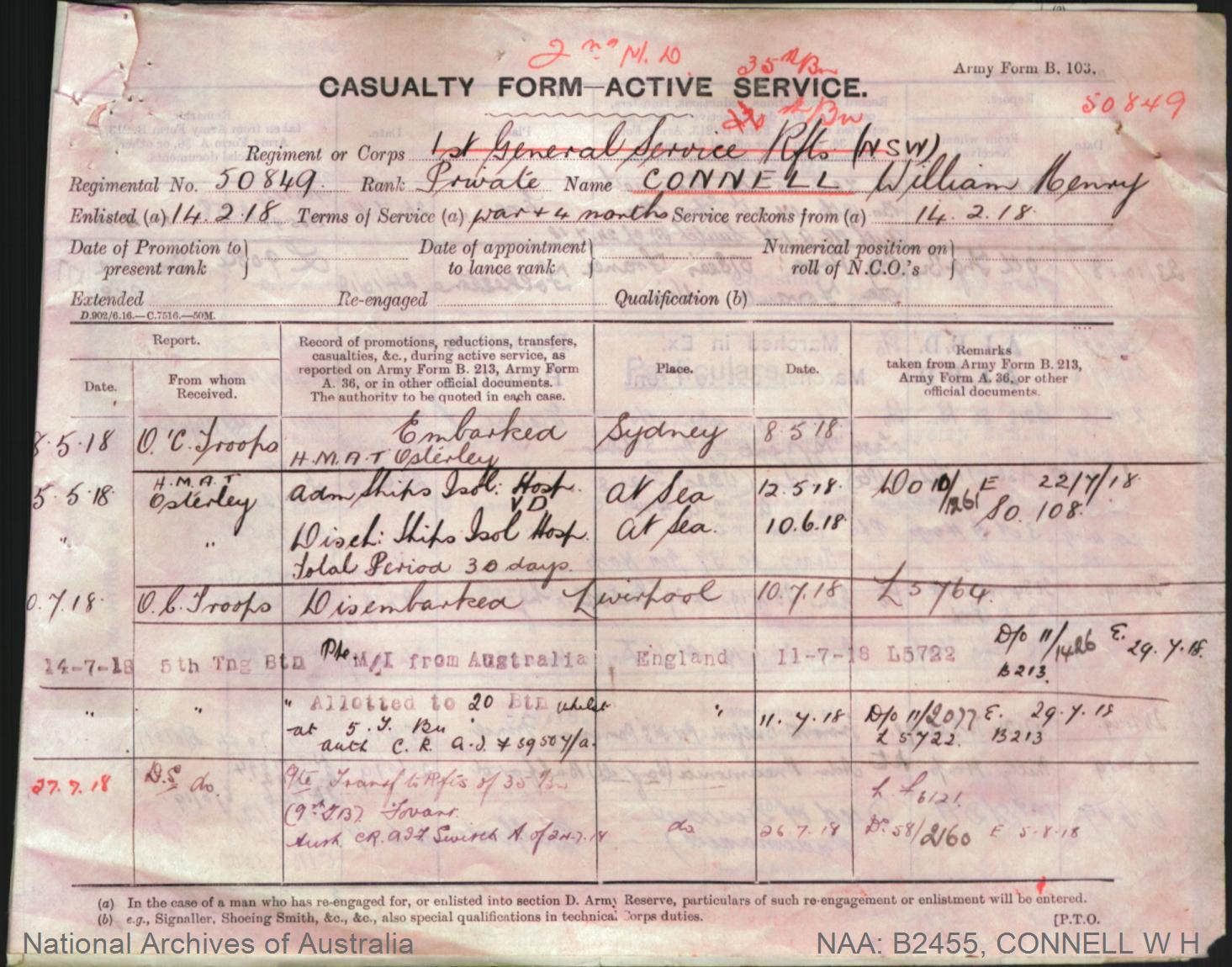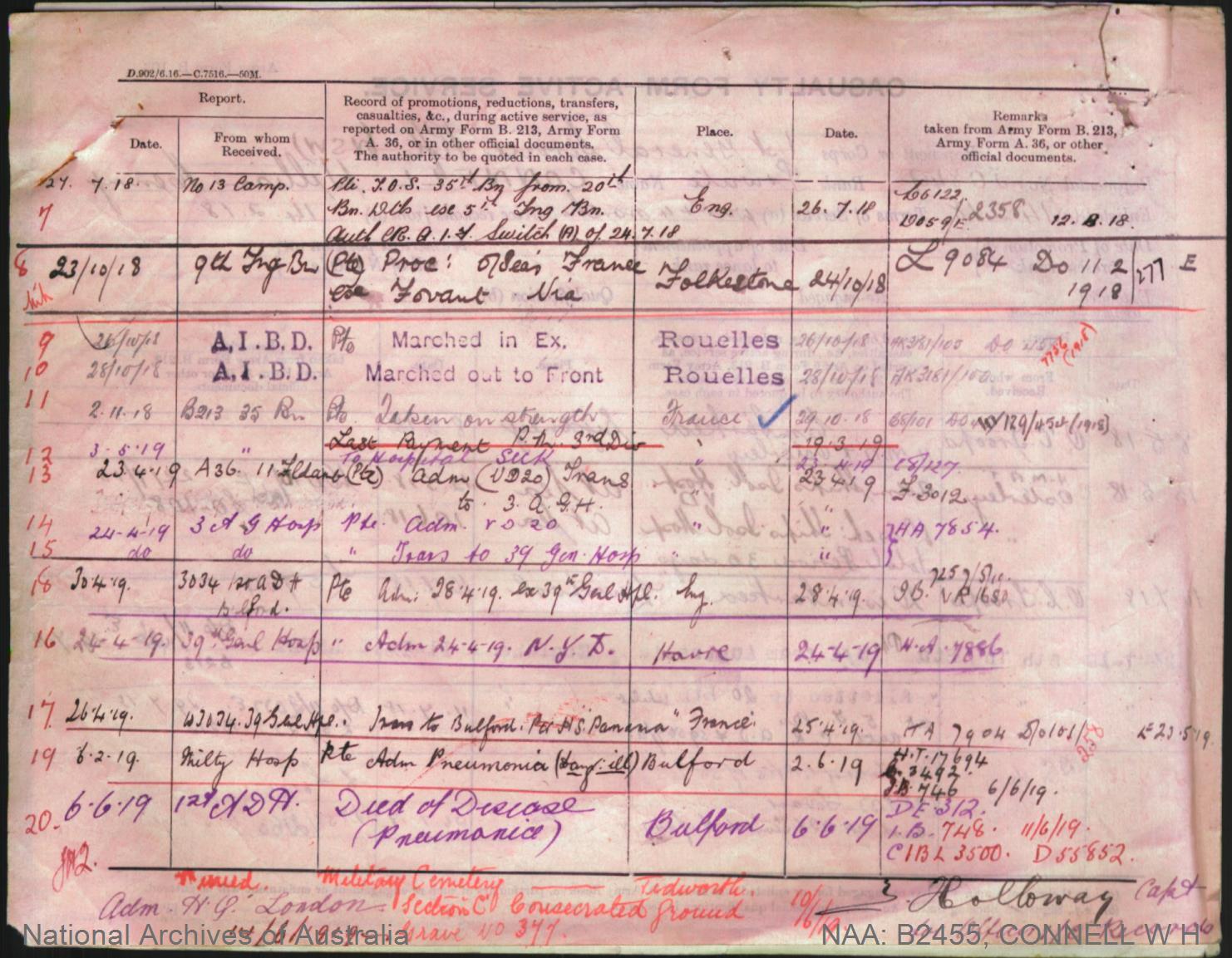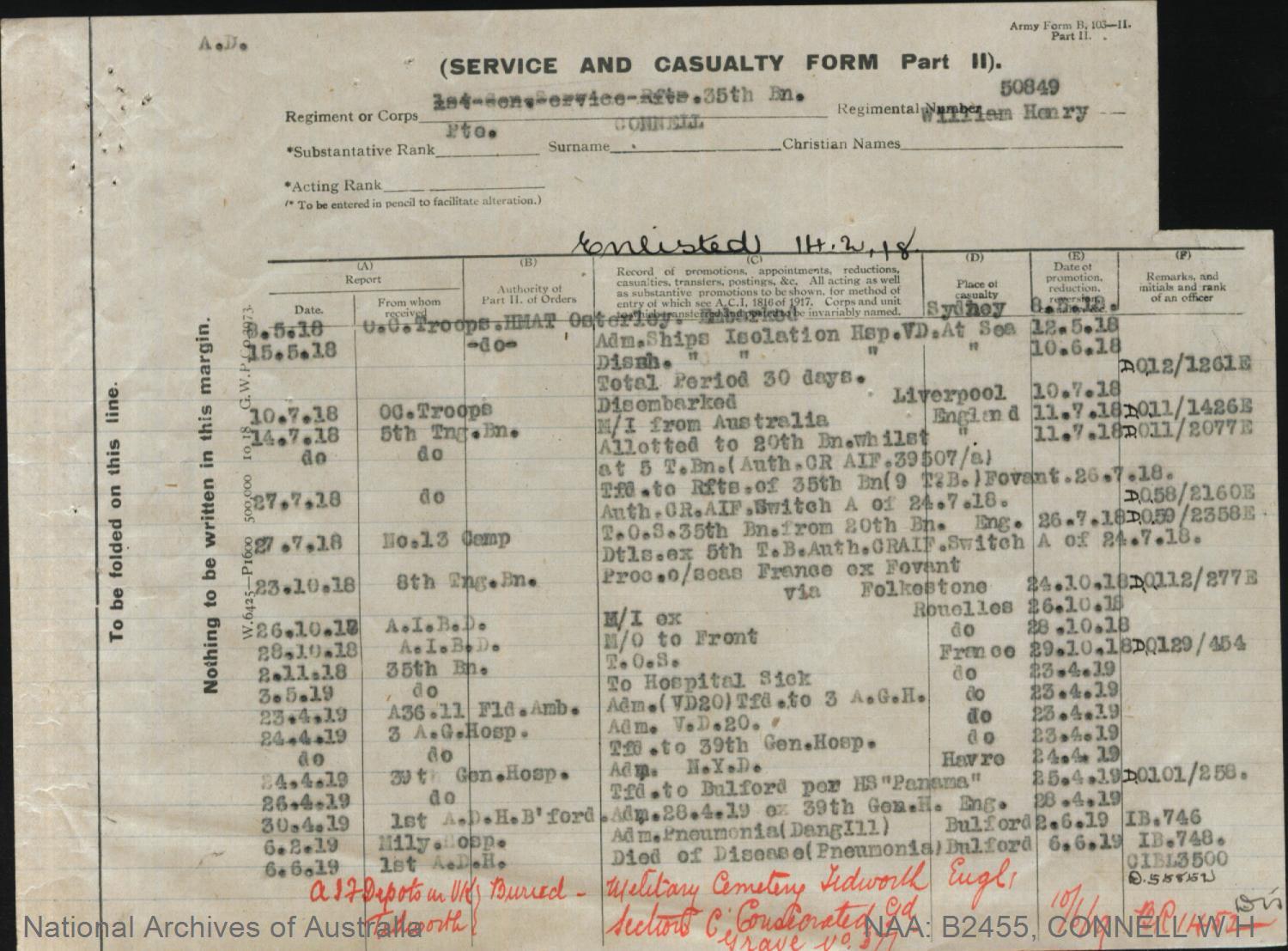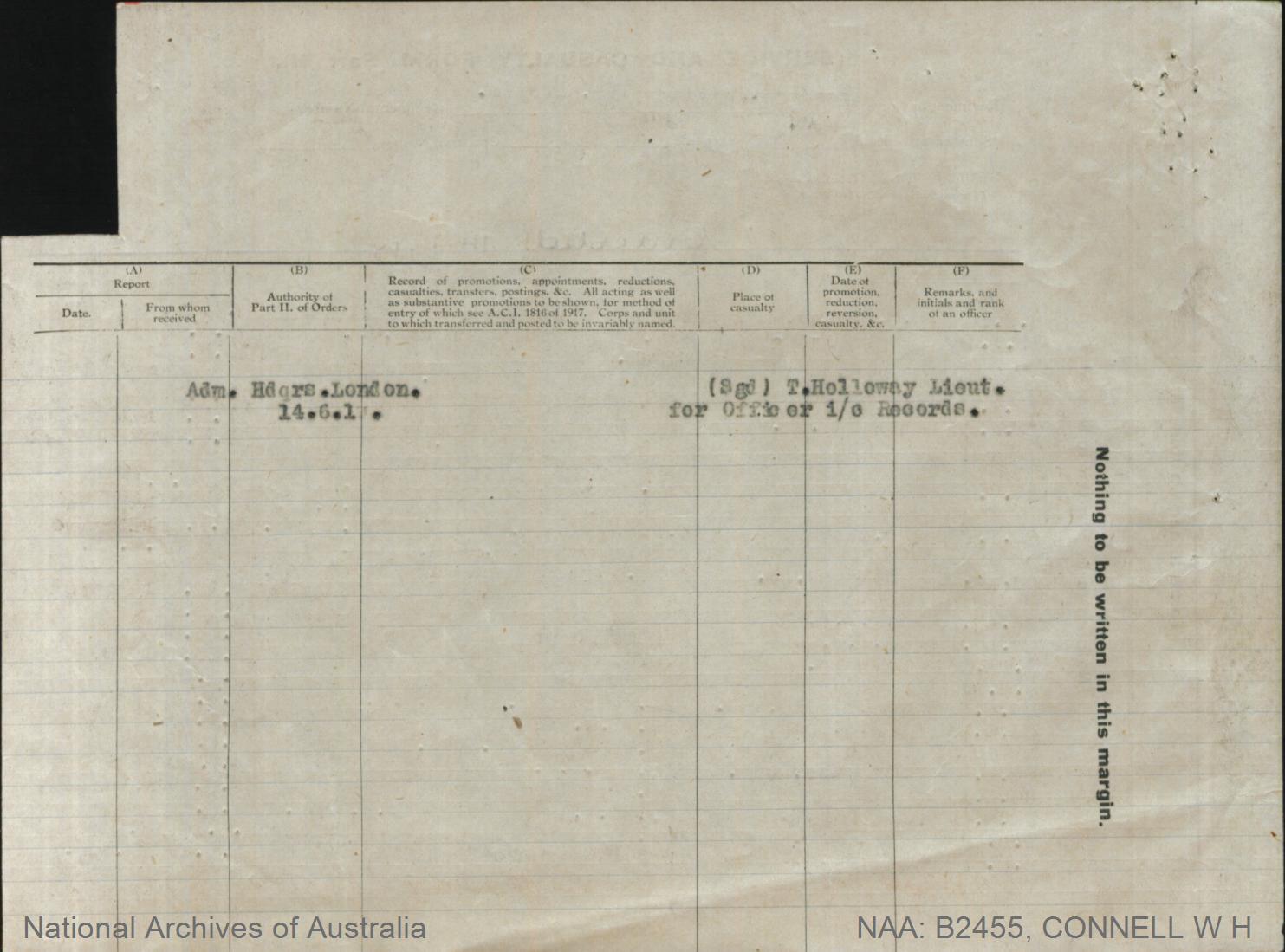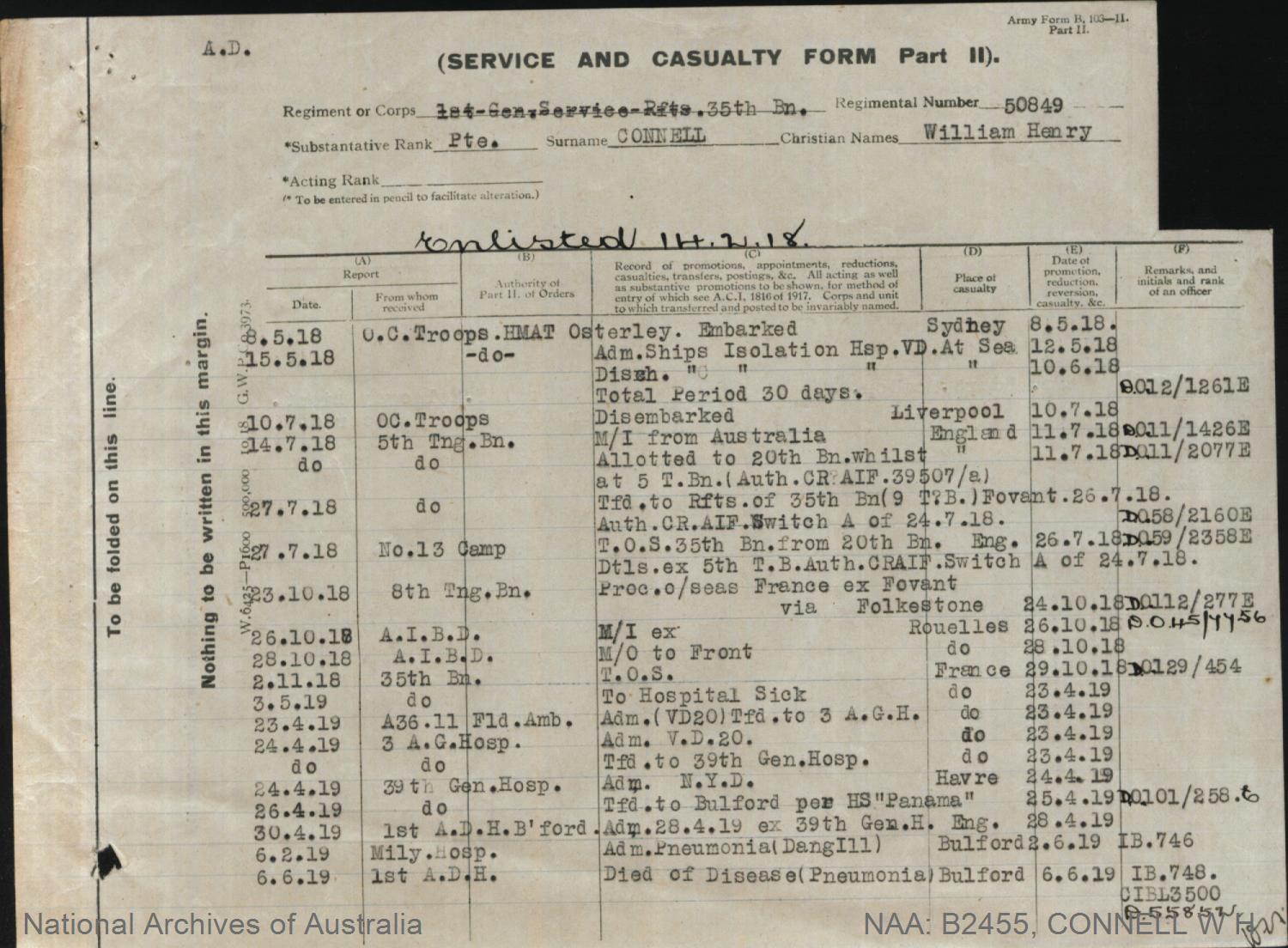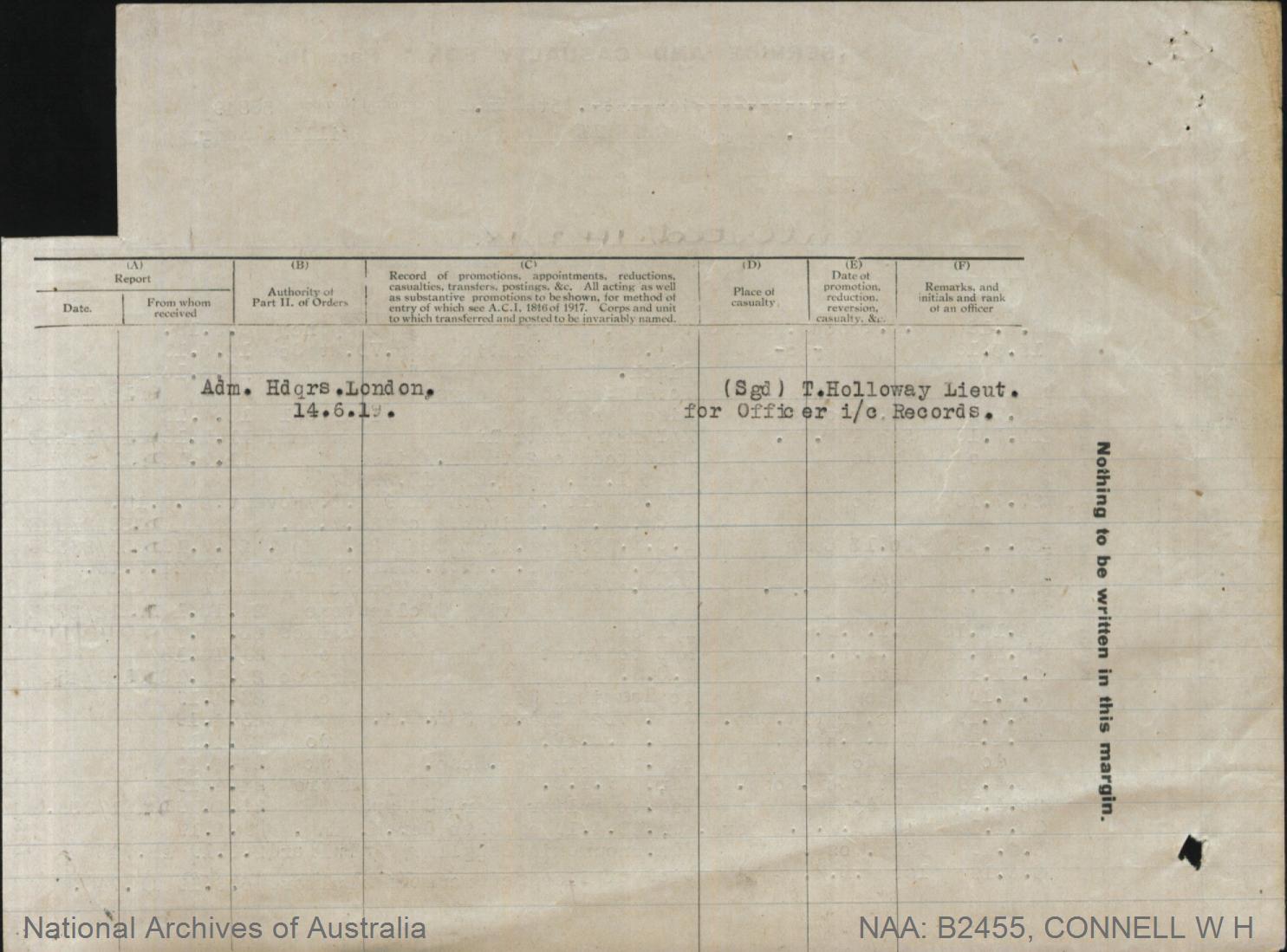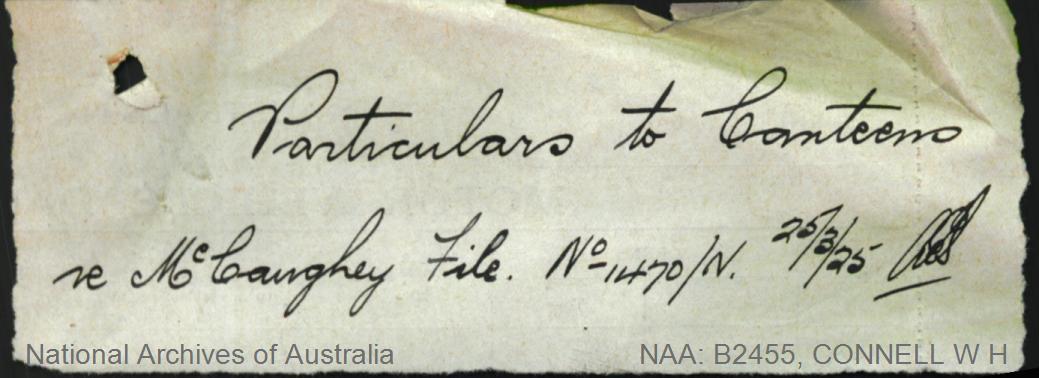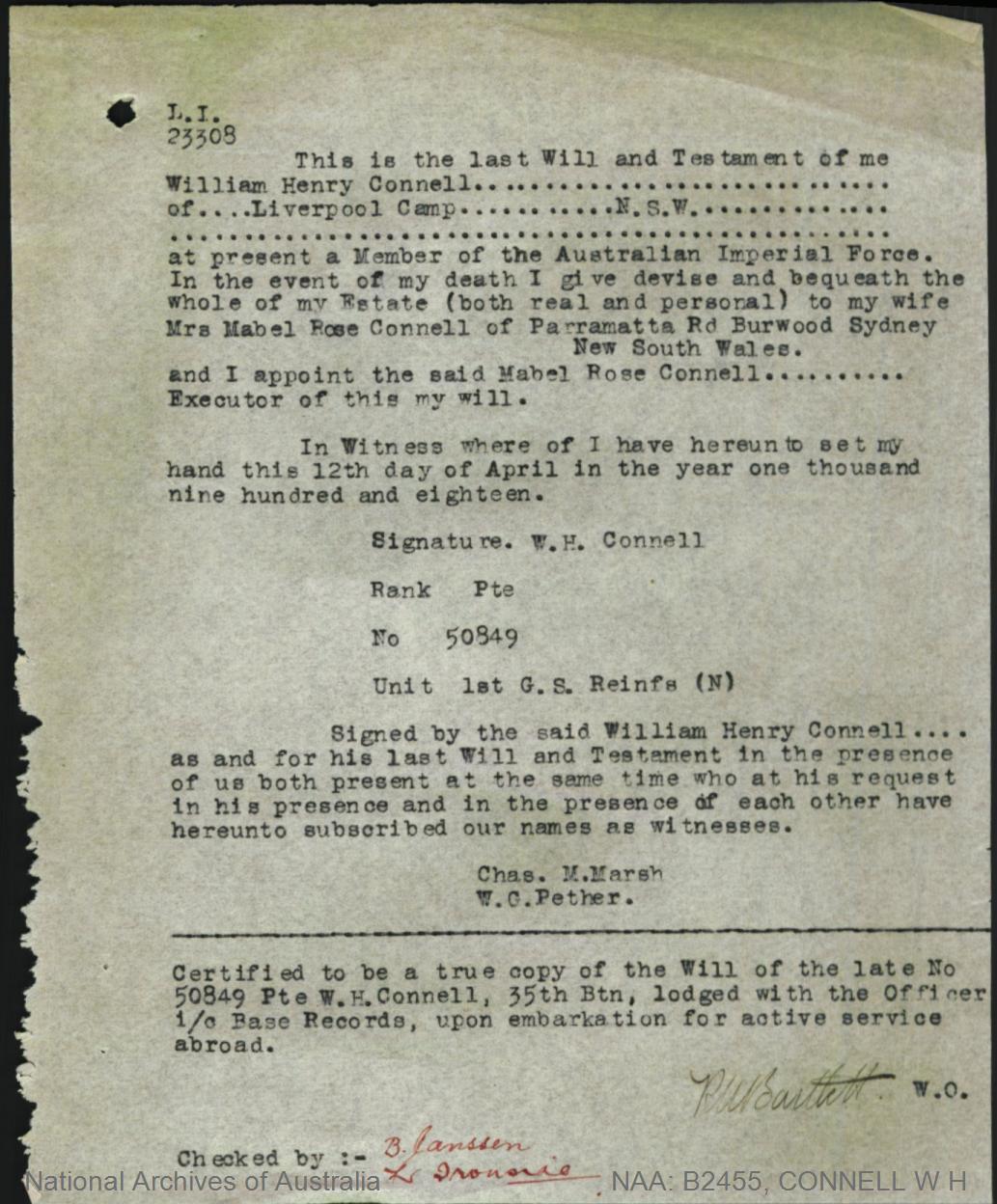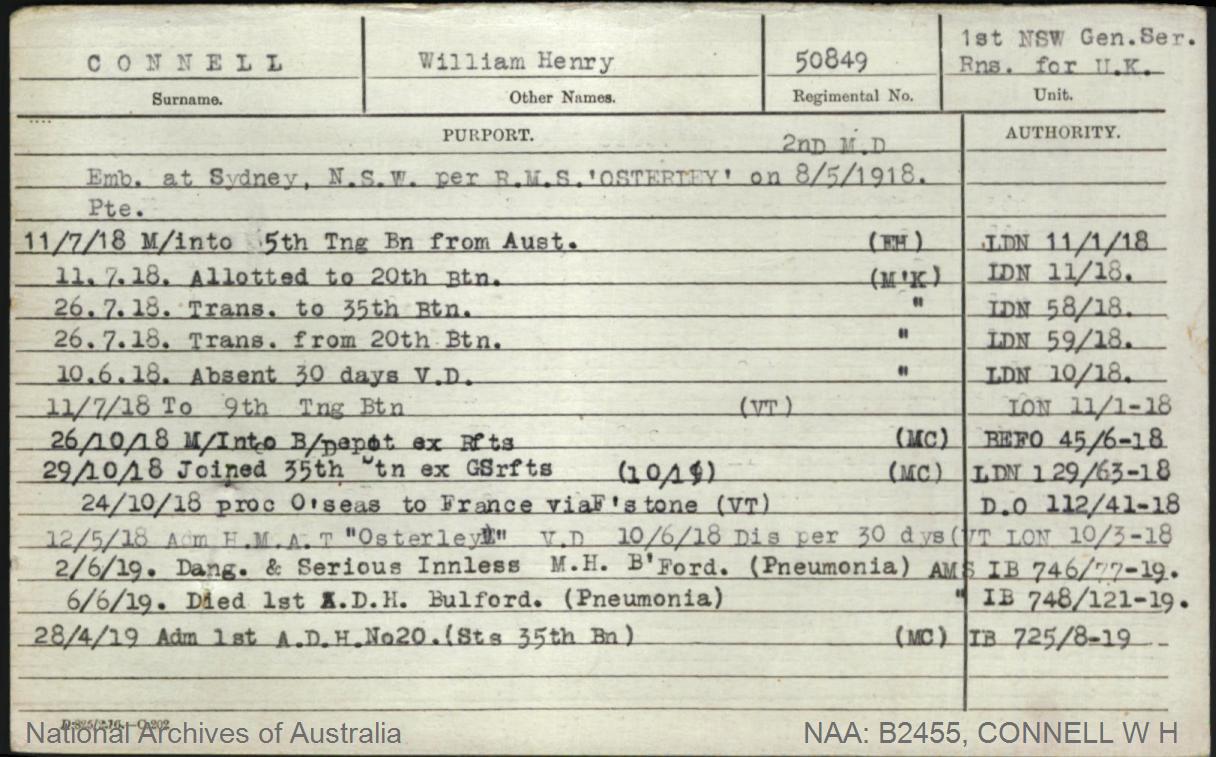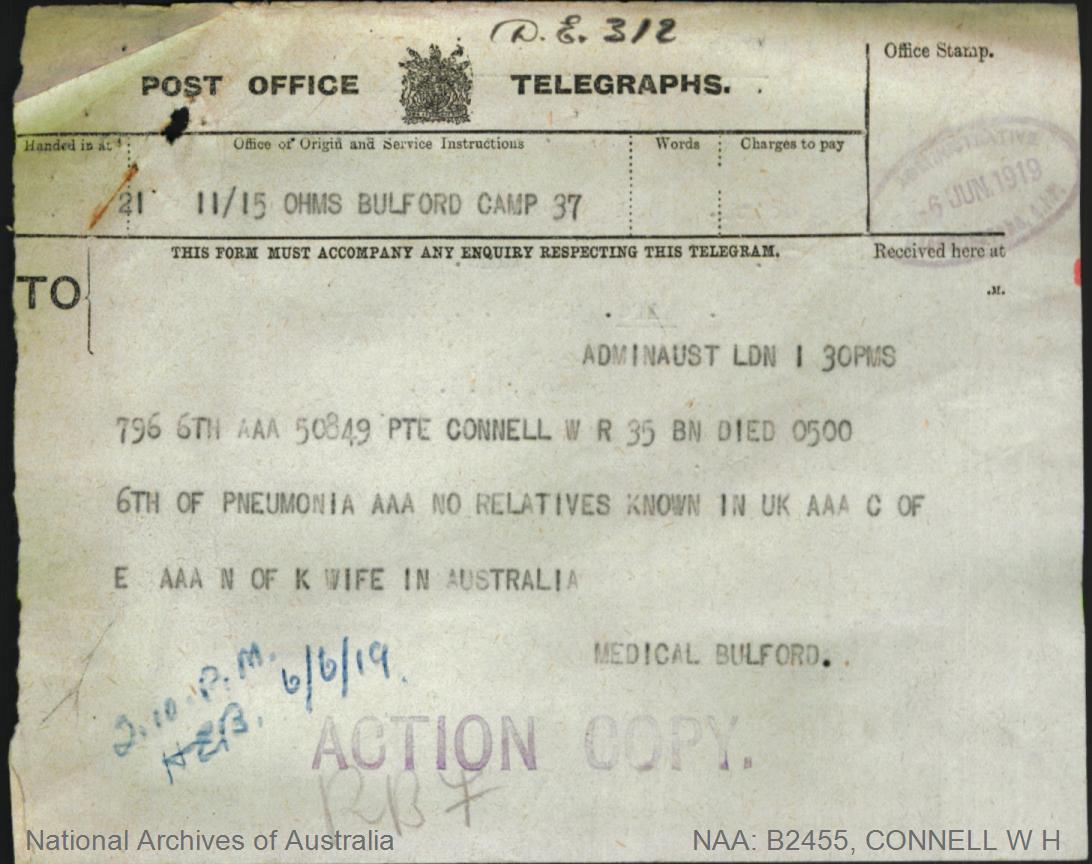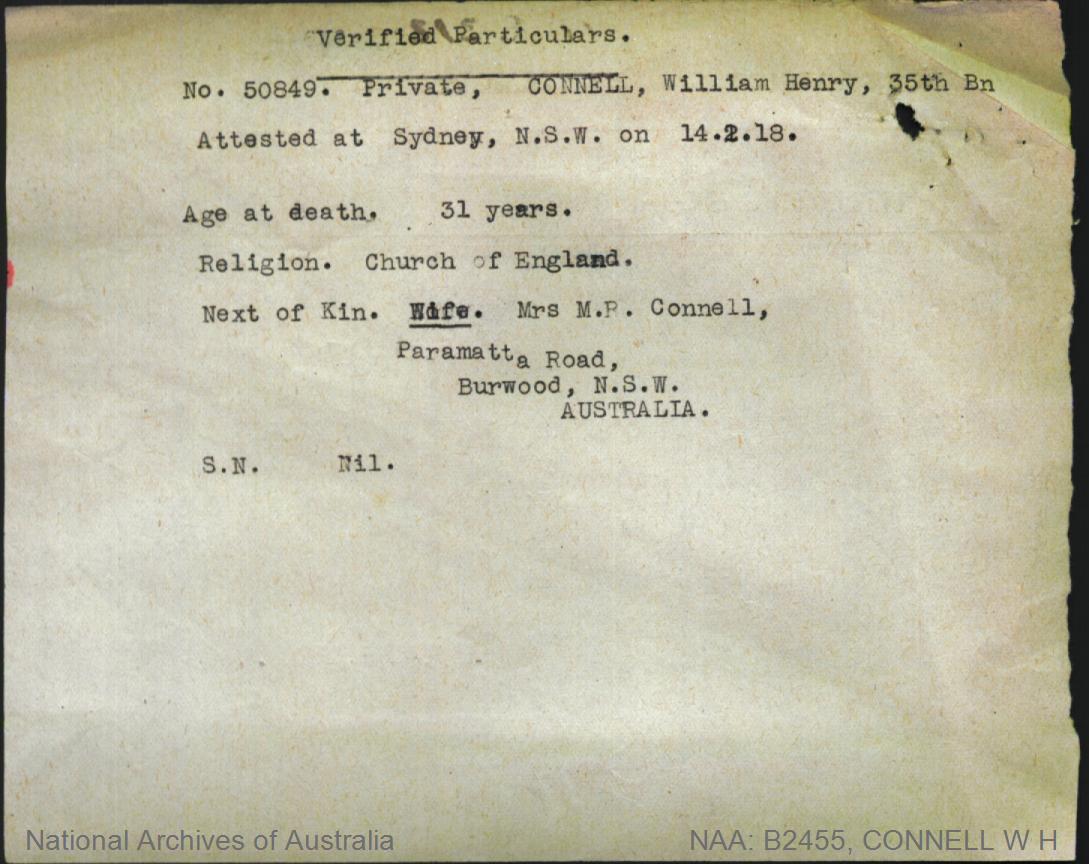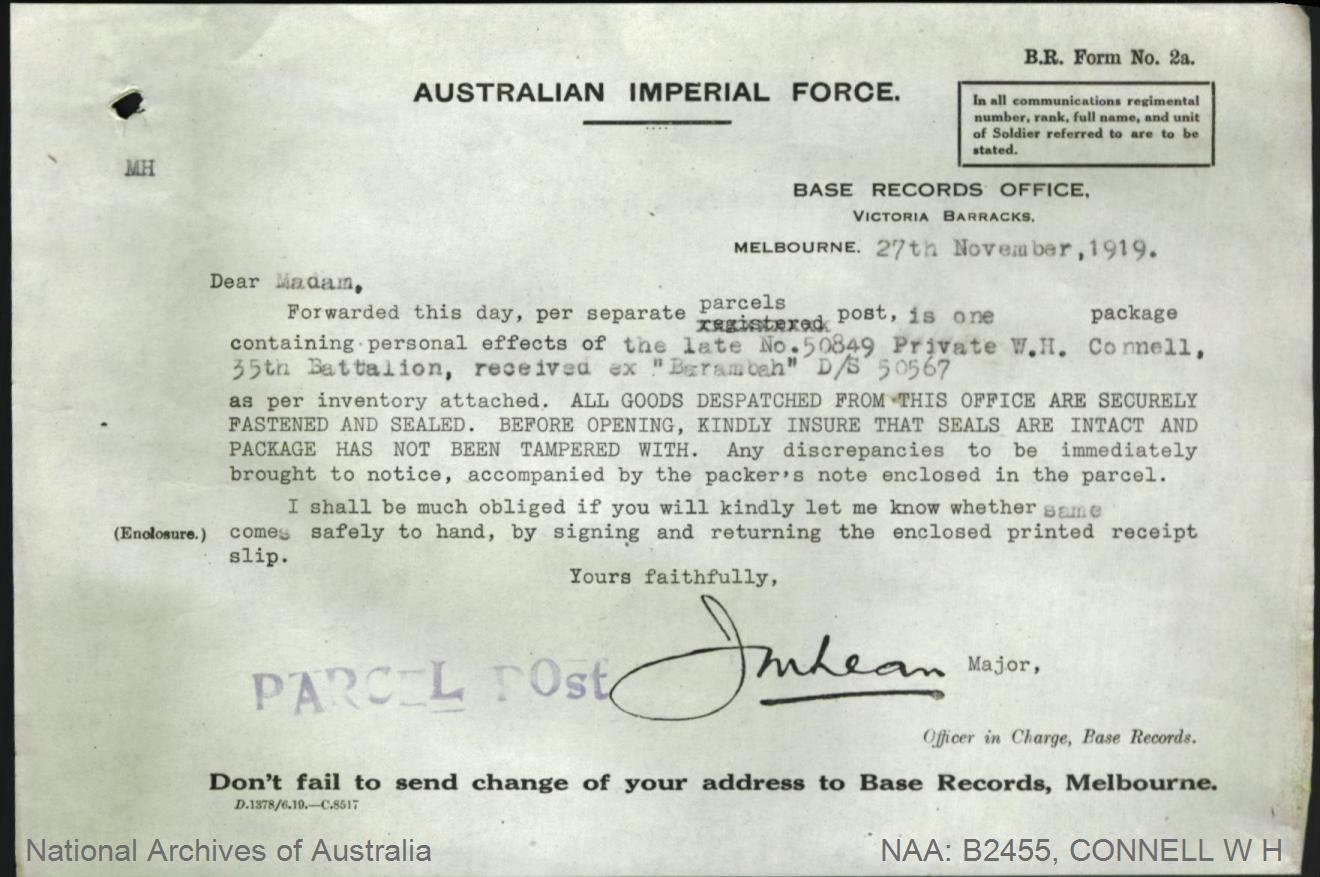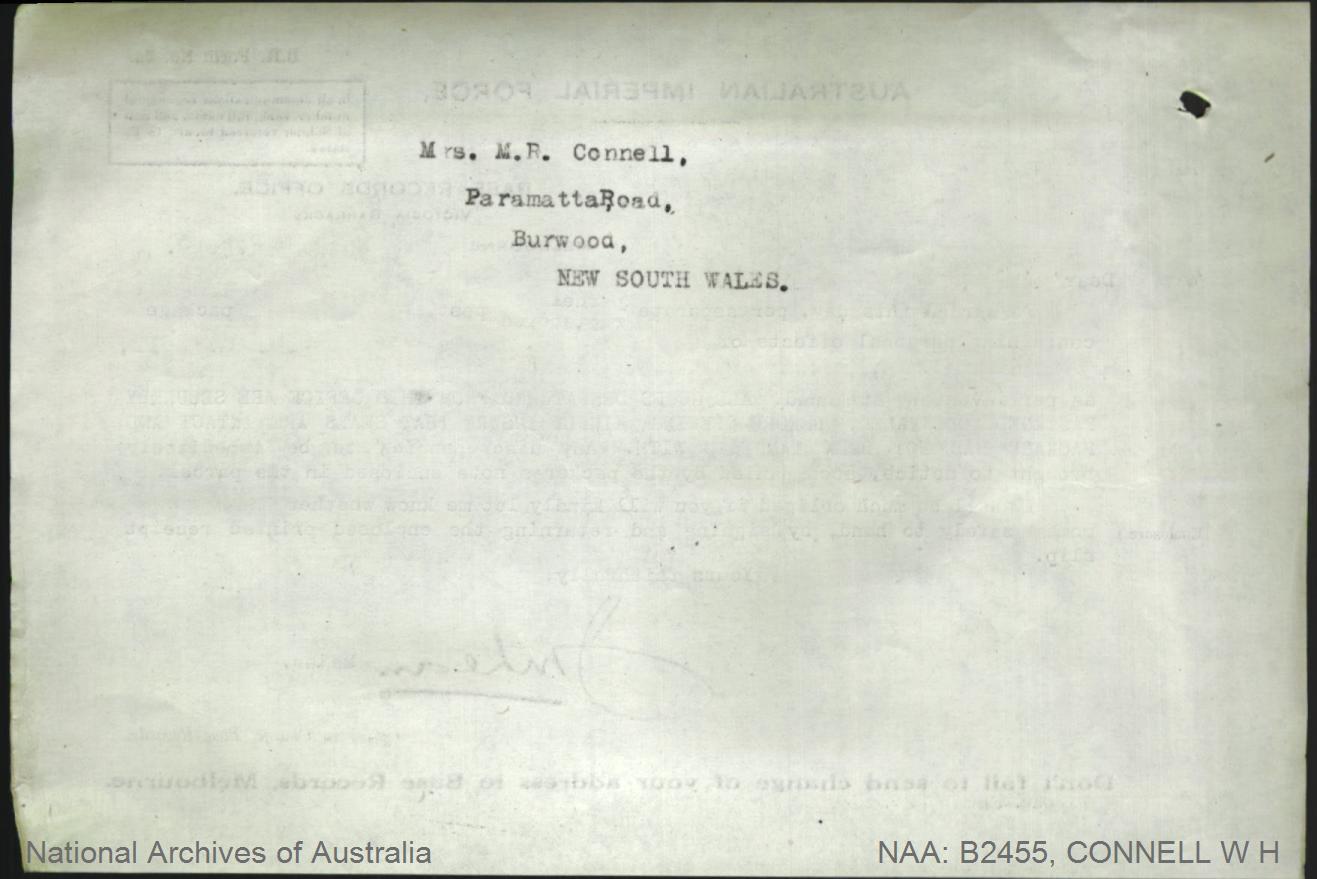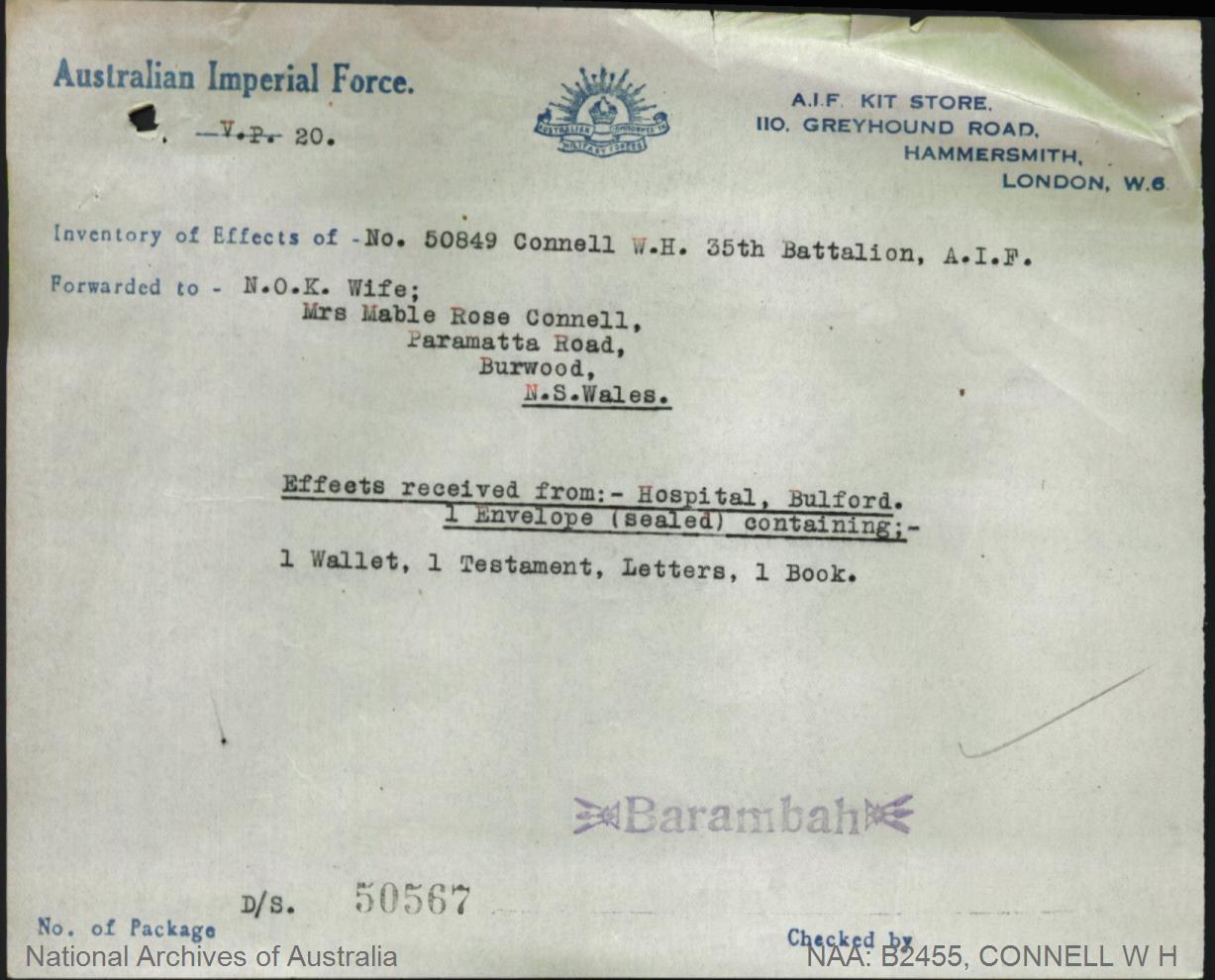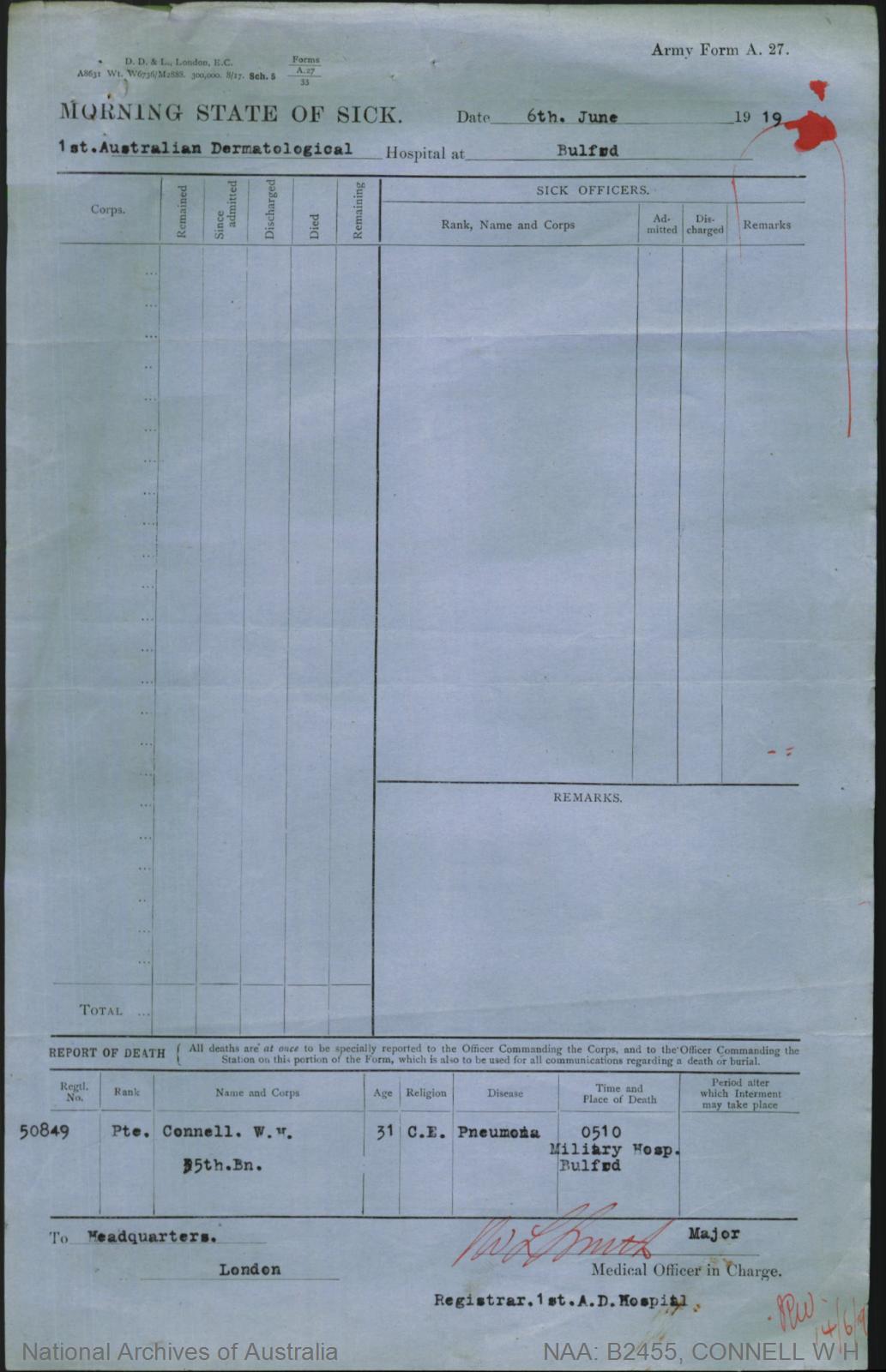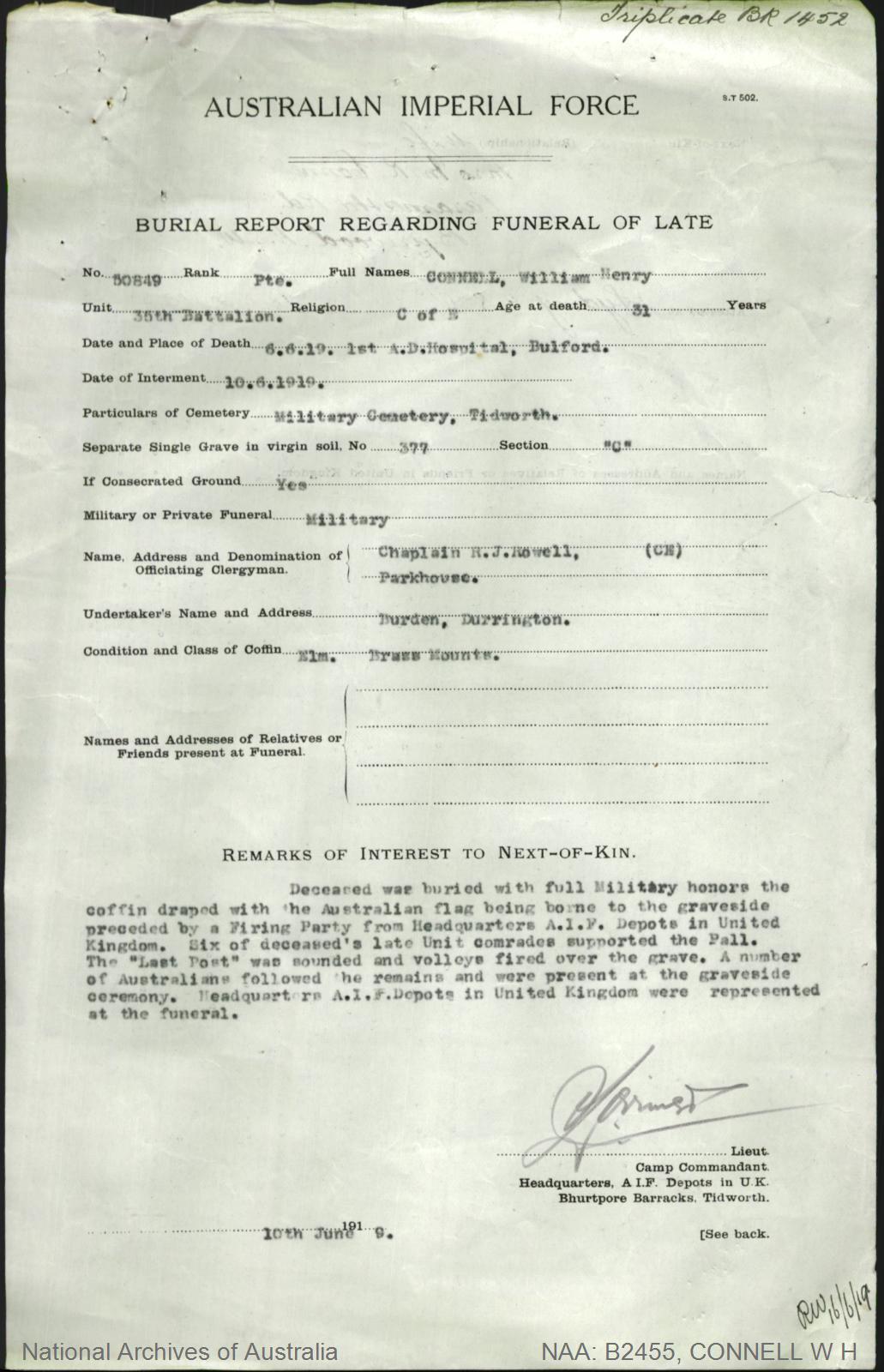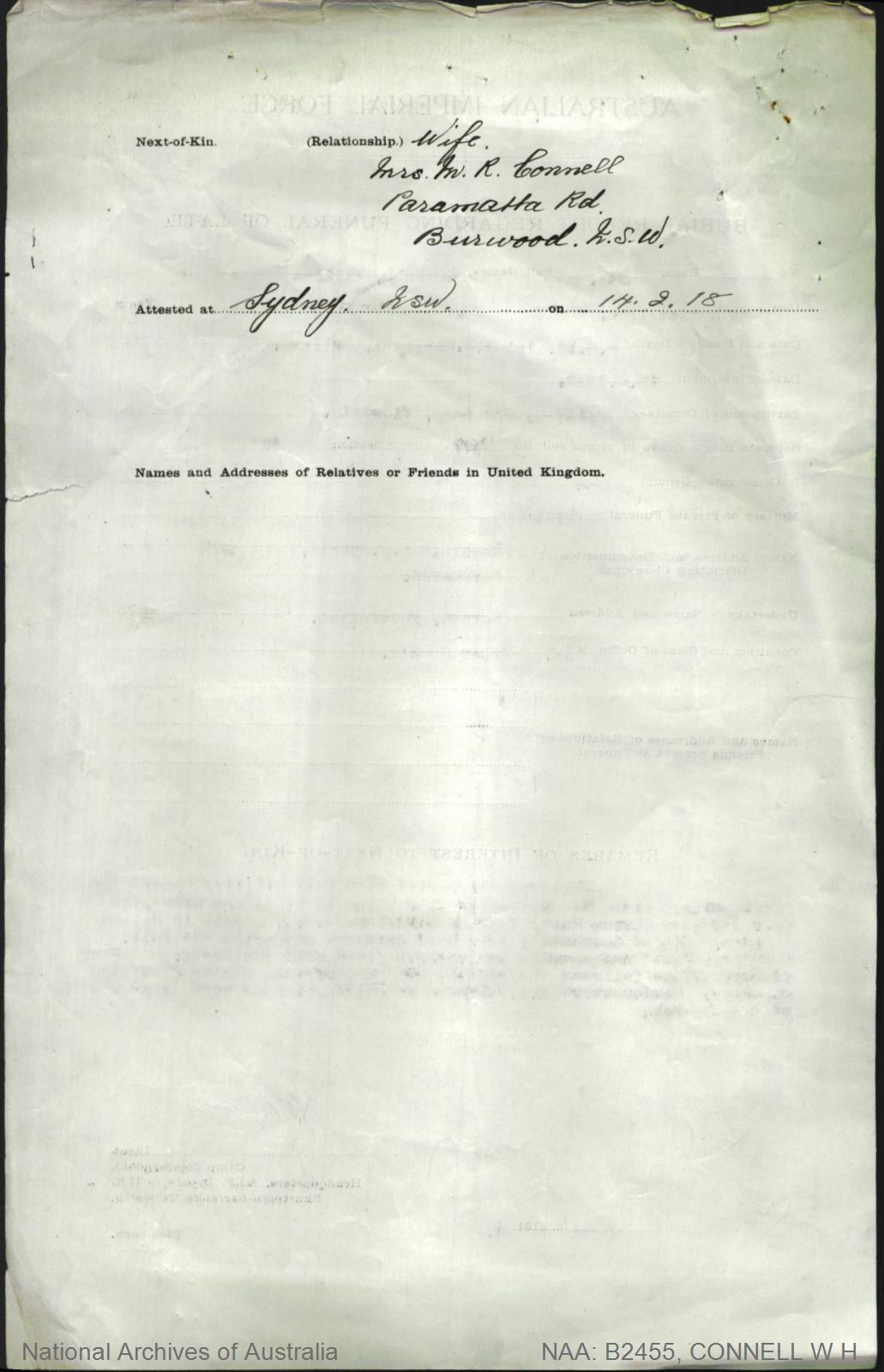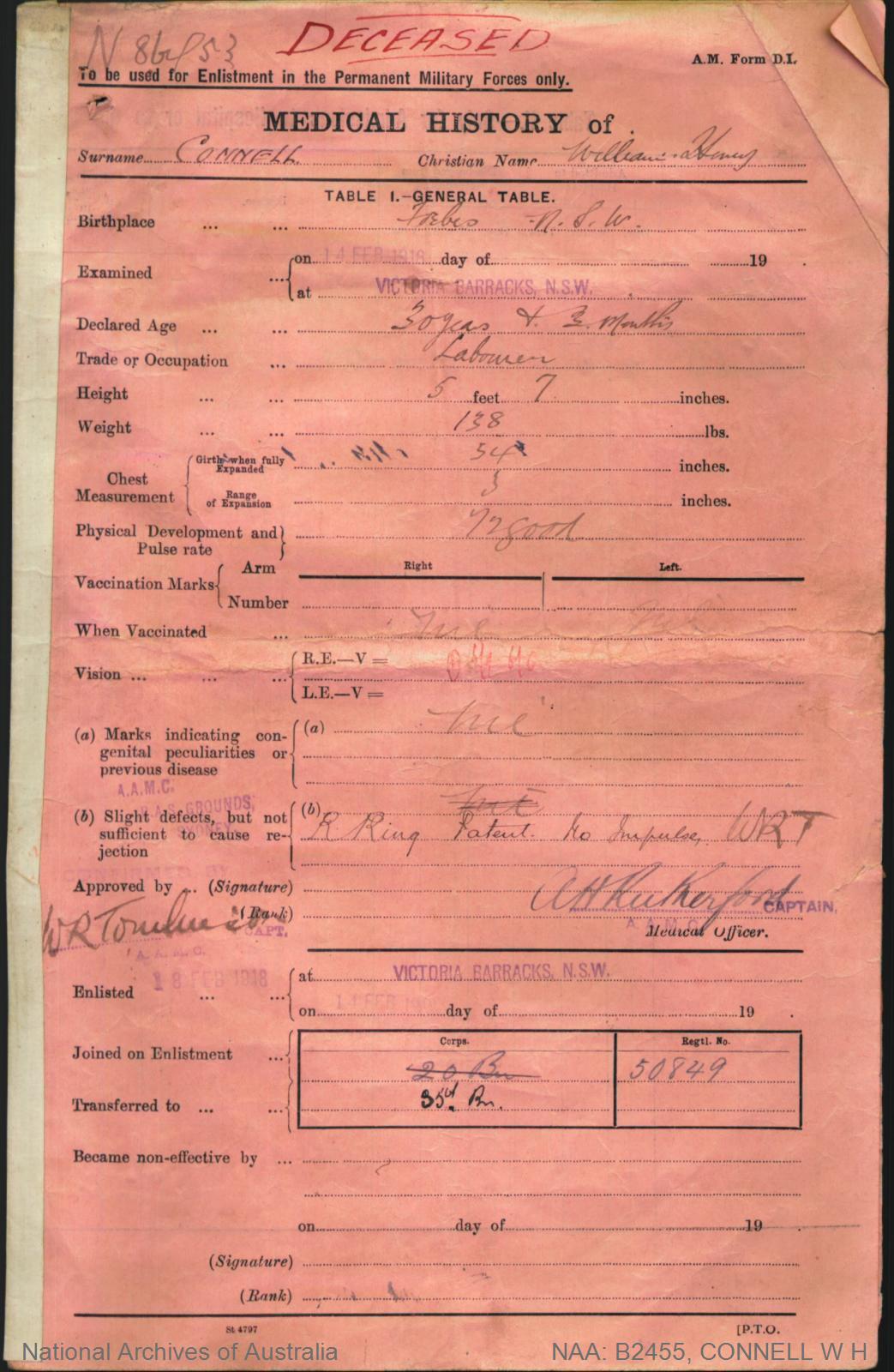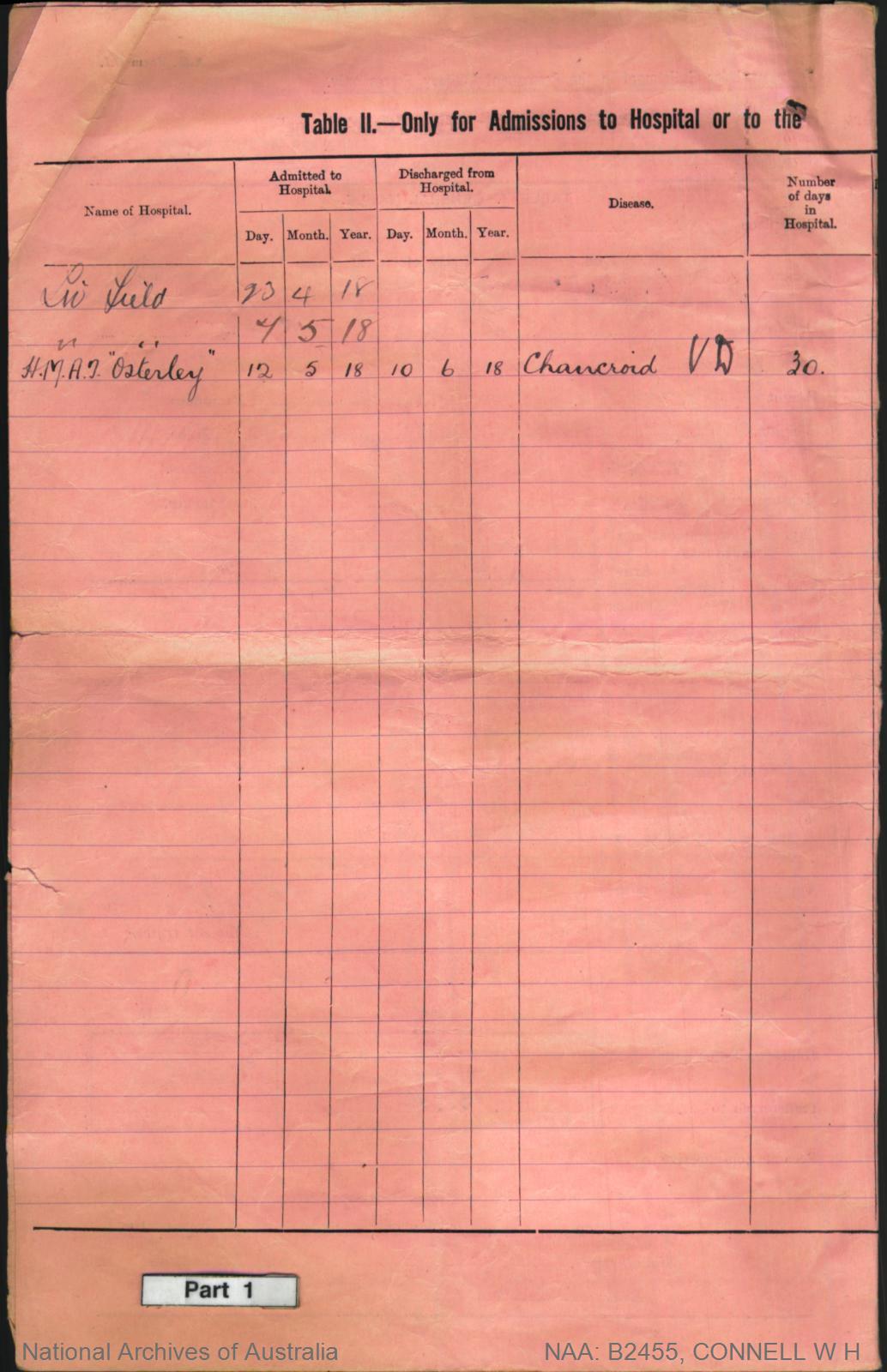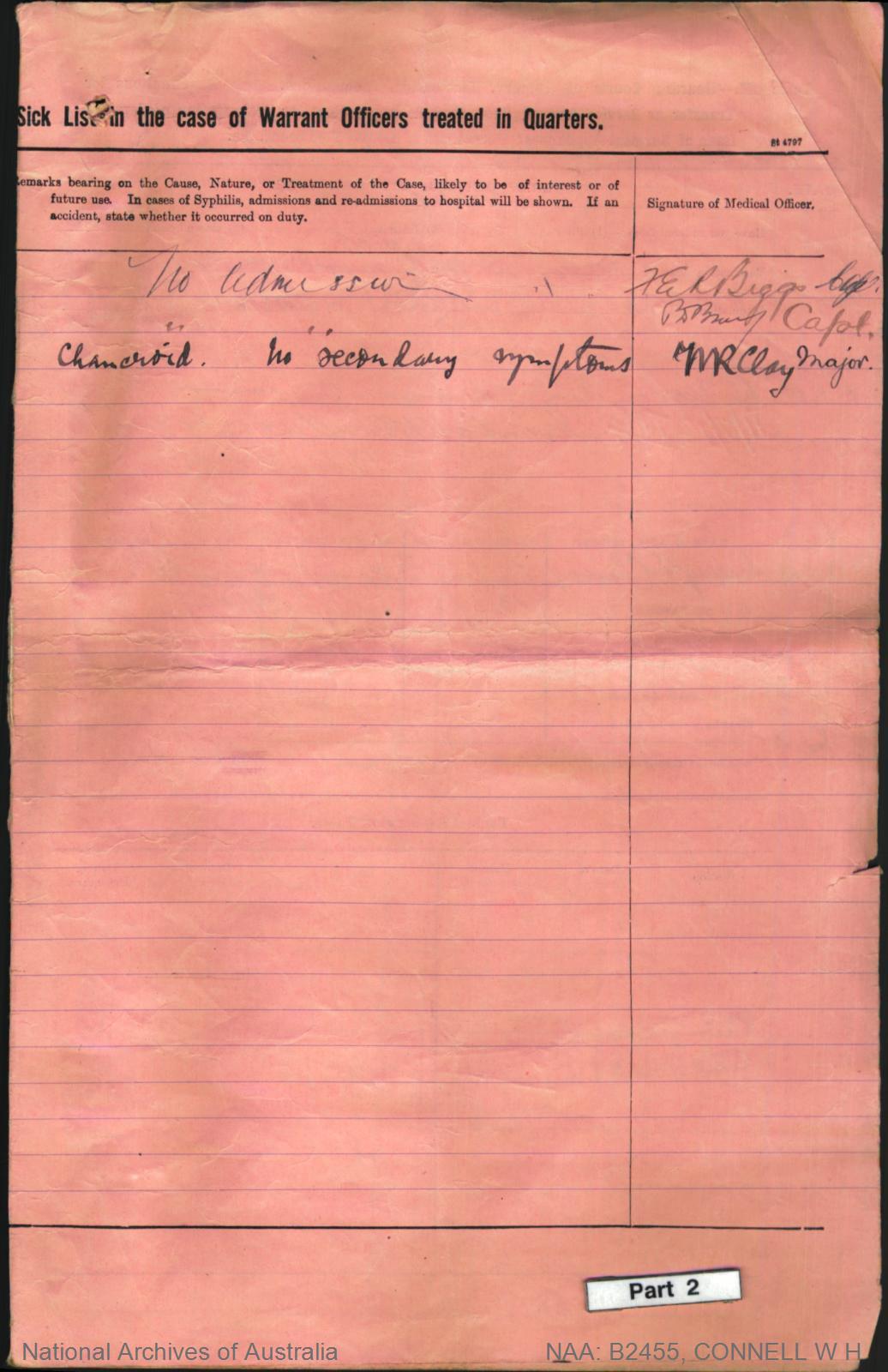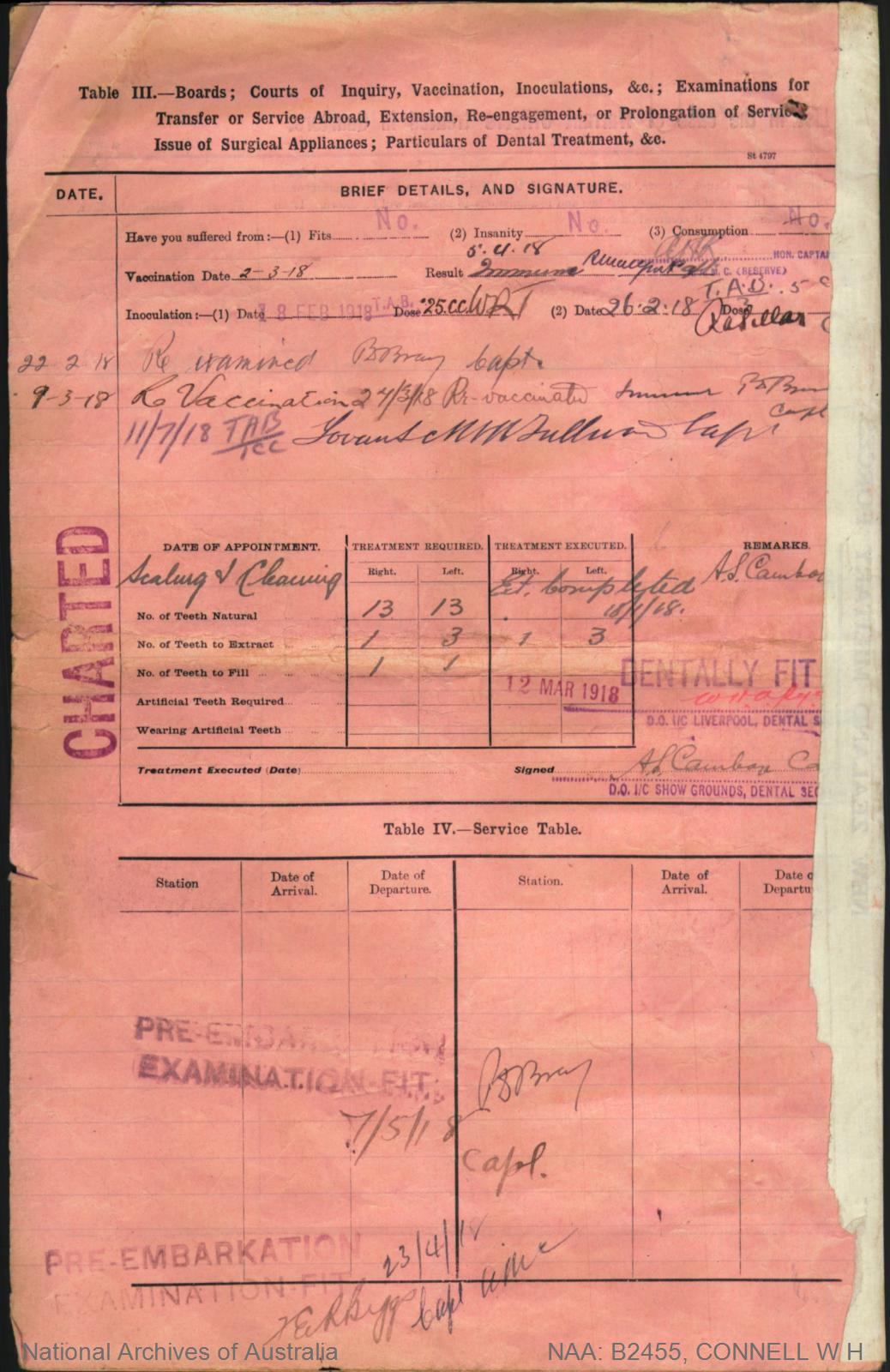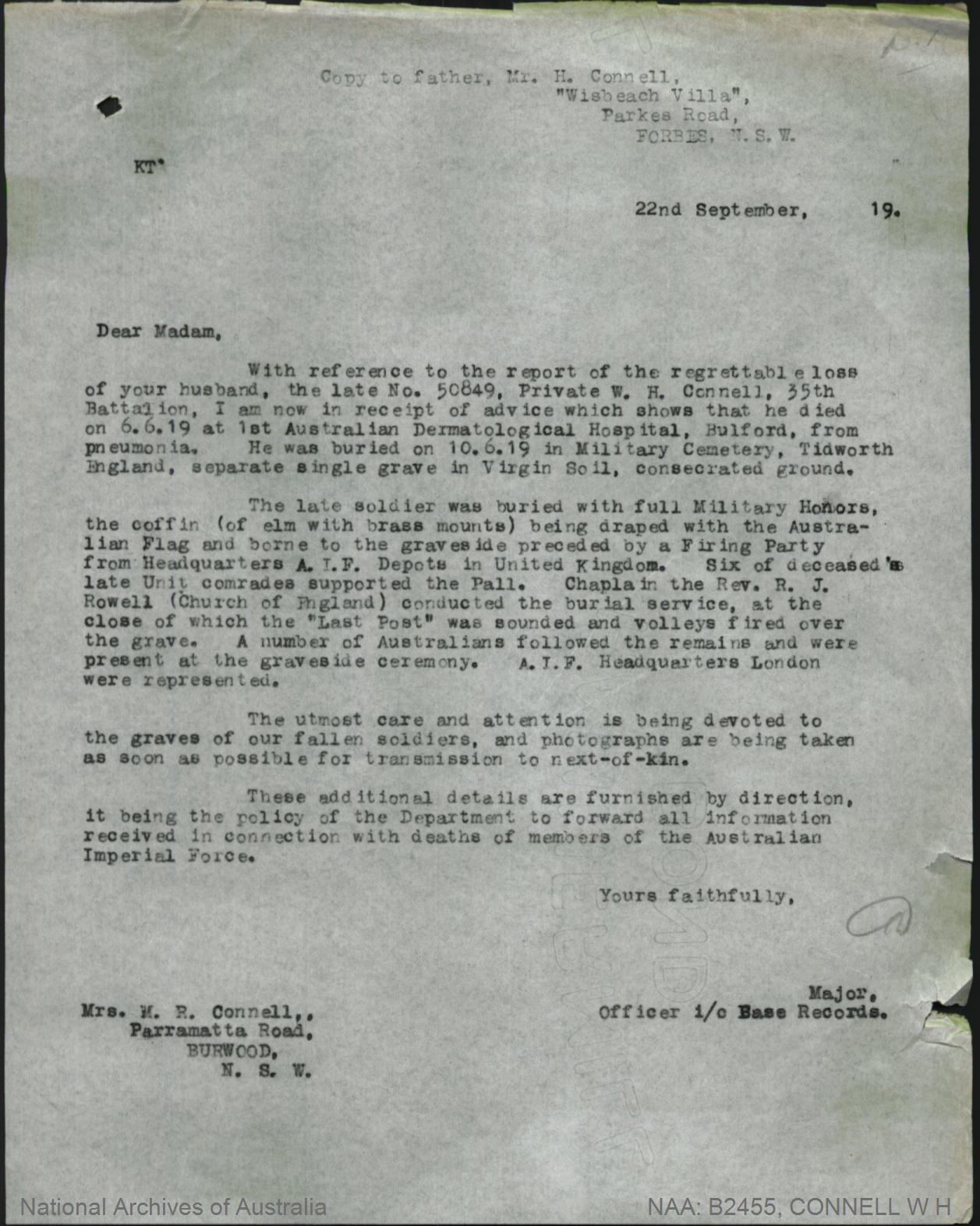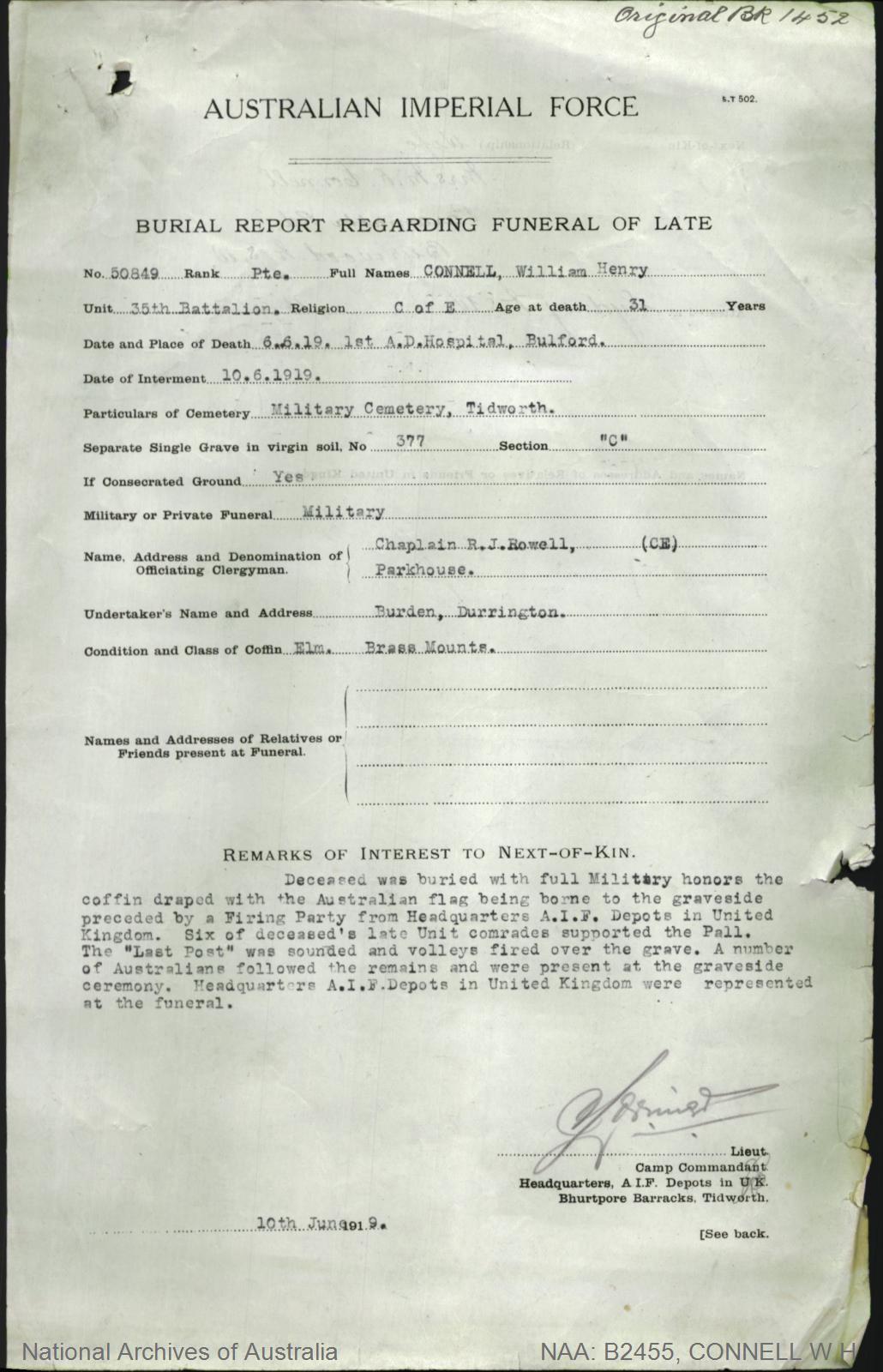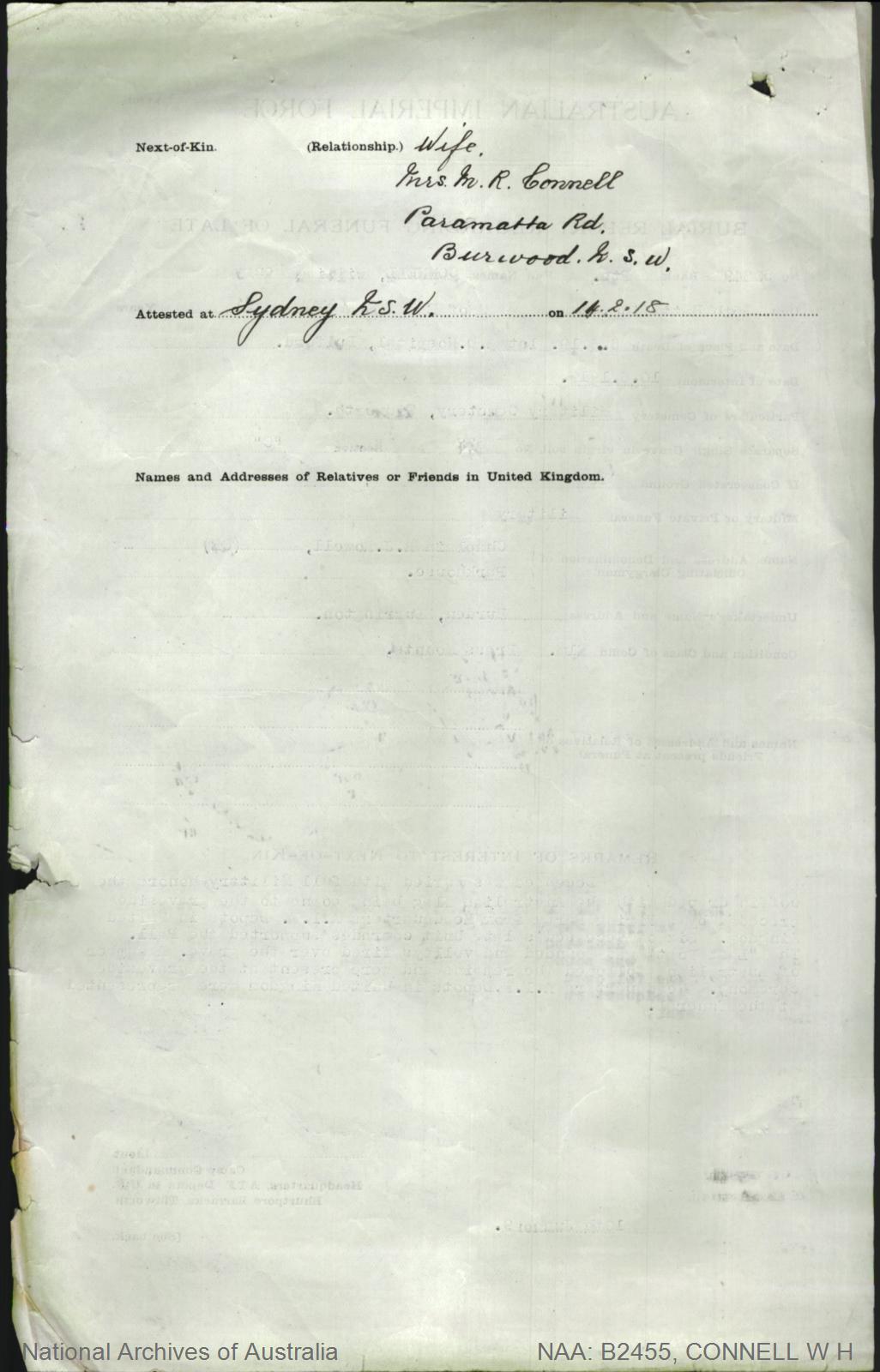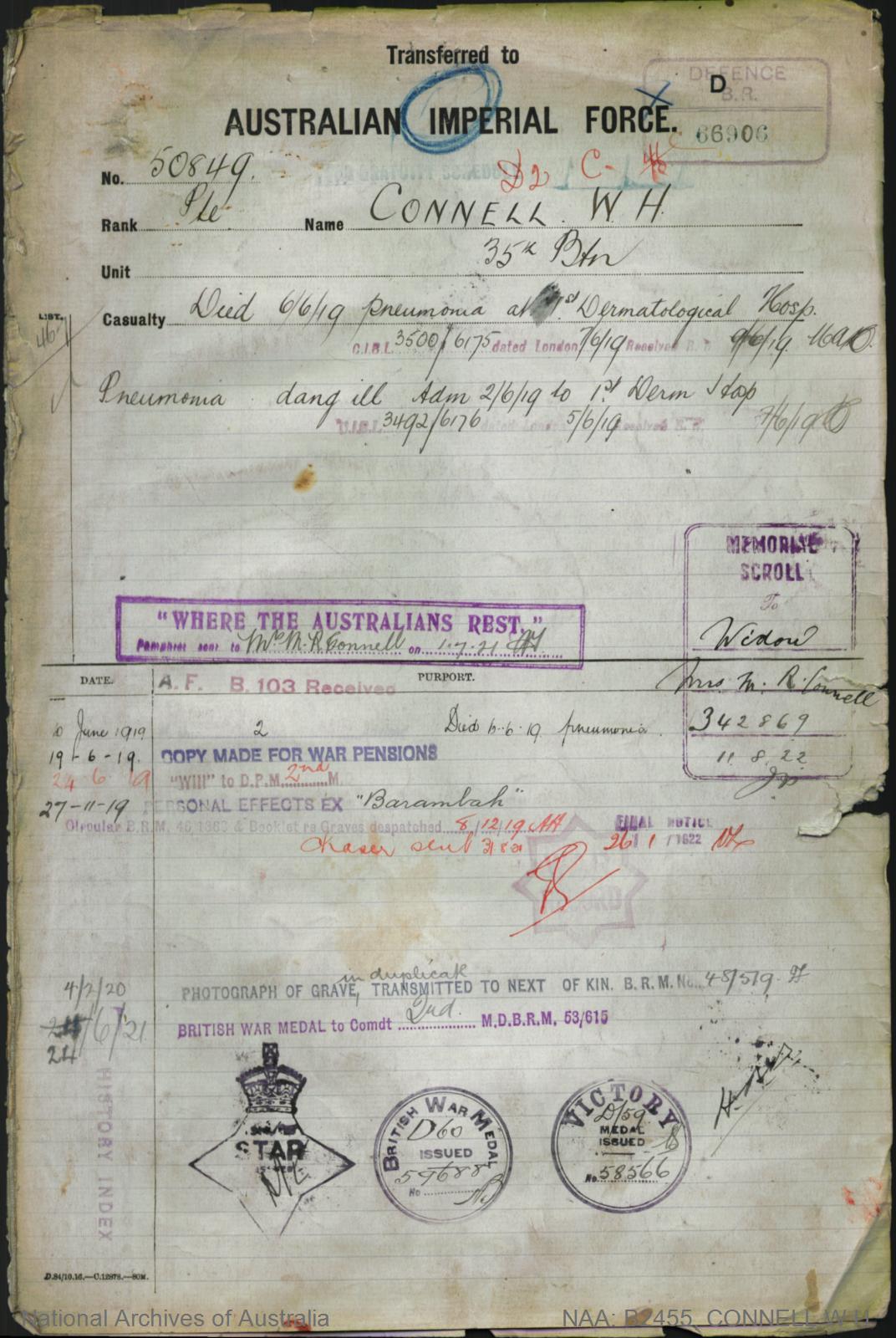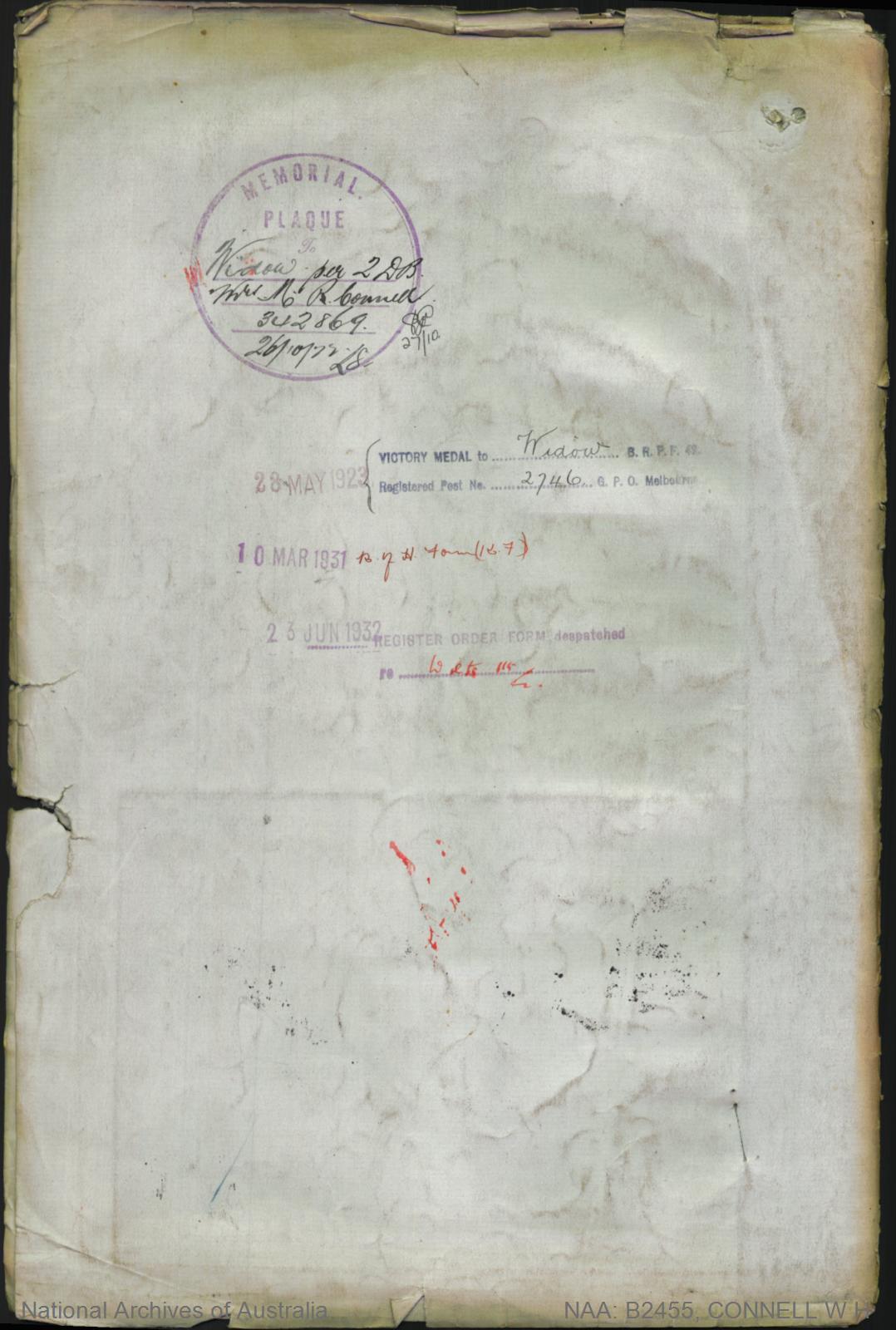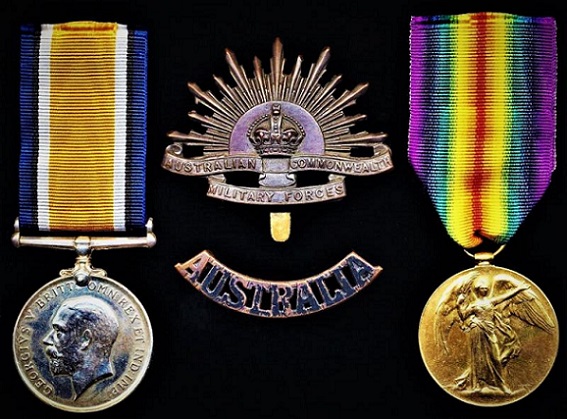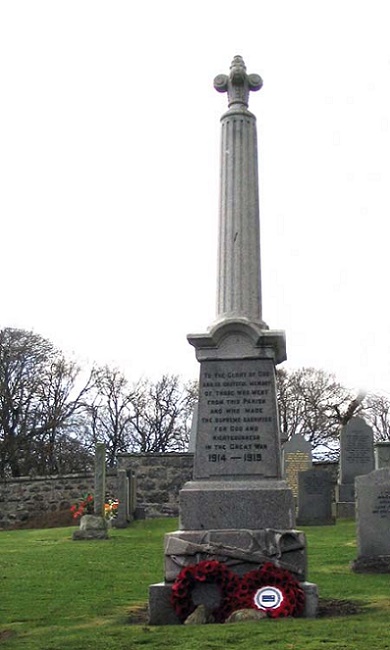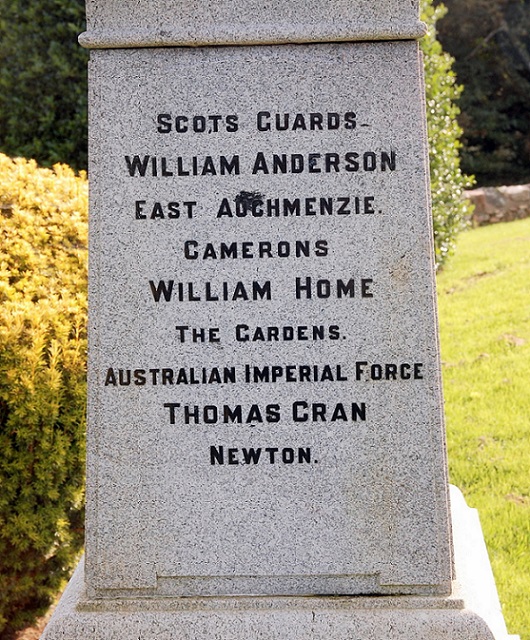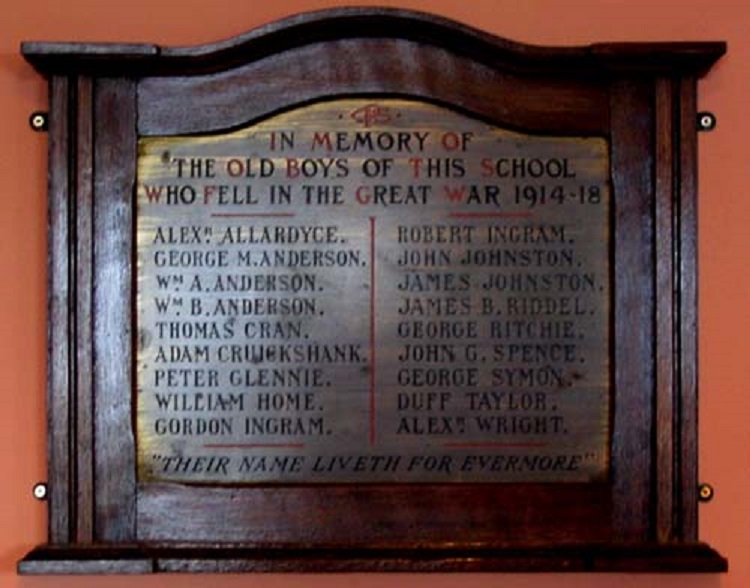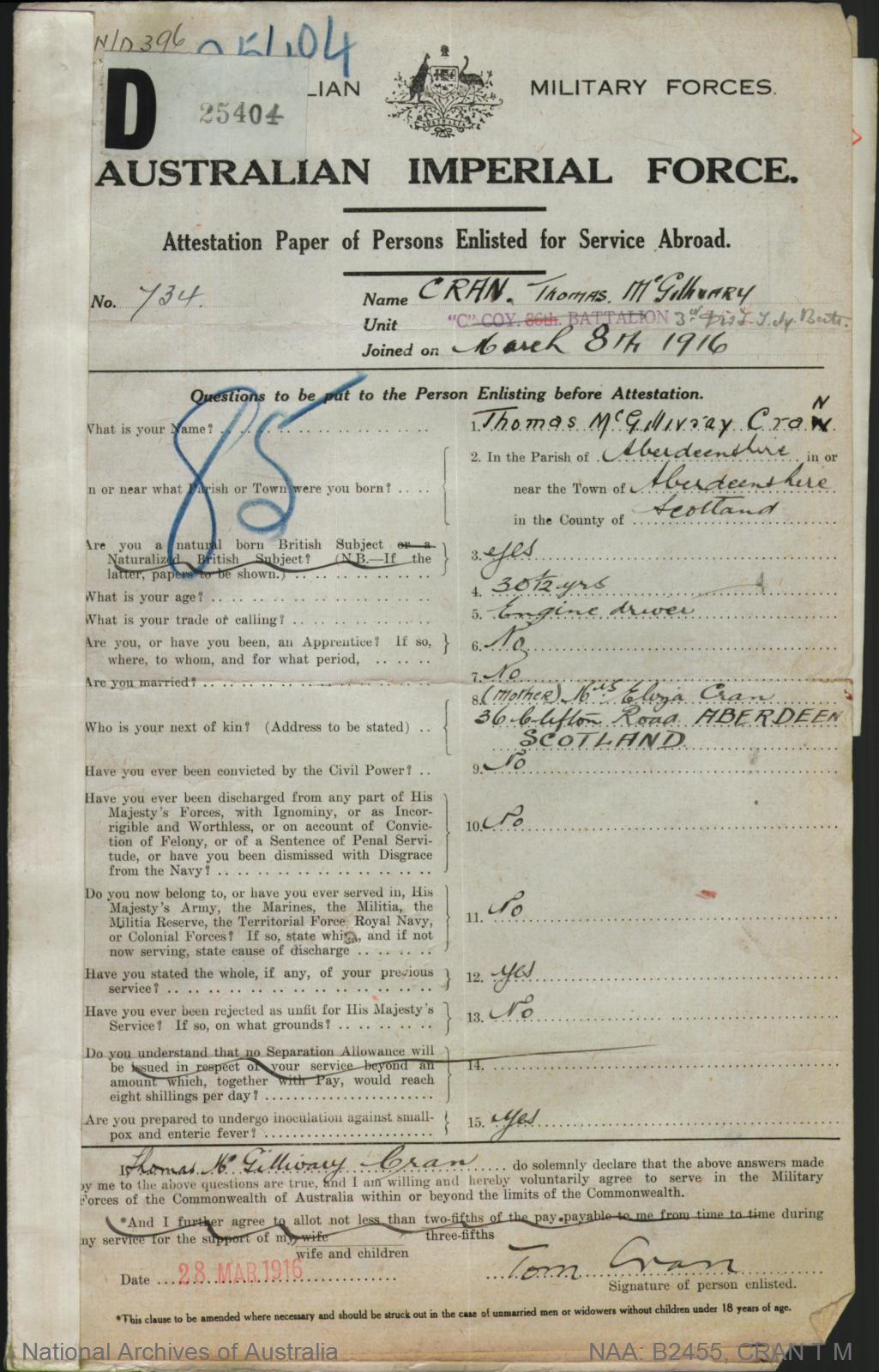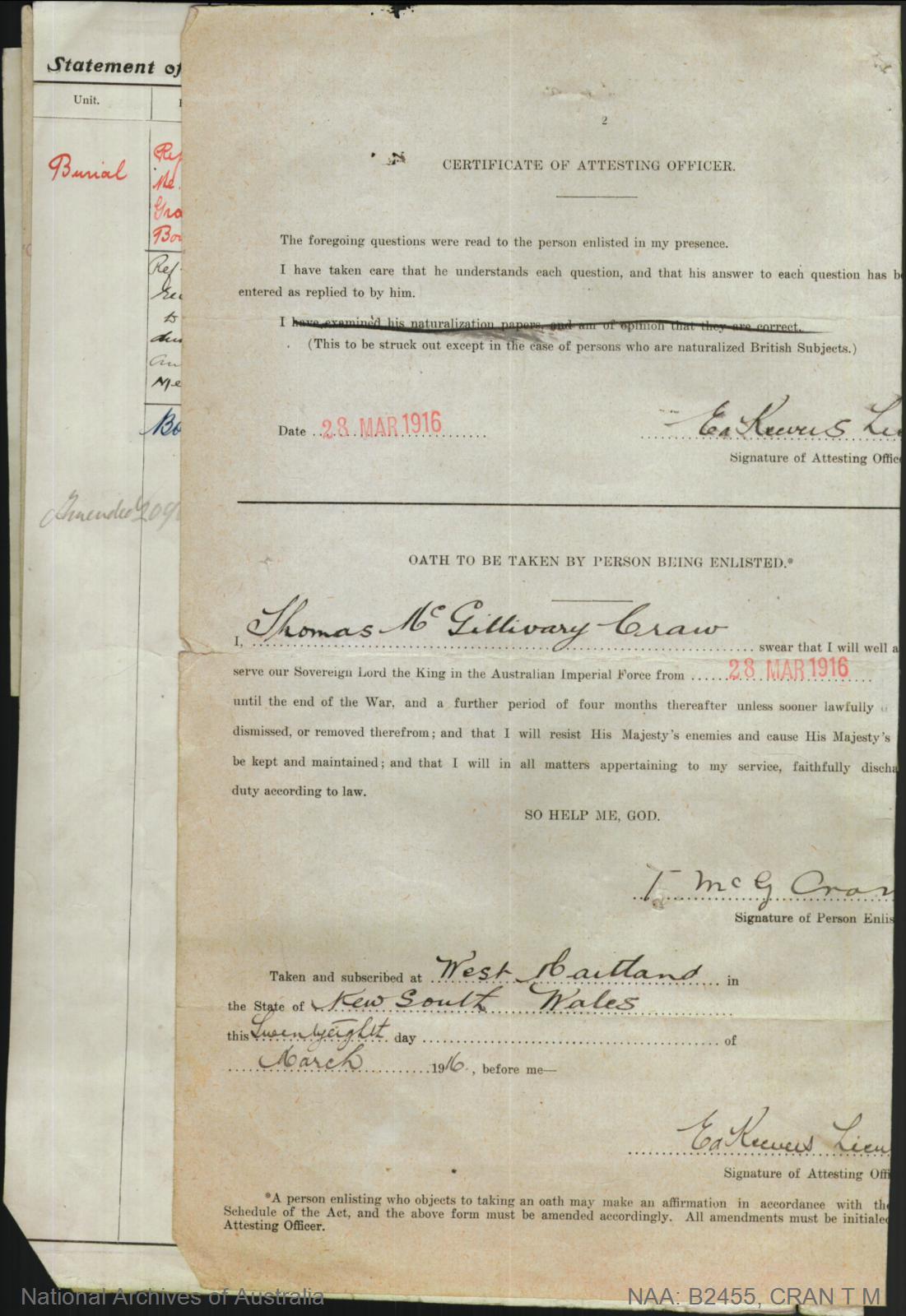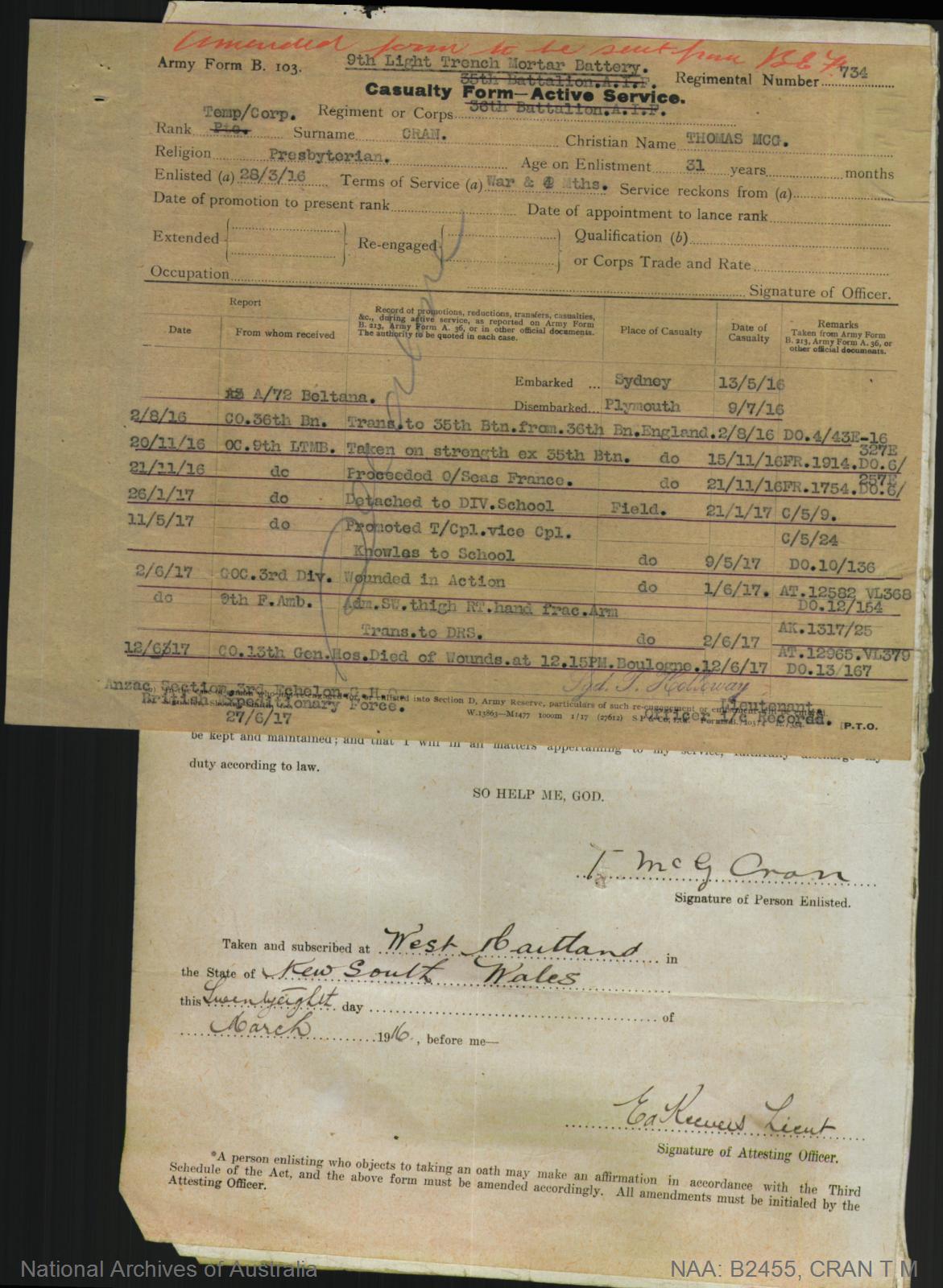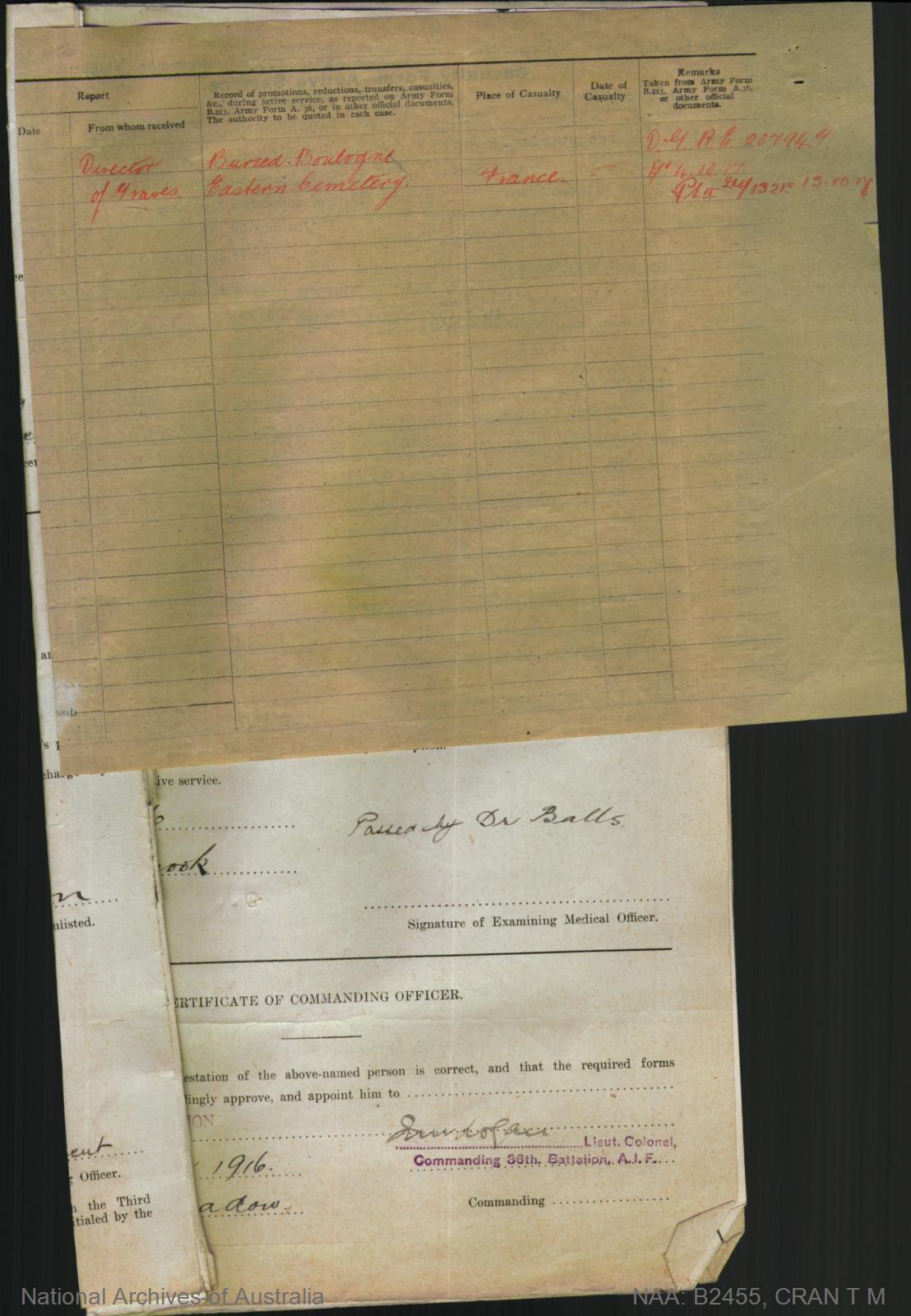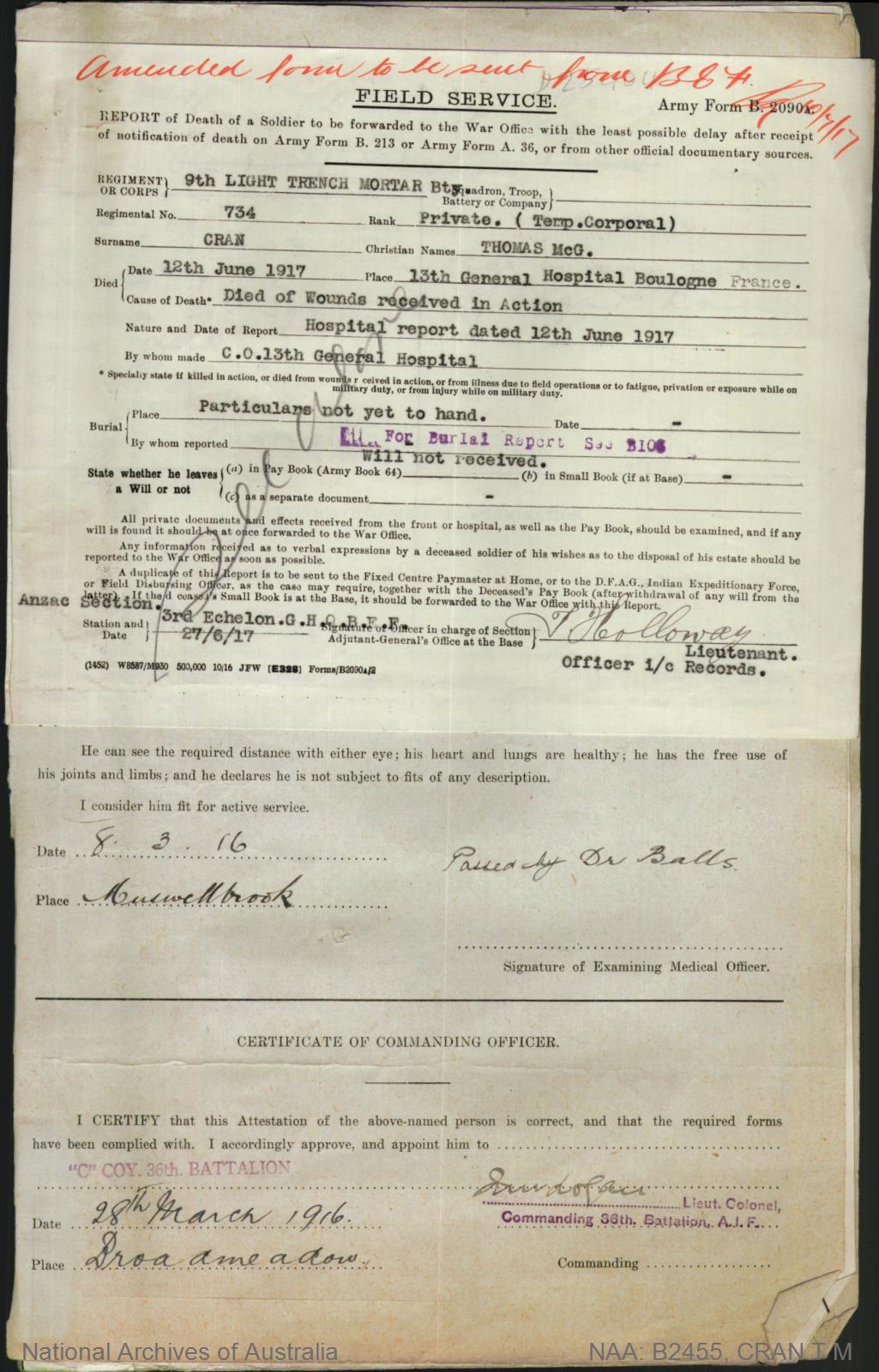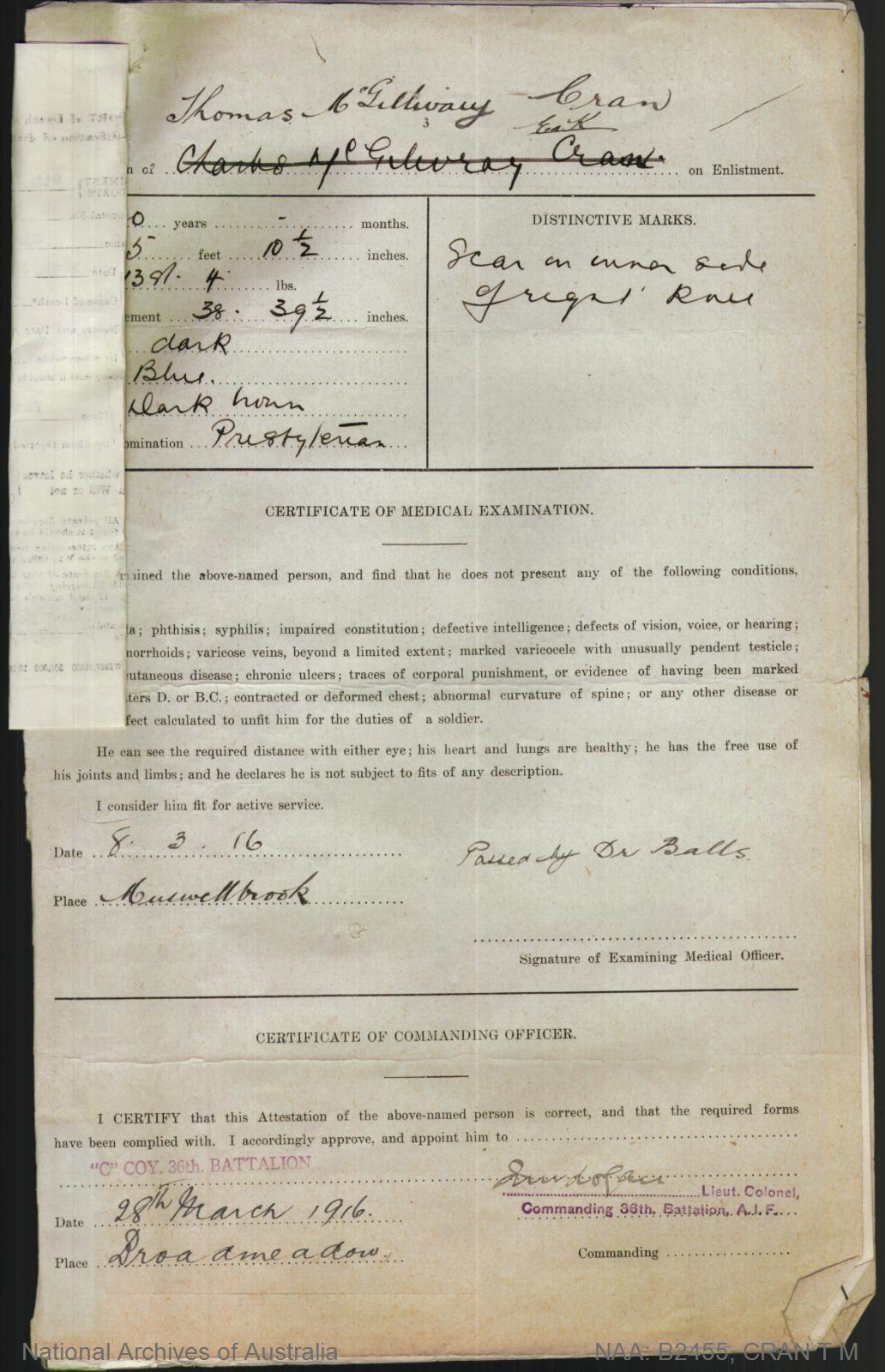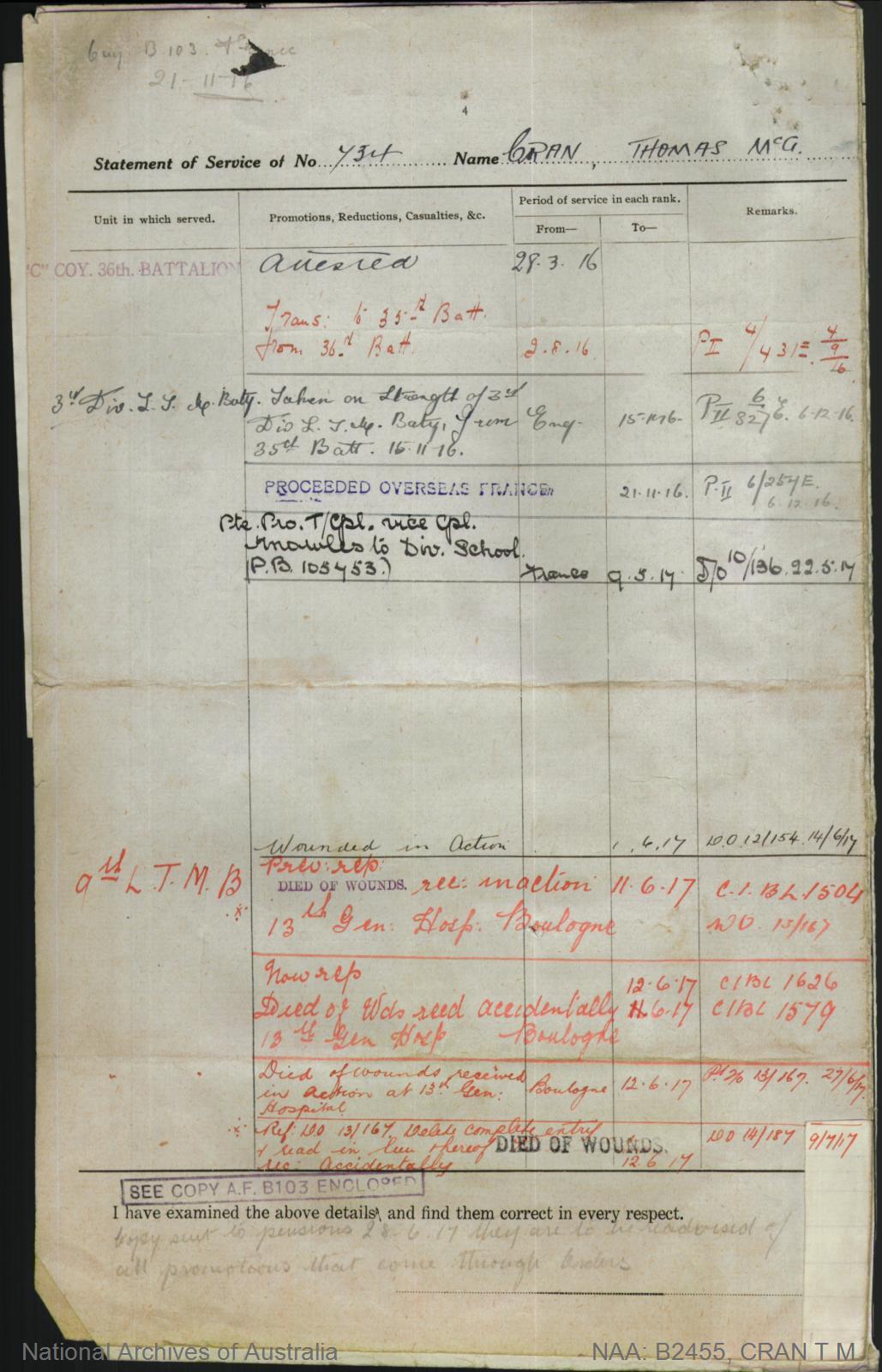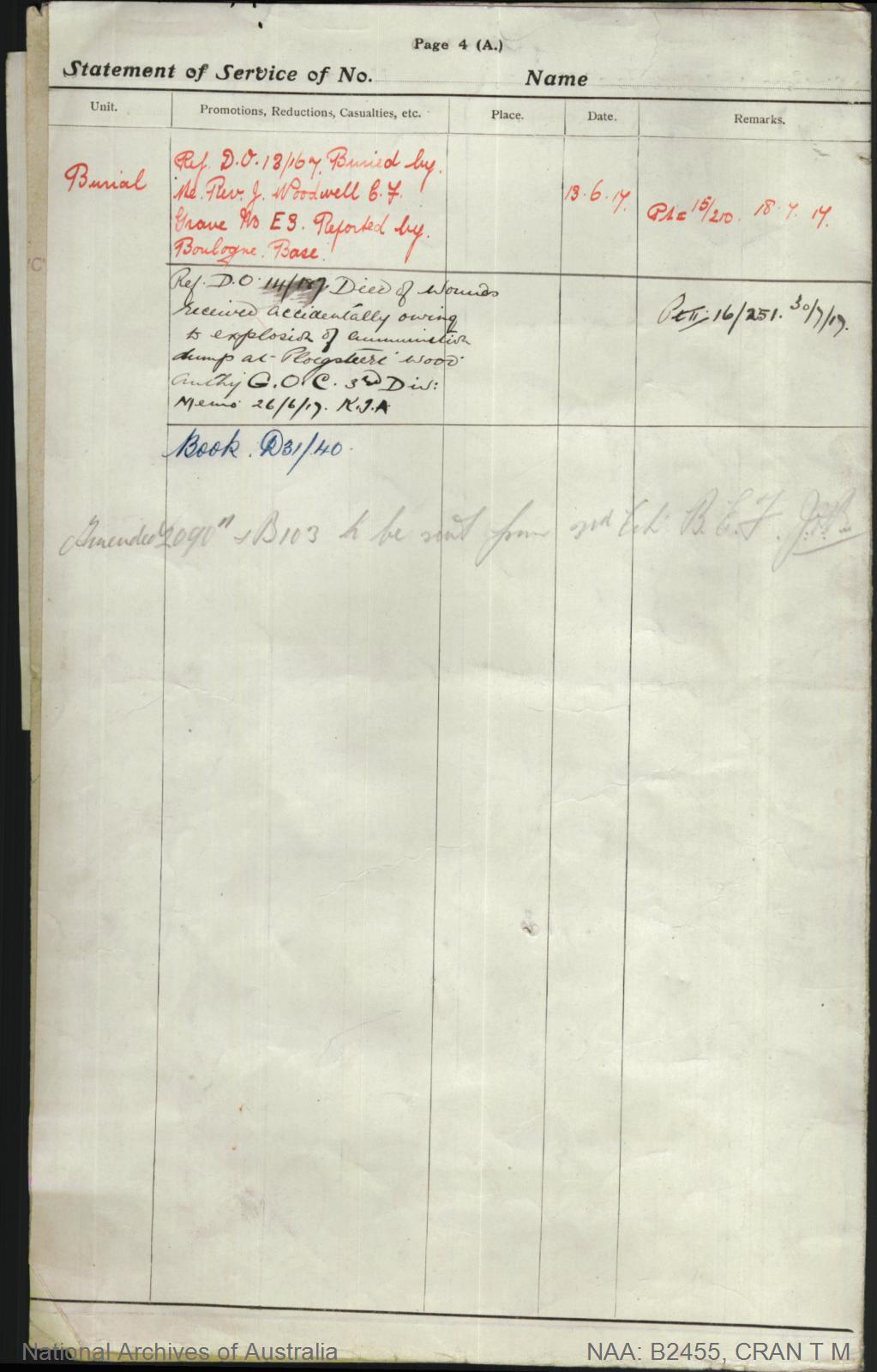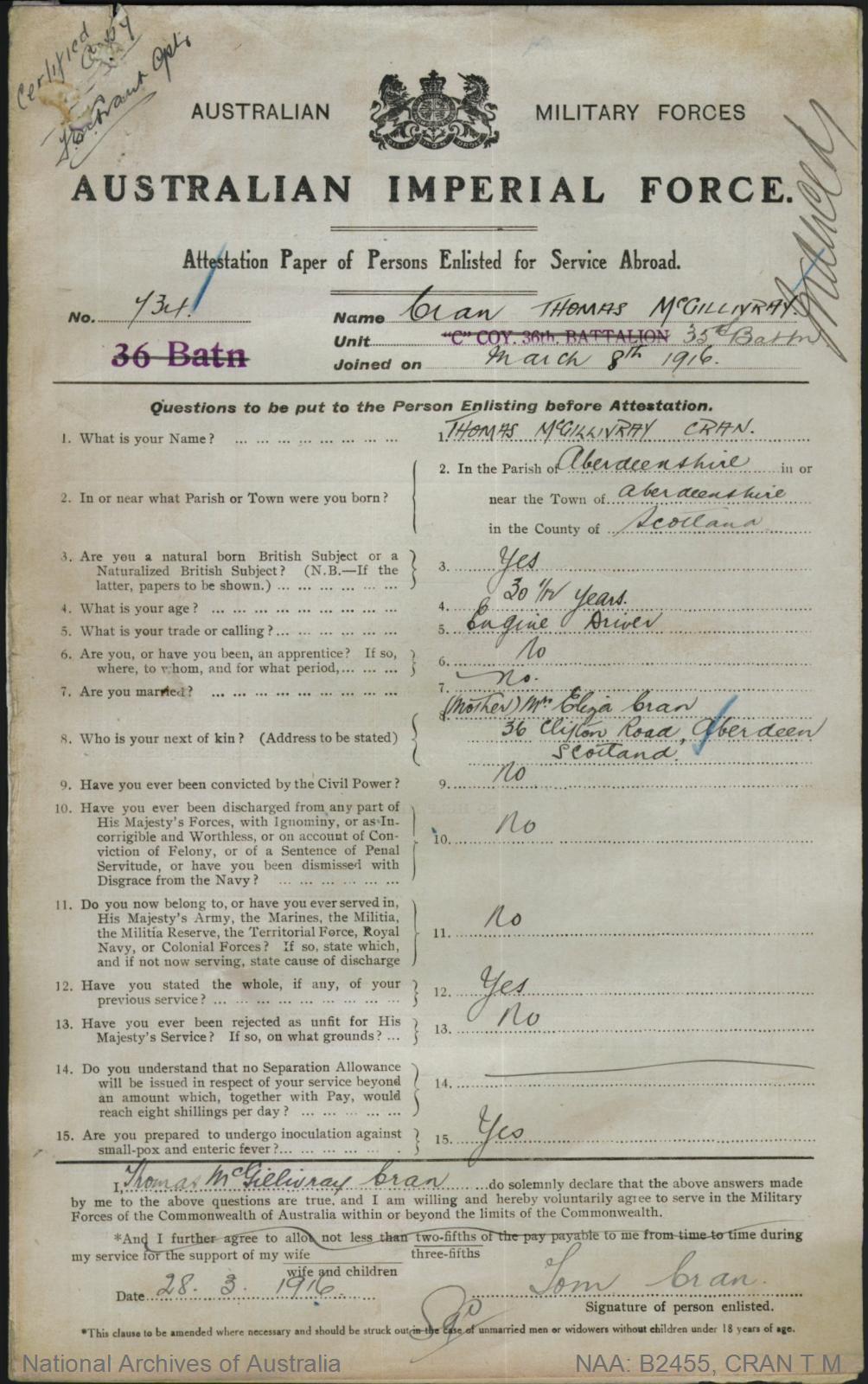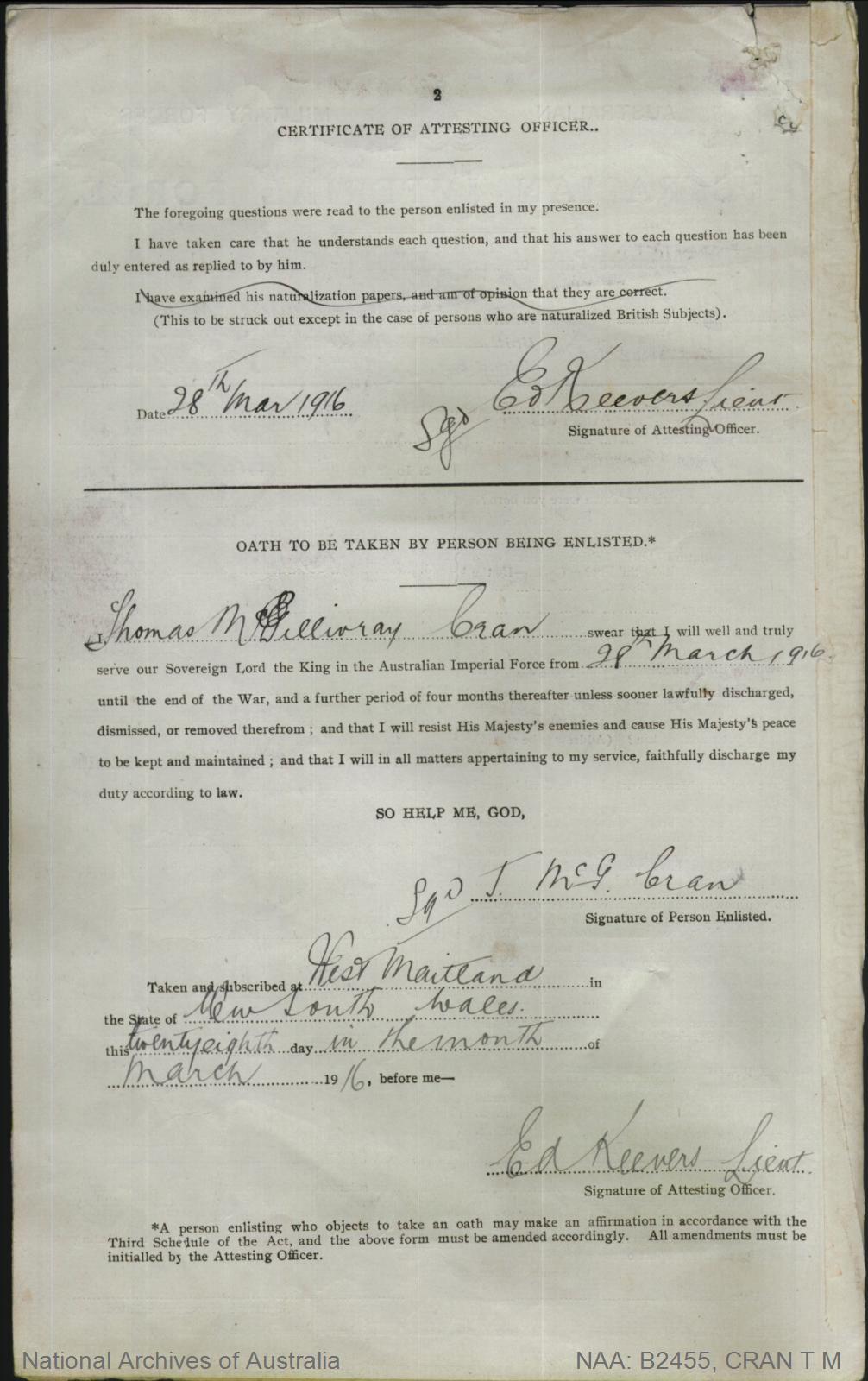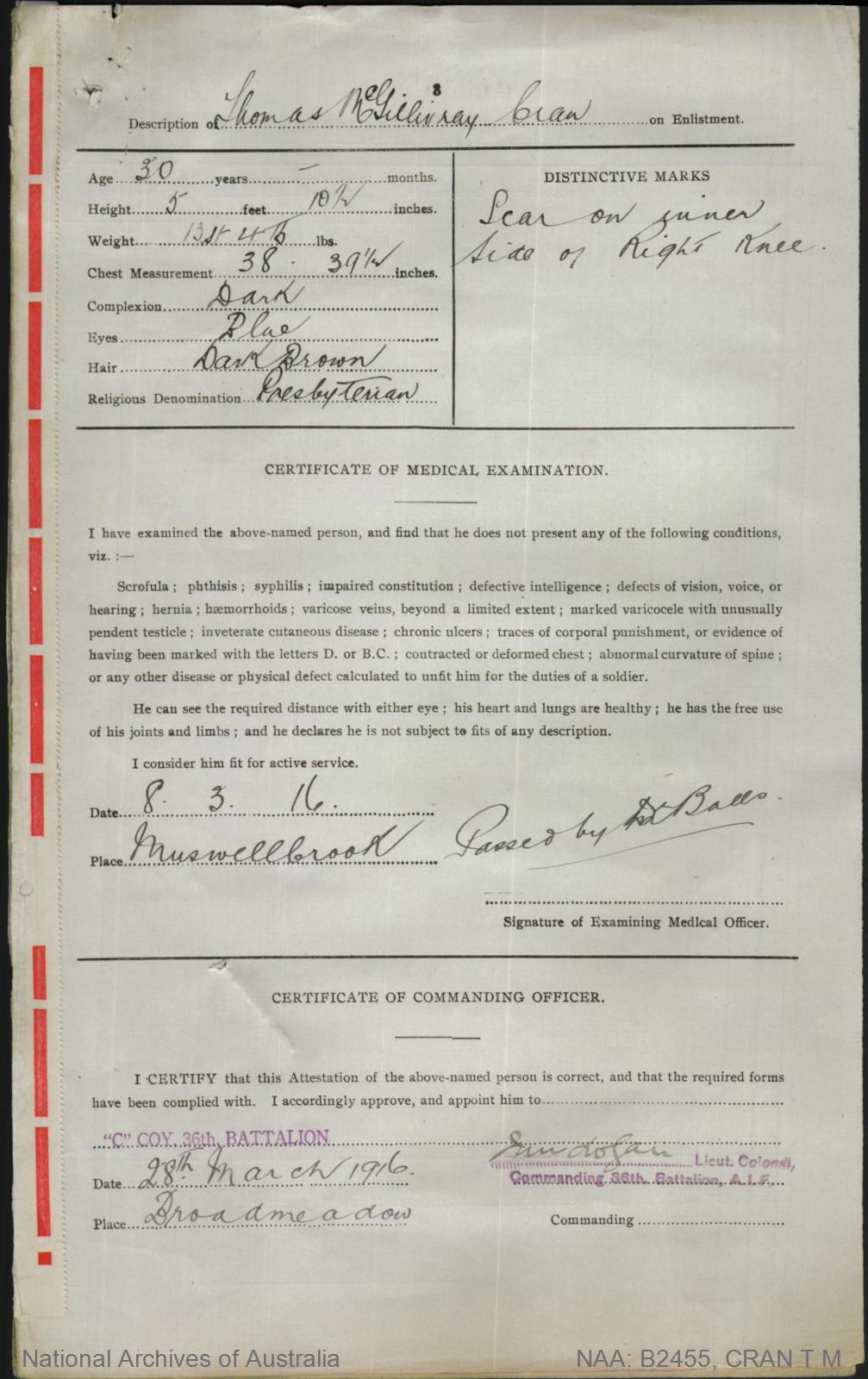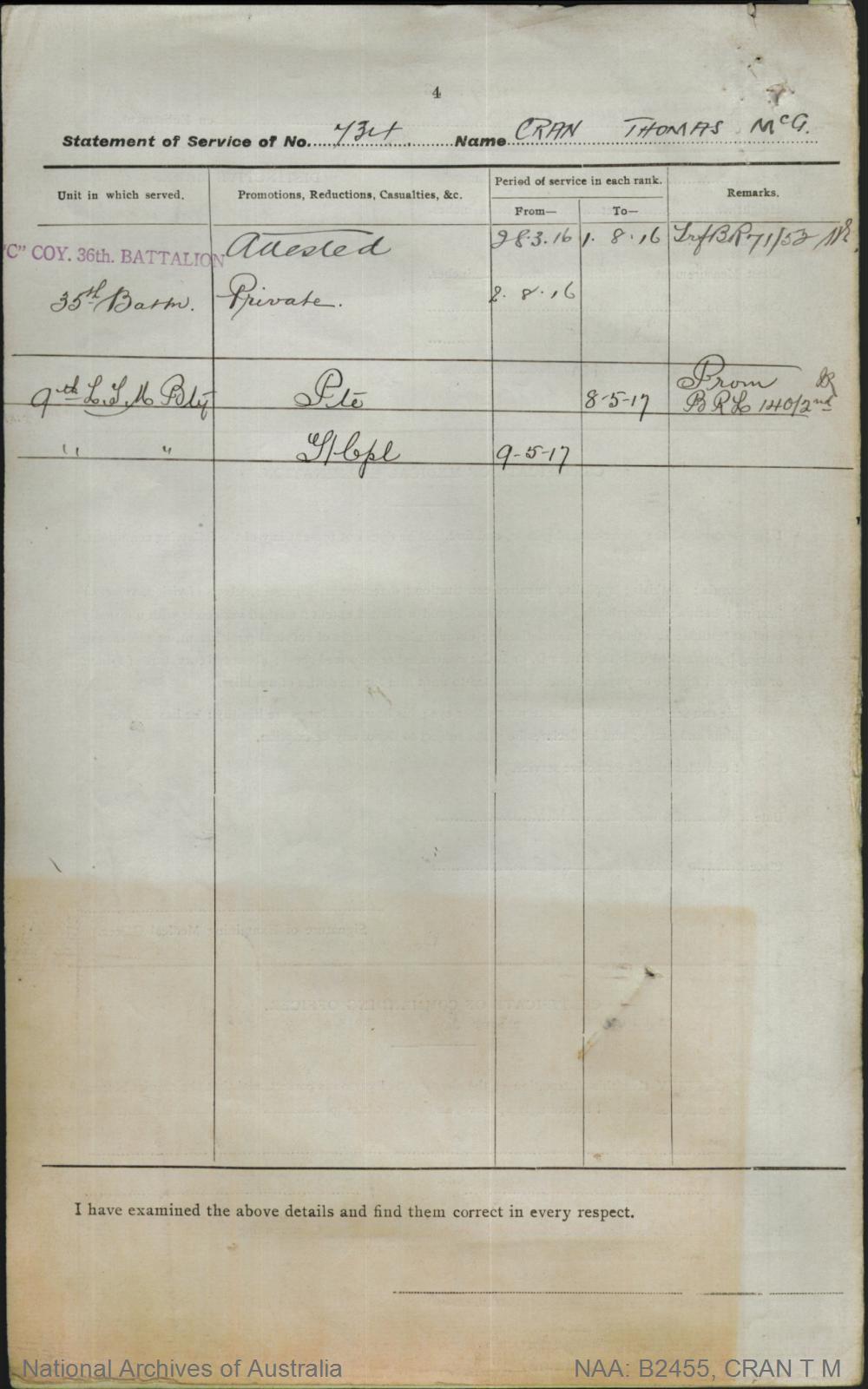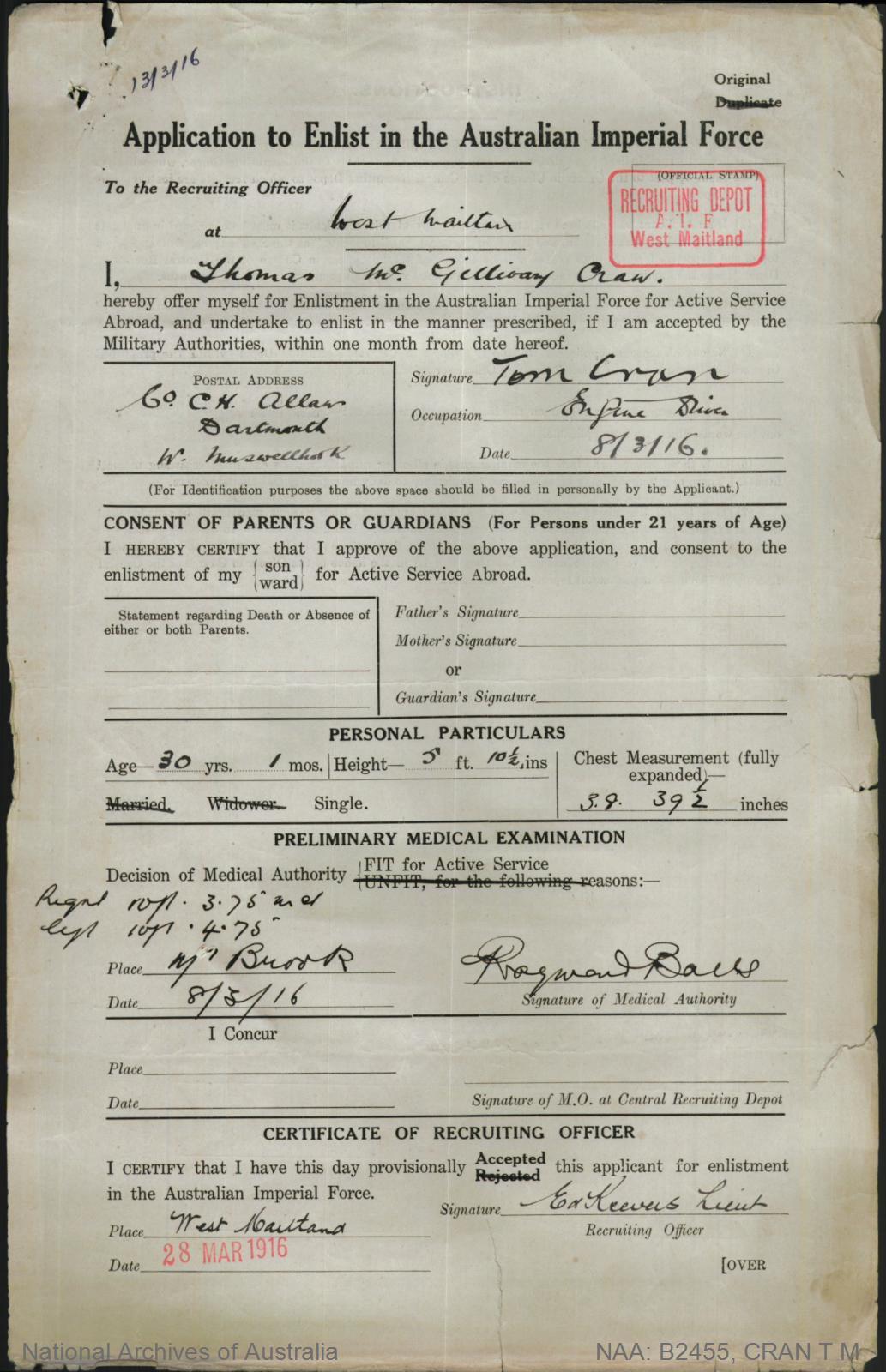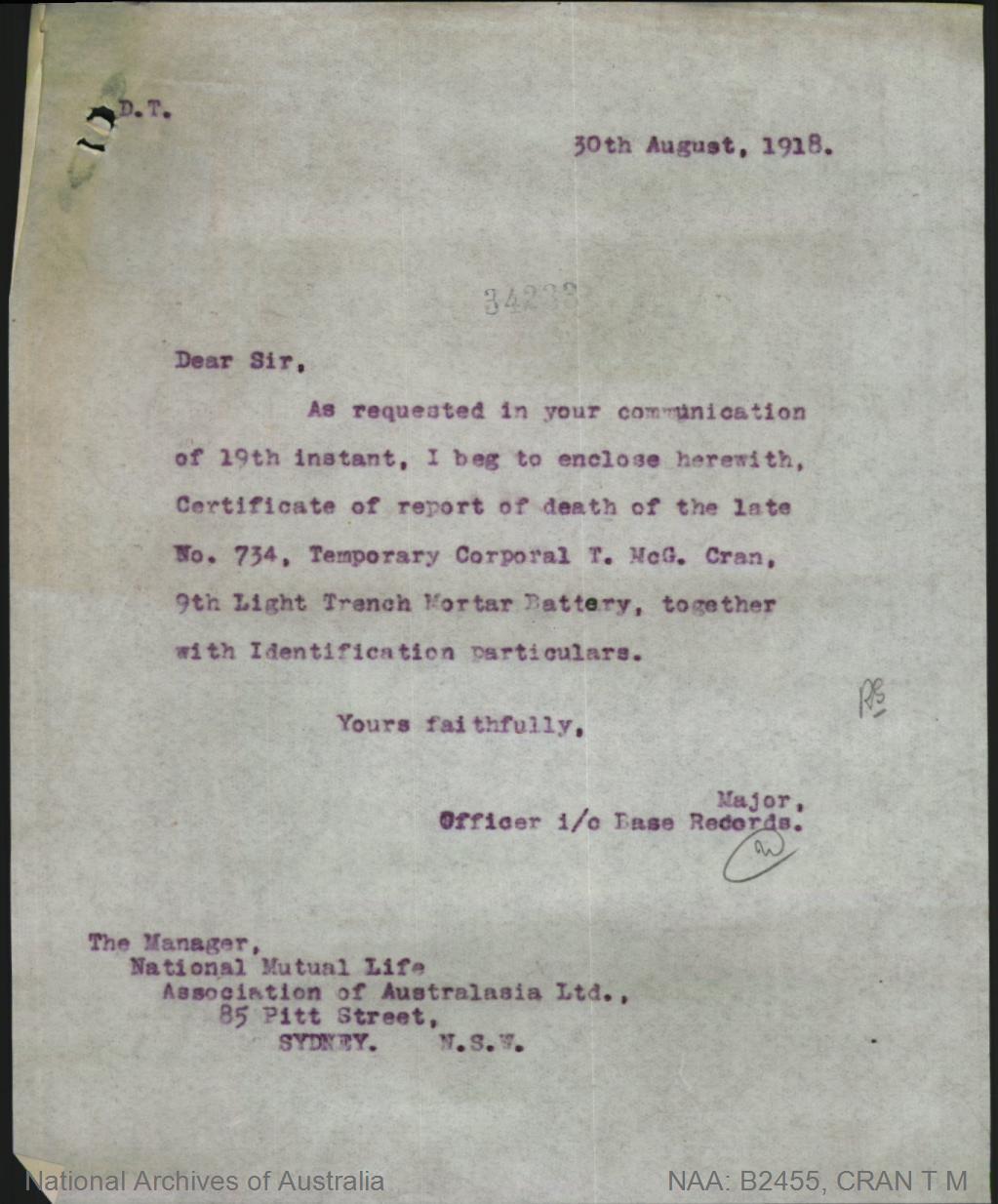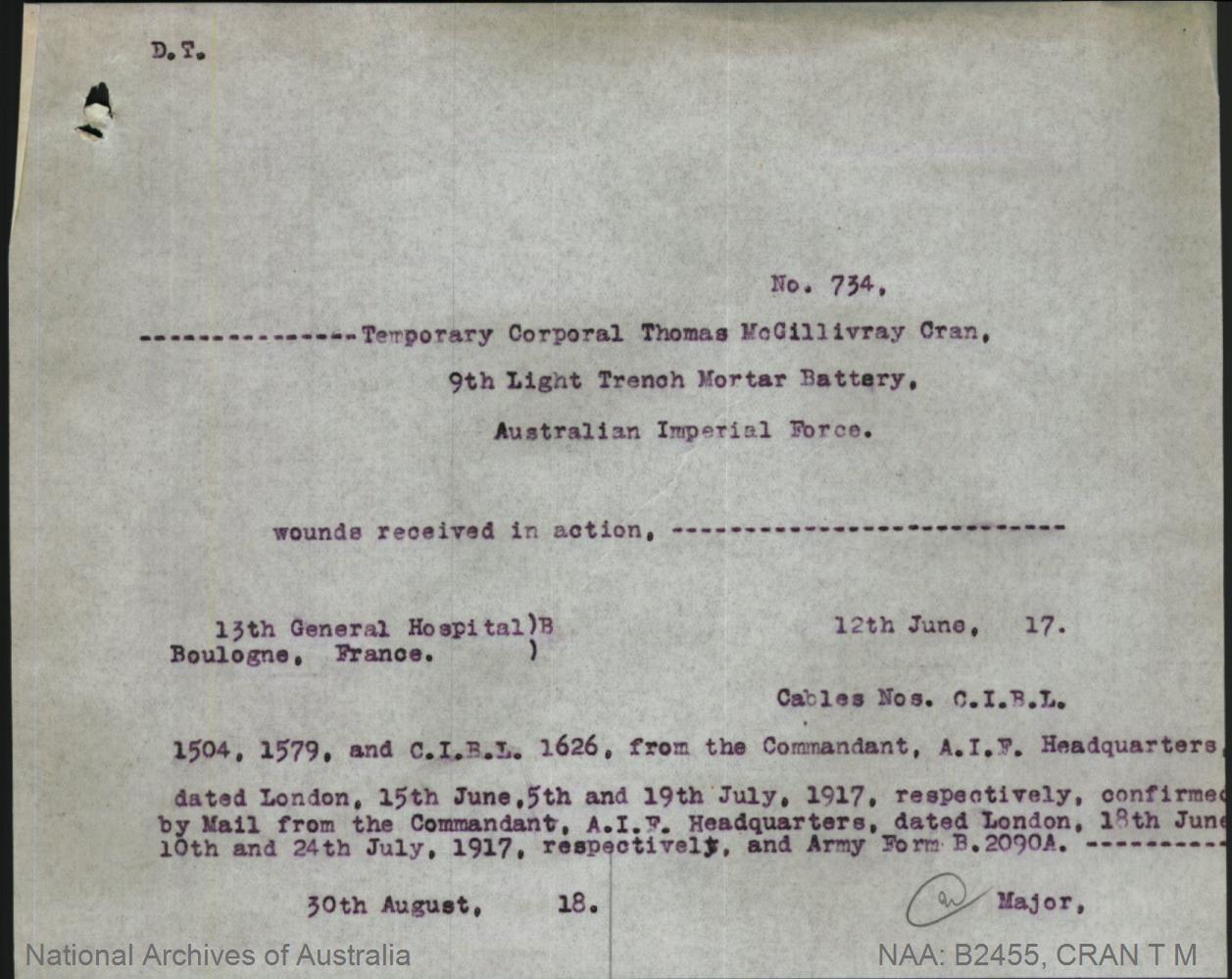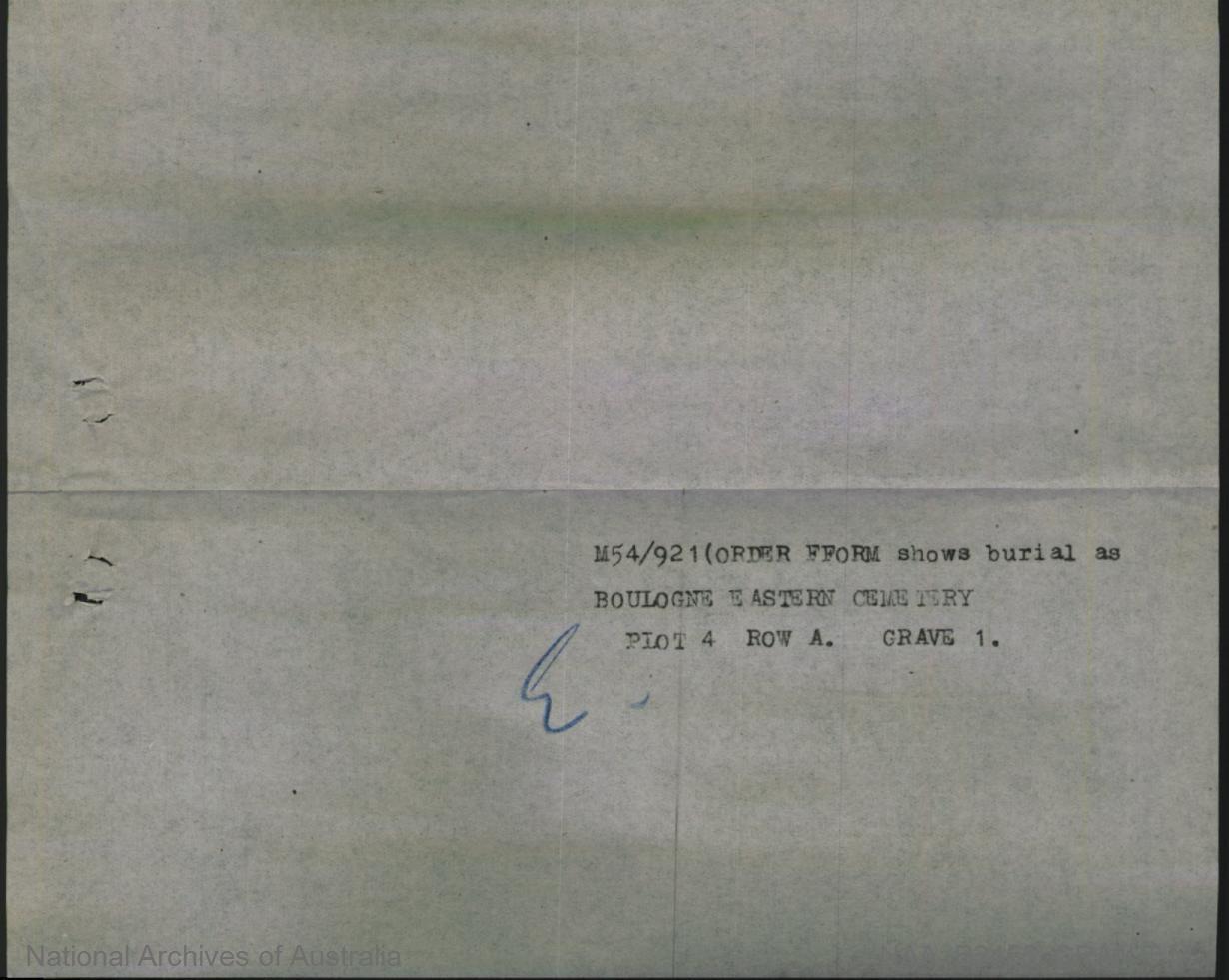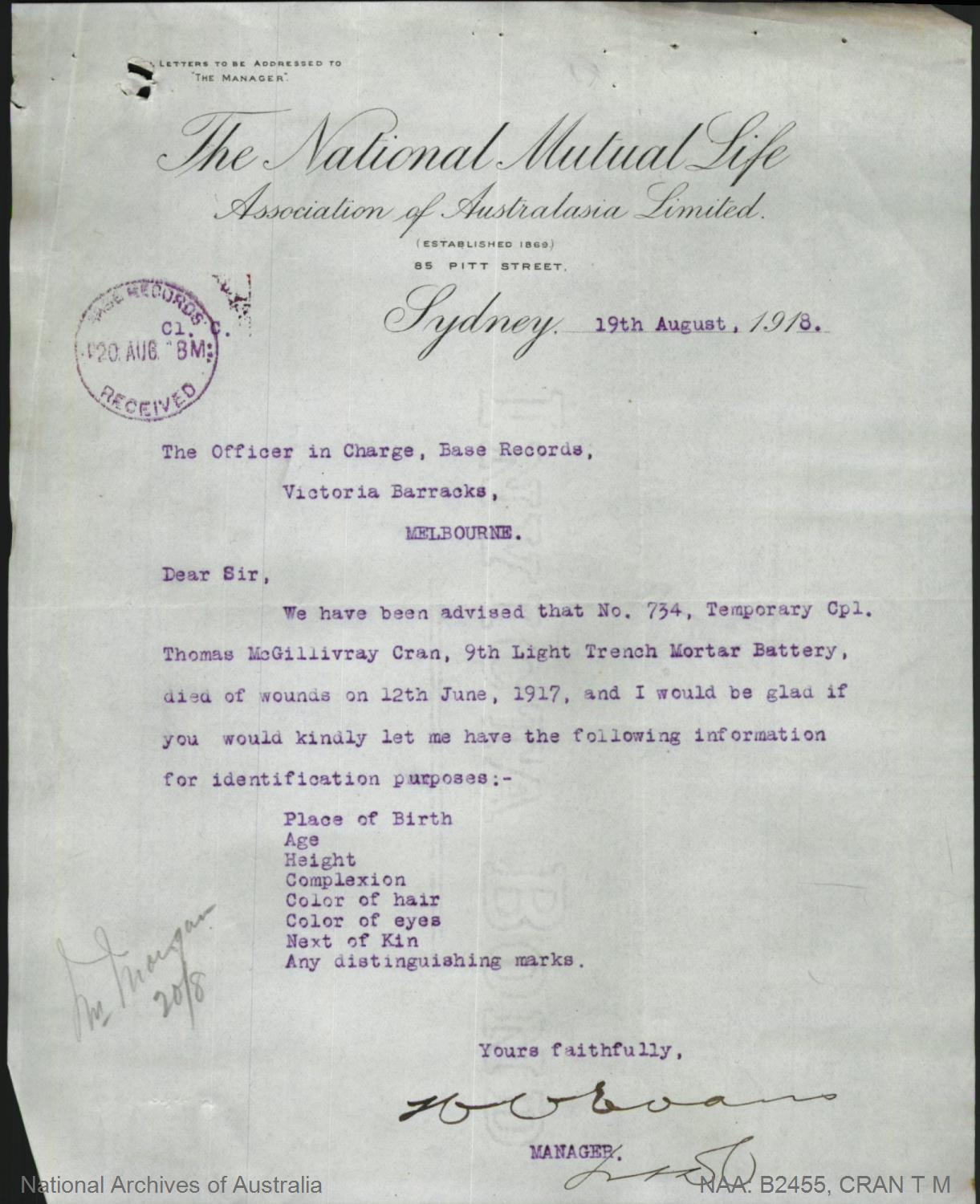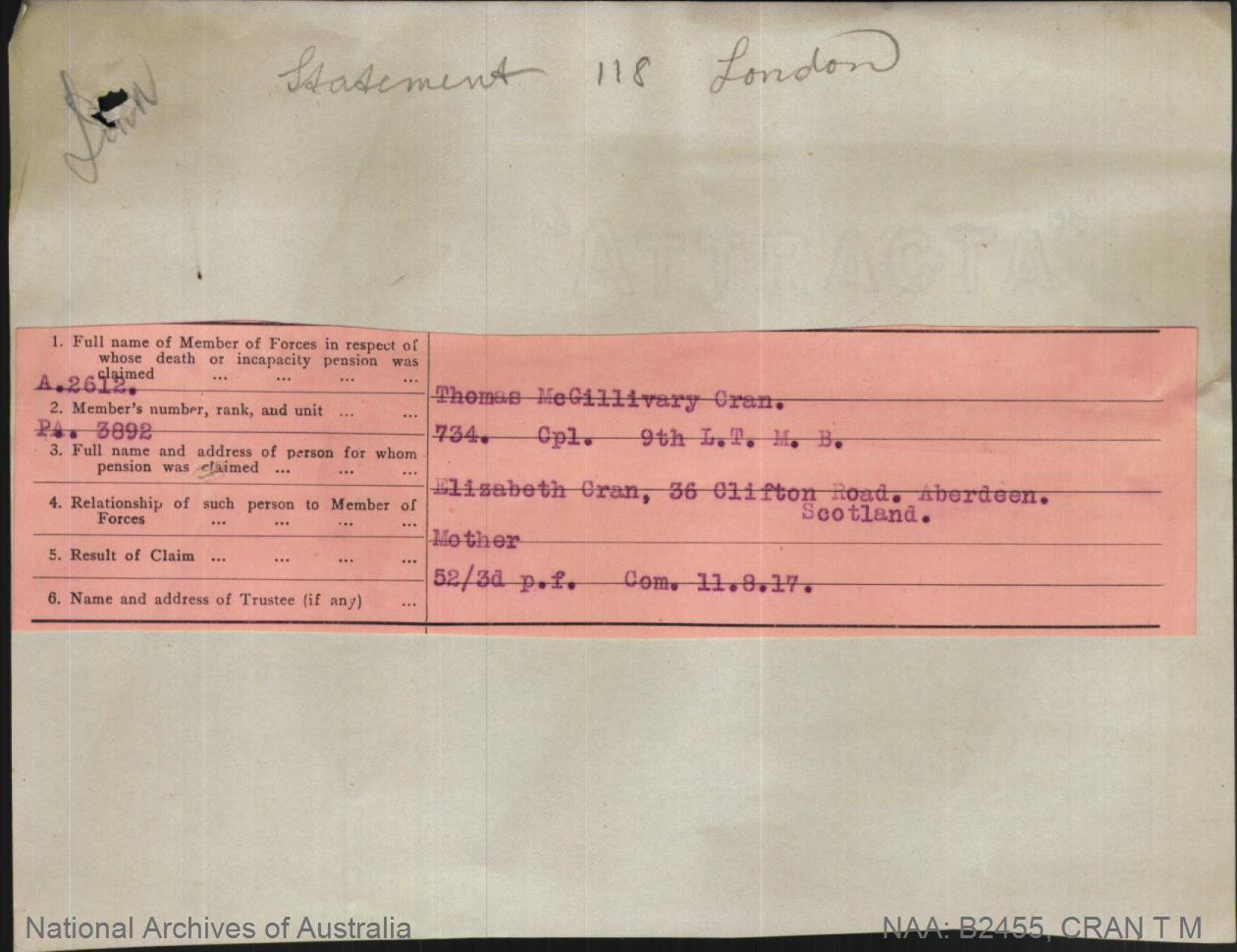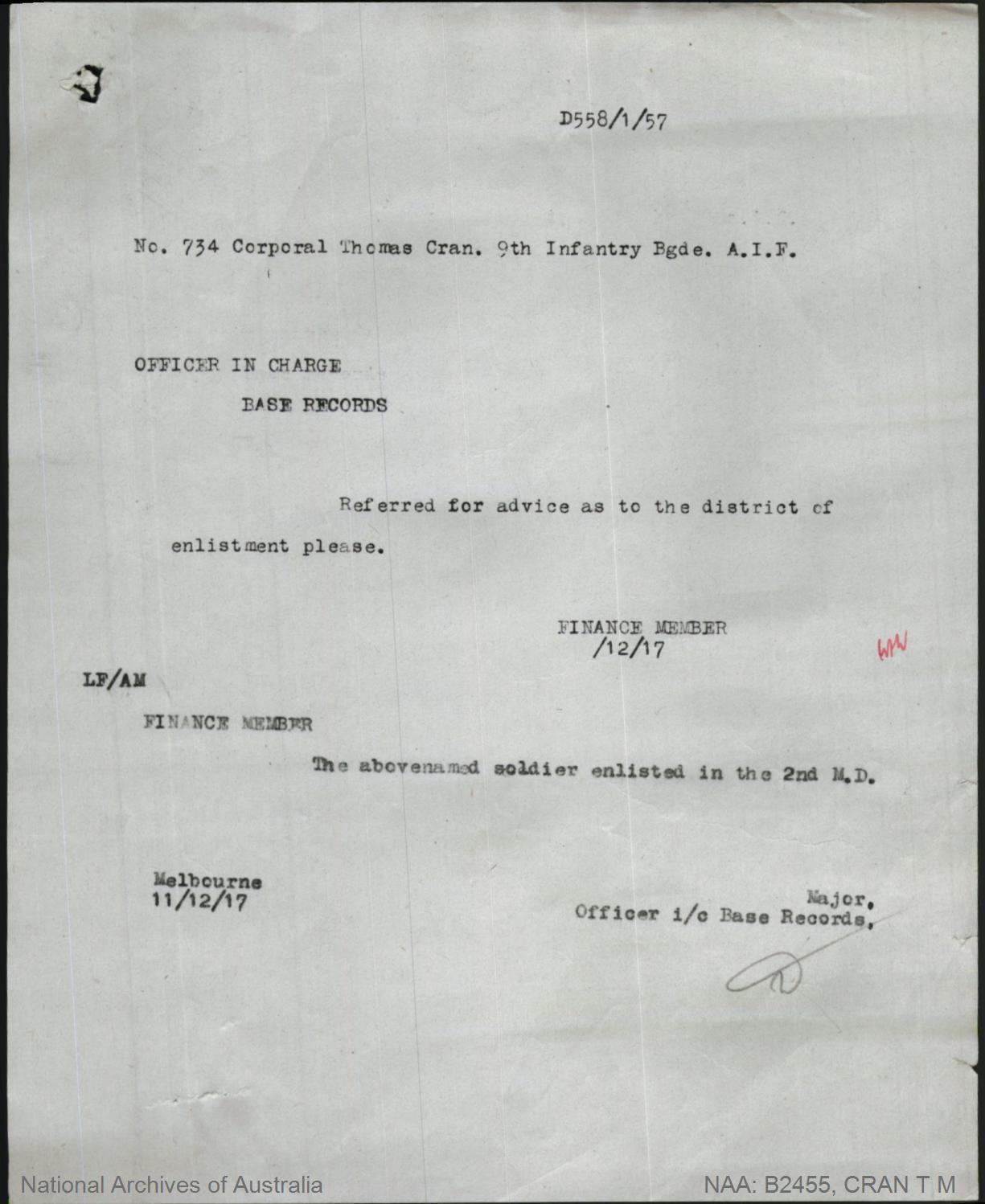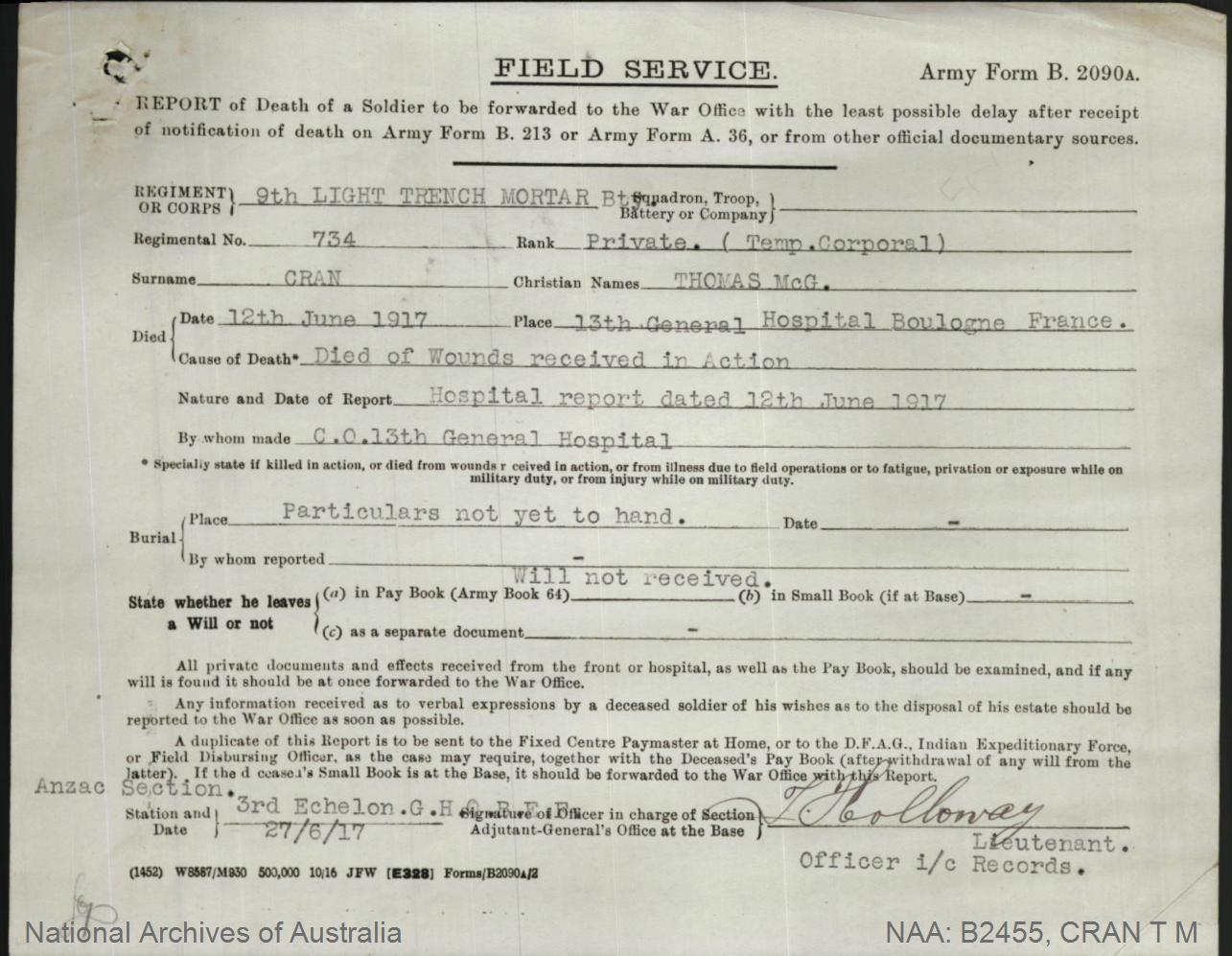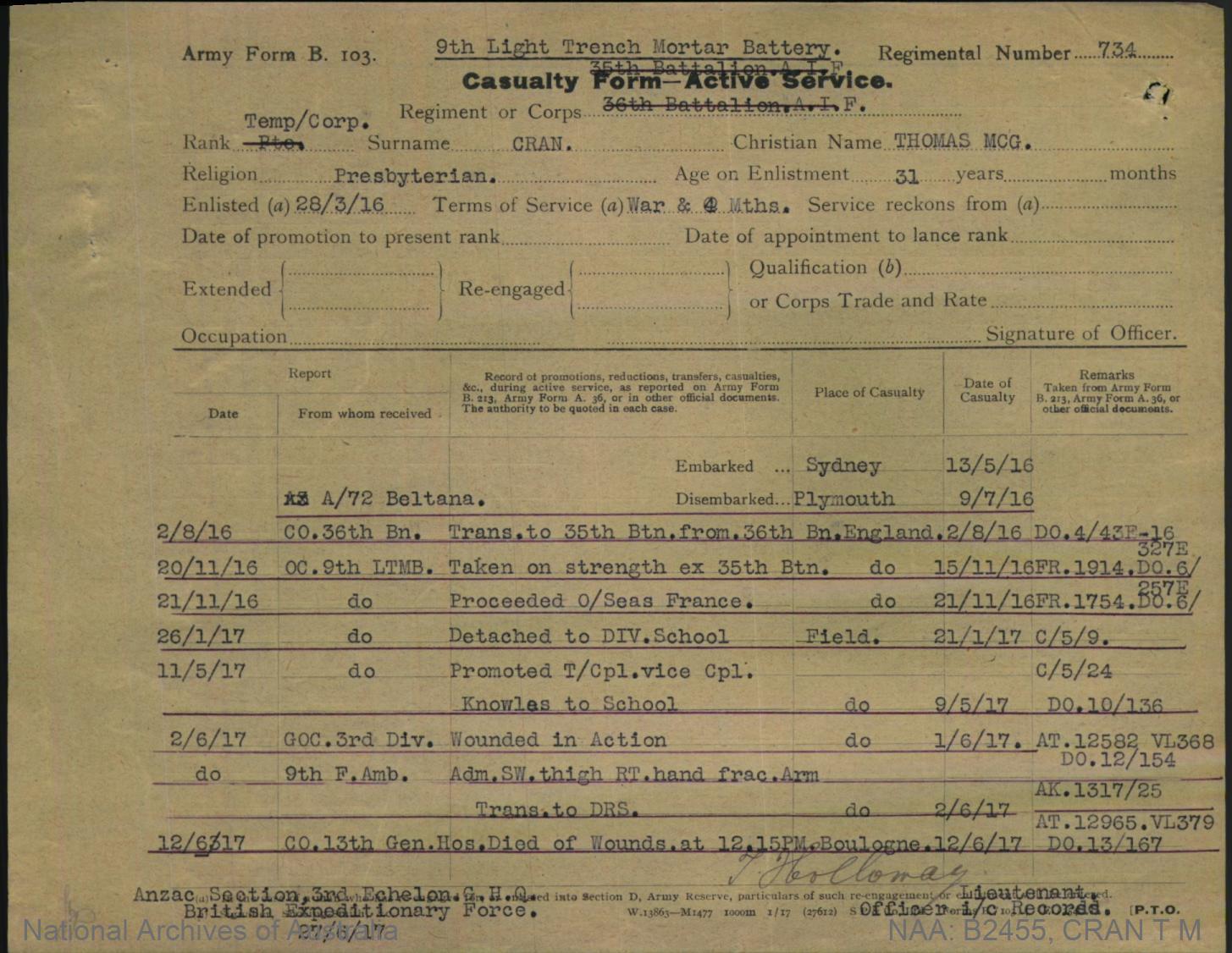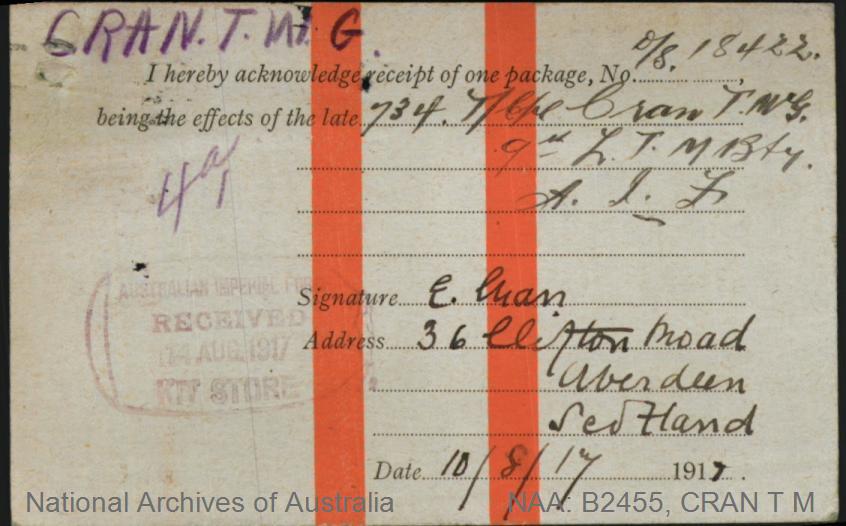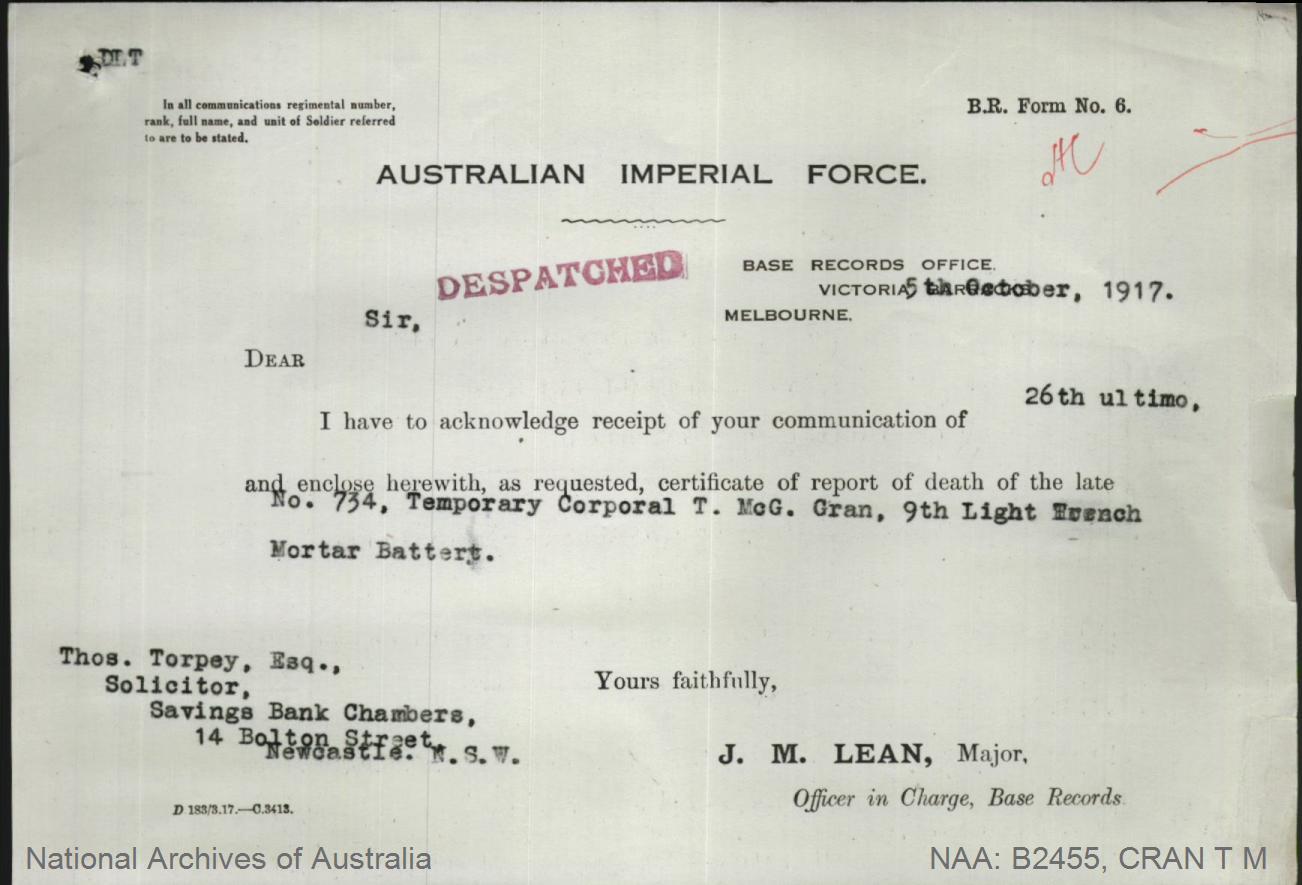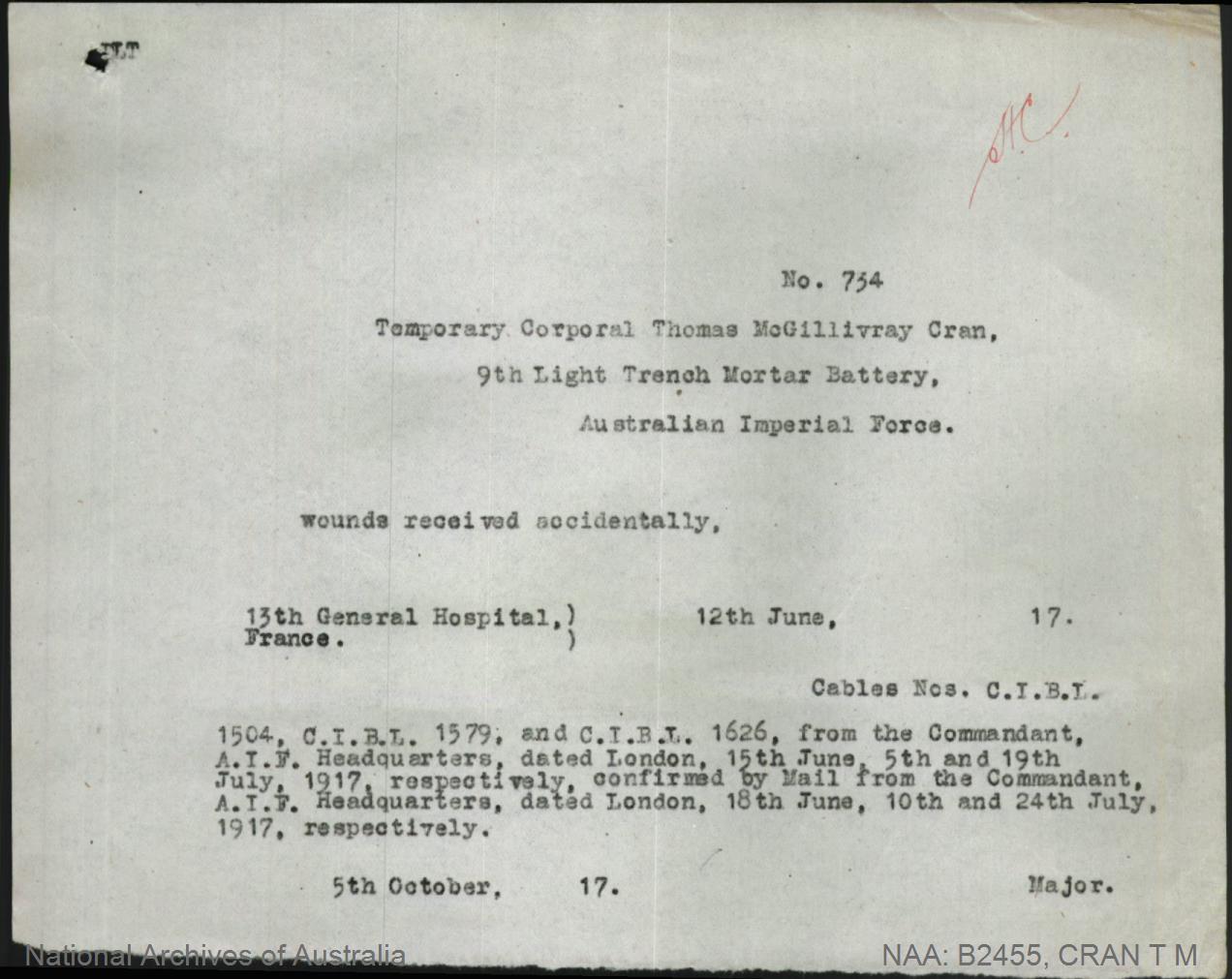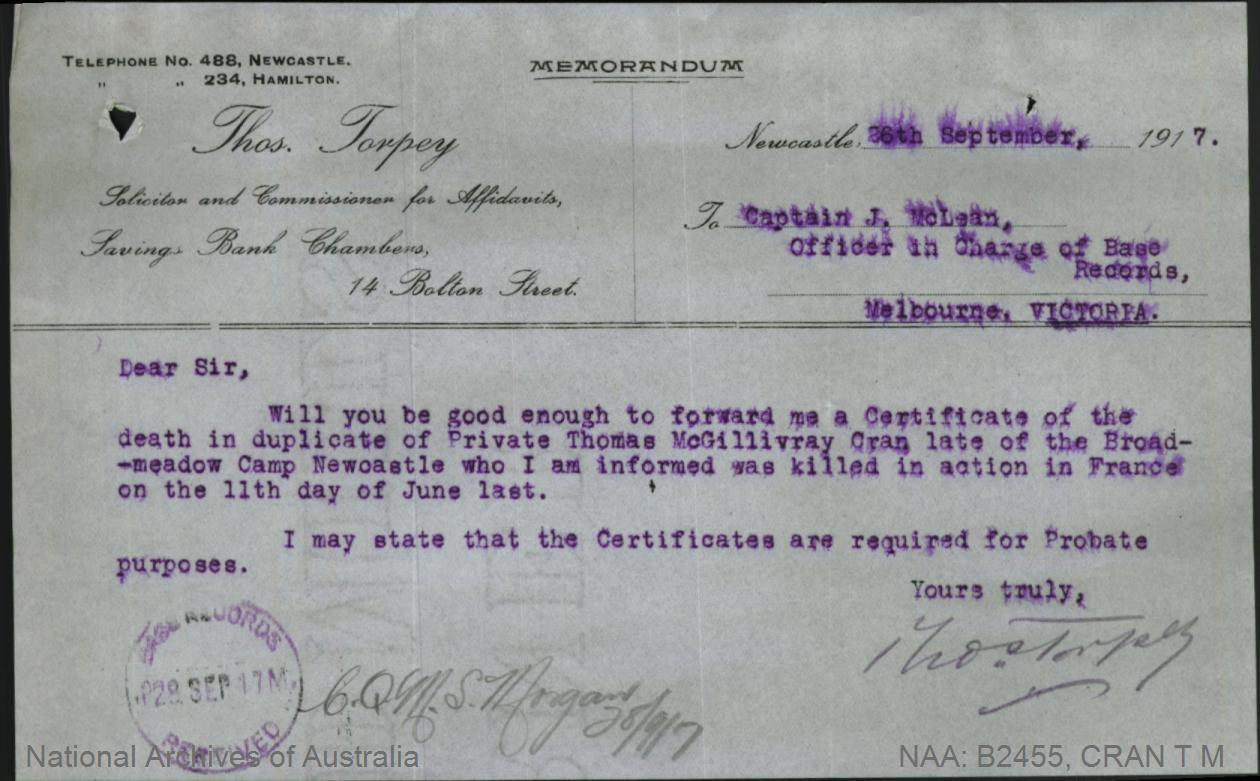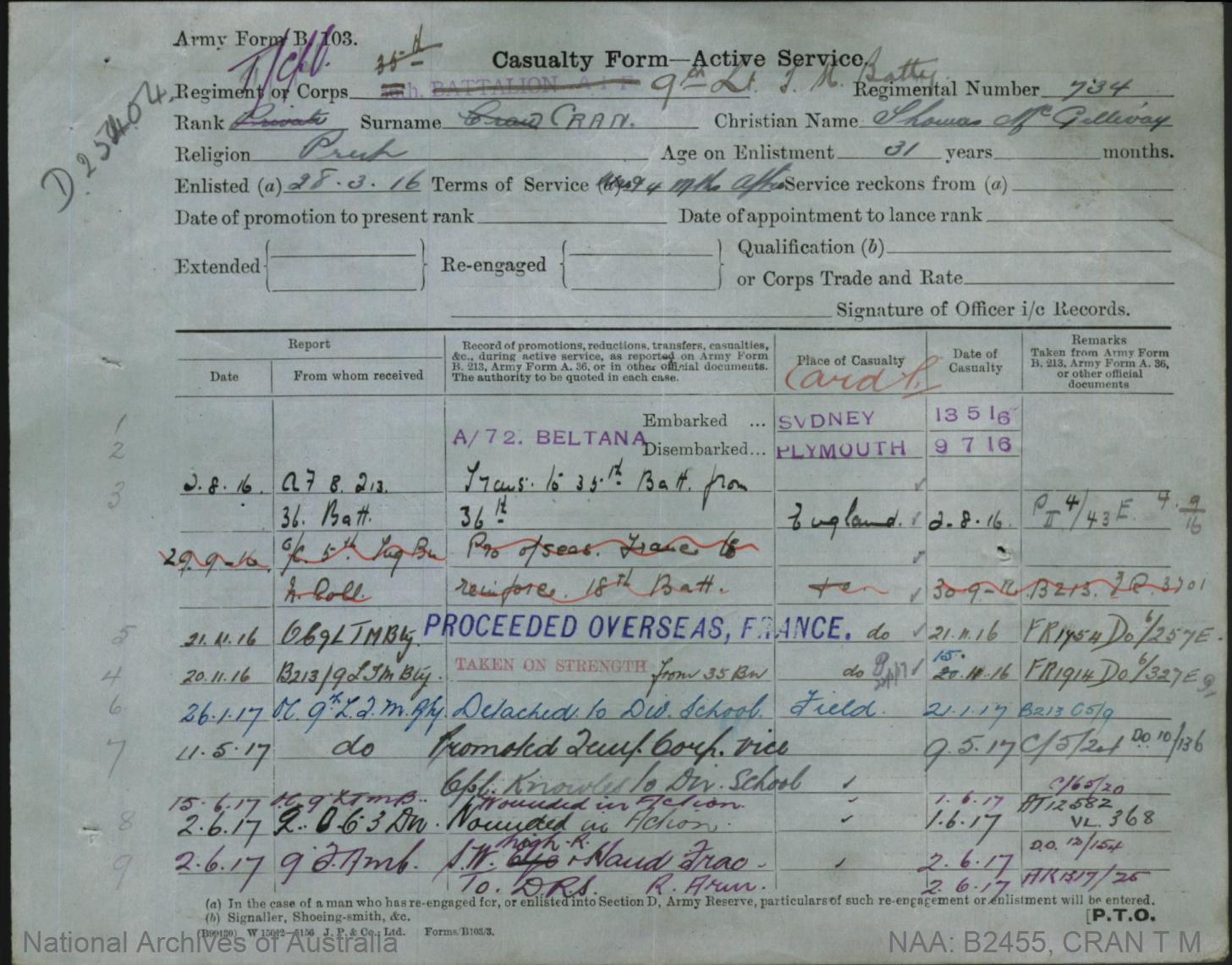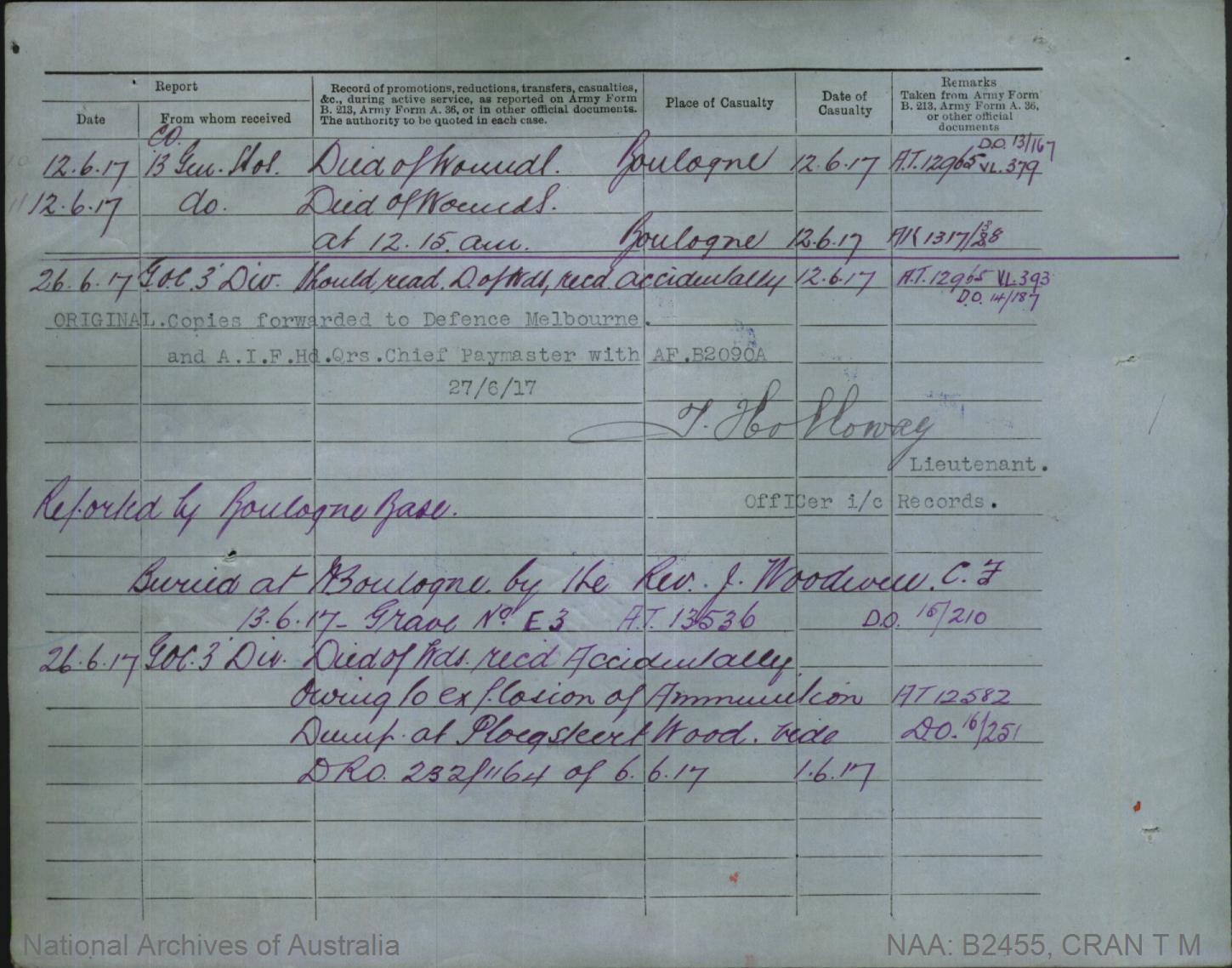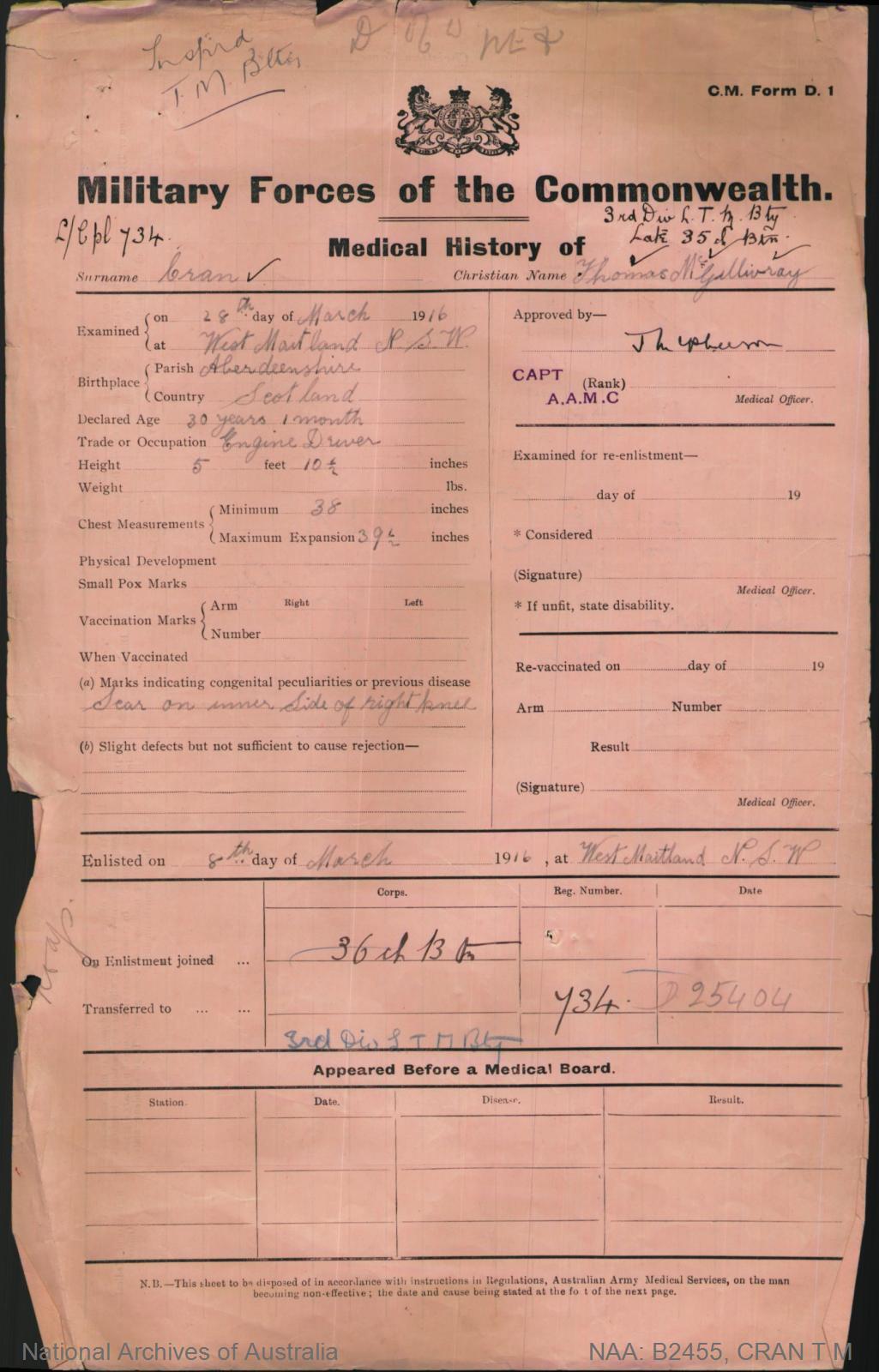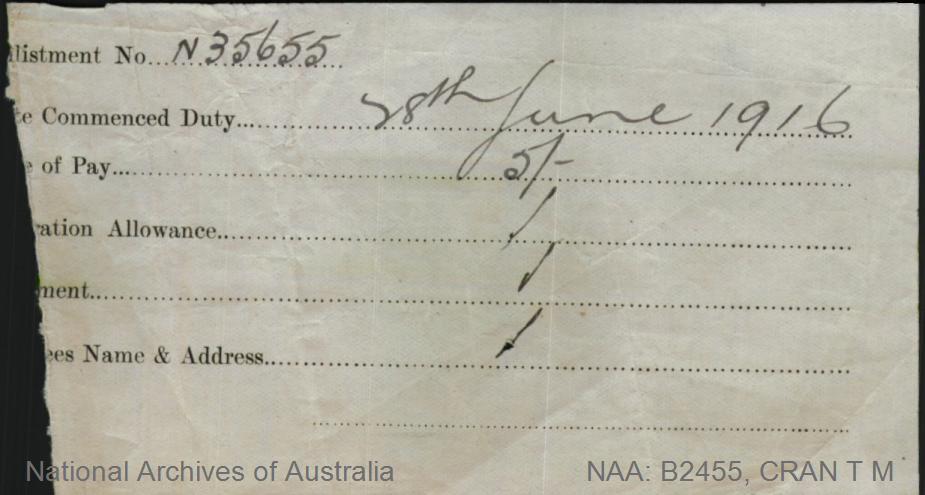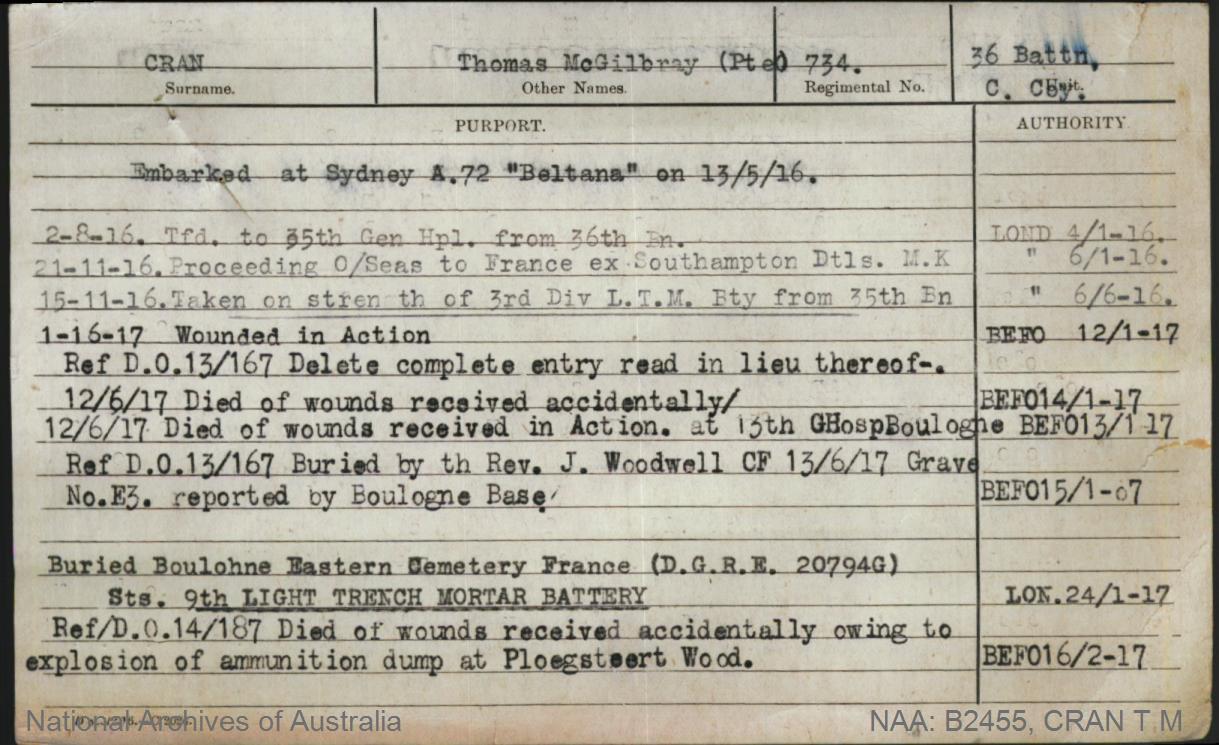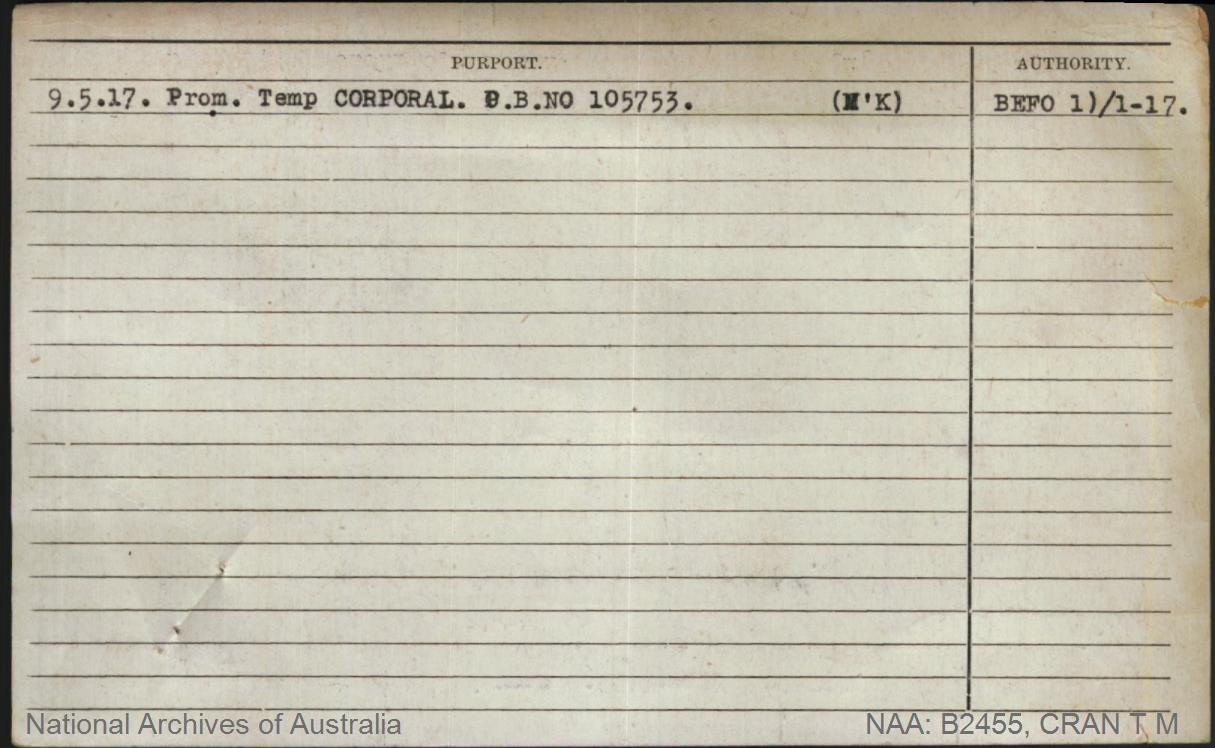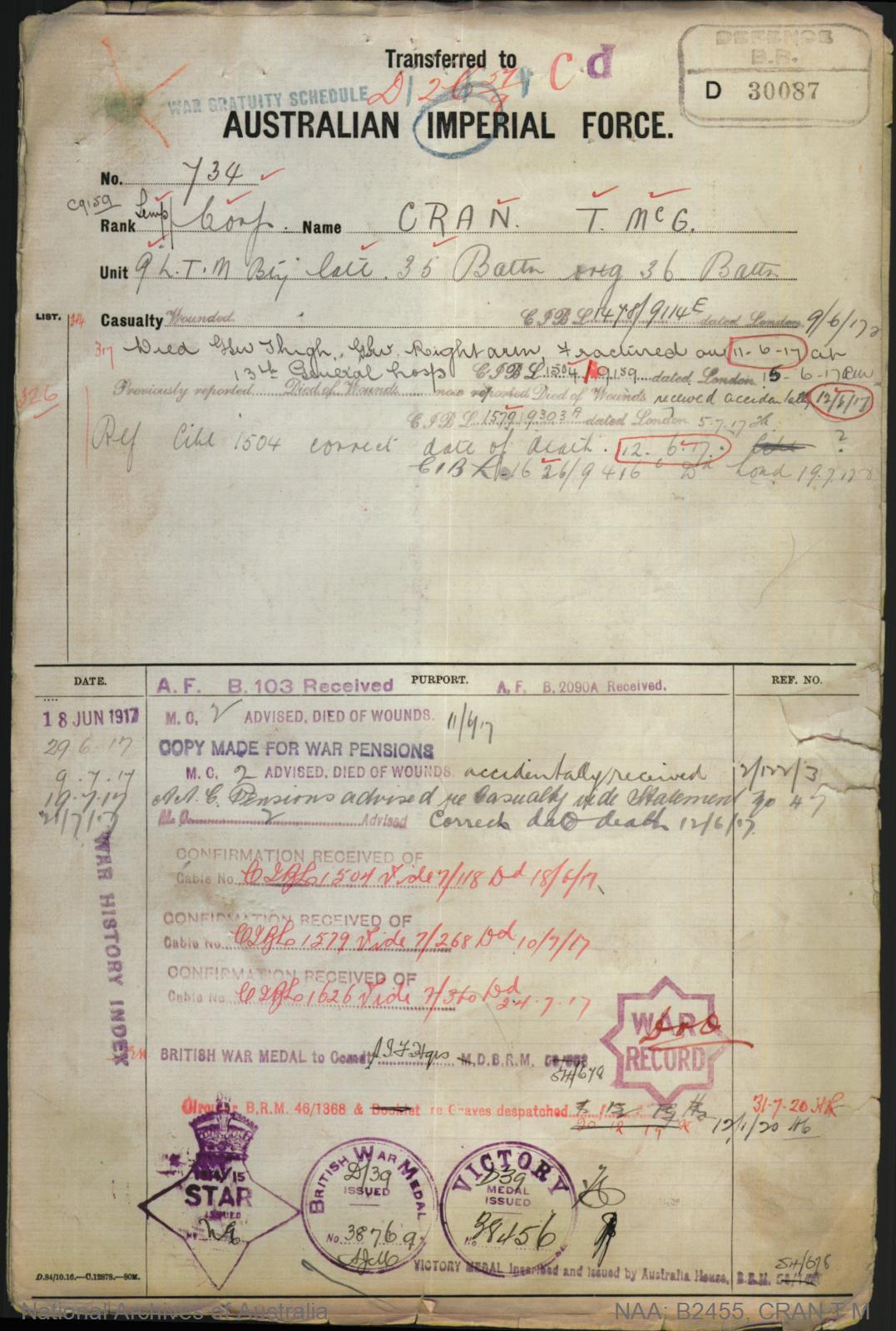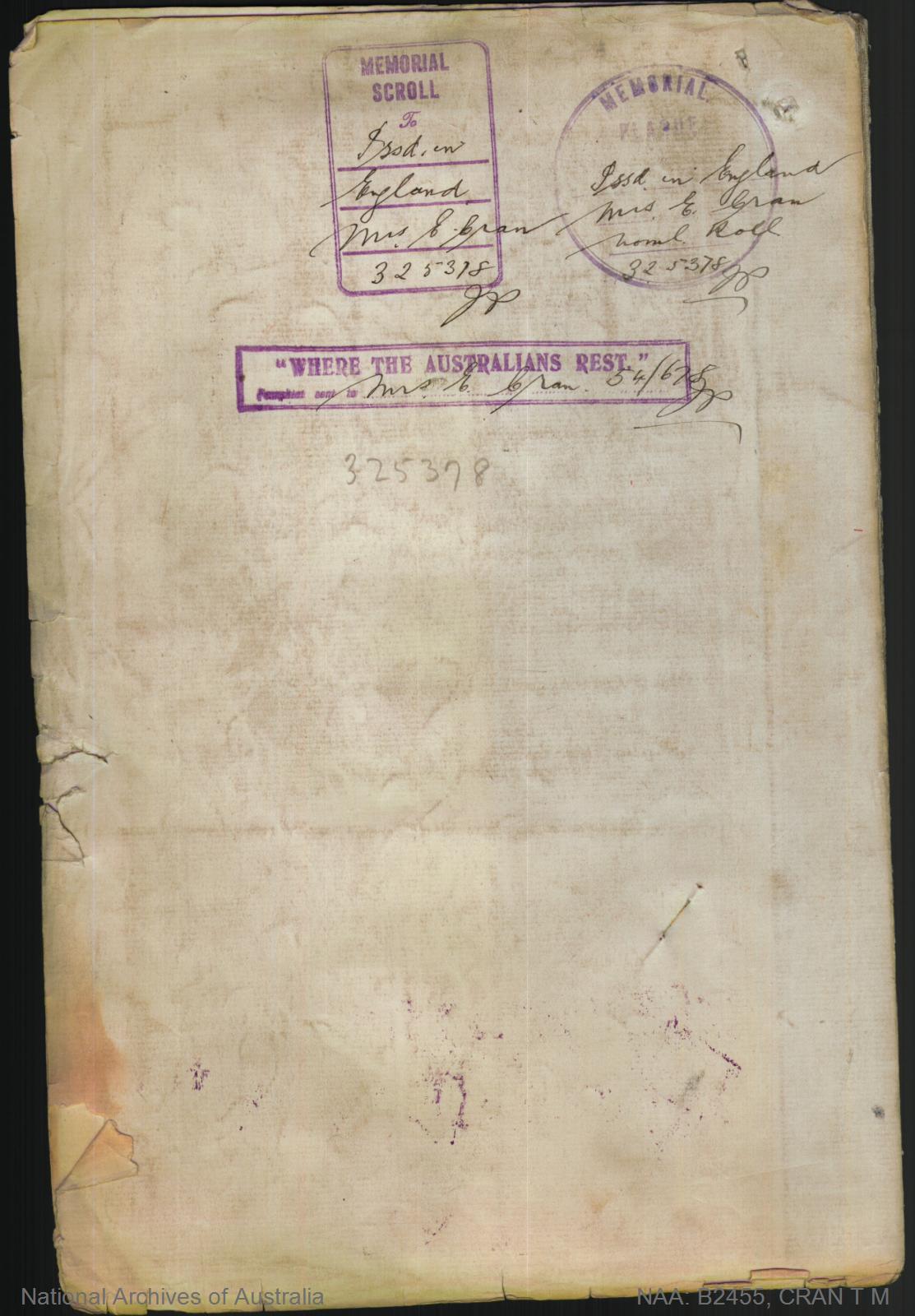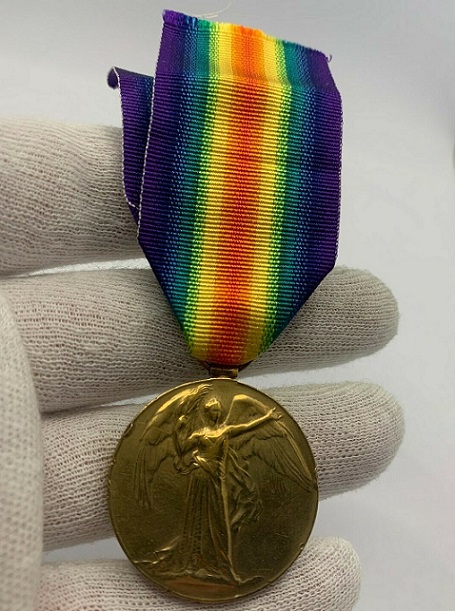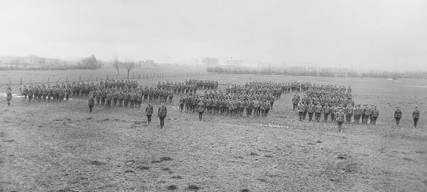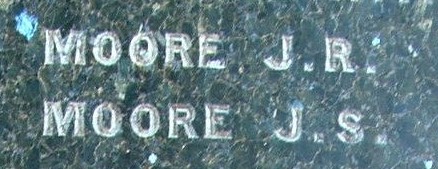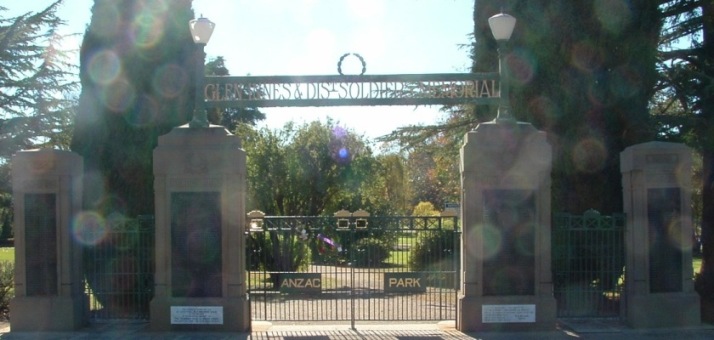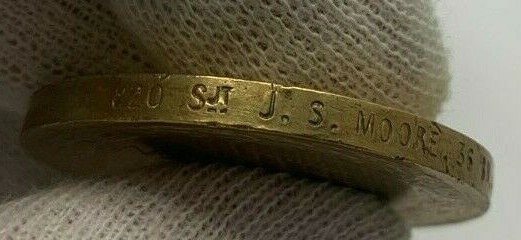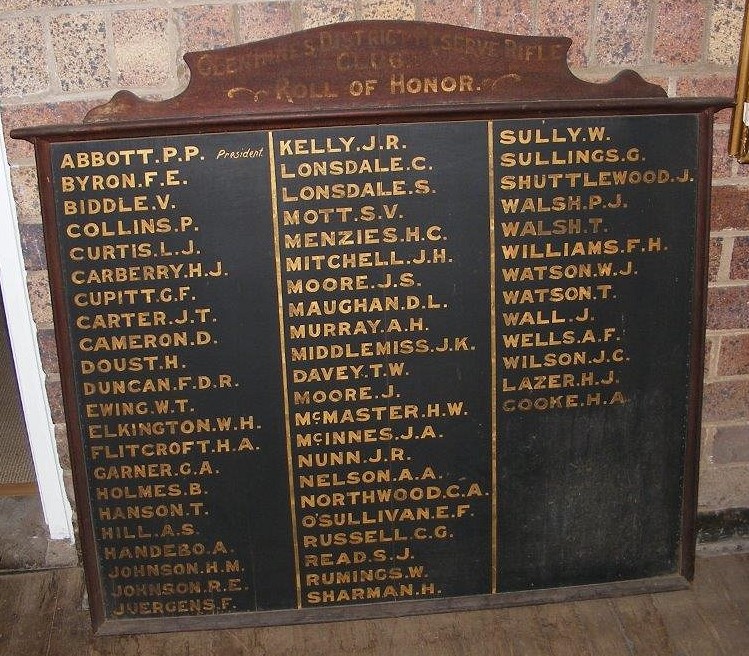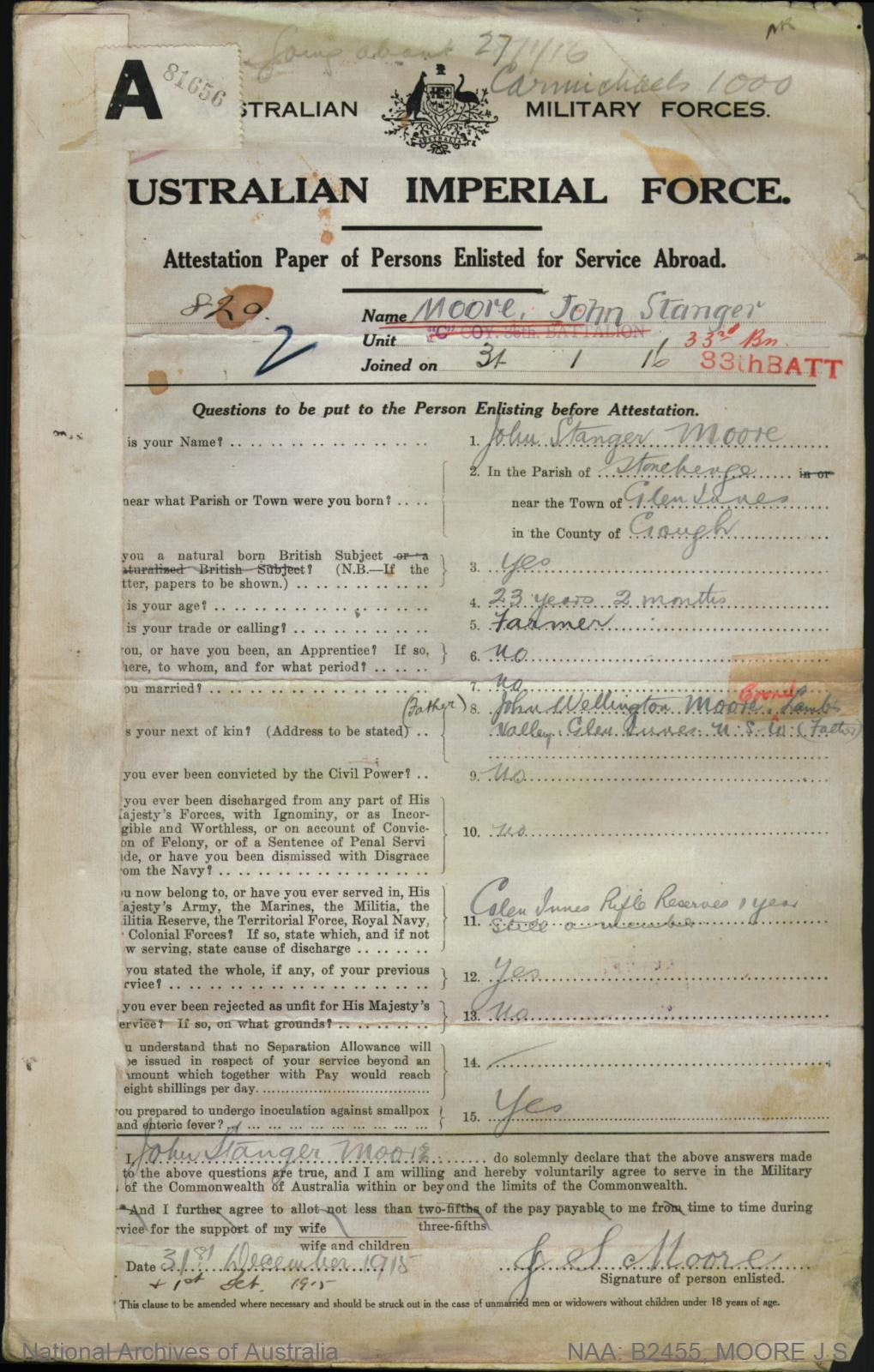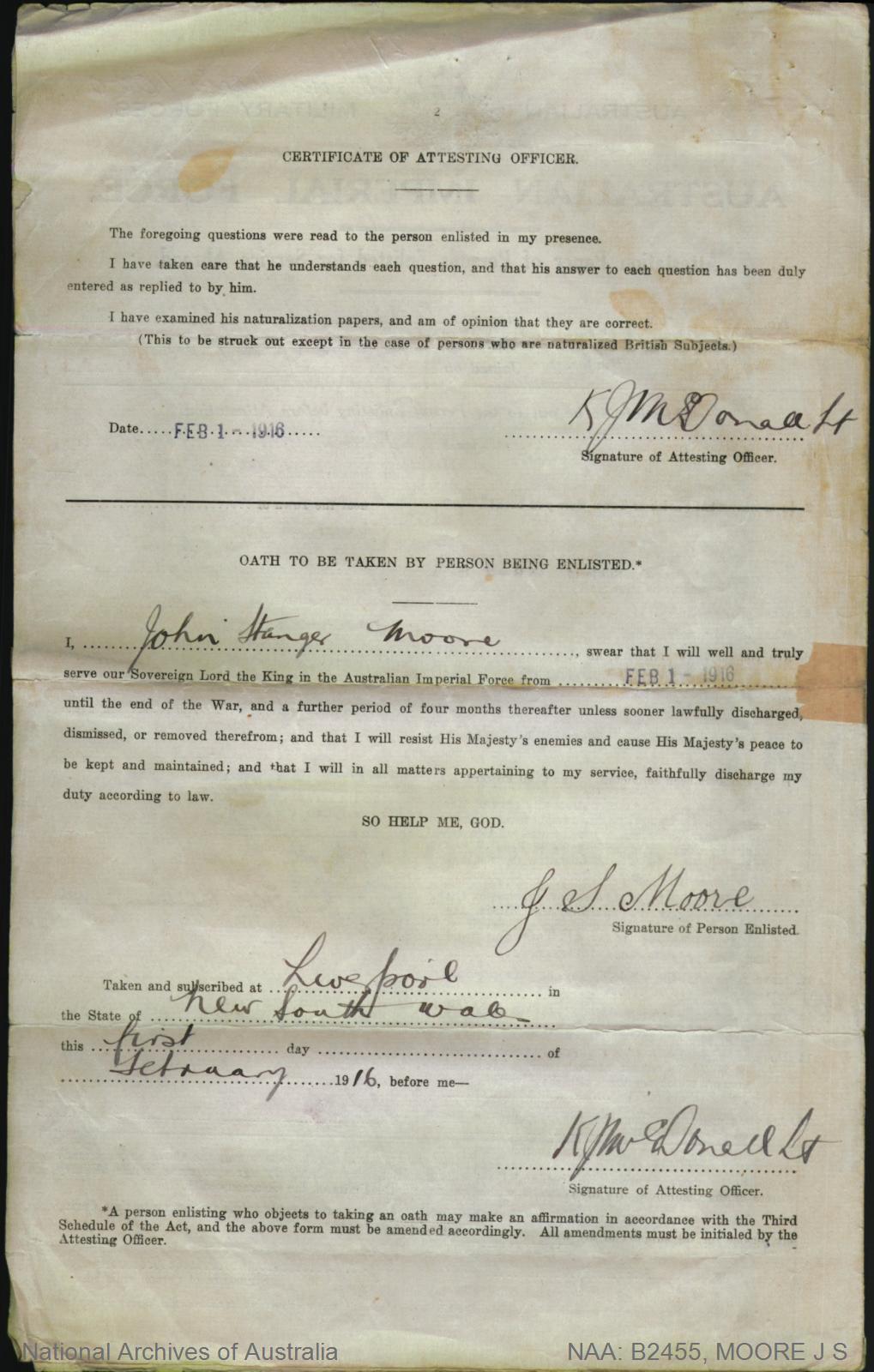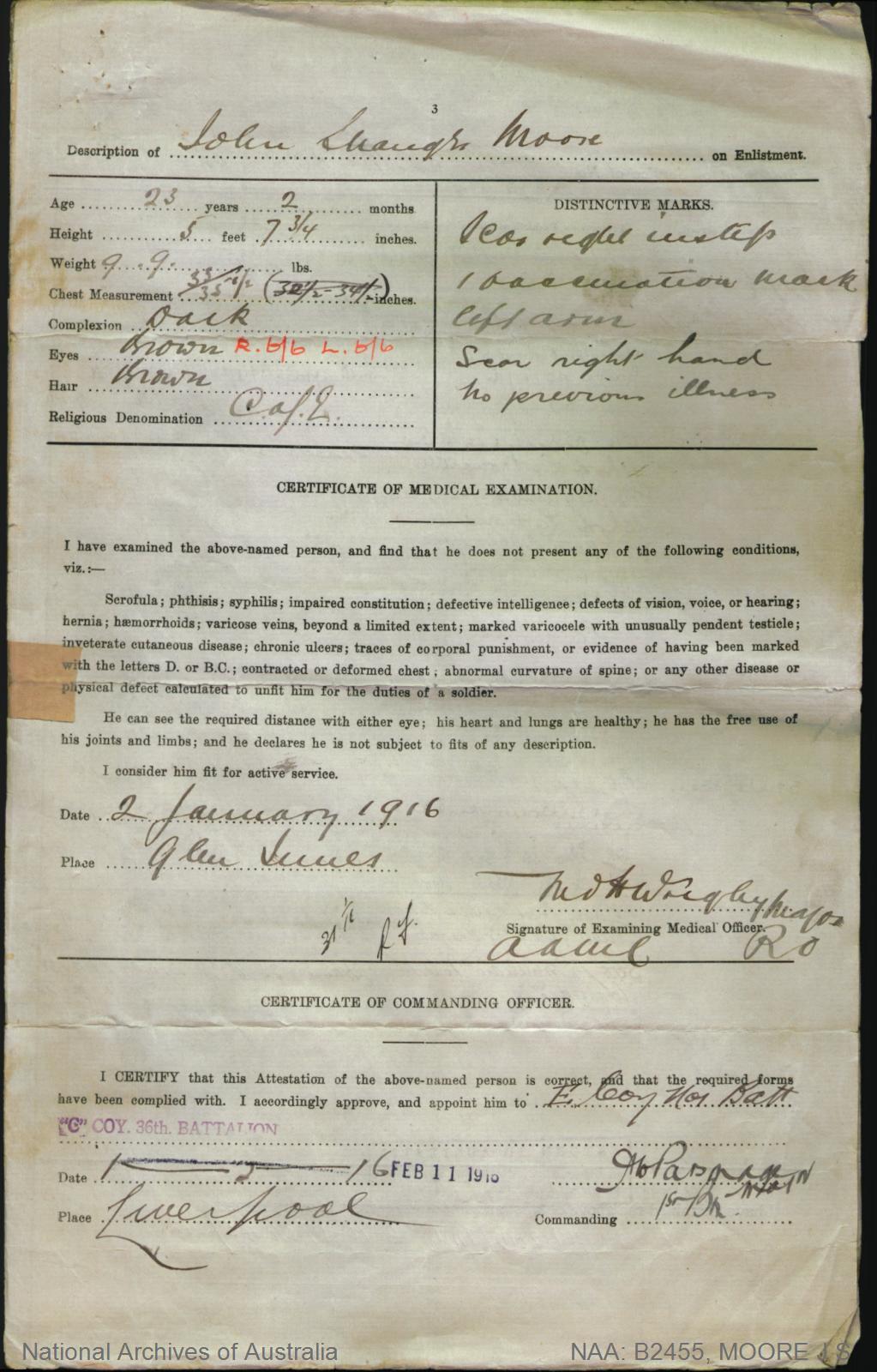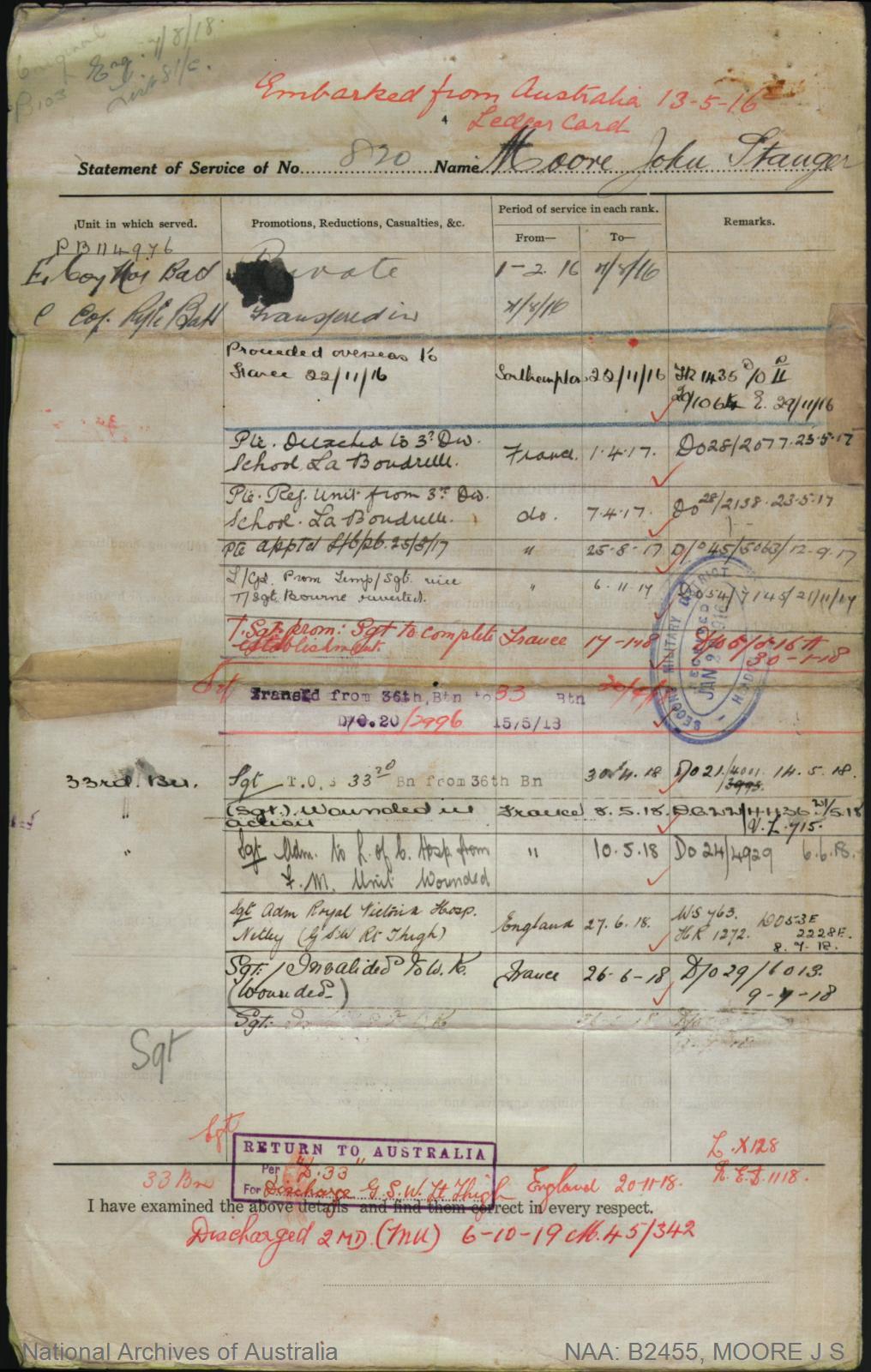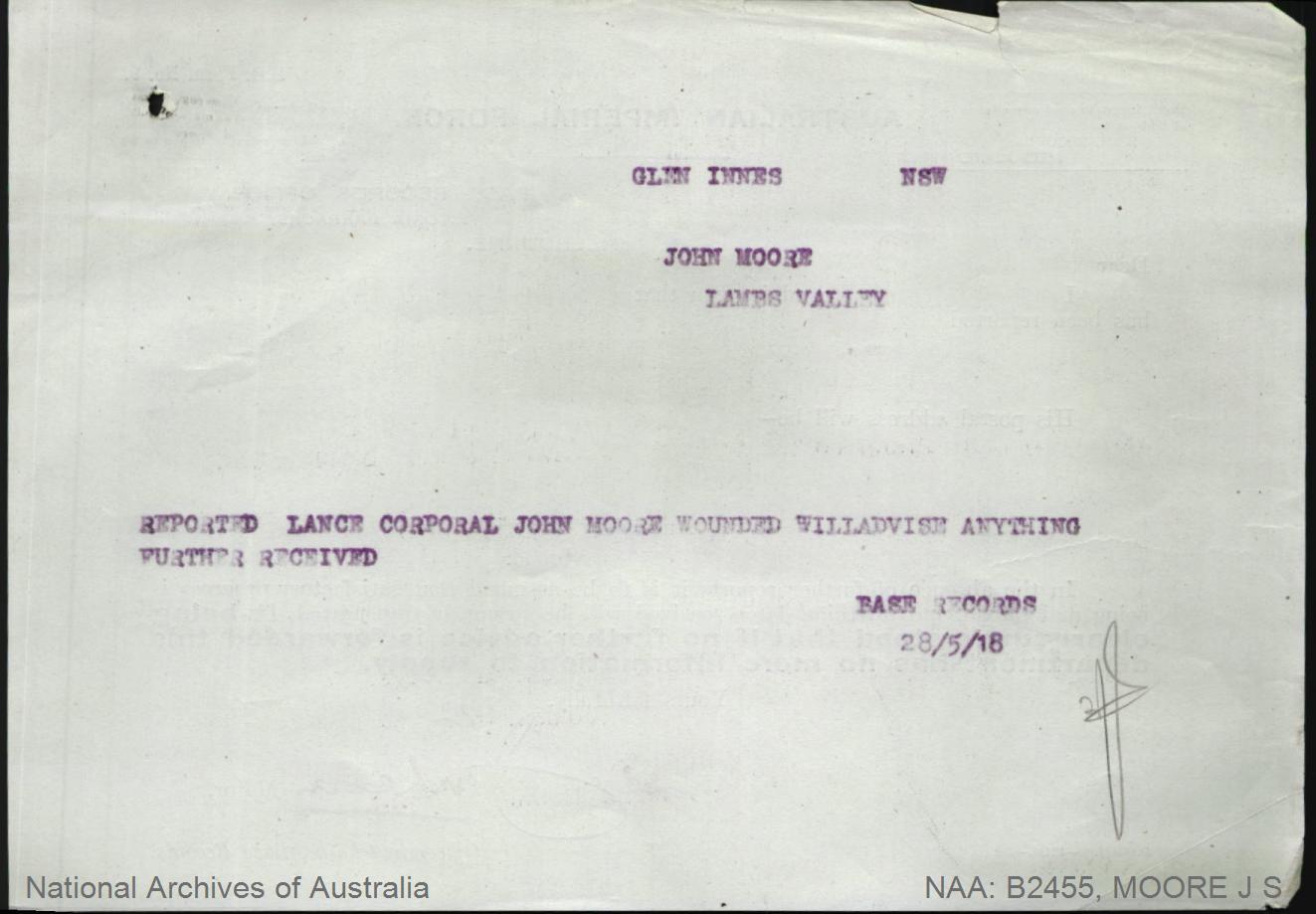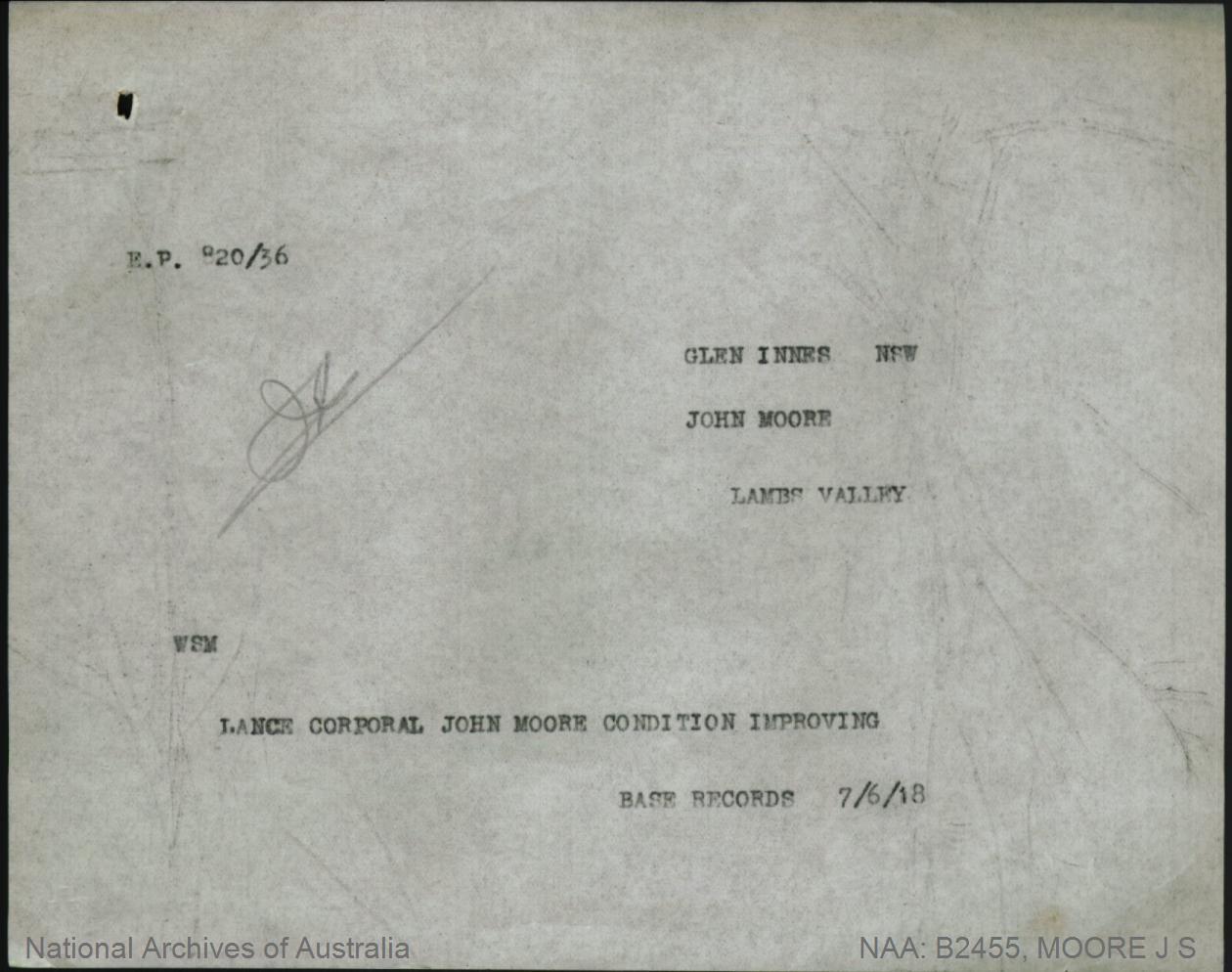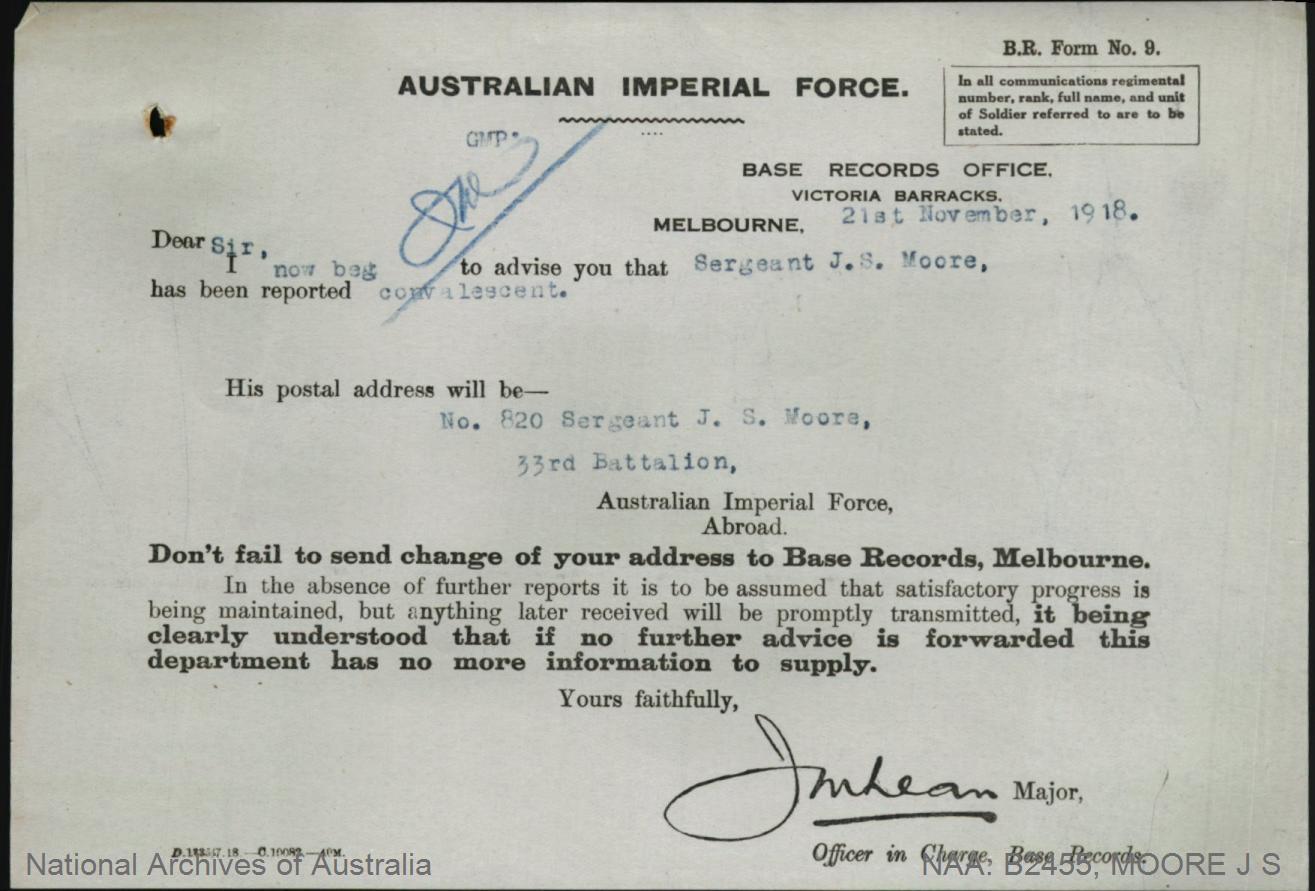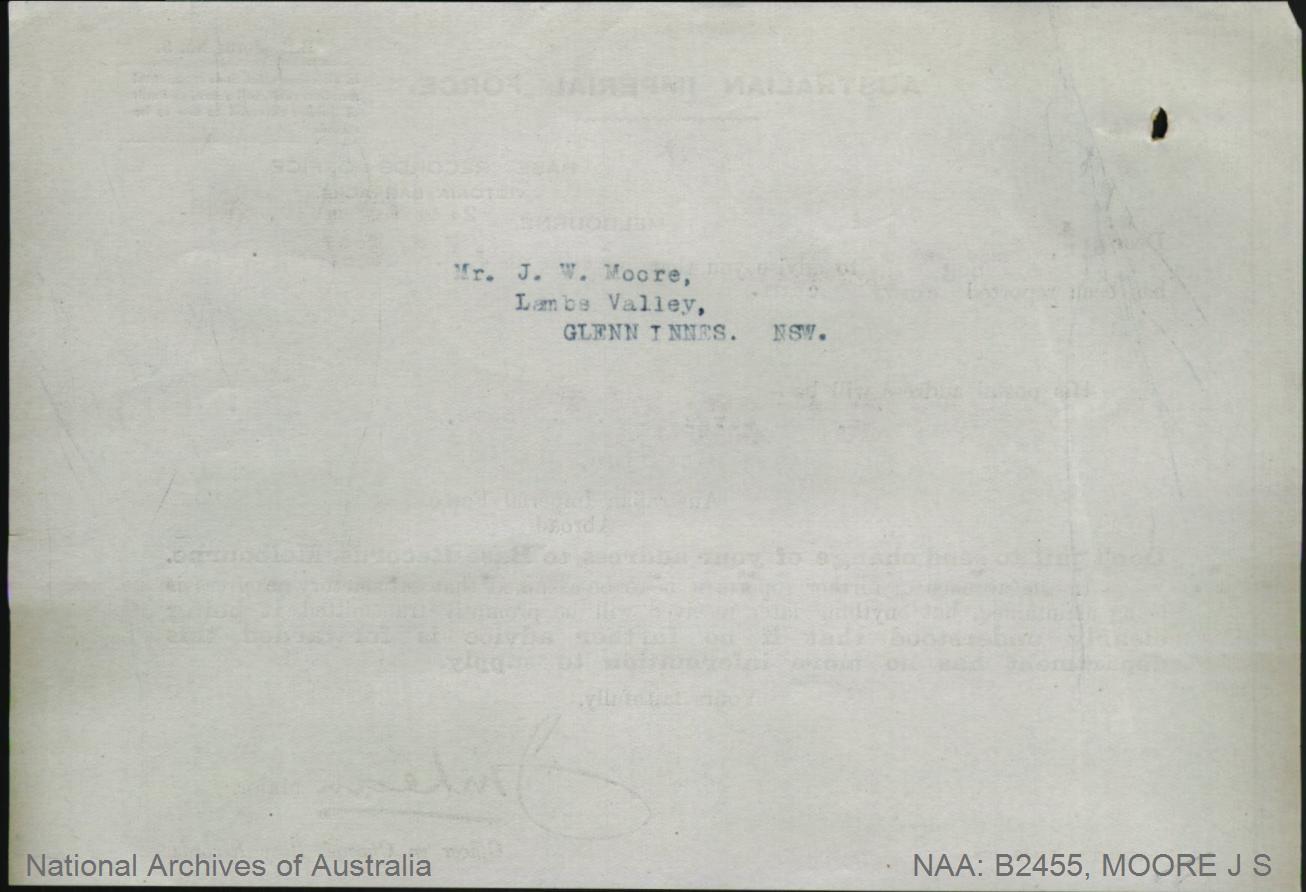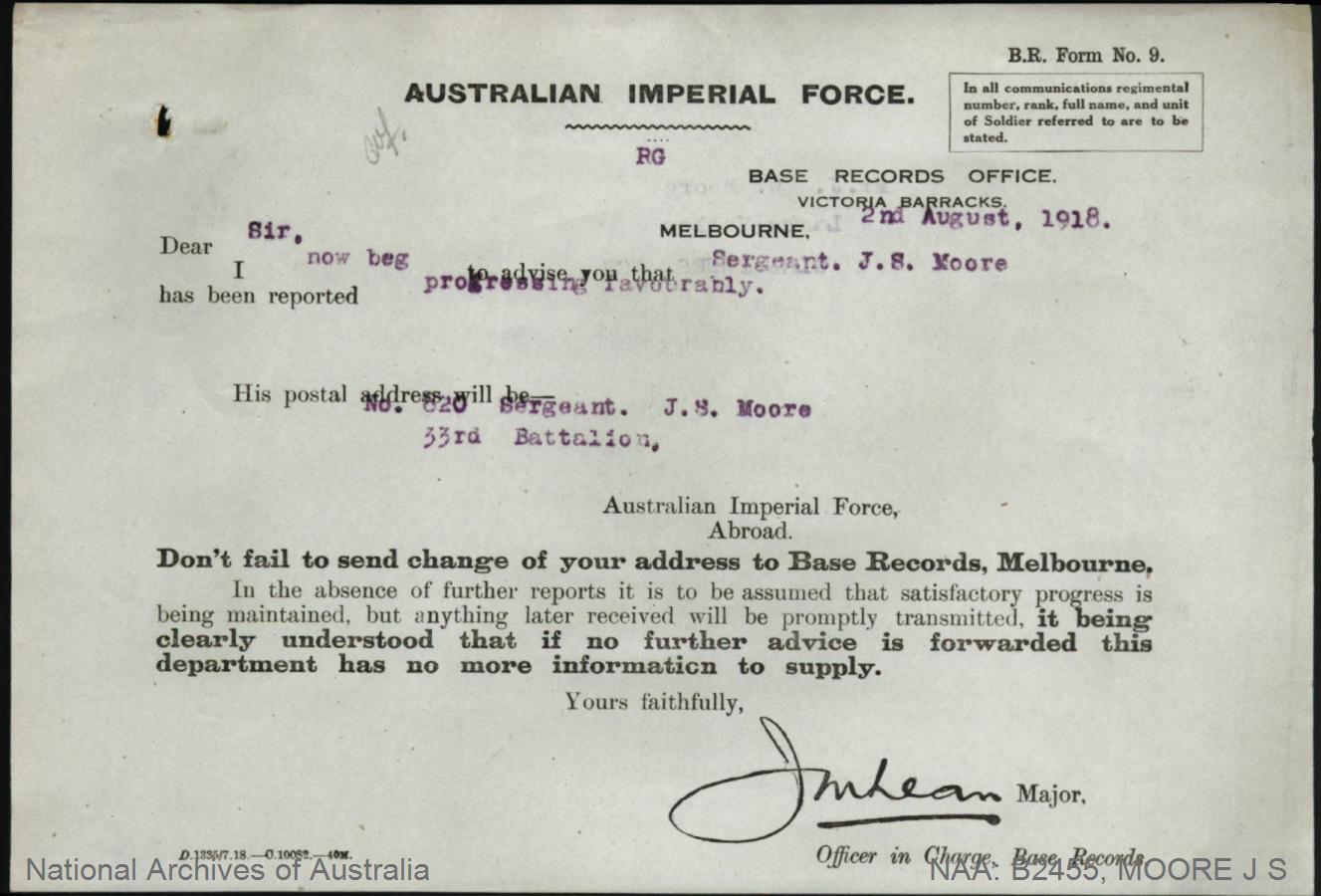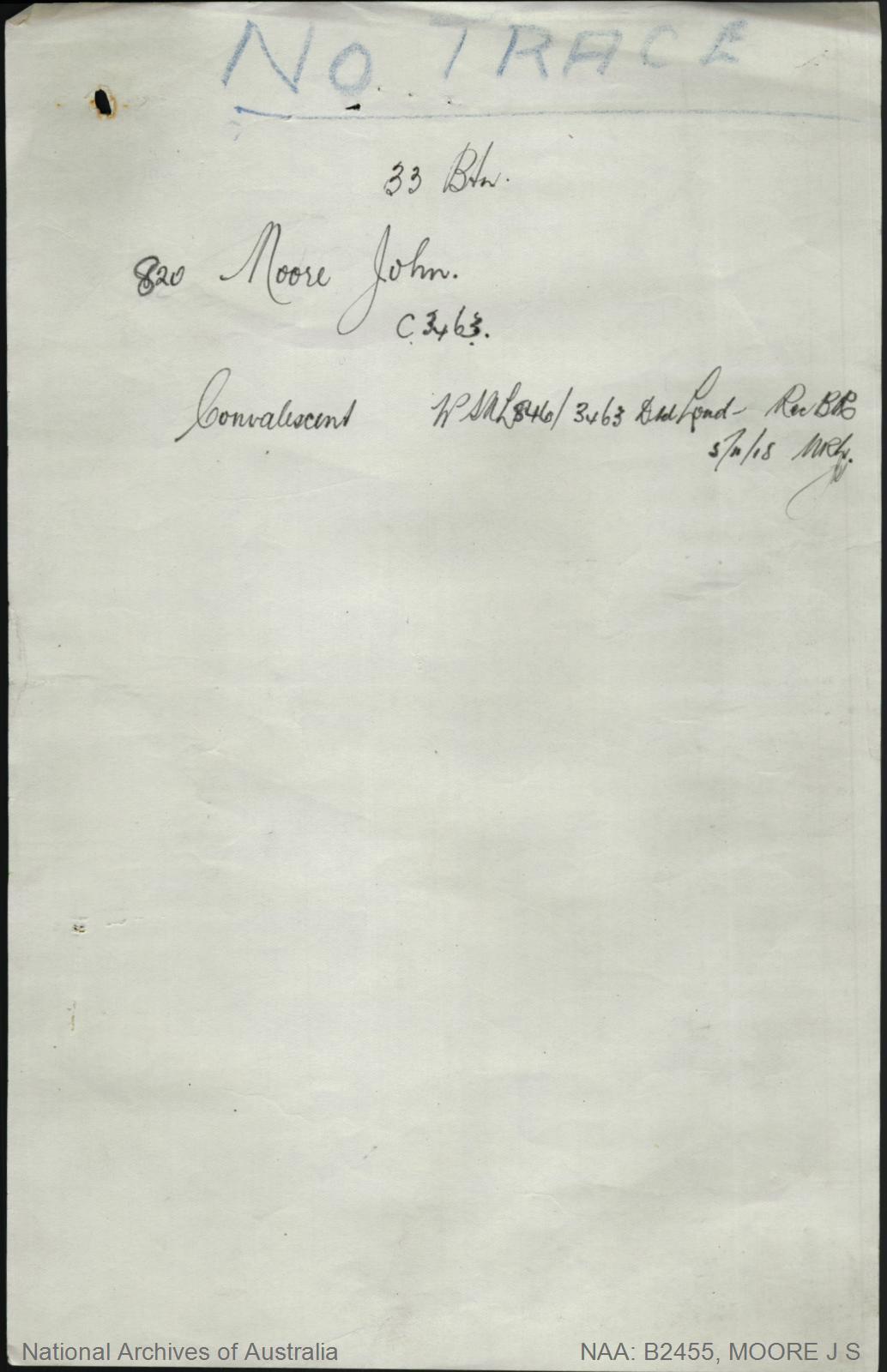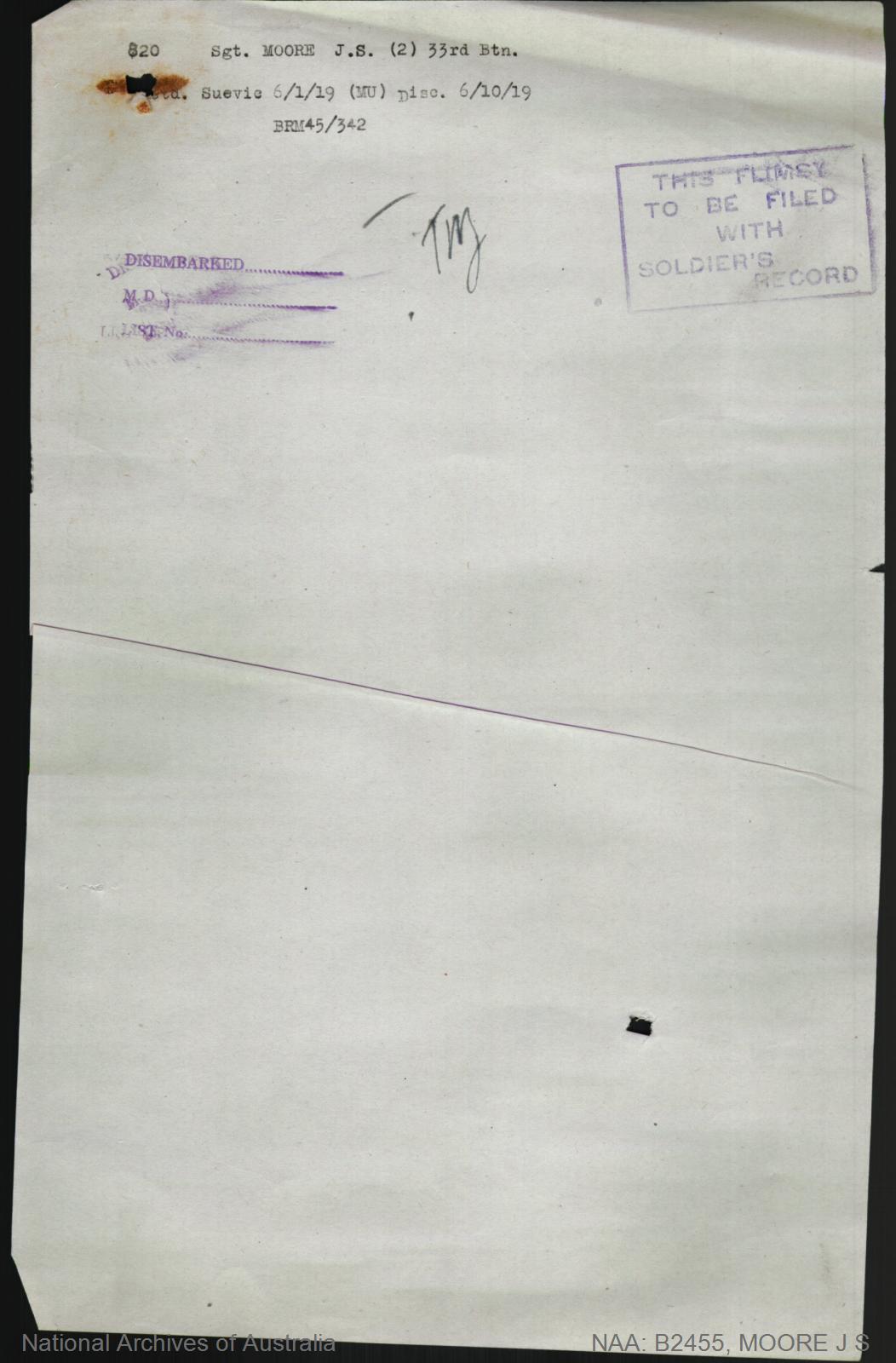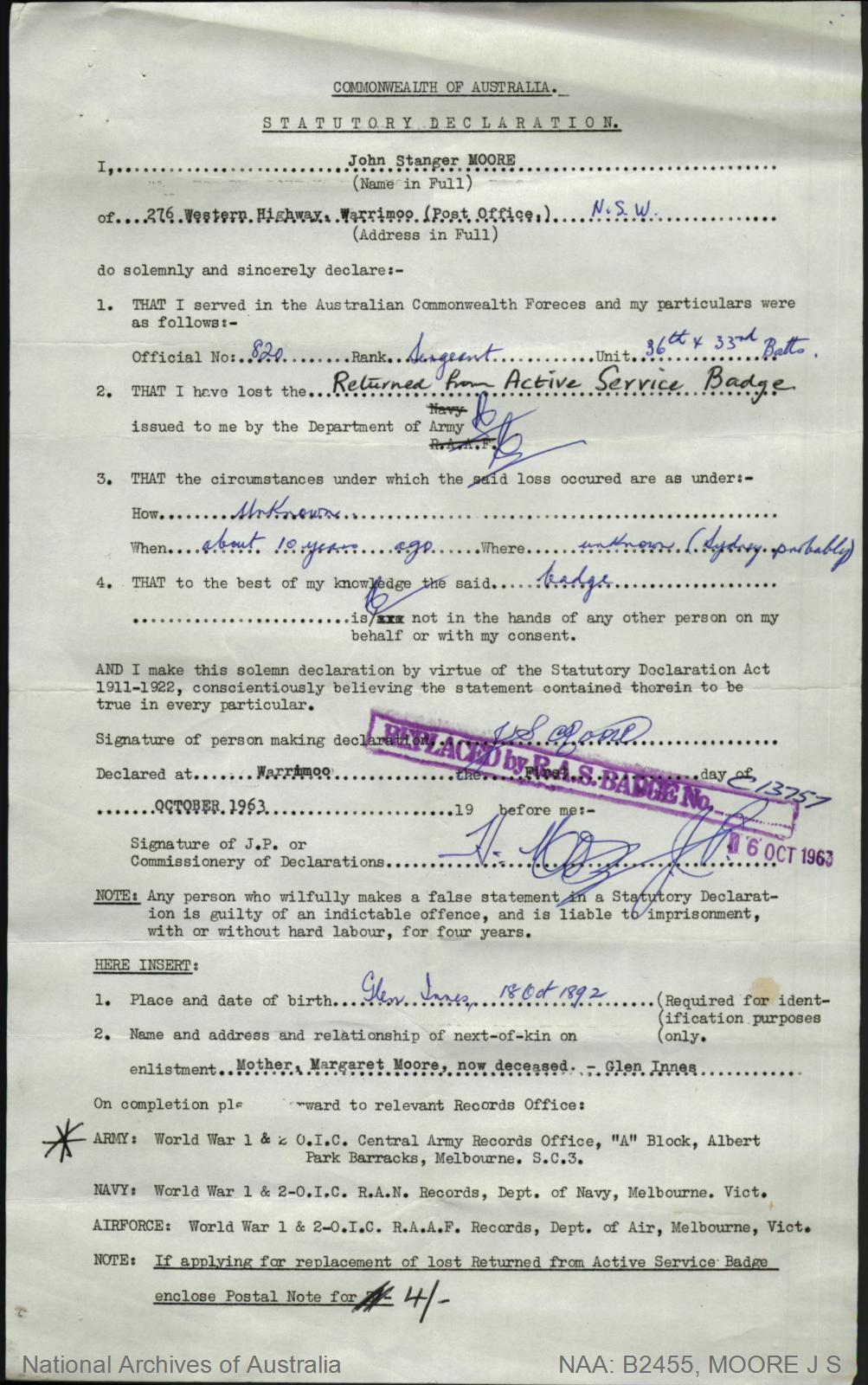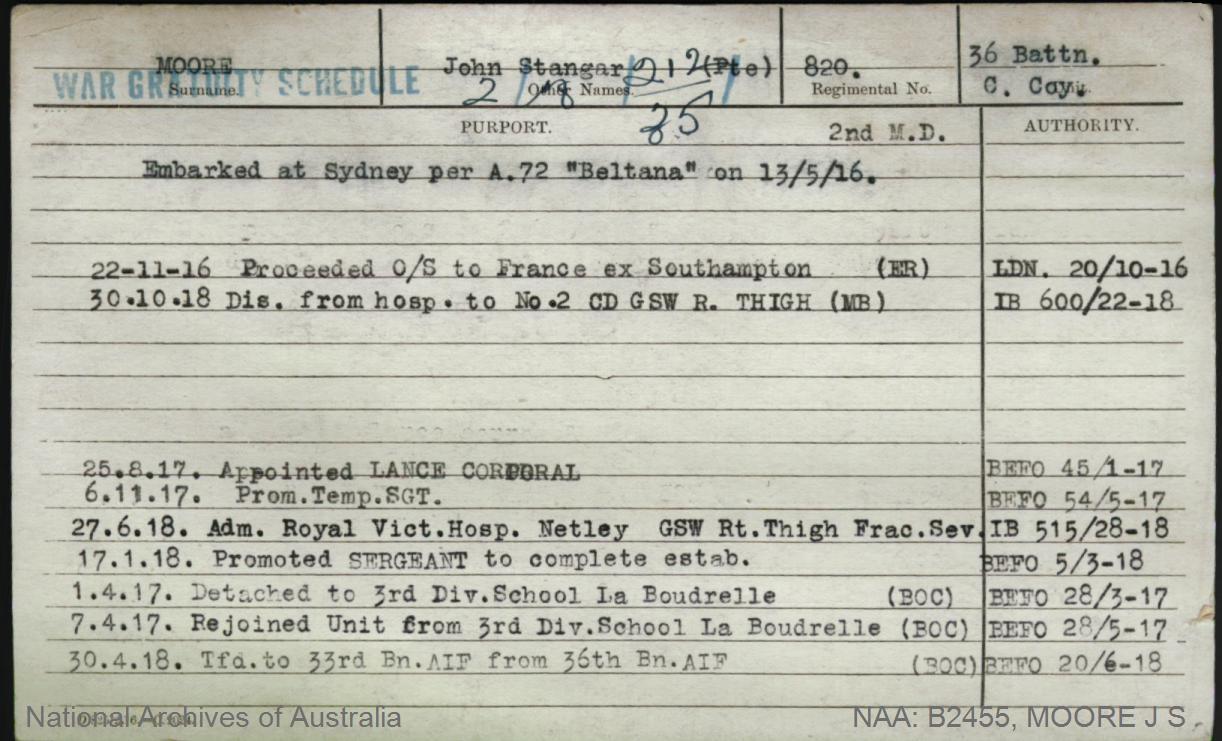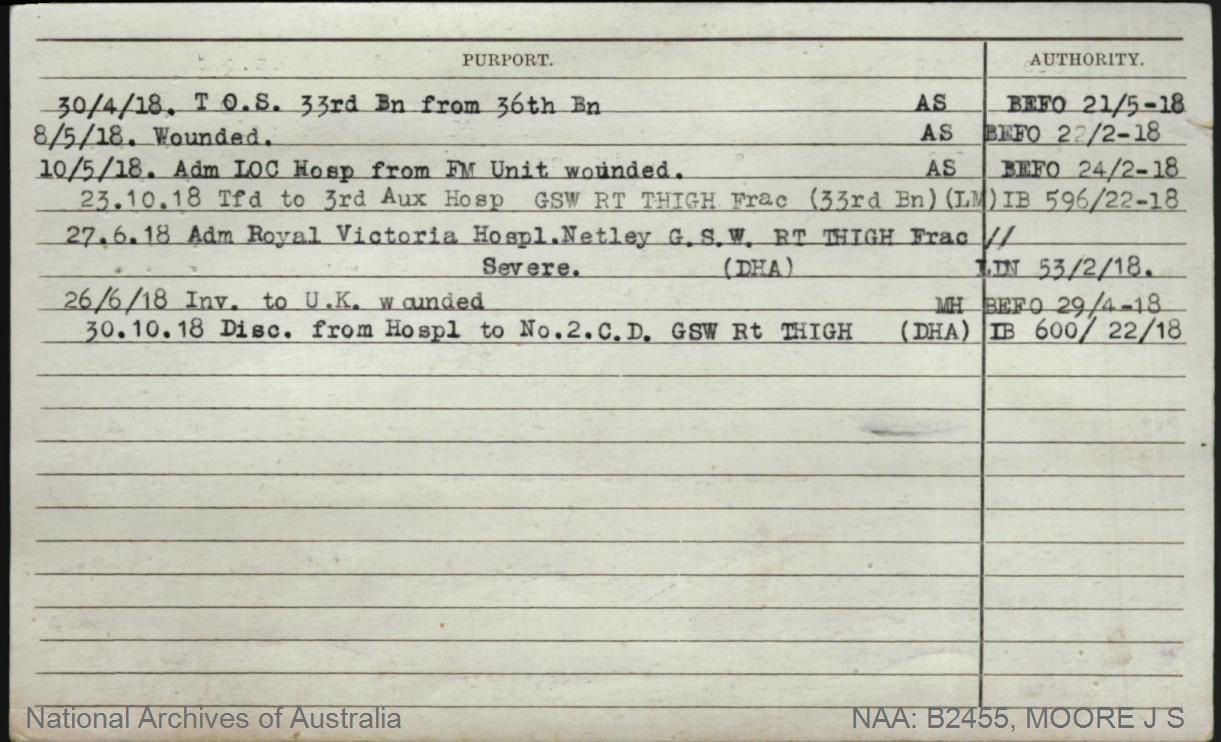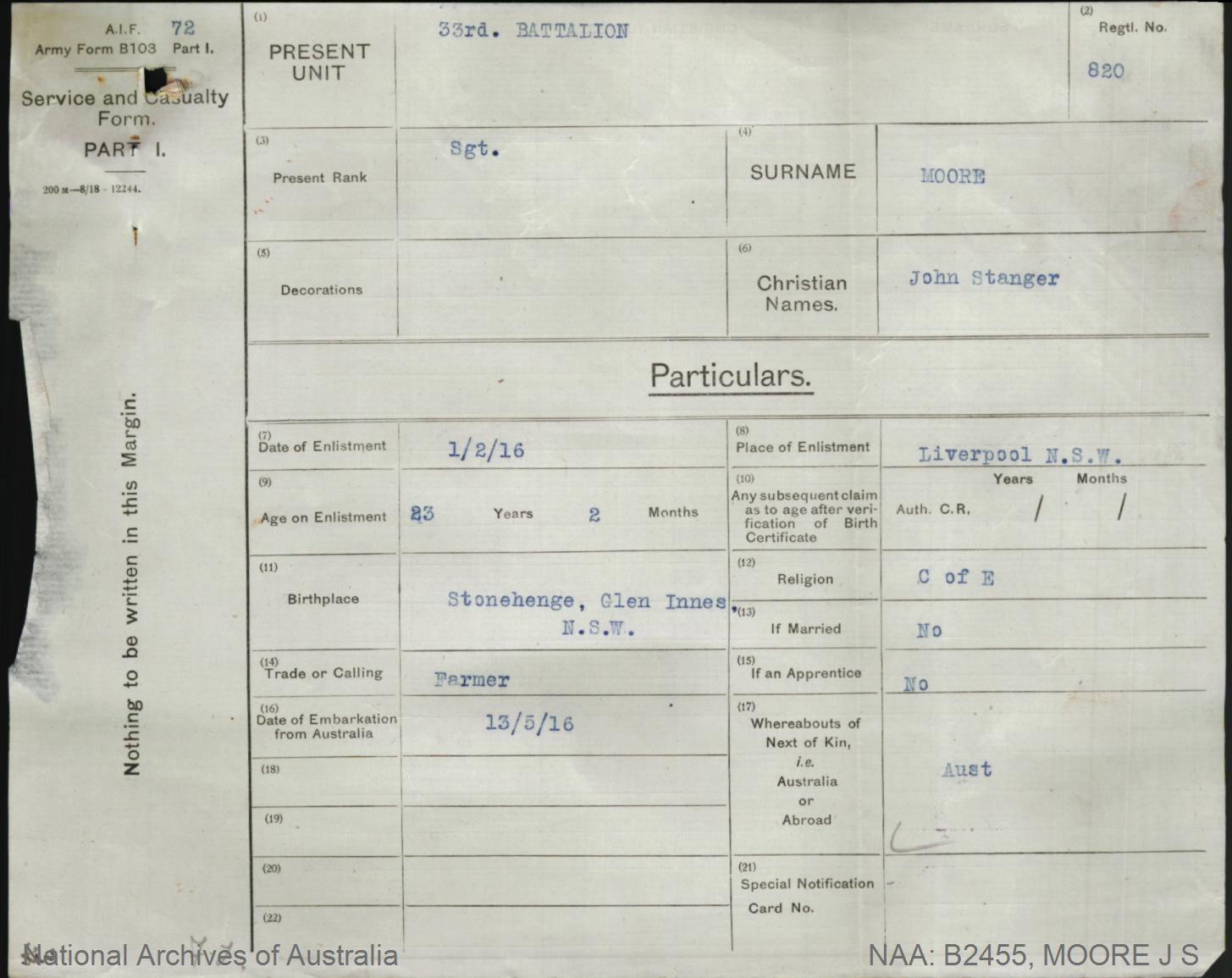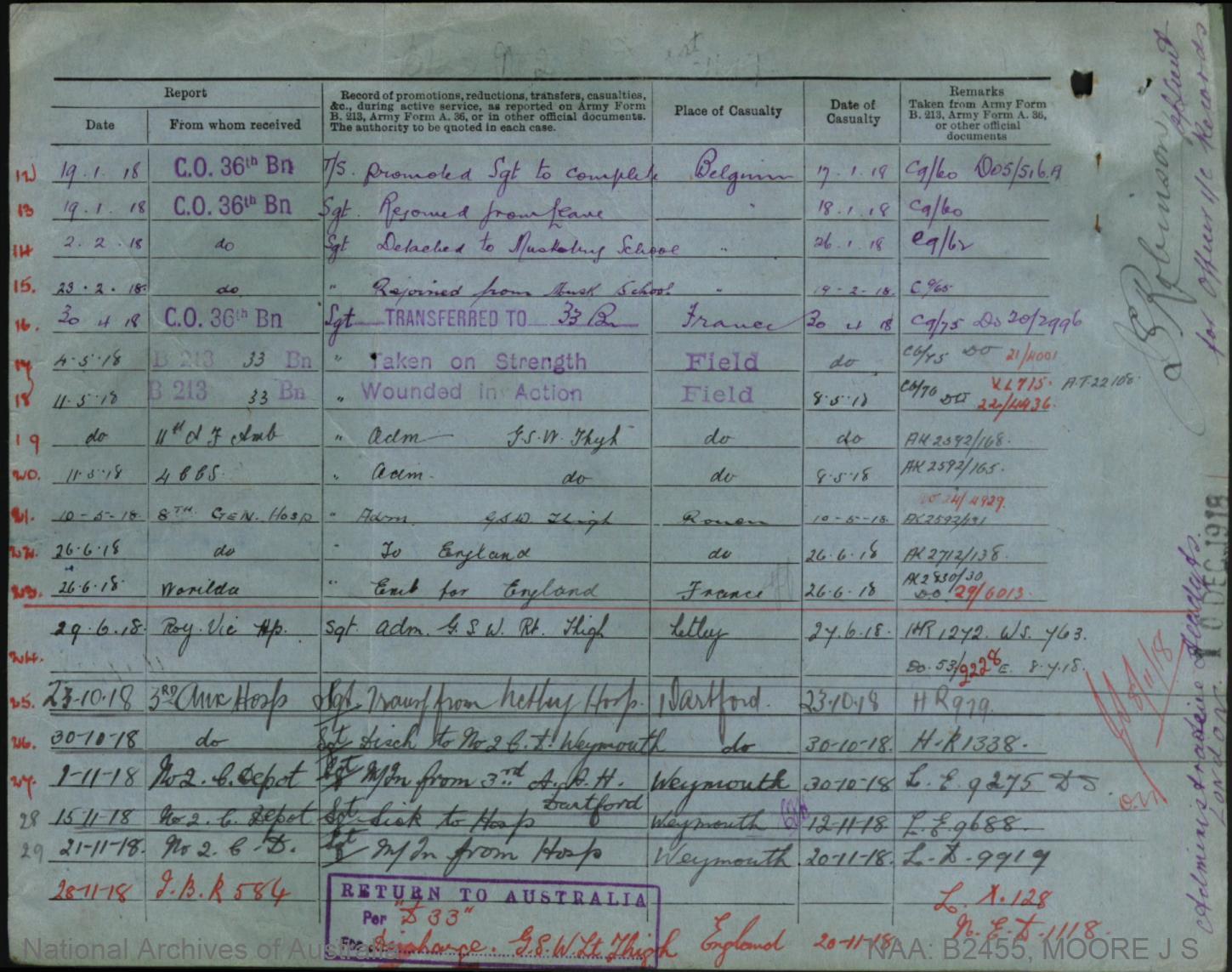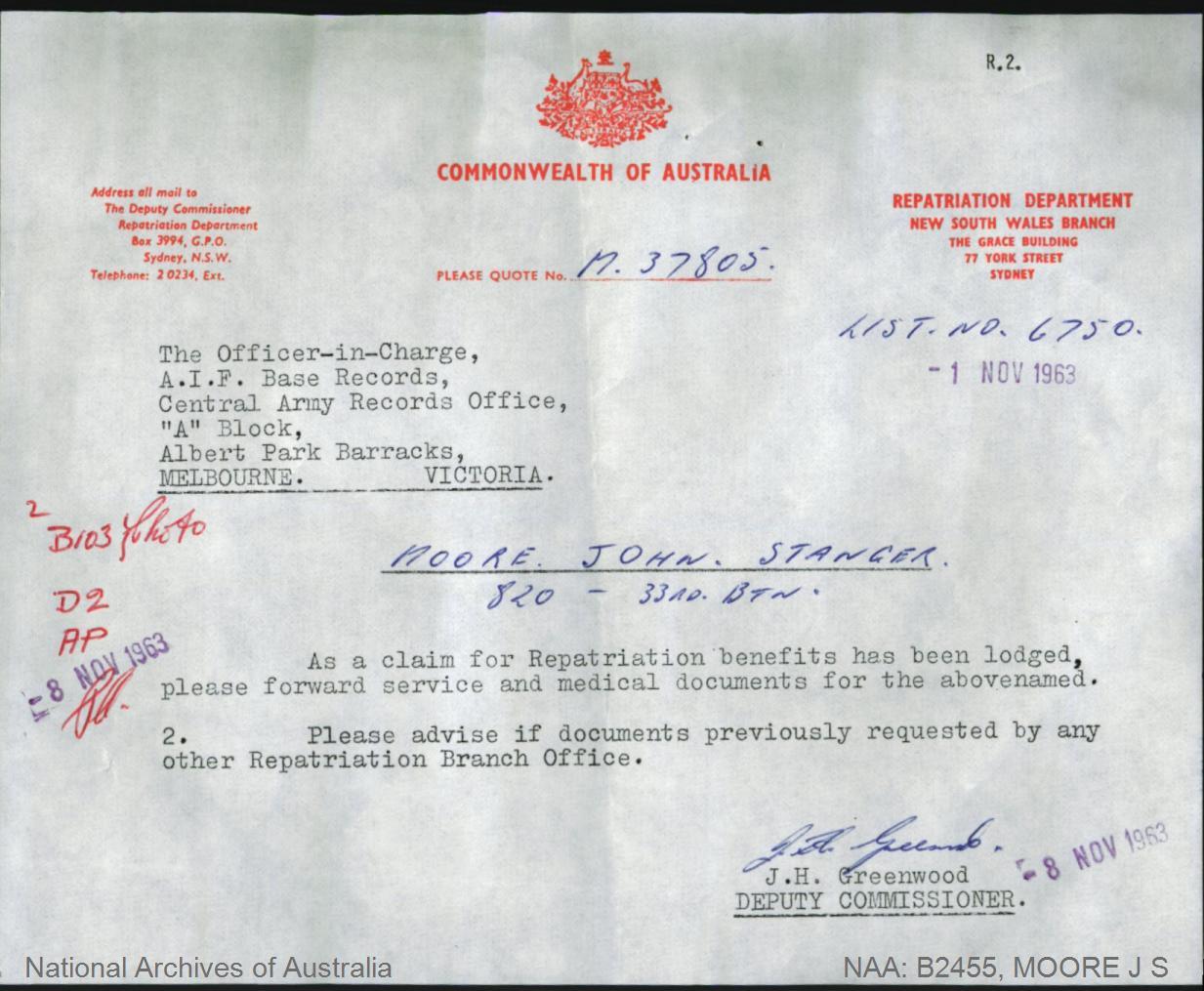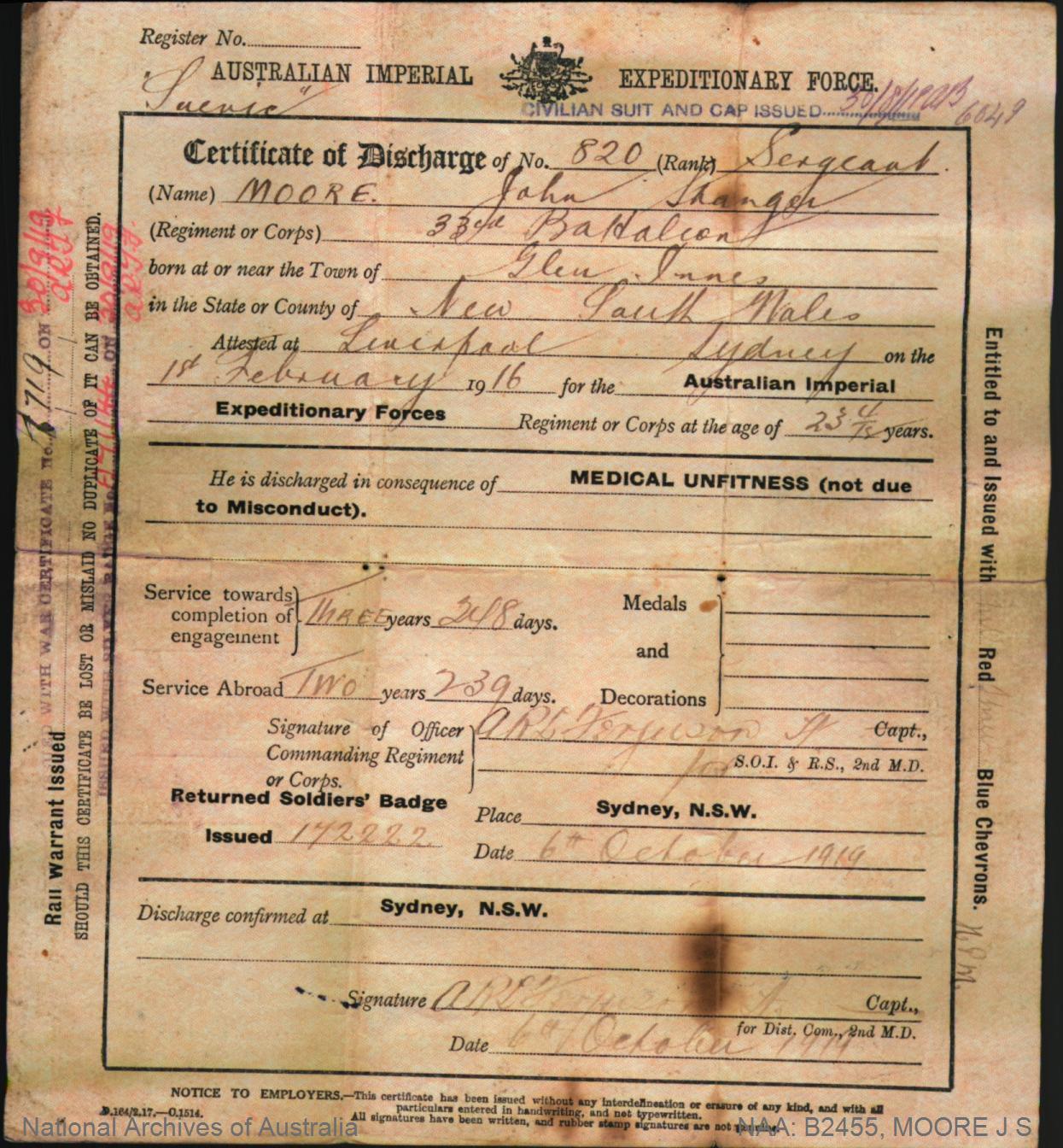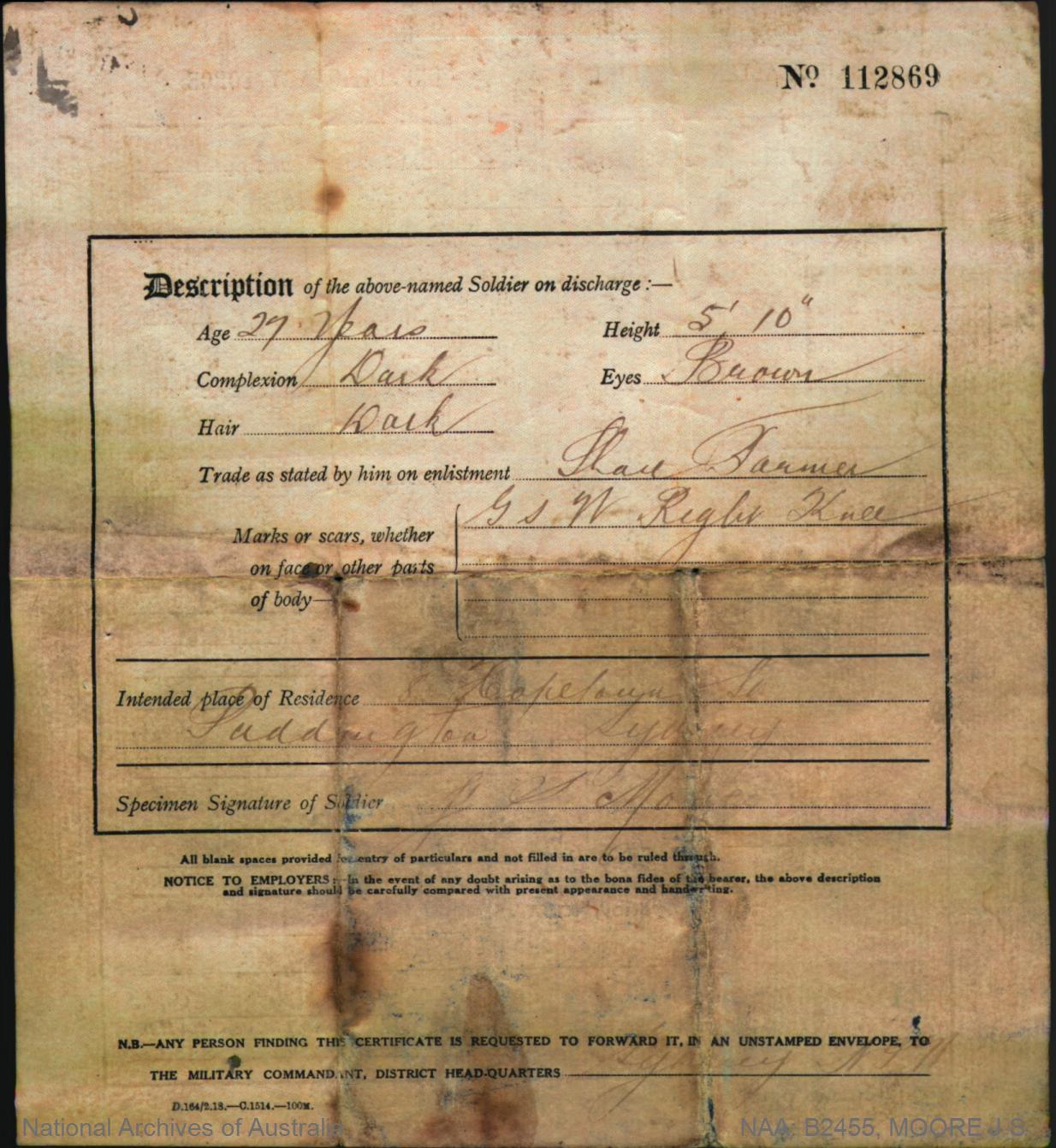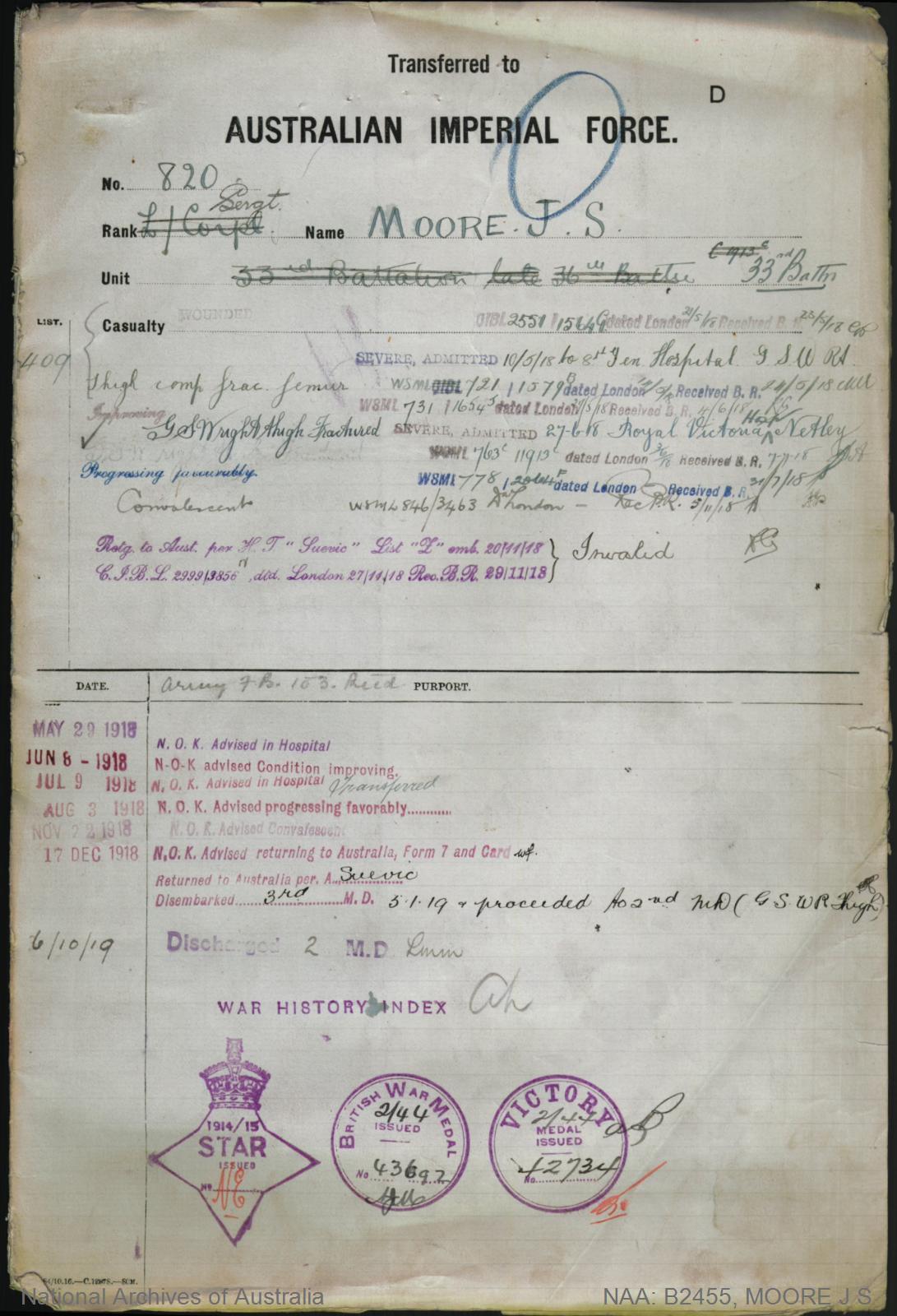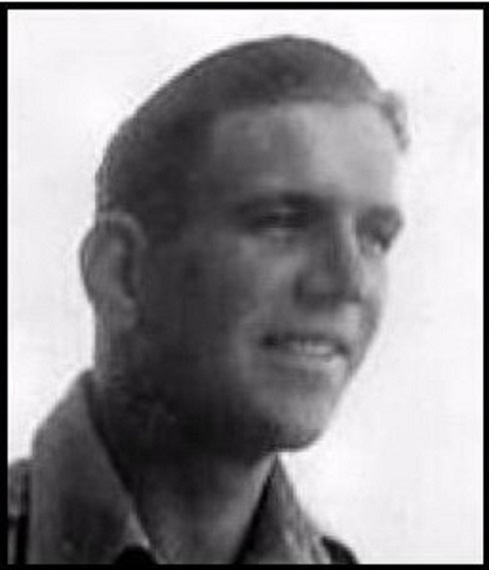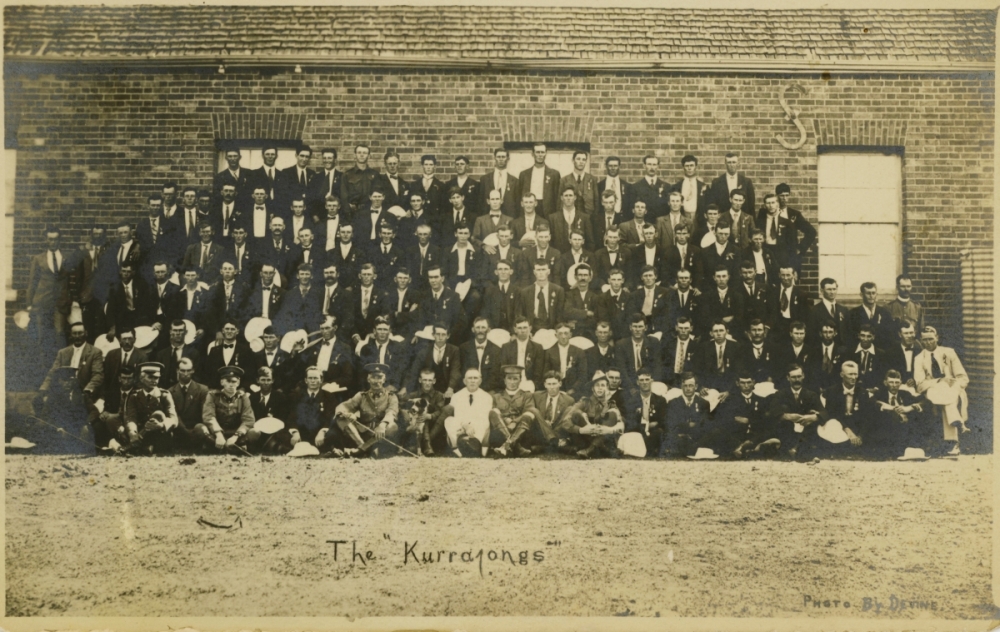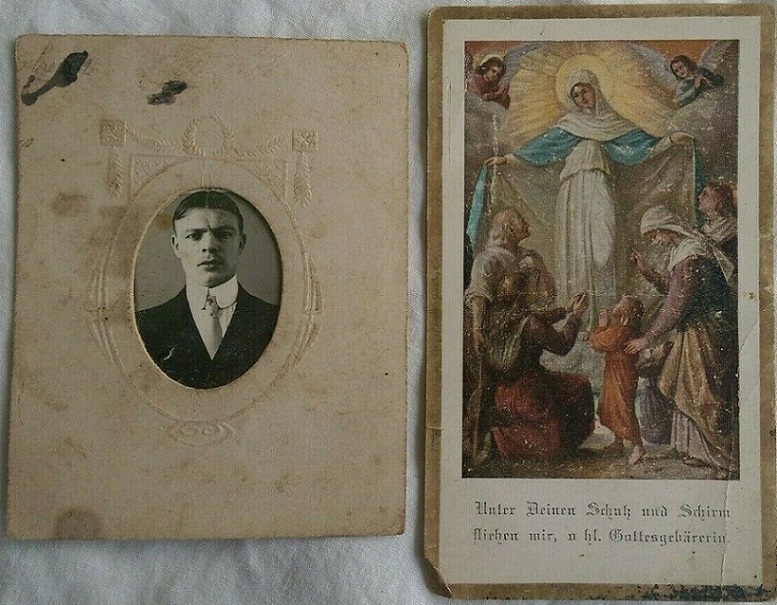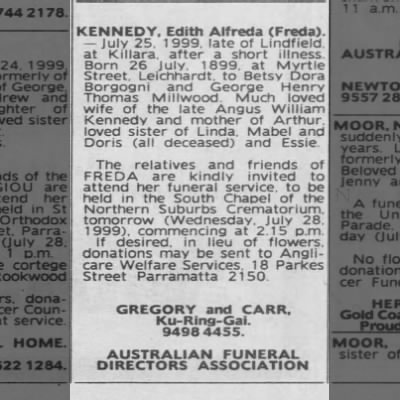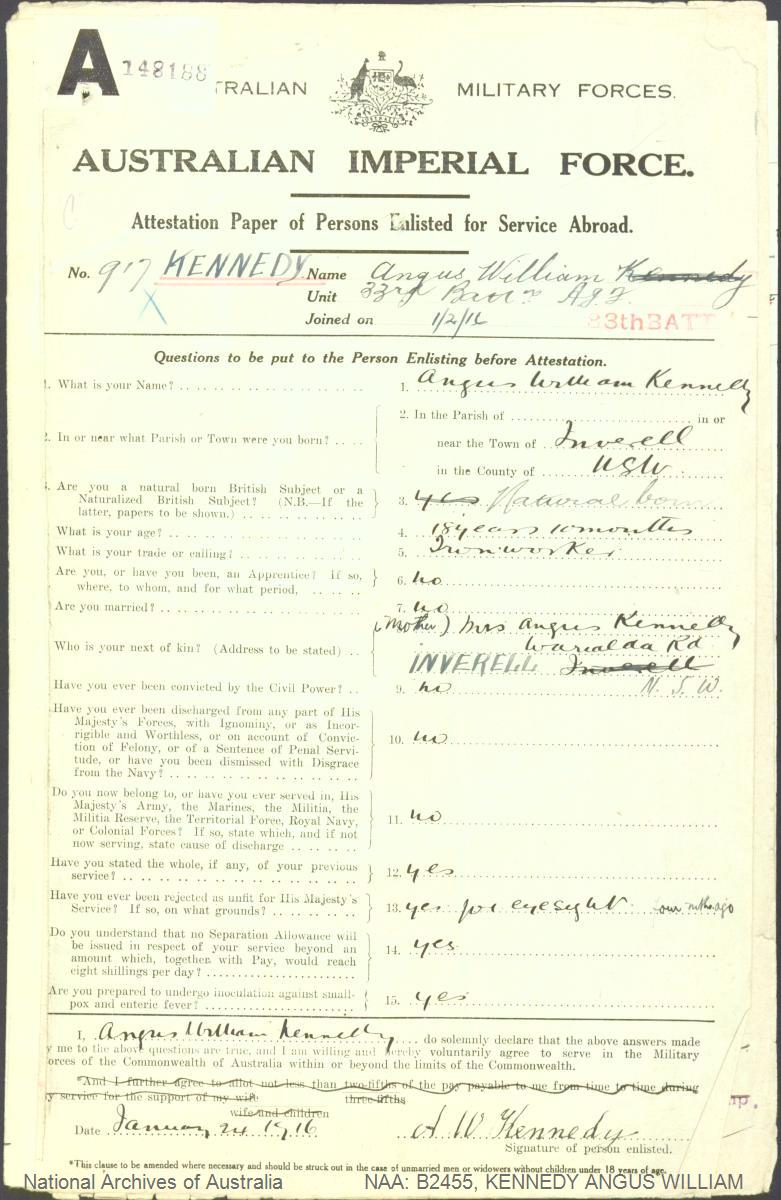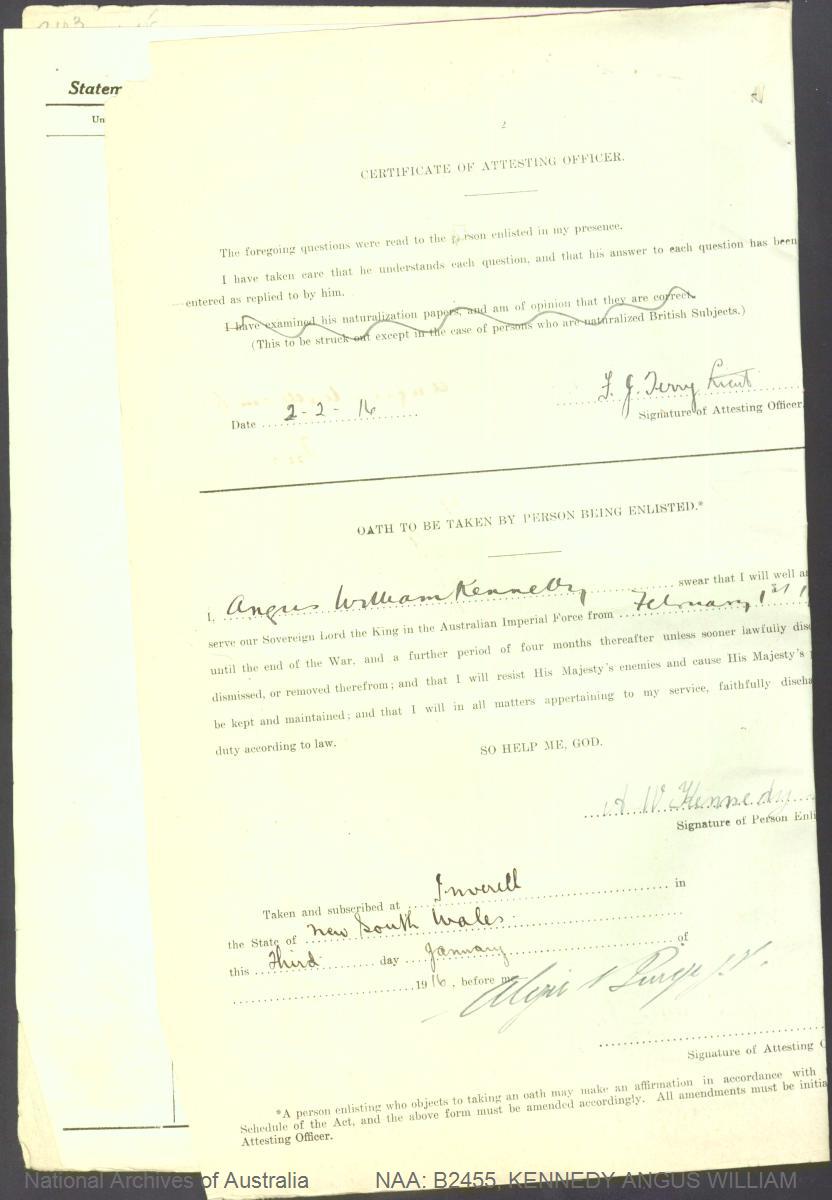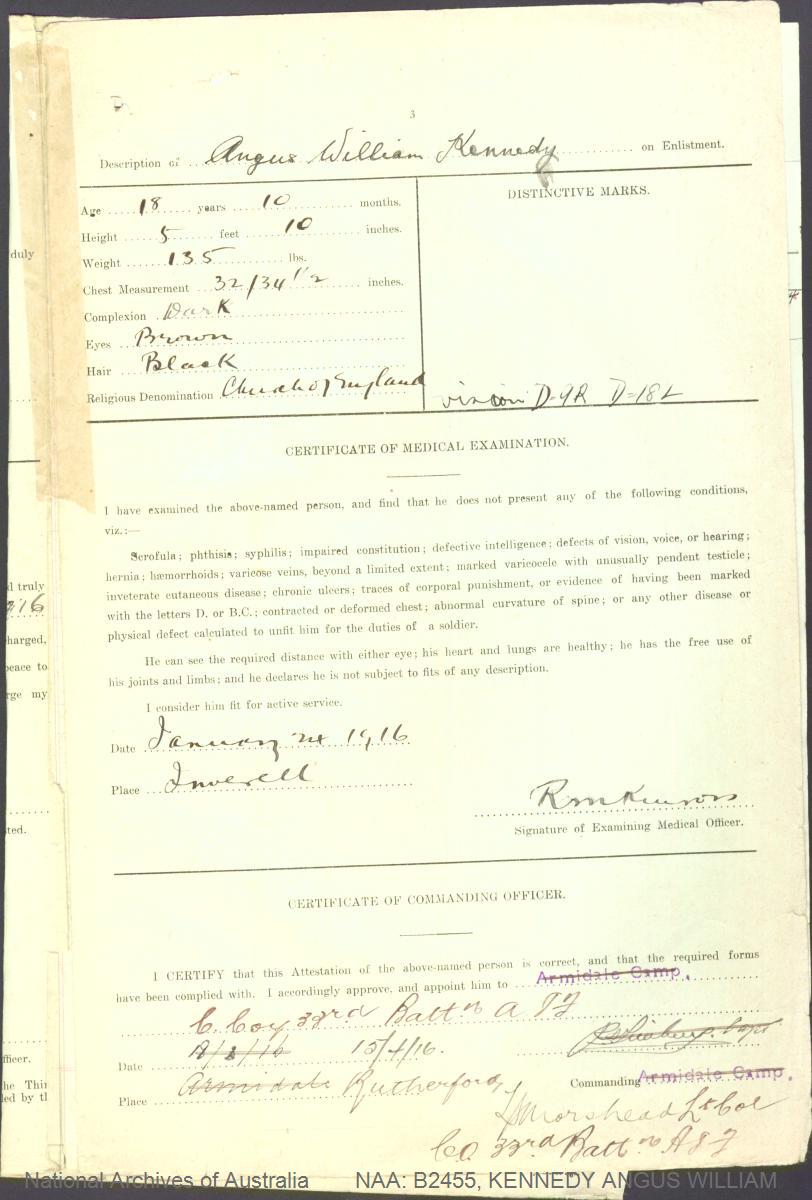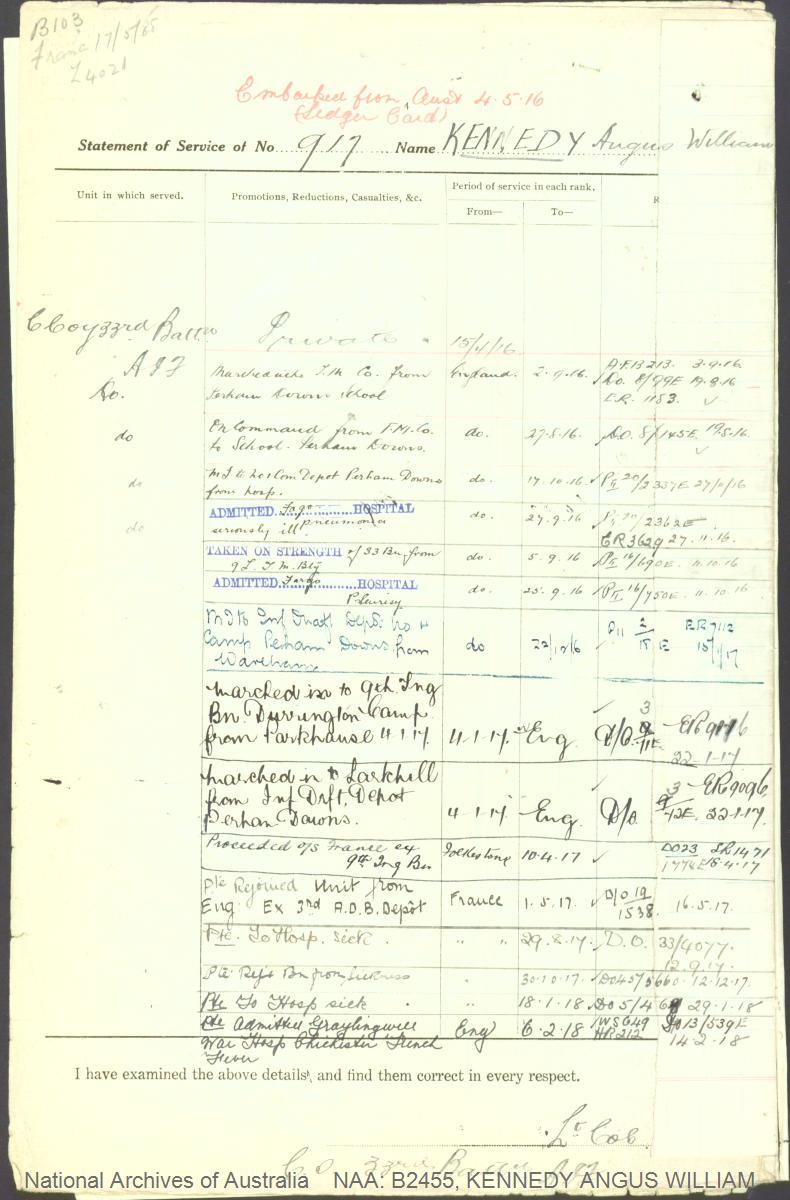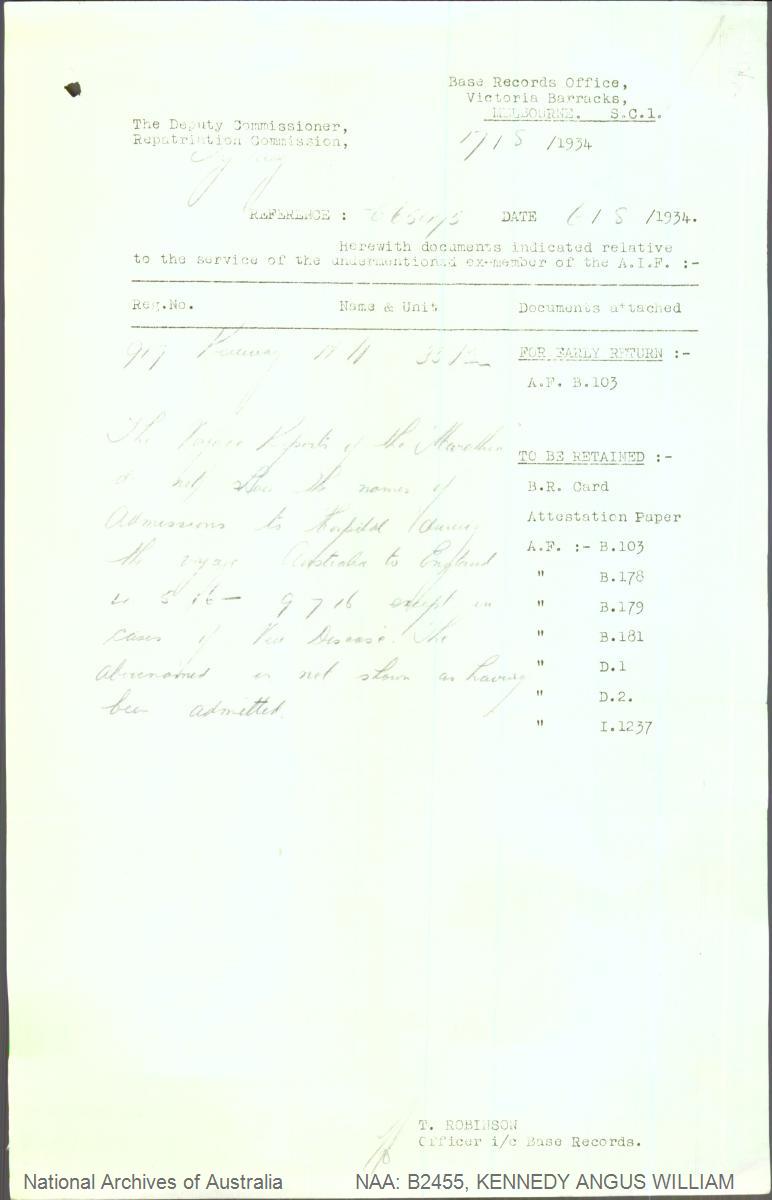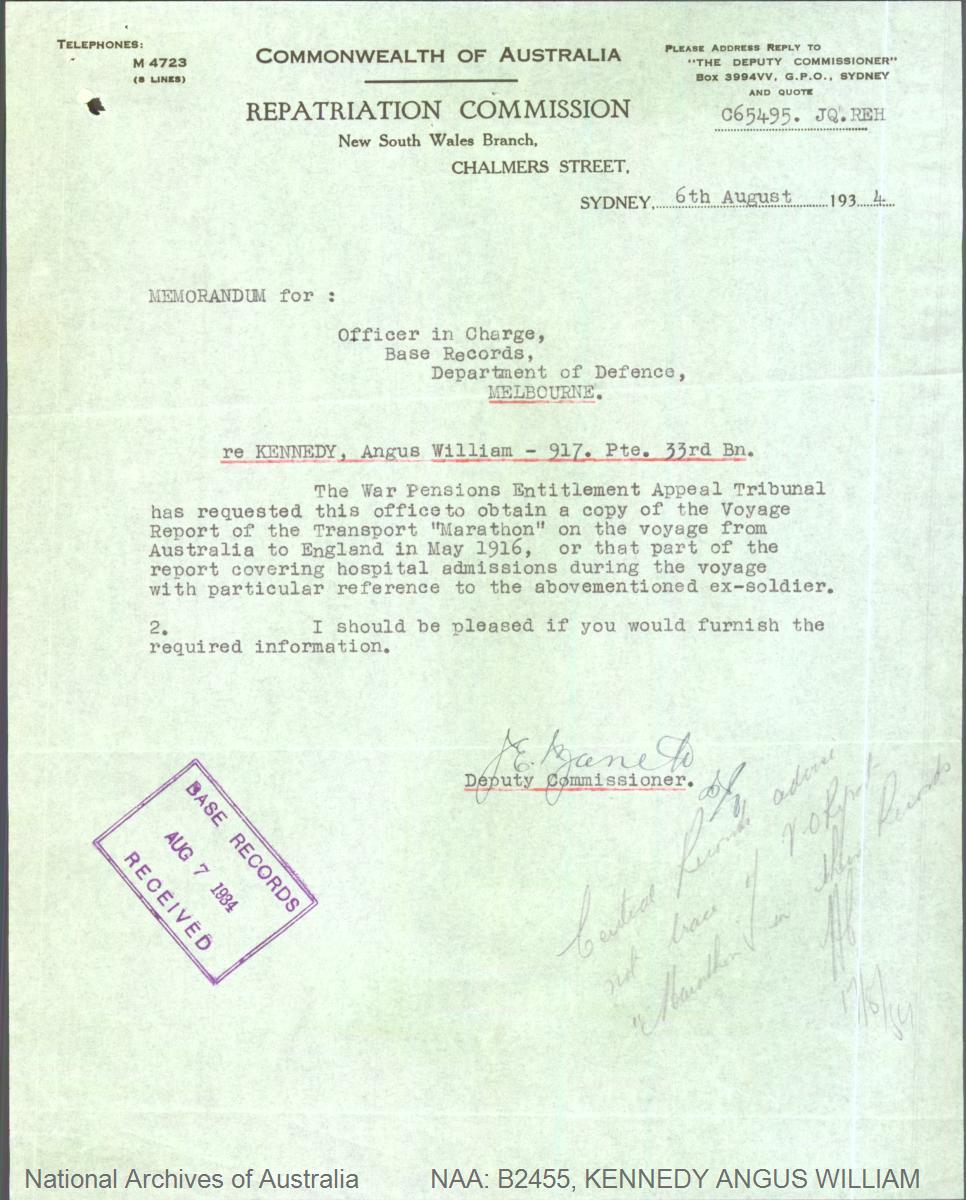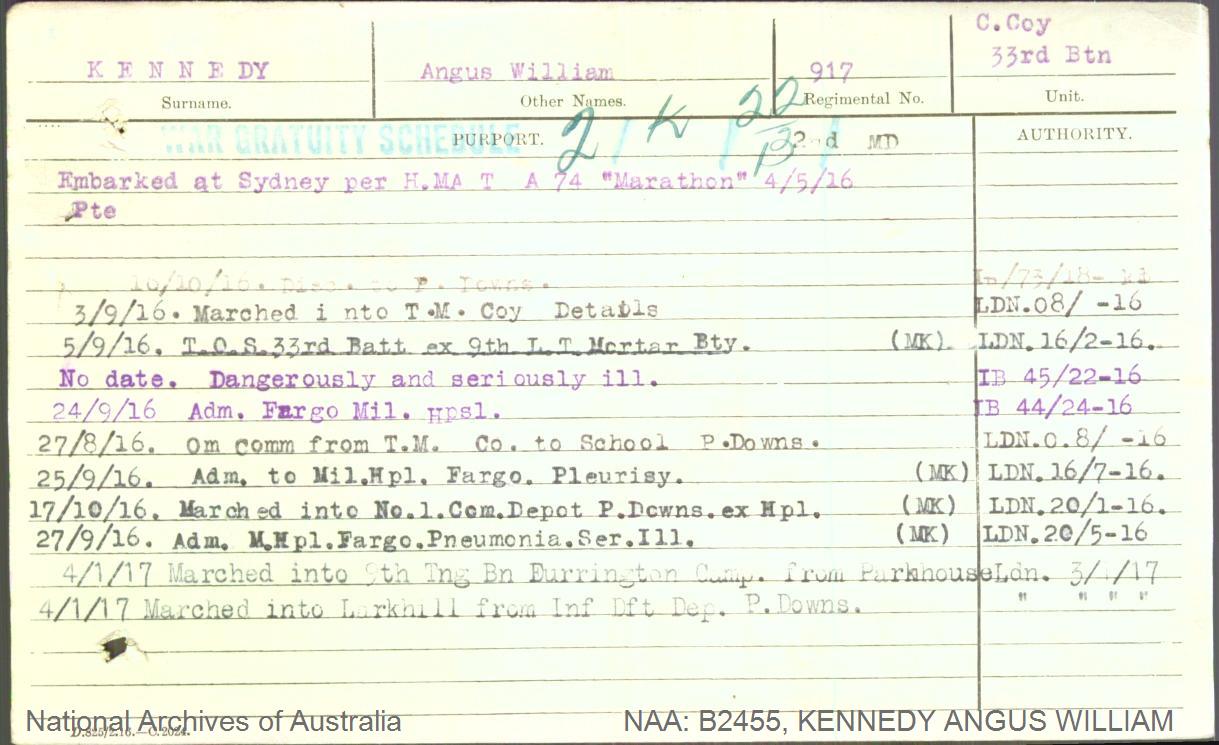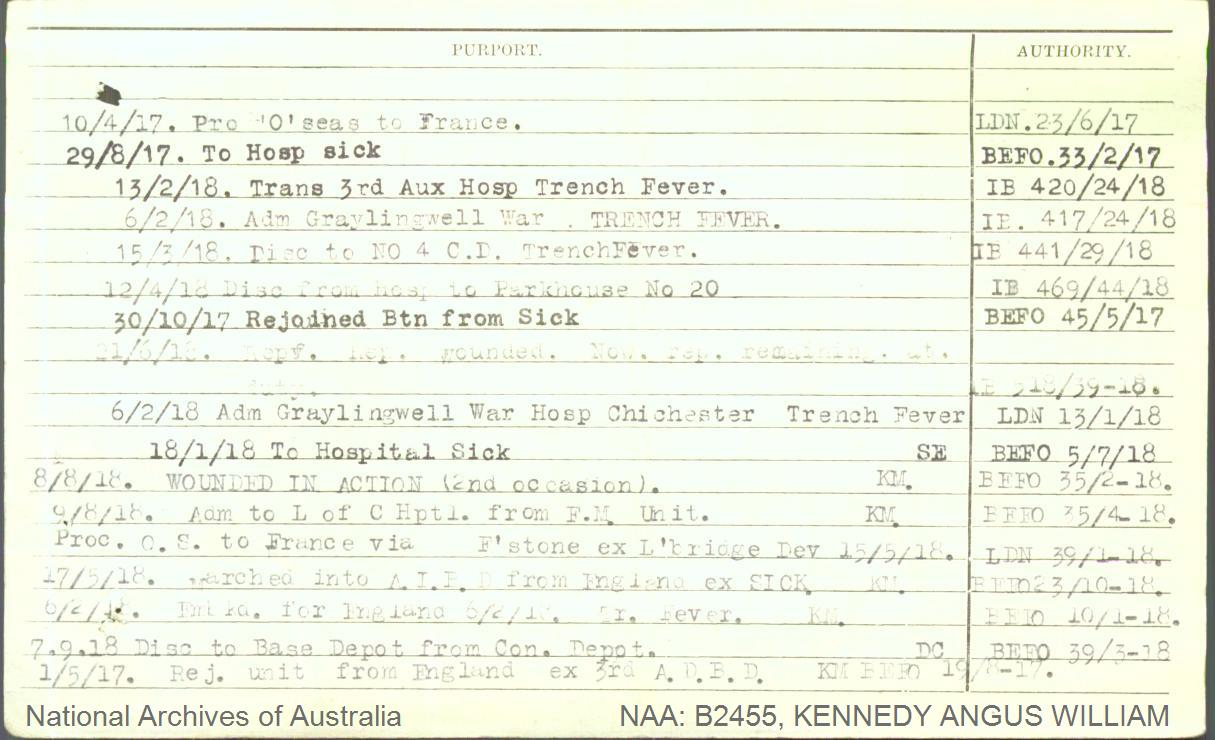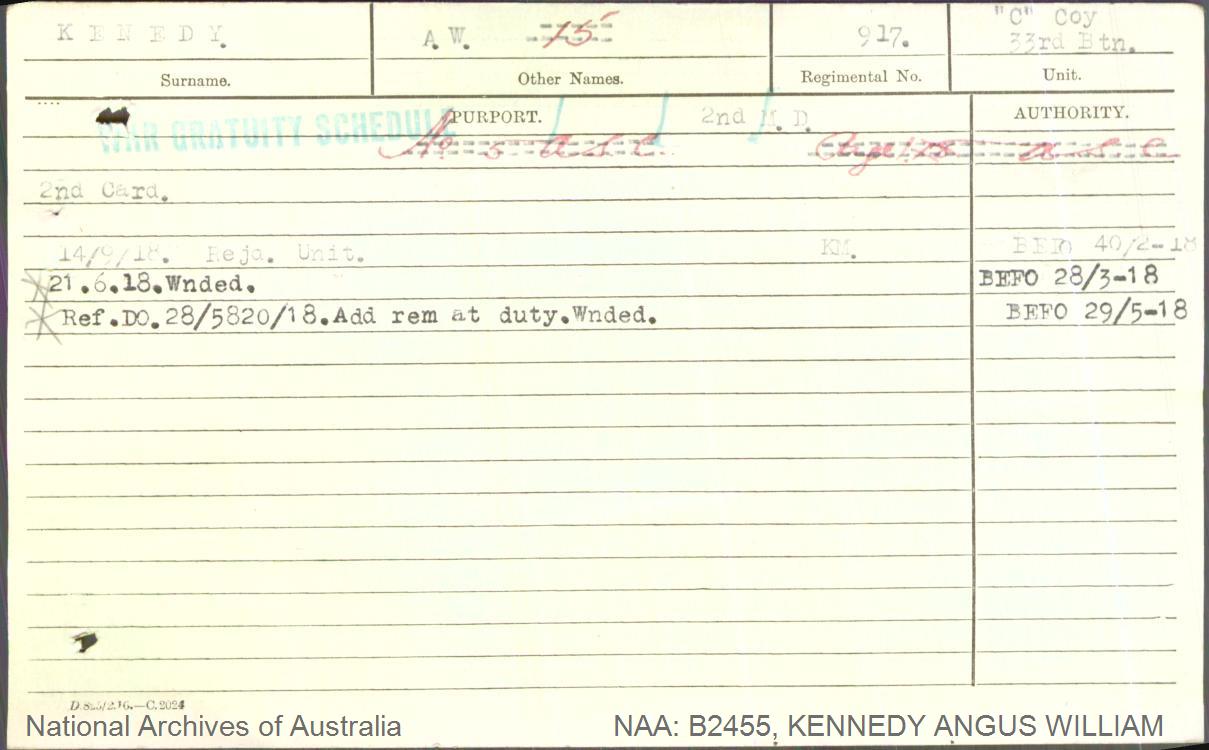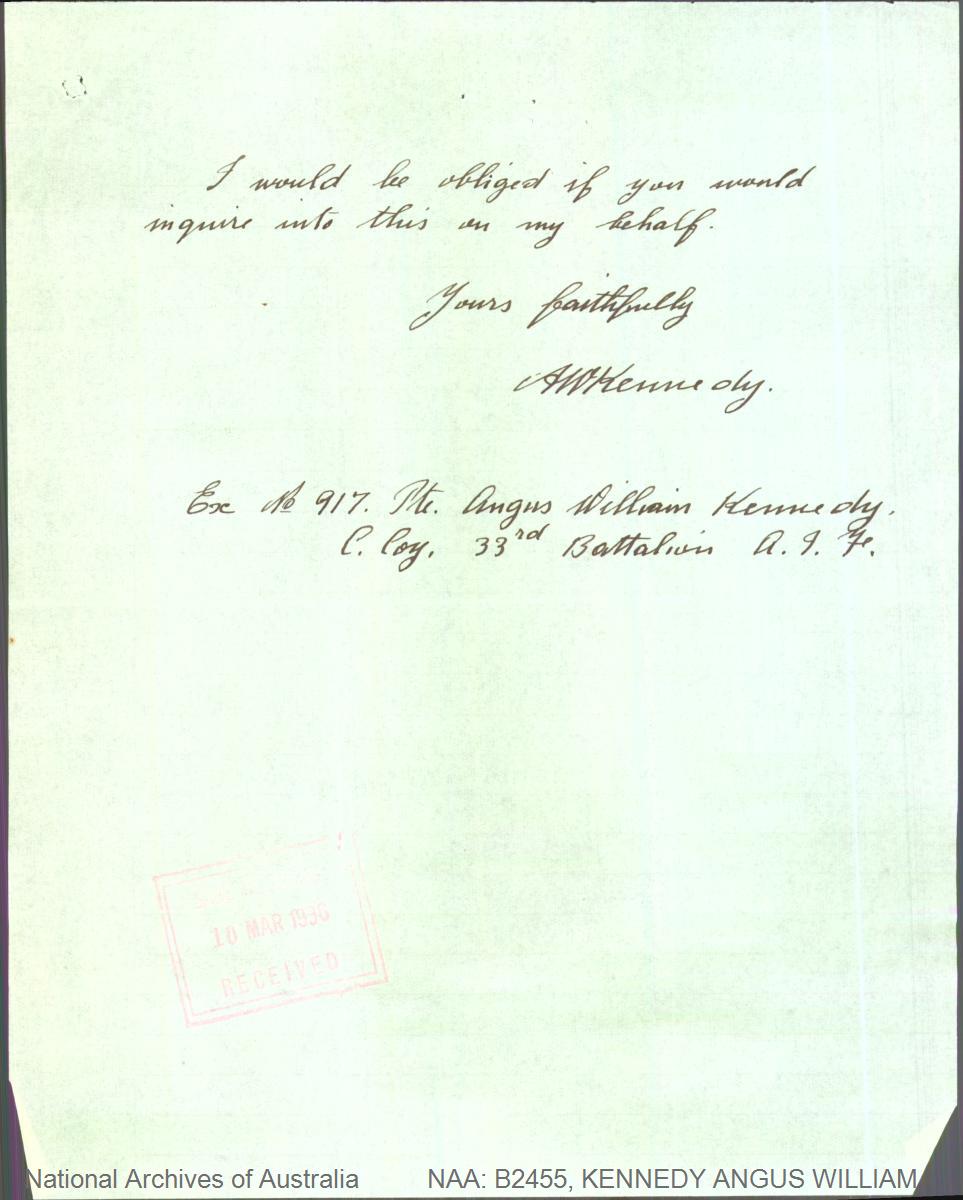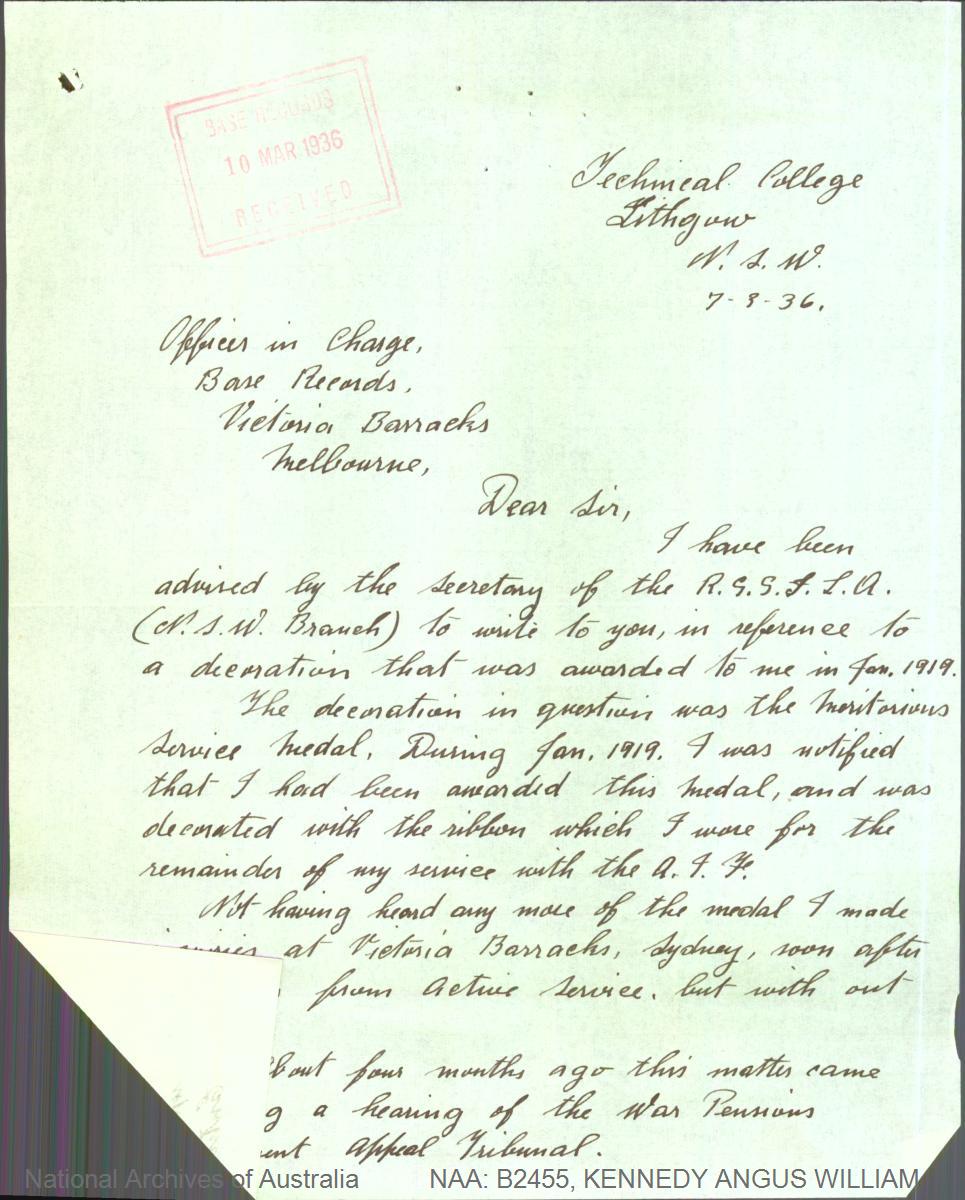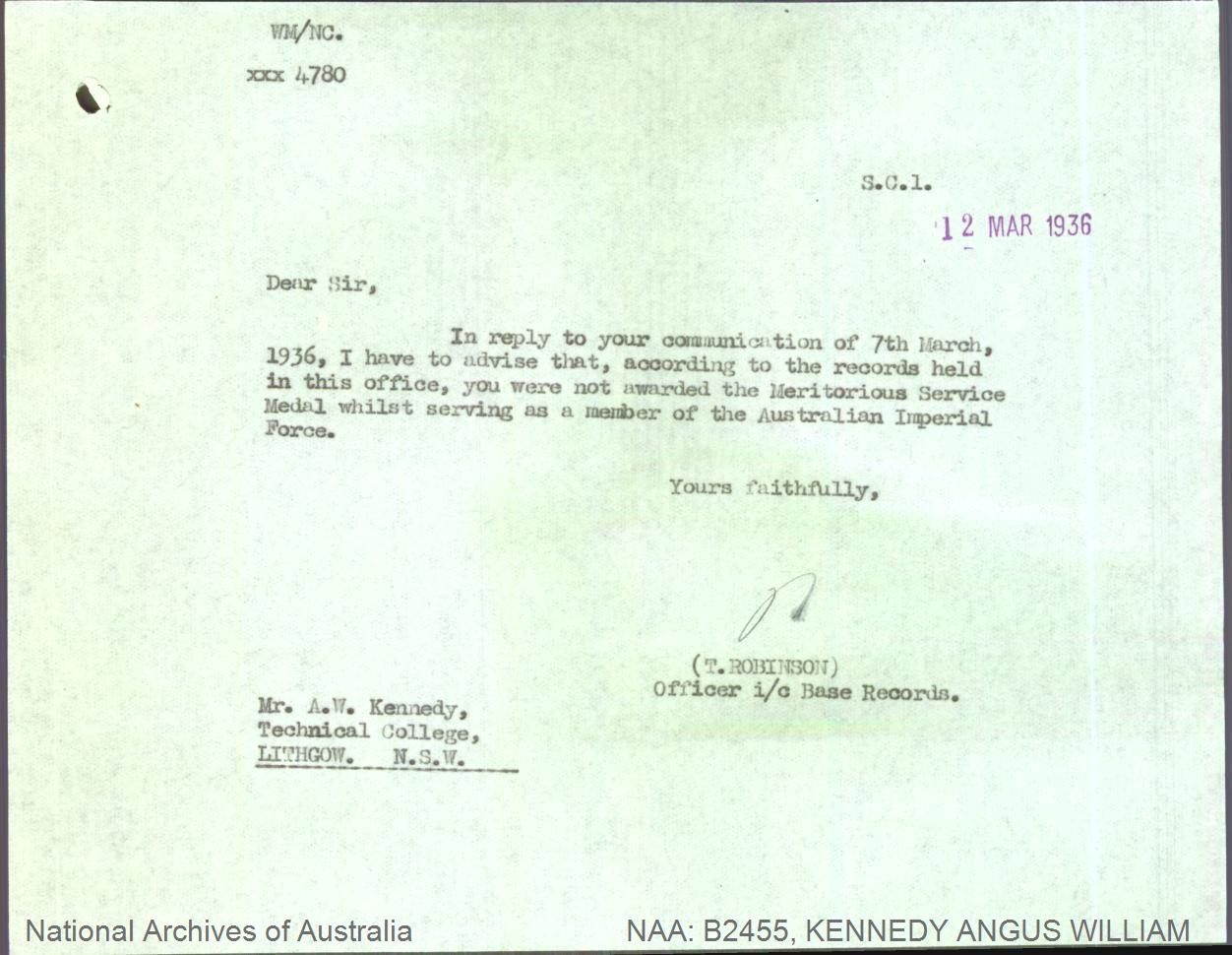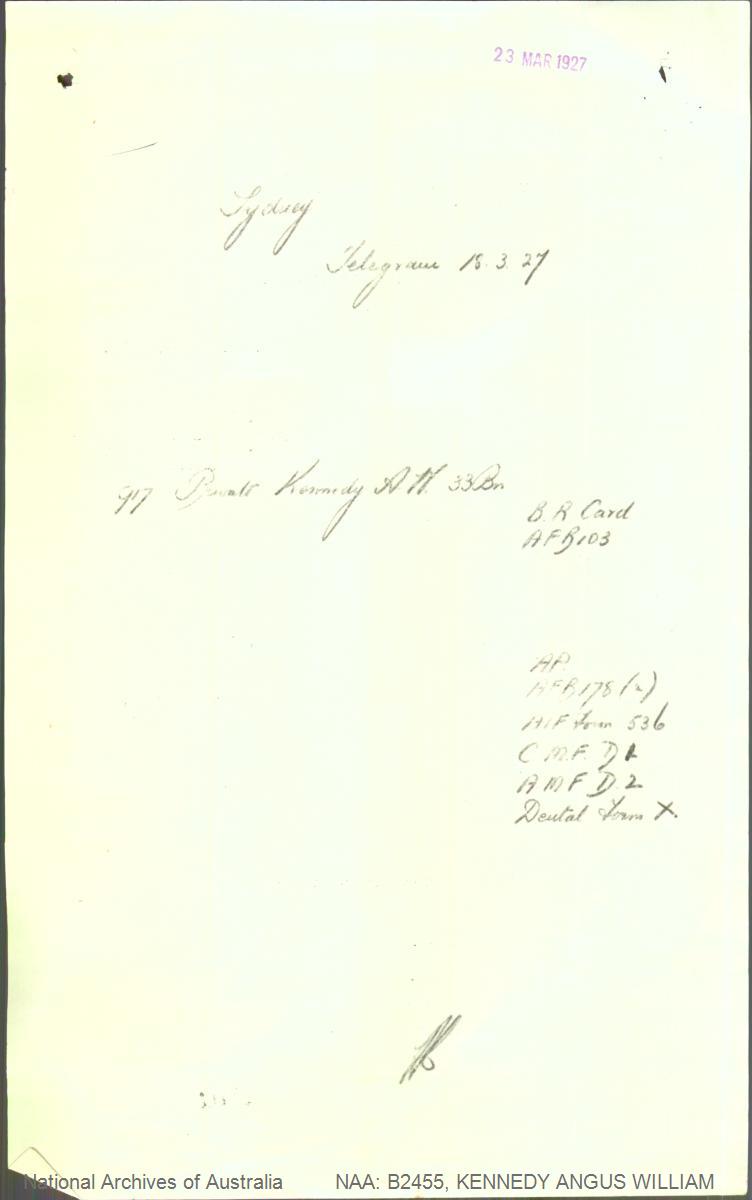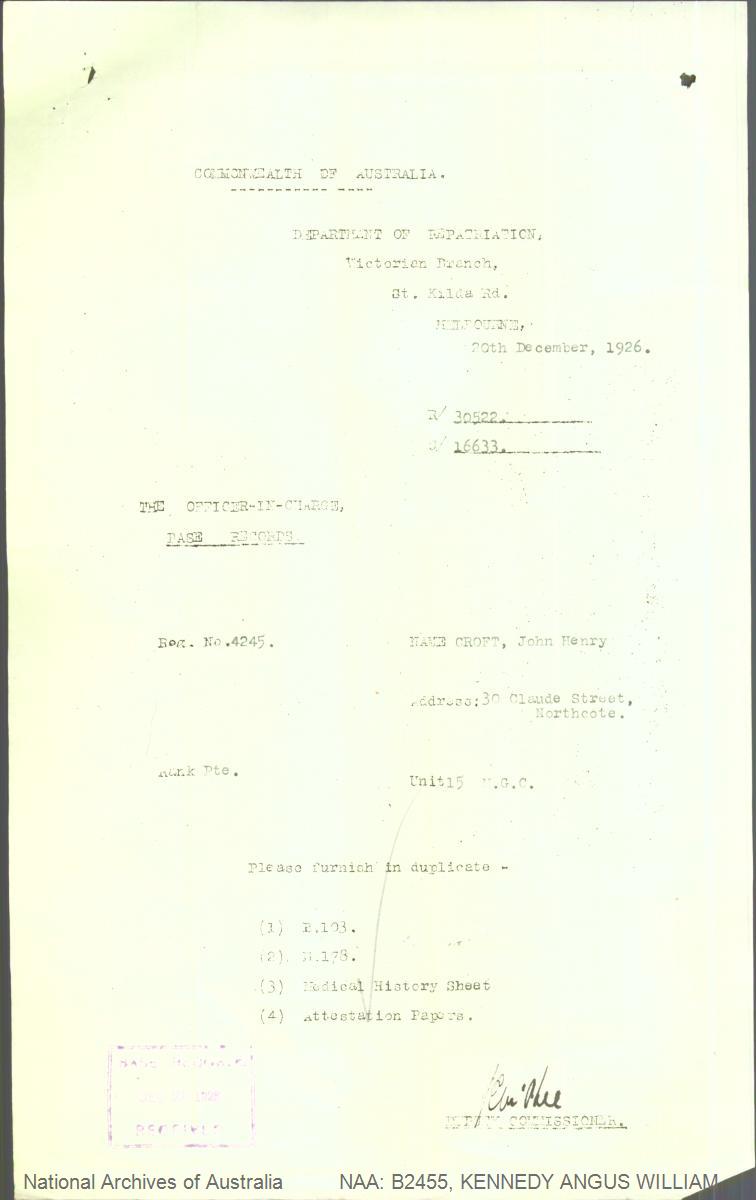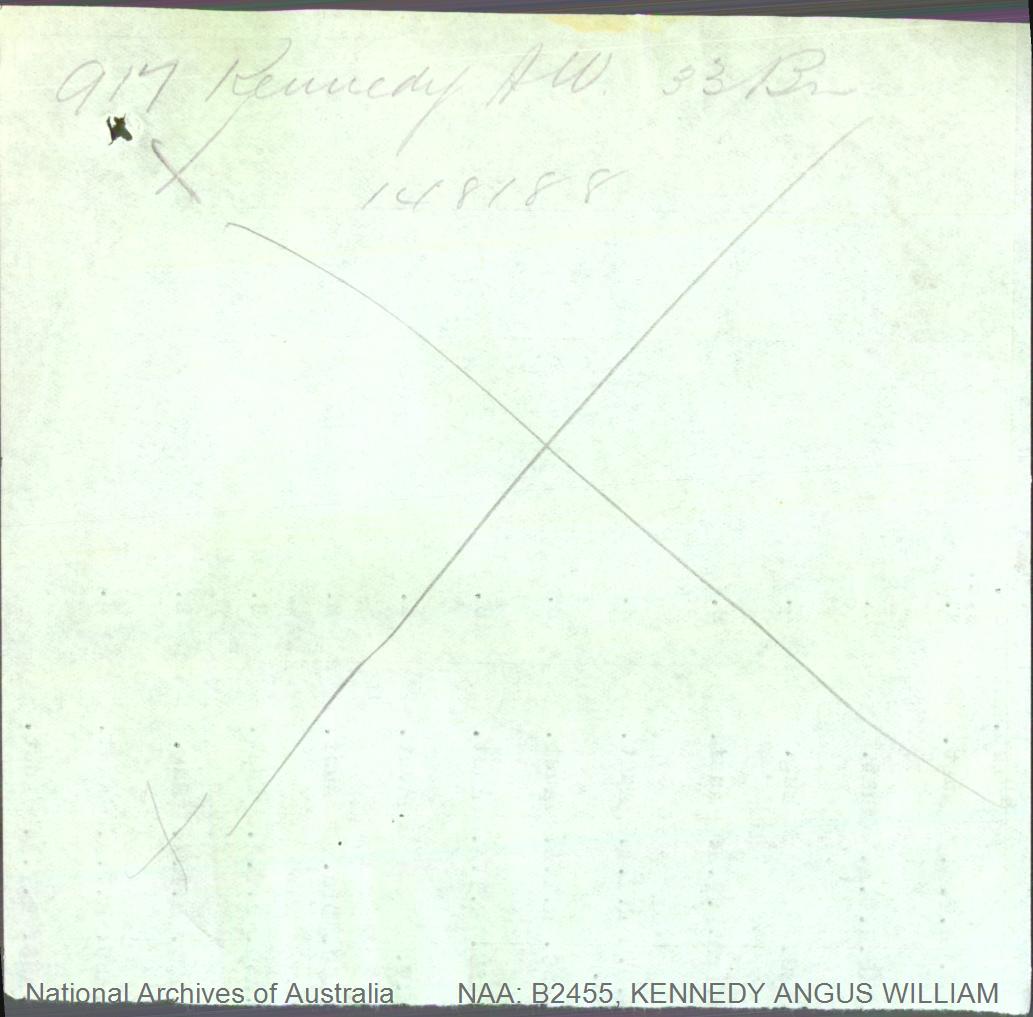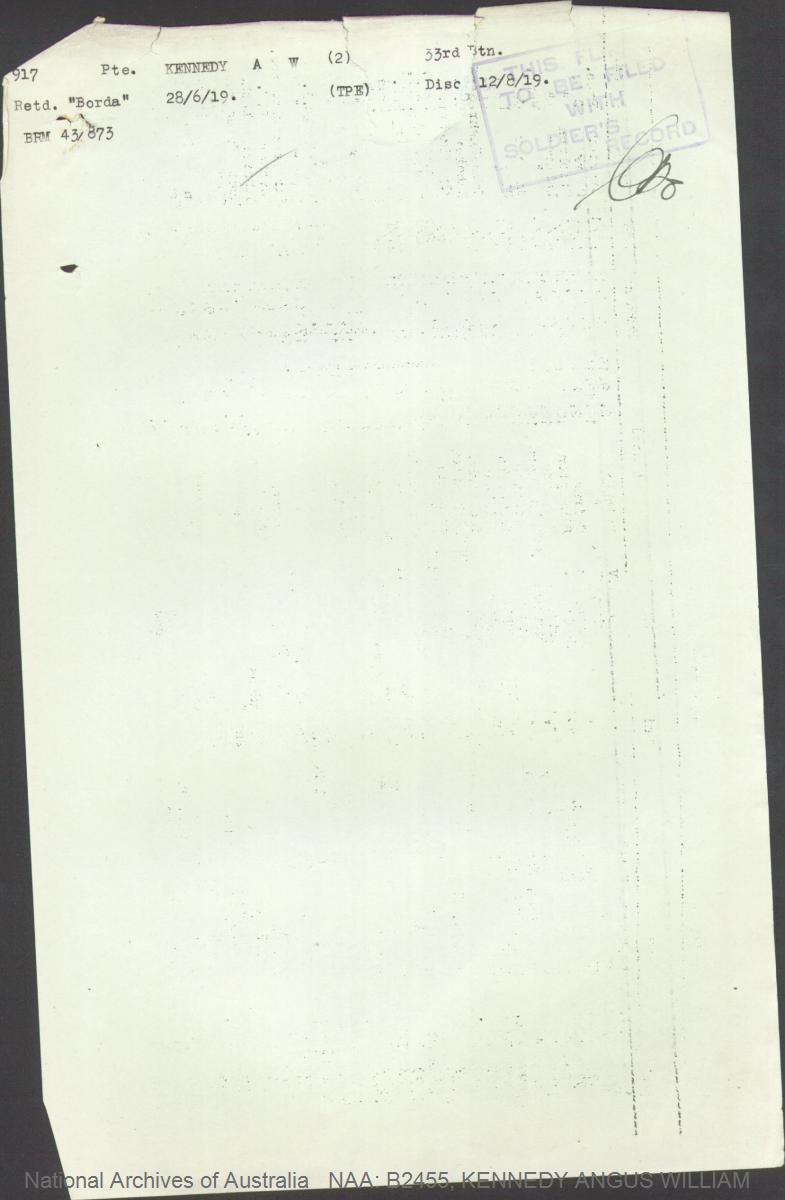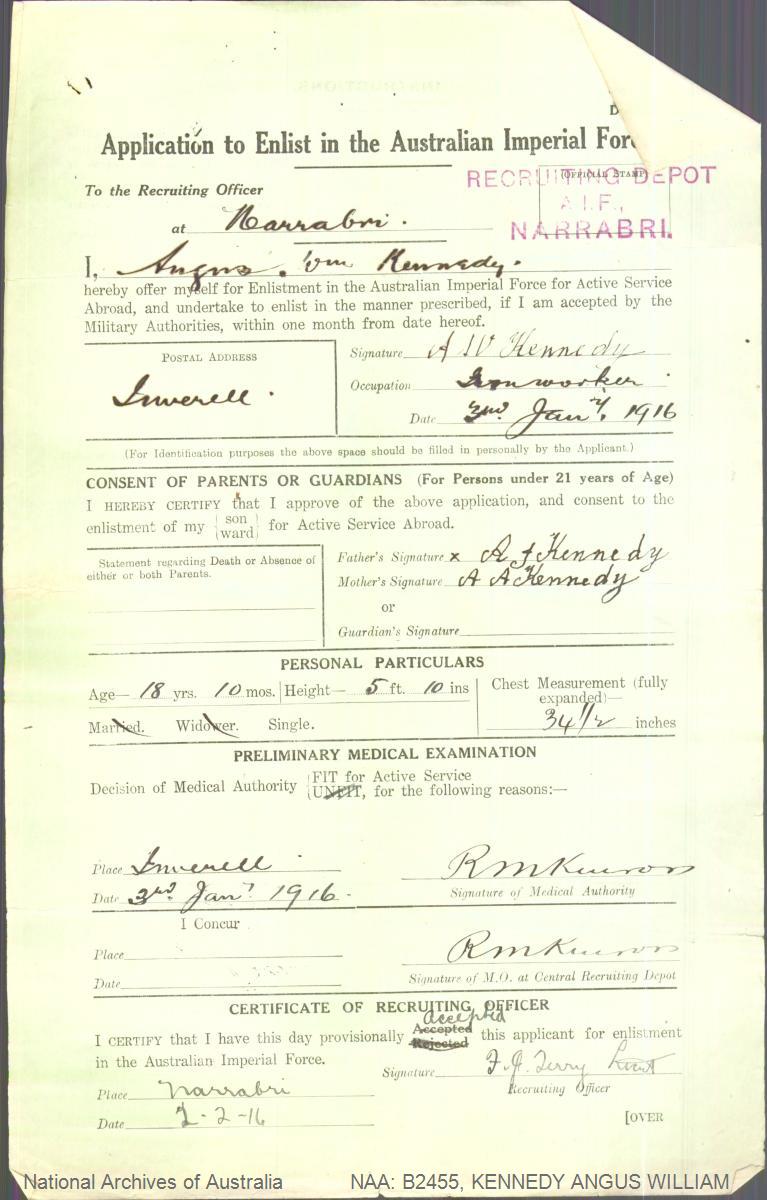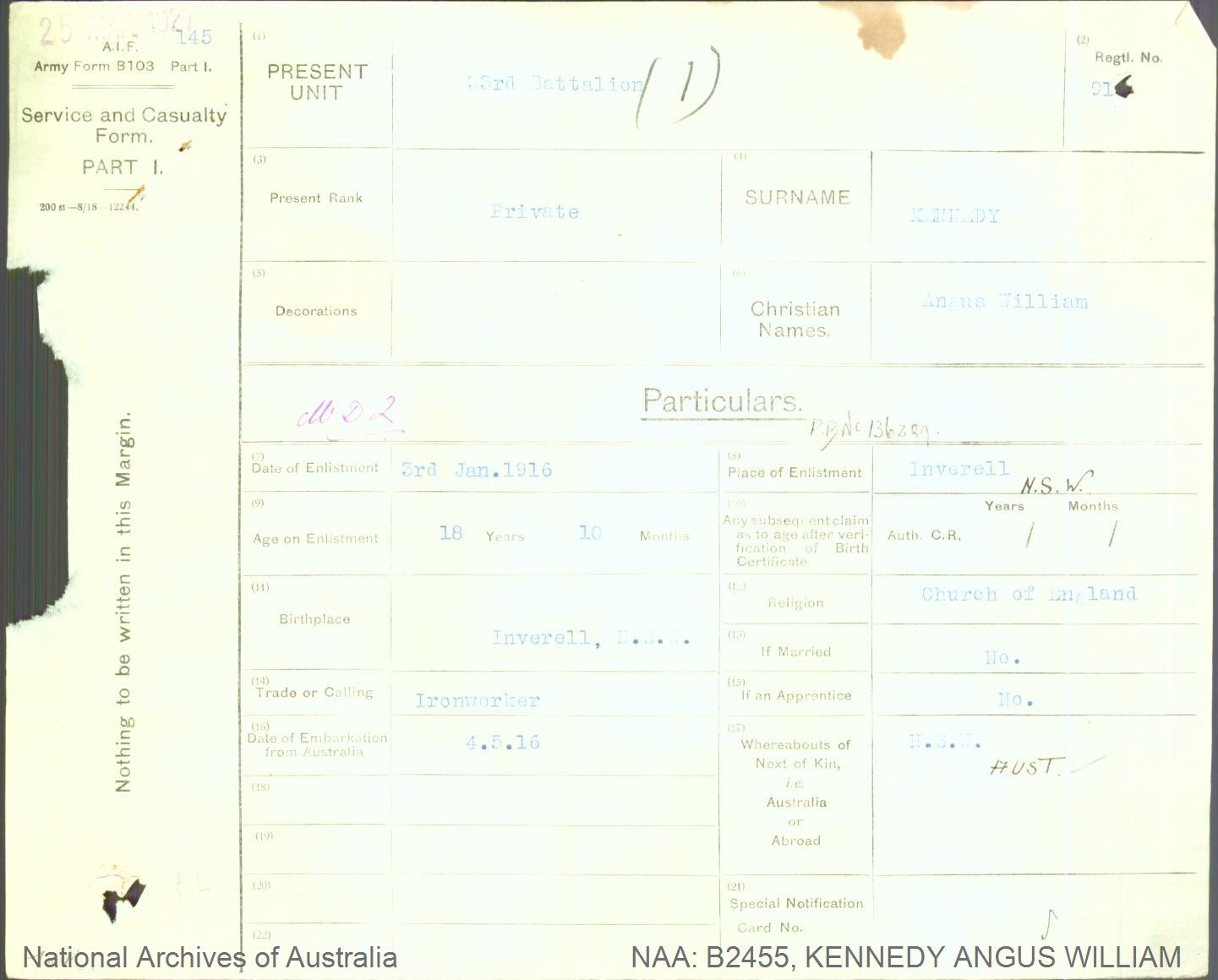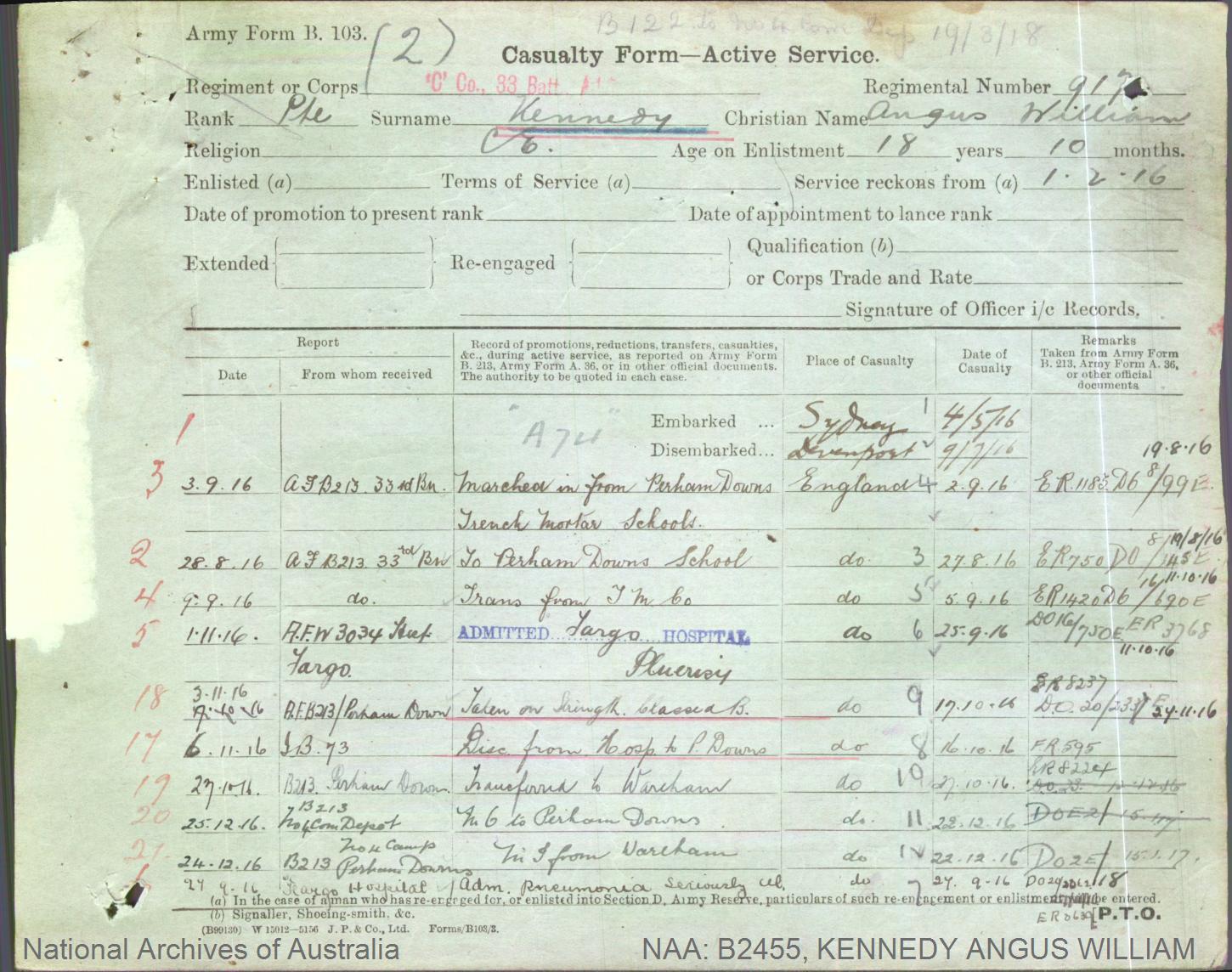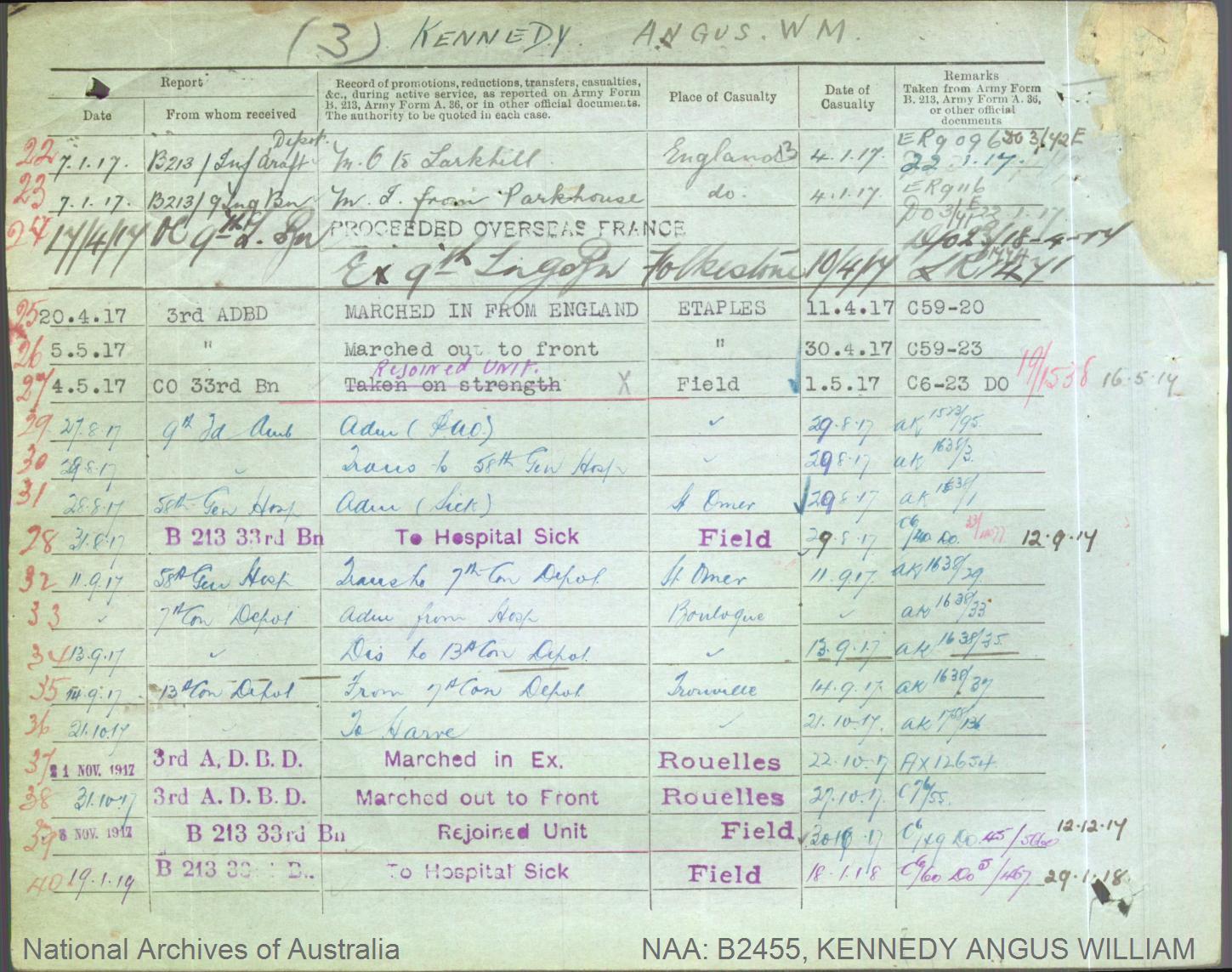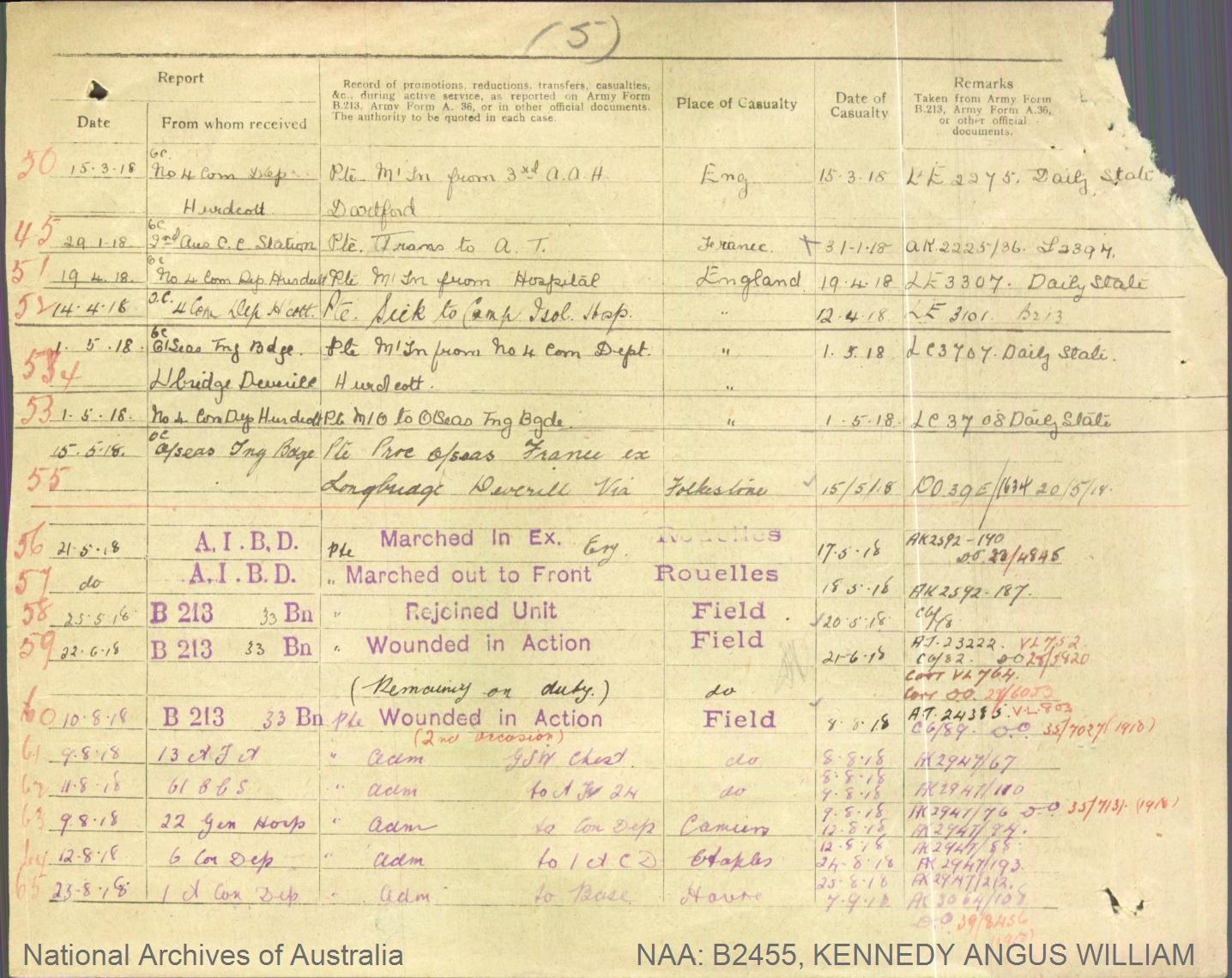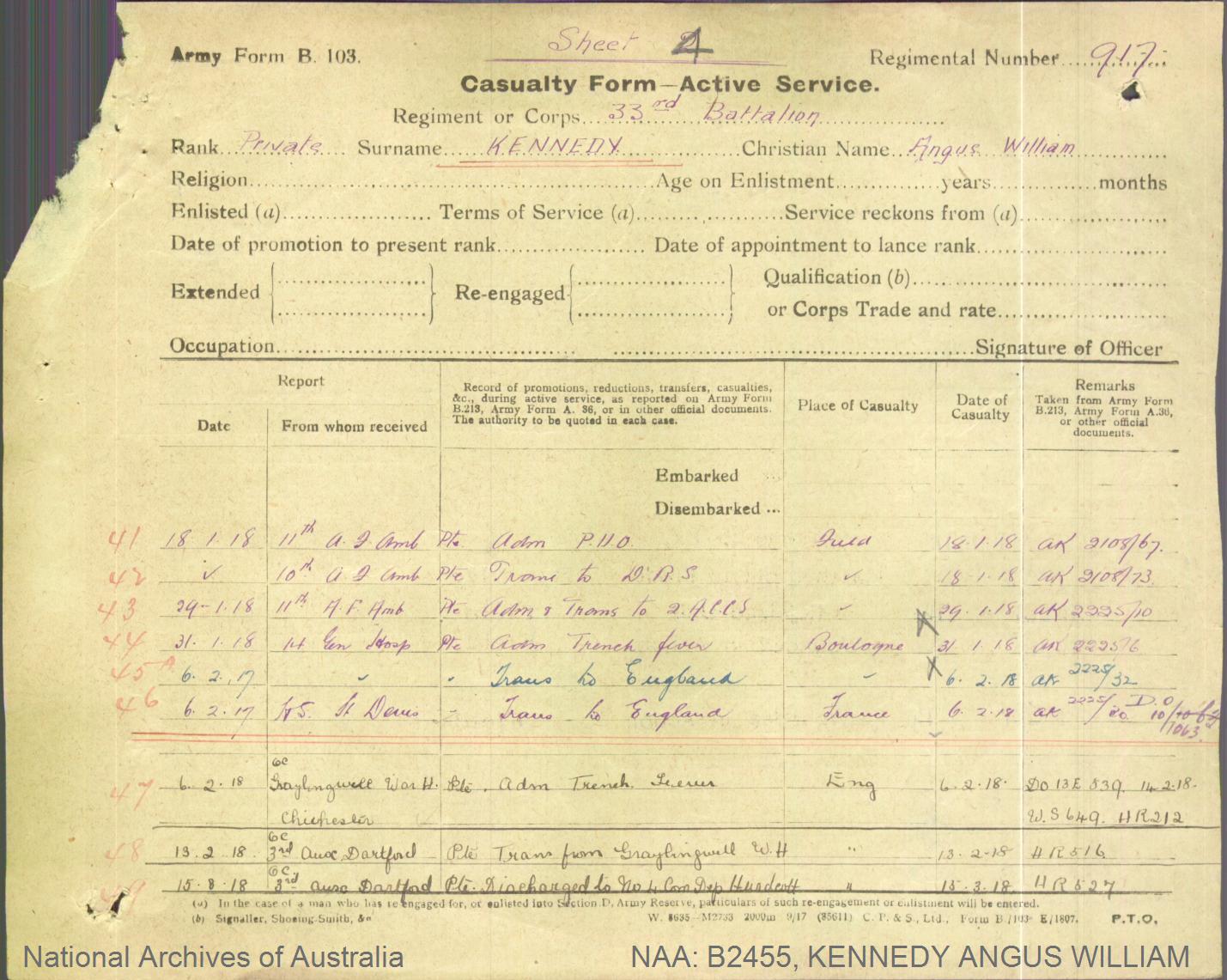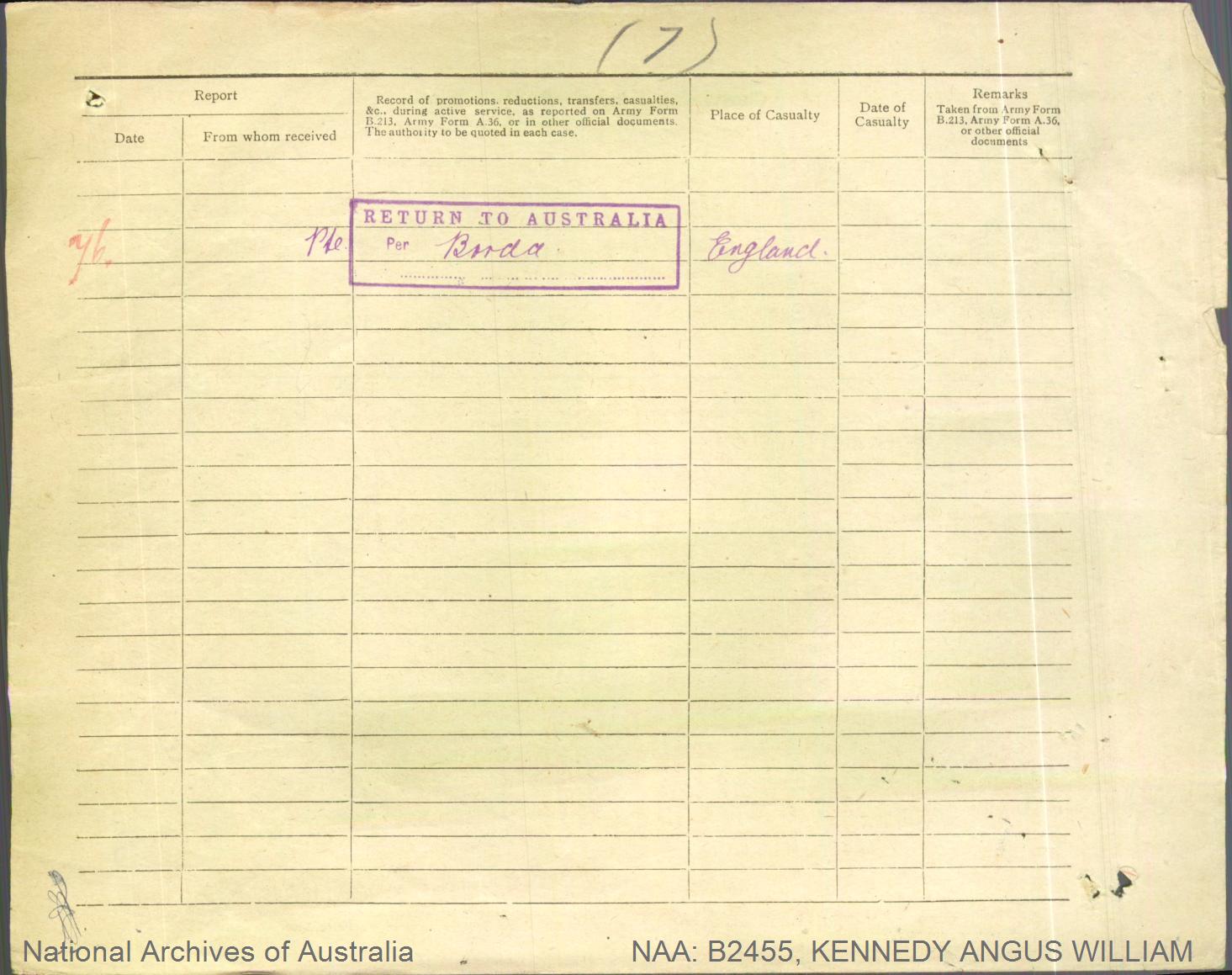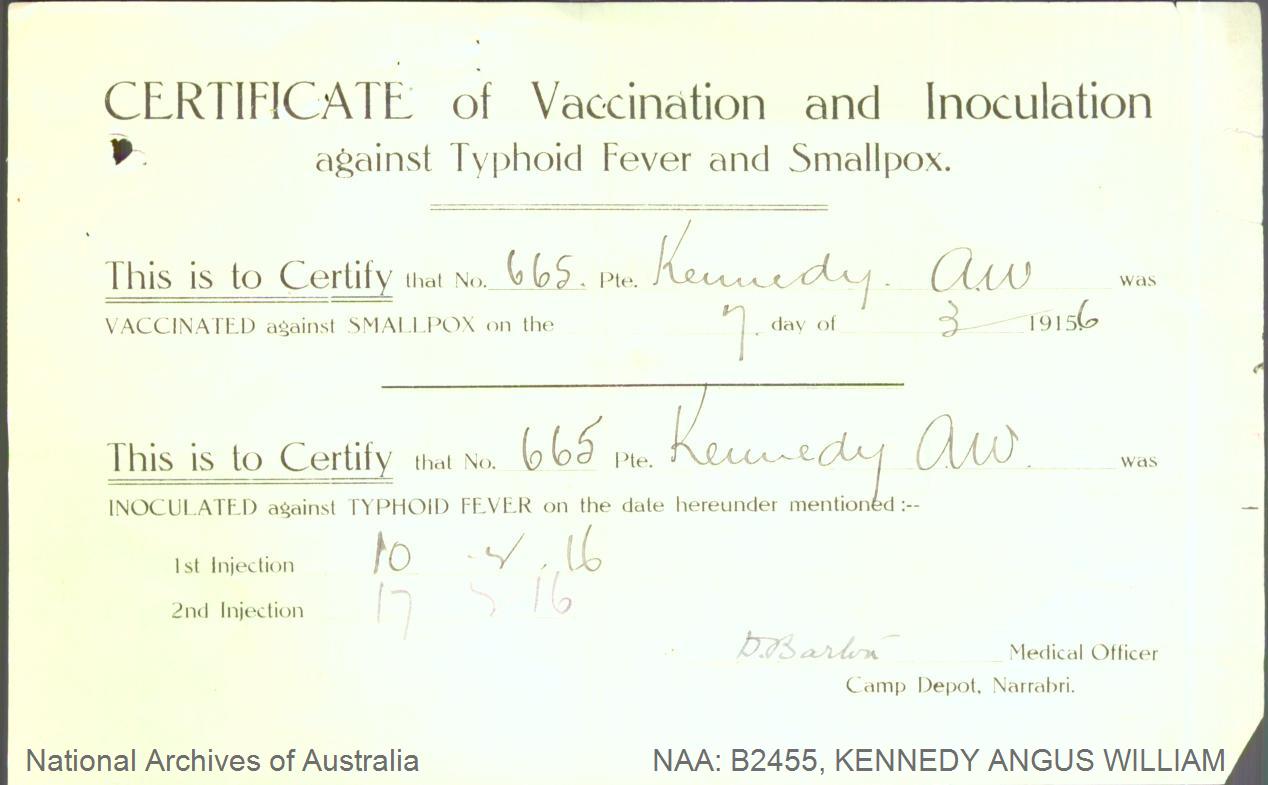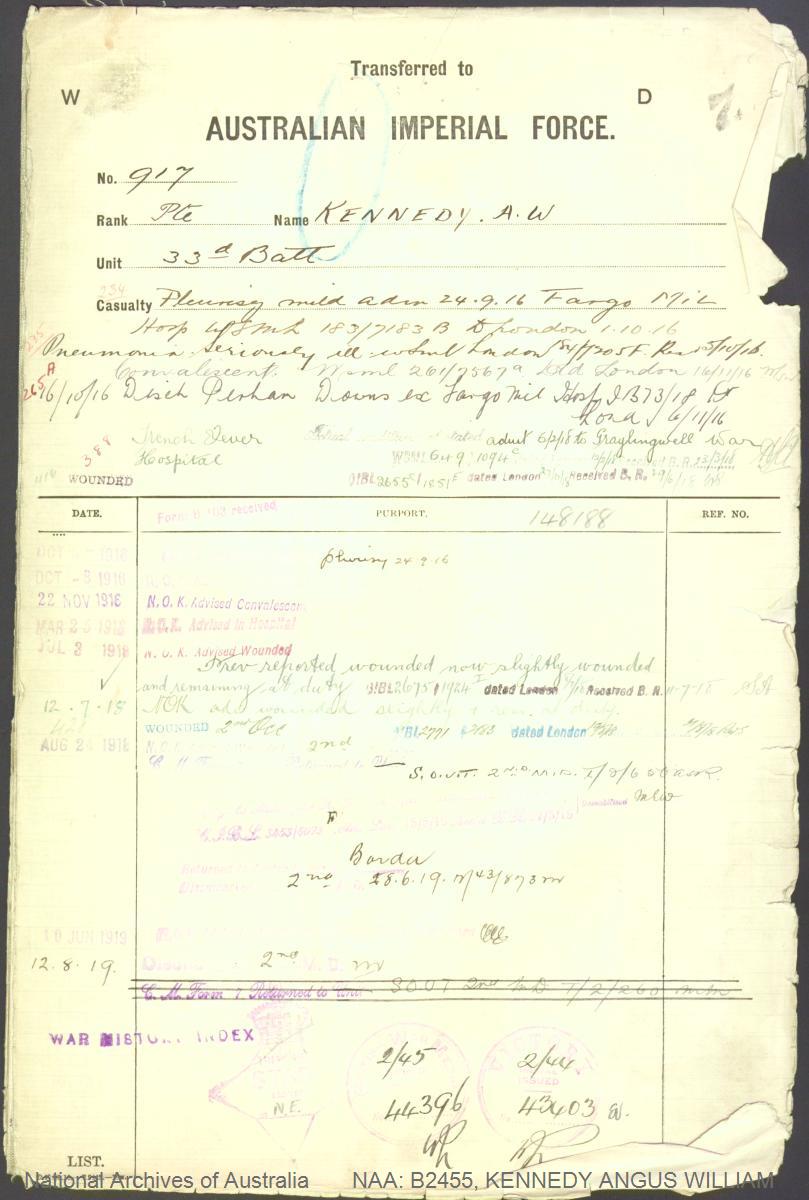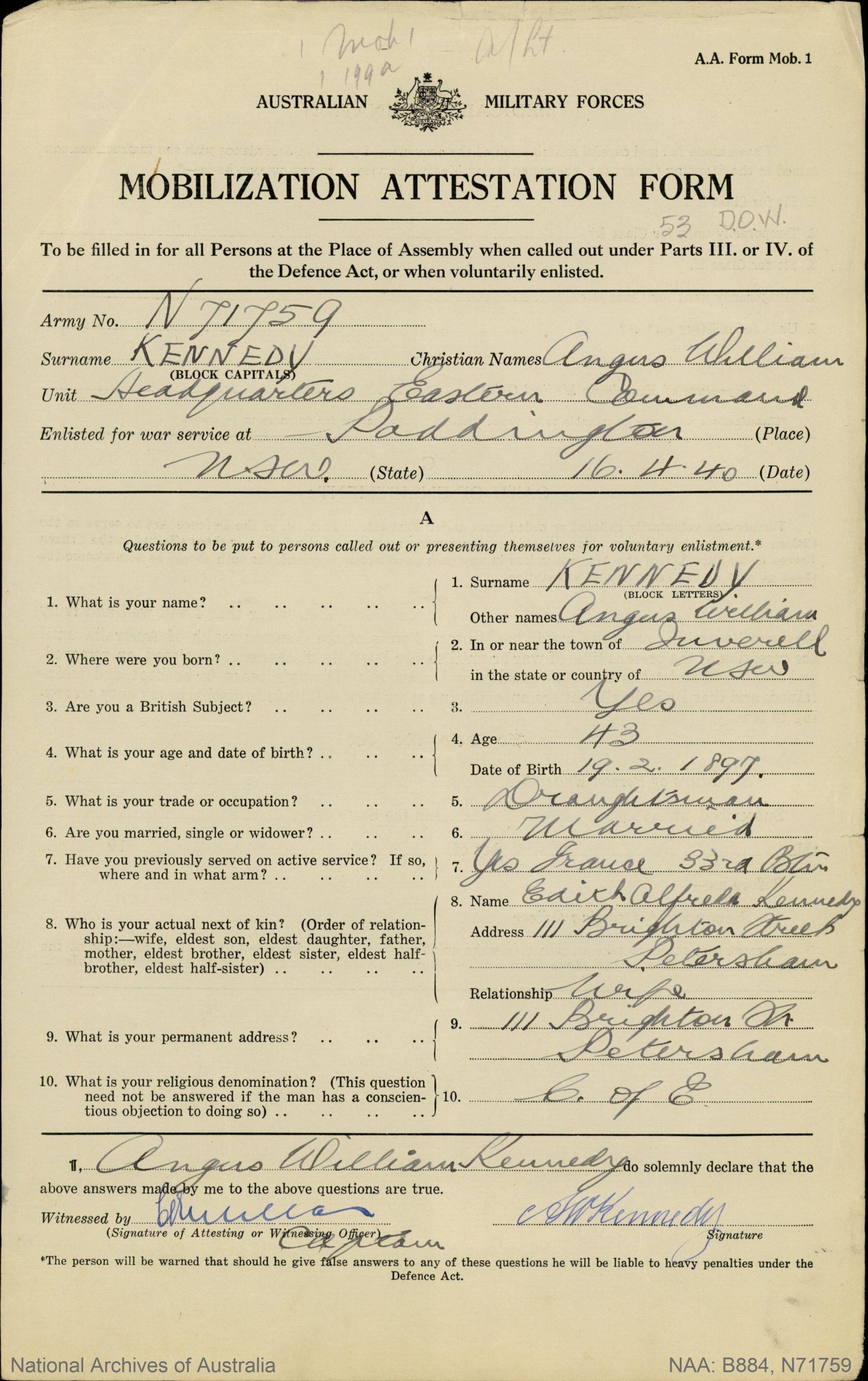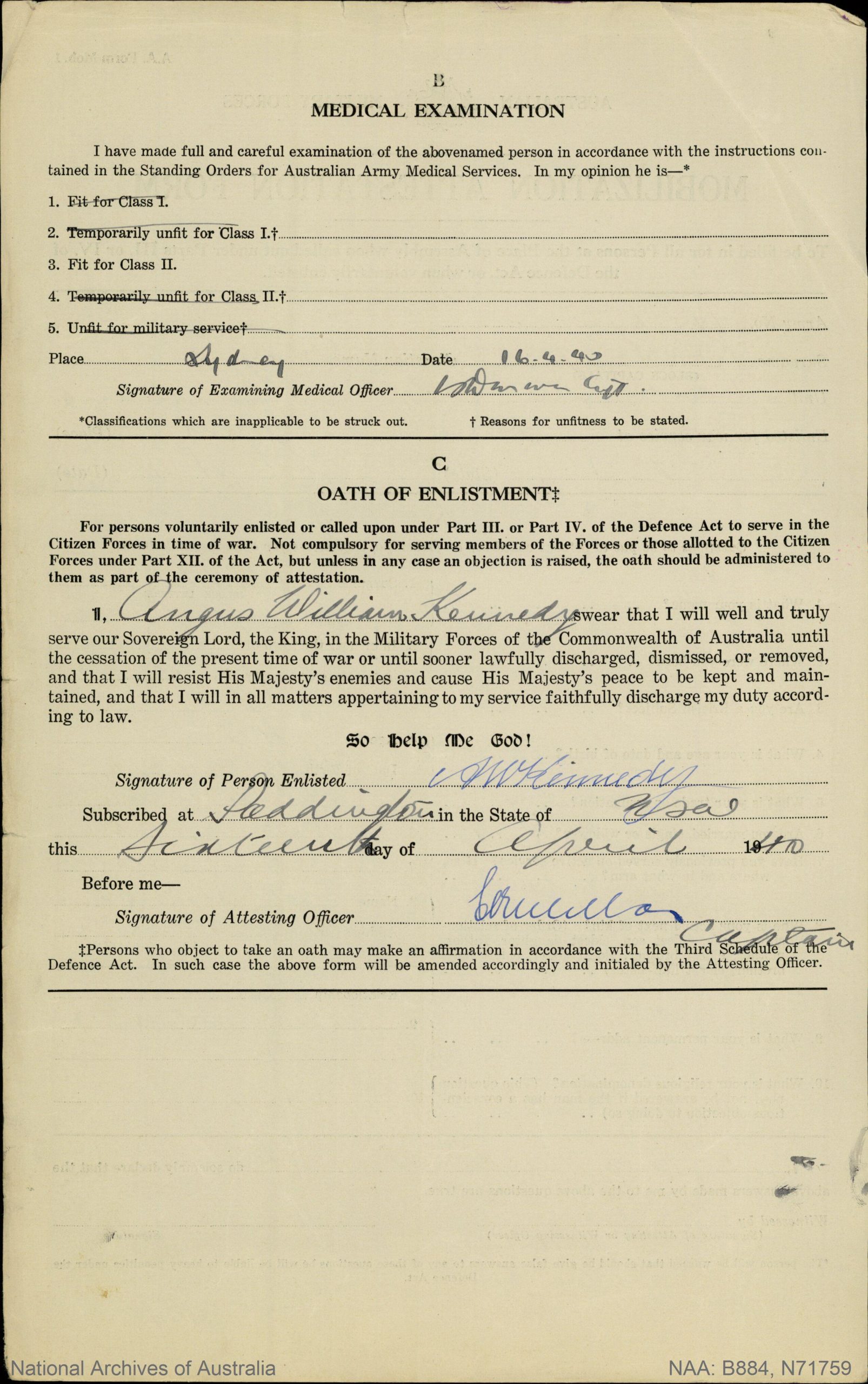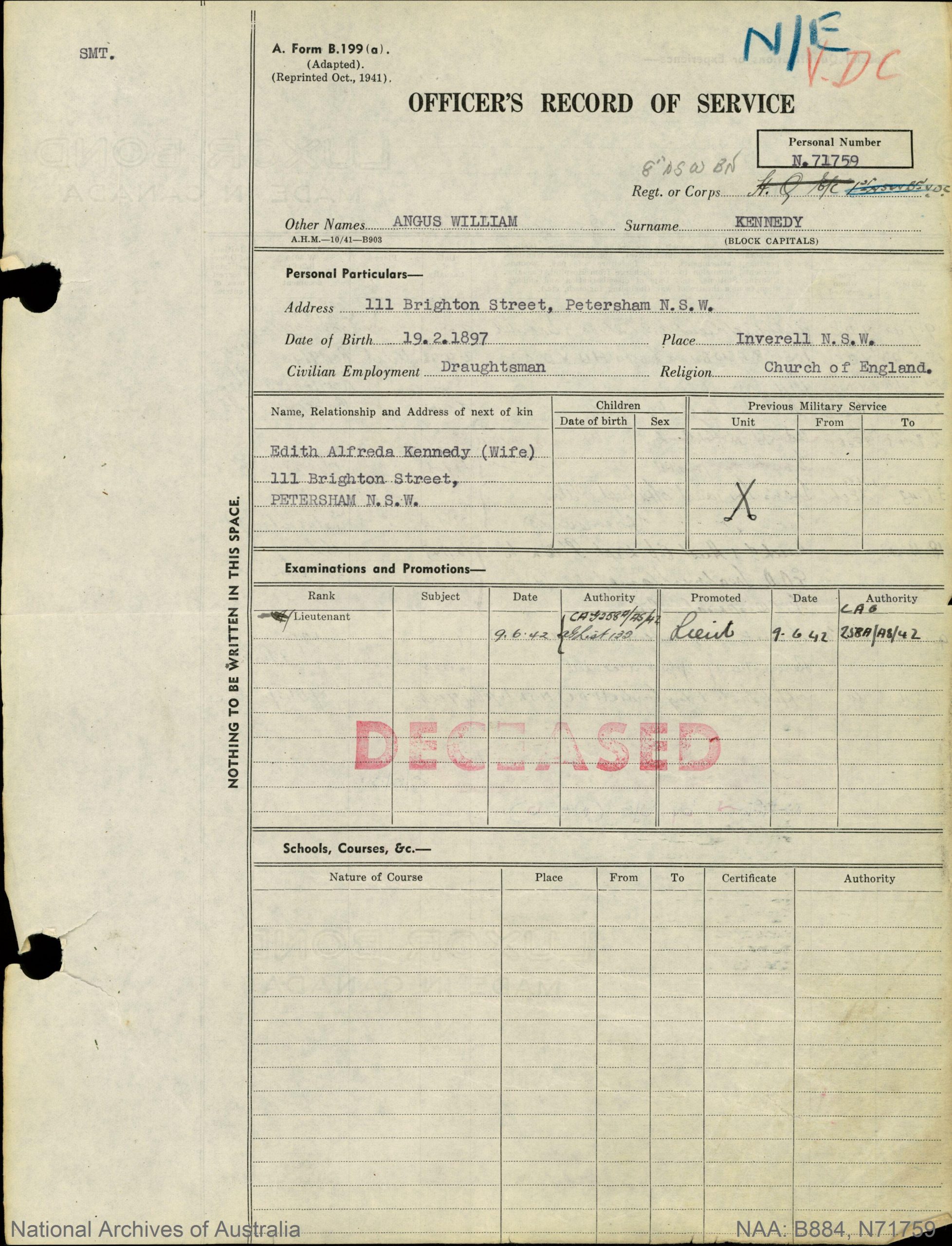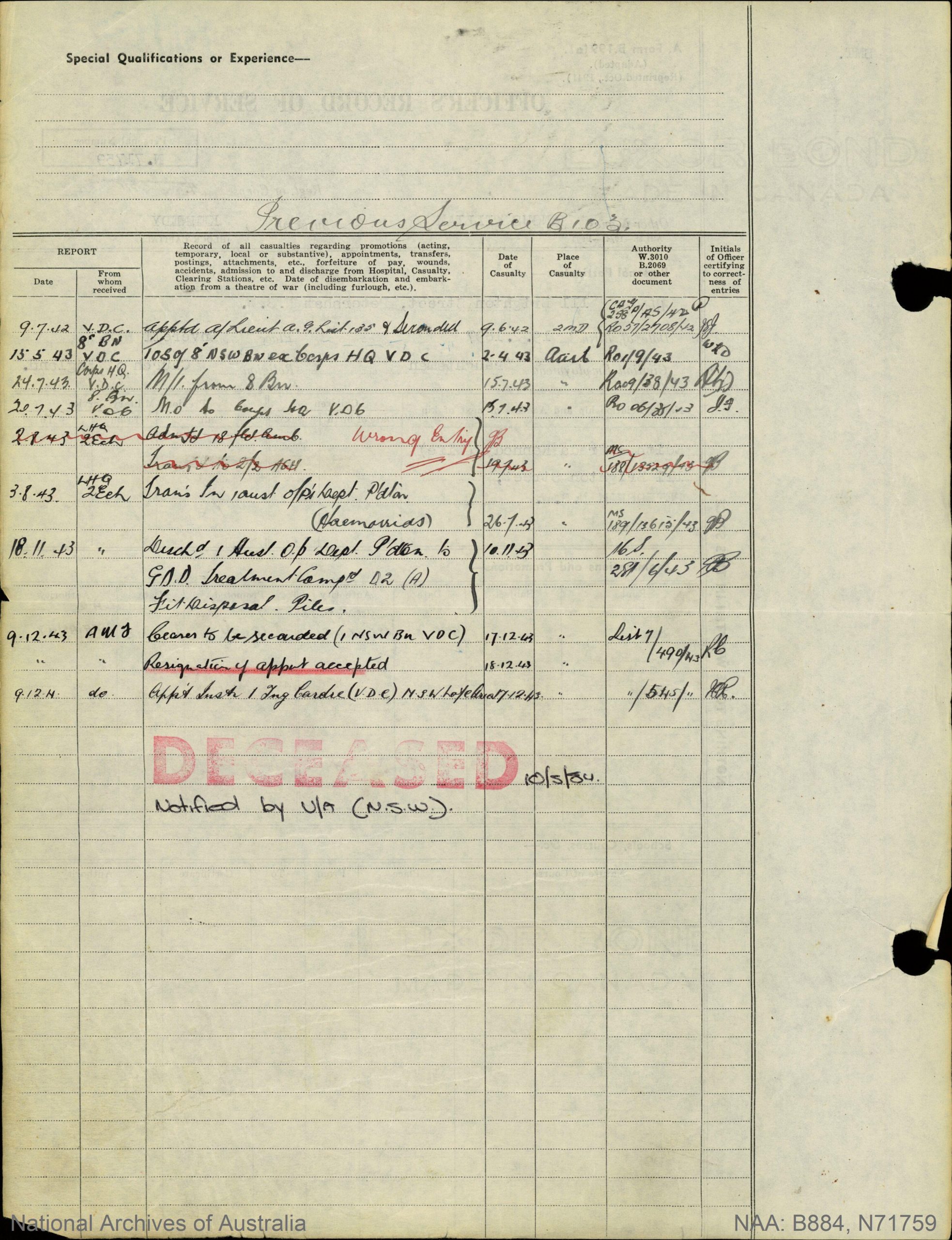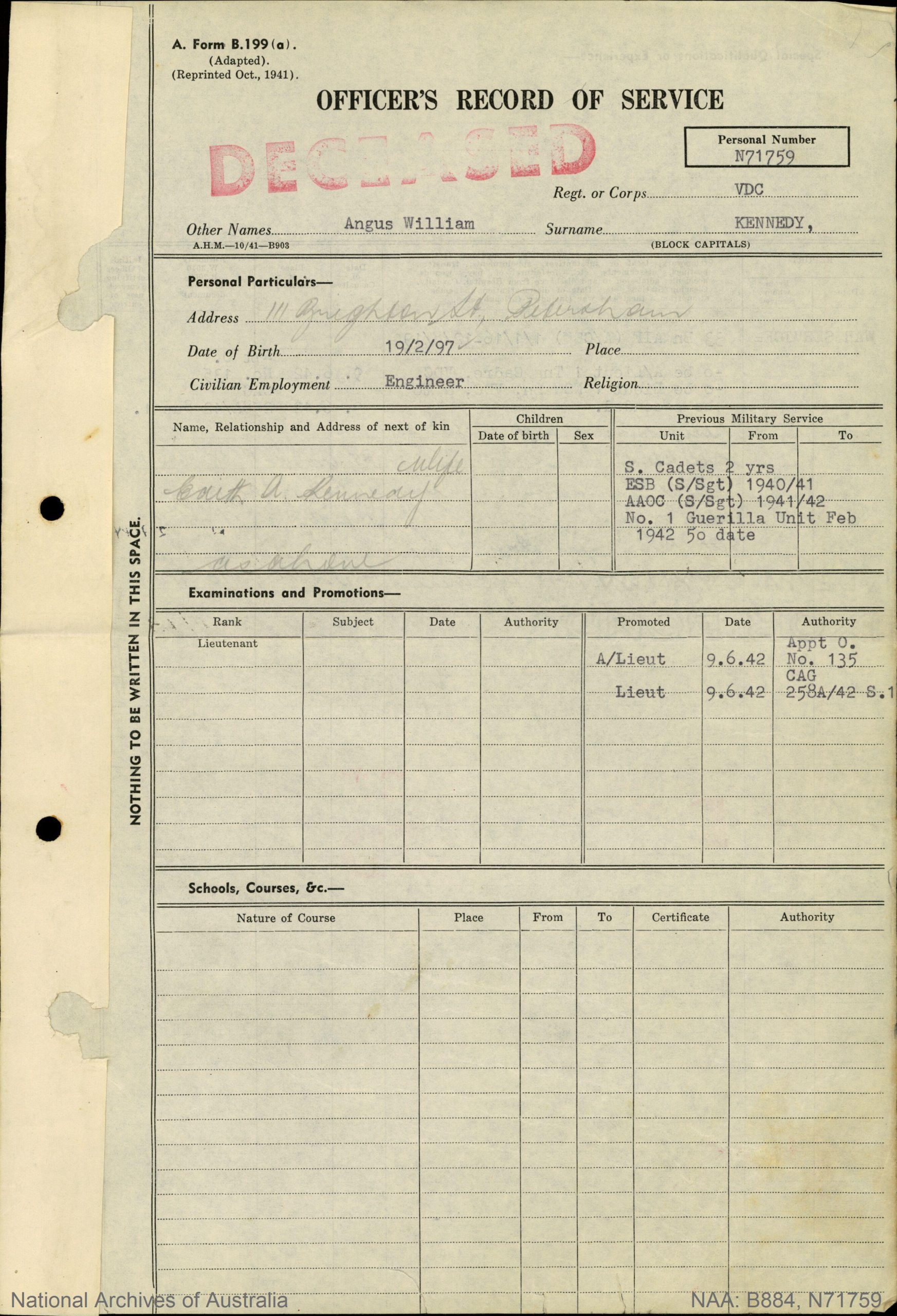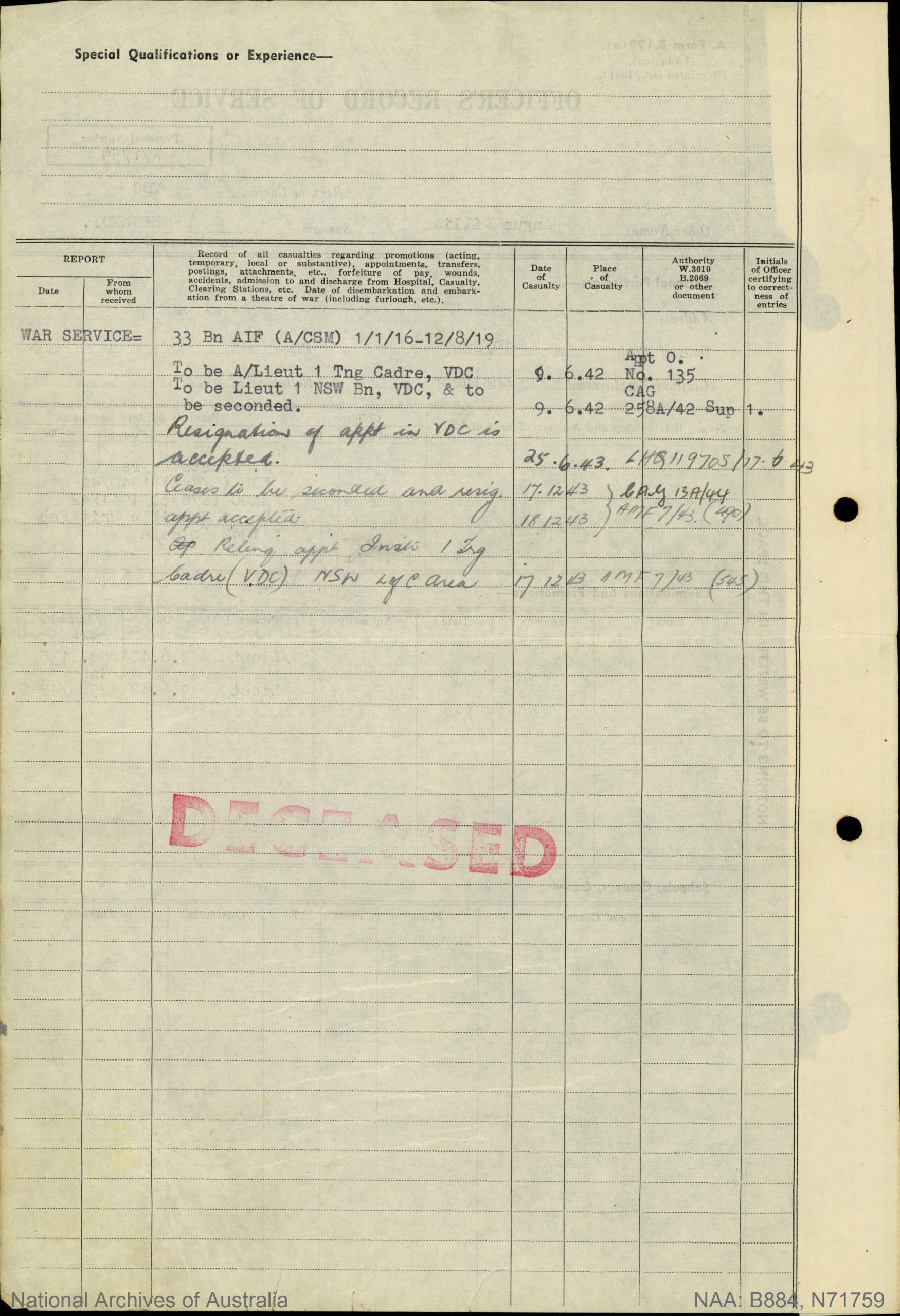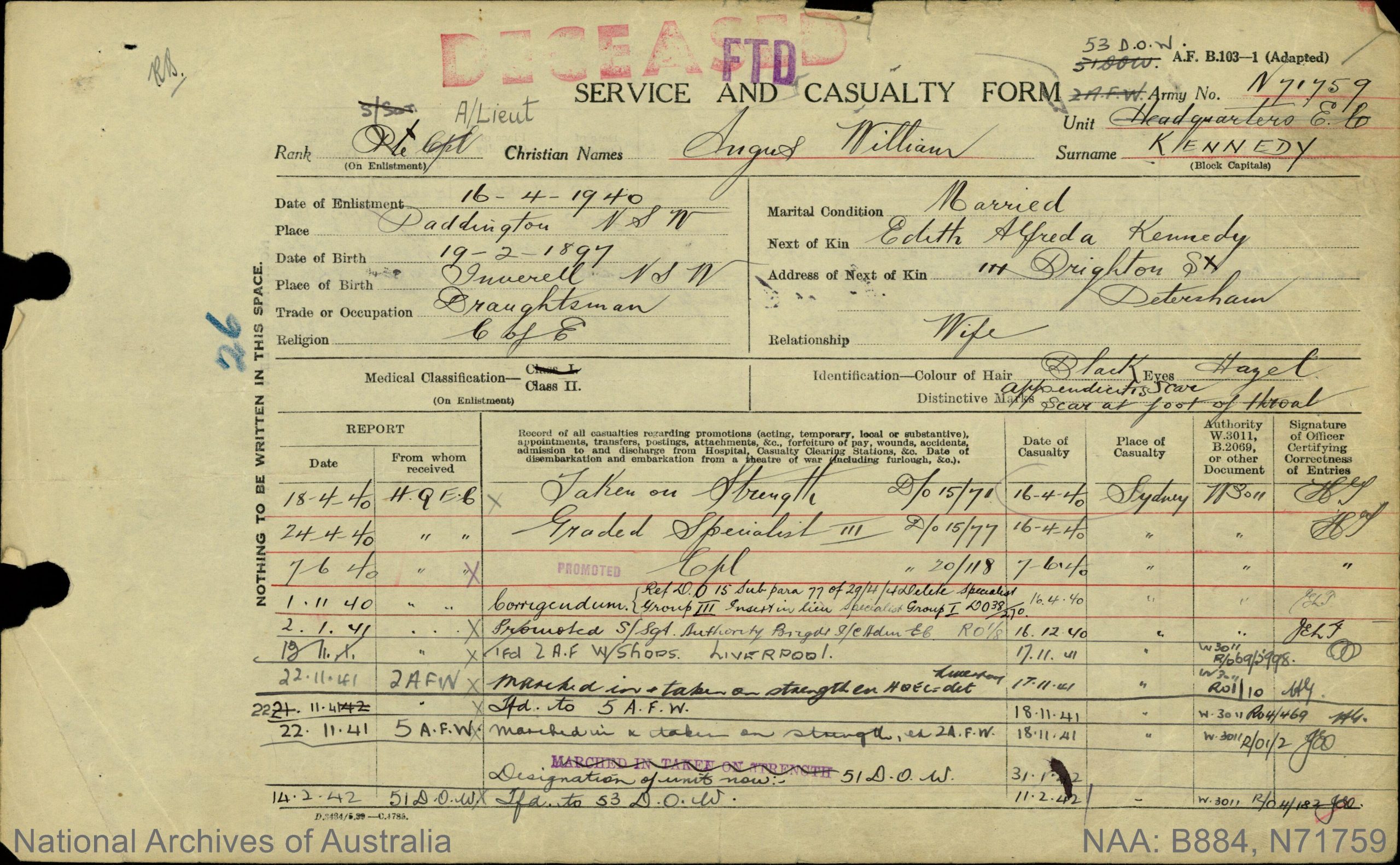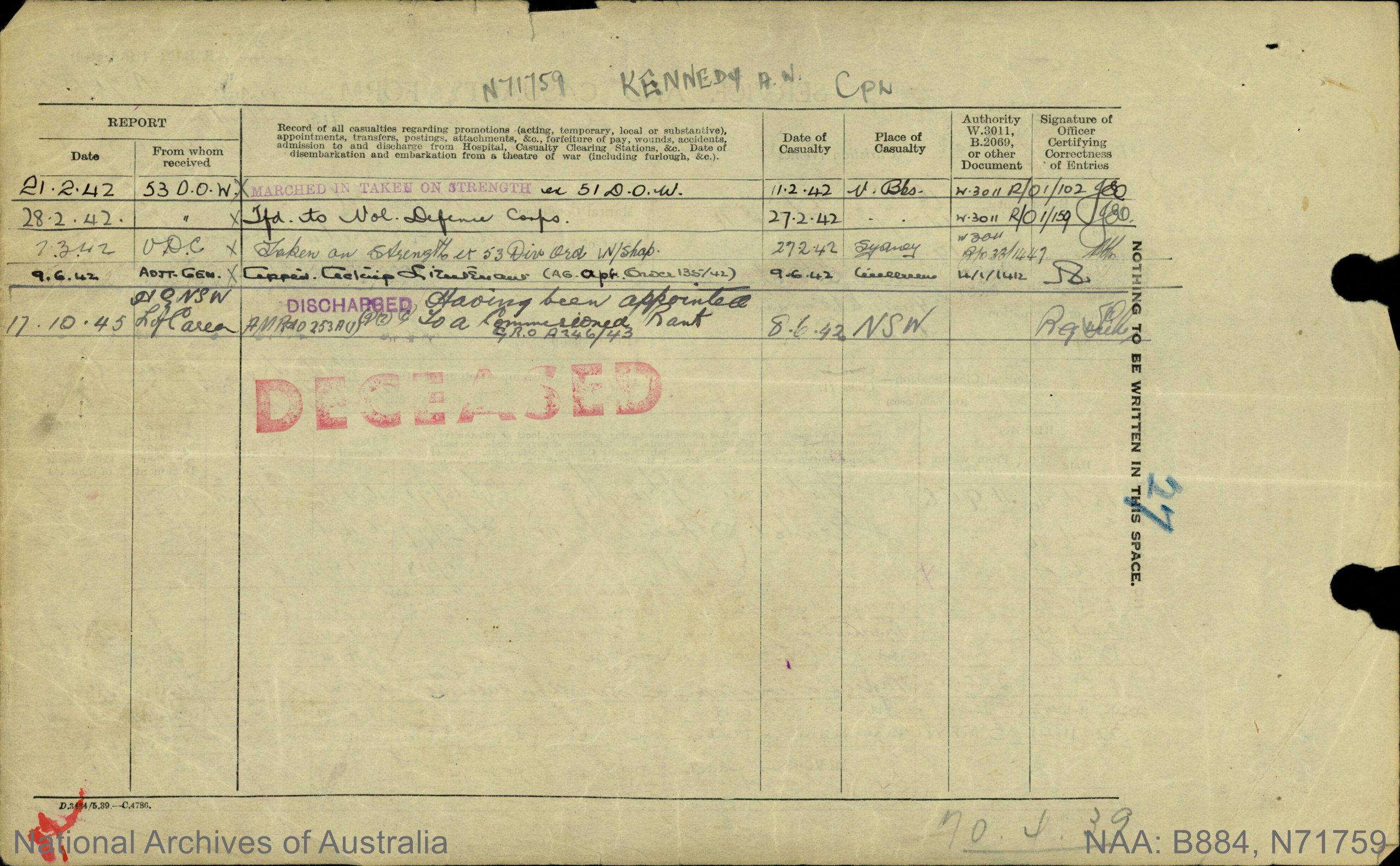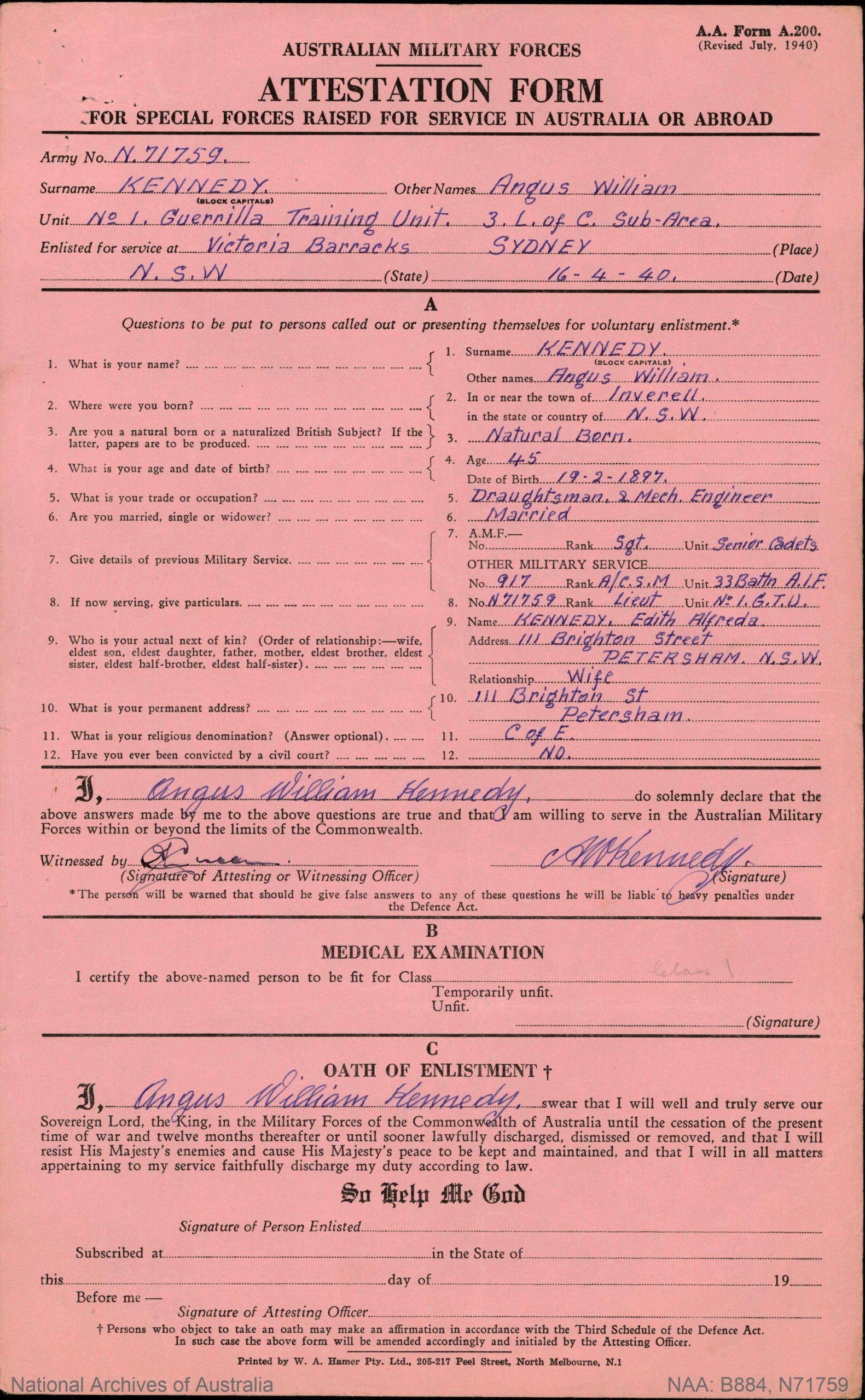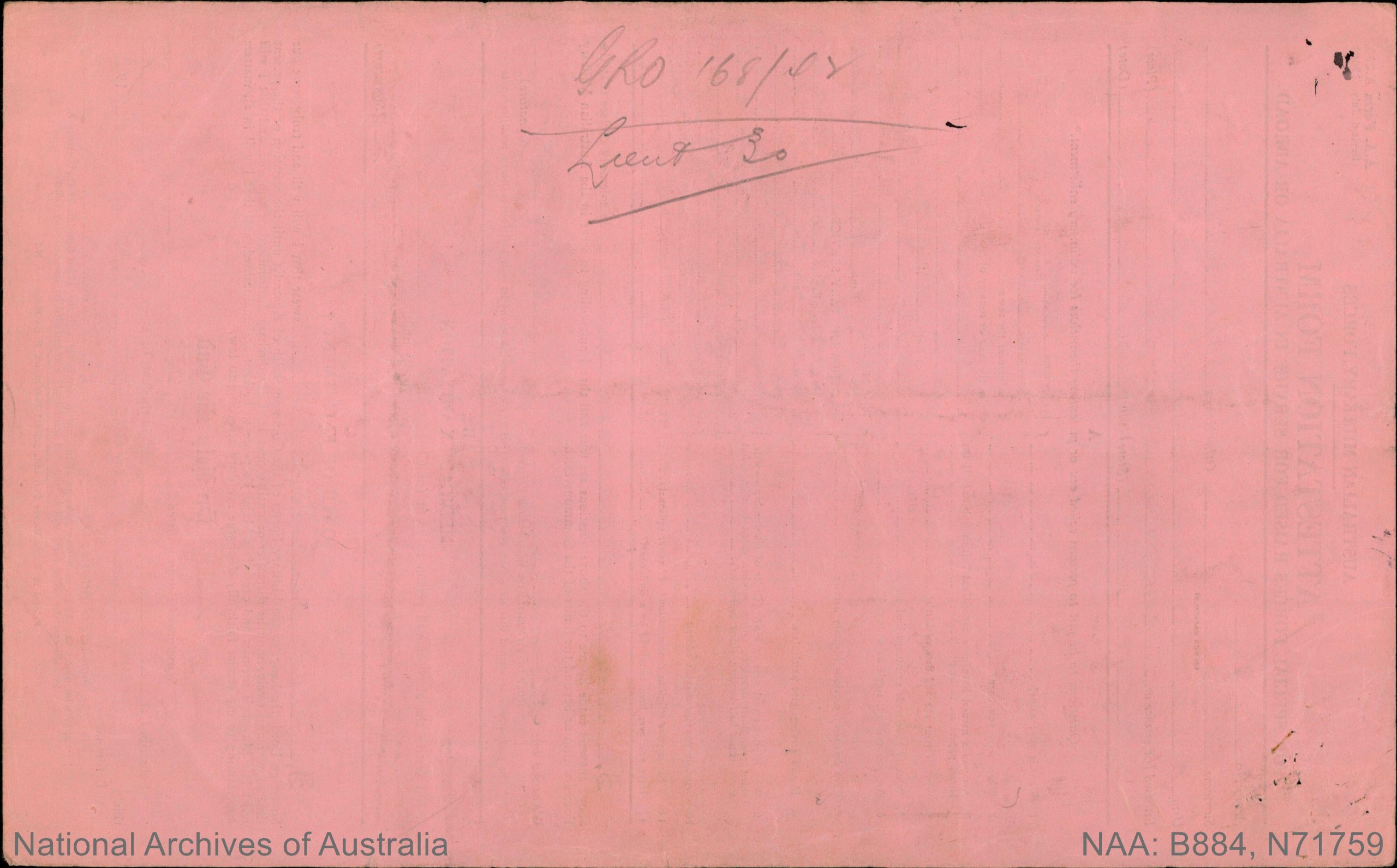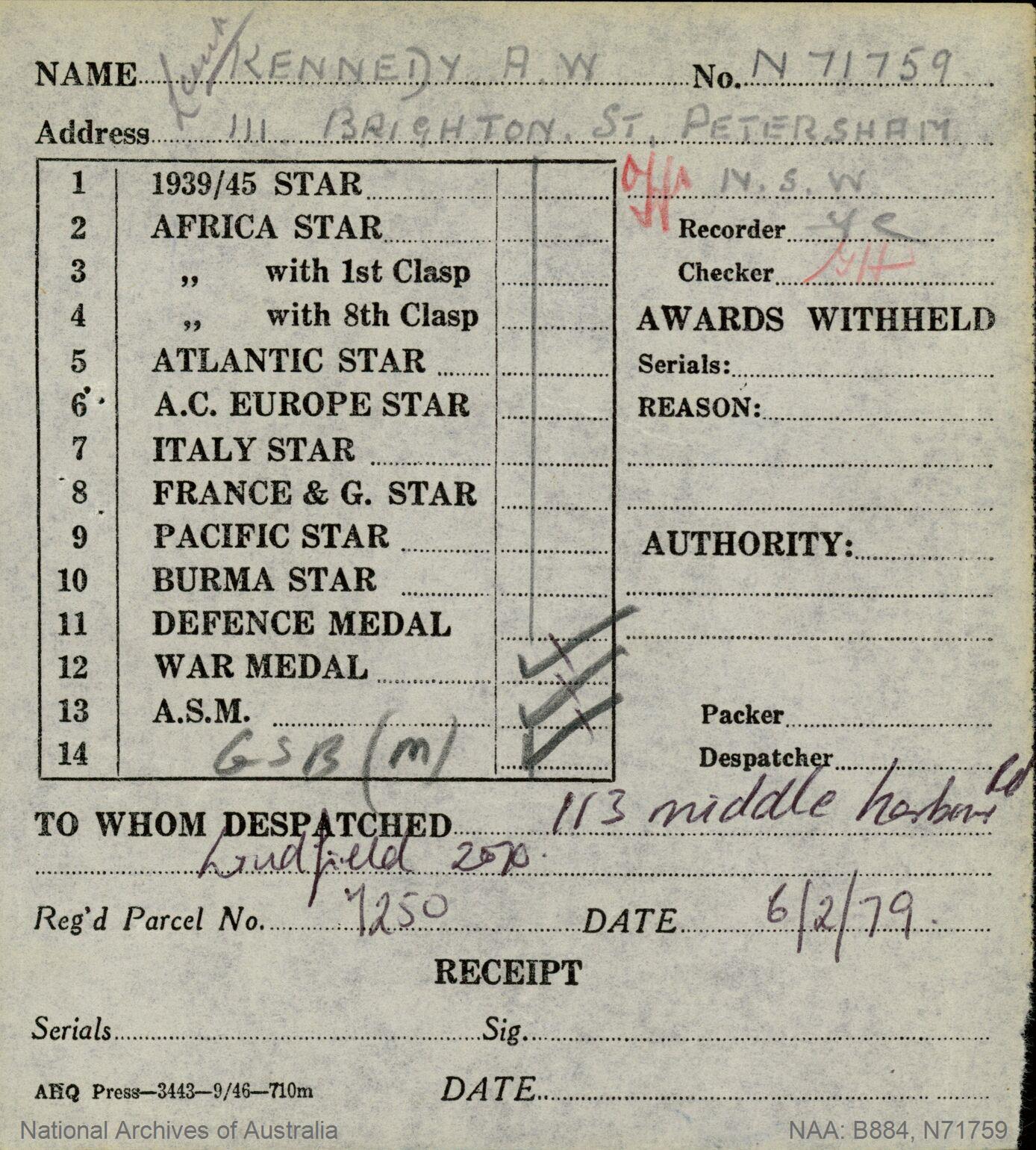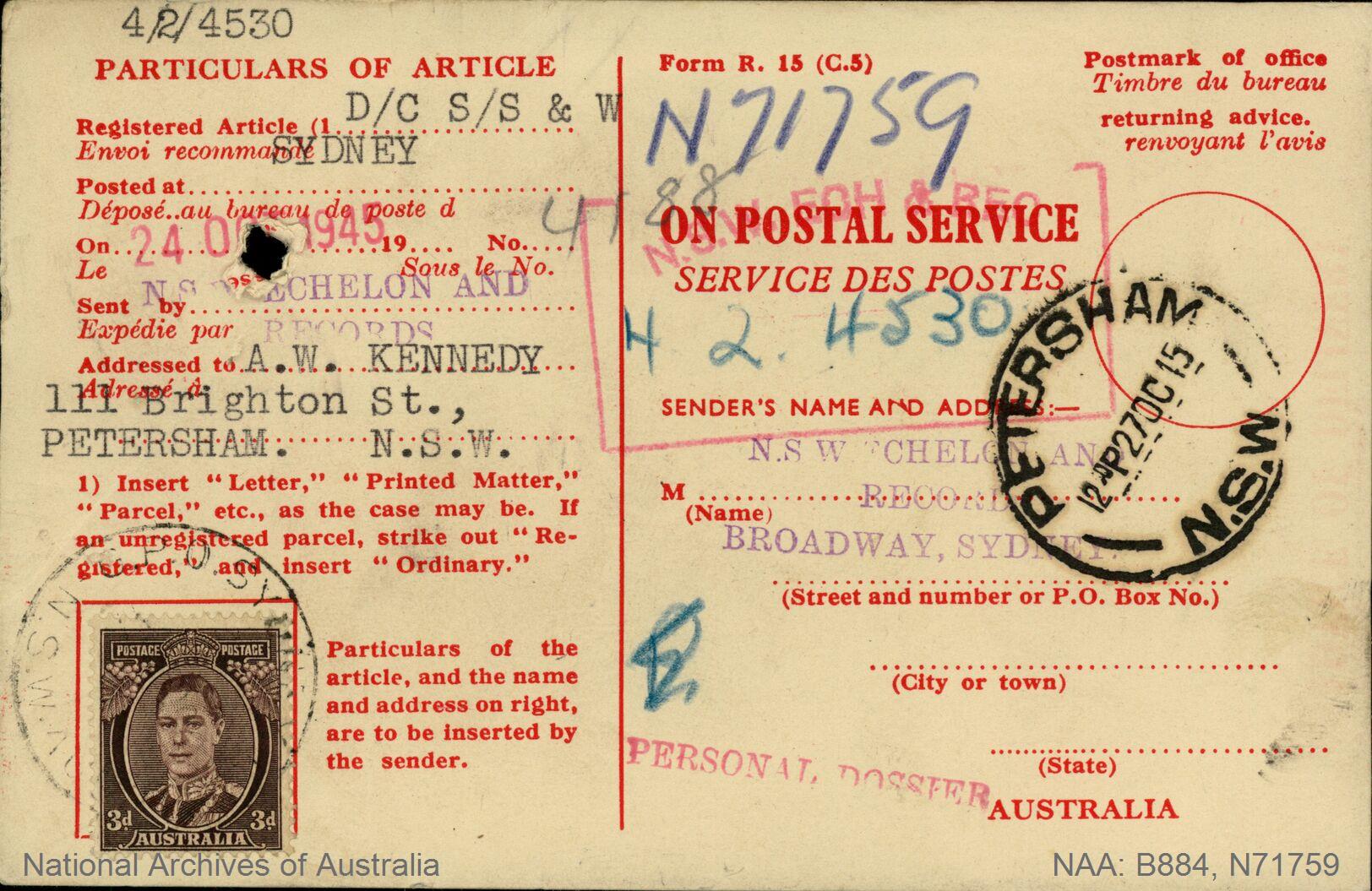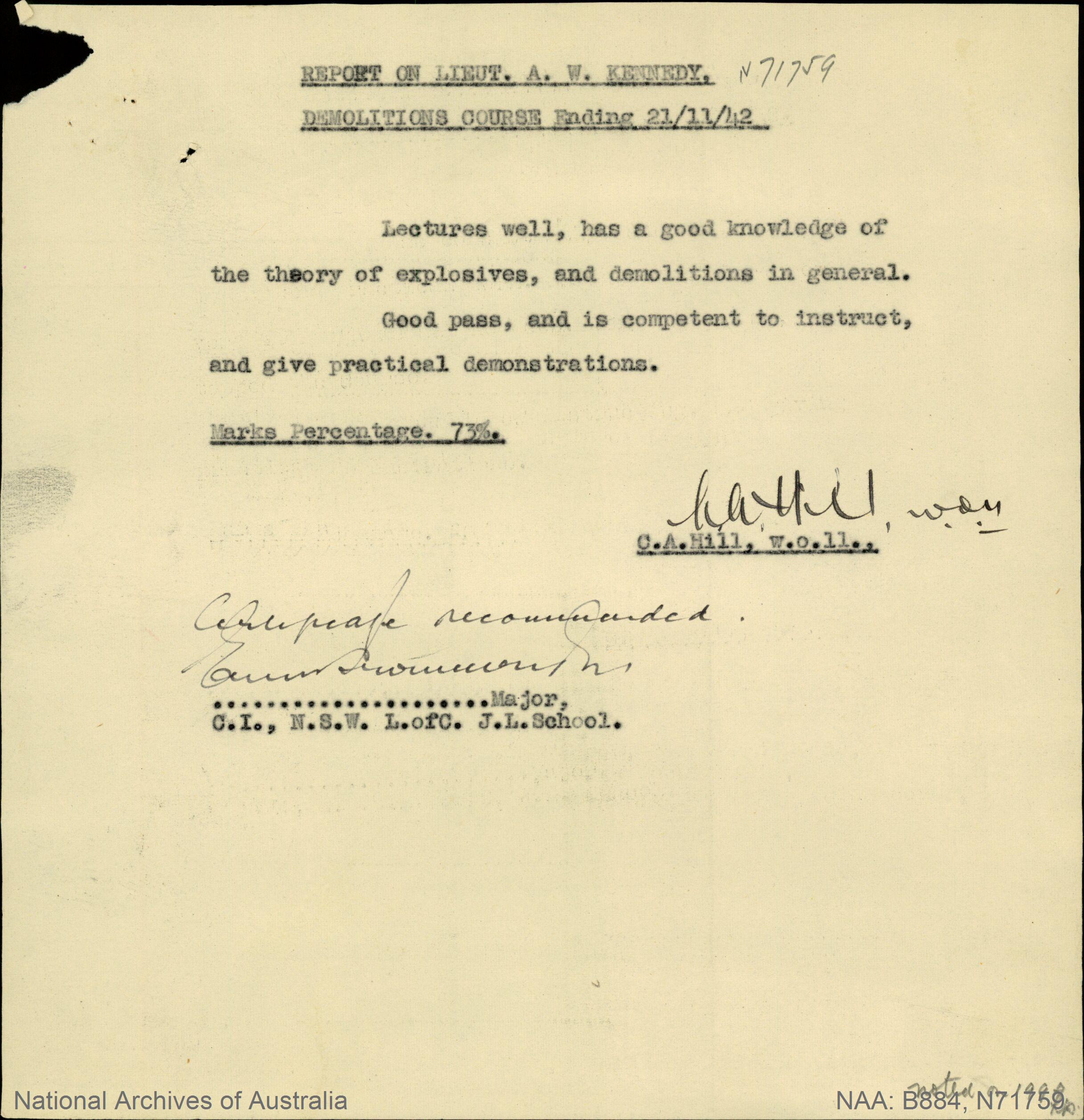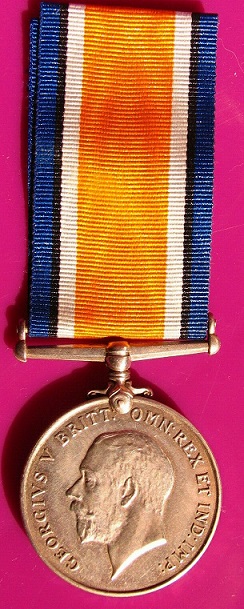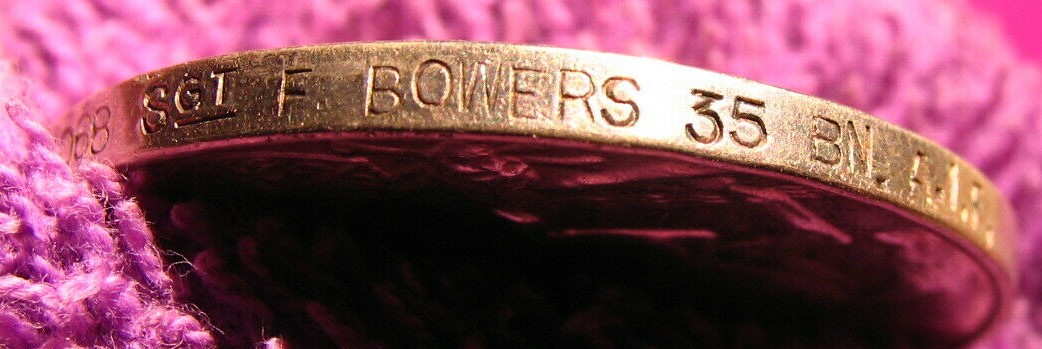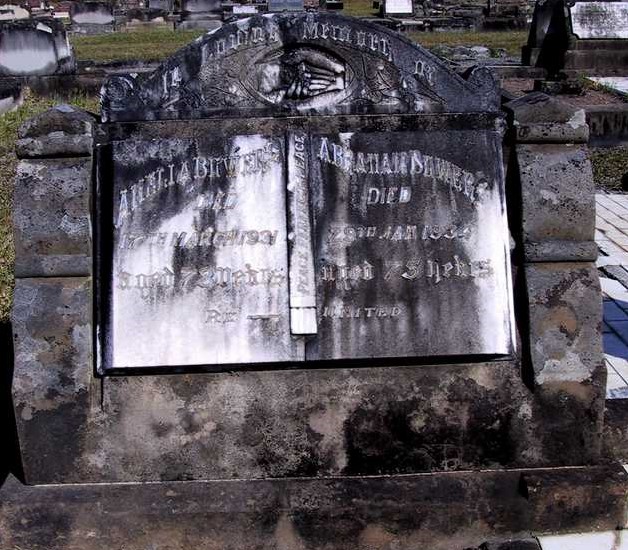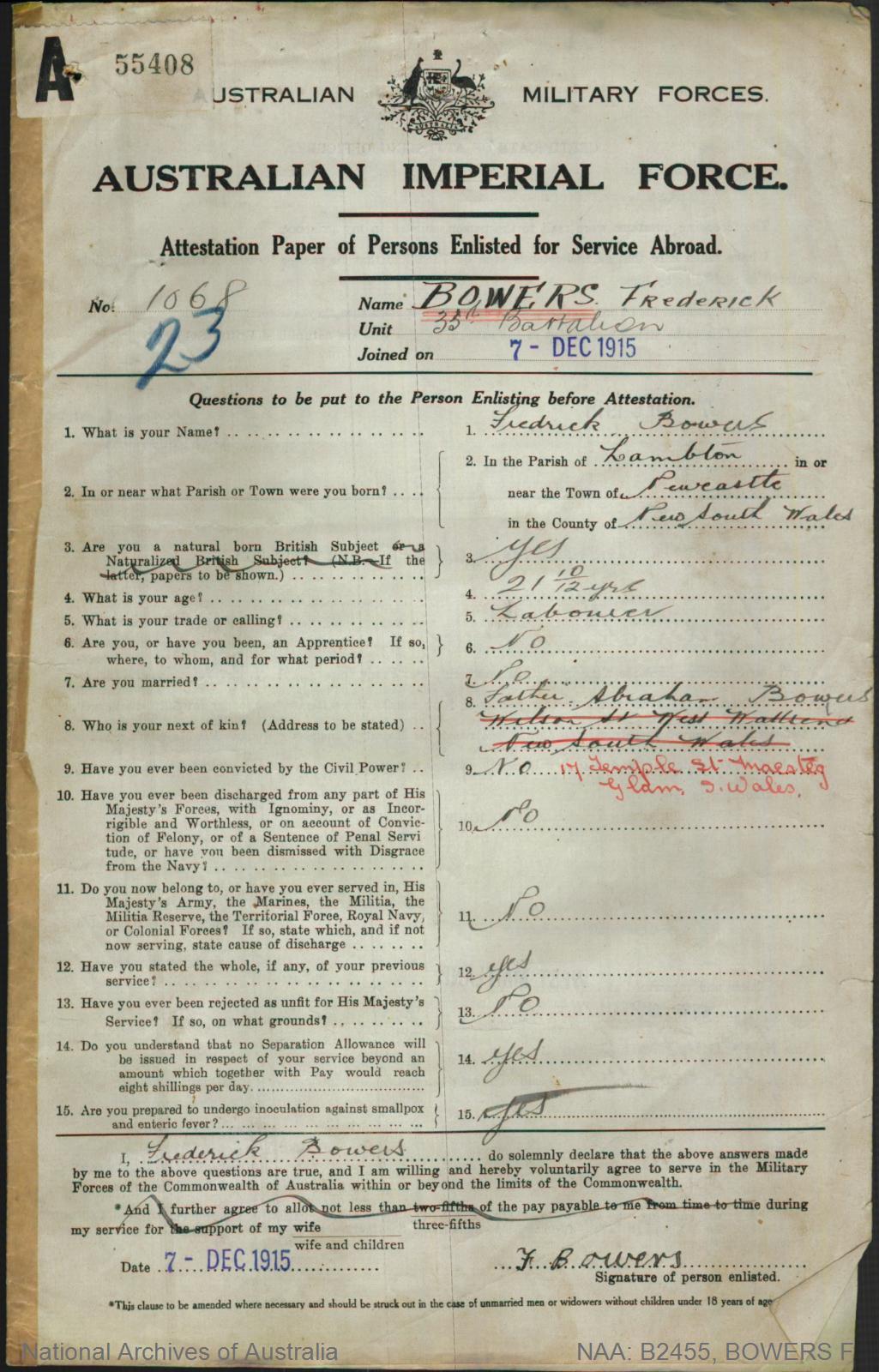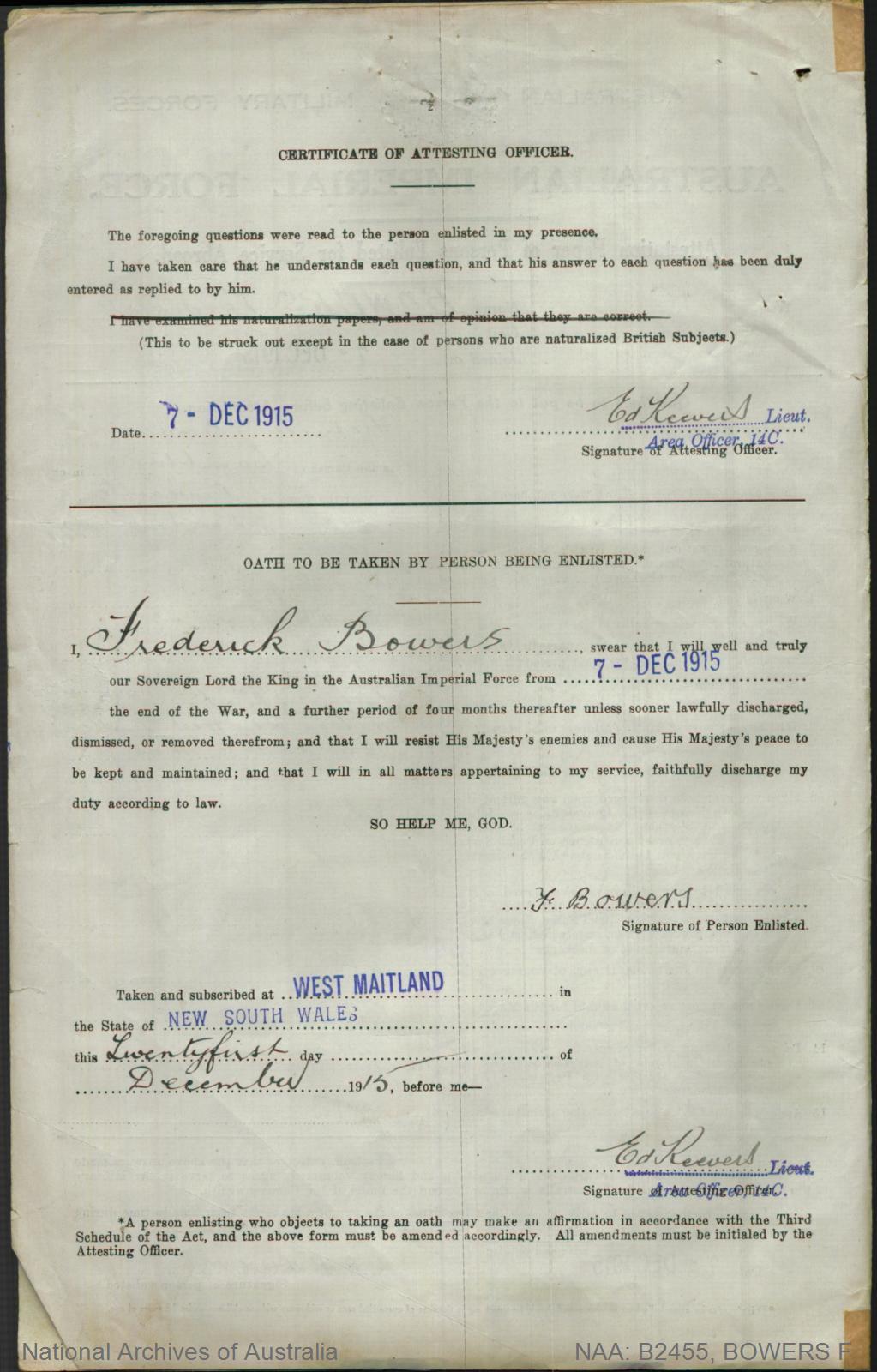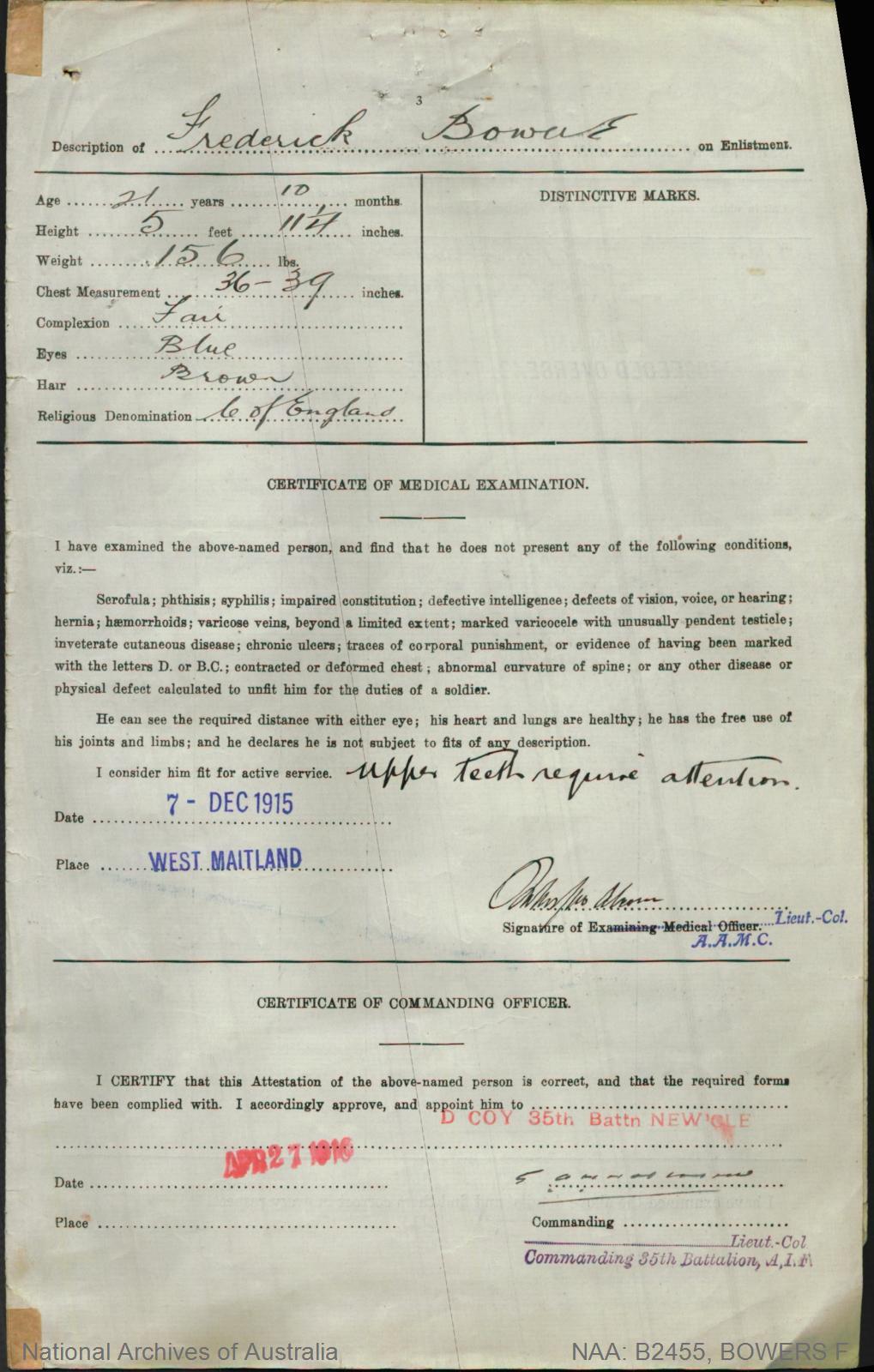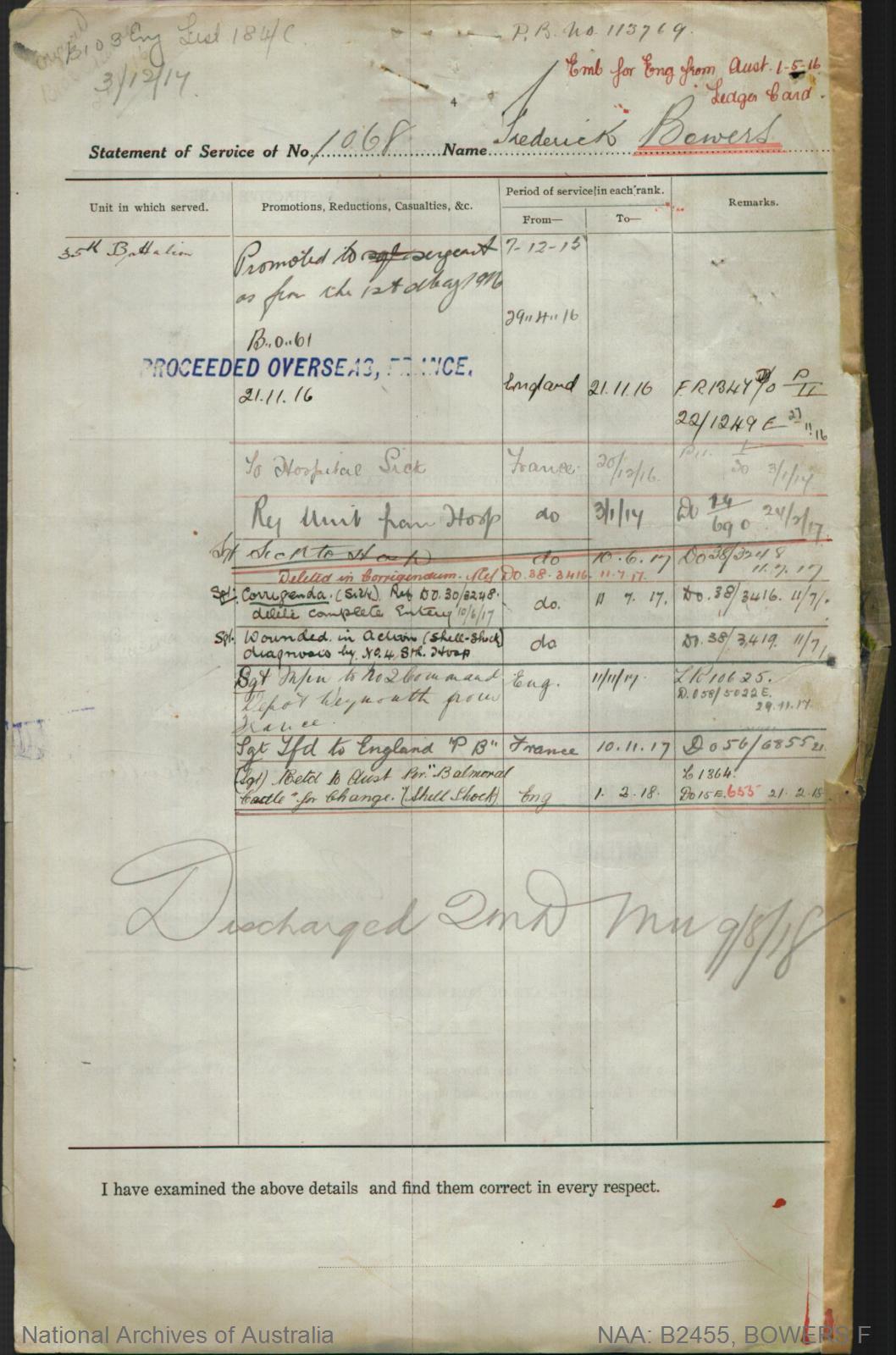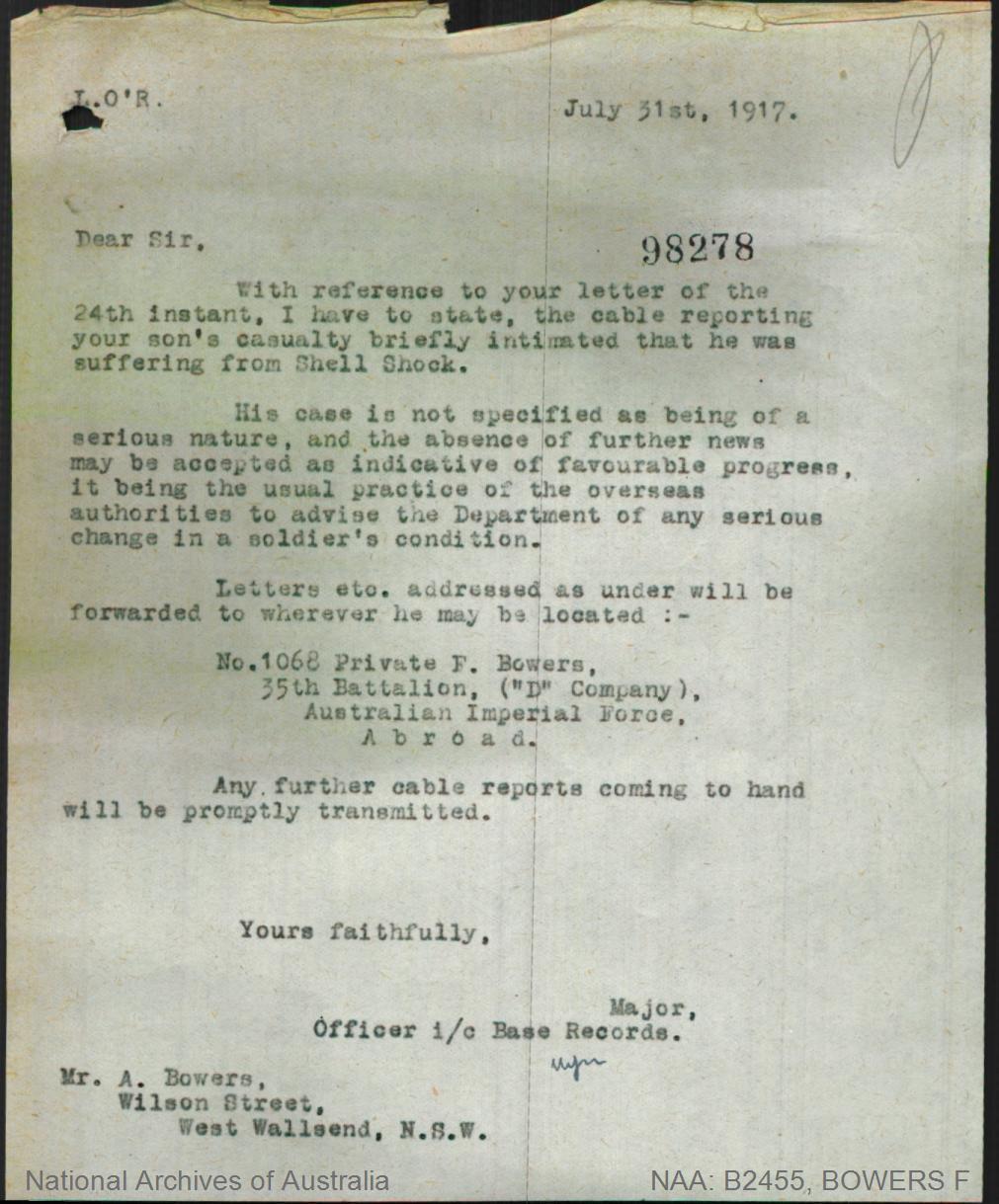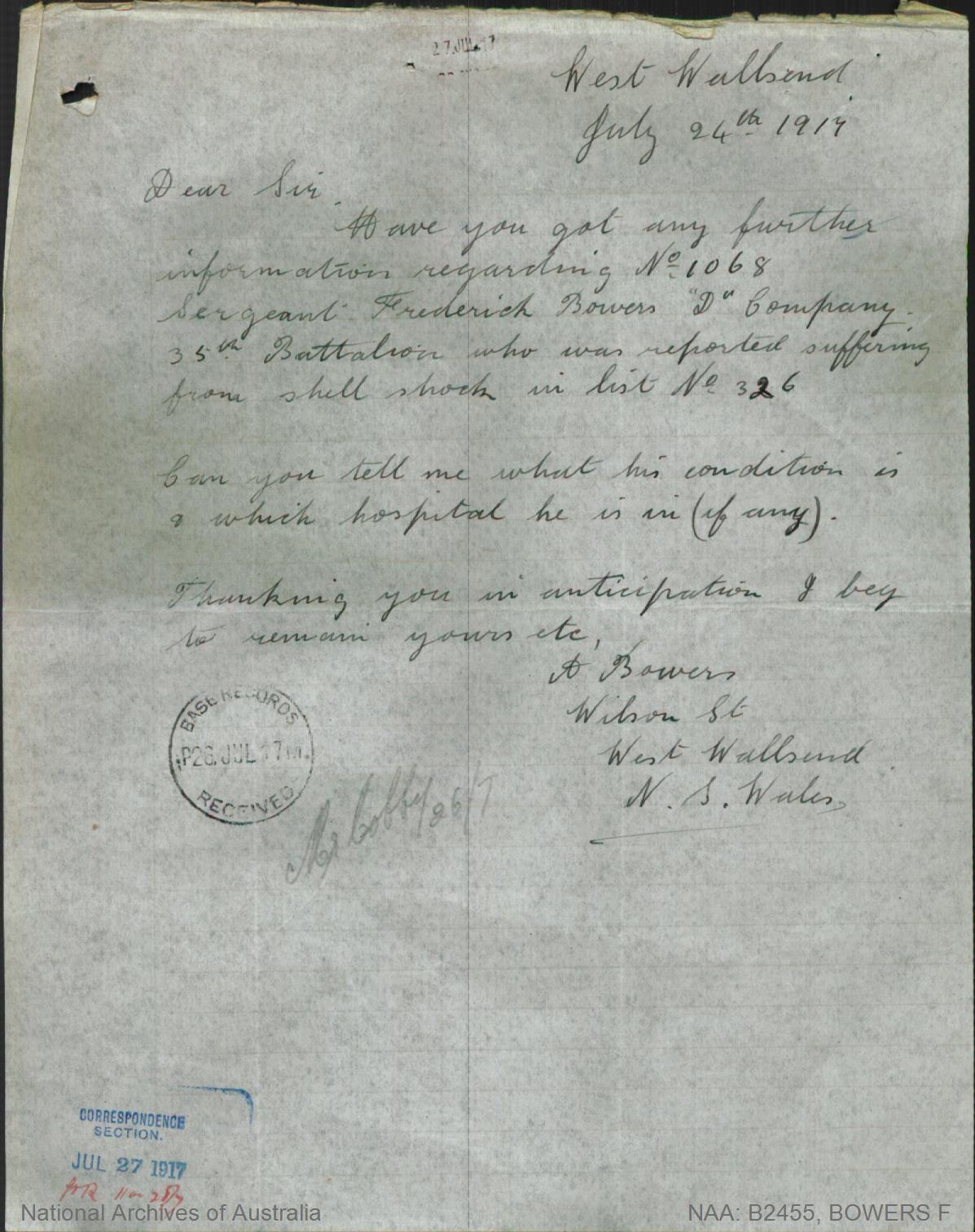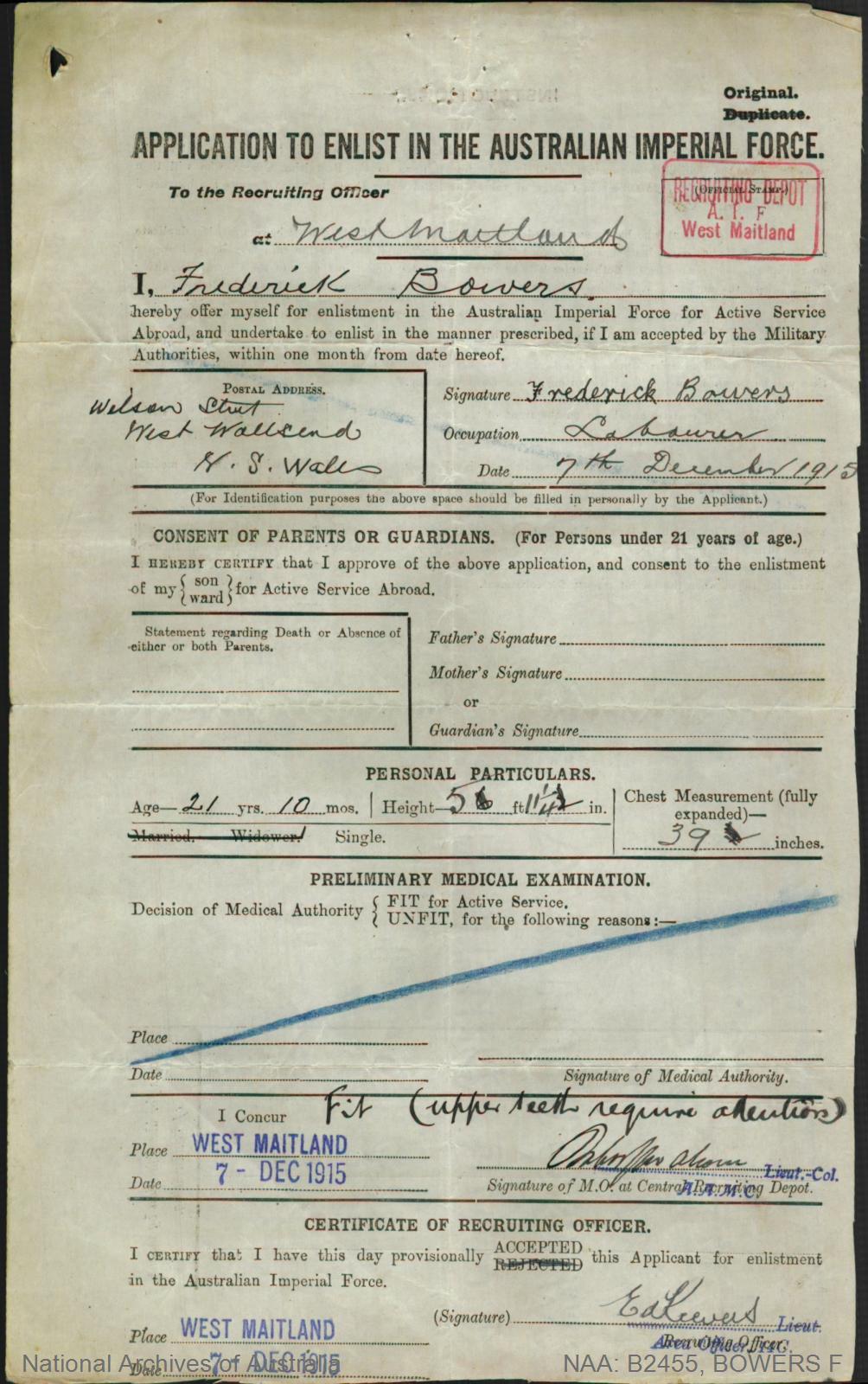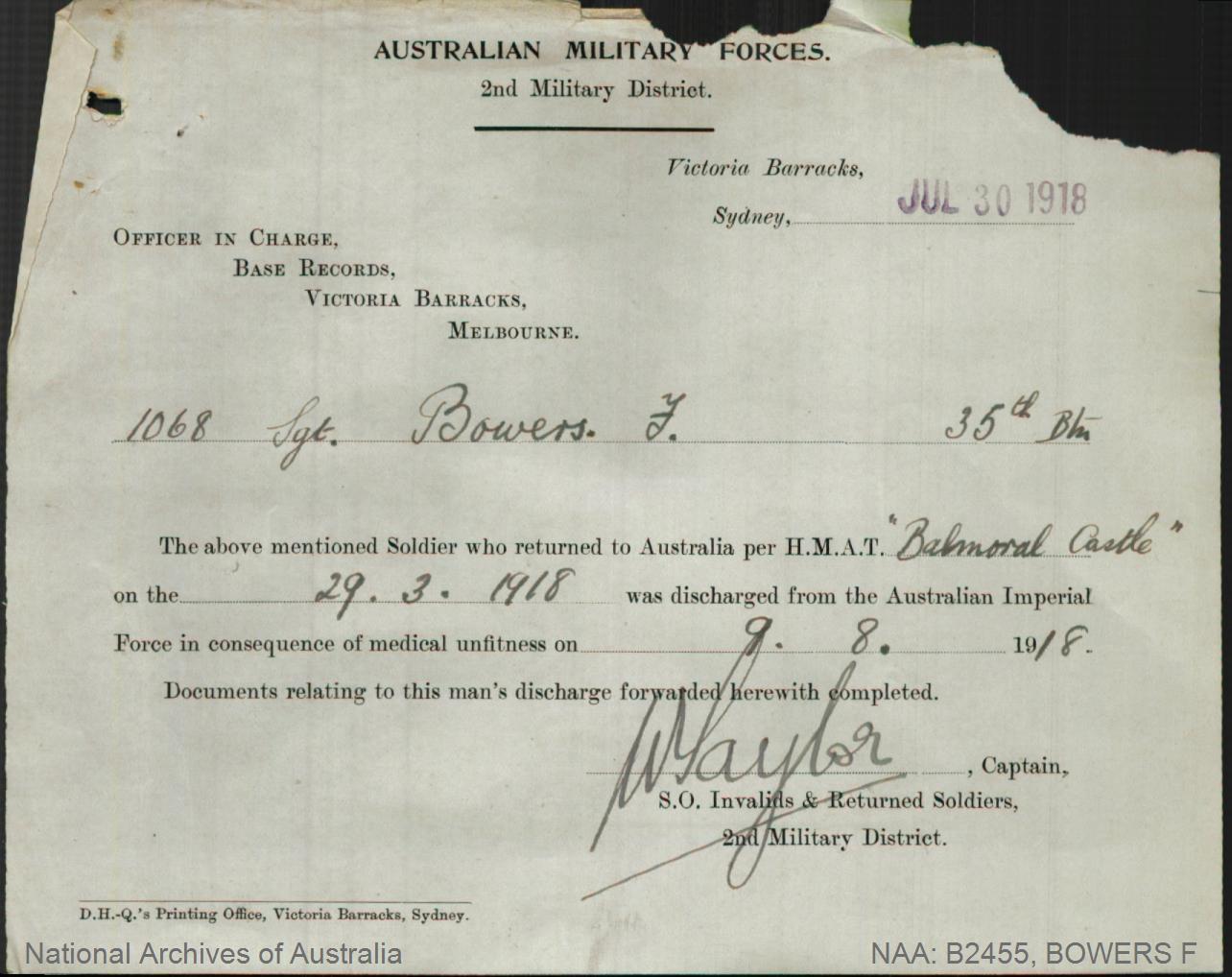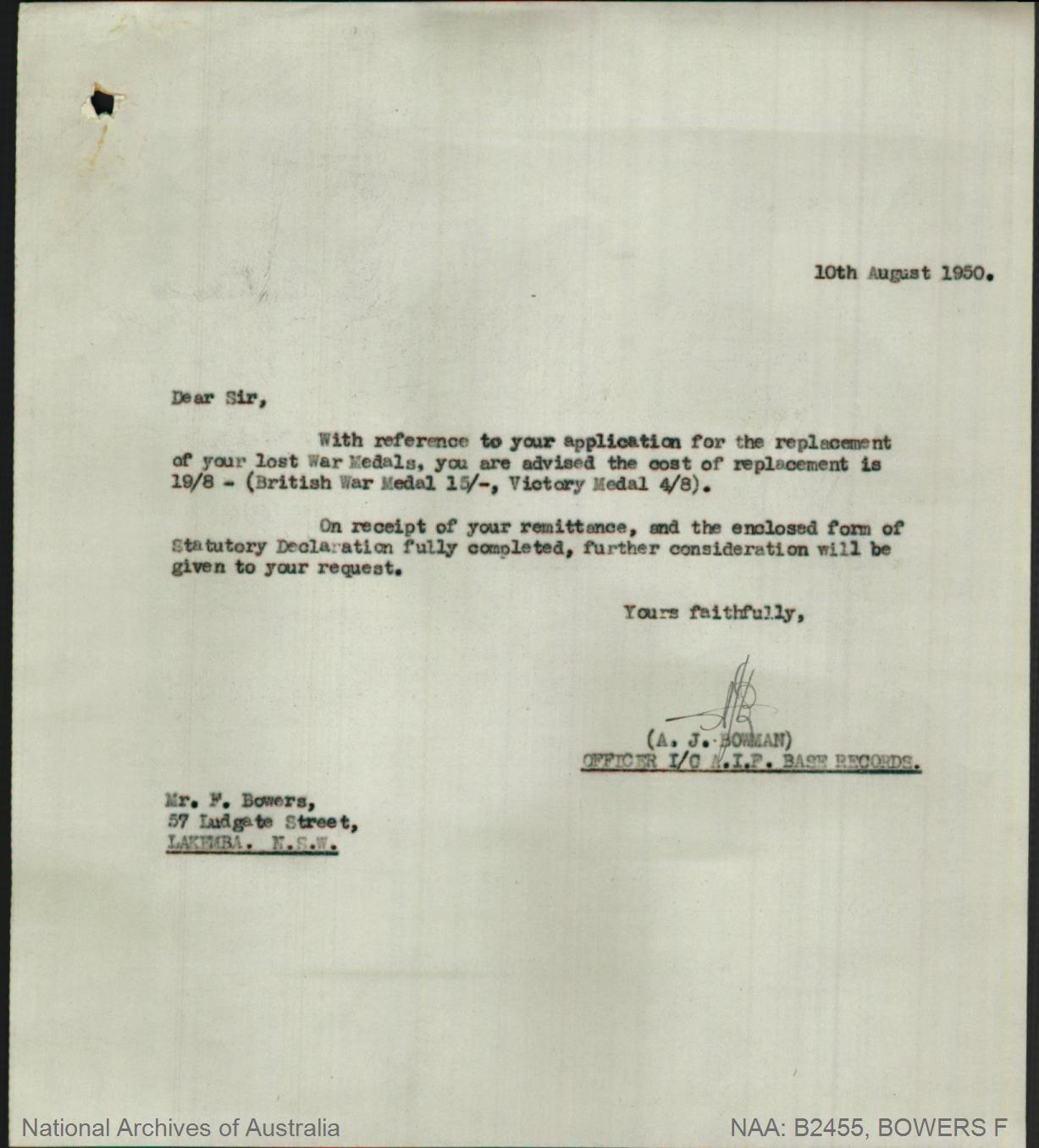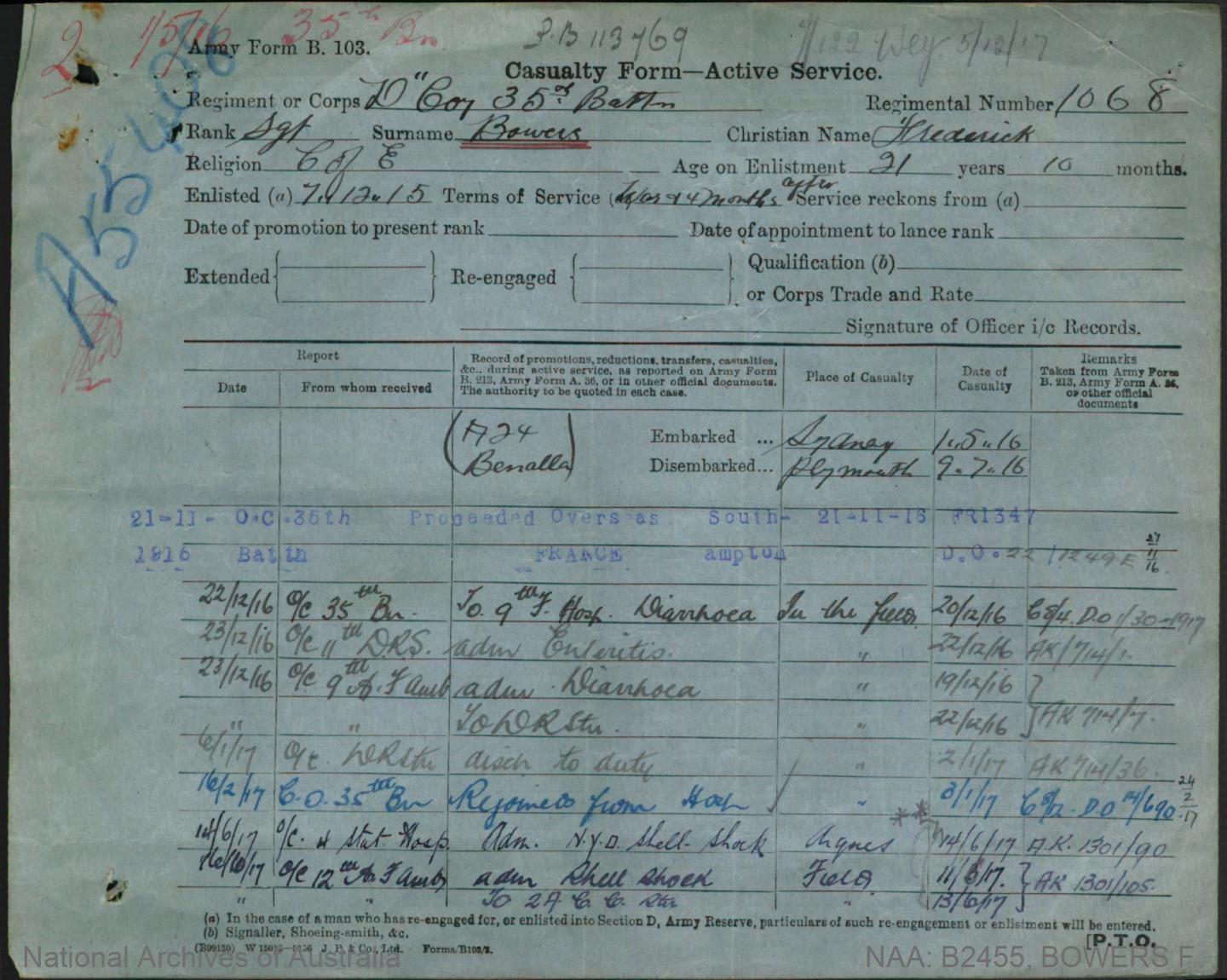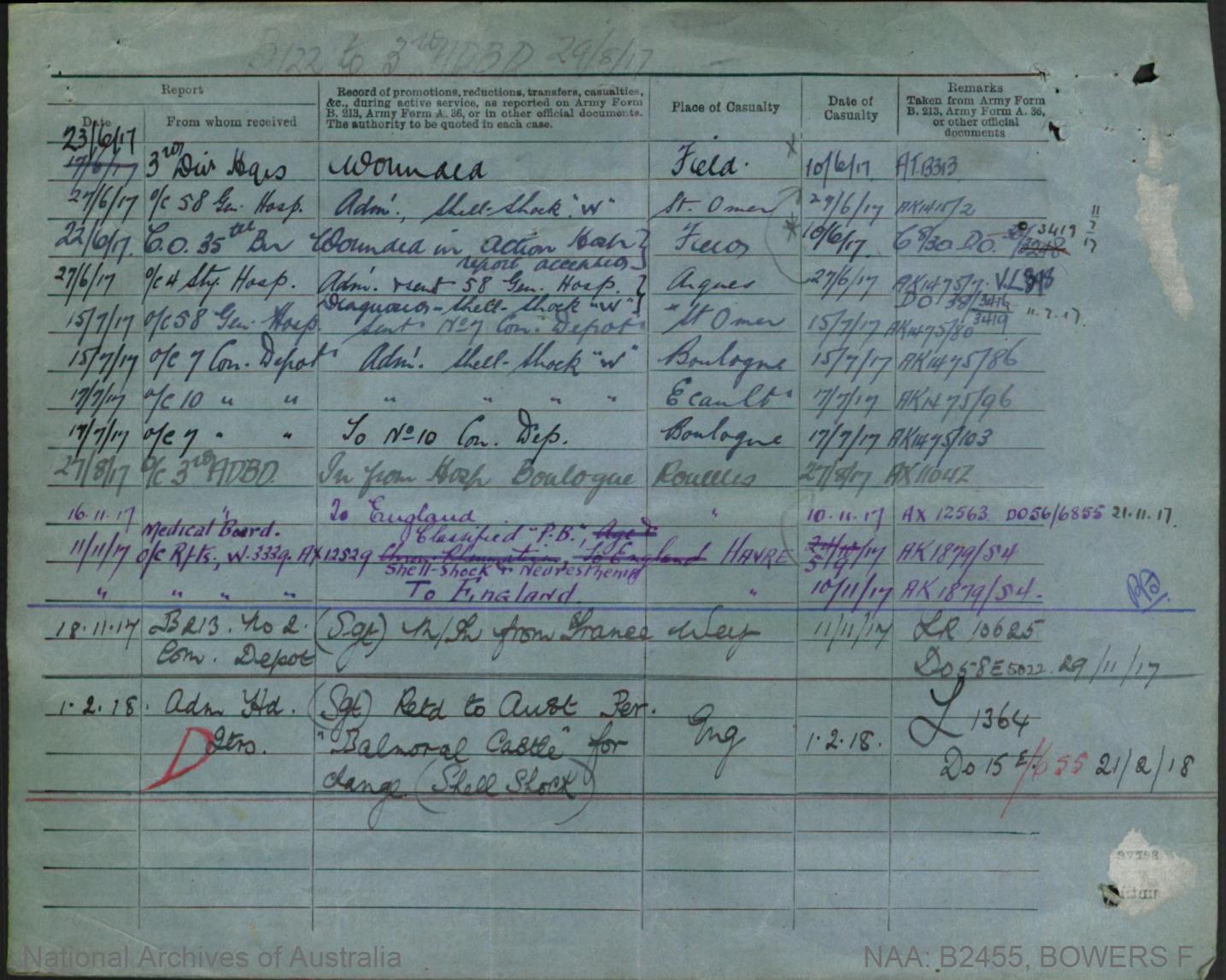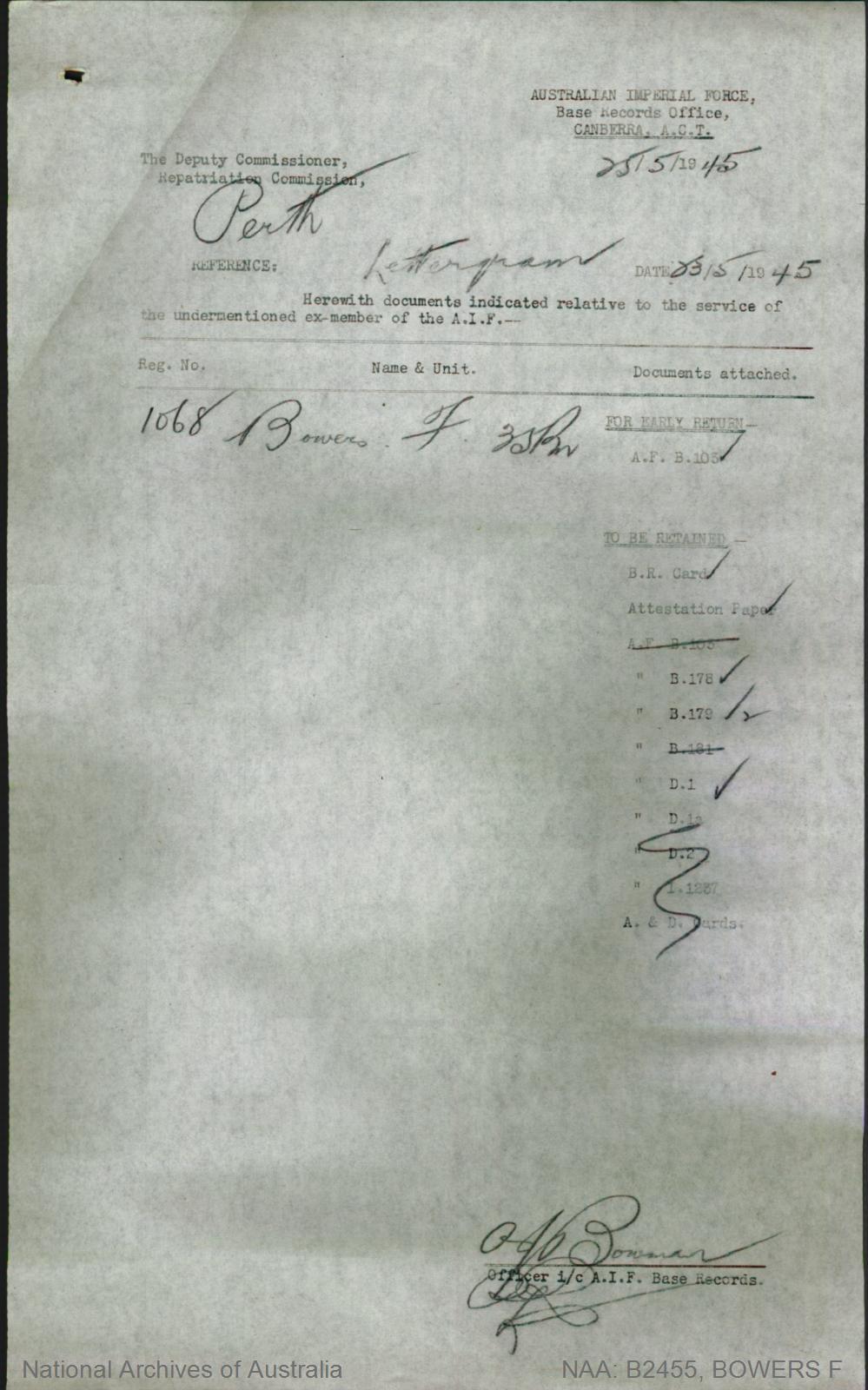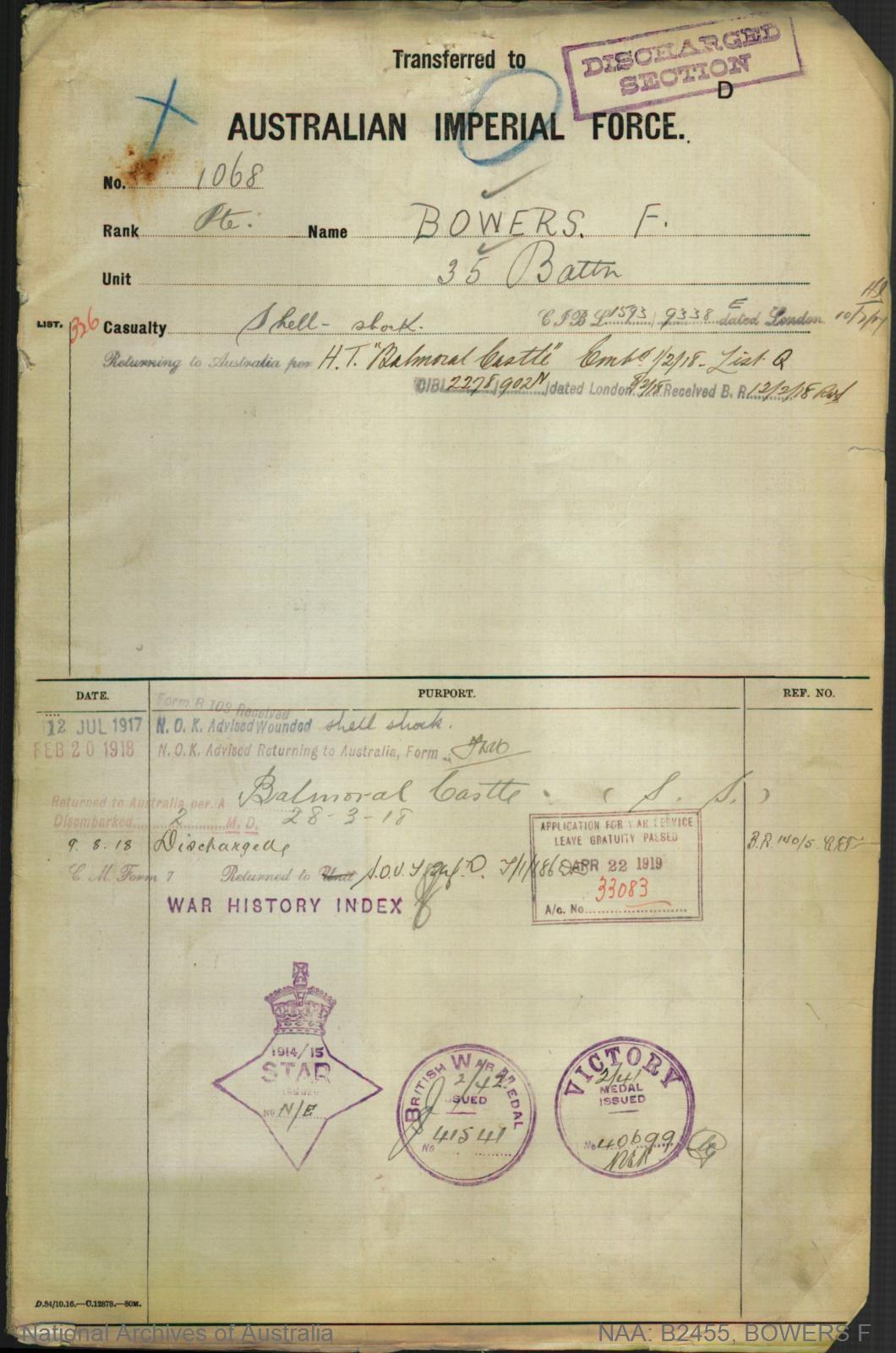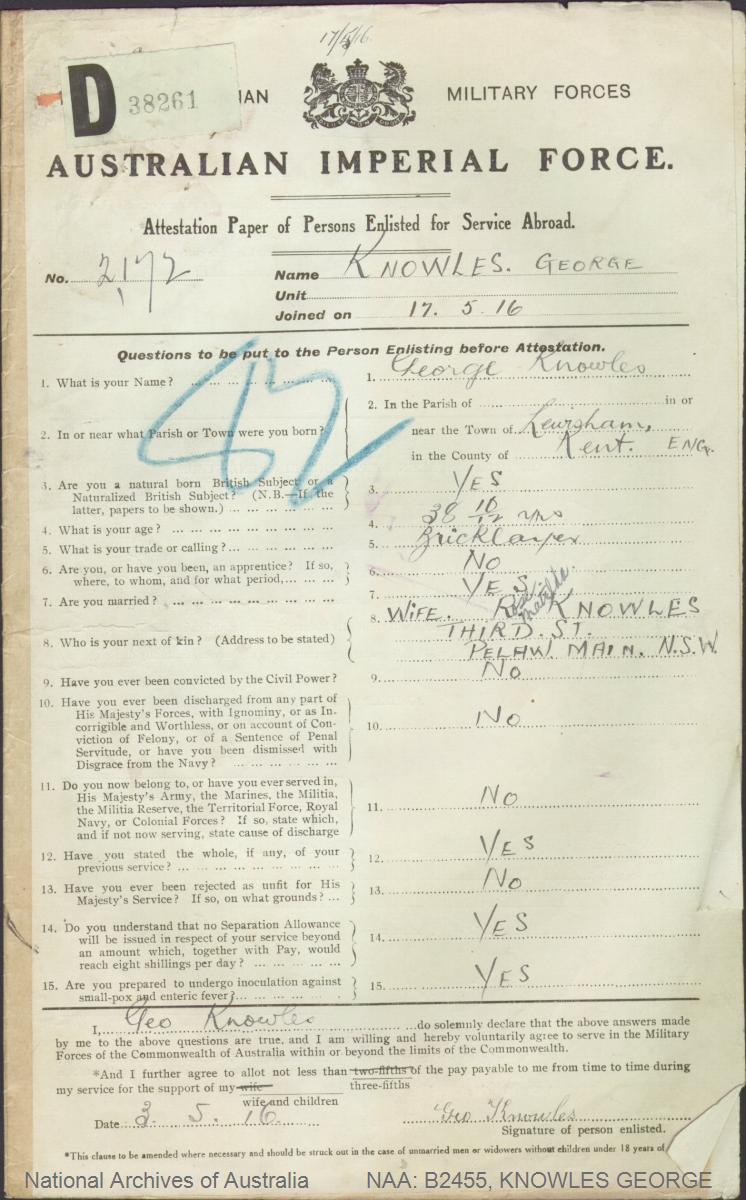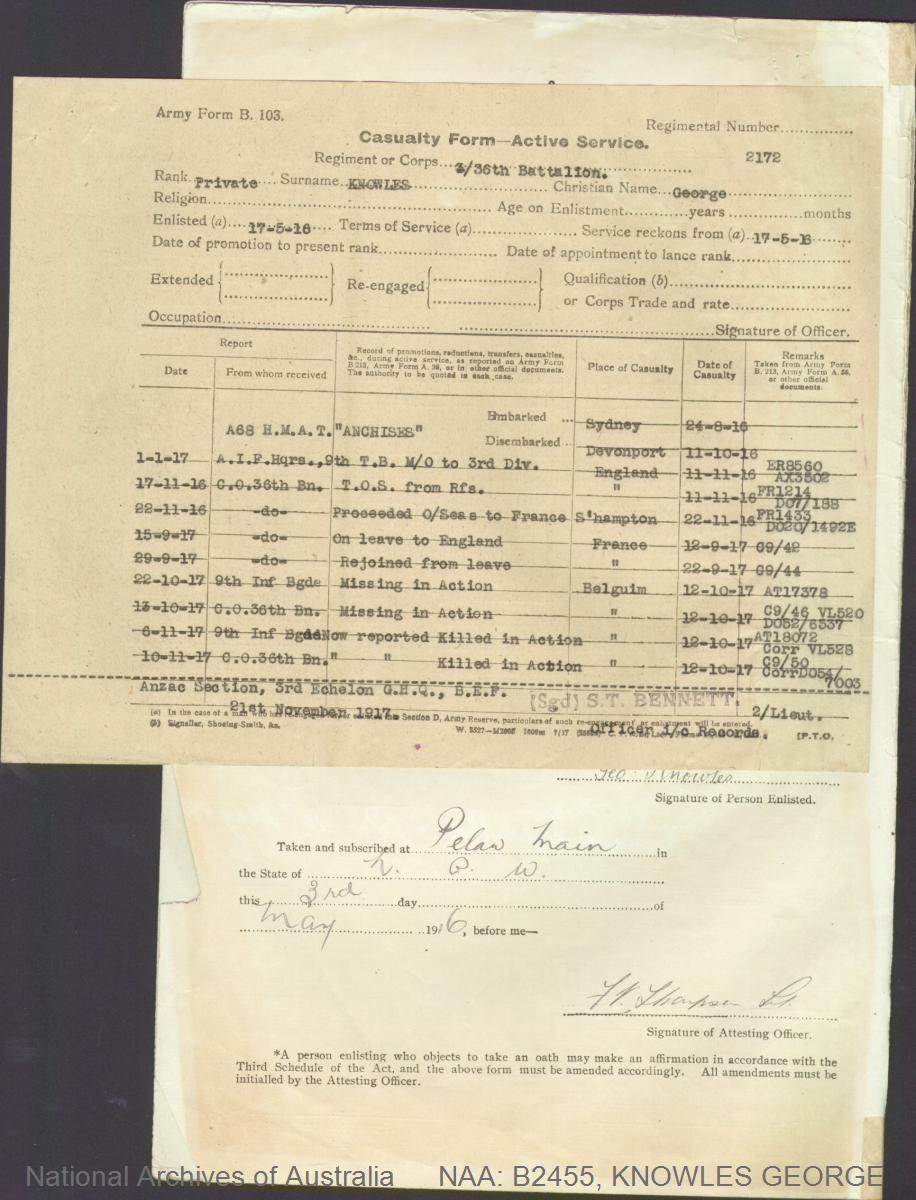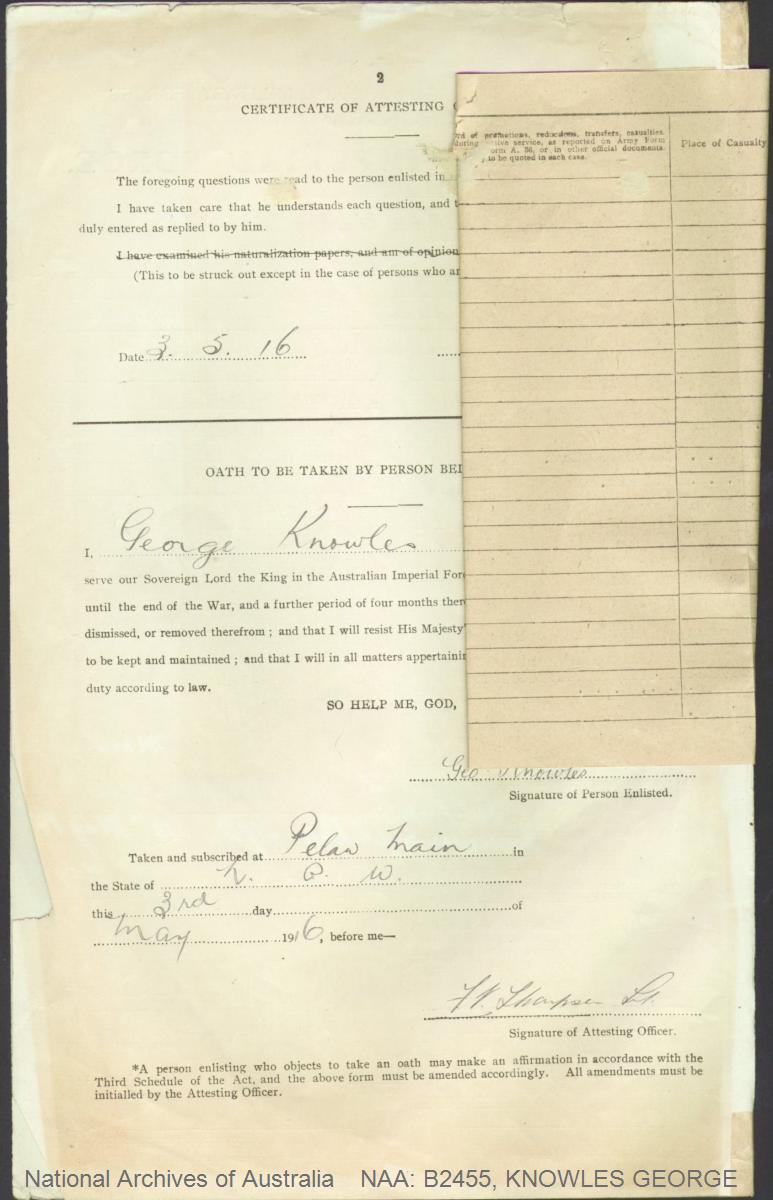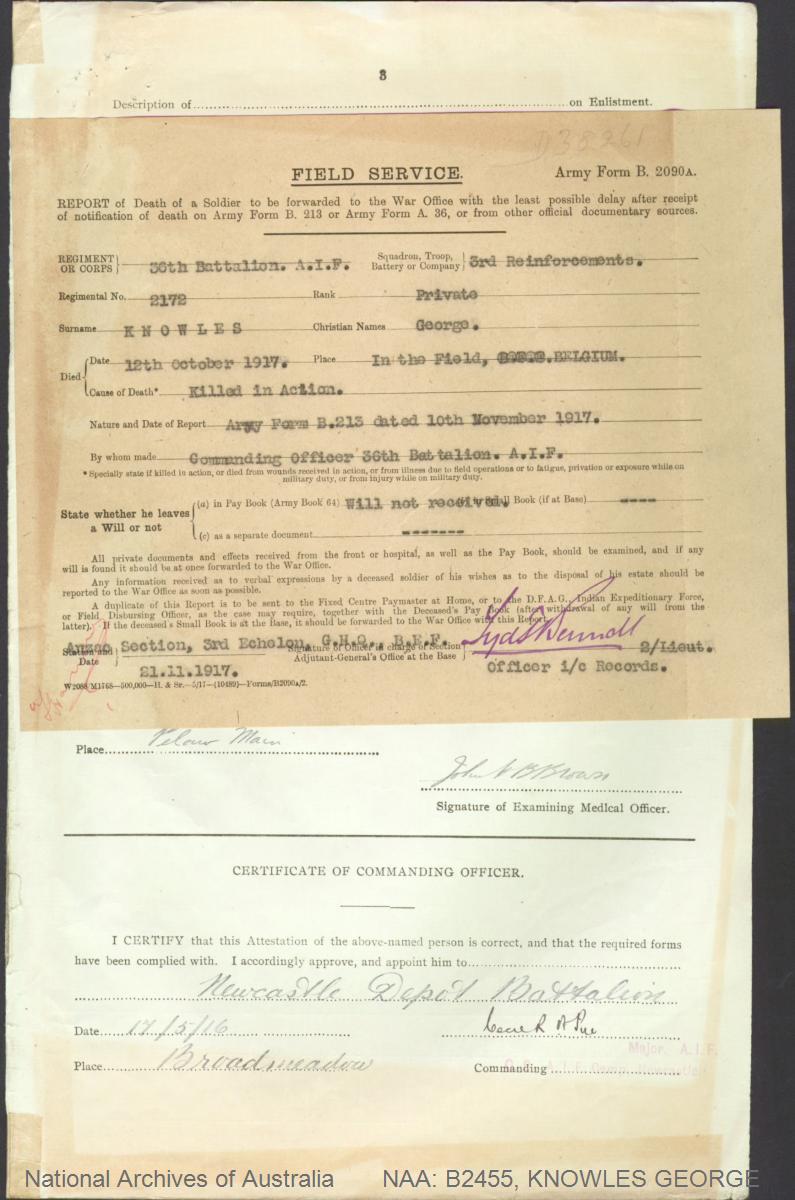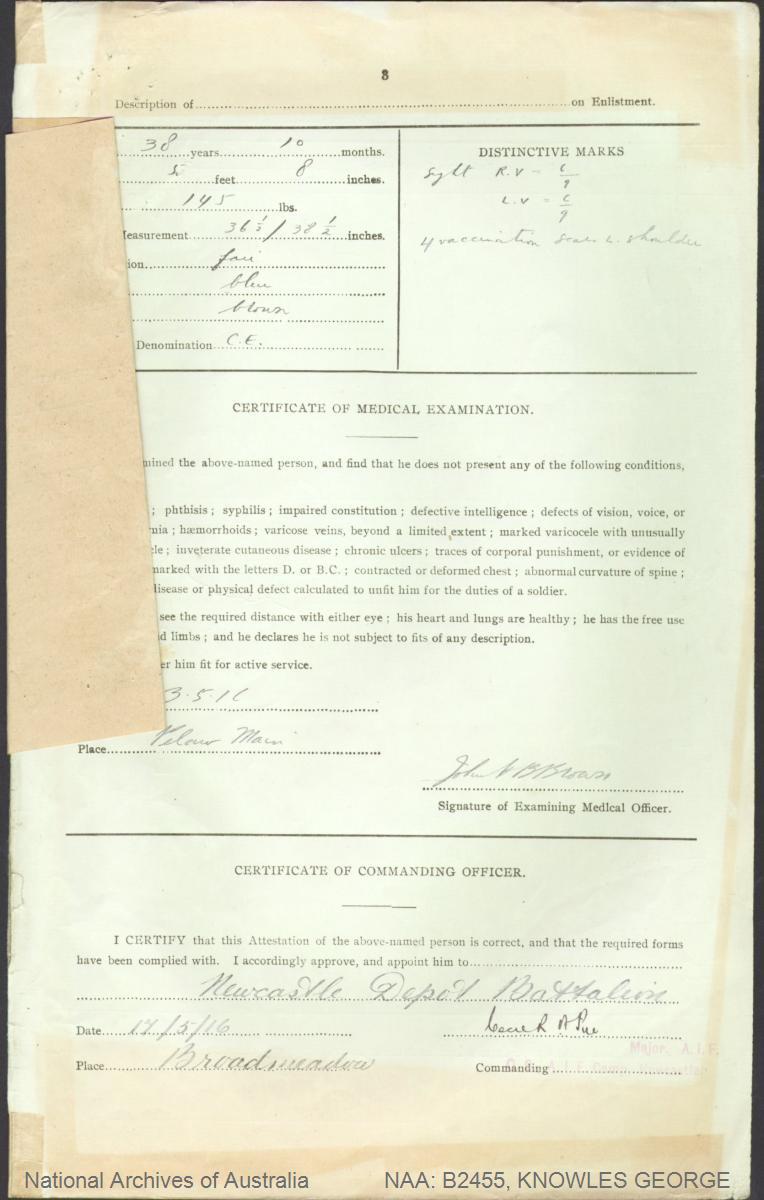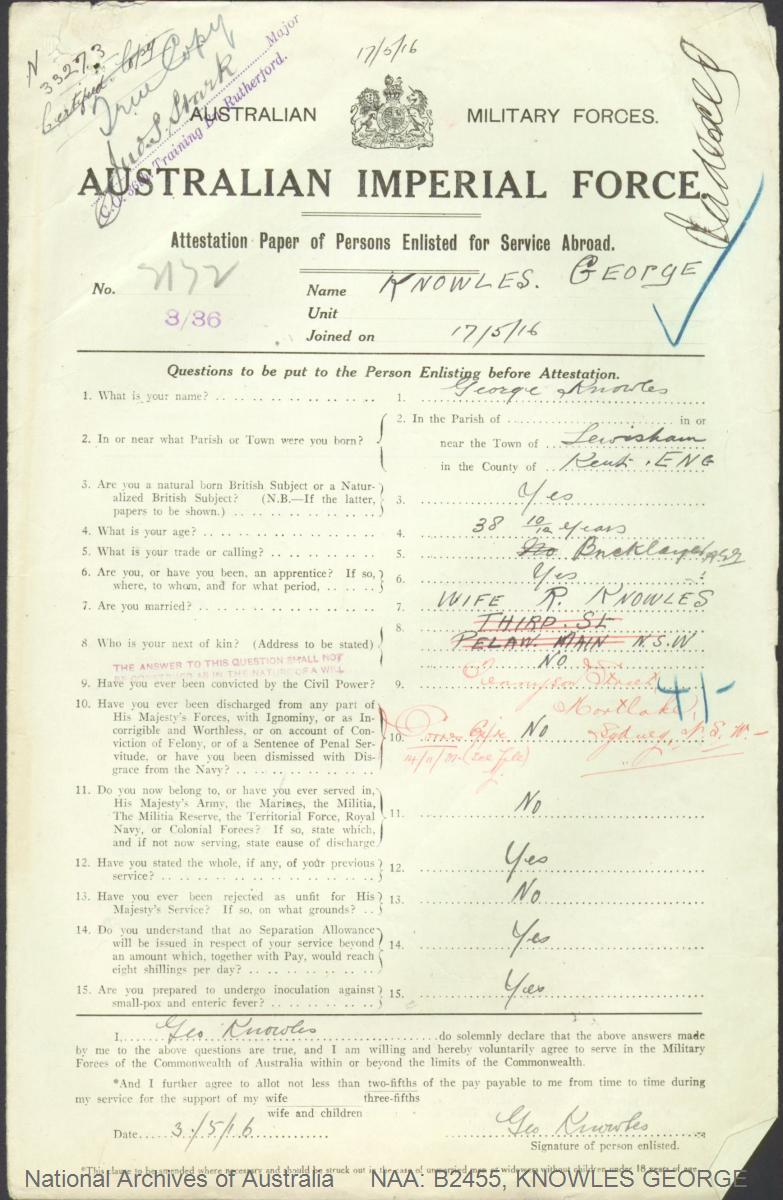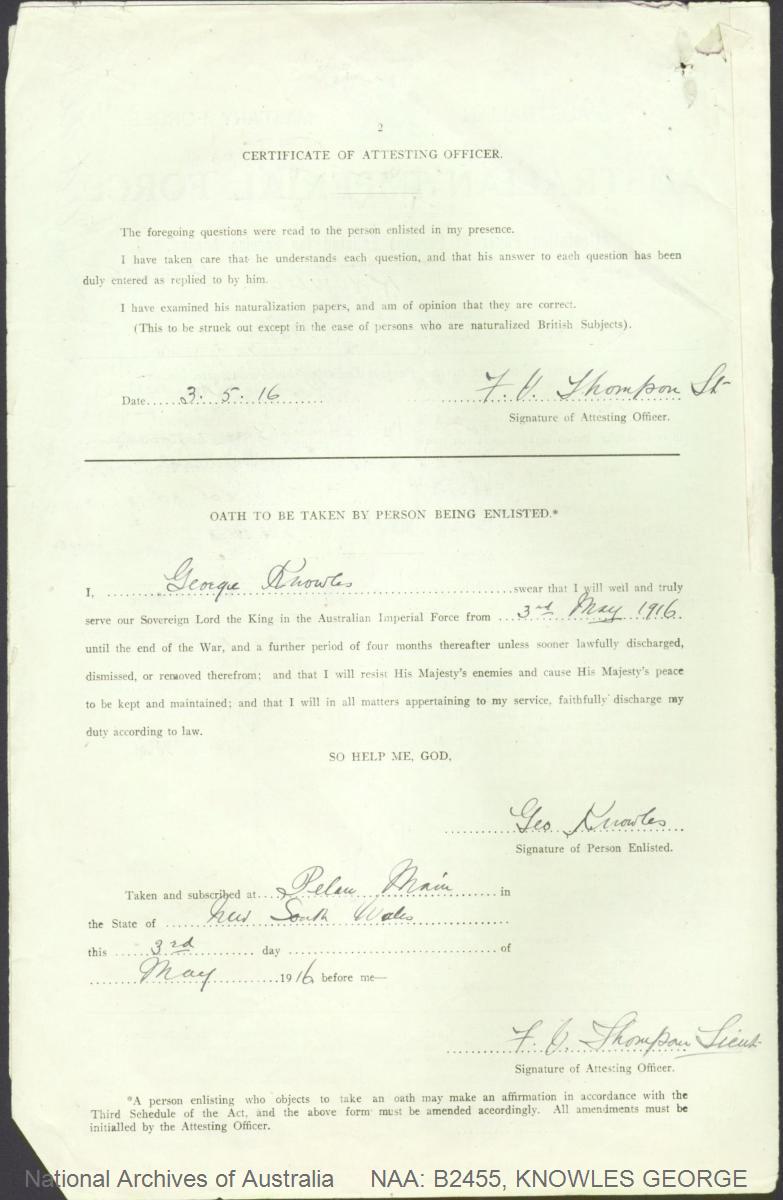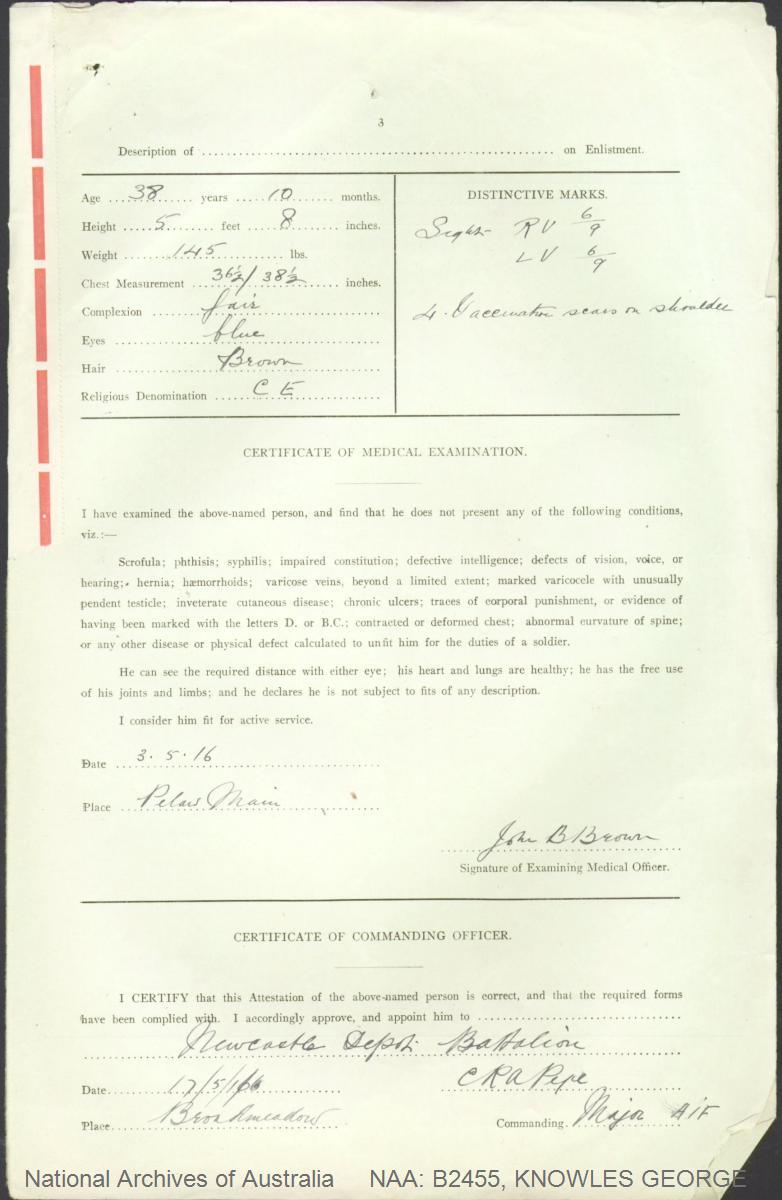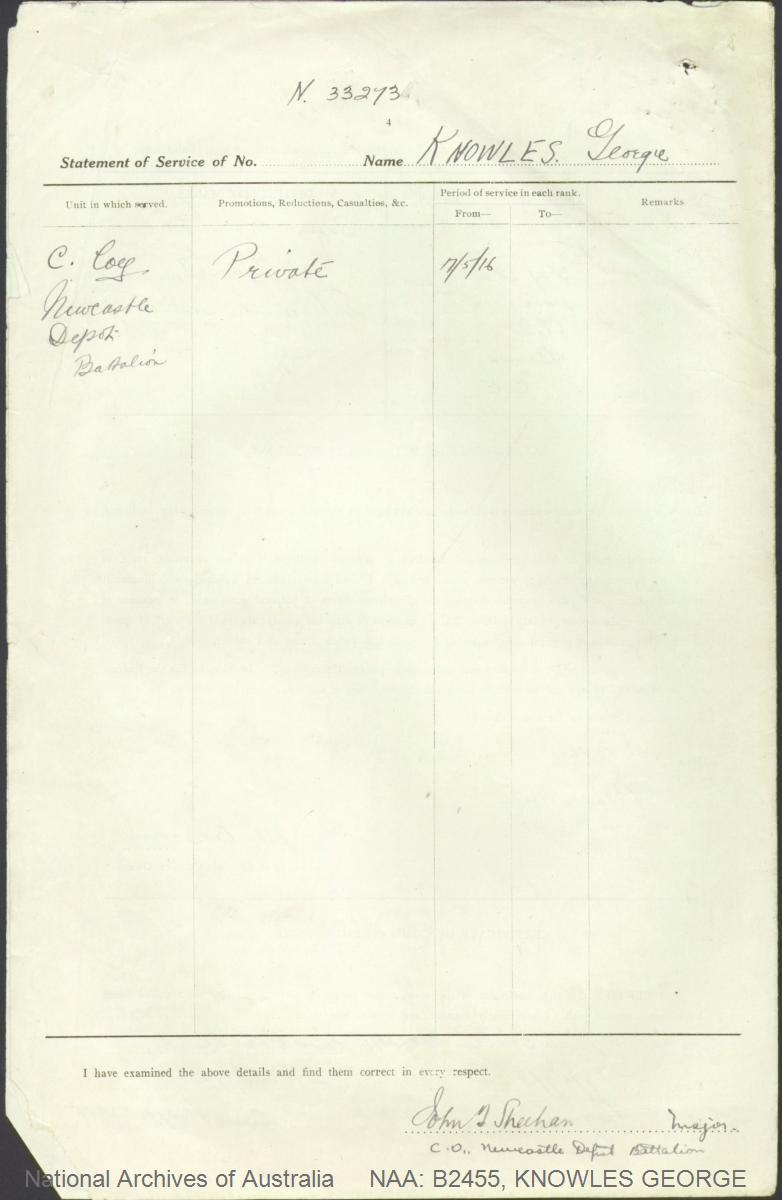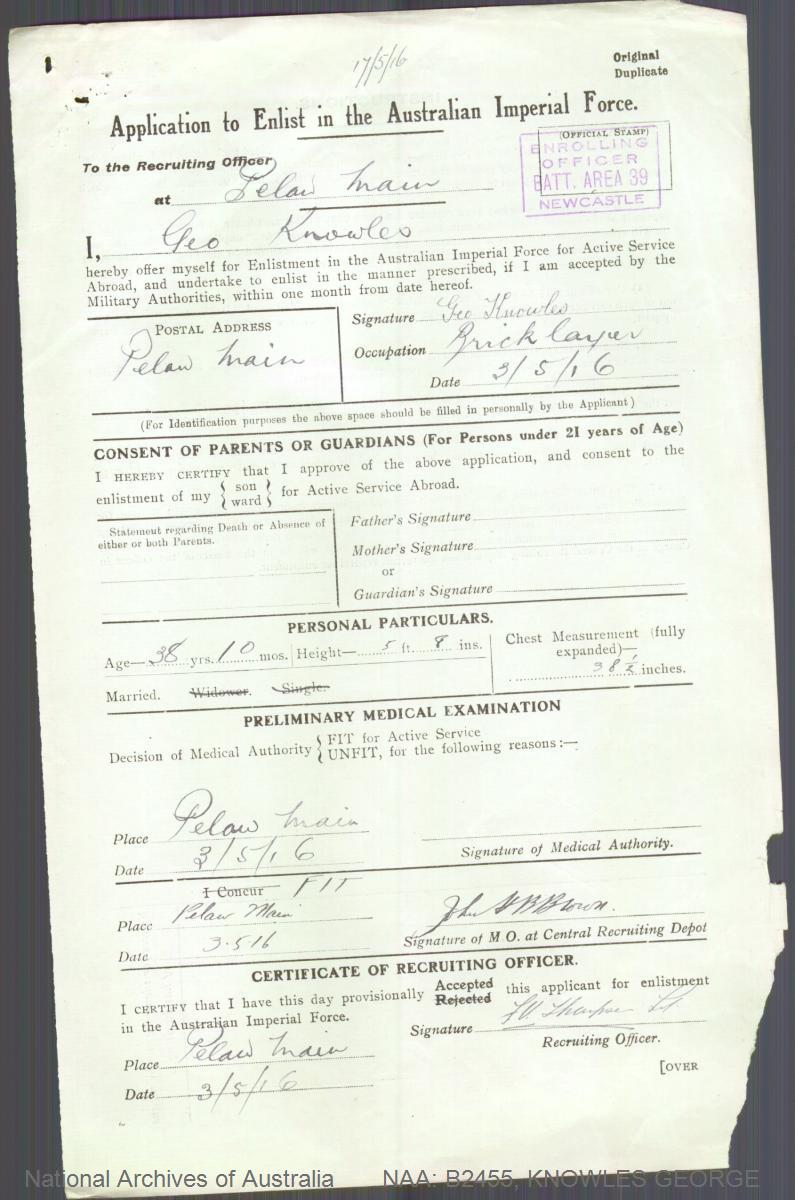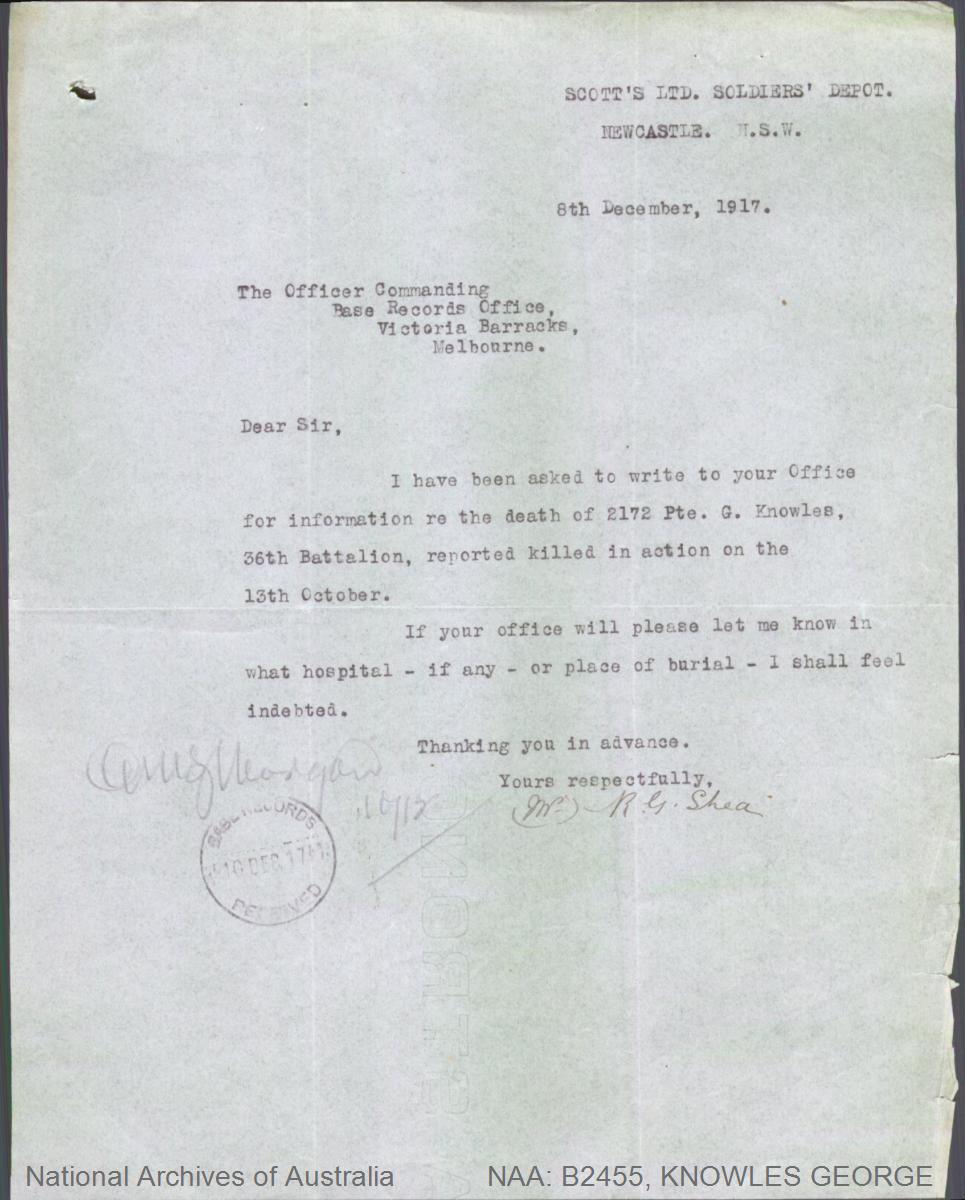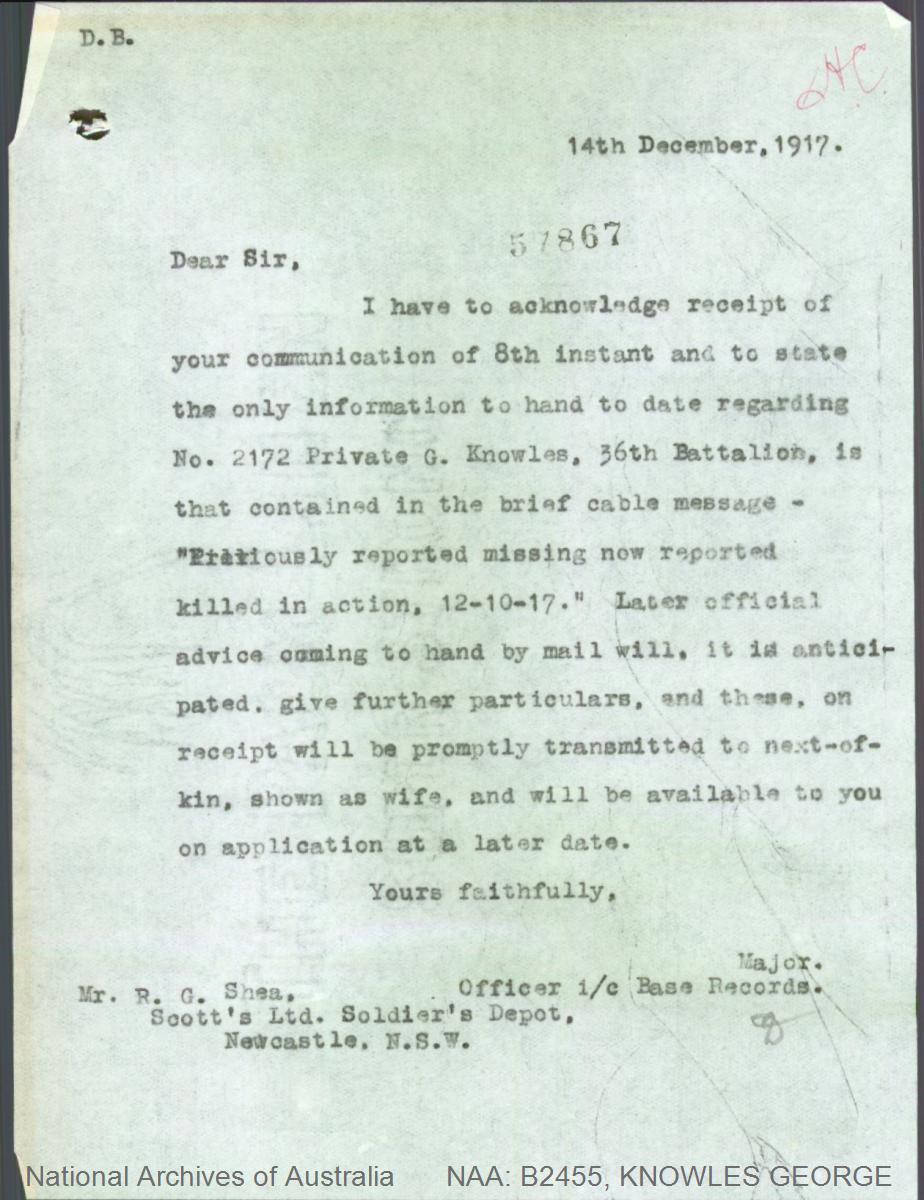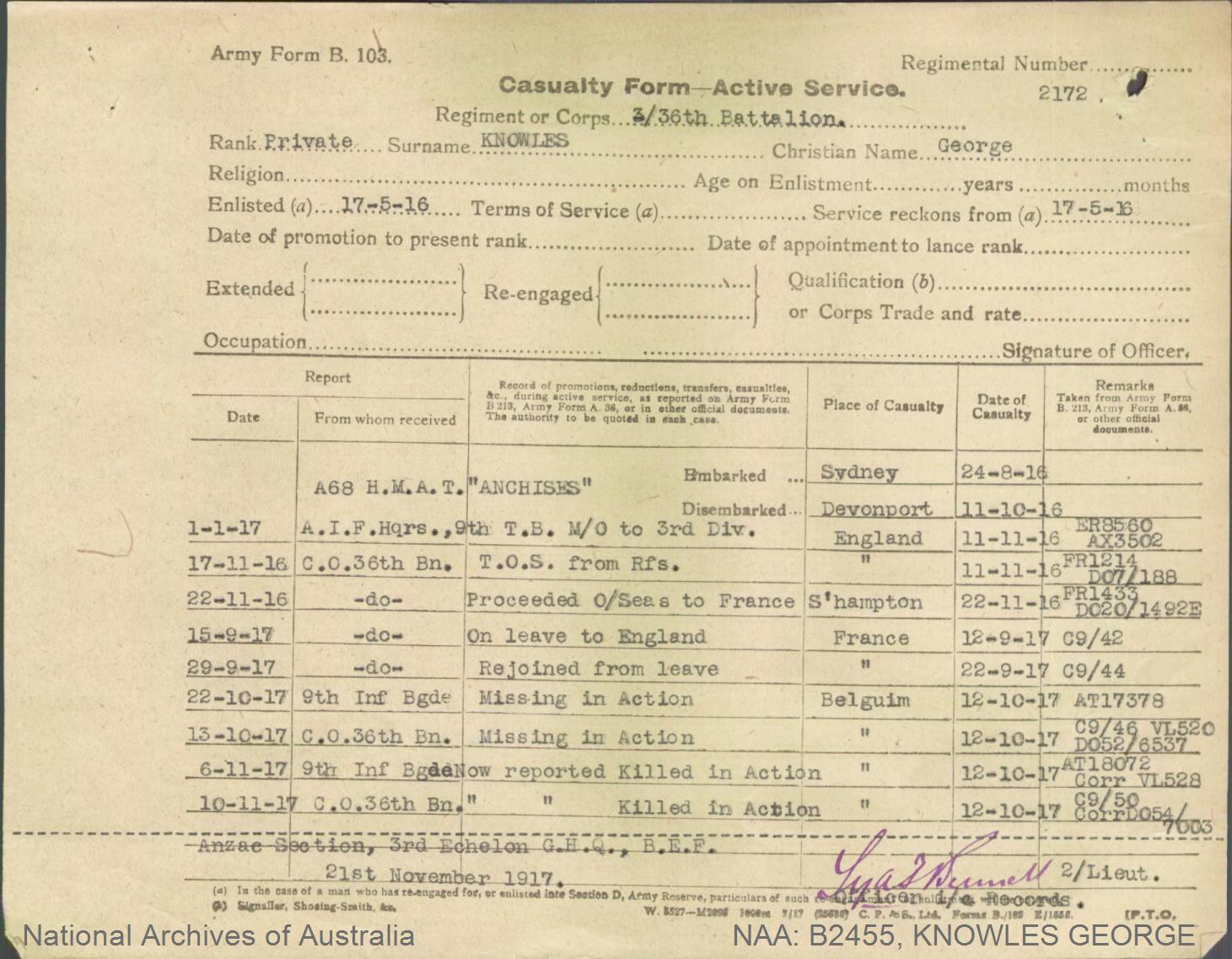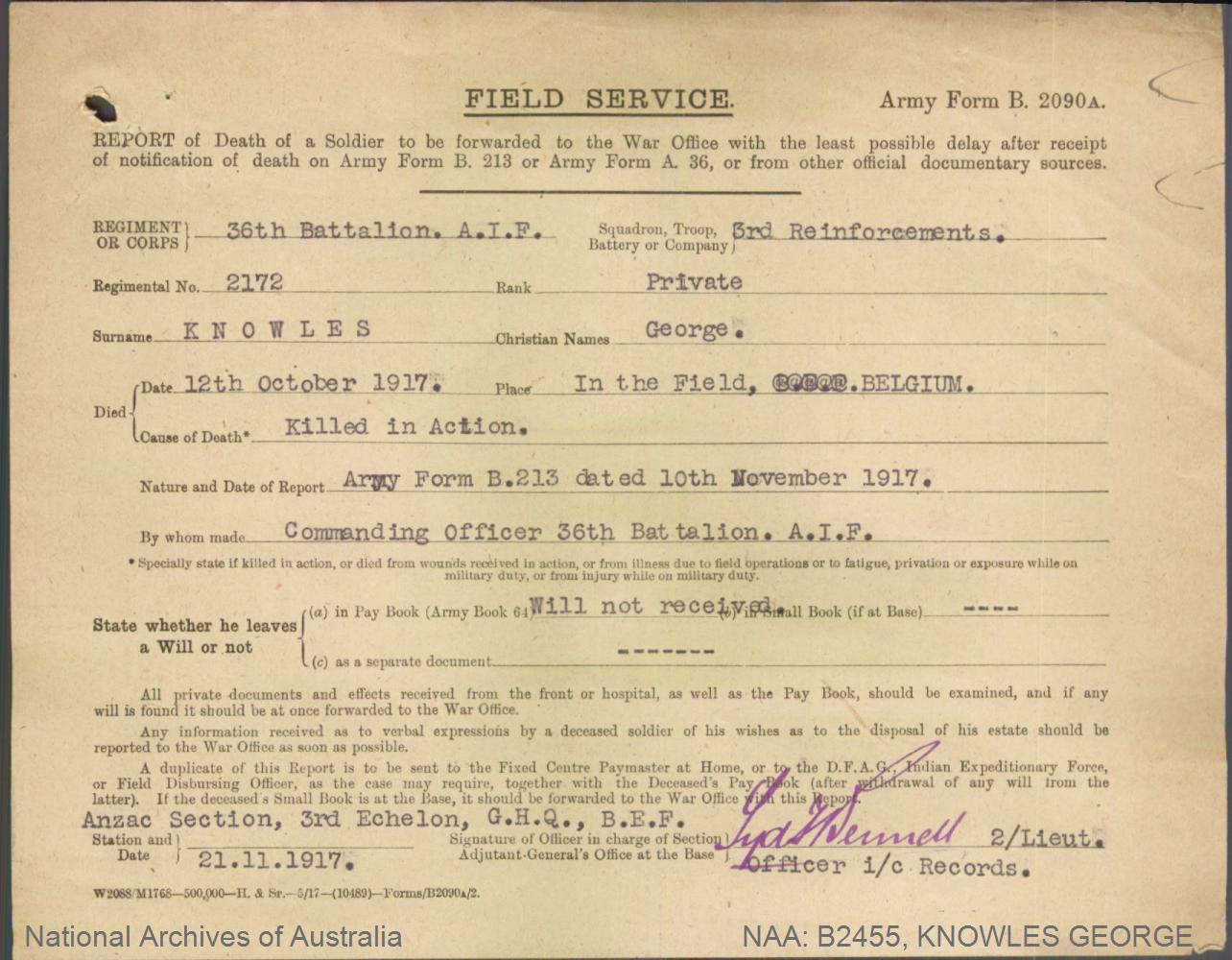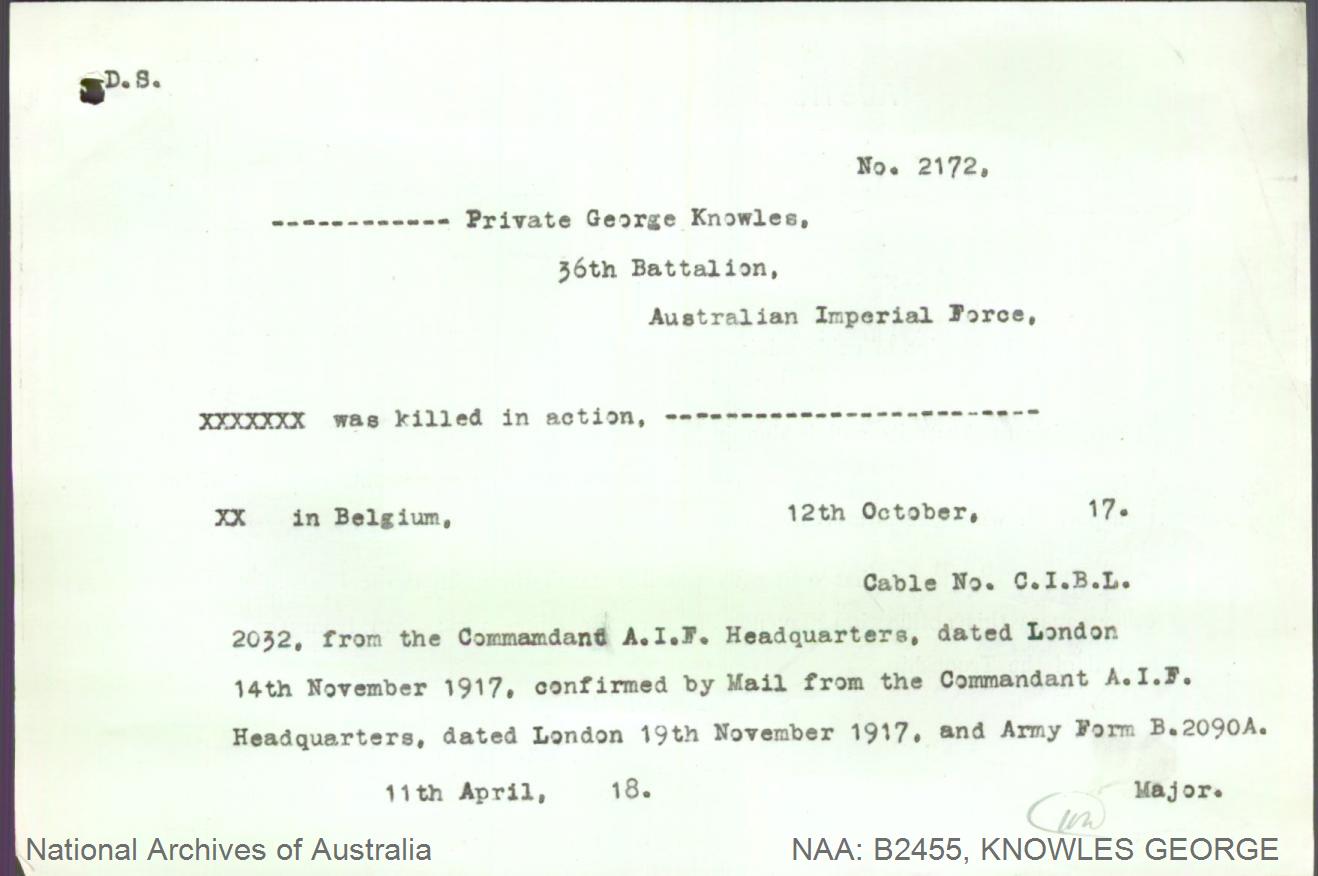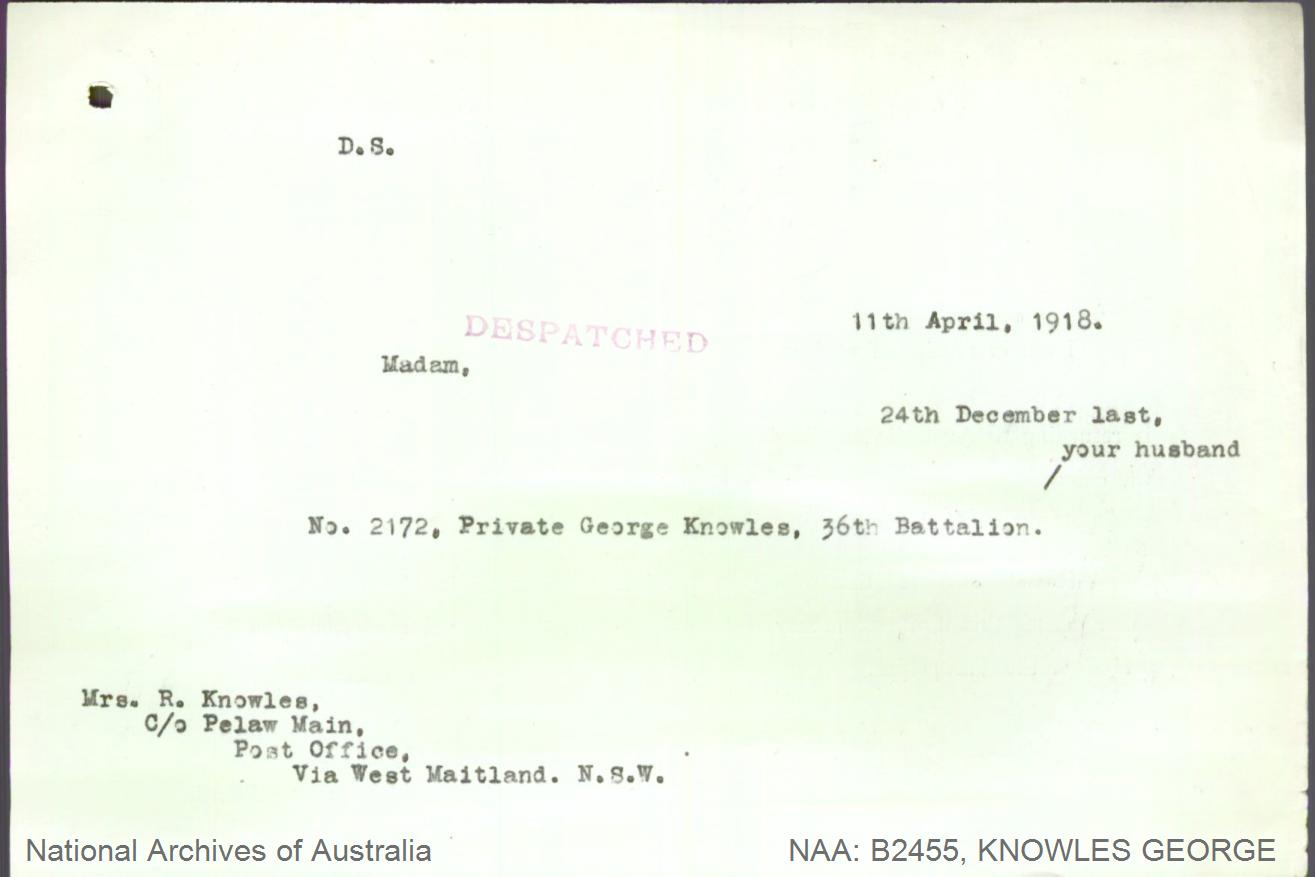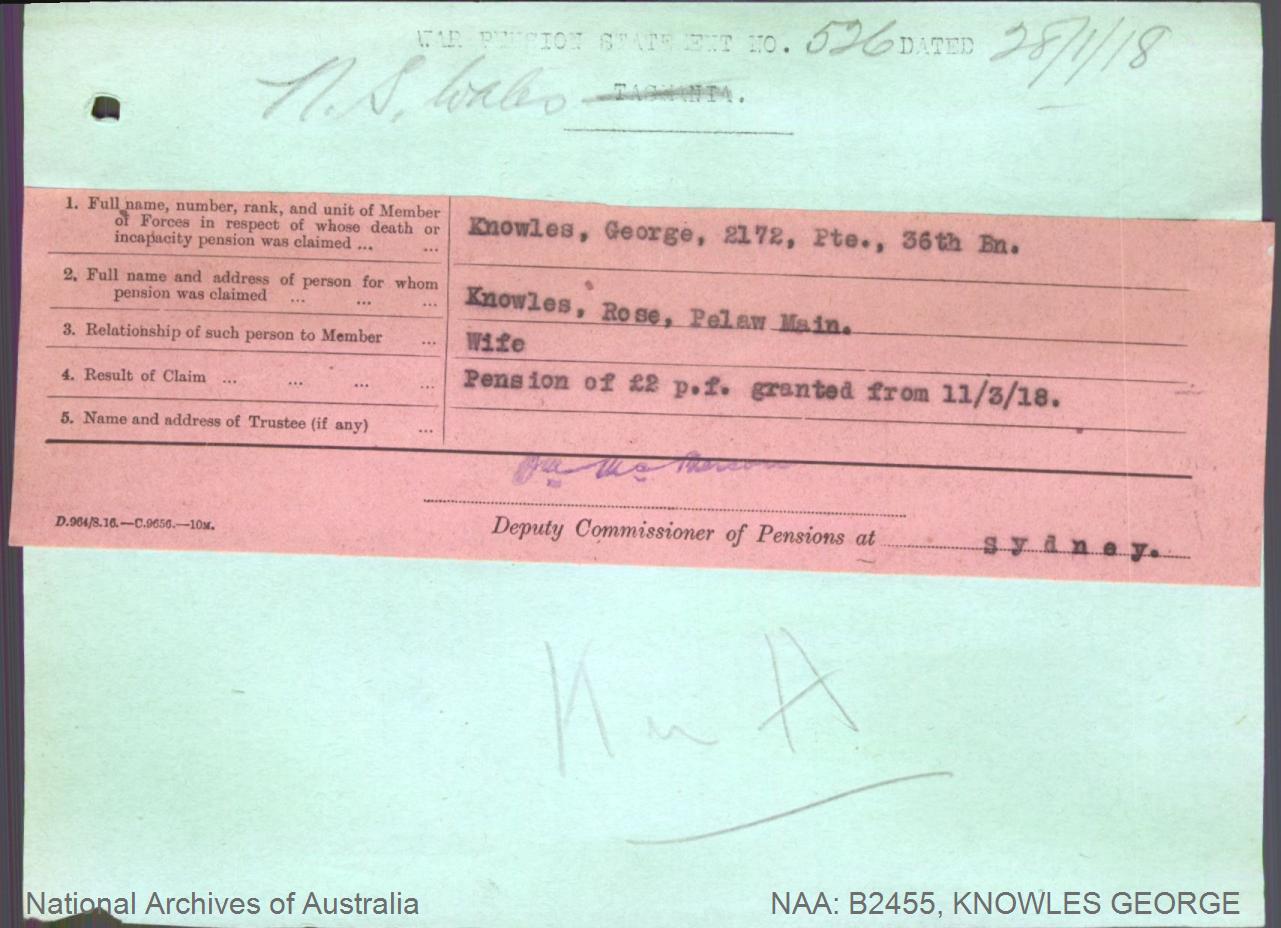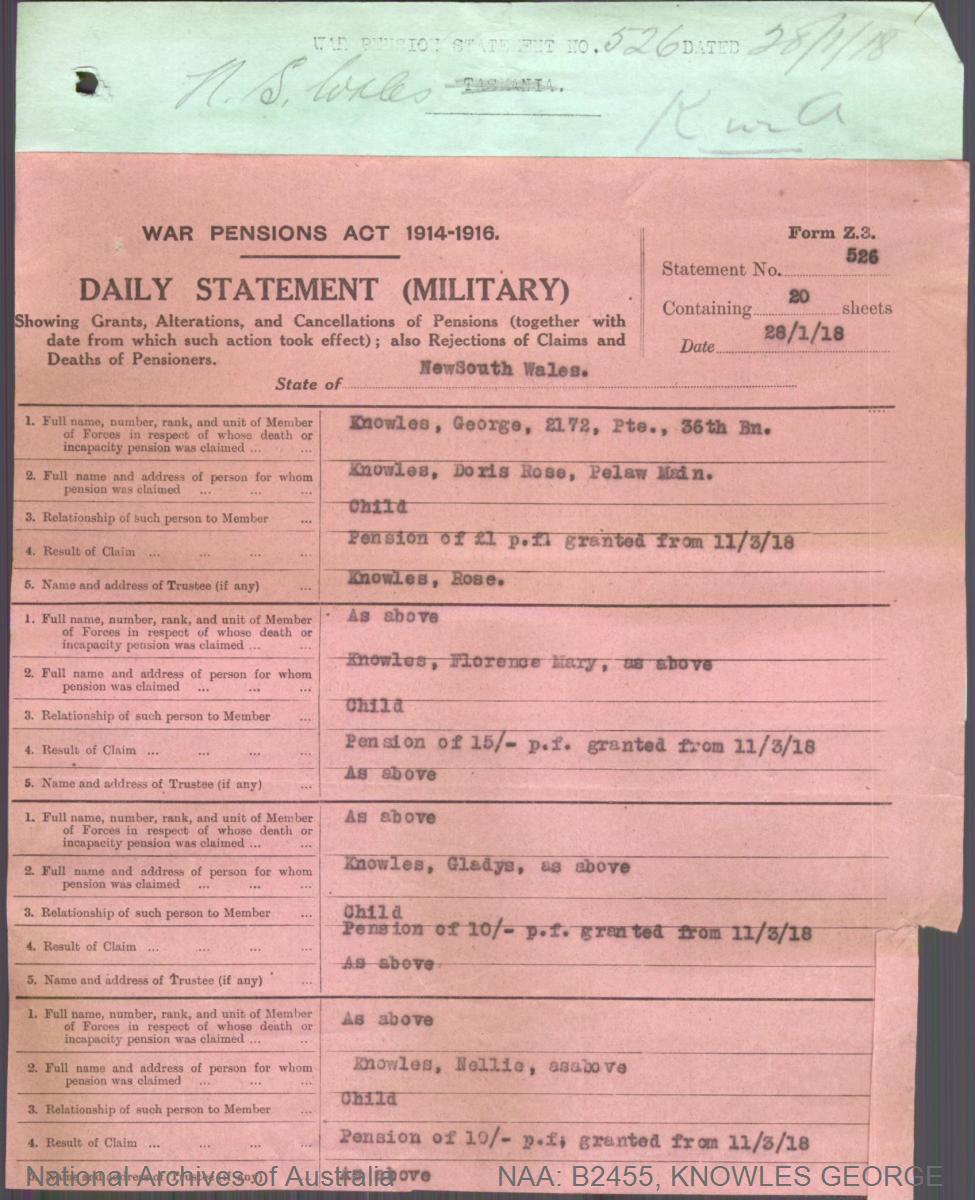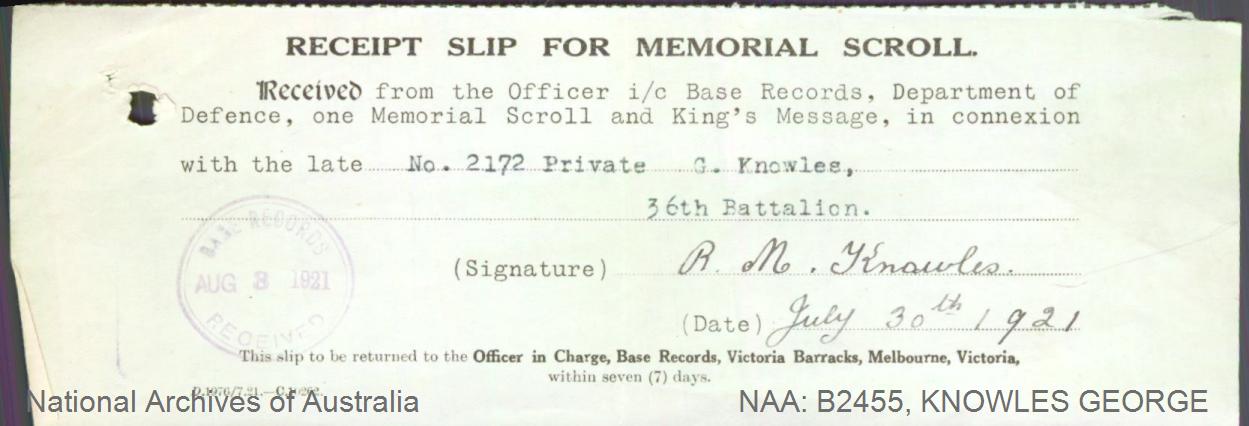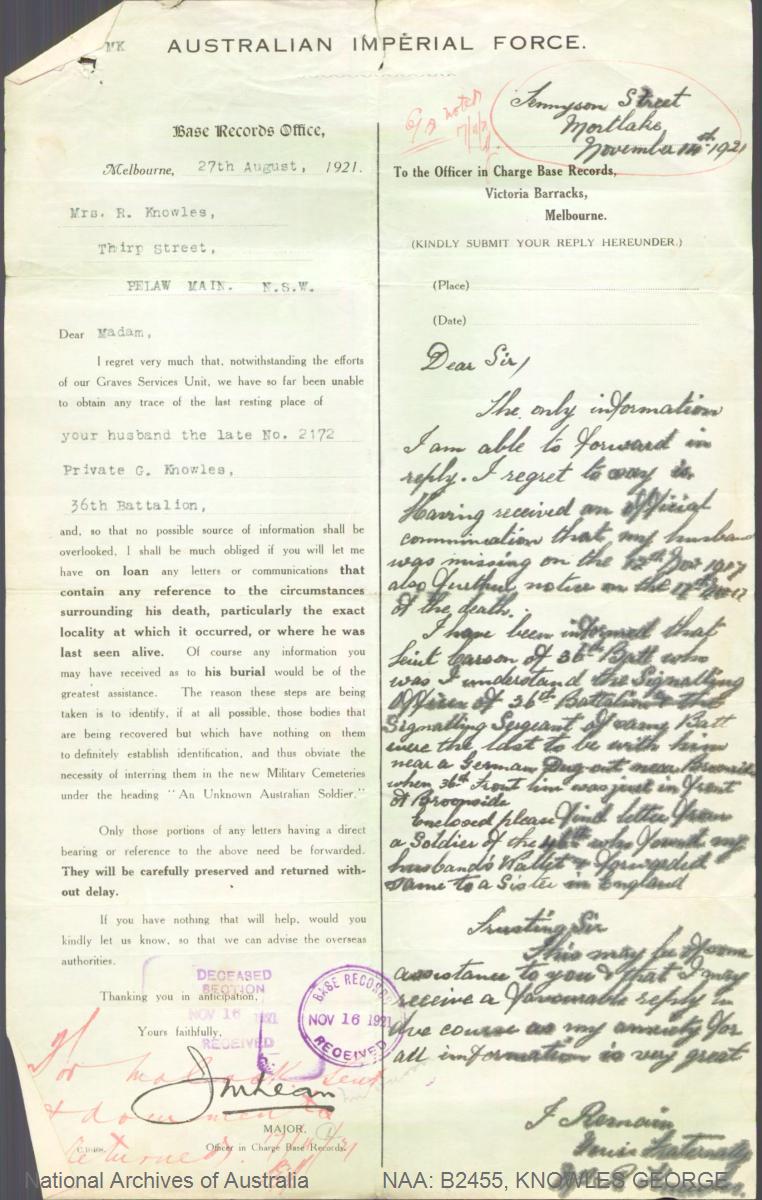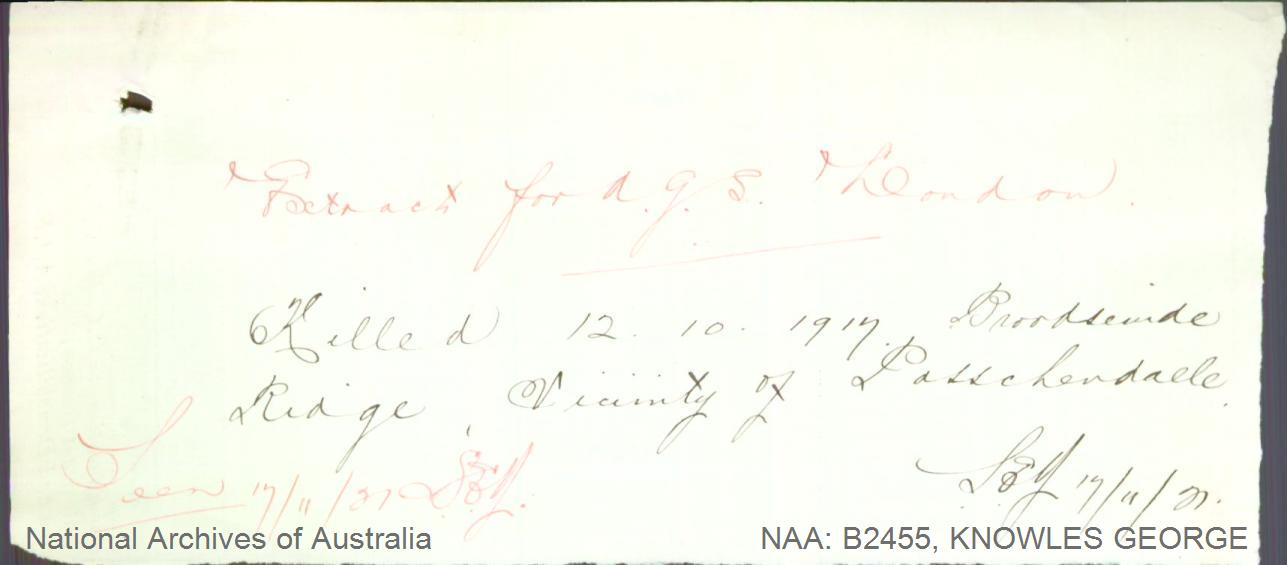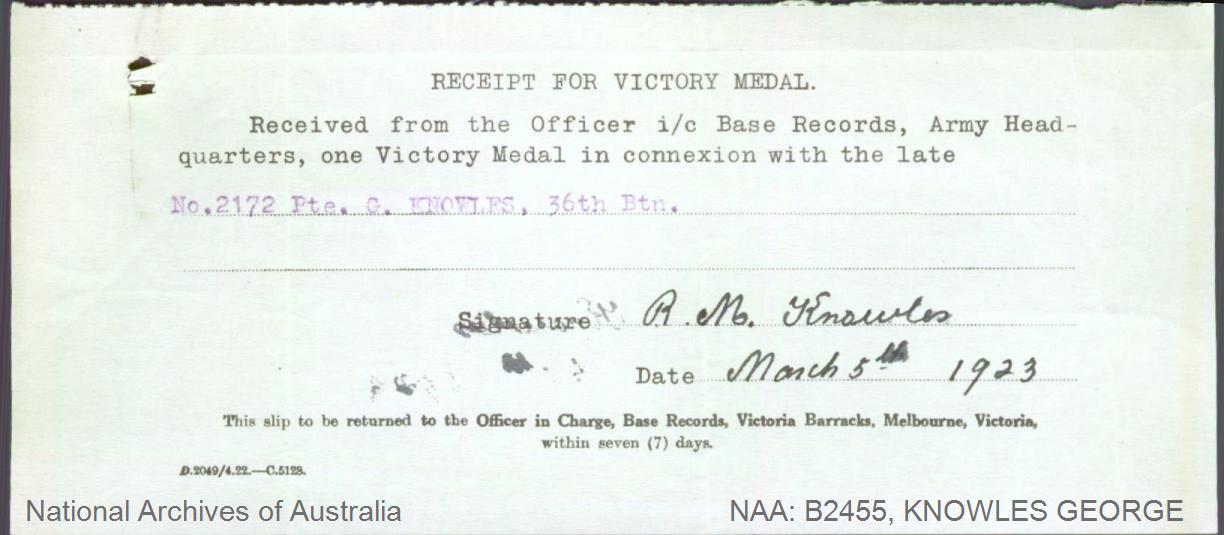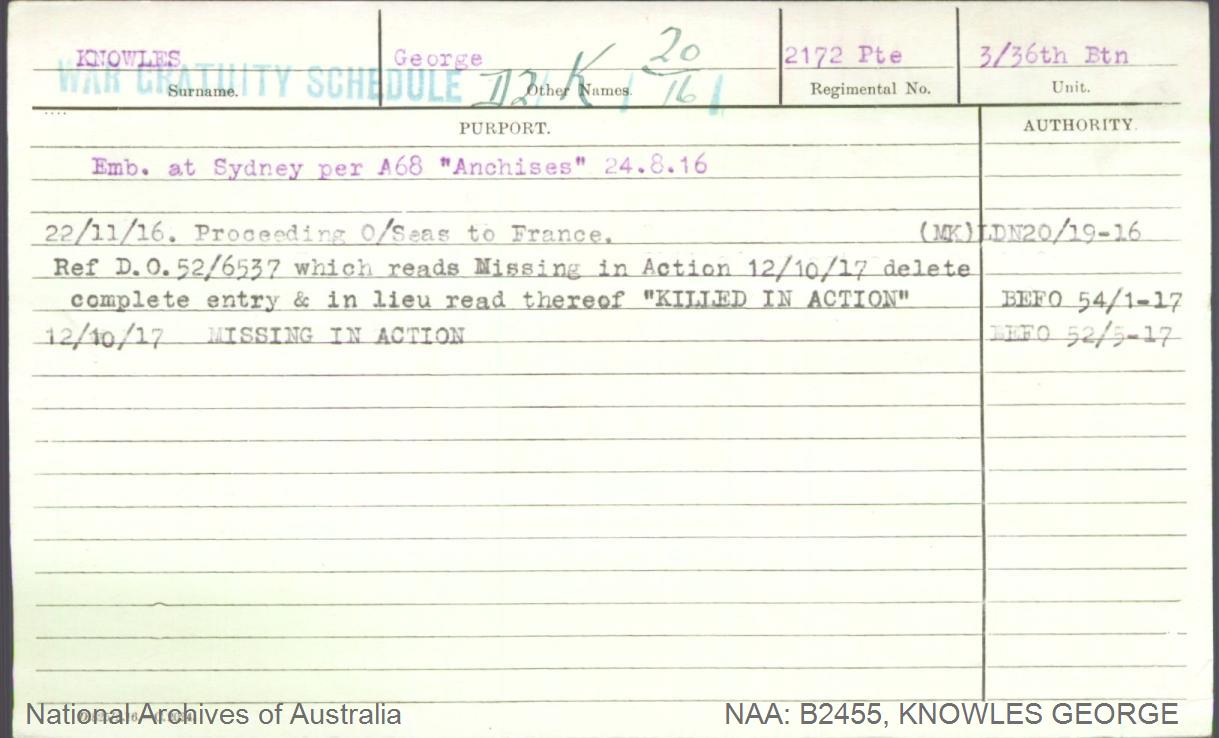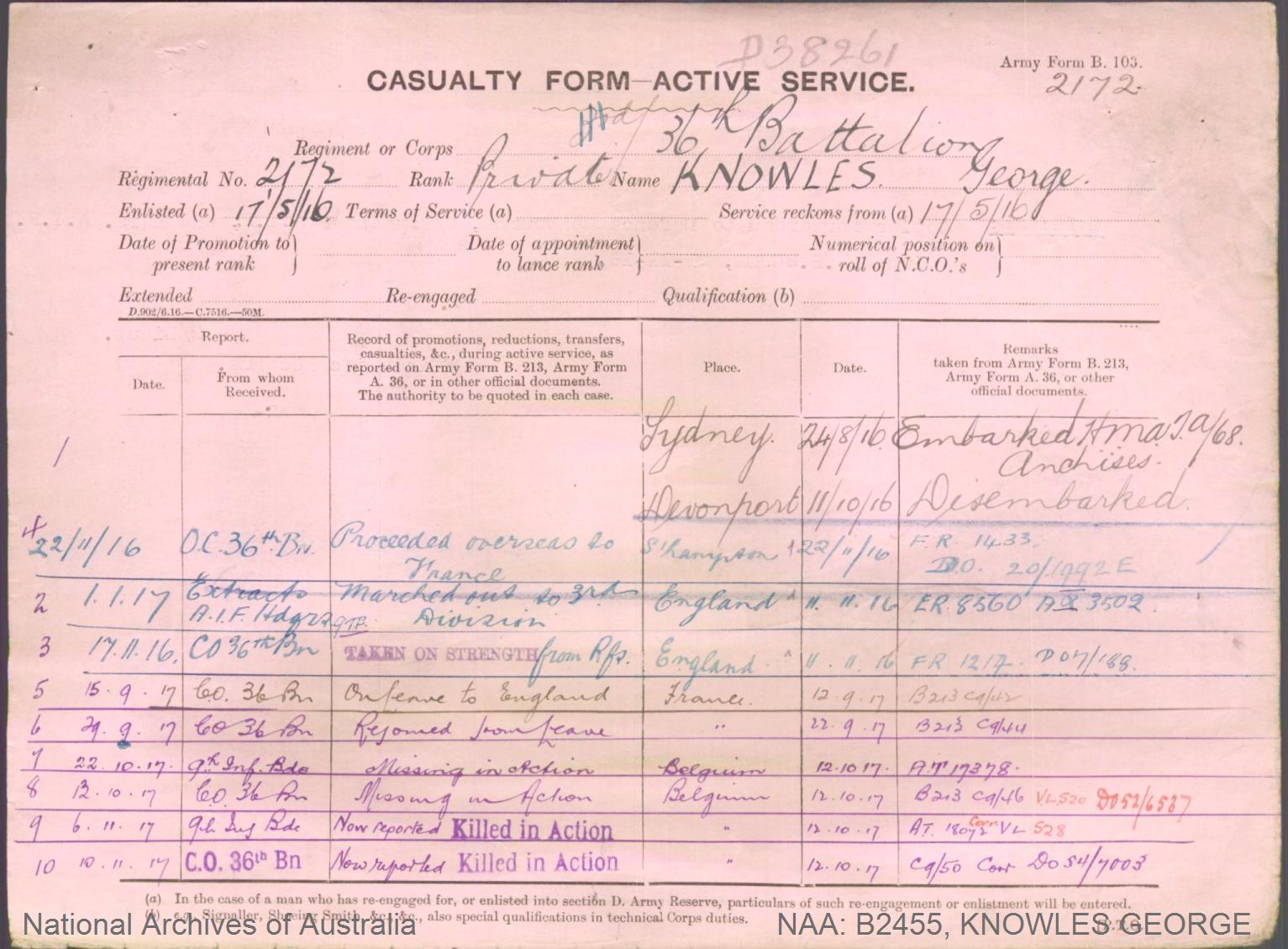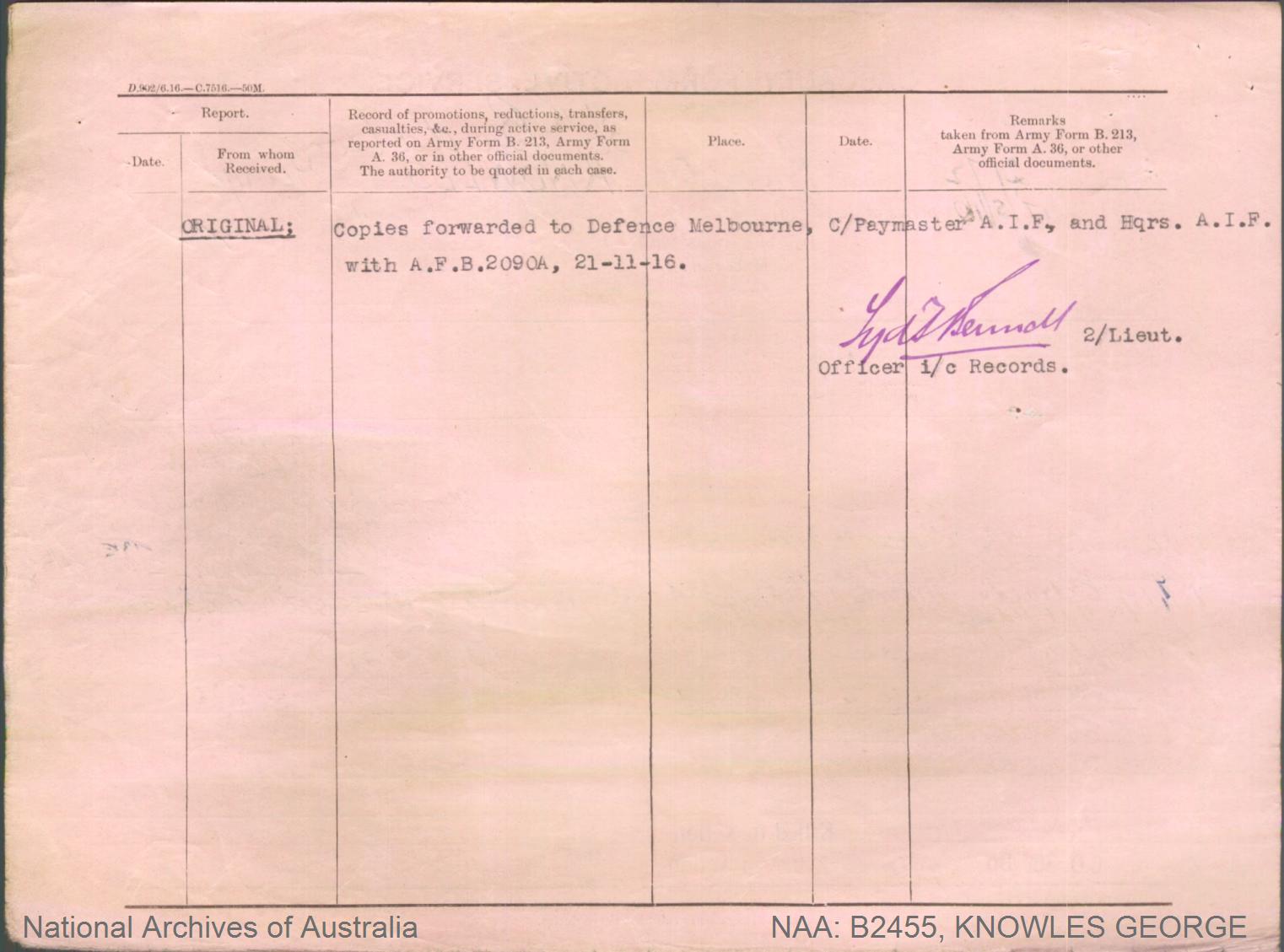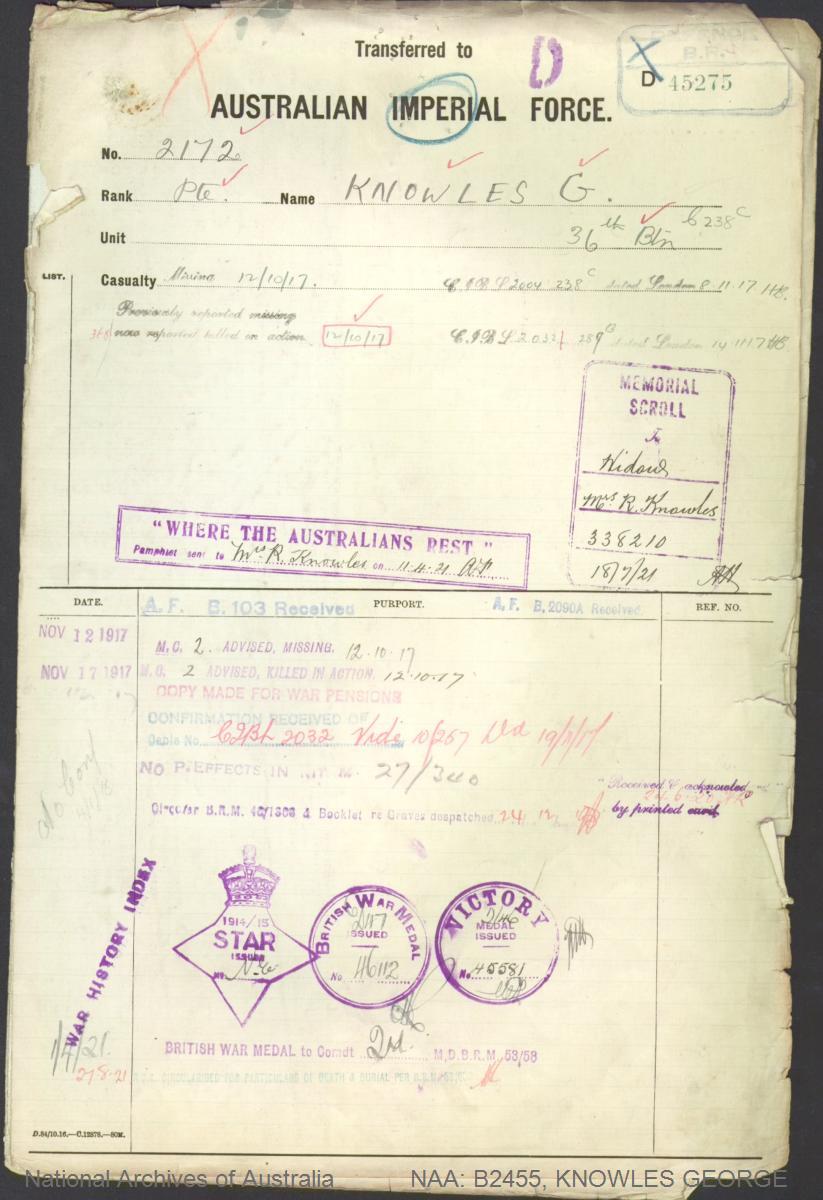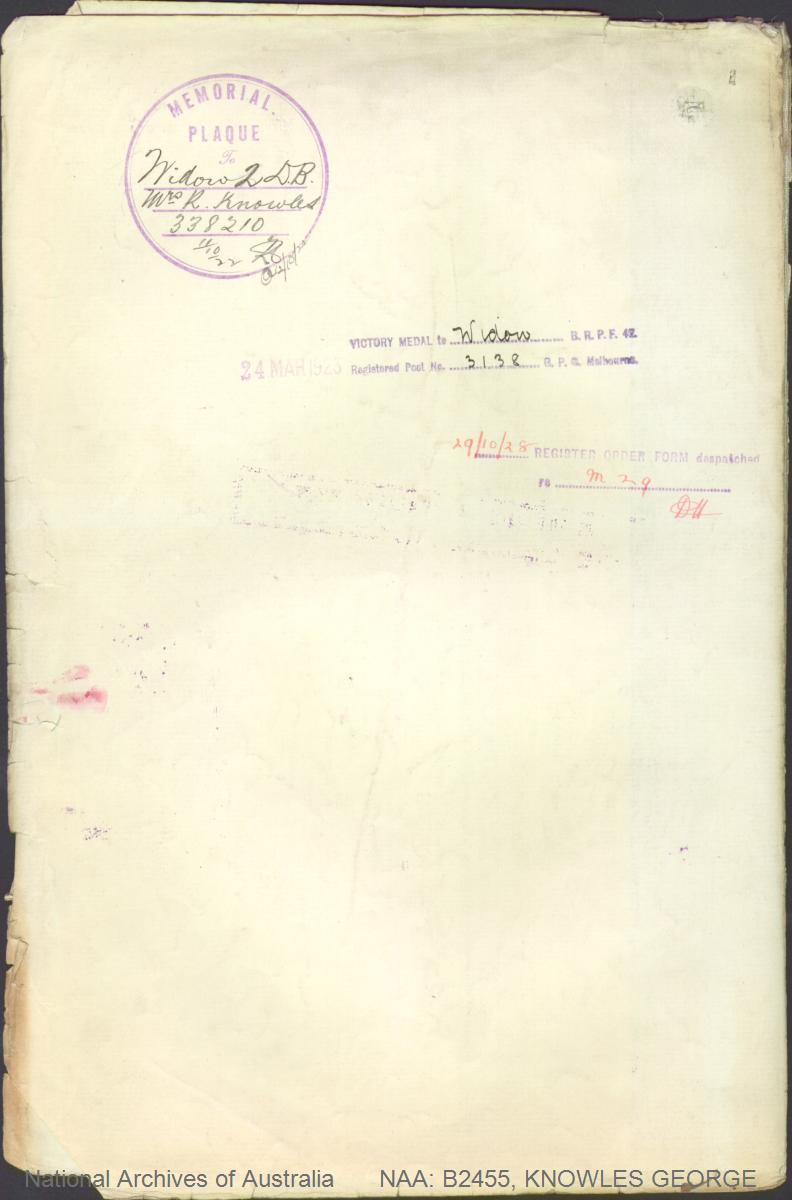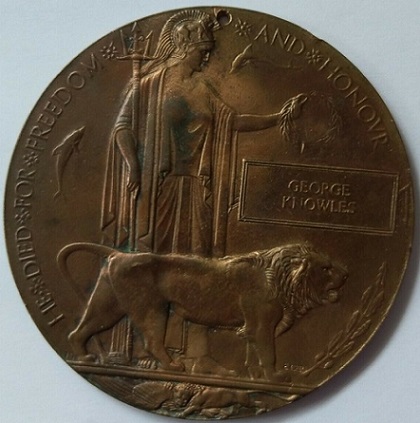
36th BATTALION AIF
Private: 2172 George KNOWLES
Born: September 1878. Forest Hill, Catford, Kent, England.
Married: December 1903. Catford, Kent, England.
Wife: Rose Matilda Knowles. nee: Fletcher/Futcher. (31/05/1878-08/10/1971) Died at Ashbury N.S.W. Australia.
Died: 12th October 1917. Killed in Action. Passchendaele, Belgium
Father: James Knowles. (1843-1917)
Mother: Mary Knowles. nee: Russell. (1850-1903)
INFORMATION

George Thomas Knowles enlisted with the Depot Company Newcastle on the 17 May 1916 at Pelaw Main, New South Wales and embarked from Sydney, New South Wales, on board HMAT A68 Anchises on 24 August 1916 and disembarked at Devonport, England on the 11th October 1916. George was marched in the the 9th Training Battalion at the Durrington Army Camp and proceeded overseas for France on the 22nd of January 1917.
22nd January 1917.
Armenteries. Enemy started light shelling at 10:00 am. At 2:00 pm locality 16 & 17 was heavily bombarded also locality 14 which ended in a box barrage being put on at 4:10 pm and an attack by the enemy from Pimple Salient. They entered our trenches but were only in 10 minutes. Our casualties 11 killed, 36 wounded, 4 missing. It is quite possible the 4 missing have been buried by Minnies.
Killed in Action; Lance Sergeant: 11 Francis Anthony ANGELINETTA. (A Company) - Corporal: 937 John Jack WILDRIDGE (A Company) - Private: 172 Charles SLOCOMBE. (A Company) Private: 183 Denis Alfred STINSON. (A Company)
Wounded in Action; Private: 33 Ralph Albert ASH.
Missing in Action; later confirmed Killed in Action; Private: 180 William Lionel STALKER. (A Company) - Private: 1706 Andrew WILLIAMS. (A Company)
Informant; Private: 176 Oscar Norman SMITH "On the 22nd January 1917 at Houplines, Armentieres the German bombarded out trenches heavily before raiding them Private: 180 William Lionel STALKER and another Private: 1706 Andrew WILLIAMS were missing for several days after the bombardment. We then found their bodies buried in a shelter and frozen in the ground and up to the time of my being wounded on the 6th of February their bodies had not been but out owing to the frost. There can be no doubt at all as to the identity of these men. I am surprised they have not been reported killed.
17th February 1917
On the night of 17th-18th February last. Lieutenant: Clarence William BODDY 36th Bn when on patrol in NO MAN'S LAND, crawled close up to a Machine Gun emplacement in the enemy wire when the Gun therein suddenly Opened fire. Sergeant: 731 Gordon Mott COX who was hit and their presence became known to the enemy who thereupon opened up a concentrated fire on them. Lieutenant BODDY who was carrying a demolition charge which was hit by a bullet without causing it to explode, thereupon crawled backwards to within about six yards of the gun, with the charge under him, fired it and he and the Sergeant both dashed away and sheltered in a crater. The charge exploded and the gun at once ceased fire and it is probable that it was destroyed. Corps, Divisional, and Brigade Commanders desire to congratulate Lieutenant BODDY on his successful and hazardous enterprise.
(36th Battalion War Diary)
4th 6th March 1917.
(1) HOUPLINES. 34th Battalion relieved by 36th Battalion- Working Parties and Training started.
7th March 1917.
Orders received to relieve 42nd Battalion in EPINETTE Sector. All arrangements made. Advance Parties sent into trenches. Orders cancelled late at night.
8th March 1917.
Working Parties of 35th Battalion taken over as well as our own. Major: John Alexander MILNE. promoted to Lieutenant Colonel as from 24th February 1917.
9th to 11th March 1917.
Very busy with Working Parties. No Training possible.
12th March 1917.
TRENCHES. Took over the whole of the HOUPLINE Sector from locality 8 to RIVER LYS. S.O.S. went up from locality 16 that night. Enemy raid possibly avoided.
13th to 16th March 1917.
Intermittent Artillery dual throughout course of tour of duty.
17th March 1917.
HOUPLINES. 34th Battalion relieved 36th Battalion. Took up quarters as "C" Battalion-Working Parties.
18th - 20th March 1917.
Working Parties - These were excessive on the the night of 20th. When 240 men worked from 5.00 am to 1:00 pm and again from 6:00 pm to 10:30 pm. Rest given the next day.
22nd to 25th March 1917.
Battalion engaged as Working Parties. Took over Trenches on 25th.
26th March 1917.
TRENCHES. Heavy Artillery fire over whole Sector. Enemy working at night in front line C.29.
27th to 28th March 1917.
Intermittent shelling during two days. Snow falling. Cold intense.
29th March 1917.
Artillery dual progressing. Enemy heavily shelling our front line. Heavy and medium Trench Mortars carried out a shoot with good effect. IRISH AVENUE heavily strafed with 77 m.m.
30th March 1917.
TRENCHES, HOUPLINES. Patrols state enemy front line held very lightly. Enemy shelling HOUPLINES with 4.2 howitzer. Light Trench Mortars got on to a working Party of enemy and inflicted loss.
31st March 1917.
Light Trench Mortars again scored a Working Party. Heavy Trench Mortar fired with good effect damaging enemy support line. Enemy considerably shelled our front line.
1st to 2nd April 1917.
TRENCHES. HOUPLINES. Considerable shelling all over Sector. Nothing important. 34th Battalion relieved 36th Battalion on morning of 2nd April. Battalion moved to Billets in ARMENTIERES.
3rd to 8th April 1917.
ARMENTIERES. Battalion supplied Working Parties for HOUPLINES Sector.
(36th Battalion War Diary)
7th April 1917.
Our Artillery fairly active. Trench Mortars fired in retaliation for pineapples from locality 16.13 and behind J Gap, No Mans Land as usual. Patrols, a number of Enemy covering parties discovered but disappeared on fighting patrol sending shot. Aircraft Patrol of 8 Planes passed over enemy lines returning in 1 hour. Enemy reconnaissance, a plane which flew low over our lines, it would appear likely that enemy anticipate some action. Killed 1 Evacuated 3.
Private: 1801 Albert Joseph CLARK was Killed in Action in the Houplines Armentieres, France on the 8th of April 1917. Albert was the only man from the 34th who was Killed in Action during April 1917.
(34th Battalion War Diary)
9th April 1917.
Battalion under orders to proceed to ST OMER District for Training.
(36th Battalion War Diary)
9th April 1917.
On the 9th the 33rd once again took over the front line, again at L'Epinette. They moved to Senninghem on the 12th where they were headquartered until the 25th. Then once again they were on the march, via Renescure and Pradelle to Armentieres, Where, on the 28th they gained a well earned rest. On the 21st May the men of the 33rd were moved to Le Touquet to Ploegsteert Wood for the usual working parties, trench maintenance being high on the agenda for the coming offensive. Three days later they were at St Vyes for more of the same, relieved on the 26th May by the 34th Battalion and moved back to billets at Nippe.
(Never a Backward Step; Edwards 1996)
10th April 1917.
Left ARMENTIERES at 10:00 am Marched to STEENWRECK and en trained for ST OMER. Marched from ST OMER to WIZERNES.
11th April 1917.
WIZERNES. Marched to JOURNY (2nd Army Training Area)
12th to 24th April 1917.
JOURNY. Battalion engaged in Training.
25th April 1917.
Battalion marched to ARQUES.
26th April 1917.
ARQUES. Battalion marched to Gd. Sec. BIOS.
27th April 1917.
Gd.SEC BOIS. Battalion marched to ERQUINGHAM.
28th April 1917.
ERQUINGHAM. Resting.
29th April 1917.
TRENCHES. LE TOUQUET. Battalion took over Le Touquet Trenches from 11th CHESHIRE REGIMENT. Relief being completed by midnight.
30th April 1917.
At 4:10 am enemy opened a heavy bombardment on our on our front line from RIVER LYS to LOWNDES AVENUE, being particularly heavy on left Company Sector. At this point enemy dropped a curtain of shrapnel and H.E. on Supports and Communication Trenches. S.O.S. was at once sent up. Artillery responded at once. Enemy evidently attempted to raid but did not reach our parapet. Barrage slackened at 6:35 am. Enemy used light and heavy Minnewerfere together with all sizes of H.E. Our casualties, 5 killed, 15 wounded, including 1 Officer Lieutenant: Clarence William BODDY slightly wounded.
Private: 2383 John SLATER. 36th Battalion. Killed in Action 30th April 1917.
9th May 1917.
Informant; Lieutenant: 1205 William Alexander McLEAN. At 1:00 am I reached the bombing post and the left of "D" Gap. We were observing down the gap and saw movement 70 yards down the gap. We then saw three crouching figures with round caps making for our support line. I ordered the men to get there rifles and bombs ready and told them to fire. The three Germans dropped flat. Private: 5043 Albert Francis LANE of his own accord jumped out of the bay and got to a point 15 yards down the gap and commenced to throw bombs. The Lewis Guns then commenced to fire at the place where the men had been seen. We then saw 25 Germans making back to their own line. The Lewis Guns then fired three separate bursts at them and we saw at least 6 Germans fall, in NO MAN'S LAND 70 yards from our own front line. The Lewis Guns continued firing and were sweeping perfectly. We then saw a German limping 30 yards from our own trench; the Lewis Gun was turned on him and he fell.
Three men and myself went out immediately and found a German sitting in a shell hole. We brought him in although he was screaming with pain. The stretcher bearers were sent for and the German was taken to Company Headquarters, then to the Aid Post. Our party threw 24 bombs and fired 50 rounds from their rifles. The Lewis Gunners fired 10 magazines. The Germans made their entrance by means of the old trench which runs from our lines through NO MAN'S LAND. From the point where Private: 5043 Albert Francis LANE threw bombs the gap is heavily wired and we could make no progress to attack them. The Germans also left in a diagonal direction so it was impossible to get in NO MAN'S LAND and cut them off.
Officer of the Watch.
LE TOUQUET 1:00 am. Enemy silently raided our trenches and were driven off with Lewis Gun fire and bombs leaving 1 prisoner in our hands. Trench maintenance and repairs were carried out over the next 4 days.
33rd Battalion Unit Diary
17th May 1917.
On the 17th of May the Germans tried to raid the 34th Battalion at Le Touquet. The enemy this time employed the British method of a very short, though heavy, preliminary bombardment. The preliminary registration however had been observed and the Australian counter-barrage came down within 10 seconds of the S.O.S signal fired by Lieutenant: 4559 Frederick Murchison WAUGH. M.C. 34th Battalion. A party of Bavarians attempted to enter by a gap in the front line. One climbed the parapet and said "Hands Oop!" He was at once shot, and fell dead into the trench. Lewis Guns, in particular that of Private: 1416 Joseph Edward KIRK. M.M 34th Battalion, drove the enemy off.
On the 18th of May the previous night's attempt against the 34th Battalion was repeated after a short heave bombardment. On the S.O.S. being fired by Lieutenant: 1118 William Wright EDMONDS. M.C. 34th Battalion, the protecting barrage again came down instantly, but the enemy entered a gap near a sector in which cylinders had been installed for an impending release of gas. Working alone the line, they bombed a Lewis Gun Team, wounding three. The remaining men, Lance Corporal: 1530 James HAM D.C.M. 34th Battalion and Private 1248 Bertram Guy TAYLOR M.M. 34th Battalion, continued to fire, and killed all five intruders.
Lieutenant: Benjamin Greenup BRODIE and the scouts afterwards went out, driving back the German covering party and stretcher-bearers, brought in a wounded Baverian Pioneer, and evidence and identification from 11 Germans who had been killed.
( History of World War 1. Vol IV. Bean) Charles Edwin Woodrow BEAN
7th June 1917.
THE BATTLE OF MESSINES
The 3rd Australian Divisions first major offensive was at Messines Ridge on the 7th June 1917. The Australian 3rd Division was a part of the II Anzac Corps which was allotted to the first assault. The 25th New Zealand, 3rd Australian Division with the 4th Australian Division in reserve. The 4th Division were battle hardened troops who had fought many major battles.The 3rd Australian Division were having problems getting to the "jump off" point. The day before the 9th and 10th Infantry Brigades were bombarded by German Gas-Shells around Hill 63 and Ploegsteert Wood. Many of the Aussies were not wearing gas masks, but despite this they pressed on even though they received 500 casualties.
They made it to the "jump off" point but only just with some of the men from the 9th and 10th going straight over the top without stopping. The mines went up and the attack commenced behind a protective barrage. The II Anzac Corps were attacking on the right with their objective being the southern shoulder of the ridge which included Messines, the Dover and St Yves areas as far south to the east of Ploegsteert Wood.
Major General Sir John MONASH's 3rd Division had to contend with a tricky 3 mile approach out of Ploegsteert Wood and after the German gas attack, but they were not deterred. The 9th Infantry Brigade under Brigadier General: Alexander JOBSON and the 10th Infantry Brigade under Brigadier General W R NICHOLL had just made the jumping off point but some of the men did not stop, going straight into the assault from the approach march.
Their objective lay between St Yves and the Douve. The mines at Trench 127 and Trench 12 at Factory Farm were laid to aid this task. The explosions erupted a few seconds before zero hour and created craters of 200 feet in diameter, completely obliterating the German defense line as the 9th and 10th Infantry Brigades went over the top. The mine crates forced the 9th and 10th Brigades to veer to the left and right which caused some confusion with the main assault. It is testimony to the quality of training that every man knew the ground, tasks and objectives so well.
Private: 1804 John CARROLL 33rd Battalion, rushed the enemy's trench and bayoneted four of the German occupants. He then noticed a comrade in difficulties and went to his assistance, killing another German. He then attacked single handed a German Machine Gun Team, killing all three of them and capturing the gun. He later rescued two of his comrades who had been buried alive by German Shell Fire, and in spite of heavy shelling and machine gun fire he dug them out alive and saved them from certain death. John was awarded the Victoria Cross.
The German forward zone was completely engulfed and taken by the main assault. The two supporting battalions of each brigade then passed the leading battalion to continue the advance. The men were constantly re-supplied and the ridge was taken. There were many German prisoners taken during the offensive. The 3rd Division was well ahead with the 9th Infantry Brigade pushing on beyond Grey Farm, and on the right the 10th Infantry Brigade were veering left towards Septieme Barn north of Douve.
The German resistance was heavy but was generally brushed aside by tanks and artillery before the infantry had to become too involved.The 4th Bavarian Divisions Artillery had made little impact, but as the day wore on the 3rd Division and later the 4th Australian Division received many casualties from German artillery. (70% of all casualties during WW1 were from artillery).
By 9:00am nearly 6 hours after the assault began the Germans were in disarray, but there was a major problem as the Australians received less casualties as anticipated and when ordered to dig into the ridge they had so many men, that some could not find shelter. the 35th battalion were dug in around Seaforth Farm.
The second phase of the operation was to take the Oosttaverne Line. The 3rd Australian Division would now be in reserve with the 4th Division attacking. The 9th Infantry Brigade (33-34-35-36Bn) were near Thatched Cottage facing Warneton. The river Lys was to their right and the Ploegsteert Wood was now behind them.
Once their objectives were taken the troops consolidated. A barrage to stop and counter attack was shortened and caught three battalions which had to retire. By 9:00 pm this part of the Oosttaverne Line was abandoned. At 10:45 pm General: Alexander John GODLEY ordered the 3rd and 4th Divisions to retake it. This they did by the early hours of the 8th of June.
The Battle for Messines Ridge during May-June 1917 saw 35 officers and 1,631 other ranks loose their lives.
9th Infantry Brigade Casualties.
| 33rd Battalion. AIF |
8 Officers |
382 Other ranks |
| 34th Battalion. AIF |
10 Officers |
378 Other ranks |
| 35th Battalion. AIF |
5 Officers |
431 Other ranks |
| 36th Battalion. AIF |
9 Officers |
421 Other ranks |
| 9th Machine Gun Company. AIF |
2 Officer |
17 Other ranks |
| 9th Light Trench Mortar Battery. |
1 Officer |
2 Other ranks |
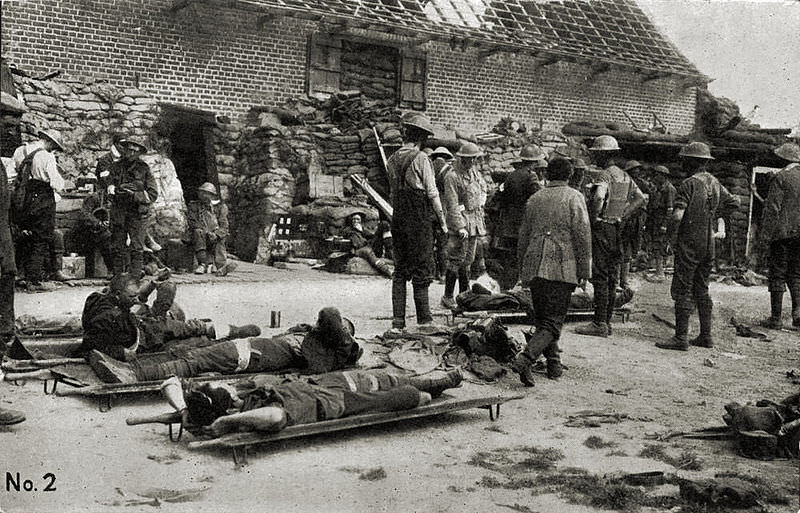
FIELD DRESSING STATION, MESSINES 7th June 1917.
Nueve Eglise was the billeting area for the battle-weary remnants of the 33rd Battalion, when finally they were relieved from Messines on June 12th 1917. After 2 short days of rest they were again marched to new billets at Douleu, where they stayed for the next ten days. By then Command must have considered them sufficiently rested for they were ordered back into the front line, to relieve the 10th Cheshire Battalion on June 23rd.
(Never a Backward Step; Edwards 1996)
Military Medal was awarded to Private Donald Cranston MURRAY 33rd Battalion on the 28th June 1917.
1st-7th July 1917. MESSINES.
35th Battalion occupied Support Trenches just S West of MESSINES (The Brigade being in Support) The Battalion HQ was established in our old front line. Enemy was fairly quiet except for Counter Battery work which was very constant. During this time men were constantly employed digging and improving communication trenches towards the new front line. On 1/7/17, 2 Lieut: Mortimer Eustace LYNE was wounded by a shell entering his dugout. Captain: Frank Harold JARRETT was wounded on the 5/7/17 by a piece of shell entering his dugout. He died of wounds received at 2:00 pm in the Main Dressing Station on the same date.
7th July 1917.
33rd Battalion AIF relieved by the 35th Bn AIF in Support Trenches MESSINES SECTOR 35th Bn went to Billets at NEUVE EGLISE. Casualties during the tour of duty in MESSINES SUPPORTS 28 including 4 killed.
On the 7th of July a special Parade held at ‘Hillside Camp’, when the Corps Commander presented Medals to sixteen members of the Australian 3rd Division.
Sergeant: 1425 Cyril Russell EATON. 33rd Battalion AIF. M.M
7th-11th July 1917. NEUVE EGLISE.
Rested and Trained whilst in Billets and also supplied small working parties.
11th July 1917. MESSINES.
Relieved 43rd Bn AIF in Case of Supports Messines Sector. (RIVER DOUVE to STIGNASTFARM) Brigade Relief. Supplied working parties while in Supports. We were at times subjected to fairly severe enemy shell fire while in Close Supports Casualties from 11-7-17 to 17/18-7-17 were 34 including 6 killed.
17th July 1917.
Relieved 35th Bn AIF in front line Messines Sector. 19th Lieutenant: Wynter Wallace WARDEN wounded whilst supervising transport of rations over Messines Ridge.
(35th Battalion War Diary)
12th July 1917.
MESSINES Relieved 41st Battalion in Sector u.11.b to u-5-b as per Bn 0.0.47 d/9/7/17 and Intelligence summary d/127/17. Enemy Shelled road south of MESSINES and caught tail of relief Killing two. Two men killed and others wounded. Trenches found to be in very bad condition. They had been very badly sited no attention having been paid to conformation of ground. The first principles of trench siding had not been observed and no attention paid to drainage. Communication trenches were straight, shallow and through not having been duck boarded when dug had become quite impassable in places an account of mud. Front Line had rifle on us field of fire and both it and the Support line were crude observation from WARNETON from whence they were directly exploded in places.
(33rd Battalion War Diary)
19th July 1917.
Casualties 1 killed "Private: 2097 John Henry JAMIESON" and 5 wounded Private: 198 Edward Abraham "Ted" SULLIVAN in WELLINGTON TRENCH. Enemy firing gas shells intermittently all night.
(34th Battalion War Diary)
23rd July 1917.
Relieved by 33rd Bn AIF and 35th move back to Close Support position. Casualties during tour in front line 45 including 12 killed. 2nd Lieut: Thomas Laurence GRAY was wounded 25/07/17.
26th July 1917. MESSINES.
Relieved 33rd BN in front line, Captain: Hugh John CONNELL was buried by a shell in the front line 28/07/17 and evacuated. On night of 28/07/17 enemy placed a heavy barrage on the 35th Bn front line (Douve River to Steicnvast Farm) and finally attempted to raid our Right Company "A Coy" on the River Douve. They were successfully repulsed with considerable loss to themselves. Our counter barrage, both Machine-Gun and Artillery being excellent. Captain: Henry Charles Dight CADELL was in command of A Coy. Our trenches were badly damaged but no entrance was affected, our men though very tired and worn fought splendidly.
35th Bn AIF was relieved by 41st Bn (Brigade Relief) 35th moved back to Douve River Camp. Casualties during 27-30/07/17, 41 including 13 killed. This month was the most strenuous in the history of the Battalion (not including the big offensive of June) as the new ground in front of Messines was in a very wet and muddy state, and hastily constructed trenches combined with long tours in the line and the natural desire of the enemy to prevent us settling down made conditions very trying for all ranks.
Private: 2915 Frederick James DEARING. 35th Battalion.
1st August 1917.
NEUVE EGLISE Battalion at rest in DOUVE RIVER CAMP after coming fom MESSINES SECTOR. 3/8/17. 7:00 am Battalion leaved DOUVE RIVER CAMP and marches via NEUVE EGLISE and STEENWERET to YIEUX BERQUIN AREA. Battalion arrives at billets at 10:30 am Battalion Headquarters at Le YERRIER.
(35th Battalion War Diary)
1 September 1917.
RECREATION
George was grated leave to England from the 12th September until the 29th of September when he re joined the Battalion for the advance at Passchendaele.
12th October 1917
THE BATTLE OF PASSCHENDAELE I
At 1:30 am rain showers began. By 2:30 am it was raining lightly but steadily, by 3:30 fairly heavily. the infantry moved through the pitch dark in single file. In some battalions each man held on to the equipment of the man ahead of him; if touch was broken, those in front had to come back. The news that the line as reported by the 66th division was not held only just reached the incoming troops. Accordingly, in the right brigade (9th) the leading Company Commanders Captain: Clarence Smith JEFFRIES. V.C. and Captain: Telford Graham GILDER M.C. both of the 34th Battalion stopped their men at the entrance to Broodseinde railway cutting, and themselves went to make sure that their column might not run into the enemy.
At Keerselaarhoek Cemetery they found the tape duly laid, and met the officer of the 36th Battalion who had laid it, and by 3:00 am the time set, the 34th battalion was extended on its jumping-off position. But during the previous halt and afterwards, as it lay on the tape, the battalion was persistently shelled and suffered many casualties.
The first shell killed three signallers. Lieutenant: Albert Leslie WATSON. a signal officer of the 34th Battalion, a brave and enterprising leader who also was at the head of the column was severely wounded and all his staff hit. After establishing a forward command post Lieutenant: Thomas Fraser BRUCE 36th Battalion was also killed. Lieutenant Colonel: John Alexander MILNE. 36th Battalion supervising the assembly was knocked down by a shell but continued to command. Captain, Chaplain: Charles MURPHY was also wounded.
(BEAN; History of World war 1 Vol IV p911) Charles Edwin Woodrow BEAN
Only one Australian Division, the 3rd, was wholly employed in the days offensive. but the division was to capture Passchendaele an in spite of the depressing conditions, it was eager to achieve the distinction of doing so. One unit carried the Australian flag,to be planted in Passchendaele, and although officers and men in general were not enthusiastic concerning such "stunts" the Commander-in-Chief had been informed, and had told General: MONASH that, when this flag was planted, the news would be immediately cabled to Australia.
Some keen spirits looked on the operation simply as a dash for Passchendaele. One young company commander of Monash's reserve battalion, the 33rd, in face of a strict prohibition, led on his company as soon as the barrage fell. Starting from a line 350 yards in rear of the general alignment, the 3rd Division was out of touch with its neighbours from the outset. The heavy shelling on the tapes had made orderly disposition there almost impossible, as German Machine-Guns, undisturbed by the barrage now opened immediately, no opportunity offered of restoring proper formation.
The 9th Brigade went forward in the utmost confusion and a terrible mix up as reported by Captain: Robert Derwent DIXON D.S.O 35th Battalion at 6:40 am and "Great Confusion" was the description given by Captain: Henry Vince CARR 35th Battalion. Even on the ridge, the mud was difficult, the hope, if there ever was one, of catching up before the quick barrage finished.
The 9th Infantry Brigade's intended direction lay not along the ridge and the Passchendeale road, but diagonally across them, and parallel to the railway, which most of the brigade could not see. As the jumping-off line was practically at right angles to the ridge, the brigade tendered to advance alone the heights. The Machine-Gun fire at the start came, on the 9th Brigade's right, from the ruined house near Defy Crossing; on its center from, "Hillside Farm"; and on its left from Augustus Wood.
The pillbox opposite the center was supported from the rear by a trench in which were Germans with Machine-Guns, and here occurred a delay which threatened to wreck to whole attack. it was not until an hour after the program time that these places were rushed by the neighbouring portion of the line under Captain: Henry Vince CARR and Captain: Robert Derwent DIXON. D.S.O of the 35th Battalion. The trench contained 35 Germans and 4 Machine-Guns. Part of the line was also held up by a pillbox close to Passchendaele road near the highest point of the ridge.
Here there was practically no shelter from attack, but Captain Clarence Smith JEFFRIES. V.C. of the 34th Battalion managed to organise a party, with Sergeant: 21 James BRUCE and another N.C.O Corporal: 2036 Vere Cummings STEVENSON and a dozen men, and outflanking it, charged the place from the rear, capturing 25 Germans and 2 Machine-Guns. These actions set free the advance. The pillbox captured by Captain Clarence Smith JEFFRIES. V.C. being not far short of the first objective, the 34th Battalion dug in there.
Great loss had been uncured; the 34th Battalion had only three officers left and there were wide gaps in the line. The right flank had swung far away from the railway, along which the 4th Division was attacking, but on the left Captain: Telford Graham GILDER M.C. of the 34th Battalion who had been wounded by a Machine-Gun bullet, but was carrying on found the 10th Brigade digging in slightly to his left under Captain: LATCHFORD, 38th Battalion, and fell back seventy yards to join it.
The Advance to the second objective was to begin at 8:25, the low clouds had opened, and fleecy cirrus with patches of blue were widening overhead and the sun had come out. The 9th Brigade had been so late in reaching the first objective that, while most of the 34th Battalion dug in, the 35th Battalion, allotted for the second phase, moved straight on. Standing on the Passchendaele road, Captain: Henry Vince CARR and Captain: Robert Derwent DIXON. D.S.O of the 35th Battalion endevoured to decide where the barrage then was; at first Carr thought it may be behind them, but finally decided that it was ahead.
The confusion at the start had split the brigade into mixed parties of all battalions and many of the 34th went on with the 35th, the main body of which, about 100 in all, now advanced along the south-eastern side of the ridge in order to catch the barrage. The hour was probably a little before that for the second advance. A German Machine-Gun in the gap between the brigade's right and the railway immediately opened with deadly effect.
Major: John Bruce BUCHANAN 36th Battalion, the senior forward officer was killed. At this critical juncture Captain: Clarence Smith JEFFRIES. V.C. of the 34th Battalion, again accompanied by Sergeant: 21 James BRUCE, led out a few men from the first objective and made for the gun. it was shooting in short bursts, and he was able to work up fairly close. Seizing a moment when it was firing to the north, he and his men rushed at it from the west. It was switched round, killing him, and sending his men to the ground.
But when its fire eased they worked round it, rushed the position, seized 25 Germans and 2 Machine-Guns. This gallant and effective action Captain: Clarence Smith JEFFRIES. V.C. was posthumously awarded the Victoria Cross for removing the chief danger to the advance along the crest, but as soon as the 35th Battalion crossed to the eastern side of the hill it became the target of a number of field and heavy guns which, from the hedges and other cover in various parts of the landscape, fired over open sights.
After passing a corpse on its right, the 35th Battalion settled down on what its officers took to be the second objective, although on the extreme right they were actually short of the first. Captain: Henry Vince CARR, now the senior officer on the spot, reported; 8:35. On objective, with about 100 Captain: Robert Derwent DIXON. DSO and three officers. Casualties 25 or 30 per cent. Captain: Henry Charles Dight CADELL M.C Lieutenant: Charles Teesdale MAIN Lieutenant: Keith Maitland DAY reported killed and Lieutenant: Frank HORNE Lieutenant: Christopher Kyffin MEARS Lieutenant: Charles John HENRY were wounded. Prisoners sent back 400-500. Contact on flanks uncertain, being heavily shelled.
Three posts were established under surviving officers, right Lieutenant: Norman Beade D'ARCY M.C centre Lieutenant: Joseph Francis ADAMS left Lieutenant: Harold Sydney WYNDHAM. In this brigade the battalion for the final objective was the 36th, and a report came along that it had gone through. Actually, it had advanced with the 35th, but, on the left, penetrated to the second objective, which bad been reconnoitered during the previous halt by the commander of the company Captain Robert Austin GOLDRICK. M.C.
He went up the road towards Passchendaele. The barrage, he said afterwards was no hindrance to him, although he left the line lying as close to it as possible "or where he thought it was." He was unable to detect the intensification of the barrage for the second phase, but led his men forward at the proper hour.
As no other battalion was there, he now established the line with its left on the road 600 yards from the church, about the point reached by the 66th Division's troops on October 9th. In front of the position Captain: Robert Austin GOLDRICK. M.C. and Lieutenant E.H FLEITER (39th Battalion) found hidden in a shell hole men of the 66th Division. One had a broken arm, the other trench-feet. They took the Australians at first for Germans. When reassured,"we knew the Australians would come," they said, 'We prayed hard."
From the direction of the church, which lay straight down the highway, no fire came. two Germans ran up the road and surrendered. South-east of the village, along the Moorslede road, were the Germans who seemed "very windy," and near the road two 5.9-inch howitzers began to blaze at the troops digging in.
The 9th Brigade had taken its second objective and the 10th its first, but the position of the officers in charge of these advanced lines was full of anxiety. On the eastern slope Captain: Henry Vince CARR 35th Battalion, the senior officer in this part of the 9th Brigade's front, could see the 4th Division somewhat ahead of its right, and by 10:55 he had discovered that the 36th was on the left, but farther left than the 10th Brigade was far behind on its first objective . The German Guns ahead were sniping with dreadful accuracy. Carr on the western slope, sent back for instructions: "what am I to do?"
Word of the true situation reached headquarters slowly. As on the 9th, the first news was all encouraging. General: MONASH in the Ypres ramparts heard shortly after 7 that both brigades were "well away"; but by 8:26 he had ample evidence that the first objective was taken. At 9:25 the intelligence officer examining prisoners (Lieutenant: Frederick Morley CUTLACK Official War Correspondent) reported having heard from the wounded men that the second objective had been reached.
At 10:28 headquarters was informed of a statement of a wounded man, that the 38th Battalion had gone through. A further report that Australians had been seen at Crest Farm although quickly contradicting but probably true nevertheless. Which confirmed Monash's impression that his division was succeeding. Concerning the New Zealand brigade on his left, however, there was no word until, at 10:50, there arrived the tragic information that the New Zealand Division was stopped by the enemy alone the entire front.
Monash has already heard at 9:55 that the 10th Brigade was held up by fire from Bellevue Spur. Believing that his division was still advancing, he asked that every gun that the New Zealand Division could spare should be turned upon that ridge to suppress the fire. Meanwhile, he would order the reserve (39th) battalion of the 10th Brigade to be ready to assist in holding the ground already won. The reserve battalion the (33rd) of the 9th Brigade he was still keeping back to assist in the capture of Passchendaele.
Shortly after noon news of the true situation arrived. Lieutenant Jackson of the 40th Battalion had established at Waterfields pillbox near the Ravebeek a forward report-centre from which a series of messages, admirably accurate, was flashed by lamp to the headquarters of Lieutenant Colonel Lord of the 40th Battalion. Thus Brigadier General McNicoll of the 10th Brigade was able to inform Monash of the precise position of Giblin's Line. He added that the situation was very serious and the casualties very heave. At the same time from the front line of the 9th Brigade arrived a pigeon message, sent by Captain: Richard GADD of the 36th Battalion.
We are on the Blue Line (second objective) with composite force all three battalions, both flanks in the air.
The New Zealand Division was to make a second attempt at 3:00 pm, and Monash was of the opinion that from the 9th Brigade, well forward on the ridge, patrols might still work northward around Crest Farm. His reserve, the 33rd Battalion (9th Brigade), was accordingly ordered to attempt this at 4:30 pm and the 10th Brigade's forward line being meanwhile reinforced by its own reserve, the 39th Battalion.
These orders went out, but none of them were fulfilled. The New Zealand Division had been defeated by obstacles which no hastily renewed bombardment could have overcome. no infantry in the world could have crossed the Ravebeek mud, penetrated the dense wire, and attacked the crowded pillboxes of Bellview with the assistance of a barrage which did not even screen the advance. No blame can attach to the artillery. Its commander, according to the New Zealand official history, had reported on the previous day that his guns might be unable to give efficient support.
This magnificent division, which lost nearly 3,000 men, had been held up in almost exactly the same position as the 49th three days before-the left brigade penetrating half-way to the first objective, the right stopped almost at the start. The Germans were reinforcing. The New Zealand battalion commanders knew that their men had no chance of succeeding by renewed attack, and the order was eventually cancelled.
As for the Australians, of the two battalions that MONASH had now ordered to participate, the 39th had already to a large extent been involved in the fighting, and the 33rd, endevouring to reach its position of readiness for outflanking Passchendaele, had suffered great loss. No less than 6 of its Officers were killed or mortally wounded. Captain: Wilfred Frank HINTON in command of the forward company, Lieutenant Leonard Rockley BROWNLOW Lieutenant: Thomas Acheson ARMSTRONG Lieutenant: Albert George KILPATRICK Lieutenant William REES-REYNOLDS and Lieutenant: Norman Francis GOBLE.
By the time Lieutenant Colonels Henderson DSO 39th Battalion and MORSHEAD attempted to carry Monash's orders, they found that the attacking force of both brigades was back almost at its starting point. What had happened was as follows.
Neither Major: GIBLIN near the Ravenbeek nor Captain: Henry Vince CARR on the ridge had received their messages sent several hours earlier. The 9th Brigade's line was still being battered by the German Guns. Captain: Richard GADD 36th Battalion, whose troops were being wiped out, informed Captain: Henry Vince CARR 35th Battalion that Lieutenant Colonel: John Alexander MILNE D.S.O 36th Battalion had now come forward to Hillside Farm. CARR accordingly sent Captain: Robert Derwent DIXON. D.S.O with GADD to explain to Milne the desperate nature of their situation. Milne said that he would try to get their troops relieved after dark, but till relieved they must hold on.
(BEAN; History of Word War 1 Vol IV page 921) Charles Edwin Woodrow BEAN
Meanwhile, however, the German artillery was annihilating some parts of their line. All leaders of Carr's three posts were out of action. Lieutenant: Joseph Francis ADAMS was Killed in Action and Lieutenant: Norman Beade D'ARCY M.C and Lieutenant: Harold Sydney WYNDHAM were wounded. Of the remaining officers of the 36th Battalion, Major: John Bruce BUCHANAN and Lieutenant: Fredrick William PUTNEY had been Killed in Action and Captain: Robert Austin GOLDRICK M.C wounded. Farther back Lieutenant: Sydney COOK had been Killed in Action and Lieutenant: William WAND and Lieutenant: Herbert Reginald MAILER were wounded.
At 3 o'clock rain began to fall steadily. at 3:15 pm Captain: Richard GADD 36th Battalion, thought agreeing with Captain: Henry Vince CARR 35th Battalion that to hold on meant annihilation, refused, in view of his Colonel's orders, to retire. Carr consented to wait while Gadd again sent word to Lieutenant Colonel: John Alexander MILNE D.S.O. Carr himself at 12: 30 had sent Captain Robert Derwent DIXON. D.S.O to the headquarters of the 35th Battalion at " Seine", from which no word had been received all day.
At 3:45 pm, no reply having come from Milne, and Dixon not having returned as he had been kept at 35th Battalion headquarters awaiting the arrival of an order from brigade headquarters concerning the projected operation by the reserve battalion, Gadd agreed to withdraw and Carr sent along the line a note: The 35th Battalion will retire.
When visiting Gadd, Carr had warned the troops of the probable order to withdraw, and he now saw that the left had already begun to retire. He told men whom he passed to get back as fast as they could to the 34th Battalion (which he believed to be on the first objective). Captain: William James GORDON M.C 36th Battalion, strongly dissatisfied with the order, went straight to Lieutenant Colonel: John Alexander MILNE D.S.O urged that the forward position was tenable, and with Milne and Major: John Martin HAWKEY M.C rushed out to stop the withdrawal. But it was too late.
The 34th was not, as Captain: Henry Vince Carr 35th Battalion, believed, on the first objective. The Commander of the line, Captain: John William RICHARDSON 34th Battalion, on hearing of the extreme weakness of the force at the second objective, had reinforced it. He and his only remaining officer's Lieutenant: James Clement BURGES Lieutenant: Bruce Gray McKENZIE Lieutenant: John Abbott LONGWORTH had all been Killed in Action while organising on the first objective, and the first objective now lay empty. The retiring troops, being without orders as to the position to be taken up, streamed back past Milne's headquarters.
All that Hawkey, Gordon, Gadd, and others could then do was to lead a fraction of them forward again to the first objective, where they remained during the night. Captain: Robert Derwent DIXON. D.S.O. with Captain: John Grieve PATERSON adjutant of the 35th, went up to organise the 35th there, but could find none of it's men. When eventually re-formed the remnant of the 35th was temporarily attached as a Company to the 33rd Battalion.
9th-12th October 1917 saw the 3rd Division, 9th and 10th Infantry Brigade in action during the Battle of Passchendaele, which saw massive losses and suffering in the Australian ranks. The casualties numbered 3,199 men in 24 hours during the height battle. The 34th Battalion lost every officer that day, either killed or wounded including their Medical Officer, Major: Gother Robert Carlisle CLARKE and some of his staff were killed while dressing the wounded. The spirit of some of the wounded is illustrated by the case of Corporal: 3170 Winsleigh Alexander MURRAY 35th Battalion, (formerly a Methodist Minister from Newcastle) gave up his place in a queue waiting for stretcher bearers and was never heard of again.
The Battle of Passchendaele saw 60 Officers and 1,322 other ranks loose their lives.
9th Infantry Brigade Casualties.
| 33rd Battalion. AIF |
11 Officers |
273 Other ranks |
| 34th Battalion. AIF |
15 Officers |
323 Other ranks |
| 35th Battalion. AIF |
18 Officers |
296 Other ranks |
| 36th Battalion. AIF |
15 Officers |
383 Other ranks |
| 9th Machine Gun Company. AIF |
1 Officer |
36 Other ranks |
| 9th Light Trench Mortar Battery. |
- Officer |
11 Other ranks |
George was originally recorded as Missing in Action before a Court of Inquiry changed his status to Killed in Action and he is remembered with honour and is commemorated in perpetuity by the Commonwealth War Graves Commission at the Menin Gate War Memorial.
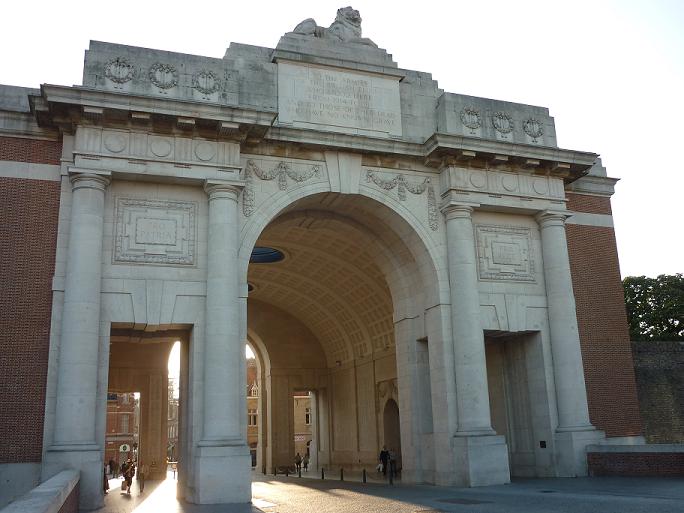
Menin Gate War Memorial
21st December 1917.
To Honorary Secretary of Red Cross Committee.
Dear Sir or Madam. I am writing to thank you for your kindness in finding me the information I asked of my brother in law Private: 2172 George KNOWLES. 36th Battalion. If you at any time obtain further information as to his death I would deem it a great favour if you would kindly advise me. Again thank you for your kindness,
Remain yours faithfully
Warrant Officer: 431 Richard FLETCHER. DCM. 35th Battalion AIF.
George's Memorial Plaque:3380210 was first issued to his wife Rose on the 14th February 1923.
Family Information
George was a married 38 year old Brick Layer from Third Street, Pelaw Main, New South Wales, where he lived with his wife Rose and 4 children. George served for 3 years in the West Kent Militia prior to immigrating to Australia when he was aged 30 years. George was educated at the Plassy Board School, Catford, Kent, England. George and Rose Knowles were married in 1903 in England and had 4 daughters. Doris Rose Knowles was born on 26th May, 1904 at Catford and died in 1991 in Ashfield, N.S.W. Florence May Knowles was born on the 27th of July 1905 at Catford and died in 1989 in Ashfield, N.S.W. Gladys May Knowles was born on the 26th September 1907 at Catford and died in 1995 in Ashfield, N.S.W. Their only child born in Australia was Nellie Knowles who was born on the 20th November 1914 at Pelaw Main, N.S.W. and died on the 22nd August 2006 at Baulkam Hill, N.S.W.

Pelaw Main War Memorial 24th November 1917
Hi, here is the story of the Knowles family in Australia.
George Knowles married my grandmother, Rose Matilda Futcher/Fletcher in 1903 in Catford. Their first daughter, Doris Rose was born on 26th May, 1904 at which time they were living at 19 Brookdale Road, Catford. They had 2 more daughters born in Catford, Florence Mary on 27th July, 1905 and Gladys May on 26th September, 1907. George could not find work in England so he sailed to Australia on TSS Geelong at 2pm on 13th October, 1908. When he arrived he got a job at a Coal Mine in Cessnock as a bricklayer.
His wife, Rose and the three girls then followed in 1910 on the ship Norseman from London to Sydney, a 6 week trip. They opened a general store at their house in Pelaw Main which is near Newcastle, about 2 hours north of Sydney. My mother, Nellie was born there on 20th November, 1914.
In 1916 George enlisted in the Australian Army and was shipped to England and then sent to Belgium where he was killed on 12th October, 1917 in the third battle of Passchendaele. His remains were never found and his name is on the Menin Gates at Ypres which we visited a few years ago. His name is also on the Memorial Wall at the Church in Catford which I have also visited and at the school in Pelaw Main where the girls went.
It was a very hard life for Rose then to be left with 4 young girls and no husband and only 1 family out here, Rose’s brother who had also come out with his family in 1912. George’s half sister, Bertha Russell, also came out to Australia but I don’t know when. She had one son that I know of, George Drayton, and he and his wife Chris came to live out here and Bertha came to live with them. I met George and Chris when I was young, they lived in Queensland and we stayed with them. So unfortunately there are no Knowles to carry on the name in Australia which is rather sad.
Stephen Russell
Birchington, Kent, England. January 2021.
George's Memorial Plaque was first issued to his widow on the 11th October 1922 and was acquired at Auction in August 2021 and is now in the Harrower Collection.
Military Records
Under Construction: 16/08/2021-25/08/2021.
